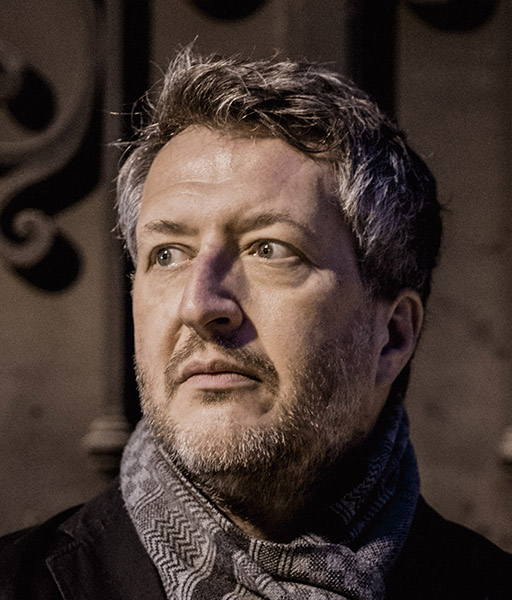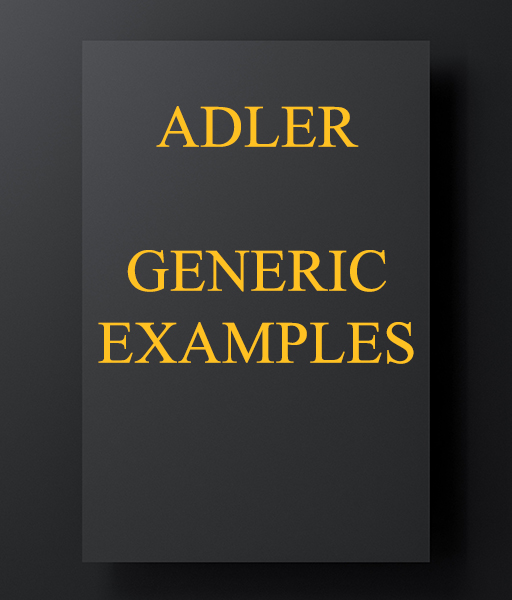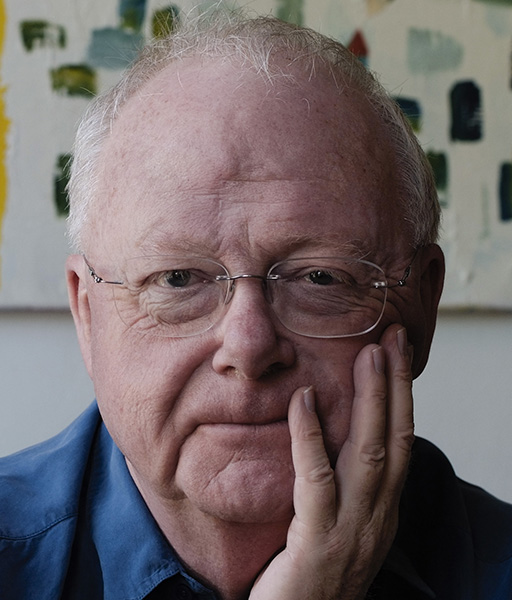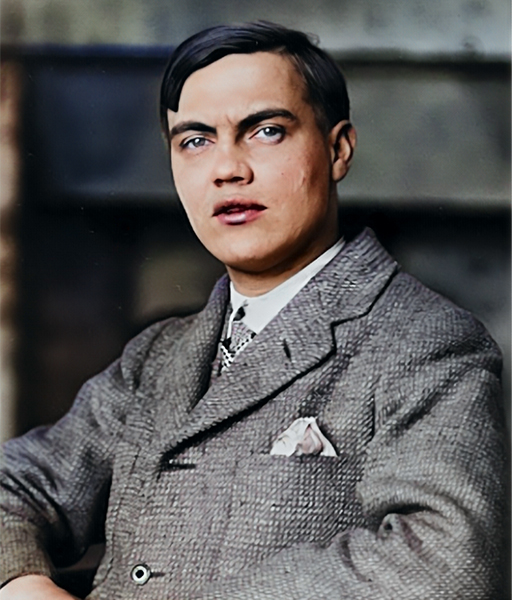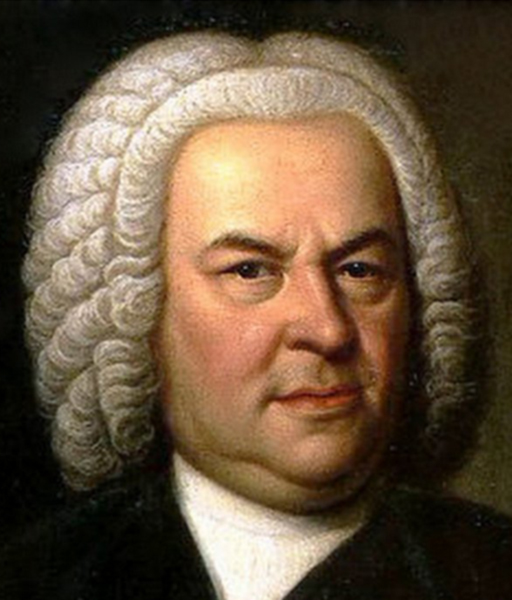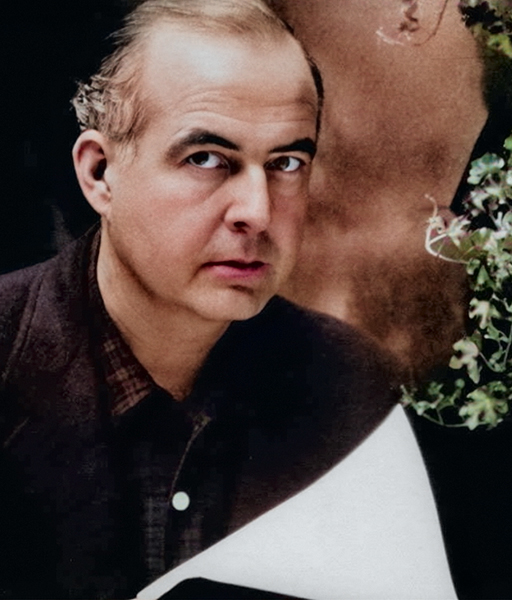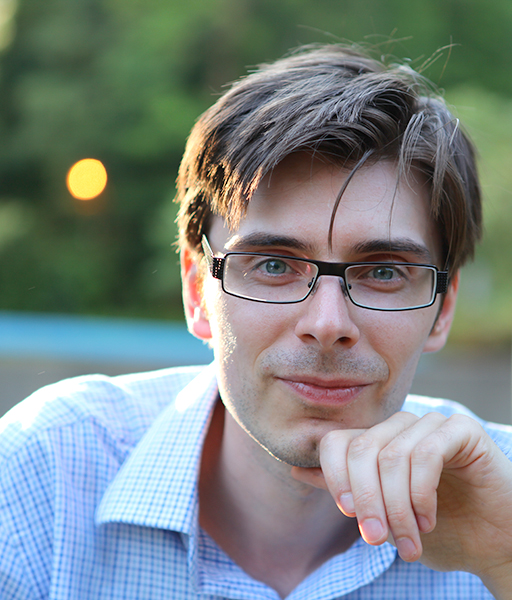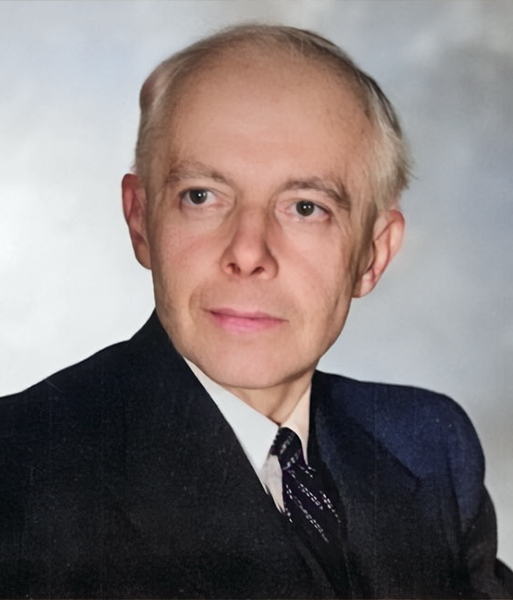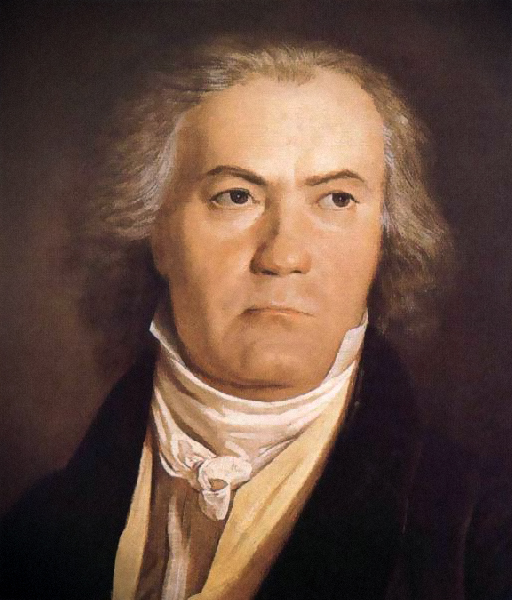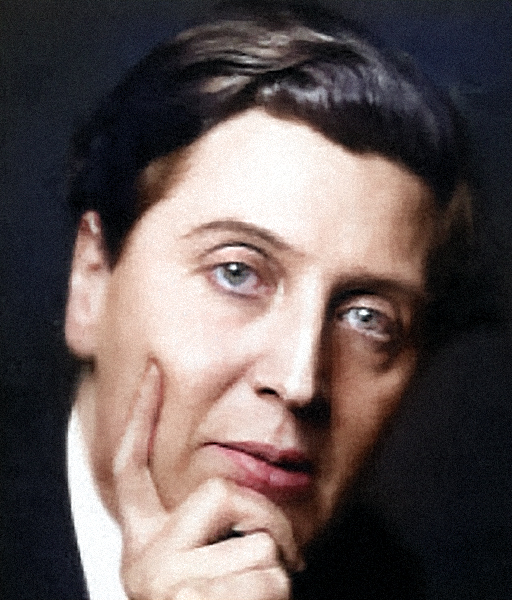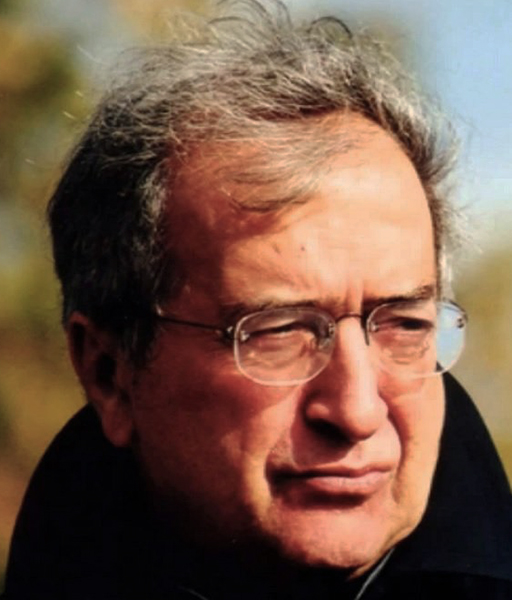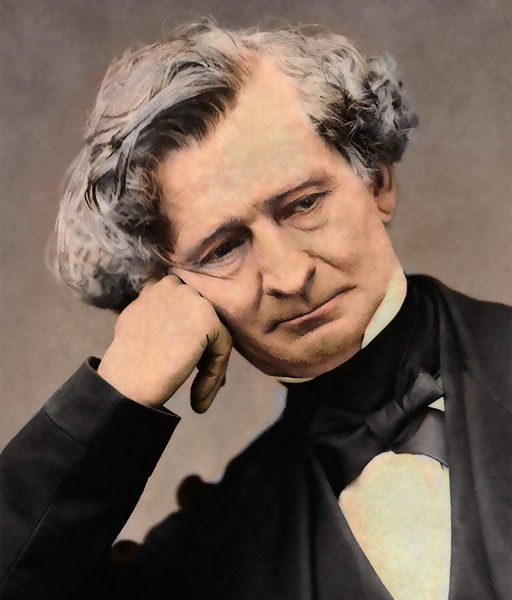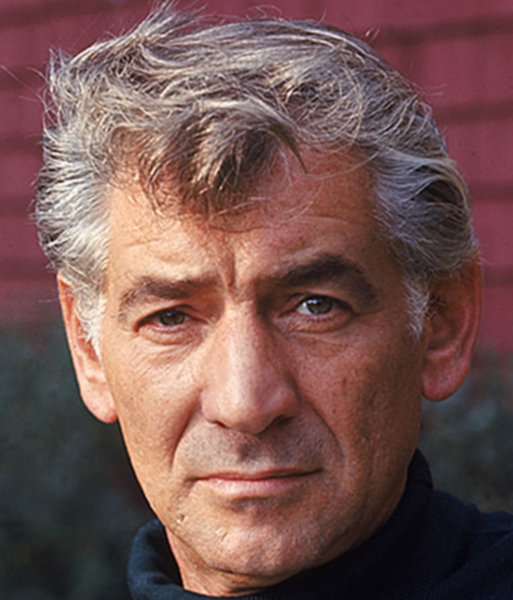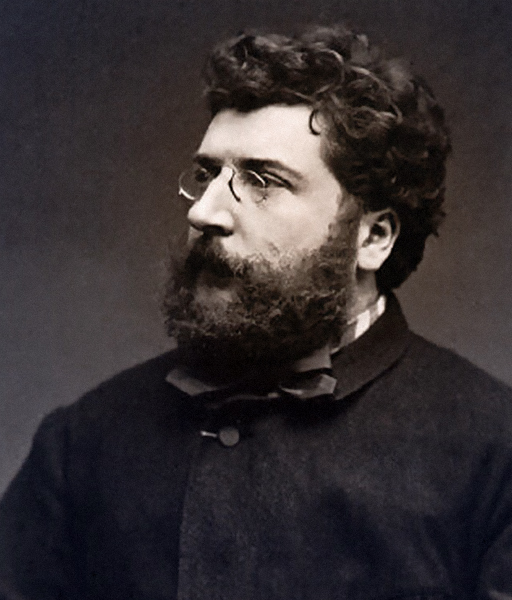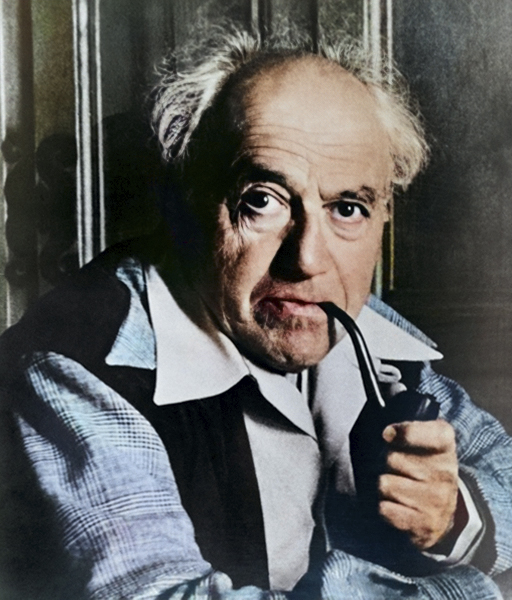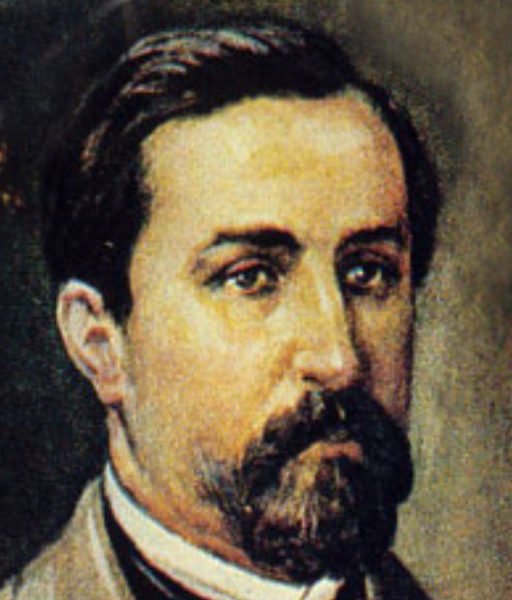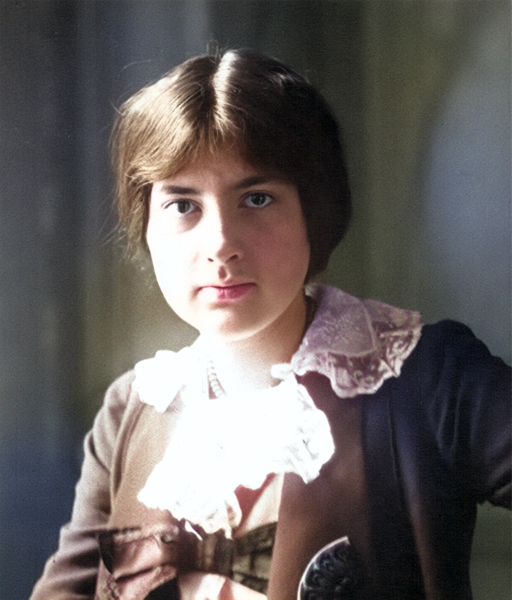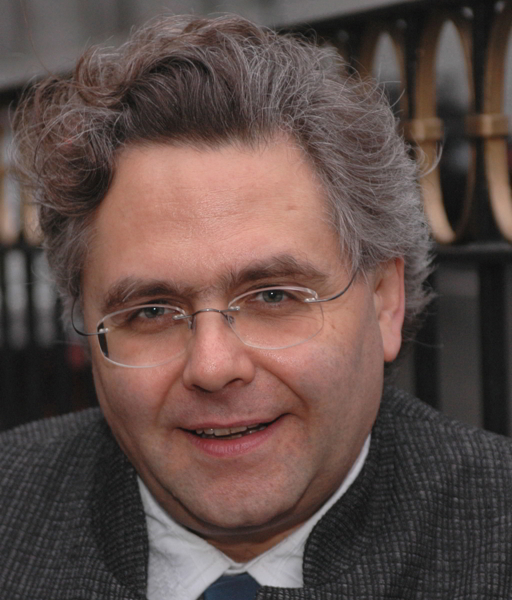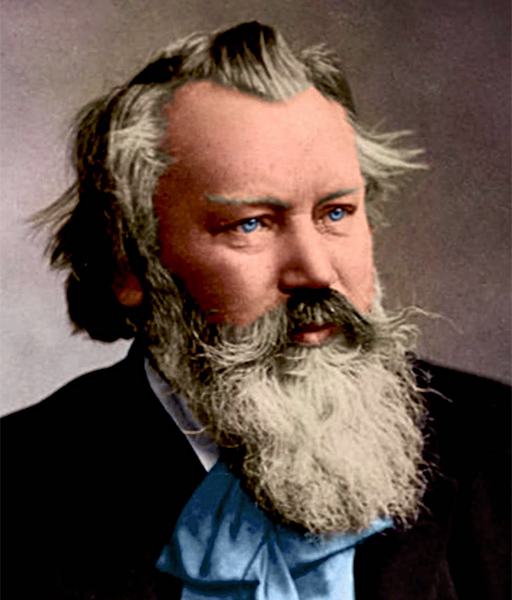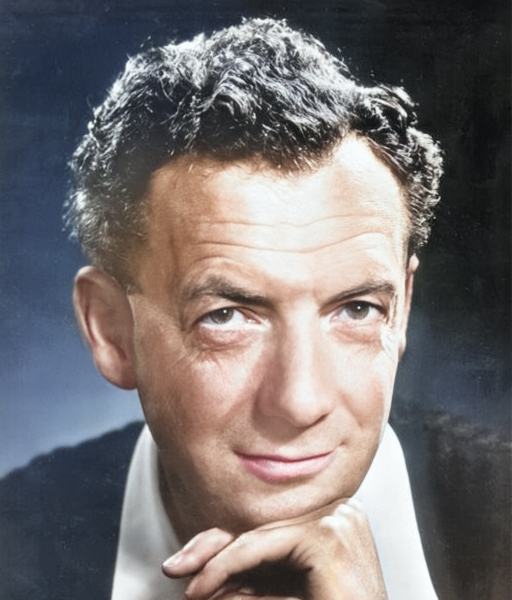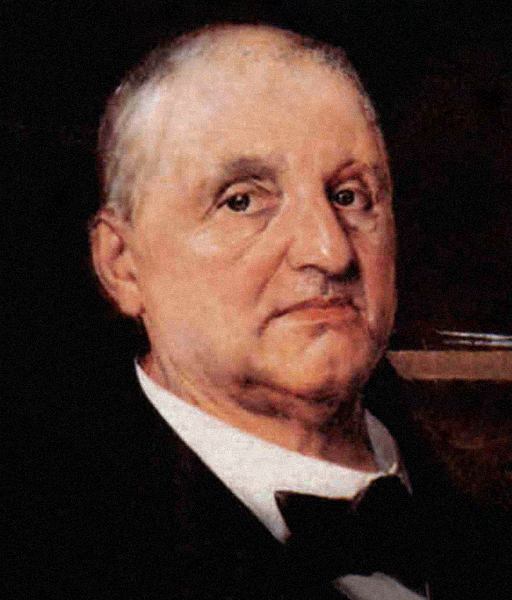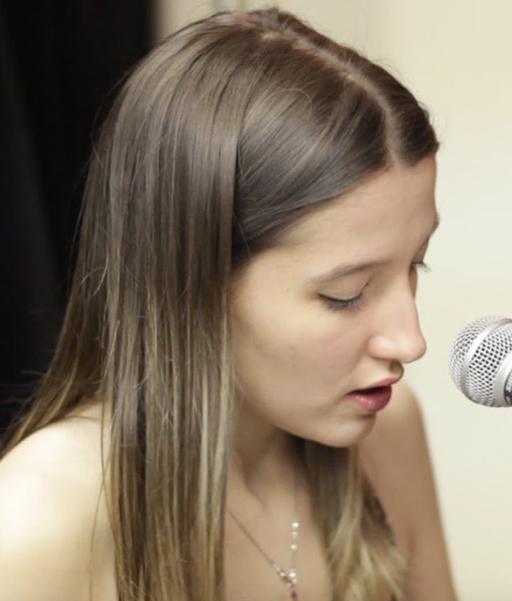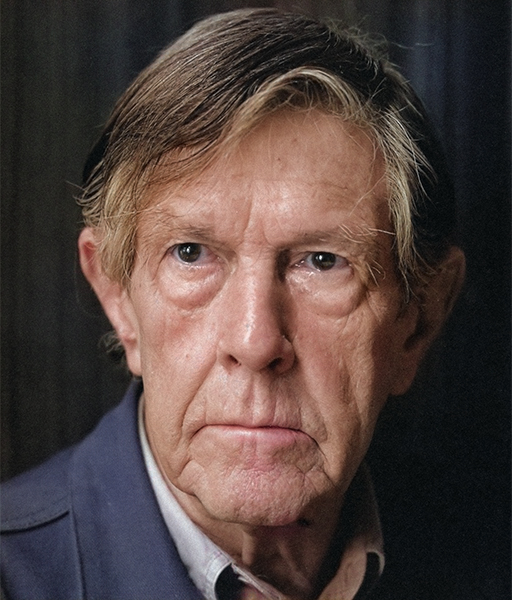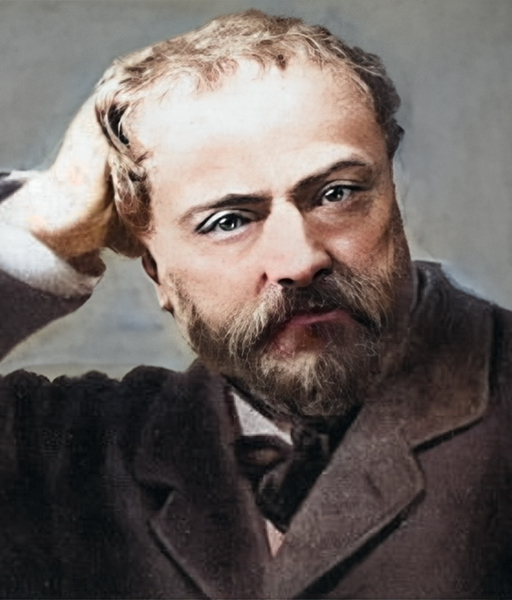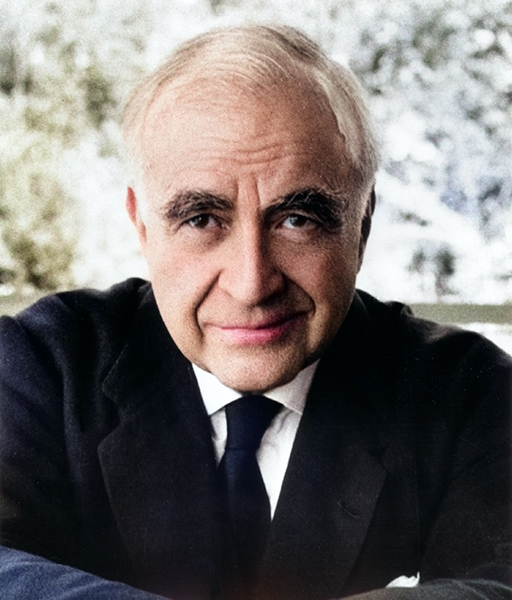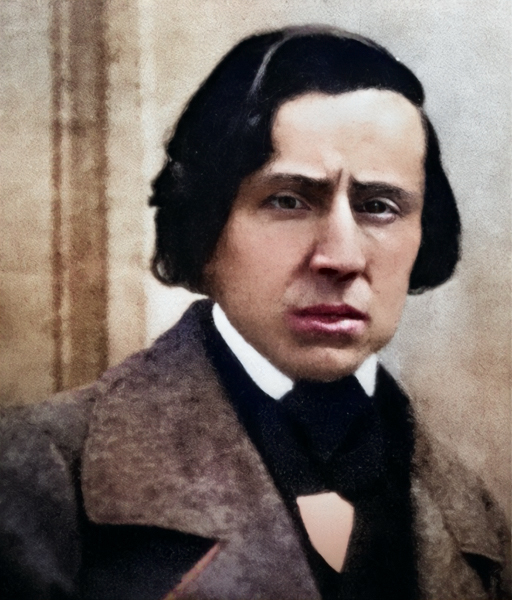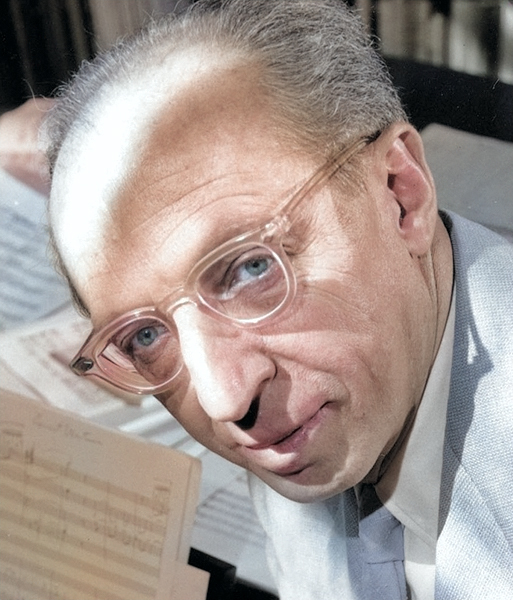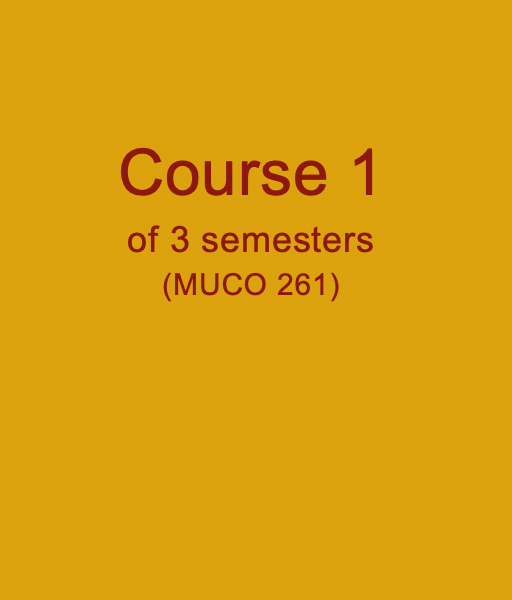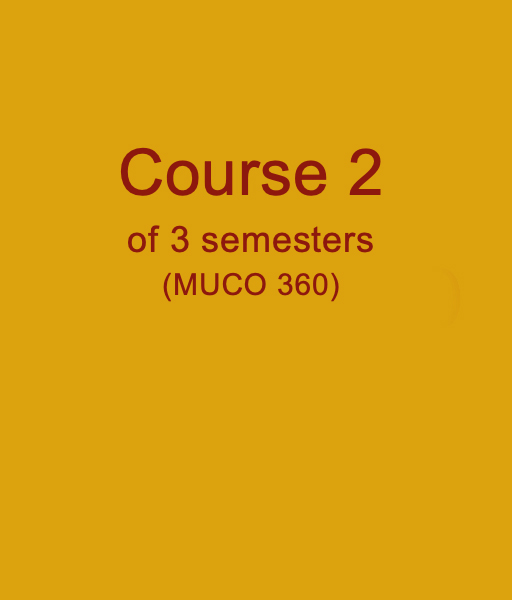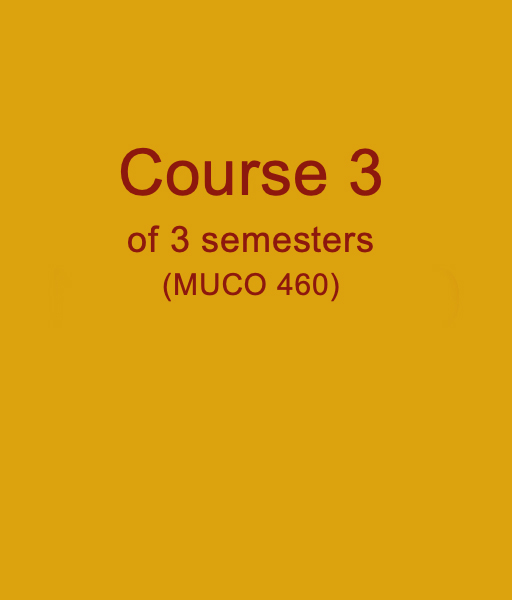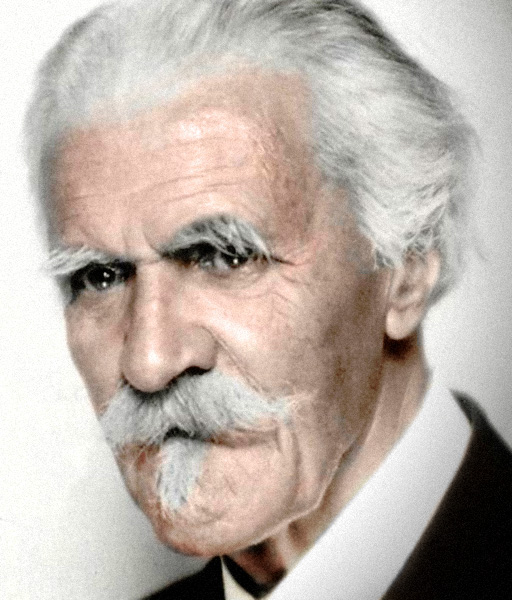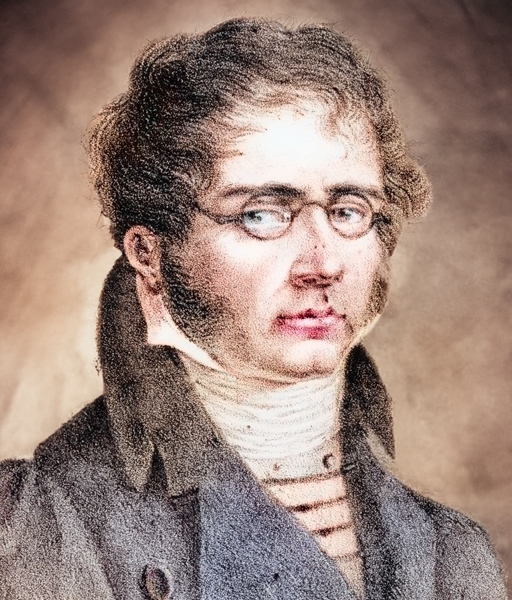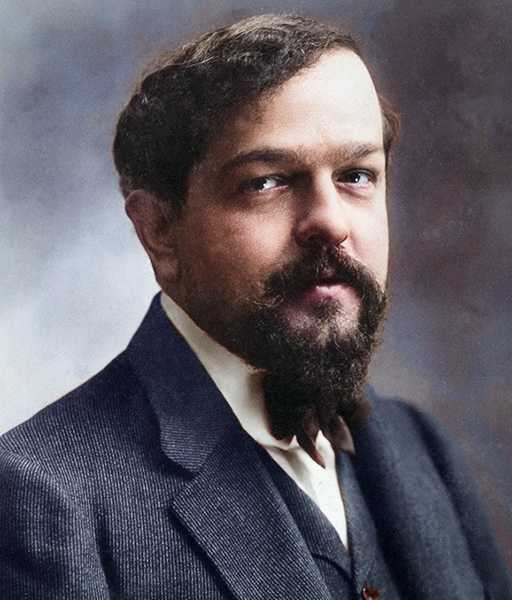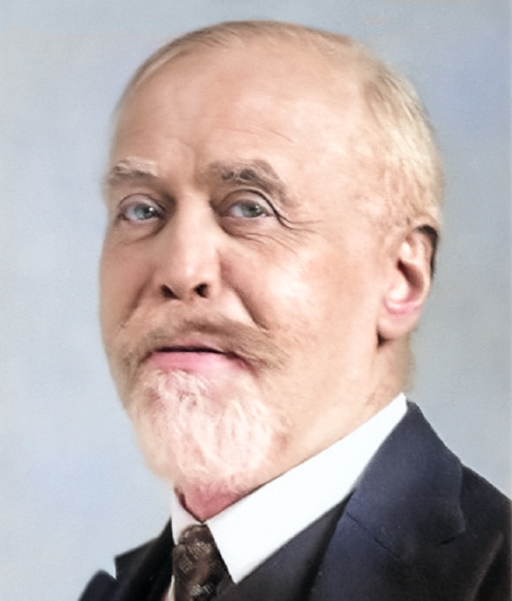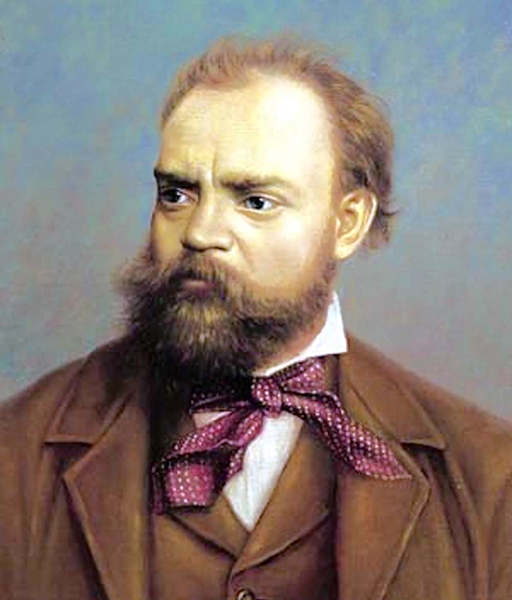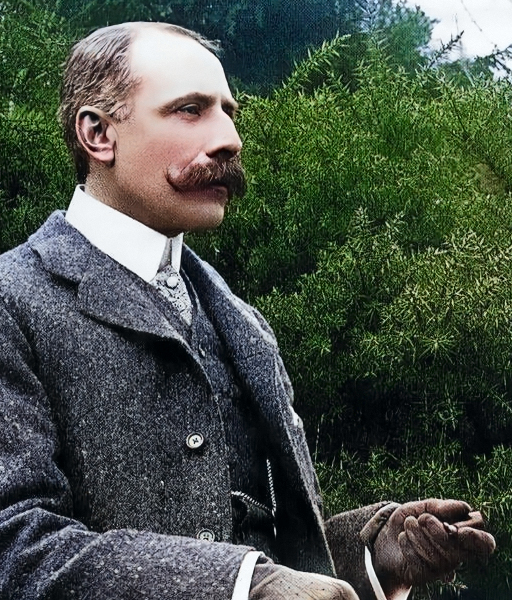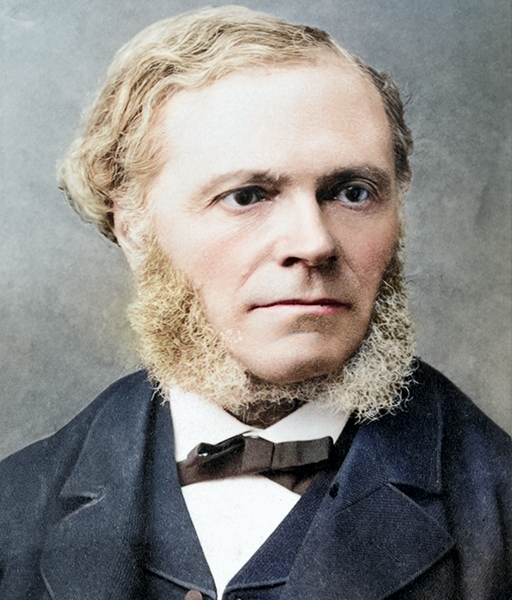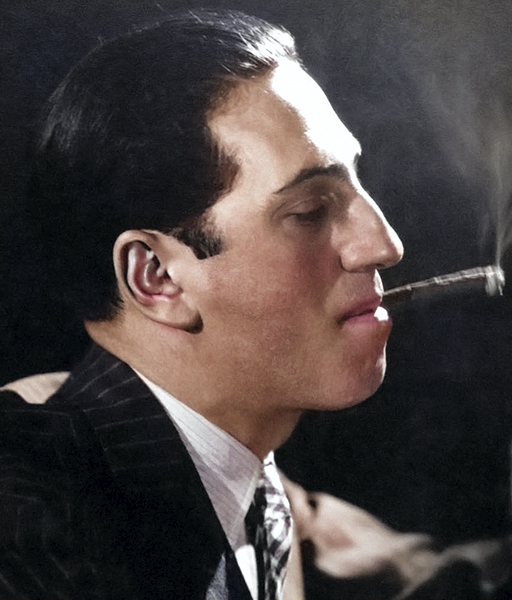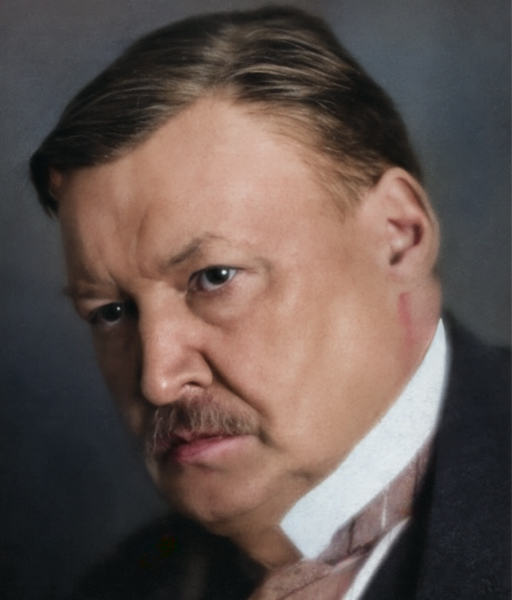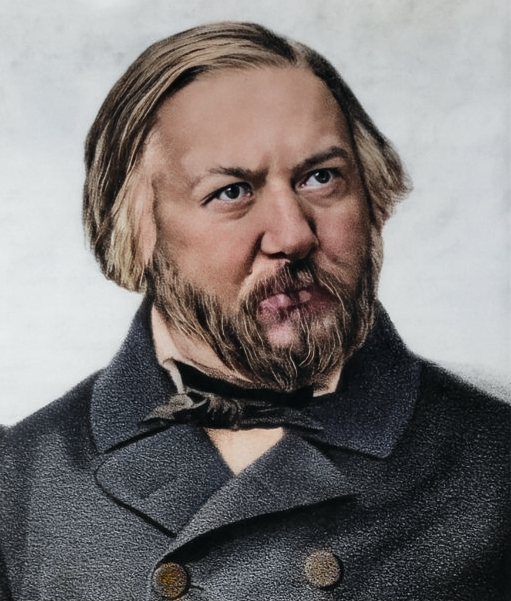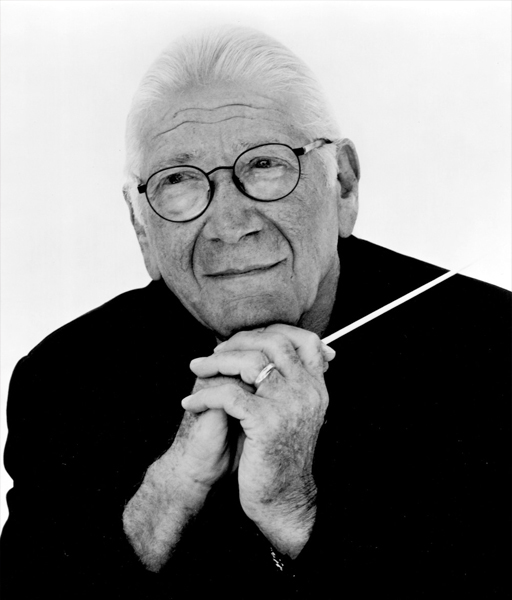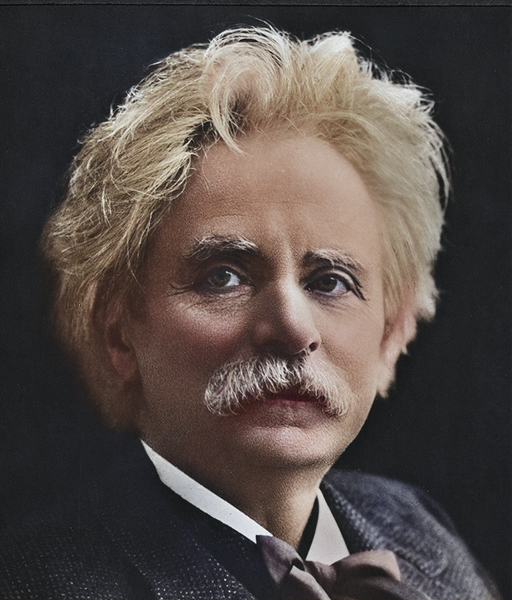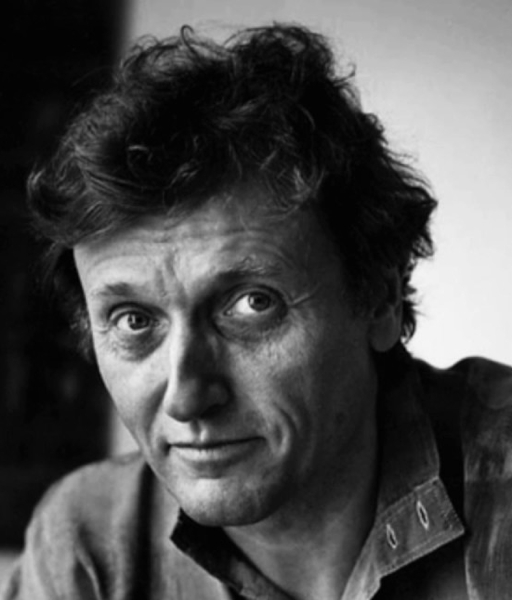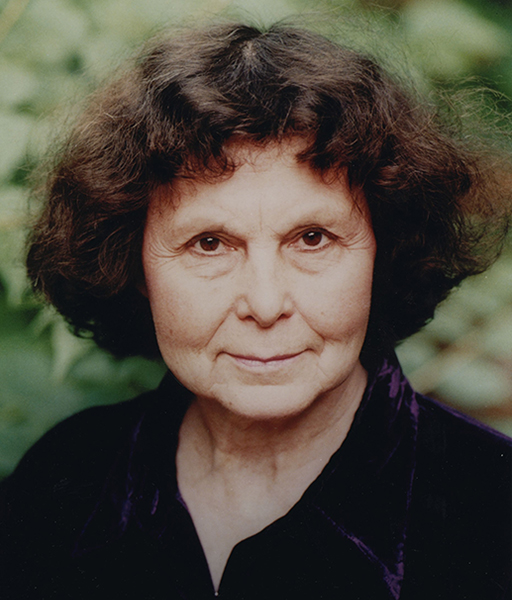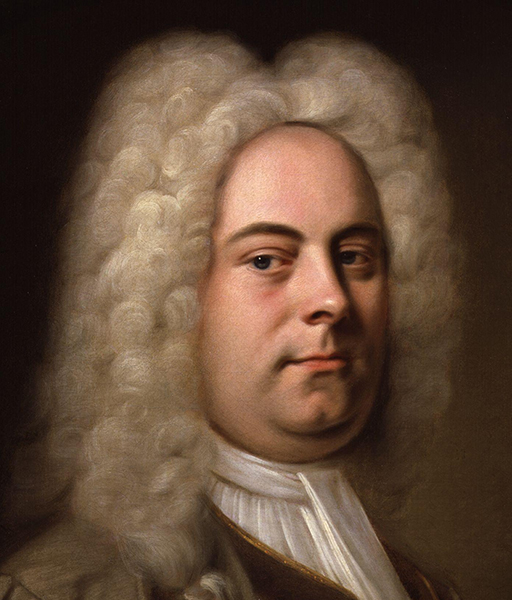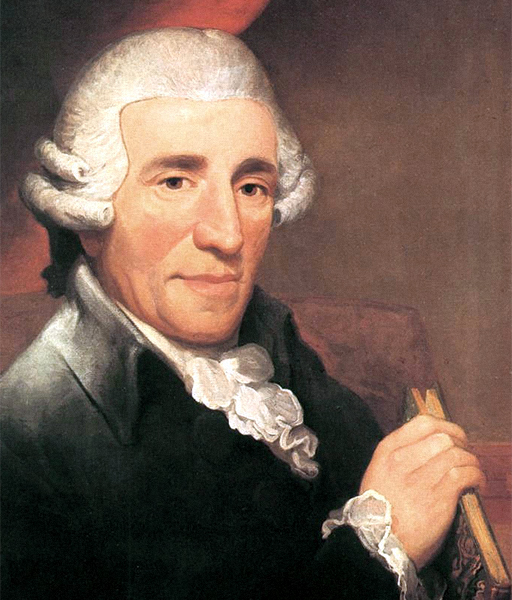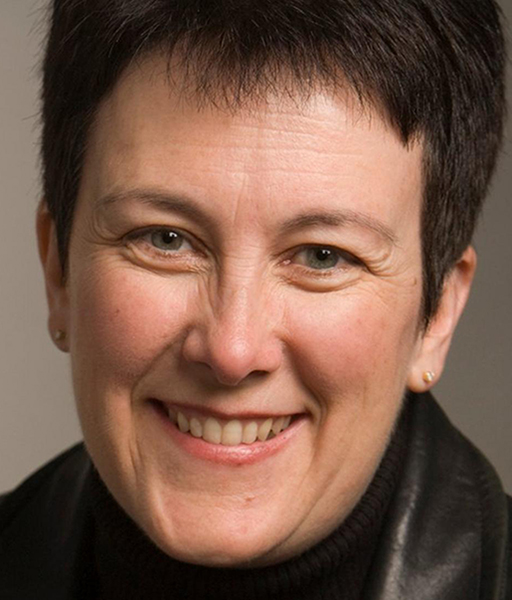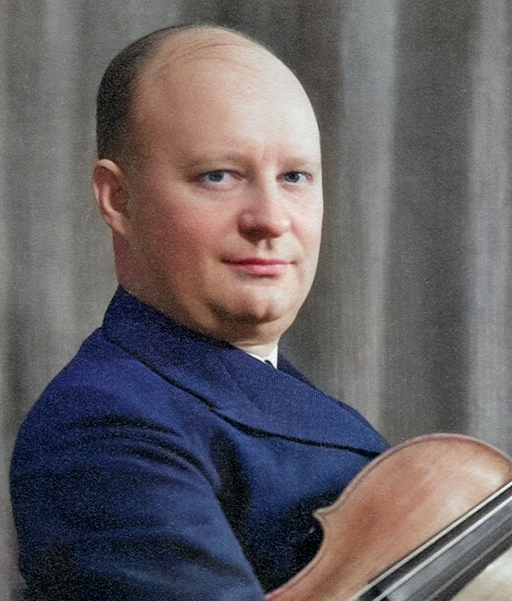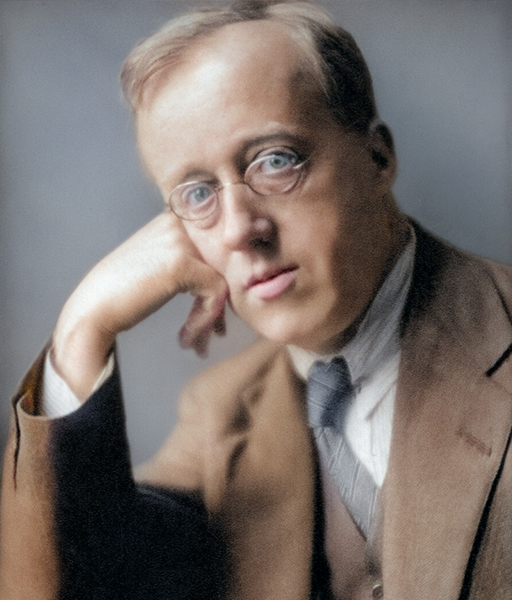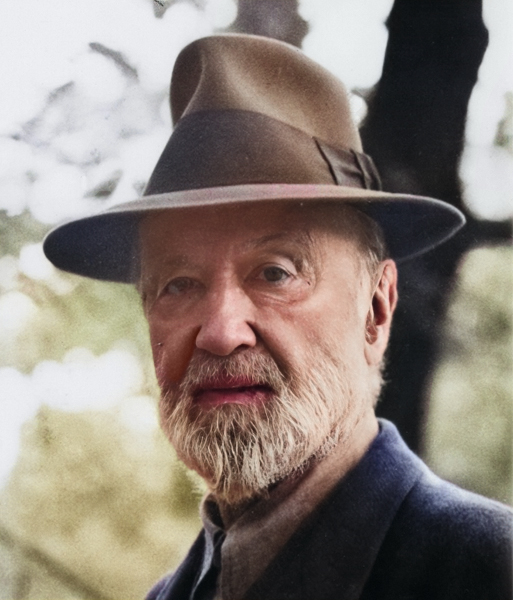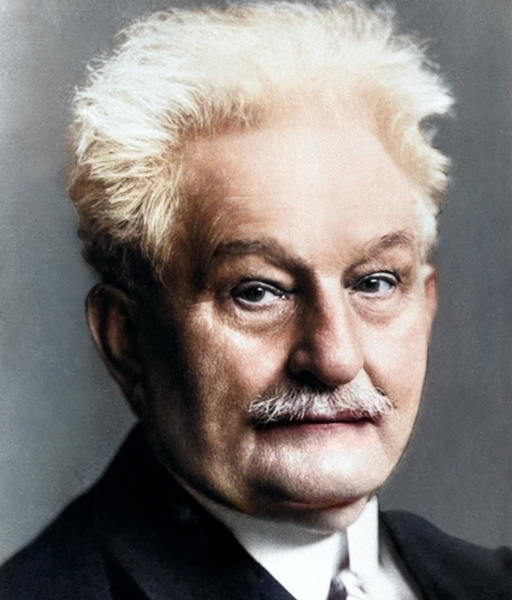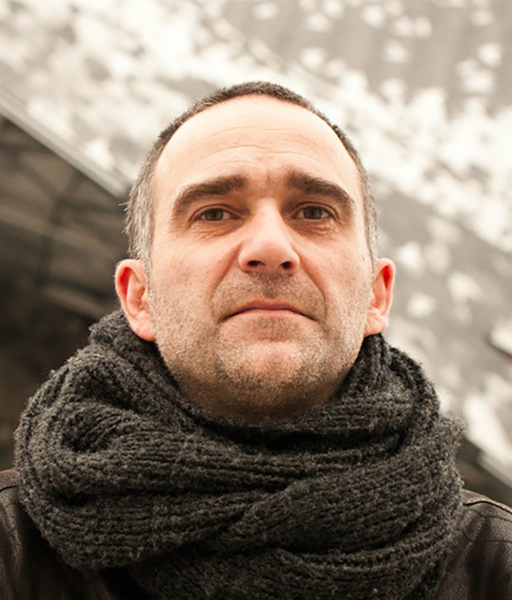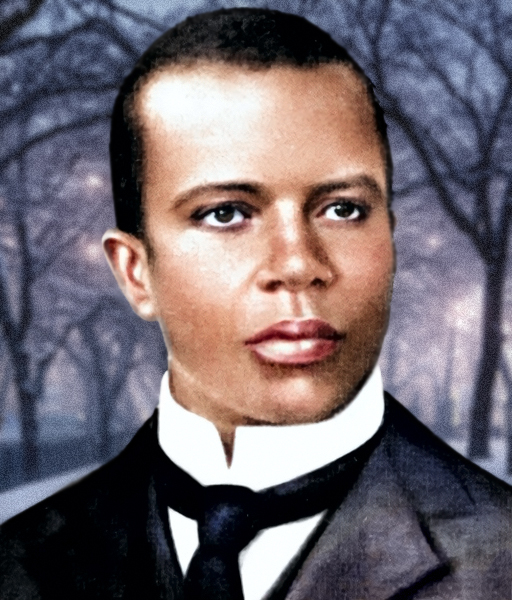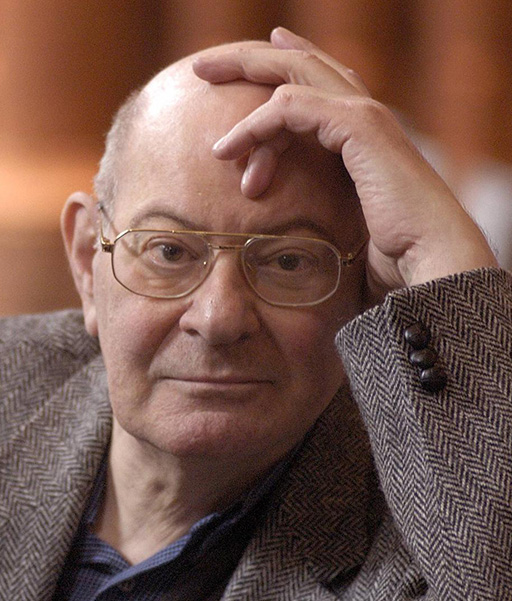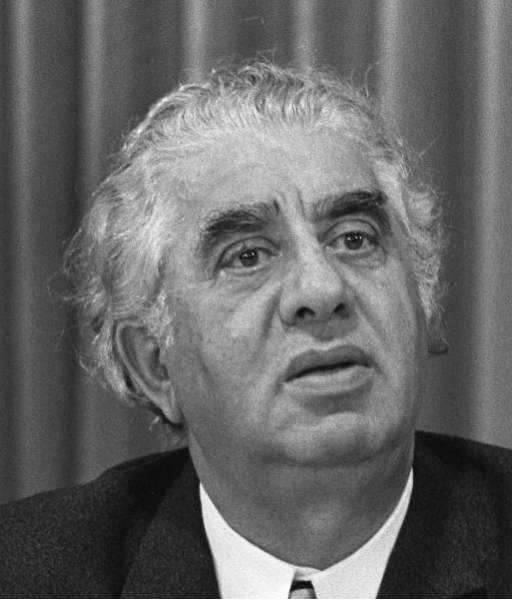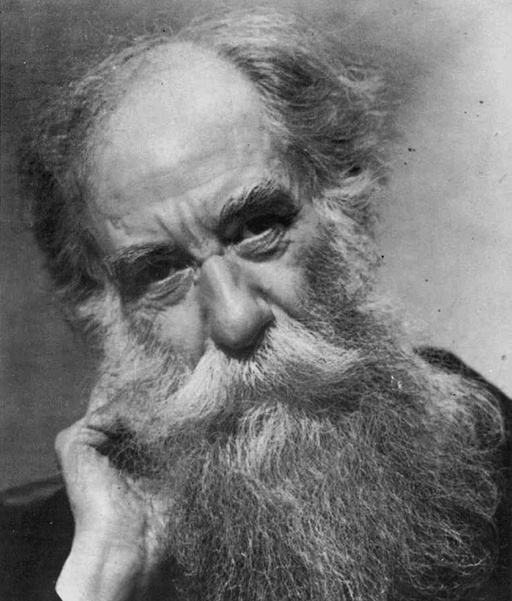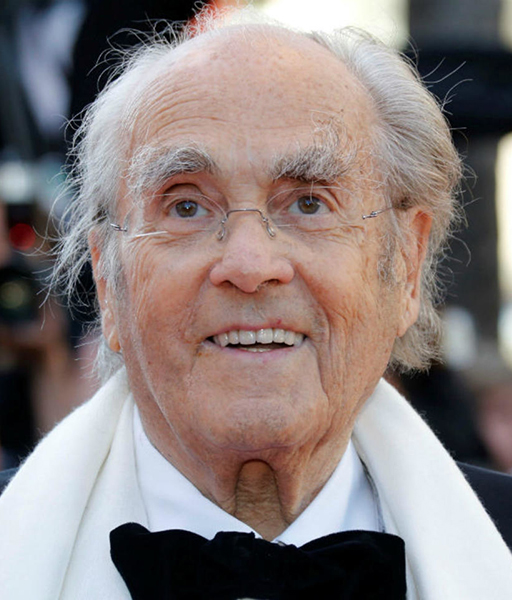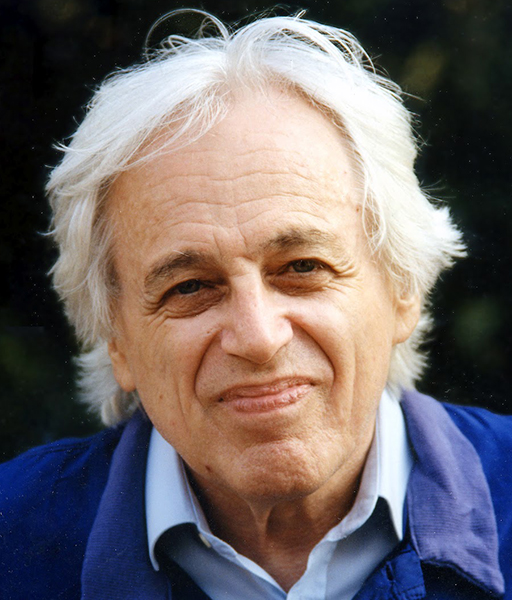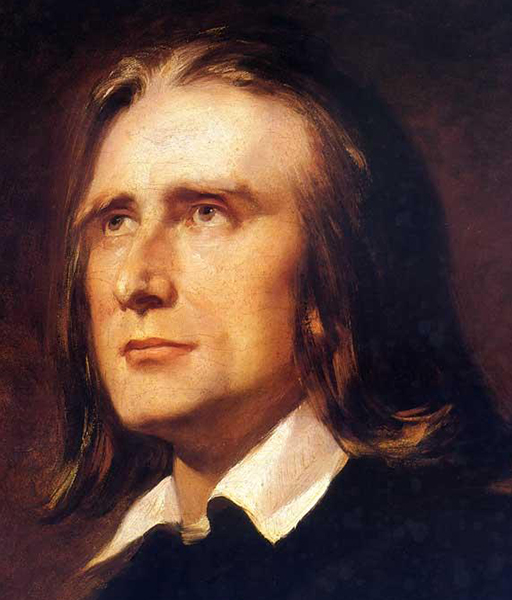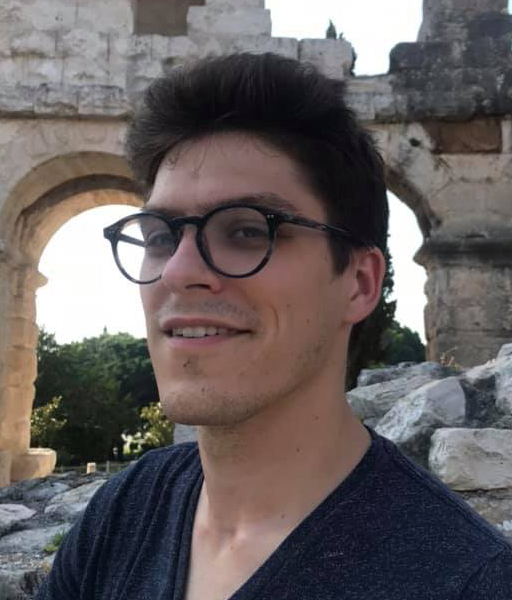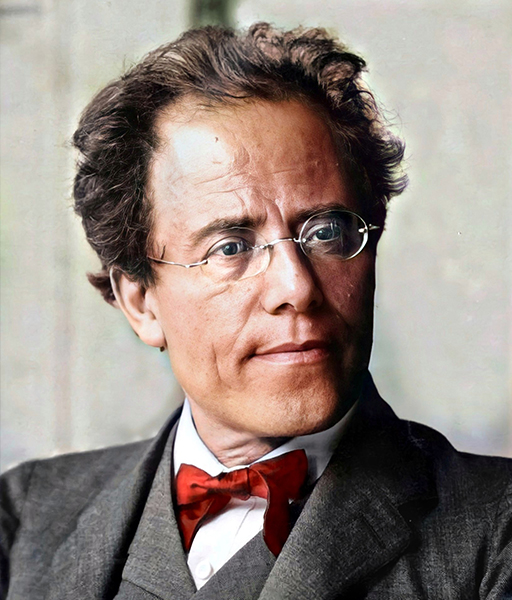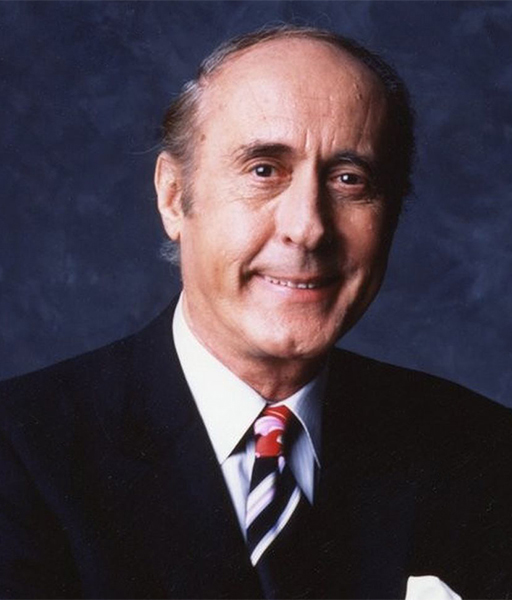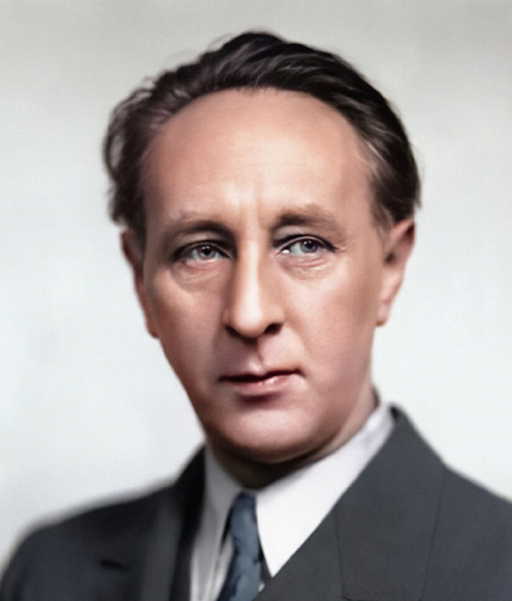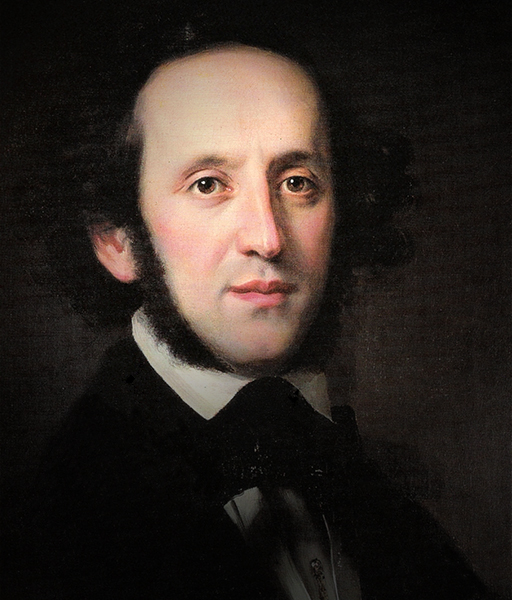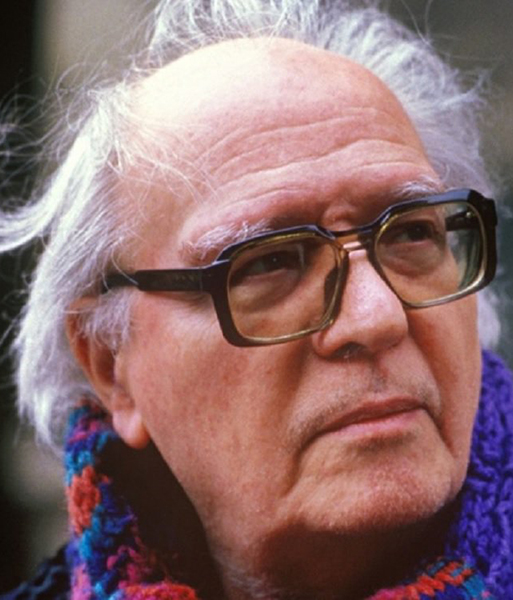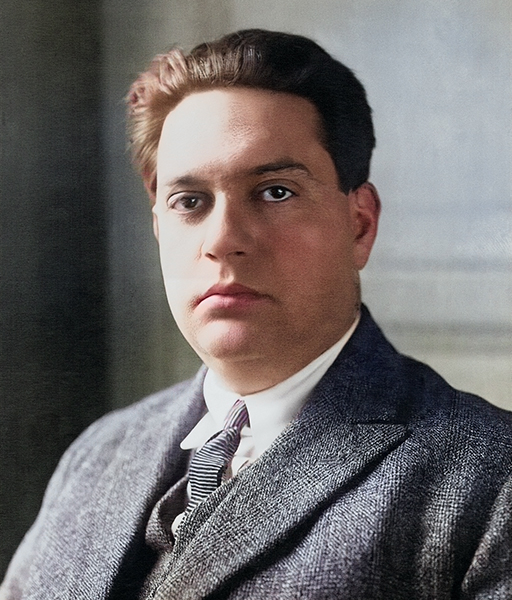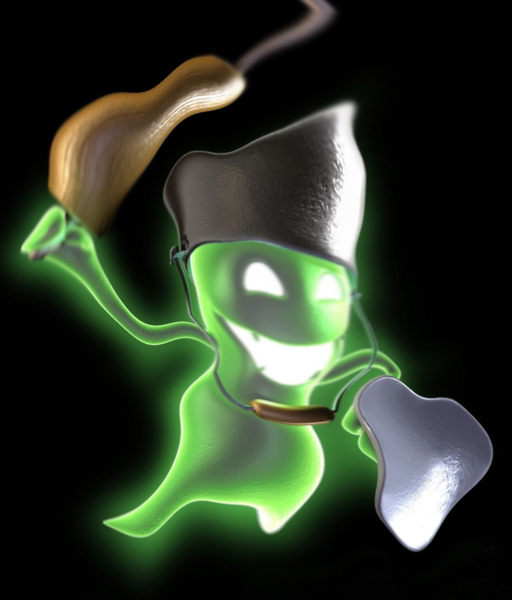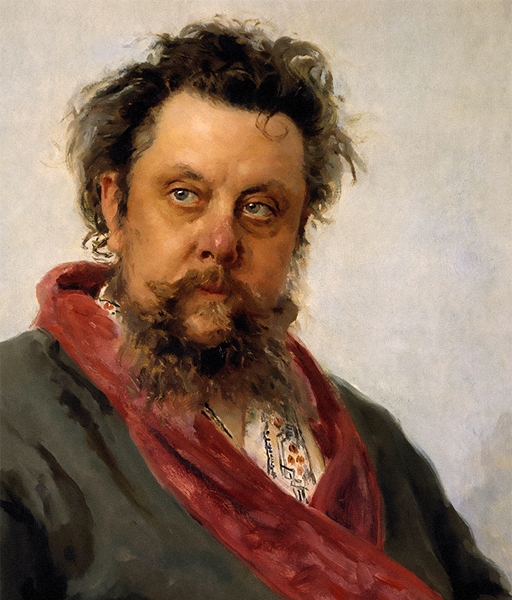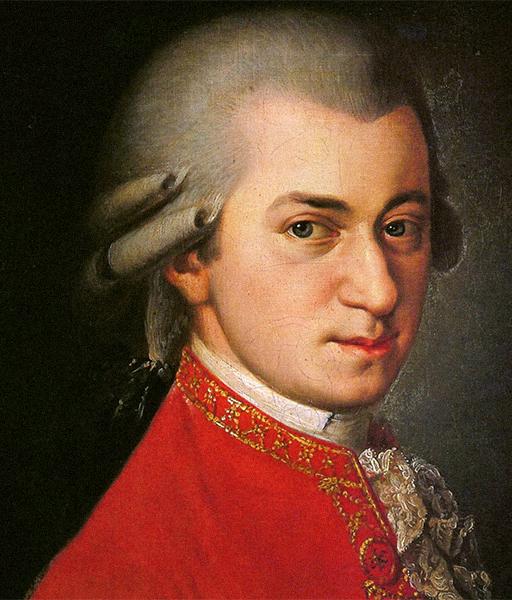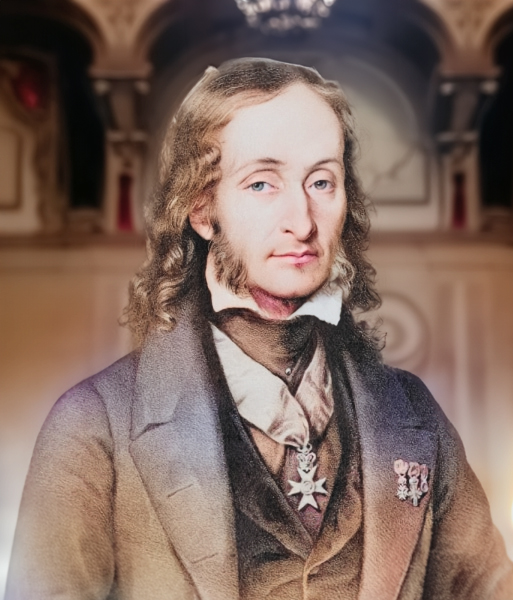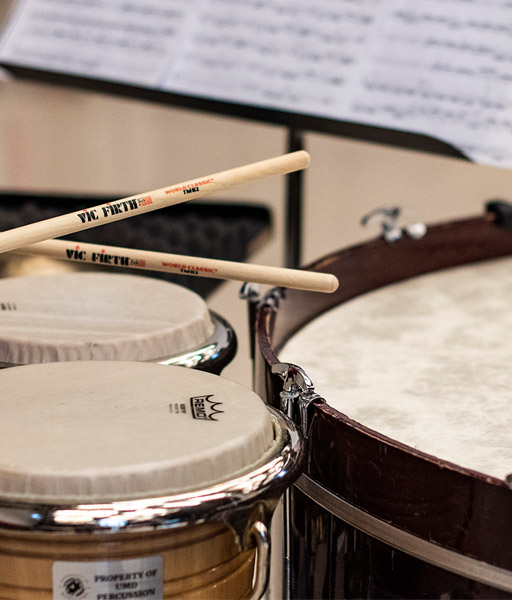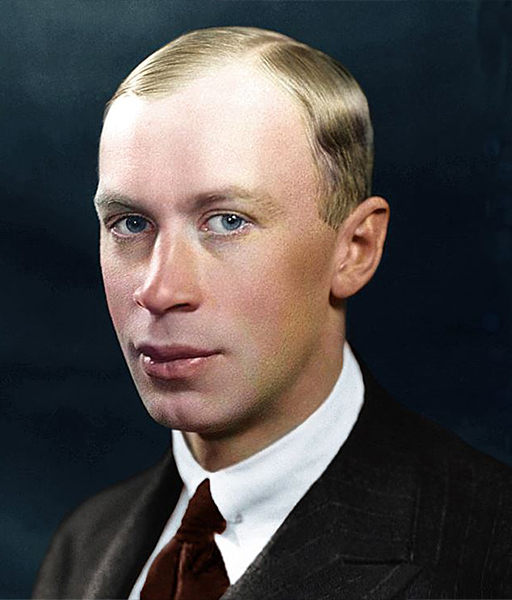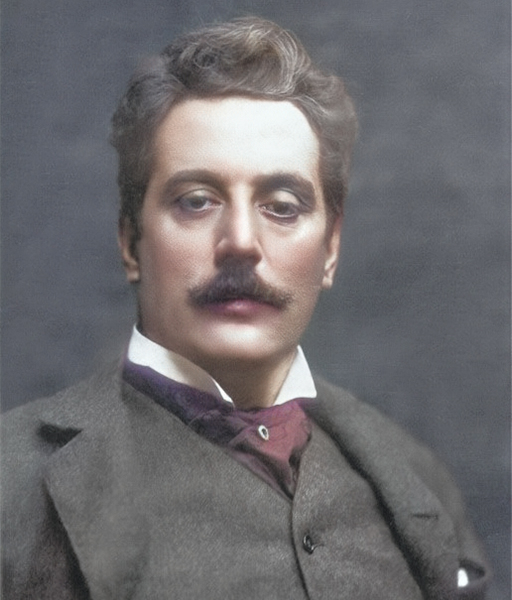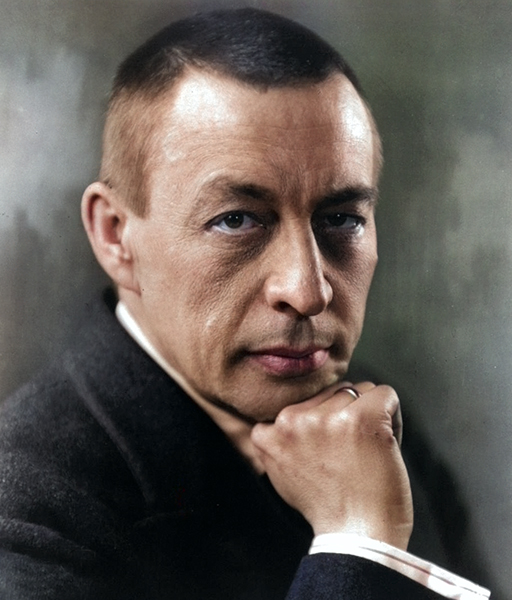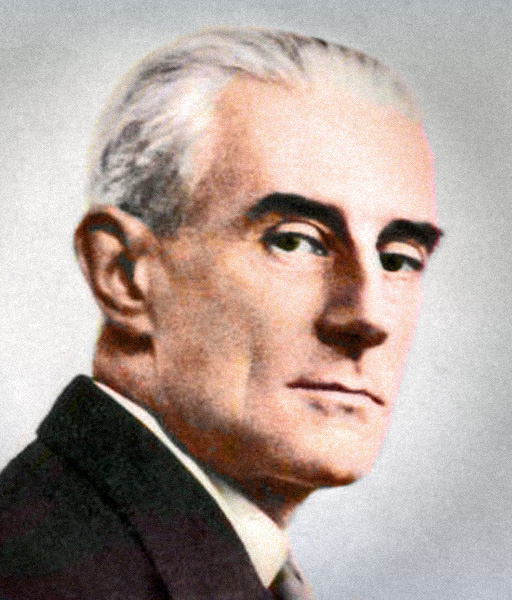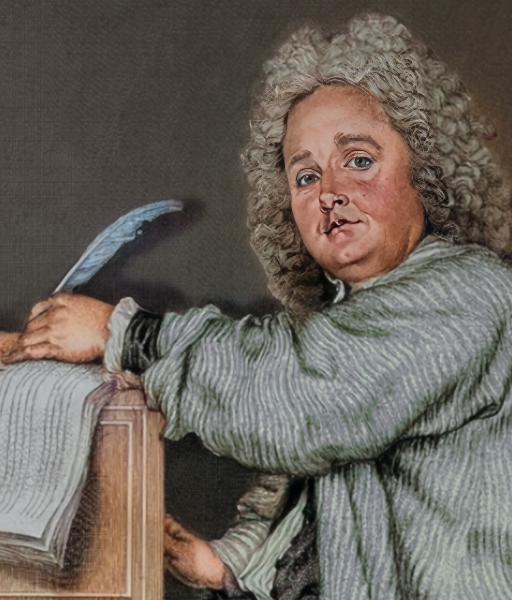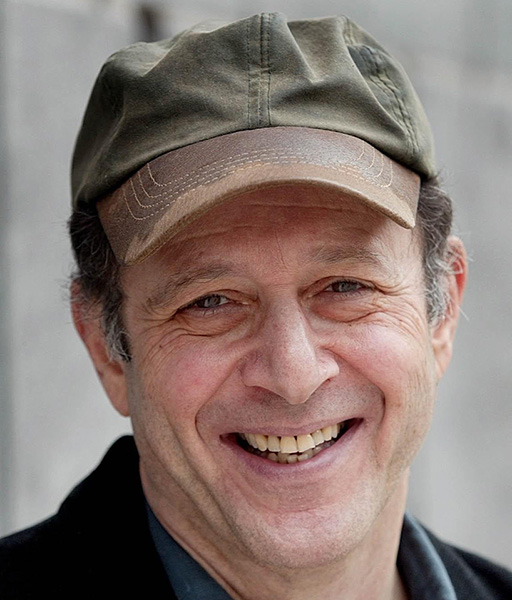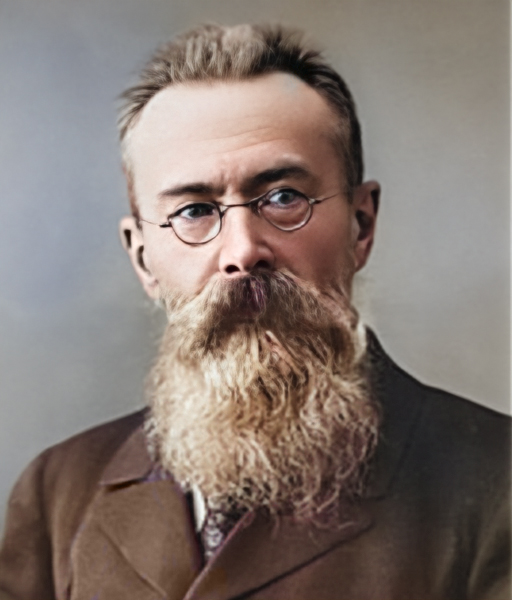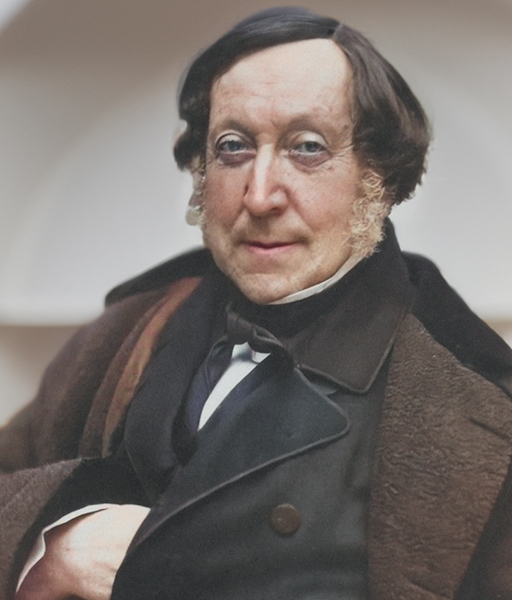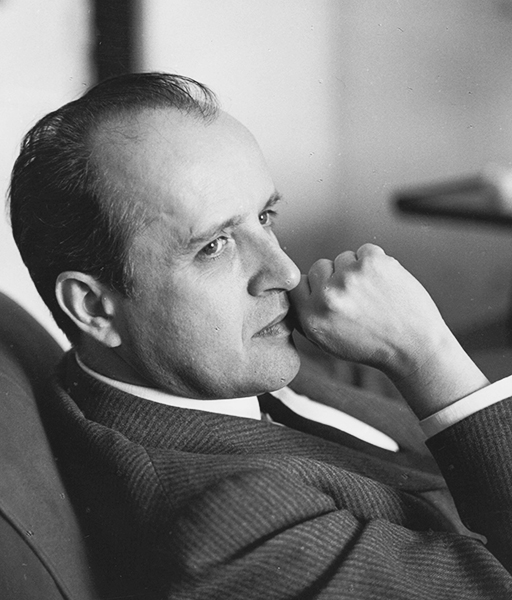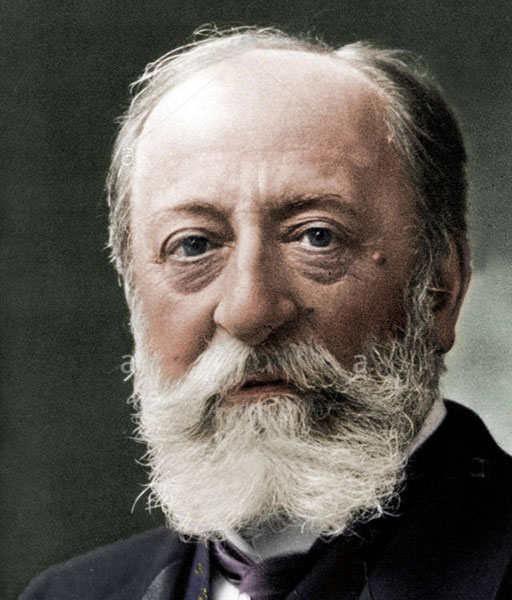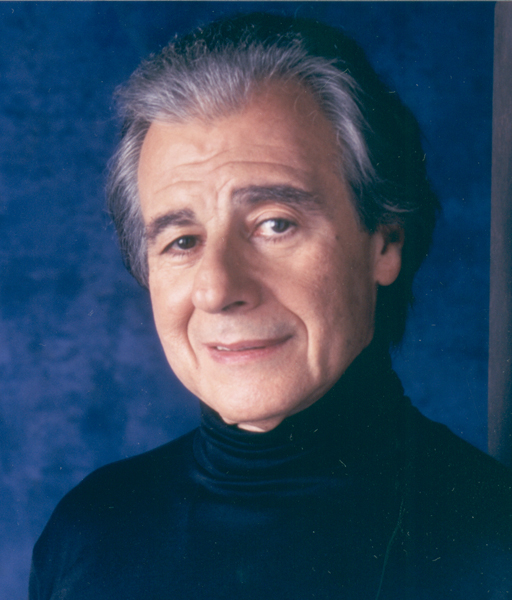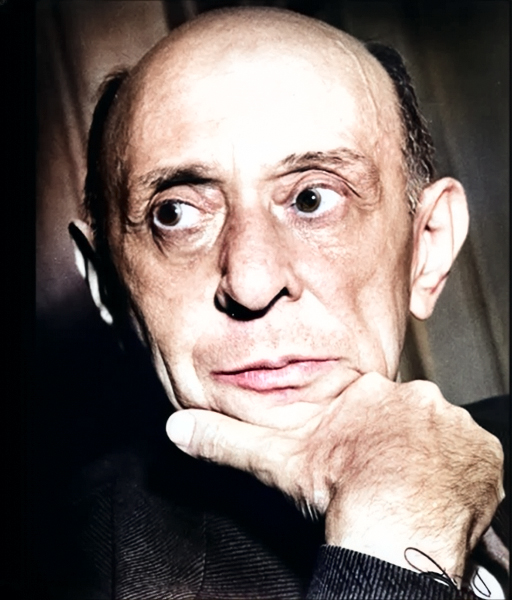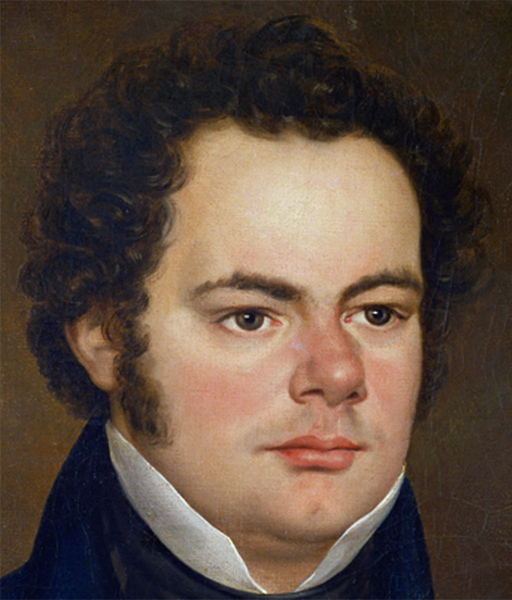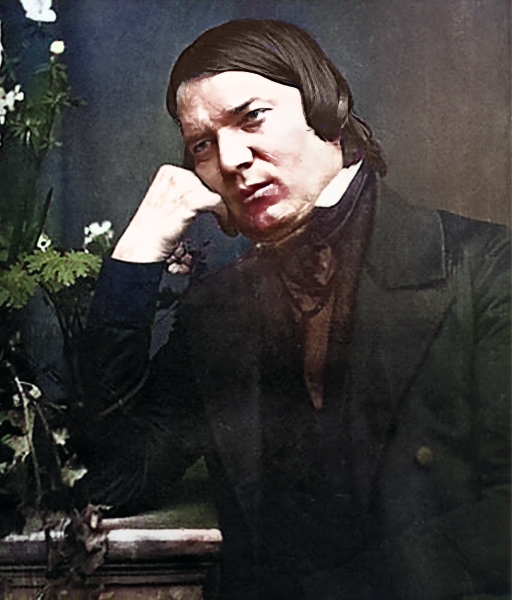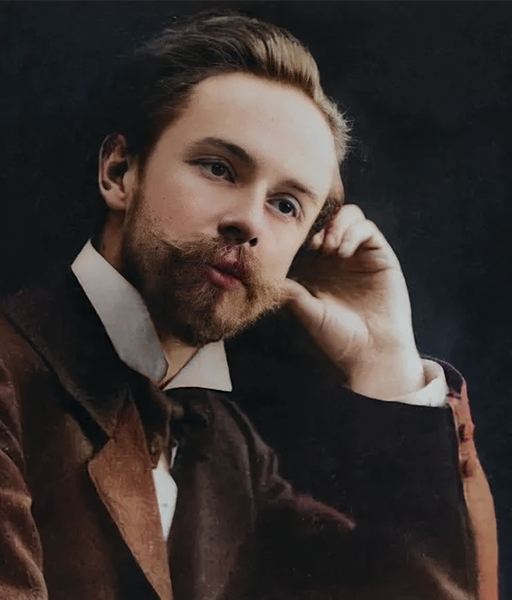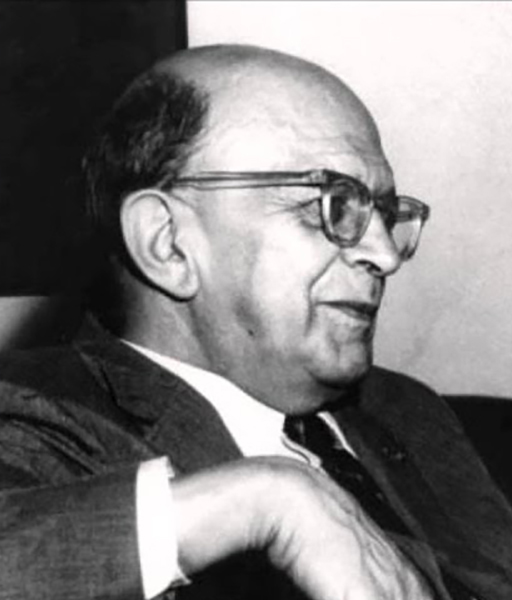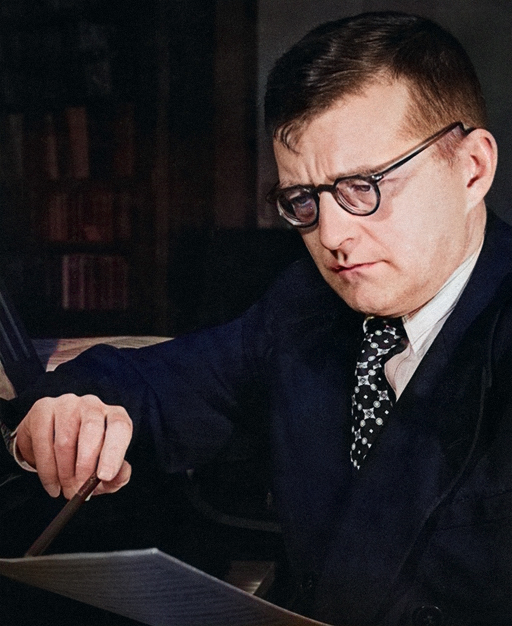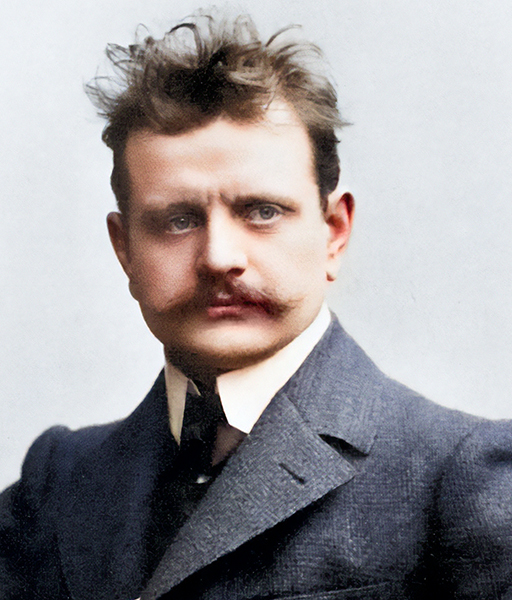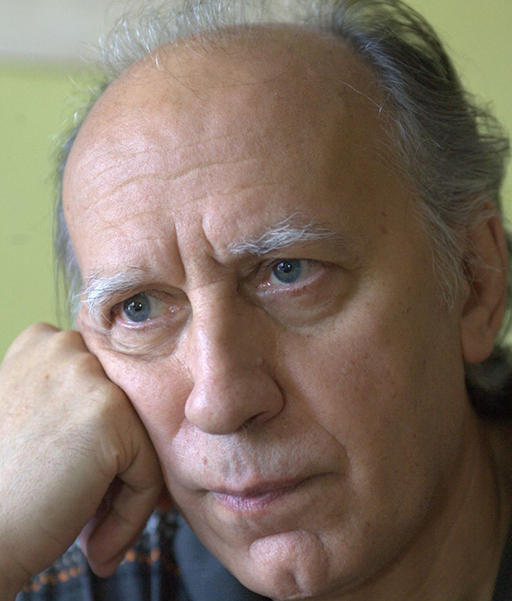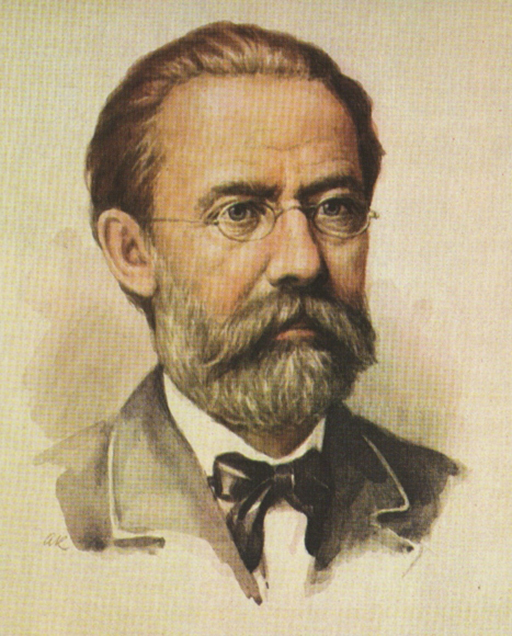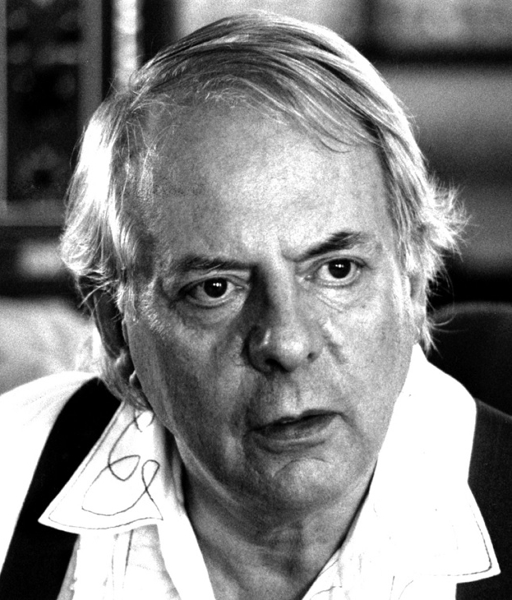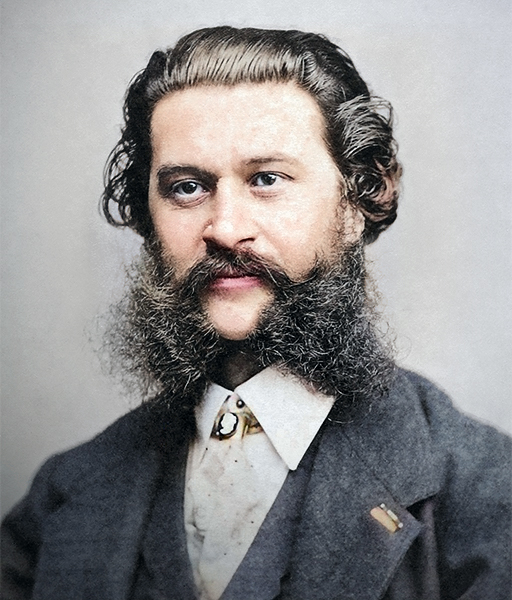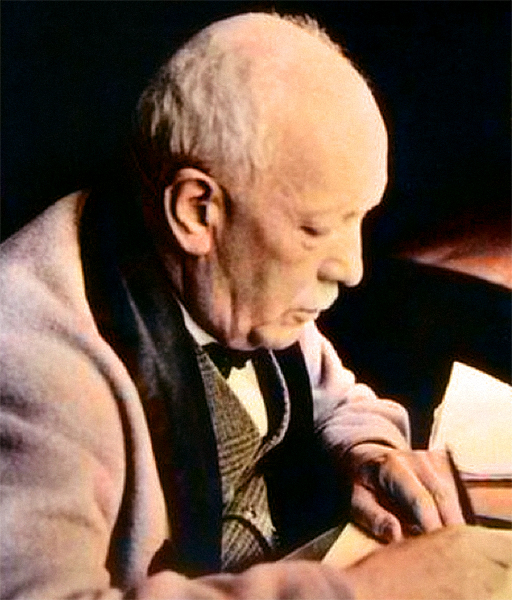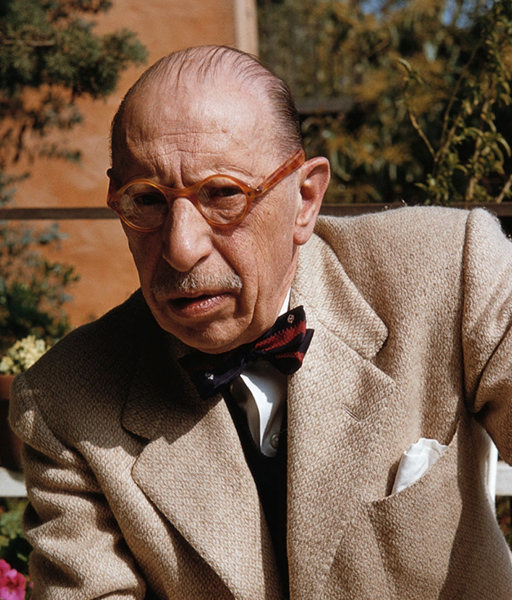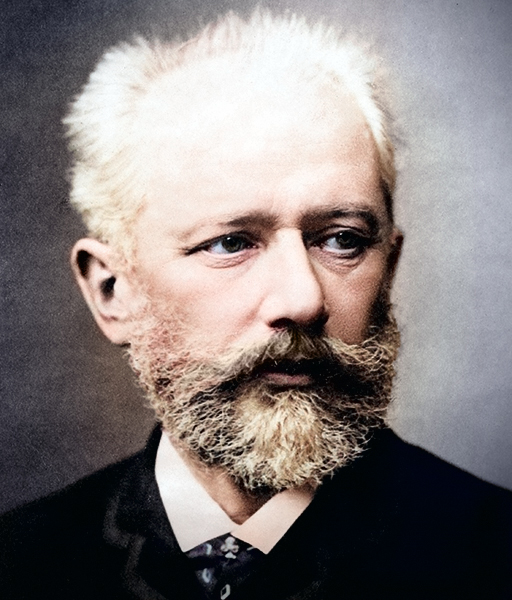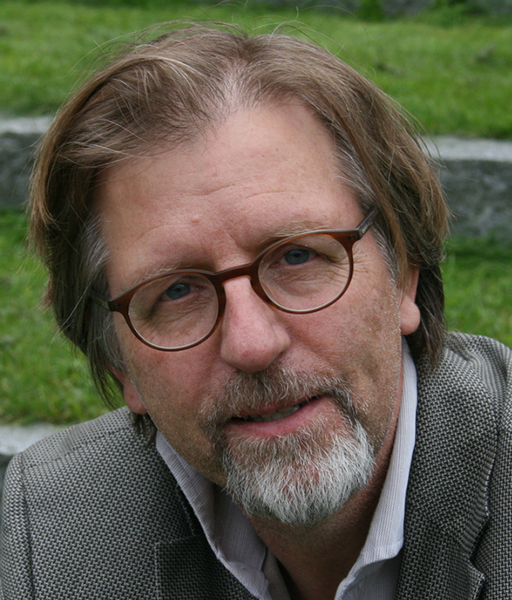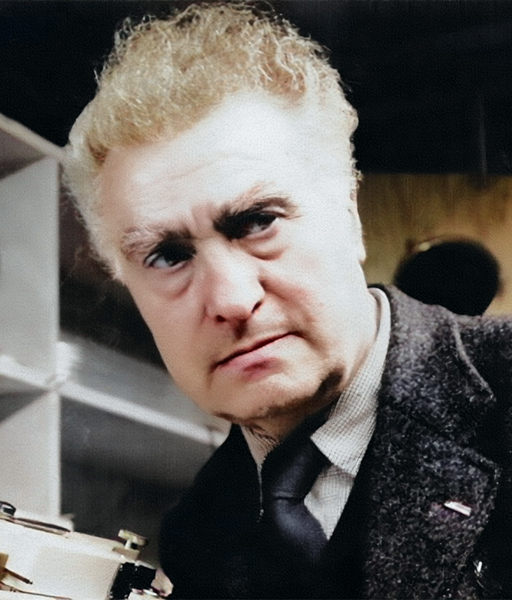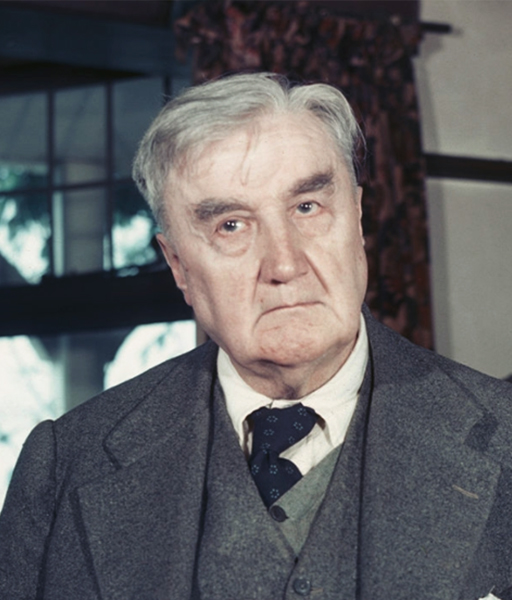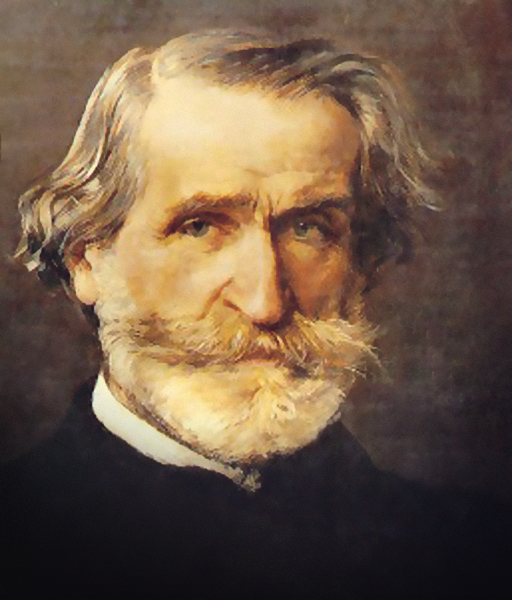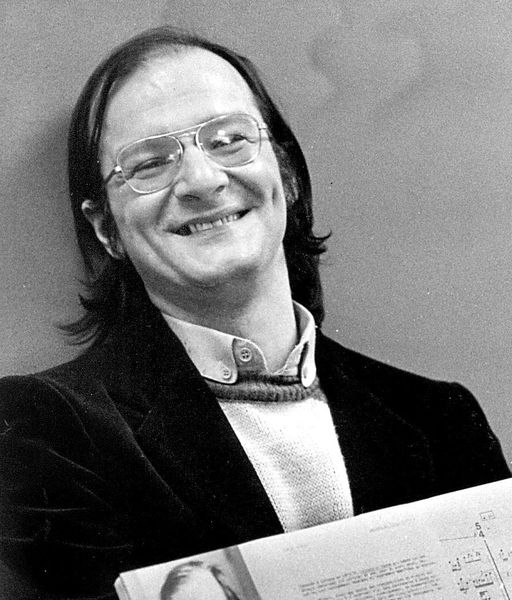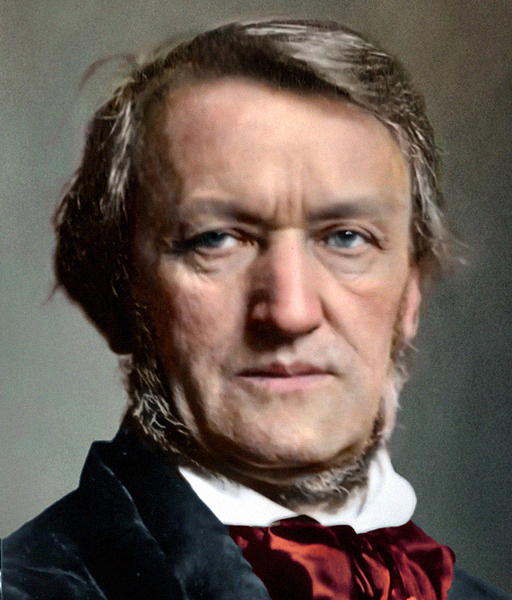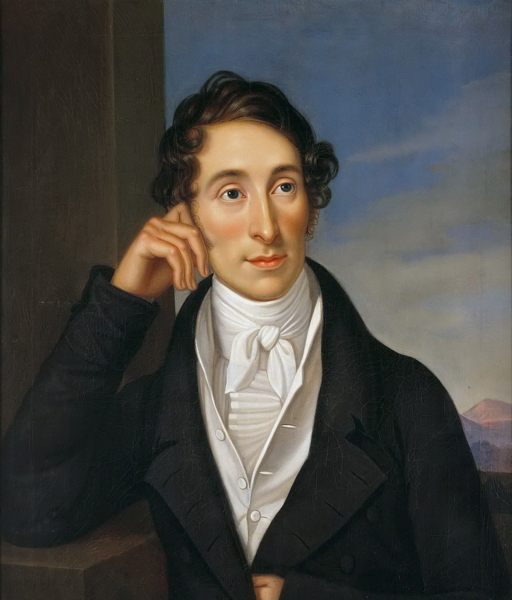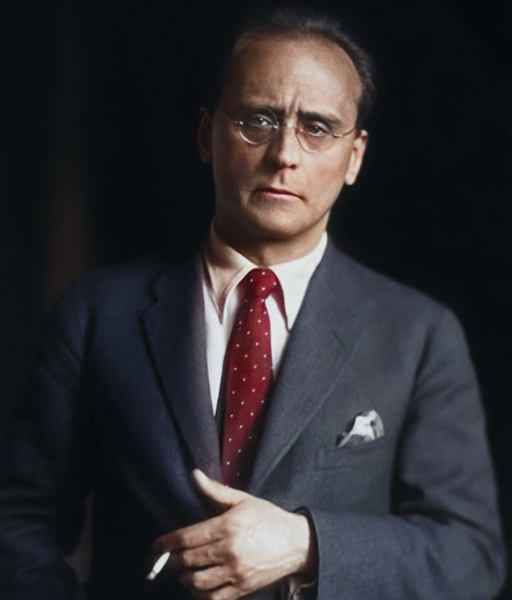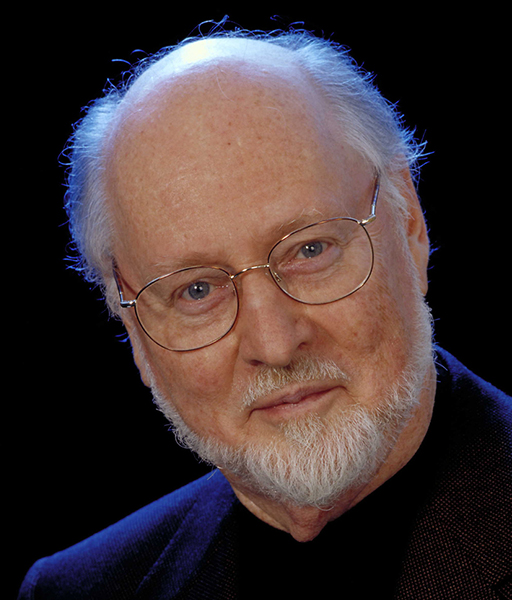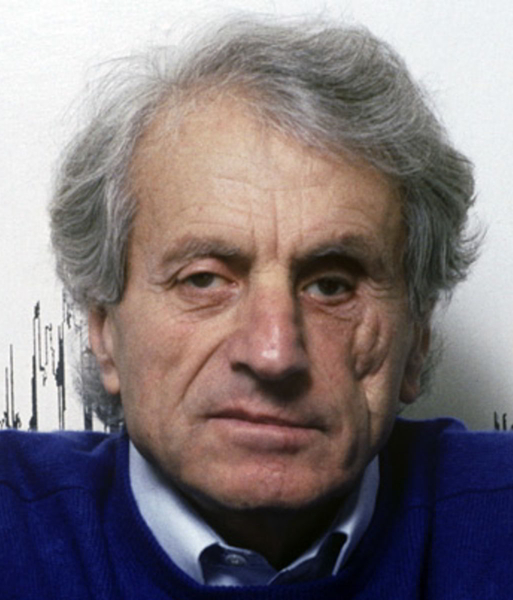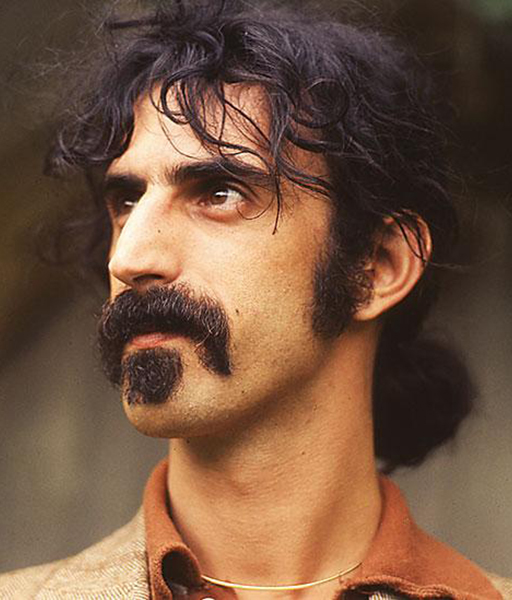Ades
Asyla, I.
3fl*, 3*ob, 3*cl, 3*bsn/4horns, 3tr, 3trb, 1tuba/timp, 6perc, 1harp, 2piano-celesta (grand pn, 2upright pn-one tuned 1/4 tone flat)/strings
21st Century
1997
Not Available
Not Available
This content is exclusive to academic institutions and should only be used for pedagogical purposes.
Duration:
00:00
Independent parts:
0
Audio channels:
2 (Naxos)
Stereo preview:
Score preview:
to be completed
Instrumentation
3fl*, 3*ob, 3*cl, 3*bsn/4horns, 3tr, 3trb, 1tuba/timp, 6perc, 1harp, 2piano-celesta (grand pn, 2upright pn-one tuned 1/4 tone flat)/strings
Orchestral effects
to be completed
Orchestration techniques
to be completed
Ades
Asyla, II.
3fl*, 3*ob, 3*cl, 3*bsn/4horns, 3tr, 3trb, 1tuba/timp, 6perc, 1harp, 2piano-celesta (grand pn, 2upright pn-one tuned 1/4 tone flat)/strings
21st Century
1997
Not Available
Not Available
This content is exclusive to academic institutions and should only be used for pedagogical purposes.
Duration:
00:00
Independent parts:
0
Audio channels:
2 (Naxos)
Stereo preview:
Score preview:
to be completed
Instrumentation
3fl*, 3*ob, 3*cl, 3*bsn/4horns, 3tr, 3trb, 1tuba/timp, 6perc, 1harp, 2piano-celesta (grand pn, 2upright pn-one tuned 1/4 tone flat)/strings
Orchestral effects
to be completed
Orchestration techniques
to be completed
Ades
Asyla, IIII.
3fl*, 3*ob, 3*cl, 3*bsn/4horns, 3tr, 3trb, 1tuba/timp, 6perc, 1harp, 2piano-celesta (grand pn, 2upright pn-one tuned 1/4 tone flat)/strings
21st Century
1997
Not Available
Not Available
This content is exclusive to academic institutions and should only be used for pedagogical purposes.
Duration:
00:00
Independent parts:
0
Audio channels:
2 (Naxos)
Stereo preview:
Score preview:
to be completed
Instrumentation
3fl*, 3*ob, 3*cl, 3*bsn/4horns, 3tr, 3trb, 1tuba/timp, 6perc, 1harp, 2piano-celesta (grand pn, 2upright pn-one tuned 1/4 tone flat)/strings
Orchestral effects
to be completed
Orchestration techniques
to be completed
Ades
Asyla, IV.
3fl*, 3*ob, 3*cl, 3*bsn/4horns, 3tr, 3trb, 1tuba/timp, 6perc, 1harp, 2piano-celesta (grand pn, 2upright pn-one tuned 1/4 tone flat)/strings
21st Century
1997
Not Available
Not Available
This content is exclusive to academic institutions and should only be used for pedagogical purposes.
Duration:
00:00
Independent parts:
0
Audio channels:
2 (Naxos)
Stereo preview:
Score preview:
to be completed
Instrumentation
3fl*, 3*ob, 3*cl, 3*bsn/4horns, 3tr, 3trb, 1tuba/timp, 6perc, 1harp, 2piano-celesta (grand pn, 2upright pn-one tuned 1/4 tone flat)/strings
Orchestral effects
to be completed
Orchestration techniques
to be completed
AdlerGENERIC
Brass CHORDS, Trumpet, Trombone, Horn, Tuba, 17 voicings
Brasses
Not Available
2023
Not Available
Not Available
This content is exclusive to academic institutions and should only be used for pedagogical purposes.
Duration:
02:23
Independent parts:
0
Audio channels:
2 (Naxos)
Stereo preview:
Score preview:
to be completed
Instrumentation
Brasses
Orchestral effects
to be completed
Orchestration techniques
to be completed
AdlerGENERIC
Brasses MUTES, Trumpet, Trombone, Horn, Tuba, 11 examples
Brasses
Not Available
2023
Not Available
Not Available
This content is exclusive to academic institutions and should only be used for pedagogical purposes.
Duration:
02:39
Independent parts:
0
Audio channels:
2 (Naxos)
Stereo preview:
Score preview:
to be completed
Instrumentation
Brasses
Orchestral effects
to be completed
Orchestration techniques
to be completed
AdlerGENERIC
Generic Brasses, Trumpet, Trombone, Horn, Tuba, Sforzandi, Swells, Gliss.
Brasses
Not Available
2023
Not Available
Not Available
This content is exclusive to academic institutions and should only be used for pedagogical purposes.
Duration:
00:42
Independent parts:
0
Audio channels:
2 (Naxos)
Stereo preview:
Score preview:
to be completed
Instrumentation
Brasses
Orchestral effects
to be completed
Orchestration techniques
to be completed
AdlerGENERIC
Generic Horns, Horns 7 examples
Brasses
Not Available
2023
Not Available
Not Available
This content is exclusive to academic institutions and should only be used for pedagogical purposes.
Duration:
02:26
Independent parts:
0
Audio channels:
2 (Naxos)
Stereo preview:
Score preview:
to be completed
Instrumentation
Brasses
Orchestral effects
to be completed
Orchestration techniques
to be completed
AdlerGENERIC
Generic WoodWinds, WoodWinds 12 examples
Woodwinds
Not Available
2023
Not Available
Not Available
This content is exclusive to academic institutions and should only be used for pedagogical purposes.
Duration:
03:00
Independent parts:
0
Audio channels:
2 (Naxos)
Stereo preview:
Score preview:
to be completed
Instrumentation
Woodwinds
Orchestral effects
to be completed
Orchestration techniques
to be completed
AdlerGENERIC
Orchestral CHORDS, 9 Different spacings and doublings
Orchestra
Not Available
2023
Not Available
Not Available
This content is exclusive to academic institutions and should only be used for pedagogical purposes.
Duration:
01:24
Independent parts:
0
Audio channels:
2 (Naxos)
Stereo preview:
Score preview:
to be completed
Instrumentation
Orchestra
Orchestral effects
to be completed
Orchestration techniques
to be completed
AdlerGENERIC
Orchestral EFFECTS, sfz, Dovetailing, Coloring, 12 examples
Orchestra
Not Available
2023
Not Available
Not Available
This content is exclusive to academic institutions and should only be used for pedagogical purposes.
Duration:
02:34
Independent parts:
0
Audio channels:
2 (Naxos)
Stereo preview:
Score preview:
to be completed
Instrumentation
Orchestra
Orchestral effects
to be completed
Orchestration techniques
to be completed
AdlerGENERIC
WoodWind CHORDS, Flutes, Oboes, Clarinets, Bassoons, 29 voicings spacings, doublings
Woodwinds
Not Available
2023
Not Available
Not Available
This content is exclusive to academic institutions and should only be used for pedagogical purposes.
Duration:
03:00
Independent parts:
0
Audio channels:
2 (Naxos)
Stereo preview:
Score preview:
to be completed
Instrumentation
Woodwinds
Orchestral effects
to be completed
Orchestration techniques
to be completed
Andriessen
De Staat, one large movement
4*ob/4horns, 4tr, 4trb/2el guit, 1el bassguit/2harps, 2pnos/violas (all amplified)
Late 20th Century
1976
Not Available
Not Available
This content is exclusive to academic institutions and should only be used for pedagogical purposes.
Duration:
00:00
Independent parts:
0
Audio channels:
2 (Naxos)
Stereo preview:
Score preview:
to be completed
Instrumentation
4*ob/4horns, 4tr, 4trb/2el guit, 1el bassguit/2harps, 2pnos/violas (all amplified)
Orchestral effects
to be completed
Orchestration techniques
to be completed
Andriessen
De Materie Part II, "Hadewijch", Hadewijch
3fl, 2altsax, 2tensax, 1barsax/4tr, 4trb/2perc, 2pns(2.elpno), 1synth, uprightpn(behind)/2el guit, 1el bassguit/ 4 female voices (all amplified)
Late 20th Century
1988
Not Available
Not Available
This content is exclusive to academic institutions and should only be used for pedagogical purposes.
Duration:
00:00
Independent parts:
0
Audio channels:
2 (Naxos)
Stereo preview:
Score preview:
to be completed
Instrumentation
3fl, 2altsax, 2tensax, 1barsax/4tr, 4trb/2perc, 2pns(2.elpno), 1synth, uprightpn(behind)/2el guit, 1el bassguit/ 4 female voices (all amplified)
Orchestral effects
to be completed
Orchestration techniques
to be completed
Andriessen
De Materie Part III, "De Stijl", "De Stijl"
3fl, 2ob, 2Eh, 5cl, 2basscl, 1contrabasscl/4horns, 4tr, 4trb, 1tuba/5perc, 1harp, 2pnos, 2synths, 2el guit, 1el bassguit/4vl, 2vla, 2vc, 1db/ 8 solo voices(2S.2A.2T.2B.) (all amplified)
Late 20th Century
1988
Not Available
Not Available
This content is exclusive to academic institutions and should only be used for pedagogical purposes.
Duration:
00:00
Independent parts:
0
Audio channels:
2 (Naxos)
Stereo preview:
Score preview:
to be completed
Instrumentation
3fl, 2ob, 2Eh, 5cl, 2basscl, 1contrabasscl/4horns, 4tr, 4trb, 1tuba/5perc, 1harp, 2pnos, 2synths, 2el guit, 1el bassguit/4vl, 2vla, 2vc, 1db/ 8 solo voices(2S.2A.2T.2B.) (all amplified)
Orchestral effects
to be completed
Orchestration techniques
to be completed
Antheil
Ballet Mecanique, One large movement
original orchestration: 16 player pianos (or pianolas) in four parts, 2 regular pianos, 3 xylophones, at least 7 electric bells, 3 propellers, siren, 4 bass drums, and 1 tam-tam
Modern
1924
Not Available
Not Available
This content is exclusive to academic institutions and should only be used for pedagogical purposes.
Duration:
16:06
Independent parts:
0
Audio channels:
2 (Naxos)
Stereo preview:
Score preview:
to be completed
Instrumentation
original orchestration: 16 player pianos (or pianolas) in four parts, 2 regular pianos, 3 xylophones, at least 7 electric bells, 3 propellers, siren, 4 bass drums, and 1 tam-tam
Orchestral effects
to be completed
Orchestration techniques
to be completed
Bach
Choral Jesu, meine Freude (Motet BVW 227), Excerpt (2bars)
Strings
Baroque
1653
Choral
Strings
Not Available
Duration:
02:00
Independent parts:
0
Audio channels:
5
Stereo preview:
Score preview:
to be completed
Instrumentation
Strings
Orchestral effects
to be completed
Orchestration techniques
to be completed
Bach
Choral Jesu, meine Freude (Motet BVW 227), Excerpt (2bars)
Woodwinds
Baroque
1653
Choral
Woodwinds
Not Available
Duration:
04:41
Independent parts:
0
Audio channels:
12
Stereo preview:
Score preview:
to be completed
Instrumentation
Woodwinds
Orchestral effects
to be completed
Orchestration techniques
to be completed
Bach
Brandenburg Concerto No. 1, I. Allegro
3ob, bsn/2horn/hpsd/strings
Baroque
1713
Not Available
Public Domain
This content is exclusive to academic institutions and should only be used for pedagogical purposes.
Duration:
04:26
Independent parts:
0
Audio channels:
2 (Naxos)
Stereo preview:
Score preview:
to be completed
Instrumentation
3ob, bsn/2horn/hpsd/strings
Orchestral effects
to be completed
Orchestration techniques
to be completed
Bach
Brandenburg Concerto No. 1, II. Agagio
3ob, bsn/2horn/hpsd/strings
Baroque
1713
Not Available
Public Domain
This content is exclusive to academic institutions and should only be used for pedagogical purposes.
Duration:
04:31
Independent parts:
0
Audio channels:
2 (Naxos)
Stereo preview:
Score preview:
to be completed
Instrumentation
3ob, bsn/2horn/hpsd/strings
Orchestral effects
to be completed
Orchestration techniques
to be completed
Bach
Brandenburg Concerto No. 1, III. Allegro
3ob, bsn/2horn/hpsd/strings
Baroque
1713
Not Available
Public Domain
This content is exclusive to academic institutions and should only be used for pedagogical purposes.
Duration:
04:39
Independent parts:
0
Audio channels:
2 (Naxos)
Stereo preview:
Score preview:
to be completed
Instrumentation
3ob, bsn/2horn/hpsd/strings
Orchestral effects
to be completed
Orchestration techniques
to be completed
Bach
Brandenburg Concerto No. 1, IV. Menuetto - Polacca
3ob, bsn/2horn/hpsd/strings
Baroque
1713
Not Available
Public Domain
This content is exclusive to academic institutions and should only be used for pedagogical purposes.
Duration:
09:12
Independent parts:
0
Audio channels:
2 (Naxos)
Stereo preview:
Score preview:
to be completed
Instrumentation
3ob, bsn/2horn/hpsd/strings
Orchestral effects
to be completed
Orchestration techniques
to be completed
Bach
Brandenburg Concerto No. 2, I. Allegro
fl, ob/tr/hpsd/strings/solo Vl
Baroque
1713
Not Available
Public Domain
This content is exclusive to academic institutions and should only be used for pedagogical purposes.
Duration:
06:26
Independent parts:
0
Audio channels:
2 (Naxos)
Stereo preview:
Score preview:
to be completed
Instrumentation
fl, ob/tr/hpsd/strings/solo Vl
Orchestral effects
to be completed
Orchestration techniques
to be completed
Bach
Brandenburg Concerto No. 2, II. Andante
fl, ob/tr/hpsd/strings/solo Vl
Baroque
1713
Not Available
Public Domain
This content is exclusive to academic institutions and should only be used for pedagogical purposes.
Duration:
03:47
Independent parts:
0
Audio channels:
2 (Naxos)
Stereo preview:
Score preview:
to be completed
Instrumentation
fl, ob/tr/hpsd/strings/solo Vl
Orchestral effects
to be completed
Orchestration techniques
to be completed
Bach
Brandenburg Concerto No. 2, III. Allegro assai
fl, ob/tr/hpsd/strings/solo Vl
Baroque
1713
Not Available
Public Domain
This content is exclusive to academic institutions and should only be used for pedagogical purposes.
Duration:
03:38
Independent parts:
0
Audio channels:
2 (Naxos)
Stereo preview:
Score preview:
to be completed
Instrumentation
fl, ob/tr/hpsd/strings/solo Vl
Orchestral effects
to be completed
Orchestration techniques
to be completed
Bach
Cantata BWV 51, V. Alleluja!
tr, vlI-II, viola, continuo, soprano
Baroque
1730
Not Available
Public Domain
This content is exclusive to academic institutions and should only be used for pedagogical purposes.
Duration:
02:27
Independent parts:
0
Audio channels:
2 (Naxos)
Stereo preview:
Score preview:
to be completed
Instrumentation
tr, vlI-II, viola, continuo, soprano
Orchestral effects
to be completed
Orchestration techniques
to be completed
Bach
Cantata BWV51, I. Aria: Jauchzet Gott in allen Landen!
tr, vlI-II, viola, continuo, soprano
Baroque
1730
Not Available
Public Domain
This content is exclusive to academic institutions and should only be used for pedagogical purposes.
Duration:
00:00
Independent parts:
0
Audio channels:
2 (Naxos)
Stereo preview:
Score preview:
to be completed
Instrumentation
tr, vlI-II, viola, continuo, soprano
Orchestral effects
to be completed
Orchestration techniques
to be completed
Bach
Cantata BWV51, II. Recitative: Wir beten zu dem Tempel an
tr, vlI-II, viola, continuo, soprano
Baroque
1730
Not Available
Public Domain
This content is exclusive to academic institutions and should only be used for pedagogical purposes.
Duration:
00:00
Independent parts:
0
Audio channels:
2 (Naxos)
Stereo preview:
Score preview:
to be completed
Instrumentation
tr, vlI-II, viola, continuo, soprano
Orchestral effects
to be completed
Orchestration techniques
to be completed
Bach
Cantata BWV51, III. Aria: Hochster, mache deine Gute
tr, vlI-II, viola, continuo, soprano
Baroque
1730
Not Available
Public Domain
This content is exclusive to academic institutions and should only be used for pedagogical purposes.
Duration:
00:00
Independent parts:
0
Audio channels:
2 (Naxos)
Stereo preview:
Score preview:
to be completed
Instrumentation
tr, vlI-II, viola, continuo, soprano
Orchestral effects
to be completed
Orchestration techniques
to be completed
Bach
Cantata BWV51, IV. Chorale: Sei Lob und Preis mit Ehren
tr, vlI-II, viola, continuo, soprano
Baroque
1730
Not Available
Public Domain
This content is exclusive to academic institutions and should only be used for pedagogical purposes.
Duration:
00:00
Independent parts:
0
Audio channels:
2 (Naxos)
Stereo preview:
Score preview:
to be completed
Instrumentation
tr, vlI-II, viola, continuo, soprano
Orchestral effects
to be completed
Orchestration techniques
to be completed
Barber
Symphony No. 1, I Andante mon non troppo
picc, 2fl, 2ob, e.h., 2cl, bass clar, 2bsn, c-basn/4horn, 3tr, 3trb, tuba/timp, perc, harp/strings
Modern
1936
Not Available
Public Domain
This content is exclusive to academic institutions and should only be used for pedagogical purposes.
Duration:
07:13
Independent parts:
0
Audio channels:
2 (Naxos)
Stereo preview:
Score preview:
to be completed
Instrumentation
picc, 2fl, 2ob, e.h., 2cl, bass clar, 2bsn, c-basn/4horn, 3tr, 3trb, tuba/timp, perc, harp/strings
Orchestral effects
to be completed
Orchestration techniques
to be completed
Barber
Symphony No. 1, II Allegro molto
picc, 2fl, 2ob, e.h., 2cl, bass clar, 2bsn, c-basn/4horn, 3tr, 3trb, tuba/timp, perc, harp/strings
Modern
1936
Not Available
Public Domain
This content is exclusive to academic institutions and should only be used for pedagogical purposes.
Duration:
04:30
Independent parts:
0
Audio channels:
2 (Naxos)
Stereo preview:
Score preview:
to be completed
Instrumentation
picc, 2fl, 2ob, e.h., 2cl, bass clar, 2bsn, c-basn/4horn, 3tr, 3trb, tuba/timp, perc, harp/strings
Orchestral effects
to be completed
Orchestration techniques
to be completed
Barber
Symphony No. 1, III Andante tranquillo
picc, 2fl, 2ob, e.h., 2cl, bass clar, 2bsn, c-basn/4horn, 3tr, 3trb, tuba/timp, perc, harp/strings
Modern
1936
Not Available
Public Domain
This content is exclusive to academic institutions and should only be used for pedagogical purposes.
Duration:
09:56
Independent parts:
0
Audio channels:
2 (Naxos)
Stereo preview:
Score preview:
to be completed
Instrumentation
picc, 2fl, 2ob, e.h., 2cl, bass clar, 2bsn, c-basn/4horn, 3tr, 3trb, tuba/timp, perc, harp/strings
Orchestral effects
to be completed
Orchestration techniques
to be completed
Baril
Ellipse, one movement
Music on Tape
21st Century
2001
Sound-based
Copyrights Félix Frédéric Baril
This content is exclusive to academic institutions and should only be used for pedagogical purposes.
Duration:
07:26
Independent parts:
0
Audio channels:
2 (stereo)
Stereo preview:
Score preview:
to be completed
Instrumentation
Music on Tape
Orchestral effects
to be completed
Orchestration techniques
to be completed
Baril
Un Horla, Scènes I, II, III
horn, perc, el guit, vl, vc, db/ solo soprano
21st Century
2012
Episodic
Copyrights Félix Frédéric Baril
This content is exclusive to academic institutions and should only be used for pedagogical purposes.
Duration:
25:25
Independent parts:
0
Audio channels:
2 (stereo)
Stereo preview:
Score preview:
to be completed
Instrumentation
horn, perc, el guit, vl, vc, db/ solo soprano
Orchestral effects
to be completed
Orchestration techniques
to be completed
Bartok
Violin Conceto No. 1, I. Andante sostenuto
2fl*, 3*ob, 2*cl, 2bsn/4horns, 2tr, 2trb, 1tuba/timp, 1perc, 2harps/strings/ solo violin
Modern
1908
Not Available
Public Domain
This content is exclusive to academic institutions and should only be used for pedagogical purposes.
Duration:
09:44
Independent parts:
0
Audio channels:
2 (Naxos)
Stereo preview:
Score preview:
to be completed
Instrumentation
2fl*, 3*ob, 2*cl, 2bsn/4horns, 2tr, 2trb, 1tuba/timp, 1perc, 2harps/strings/ solo violin
Orchestral effects
to be completed
Orchestration techniques
to be completed
Bartok
Violin Conceto No. 1, II. Allegro giocoso
2fl*, 3*ob, 2*cl, 2bsn/4horns, 2tr, 2trb, 1tuba/timp, 1perc, 2harps/strings/ solo violin
Modern
1908
Not Available
Public Domain
This content is exclusive to academic institutions and should only be used for pedagogical purposes.
Duration:
12:37
Independent parts:
0
Audio channels:
2 (Naxos)
Stereo preview:
Score preview:
to be completed
Instrumentation
2fl*, 3*ob, 2*cl, 2bsn/4horns, 2tr, 2trb, 1tuba/timp, 1perc, 2harps/strings/ solo violin
Orchestral effects
to be completed
Orchestration techniques
to be completed
Bartok
Bluebeard's Castle, Door 1
4*fl, 2ob, e.h, 3*cl, 4*bsn/4 horn, 4tr, 3trb, 1 tuba/timp, 2perc, 2harp, celesta, organ/strings/8 offstage: 4tr, 4trb
Modern
1911
Not Available
Public Domain
This content is exclusive to academic institutions and should only be used for pedagogical purposes.
Duration:
04:07
Independent parts:
0
Audio channels:
2 (Naxos)
Stereo preview:
Score preview:
to be completed
Instrumentation
4*fl, 2ob, e.h, 3*cl, 4*bsn/4 horn, 4tr, 3trb, 1 tuba/timp, 2perc, 2harp, celesta, organ/strings/8 offstage: 4tr, 4trb
Orchestral effects
to be completed
Orchestration techniques
to be completed
Bartok
Bluebeard's Castle, Door 2
4*fl, 2ob, e.h, 3*cl, 4*bsn/4 horn, 4tr, 3trb, 1 tuba/timp, 2perc, 2harp, celesta, organ/strings/8 offstage: 4tr, 4trb
Modern
1911
Not Available
Public Domain
This content is exclusive to academic institutions and should only be used for pedagogical purposes.
Duration:
04:22
Independent parts:
0
Audio channels:
2 (Naxos)
Stereo preview:
Score preview:
to be completed
Instrumentation
4*fl, 2ob, e.h, 3*cl, 4*bsn/4 horn, 4tr, 3trb, 1 tuba/timp, 2perc, 2harp, celesta, organ/strings/8 offstage: 4tr, 4trb
Orchestral effects
to be completed
Orchestration techniques
to be completed
Bartok
Bluebeard's Castle, Door 3
4*fl, 2ob, e.h, 3*cl, 4*bsn/4 horn, 4tr, 3trb, 1 tuba/timp, 2perc, 2harp, celesta, organ/strings/8 offstage: 4tr, 4trb
Modern
1911
Not Available
Public Domain
This content is exclusive to academic institutions and should only be used for pedagogical purposes.
Duration:
02:28
Independent parts:
0
Audio channels:
2 (Naxos)
Stereo preview:
Score preview:
to be completed
Instrumentation
4*fl, 2ob, e.h, 3*cl, 4*bsn/4 horn, 4tr, 3trb, 1 tuba/timp, 2perc, 2harp, celesta, organ/strings/8 offstage: 4tr, 4trb
Orchestral effects
to be completed
Orchestration techniques
to be completed
Bartok
Bluebeard's Castle, Door 4
4*fl, 2ob, e.h, 3*cl, 4*bsn/4 horn, 4tr, 3trb, 1 tuba/timp, 2perc, 2harp, celesta, organ/strings/8 offstage: 4tr, 4trb
Modern
1911
Not Available
Public Domain
This content is exclusive to academic institutions and should only be used for pedagogical purposes.
Duration:
04:56
Independent parts:
0
Audio channels:
2 (Naxos)
Stereo preview:
Score preview:
to be completed
Instrumentation
4*fl, 2ob, e.h, 3*cl, 4*bsn/4 horn, 4tr, 3trb, 1 tuba/timp, 2perc, 2harp, celesta, organ/strings/8 offstage: 4tr, 4trb
Orchestral effects
to be completed
Orchestration techniques
to be completed
Bartok
Bluebeard's Castle, Door 5
4*fl, 2ob, e.h, 3*cl, 4*bsn/4 horn, 4tr, 3trb, 1 tuba/timp, 2perc, 2harp, celesta, organ/strings/8 offstage: 4tr, 4trb
Modern
1911
Not Available
Public Domain
This content is exclusive to academic institutions and should only be used for pedagogical purposes.
Duration:
06:39
Independent parts:
0
Audio channels:
2 (Naxos)
Stereo preview:
Score preview:
to be completed
Instrumentation
4*fl, 2ob, e.h, 3*cl, 4*bsn/4 horn, 4tr, 3trb, 1 tuba/timp, 2perc, 2harp, celesta, organ/strings/8 offstage: 4tr, 4trb
Orchestral effects
to be completed
Orchestration techniques
to be completed
Bartok
Bluebeard's Castle, Door 6
4*fl, 2ob, e.h, 3*cl, 4*bsn/4 horn, 4tr, 3trb, 1 tuba/timp, 2perc, 2harp, celesta, organ/strings/8 offstage: 4tr, 4trb
Modern
1911
Not Available
Public Domain
This content is exclusive to academic institutions and should only be used for pedagogical purposes.
Duration:
13:27
Independent parts:
0
Audio channels:
2 (Naxos)
Stereo preview:
Score preview:
to be completed
Instrumentation
4*fl, 2ob, e.h, 3*cl, 4*bsn/4 horn, 4tr, 3trb, 1 tuba/timp, 2perc, 2harp, celesta, organ/strings/8 offstage: 4tr, 4trb
Orchestral effects
to be completed
Orchestration techniques
to be completed
Bartok
Bluebeard's Castle, Door 7
4*fl, 2ob, e.h, 3*cl, 4*bsn/4 horn, 4tr, 3trb, 1 tuba/timp, 2perc, 2harp, celesta, organ/strings/8 offstage: 4tr, 4trb
Modern
1911
Not Available
Public Domain
This content is exclusive to academic institutions and should only be used for pedagogical purposes.
Duration:
08:52
Independent parts:
0
Audio channels:
2 (Naxos)
Stereo preview:
Score preview:
to be completed
Instrumentation
4*fl, 2ob, e.h, 3*cl, 4*bsn/4 horn, 4tr, 3trb, 1 tuba/timp, 2perc, 2harp, celesta, organ/strings/8 offstage: 4tr, 4trb
Orchestral effects
to be completed
Orchestration techniques
to be completed
Bartok
Bluebeard's Castle, Prolog "Night"
4*fl, 2ob, e.h, 3*cl, 4*bsn/4 horn, 4tr, 3trb, 1 tuba/timp, 2perc, 2harp, celesta, organ/strings/8 offstage: 4tr, 4trb
Modern
1911
Not Available
Public Domain
This content is exclusive to academic institutions and should only be used for pedagogical purposes.
Duration:
14:30
Independent parts:
0
Audio channels:
2 (Naxos)
Stereo preview:
Score preview:
to be completed
Instrumentation
4*fl, 2ob, e.h, 3*cl, 4*bsn/4 horn, 4tr, 3trb, 1 tuba/timp, 2perc, 2harp, celesta, organ/strings/8 offstage: 4tr, 4trb
Orchestral effects
to be completed
Orchestration techniques
to be completed
Bartok
Dance Suite, Sz77, I. Moderato
2fl*, 2*ob, 2*cl, 2*bsn/4horns, 2tr, 2trb, 1tuba/timp, 3perc, 1harp, piano(4hands), celesta/strings
Modern
1923
Not Available
Public Domain
This content is exclusive to academic institutions and should only be used for pedagogical purposes.
Duration:
03:30
Independent parts:
0
Audio channels:
2 (Naxos)
Stereo preview:
Score preview:
to be completed
Instrumentation
2fl*, 2*ob, 2*cl, 2*bsn/4horns, 2tr, 2trb, 1tuba/timp, 3perc, 1harp, piano(4hands), celesta/strings
Orchestral effects
to be completed
Orchestration techniques
to be completed
Bartok
Dance Suite, Sz77, II. Allegro molto
2fl*, 2*ob, 2*cl, 2*bsn/4horns, 2tr, 2trb, 1tuba/timp, 3perc, 1harp, piano(4hands), celesta/strings
Modern
1923
Not Available
Public Domain
This content is exclusive to academic institutions and should only be used for pedagogical purposes.
Duration:
02:11
Independent parts:
0
Audio channels:
2 (Naxos)
Stereo preview:
Score preview:
to be completed
Instrumentation
2fl*, 2*ob, 2*cl, 2*bsn/4horns, 2tr, 2trb, 1tuba/timp, 3perc, 1harp, piano(4hands), celesta/strings
Orchestral effects
to be completed
Orchestration techniques
to be completed
Bartok
Dance Suite, Sz77, III. Allegro vivace
2fl*, 2*ob, 2*cl, 2*bsn/4horns, 2tr, 2trb, 1tuba/timp, 3perc, 1harp, piano(4hands), celesta/strings
Modern
1923
Not Available
Public Domain
This content is exclusive to academic institutions and should only be used for pedagogical purposes.
Duration:
02:43
Independent parts:
0
Audio channels:
2 (Naxos)
Stereo preview:
Score preview:
to be completed
Instrumentation
2fl*, 2*ob, 2*cl, 2*bsn/4horns, 2tr, 2trb, 1tuba/timp, 3perc, 1harp, piano(4hands), celesta/strings
Orchestral effects
to be completed
Orchestration techniques
to be completed
Bartok
Dance Suite, Sz77, IV. Molto tranquillo
2fl*, 2*ob, 2*cl, 2*bsn/4horns, 2tr, 2trb, 1tuba/timp, 3perc, 1harp, piano(4hands), celesta/strings
Modern
1923
Not Available
Public Domain
This content is exclusive to academic institutions and should only be used for pedagogical purposes.
Duration:
02:34
Independent parts:
0
Audio channels:
2 (Naxos)
Stereo preview:
Score preview:
to be completed
Instrumentation
2fl*, 2*ob, 2*cl, 2*bsn/4horns, 2tr, 2trb, 1tuba/timp, 3perc, 1harp, piano(4hands), celesta/strings
Orchestral effects
to be completed
Orchestration techniques
to be completed
Bartok
Dance Suite, Sz77, V. Comodo
2fl*, 2*ob, 2*cl, 2*bsn/4horns, 2tr, 2trb, 1tuba/timp, 3perc, 1harp, piano(4hands), celesta/strings
Modern
1923
Not Available
Public Domain
This content is exclusive to academic institutions and should only be used for pedagogical purposes.
Duration:
00:58
Independent parts:
0
Audio channels:
2 (Naxos)
Stereo preview:
Score preview:
to be completed
Instrumentation
2fl*, 2*ob, 2*cl, 2*bsn/4horns, 2tr, 2trb, 1tuba/timp, 3perc, 1harp, piano(4hands), celesta/strings
Orchestral effects
to be completed
Orchestration techniques
to be completed
Bartok
Dance Suite, Sz77, VI. Finale (Allegro)
2fl*, 2*ob, 2*cl, 2*bsn/4horns, 2tr, 2trb, 1tuba/timp, 3perc, 1harp, piano(4hands), celesta/strings
Modern
1923
Not Available
Public Domain
This content is exclusive to academic institutions and should only be used for pedagogical purposes.
Duration:
03:54
Independent parts:
0
Audio channels:
2 (Naxos)
Stereo preview:
Score preview:
to be completed
Instrumentation
2fl*, 2*ob, 2*cl, 2*bsn/4horns, 2tr, 2trb, 1tuba/timp, 3perc, 1harp, piano(4hands), celesta/strings
Orchestral effects
to be completed
Orchestration techniques
to be completed
Bartok
The Miraculous Mandarin , II. First seduction game- the shabby old rake (Moderato)
3fl*, 3*ob, 3*cl, 3*bsn/4horns, 3tr, 3trb, 1tuba/timp, 6+perc, 1harp, piano, celesta, organ/str
Modern
1924
Suite
Public Domain
This content is exclusive to academic institutions and should only be used for pedagogical purposes.
Duration:
03:44
Independent parts:
0
Audio channels:
2 (Naxos)
Stereo preview:
Score preview:
to be completed
Instrumentation
3fl*, 3*ob, 3*cl, 3*bsn/4horns, 3tr, 3trb, 1tuba/timp, 6+perc, 1harp, piano, celesta, organ/str
Orchestral effects
to be completed
Orchestration techniques
to be completed
Bartok
The Miraculous Mandarin , IV. Third seduction game (Sostenuto)
3fl*, 3*ob, 3*cl, 3*bsn/4horns, 3tr, 3trb, 1tuba/timp, 6+perc, 1harp, piano, celesta, organ/str
Modern
1924
Suite
Public Domain
This content is exclusive to academic institutions and should only be used for pedagogical purposes.
Duration:
01:39
Independent parts:
0
Audio channels:
2 (Naxos)
Stereo preview:
Score preview:
to be completed
Instrumentation
3fl*, 3*ob, 3*cl, 3*bsn/4horns, 3tr, 3trb, 1tuba/timp, 6+perc, 1harp, piano, celesta, organ/str
Orchestral effects
to be completed
Orchestration techniques
to be completed
Bartok
The Miraculous Mandarin , V. The Mandarin enters and remains immobile in the doorway... (Maestoso)
3fl*, 3*ob, 3*cl, 3*bsn/4horns, 3tr, 3trb, 1tuba/timp, 6+perc, 1harp, piano, celesta, organ/str
Modern
1924
Suite
Public Domain
This content is exclusive to academic institutions and should only be used for pedagogical purposes.
Duration:
00:00
Independent parts:
0
Audio channels:
2 (Naxos)
Stereo preview:
Score preview:
to be completed
Instrumentation
3fl*, 3*ob, 3*cl, 3*bsn/4horns, 3tr, 3trb, 1tuba/timp, 6+perc, 1harp, piano, celesta, organ/str
Orchestral effects
to be completed
Orchestration techniques
to be completed
Bartok
The Miraculous Mandarin, I. Beginning (Allegro)
3fl*, 3*ob, 3*cl, 3*bsn/4horns, 3tr, 3trb, 1tuba/timp, 6+perc, 1harp, piano, celesta, organ/str
Modern
1924
Suite
Public Domain
This content is exclusive to academic institutions and should only be used for pedagogical purposes.
Duration:
03:01
Independent parts:
0
Audio channels:
2 (Naxos)
Stereo preview:
Score preview:
to be completed
Instrumentation
3fl*, 3*ob, 3*cl, 3*bsn/4horns, 3tr, 3trb, 1tuba/timp, 6+perc, 1harp, piano, celesta, organ/str
Orchestral effects
to be completed
Orchestration techniques
to be completed
Bartok
The Miraculous Mandarin, III. Second seduction game
3fl*, 3*ob, 3*cl, 3*bsn/4horns, 3tr, 3trb, 1tuba/timp, 6+perc, 1harp, piano, celesta, organ/str
Modern
1924
Suite
Public Domain
This content is exclusive to academic institutions and should only be used for pedagogical purposes.
Duration:
03:12
Independent parts:
0
Audio channels:
2 (Naxos)
Stereo preview:
Score preview:
to be completed
Instrumentation
3fl*, 3*ob, 3*cl, 3*bsn/4horns, 3tr, 3trb, 1tuba/timp, 6+perc, 1harp, piano, celesta, organ/str
Orchestral effects
to be completed
Orchestration techniques
to be completed
Bartok
The Miraculous Mandarin, IX. The terrified tramps discuss how they are to get rid of the Mandarin at la
3fl*, 3*ob, 3*cl, 3*bsn/4horns, 3tr, 3trb, 1tuba/timp, 6+perc, 1harp, piano, celesta, organ/str
Modern
1924
Suite
Public Domain
This content is exclusive to academic institutions and should only be used for pedagogical purposes.
Duration:
01:24
Independent parts:
0
Audio channels:
2 (Naxos)
Stereo preview:
Score preview:
to be completed
Instrumentation
3fl*, 3*ob, 3*cl, 3*bsn/4horns, 3tr, 3trb, 1tuba/timp, 6+perc, 1harp, piano, celesta, organ/str
Orchestral effects
to be completed
Orchestration techniques
to be completed
Bartok
The Miraculous Mandarin, VI. The girl sinks down to embrace him... (Allegro)
3fl*, 3*ob, 3*cl, 3*bsn/4horns, 3tr, 3trb, 1tuba/timp, 6+perc, 1harp, piano, celesta, organ/str
Modern
1924
Suite
Public Domain
This content is exclusive to academic institutions and should only be used for pedagogical purposes.
Duration:
02:29
Independent parts:
0
Audio channels:
2 (Naxos)
Stereo preview:
Score preview:
to be completed
Instrumentation
3fl*, 3*ob, 3*cl, 3*bsn/4horns, 3tr, 3trb, 1tuba/timp, 6+perc, 1harp, piano, celesta, organ/str
Orchestral effects
to be completed
Orchestration techniques
to be completed
Bartok
The Miraculous Mandarin, VII. The tramps leap out, seize the Mandarin and tear him away from the girl
3fl*, 3*ob, 3*cl, 3*bsn/4horns, 3tr, 3trb, 1tuba/timp, 6+perc, 1harp, piano, celesta, organ/str
Modern
1924
Suite
Public Domain
This content is exclusive to academic institutions and should only be used for pedagogical purposes.
Duration:
02:04
Independent parts:
0
Audio channels:
2 (Naxos)
Stereo preview:
Score preview:
to be completed
Instrumentation
3fl*, 3*ob, 3*cl, 3*bsn/4horns, 3tr, 3trb, 1tuba/timp, 6+perc, 1harp, piano, celesta, organ/str
Orchestral effects
to be completed
Orchestration techniques
to be completed
Bartok
The Miraculous Mandarin, VIII. Suddenly the Mandarin's head appears between the pillows and he looks lo
3fl*, 3*ob, 3*cl, 3*bsn/4horns, 3tr, 3trb, 1tuba/timp, 6+perc, 1harp, piano, celesta, organ/str
Modern
1924
Suite
Not Available
This content is exclusive to academic institutions and should only be used for pedagogical purposes.
Duration:
03:00
Independent parts:
0
Audio channels:
2 (Naxos)
Stereo preview:
Score preview:
to be completed
Instrumentation
3fl*, 3*ob, 3*cl, 3*bsn/4horns, 3tr, 3trb, 1tuba/timp, 6+perc, 1harp, piano, celesta, organ/str
Orchestral effects
to be completed
Orchestration techniques
to be completed
Bartok
The Miraculous Mandarin, X. The body of the Mandarin begins to glow with a greenish blue light. (Molto
3fl*, 3*ob, 3*cl, 3*bsn/4horns, 3tr, 3trb, 1tuba/timp, 6+perc, 1harp, piano, celesta, organ/str
Modern
1924
Suite
Public Domain
This content is exclusive to academic institutions and should only be used for pedagogical purposes.
Duration:
01:47
Independent parts:
0
Audio channels:
2 (Naxos)
Stereo preview:
Score preview:
to be completed
Instrumentation
3fl*, 3*ob, 3*cl, 3*bsn/4horns, 3tr, 3trb, 1tuba/timp, 6+perc, 1harp, piano, celesta, organ/str
Orchestral effects
to be completed
Orchestration techniques
to be completed
Bartok
The Miraculous Mandarin, XI. She resists no longer, - they embrace (Piu mosso - Vivo)
3fl*, 3*ob, 3*cl, 3*bsn/4horns, 3tr, 3trb, 1tuba/timp, 6+perc, 1harp, piano, celesta, organ/str
Modern
1924
Suite
Public Domain
This content is exclusive to academic institutions and should only be used for pedagogical purposes.
Duration:
02:31
Independent parts:
0
Audio channels:
2 (Naxos)
Stereo preview:
Score preview:
to be completed
Instrumentation
3fl*, 3*ob, 3*cl, 3*bsn/4horns, 3tr, 3trb, 1tuba/timp, 6+perc, 1harp, piano, celesta, organ/str
Orchestral effects
to be completed
Orchestration techniques
to be completed
Bartok
String Quartet No.4, I. Allegro
StringQtet
Modern
1928
Not Available
Public Domain
This content is exclusive to academic institutions and should only be used for pedagogical purposes.
Duration:
00:00
Independent parts:
0
Audio channels:
2 (Naxos)
Stereo preview:
Score preview:
to be completed
Instrumentation
StringQtet
Orchestral effects
to be completed
Orchestration techniques
to be completed
Bartok
String Quartet No.4, II. Prestissimo, con sordino
StringQtet
Modern
1928
Not Available
Public Domain
This content is exclusive to academic institutions and should only be used for pedagogical purposes.
Duration:
00:00
Independent parts:
0
Audio channels:
2 (Naxos)
Stereo preview:
Score preview:
to be completed
Instrumentation
StringQtet
Orchestral effects
to be completed
Orchestration techniques
to be completed
Bartok
String Quartet No.4, III. Non troppo lento
StringQtet
Modern
1928
Not Available
Public Domain
This content is exclusive to academic institutions and should only be used for pedagogical purposes.
Duration:
00:00
Independent parts:
0
Audio channels:
2 (Naxos)
Stereo preview:
Score preview:
to be completed
Instrumentation
StringQtet
Orchestral effects
to be completed
Orchestration techniques
to be completed
Bartok
String Quartet No.4, IV. Allegretto pizzicato
StringQtet
Modern
1928
Not Available
Public Domain
This content is exclusive to academic institutions and should only be used for pedagogical purposes.
Duration:
02:43
Independent parts:
0
Audio channels:
2 (Naxos)
Stereo preview:
Score preview:
to be completed
Instrumentation
StringQtet
Orchestral effects
to be completed
Orchestration techniques
to be completed
Bartok
String Quartet No.4, V. Allegro molto
StringQtet
Modern
1928
Not Available
Public Domain
This content is exclusive to academic institutions and should only be used for pedagogical purposes.
Duration:
00:00
Independent parts:
0
Audio channels:
2 (Naxos)
Stereo preview:
Score preview:
to be completed
Instrumentation
StringQtet
Orchestral effects
to be completed
Orchestration techniques
to be completed
Bartok
StringQtet No. 5, III. Scherzo
StringQtet
Modern
1934
Not Available
Public Domain
This content is exclusive to academic institutions and should only be used for pedagogical purposes.
Duration:
05:01
Independent parts:
0
Audio channels:
2 (Naxos)
Stereo preview:
Score preview:
to be completed
Instrumentation
StringQtet
Orchestral effects
to be completed
Orchestration techniques
to be completed
Bartok
Music for Strings, Percussion and Celesta, I. Andante tranquillo
String Orchestra/perc
Modern
1936
Not Available
Public Domain
This content is exclusive to academic institutions and should only be used for pedagogical purposes.
Duration:
06:33
Independent parts:
0
Audio channels:
2 (Naxos)
Stereo preview:
Score preview:
to be completed
Instrumentation
String Orchestra/perc
Orchestral effects
to be completed
Orchestration techniques
to be completed
Bartok
Music for Strings, Percussion and Celesta, II. Allegro
String Orchestra/perc
Modern
1936
Not Available
Public Domain
This content is exclusive to academic institutions and should only be used for pedagogical purposes.
Duration:
07:22
Independent parts:
0
Audio channels:
2 (Naxos)
Stereo preview:
Score preview:
to be completed
Instrumentation
String Orchestra/perc
Orchestral effects
to be completed
Orchestration techniques
to be completed
Bartok
Music for Strings, Percussion and Celesta, III. Adagio
String Orchestra/perc
Modern
1936
Not Available
Public Domain
This content is exclusive to academic institutions and should only be used for pedagogical purposes.
Duration:
06:50
Independent parts:
0
Audio channels:
2 (Naxos)
Stereo preview:
Score preview:
to be completed
Instrumentation
String Orchestra/perc
Orchestral effects
to be completed
Orchestration techniques
to be completed
Bartok
Music for Strings, Percussion and Celesta, IV. Allegro molto
String Orchestra/perc
Modern
1936
Not Available
Public Domain
This content is exclusive to academic institutions and should only be used for pedagogical purposes.
Duration:
06:35
Independent parts:
0
Audio channels:
2 (Naxos)
Stereo preview:
Score preview:
to be completed
Instrumentation
String Orchestra/perc
Orchestral effects
to be completed
Orchestration techniques
to be completed
Bartok
Sonata for Two Pianos and Percussion, I. Assai lento - Allegro molto
2pianos, 2 perc
Modern
1937
Not Available
Public Domain
This content is exclusive to academic institutions and should only be used for pedagogical purposes.
Duration:
13:00
Independent parts:
0
Audio channels:
2 (Naxos)
Stereo preview:
Score preview:
to be completed
Instrumentation
2pianos, 2 perc
Orchestral effects
to be completed
Orchestration techniques
to be completed
Bartok
Sonata for Two Pianos and Percussion, II. Lento, ma non troppo
2pianos, 2 perc
Modern
1937
Not Available
Public Domain
This content is exclusive to academic institutions and should only be used for pedagogical purposes.
Duration:
06:37
Independent parts:
0
Audio channels:
2 (Naxos)
Stereo preview:
Score preview:
to be completed
Instrumentation
2pianos, 2 perc
Orchestral effects
to be completed
Orchestration techniques
to be completed
Bartok
Sonata for Two Pianos and Percussion, III. Allegro non troppo
2pianos, 2 perc
Modern
1937
Not Available
Public Domain
This content is exclusive to academic institutions and should only be used for pedagogical purposes.
Duration:
06:15
Independent parts:
0
Audio channels:
2 (Naxos)
Stereo preview:
Score preview:
to be completed
Instrumentation
2pianos, 2 perc
Orchestral effects
to be completed
Orchestration techniques
to be completed
Bartok
Violin Conceto No. 2, I. Allegro non troppo
2fl*, 2*ob, 2*cl, 2*bsn/4horns, 2tr, 3trb/timp, 2perc, harp, cel/strings/ solo violin
Modern
1938
Not Available
Public Domain
This content is exclusive to academic institutions and should only be used for pedagogical purposes.
Duration:
16:12
Independent parts:
0
Audio channels:
2 (Naxos)
Stereo preview:
Score preview:
to be completed
Instrumentation
2fl*, 2*ob, 2*cl, 2*bsn/4horns, 2tr, 3trb/timp, 2perc, harp, cel/strings/ solo violin
Orchestral effects
to be completed
Orchestration techniques
to be completed
Bartok
Violin Conceto No. 2, II. Andante tranquillo
2fl*, 2*ob, 2*cl, 2*bsn/4horns, 2tr, 3trb/timp, 2perc, harp, cel/strings/ solo violin
Modern
1938
Not Available
Public Domain
This content is exclusive to academic institutions and should only be used for pedagogical purposes.
Duration:
10:25
Independent parts:
0
Audio channels:
2 (Naxos)
Stereo preview:
Score preview:
to be completed
Instrumentation
2fl*, 2*ob, 2*cl, 2*bsn/4horns, 2tr, 3trb/timp, 2perc, harp, cel/strings/ solo violin
Orchestral effects
to be completed
Orchestration techniques
to be completed
Bartok
Violin Conceto No. 2, III. Allegro molto
2fl*, 2*ob, 2*cl, 2*bsn/4horns, 2tr, 3trb/timp, 2perc, harp, cel/strings/ solo violin
Modern
1938
Not Available
Public Domain
This content is exclusive to academic institutions and should only be used for pedagogical purposes.
Duration:
11:26
Independent parts:
0
Audio channels:
2 (Naxos)
Stereo preview:
Score preview:
to be completed
Instrumentation
2fl*, 2*ob, 2*cl, 2*bsn/4horns, 2tr, 3trb/timp, 2perc, harp, cel/strings/ solo violin
Orchestral effects
to be completed
Orchestration techniques
to be completed
Bartok
Divertimento for Strings, I. Allegro bon troppo
String Orchestra
Modern
1939
Not Available
Public Domain
This content is exclusive to academic institutions and should only be used for pedagogical purposes.
Duration:
09:45
Independent parts:
0
Audio channels:
2 (Naxos)
Stereo preview:
Score preview:
to be completed
Instrumentation
String Orchestra
Orchestral effects
to be completed
Orchestration techniques
to be completed
Bartok
Divertimento for Strings, II. Molto Adagio
String Orchestra
Modern
1939
Not Available
Public Domain
This content is exclusive to academic institutions and should only be used for pedagogical purposes.
Duration:
09:48
Independent parts:
0
Audio channels:
2 (Naxos)
Stereo preview:
Score preview:
to be completed
Instrumentation
String Orchestra
Orchestral effects
to be completed
Orchestration techniques
to be completed
Bartok
Divertimento for Strings, III. Allegro assai
String Orchestra
Modern
1939
Not Available
Public Domain
This content is exclusive to academic institutions and should only be used for pedagogical purposes.
Duration:
07:20
Independent parts:
0
Audio channels:
2 (Naxos)
Stereo preview:
Score preview:
to be completed
Instrumentation
String Orchestra
Orchestral effects
to be completed
Orchestration techniques
to be completed
Bartok
Concerto for Orchestra, I. Introduzione (Andante non troppo - Allegro vivace)
3*fl, 3*ob, 3*cl, 3*bsn/4horn, 3tr, 3trb, tuba/timp, 2perc/2harp/strings
Modern
1943
Sonata-Allegro
Public Domain
This content is exclusive to academic institutions and should only be used for pedagogical purposes.
Duration:
09:03
Independent parts:
0
Audio channels:
2 (Naxos)
Stereo preview:
Score preview:
to be completed
Instrumentation
3*fl, 3*ob, 3*cl, 3*bsn/4horn, 3tr, 3trb, tuba/timp, 2perc/2harp/strings
Orchestral effects
to be completed
Orchestration techniques
to be completed
Bartok
Concerto for Orchestra, II. Giuoco della coppie (Allegretto scherzando)
3*fl, 3*ob, 3*cl, 3*bsn/4horn, 3tr, 3trb, tuba/timp, 2perc/2harp/strings
Modern
1943
Not Available
Public Domain
This content is exclusive to academic institutions and should only be used for pedagogical purposes.
Duration:
06:11
Independent parts:
0
Audio channels:
2 (Naxos)
Stereo preview:
Score preview:
to be completed
Instrumentation
3*fl, 3*ob, 3*cl, 3*bsn/4horn, 3tr, 3trb, tuba/timp, 2perc/2harp/strings
Orchestral effects
to be completed
Orchestration techniques
to be completed
Bartok
Concerto for Orchestra, III. Elegia (Andante, non troppo)
3*fl, 3*ob, 3*cl, 3*bsn/4horn, 3tr, 3trb, tuba/timp, 2perc/2harp/strings
Modern
1943
Not Available
Public Domain
This content is exclusive to academic institutions and should only be used for pedagogical purposes.
Duration:
06:33
Independent parts:
0
Audio channels:
2 (Naxos)
Stereo preview:
Score preview:
to be completed
Instrumentation
3*fl, 3*ob, 3*cl, 3*bsn/4horn, 3tr, 3trb, tuba/timp, 2perc/2harp/strings
Orchestral effects
to be completed
Orchestration techniques
to be completed
Bartok
Concerto for Orchestra, IV. Intermezzo interrotto (Allegretto)
3*fl, 3*ob, 3*cl, 3*bsn/4horn, 3tr, 3trb, tuba/timp, 2perc/2harp/strings
Modern
1943
Not Available
Public Domain
This content is exclusive to academic institutions and should only be used for pedagogical purposes.
Duration:
04:03
Independent parts:
0
Audio channels:
2 (Naxos)
Stereo preview:
Score preview:
to be completed
Instrumentation
3*fl, 3*ob, 3*cl, 3*bsn/4horn, 3tr, 3trb, tuba/timp, 2perc/2harp/strings
Orchestral effects
to be completed
Orchestration techniques
to be completed
Bartok
Concerto for Orchestra, V. Finale (Pesante-Presto)
3*fl, 3*ob, 3*cl, 3*bsn/4horn, 3tr, 3trb, tuba/timp, 2perc/2harp/strings
Modern
1943
Not Available
Public Domain
This content is exclusive to academic institutions and should only be used for pedagogical purposes.
Duration:
09:32
Independent parts:
0
Audio channels:
2 (Naxos)
Stereo preview:
Score preview:
to be completed
Instrumentation
3*fl, 3*ob, 3*cl, 3*bsn/4horn, 3tr, 3trb, tuba/timp, 2perc/2harp/strings
Orchestral effects
to be completed
Orchestration techniques
to be completed
Beethoven
PnoCrto2 i(1-16)
1fl, 2ob, 2bsn/2horn/strings
Classical
1787
Sonata
ORCH
The Piano Concerto No. 2 in B-flat major, Op.19 was composed primarily between 1787 and 1789 in Bonn, although it did not attain the form it was published as until 1795. The B-flat major Piano Concerto became an important display piece for the young Beethoven as he sought to establish himself after moving from Bonn to Vienna. He was the soloist at its premiere on 29 March 1795, at Vienna's Burgtheater in a concert marking his public debut. The concerto is in three movements. The first movement is in a double-exposition sonata form. There is a rather difficult cadenza composed by Beethoven himself, albeit much later than the concerto itself.
i Allegro con brio, 4/4 in B-flat Major
Duration:
00:28
Independent parts:
12
Audio channels:
13
Stereo preview:
Score preview:
83 KB PDF file
Instrumentation
1fl, 2ob, 2bsn/2horn/strings/SOLO pno
Orchestral effects
to be completed
Orchestration techniques
to be completed
Beethoven
Octet Op. 103, I. Allegro
2ob, 2cl, 2bsn/2horn
Classical
1792
Not Available
Public Domain
This content is exclusive to academic institutions and should only be used for pedagogical purposes.
Duration:
07:26
Independent parts:
0
Audio channels:
2 (Naxos)
Stereo preview:
Score preview:
to be completed
Instrumentation
2ob, 2cl, 2bsn/2horn
Orchestral effects
to be completed
Orchestration techniques
to be completed
Beethoven
Octet Op. 103, II. Andante
2ob, 2cl, 2bsn/2horn
Classical
1792
Not Available
Public Domain
This content is exclusive to academic institutions and should only be used for pedagogical purposes.
Duration:
05:54
Independent parts:
0
Audio channels:
2 (Naxos)
Stereo preview:
Score preview:
to be completed
Instrumentation
2ob, 2cl, 2bsn/2horn
Orchestral effects
to be completed
Orchestration techniques
to be completed
Beethoven
Octet Op. 103, III. Menuetto
2ob, 2cl, 2bsn/2horn
Classical
1792
Not Available
Public Domain
This content is exclusive to academic institutions and should only be used for pedagogical purposes.
Duration:
03:46
Independent parts:
0
Audio channels:
2 (Naxos)
Stereo preview:
Score preview:
to be completed
Instrumentation
2ob, 2cl, 2bsn/2horn
Orchestral effects
to be completed
Orchestration techniques
to be completed
Beethoven
Octet Op. 103, IV. Finale Presto
2ob, 2cl, 2bsn/2horn
Classical
1792
Not Available
Public Domain
This content is exclusive to academic institutions and should only be used for pedagogical purposes.
Duration:
03:30
Independent parts:
0
Audio channels:
2 (Naxos)
Stereo preview:
Score preview:
to be completed
Instrumentation
2ob, 2cl, 2bsn/2horn
Orchestral effects
to be completed
Orchestration techniques
to be completed
Beethoven
PnoCrto2 iii(1-17)
1fl, 2ob, 2bsn/2horn/strings/SOLO pno
Classical
1795
Rondo
ORCH
The Piano Concerto No. 2 in B-flat major, Op.19 was composed primarily between 1787 and 1789 in Bonn, although it did not attain the form it was published as until 1795. The B-flat major Piano Concerto became an important display piece for the young Beethoven as he sought to establish himself after moving from Bonn to Vienna. He was the soloist at its premiere on 29 March 1795, at Vienna's Burgtheater in a concert marking his public debut. The third movement takes the form of a Rondo (ABACABA). Beethoven's playfulness of his early period can be heard here.
iii Rondo. Molto allegro, 6/8 in B-flat Major
Duration:
00:20
Independent parts:
14
Audio channels:
14
Stereo preview:
Score preview:
93 KB PDF file
Instrumentation
1fl, 2ob, 2bsn/2horn/strings/SOLO pno
Orchestral effects
to be completed
Orchestration techniques
to be completed
Beethoven
PnoCrto1 i(1-16)
1fl, 2ob, 2cl, 2bsn/2horn, 2tr/timp/strings
Classical
1796
Sonata
ORCH
Ludwig van Beethoven's Piano Concerto No. 1 in C major, Op.15, was written during 1795 and 1797. Dedicated to his pupil Countess of Bratislava Anna Louise Barbara ("Babette") Keglevics, its first performance took place in Prague in 1798, with Beethoven himself playing the piano. This C major concerto reflects Beethoven's assimilation of the styles of Mozart and Haydn, while its abrupt harmonic shifts demonstrate Beethoven's musical personality. The first movement is in sonata form, but with an added orchestral exposition, a cadenza, and a coda.
i Allegro con brio, 4/4 in C Major
Duration:
00:26
Independent parts:
17
Audio channels:
18
Stereo preview:
Score preview:
79 KB PDF file
Instrumentation
1fl, 2ob, 2cl, 2bsn/2horn, 2tr/timp/strings/SOLO pno
Orchestral effects
to be completed
Orchestration techniques
to be completed
Beethoven
Symph1 i(1-19)
2fl, 2ob, 2cl, 2bsn/2horn, 2tr/timp/strings
Classical
1799
Adagio-Sonata Allegro
ORCH
Ludwig van Beethoven's Symphony No. 1 in C major, Op. 21, was dedicated to Baron Gottfried van Swieten, an early patron of the composer. The piece was published in 1801. It is not known exactly when Beethoven finished writing this work, but sketches of the finale were found from 1795. Unusually, Beethoven starts the first movement with a sequence of repeatedly accentuated dominant-tonic chord sequences, however, in the "wrong" key and untouching and leading away from the tonic, so that the listener only gradually realizes the home key of the symphony.
i Adagio molto,4/4 – Allegro con brio, 2/2 in C Major
Duration:
01:17
Independent parts:
18
Audio channels:
19
Stereo preview:
Score preview:
110 KB PDF file
Instrumentation
2fl, 2ob, 2cl, 2bsn/2horn, 2tr/timp/strings
Orchestral effects
to be completed
Orchestration techniques
to be completed
Beethoven
PnoCrto3 i(1-16,317-331)
2fl, 2ob, 2cl, 2bsn/2horn, 2tr/timp/strings/SOLO pno
Classical
1800
Sonata
ORCH
The Piano Concerto No. 3 in C minor, Op. 37, was composed in 1800 and was first performed on 5 April 1803, with the composer as soloist. The score was incomplete at its first performance. Beethoven's friend, Ignaz von Seyfried, who turned the pages of the music for him that night, later wrote: “I saw almost nothing but empty pages; at the most, on one page or another a few Egyptian hieroglyphs wholly unintelligible to me were scribbled down to serve as clues for him; he played nearly all the solo part from memory.” In the first movement the first primary theme is reminiscent of that of Mozart's 24th Piano Concerto.
i Allegro con brio, 2/2 in C minor
Duration:
01:00
Independent parts:
22
Audio channels:
20
Stereo preview:
Score preview:
96 KB PDF file
Instrumentation
2fl, 2ob, 2cl, 2bsn/2horn, 2tr/timp/strings/SOLO pno
Orchestral effects
to be completed
Orchestration techniques
to be completed
Beethoven
Symph3 ii(1-8,105-116)
2bsn/strings
Classical
1803
March Fugato
ORCH+piano(1-8)
The Symphony No. 3 in E-flat major, Opus 55 (also Sinfonia Eroica, Heroic Symphony) is a structurally rigorous composition which marked the beginning of the creative middle-period of Ludwig van Beethoven. Beethoven originally dedicated the third symphony to Napoleon Bonaparte, who he believed embodied the democratic and anti-monarchical ideals of the French Revolution. In autumn of 1804, Beethoven withdrew his dedication of the third symphony to Napoleon. The second movement is a funeral march in C minor with a trio in C major, and comprises multiple fugatos. Musically, the thematic solemnity of the second movement lends it use as a funeral march proper.
ii Marcia funebre, Adagio assai, 2/4 in C minor
Duration:
01:28
Independent parts:
7
Audio channels:
9
Stereo preview:
Score preview:
94 KB PDF file
Instrumentation
2fl, 2ob, 2cl, 2bsn/3horn, 2tr/timp/strings
Orchestral effects
to be completed
Orchestration techniques
to be completed
Beethoven
Symph3 iii(1-30)
1fl, 1ob, 1bsn/strings
Classical
1803
Scherzo
ORCH+REDUC+piano
The Symphony No. 3 in E-flat major, Opus 55 (also Sinfonia Eroica, Heroic Symphony) is a structurally rigorous composition which marked the beginning of the creative middle-period of Ludwig van Beethoven. Beethoven originally dedicated the third symphony to Napoleon Bonaparte, who he believed embodied the democratic and anti-monarchical ideals of the French Revolution. In autumn of 1804, Beethoven withdrew his dedication of the third symphony to Napoleon. The third movement is a lively scherzo which ranges in dynamic from pianissimo to fortissimo. It contains numerous heavily and unusually syncopated passages. Its trio features hunting calls from the three horns.
iii Scherzo, Allegro vivace, 3/4 in E-flat Major
Duration:
00:17
Independent parts:
8
Audio channels:
11
Stereo preview:
Score preview:
100 KB PDF file
Instrumentation
2fl, 2ob, 2cl, 2bsn/3horn, 2tr/timp/strings
Orchestral effects
to be completed
Orchestration techniques
to be completed
Beethoven
Symphony No. 3 Eroica, I. Allegro con brio
2fl, 2ob, 2cl, 2bsn/3horn, 2tr/timp/strings
Classical
1803
Not Available
Public Domain
This content is exclusive to academic institutions and should only be used for pedagogical purposes.
Duration:
00:00
Independent parts:
0
Audio channels:
2 (stereo)
Stereo preview:
Score preview:
to be completed
Instrumentation
2fl, 2ob, 2cl, 2bsn/3horn, 2tr/timp/strings
Orchestral effects
to be completed
Orchestration techniques
to be completed
Beethoven
Symphony No. 3 Eroica, II. Marcia funebre:Adagio assai
2fl, 2ob, 2cl, 2bsn/3horn, 2tr/timp/strings
Classical
1803
Not Available
Public Domain
This content is exclusive to academic institutions and should only be used for pedagogical purposes.
Duration:
00:00
Independent parts:
0
Audio channels:
2 (stereo)
Stereo preview:
Score preview:
to be completed
Instrumentation
2fl, 2ob, 2cl, 2bsn/3horn, 2tr/timp/strings
Orchestral effects
to be completed
Orchestration techniques
to be completed
Beethoven
Symphony No. 3 Eroica, III. Scherzo: Allegro vivace
2fl, 2ob, 2cl, 2bsn/3horn, 2tr/timp/strings
Classical
1803
Not Available
Public Domain
This content is exclusive to academic institutions and should only be used for pedagogical purposes.
Duration:
00:00
Independent parts:
0
Audio channels:
2 (stereo)
Stereo preview:
Score preview:
to be completed
Instrumentation
2fl, 2ob, 2cl, 2bsn/3horn, 2tr/timp/strings
Orchestral effects
to be completed
Orchestration techniques
to be completed
Beethoven
Symphony No. 3 Eroica, IV.Finale: Allegro molto
2fl, 2ob, 2cl, 2bsn/3horn, 2tr/timp/strings
Classical
1803
Not Available
Public Domain
This content is exclusive to academic institutions and should only be used for pedagogical purposes.
Duration:
00:00
Independent parts:
0
Audio channels:
2 (stereo)
Stereo preview:
Score preview:
to be completed
Instrumentation
2fl, 2ob, 2cl, 2bsn/3horn, 2tr/timp/strings
Orchestral effects
to be completed
Orchestration techniques
to be completed
Beethoven
Coriolan Overture, one movement
2fl, 2ob, 2cl, 2bsn/2horns, 2tr/timp/strings
Classical
1804
Not Available
Public Domain
This content is exclusive to academic institutions and should only be used for pedagogical purposes.
Duration:
09:00
Independent parts:
0
Audio channels:
2 (Naxos)
Stereo preview:
Score preview:
to be completed
Instrumentation
2fl, 2ob, 2cl, 2bsn/2horns, 2tr/timp/strings
Orchestral effects
to be completed
Orchestration techniques
to be completed
Beethoven
Symphony No. 5, I. Allegro con brio
3*fl, 2ob, 2cl, 3*bsn/2horn, 2tr, 3trb/timp/strings
Classical-Early Romantic
1804
Not Available
Public Domain
This content is exclusive to academic institutions and should only be used for pedagogical purposes.
Duration:
07:22
Independent parts:
0
Audio channels:
2 (Naxos)
Stereo preview:
Score preview:
to be completed
Instrumentation
3*fl, 2ob, 2cl, 3*bsn/2horn, 2tr, 3trb/timp/strings
Orchestral effects
to be completed
Orchestration techniques
to be completed
Beethoven
Symphony No. 5, II. Andante con moto
3*fl, 2ob, 2cl, 3*bsn/2horn, 2tr, 3trb/timp/strings
Classical-Early Romantic
1804
Not Available
Public Domain
This content is exclusive to academic institutions and should only be used for pedagogical purposes.
Duration:
10:00
Independent parts:
0
Audio channels:
2 (Naxos)
Stereo preview:
Score preview:
to be completed
Instrumentation
3*fl, 2ob, 2cl, 3*bsn/2horn, 2tr, 3trb/timp/strings
Orchestral effects
to be completed
Orchestration techniques
to be completed
Beethoven
Symphony No. 5, III. Scherzo. Allegro
3*fl, 2ob, 2cl, 3*bsn/2horn, 2tr, 3trb/timp/strings
Classical-Early Romantic
1804
Not Available
Public Domain
This content is exclusive to academic institutions and should only be used for pedagogical purposes.
Duration:
08:22
Independent parts:
0
Audio channels:
2 (Naxos)
Stereo preview:
Score preview:
to be completed
Instrumentation
3*fl, 2ob, 2cl, 3*bsn/2horn, 2tr, 3trb/timp/strings
Orchestral effects
to be completed
Orchestration techniques
to be completed
Beethoven
Symphony No. 5, IV. Allegro
3*fl, 2ob, 2cl, 3*bsn/2horn, 2tr, 3trb/timp/strings
Classical-Early Romantic
1804
Not Available
Public Domain
This content is exclusive to academic institutions and should only be used for pedagogical purposes.
Duration:
10:56
Independent parts:
0
Audio channels:
2 (Naxos)
Stereo preview:
Score preview:
to be completed
Instrumentation
3*fl, 2ob, 2cl, 3*bsn/2horn, 2tr, 3trb/timp/strings
Orchestral effects
to be completed
Orchestration techniques
to be completed
Beethoven
Piano Concerto No. 4, I - Allegro moderato
1fl, 2ob, 2cl, 2bsn/2horn, 2tr/timp/strings /SOLO pno
Classical
1805
Not Available
Public Domain
This content is exclusive to academic institutions and should only be used for pedagogical purposes.
Duration:
19:20
Independent parts:
0
Audio channels:
2 (Naxos)
Stereo preview:
Score preview:
to be completed
Instrumentation
1fl, 2ob, 2cl, 2bsn/2horn, 2tr/timp/strings /SOLO pno
Orchestral effects
to be completed
Orchestration techniques
to be completed
Beethoven
Leonora Overture 3, one movement
2fl, 2ob, 2cl, 2bsn/4horns, 2tr, 3trb/timp/strings
Classical
1806
Not Available
Public Domain
This content is exclusive to academic institutions and should only be used for pedagogical purposes.
Duration:
13:41
Independent parts:
0
Audio channels:
2 (Naxos)
Stereo preview:
Score preview:
to be completed
Instrumentation
2fl, 2ob, 2cl, 2bsn/4horns, 2tr, 3trb/timp/strings
Orchestral effects
to be completed
Orchestration techniques
to be completed
Beethoven
Symph4 i(80-110,350-371)
1fl, 2ob, 2cl, 2bsn/2horn, 2tr/timp/strings
Classical
1806
Sonata
ORCH
Ludwig van Beethoven composed the Symphony No. 4 in B-flat major, Op. 60, in the summer of 1806. It was premièred in March 1807 at a private concert. In general the symphony is sunny and cheerful, with light instrumentation in a manner that recalls the symphonies of Joseph Haydn, with whom Beethoven had studied a decade before. The Fourth Symphony contains many aspects that show his growing strength as a composer, most notably the B-flat minor Adagio introduction to the first movement.
i Adagio, 4/4 in B-flat minor – Allegro vivace, 4/4 in B-flat Major
Duration:
00:55
Independent parts:
17
Audio channels:
18
Stereo preview:
Score preview:
130 KB PDF file
Instrumentation
1fl, 2ob, 2cl, 2bsn/2horn, 2tr/timp/strings
Orchestral effects
to be completed
Orchestration techniques
to be completed
Beethoven
Symphony No. 4, I. Adagio - Allegro vivace
1fl, 2ob, 2cl, 2bsn/2horn, 2tr/timp/strings
Classical
1806
Not Available
Public Domain
This content is exclusive to academic institutions and should only be used for pedagogical purposes.
Duration:
12:27
Independent parts:
0
Audio channels:
2 (Naxos)
Stereo preview:
Score preview:
to be completed
Instrumentation
1fl, 2ob, 2cl, 2bsn/2horn, 2tr/timp/strings
Orchestral effects
to be completed
Orchestration techniques
to be completed
Beethoven
Symphony No. 4, II. Adagio
1fl, 2ob, 2cl, 2bsn/2horn, 2tr/timp/strings
Classical
1806
Not Available
Public Domain
This content is exclusive to academic institutions and should only be used for pedagogical purposes.
Duration:
09:25
Independent parts:
0
Audio channels:
2 (Naxos)
Stereo preview:
Score preview:
to be completed
Instrumentation
1fl, 2ob, 2cl, 2bsn/2horn, 2tr/timp/strings
Orchestral effects
to be completed
Orchestration techniques
to be completed
Beethoven
Symphony No. 4, III. Scherzo-Trio
1fl, 2ob, 2cl, 2bsn/2horn, 2tr/timp/strings
Classical
1806
Not Available
Public Domain
This content is exclusive to academic institutions and should only be used for pedagogical purposes.
Duration:
05:46
Independent parts:
0
Audio channels:
2 (Naxos)
Stereo preview:
Score preview:
to be completed
Instrumentation
1fl, 2ob, 2cl, 2bsn/2horn, 2tr/timp/strings
Orchestral effects
to be completed
Orchestration techniques
to be completed
Beethoven
Symphony No. 4, IV. Finale: Allegro ma non troppo
1fl, 2ob, 2cl, 2bsn/2horn, 2tr/timp/strings
Classical
1806
Not Available
Public Domain
This content is exclusive to academic institutions and should only be used for pedagogical purposes.
Duration:
06:50
Independent parts:
0
Audio channels:
2 (Naxos)
Stereo preview:
Score preview:
to be completed
Instrumentation
1fl, 2ob, 2cl, 2bsn/2horn, 2tr/timp/strings
Orchestral effects
to be completed
Orchestration techniques
to be completed
Beethoven
VlCrtoOp61 i(1-19)
2ob, 2cl, 2bsn/timp/strings
Classical
1806
Sonata
ORCH
Ludwig van Beethoven composed his Violin Concerto in D major, Op. 61, in 1806. Its first performance by Franz Clement was rather unsuccessful. It seems that Beethoven's final delivery of the score only shortly before the concert forced the soloist to practically sight-read the music. For some decades the work languished in obscurity, until revived in 1844 by Joseph Joachim. Since then it has become one of the best-known violin concertos. The first movement starts with the famous four beats on the timpani that will reappear throughout and has a duration of about 25 minutes.
i Allegro ma non troppo, 4/4 in D Major
Duration:
00:46
Independent parts:
12
Audio channels:
13
Stereo preview:
Score preview:
88 KB PDF file
Instrumentation
1fl, 2ob, 2cl, 2bsn/2horn, 2tr/timp/strings/SOLO vl
Orchestral effects
to be completed
Orchestration techniques
to be completed
Beethoven
Symphony No. 6, I. Allegro ma non troppo, Awakening of cheerful feelings on arrival in the countryside
3*fl, 2ob, 2cl, 2bsn/2horn, 2tr, 2trb/timp/strings
Classical-Early Romantic
1808
Not Available
Public Domain
This content is exclusive to academic institutions and should only be used for pedagogical purposes.
Duration:
09:08
Independent parts:
0
Audio channels:
2 (Naxos)
Stereo preview:
Score preview:
to be completed
Instrumentation
3*fl, 2ob, 2cl, 2bsn/2horn, 2tr, 2trb/timp/strings
Orchestral effects
to be completed
Orchestration techniques
to be completed
Beethoven
Symphony No. 6, III. Allegro, Merry gathering of country folk
3*fl, 2ob, 2cl, 2bsn/2horn, 2tr, 2trb/timp/strings
Classical-Early Romantic
1808
Not Available
Public Domain
This content is exclusive to academic institutions and should only be used for pedagogical purposes.
Duration:
05:47
Independent parts:
0
Audio channels:
2 (Naxos)
Stereo preview:
Score preview:
to be completed
Instrumentation
3*fl, 2ob, 2cl, 2bsn/2horn, 2tr, 2trb/timp/strings
Orchestral effects
to be completed
Orchestration techniques
to be completed
Beethoven
Piano Concerto No. 5, I. Allegro
2fl, 2ob, 2cl, 2bsn/2horn, 2tr/timp/strings /SOLO pno
Classical
1809
Not Available
Public Domain
This content is exclusive to academic institutions and should only be used for pedagogical purposes.
Duration:
20:57
Independent parts:
0
Audio channels:
2 (Naxos)
Stereo preview:
Score preview:
to be completed
Instrumentation
2fl, 2ob, 2cl, 2bsn/2horn, 2tr/timp/strings /SOLO pno
Orchestral effects
to be completed
Orchestration techniques
to be completed
Beethoven
Piano Concerto No. 5, II. Adagio un poco mosso
2fl, 2ob, 2cl, 2bsn/2horn, 2tr/timp/strings /SOLO pno
Classical
1809
Not Available
Public Domain
This content is exclusive to academic institutions and should only be used for pedagogical purposes.
Duration:
00:00
Independent parts:
0
Audio channels:
2 (Naxos)
Stereo preview:
Score preview:
to be completed
Instrumentation
2fl, 2ob, 2cl, 2bsn/2horn, 2tr/timp/strings /SOLO pno
Orchestral effects
to be completed
Orchestration techniques
to be completed
Beethoven
Symph7 ii(1-130)
2fl, 2ob, 2cl, 2bsn/2horn, 2tr/timp/strings
Classical-Early Romantic
1811
Double Variation
ORCH+REDUC+piano
Beethoven composed the Symphony No. 7 in A major, Op. 92, between 1811 and 1812, while improving his health in the Bohemian spa town of Teplice. The work is dedicated to Count Moritz von Fries. At its première, Beethoven was noted as remarking that it was one of his best works. The second movement in A minor has a tempo marking of Allegretto (a little lively), making it slow only in comparison to the other three movements; it was encored at the premiere and has remained popular since. Its reliance on the string section makes it a good example of Beethoven's advances in orchestral writing for strings, building on the experimental innovations of Haydn. The movement is structured in a double variation form. It begins with a sforzando 6/4 chord played by the winds followed by the main motive played by the violas, cellos and basses: an ostinato of a quarter note, two eighth notes and two quarter notes. This melody is then played by the second violins while the violas and cellos play a second melody, described by George Grove as "a string of beauties hand-in-hand". The first violins then take the first melody while the second violins take the second. This progression culminates with the wind section playing the first melody while the first violin plays the second. The music changes later from A minor to A major as the clarinets take a calmer melody to the background of light triplets played by the violins. This section ends thirty-seven bars later with a quick descent of the strings on an A minor scale, and the first melody is resumed and elaborated upon in a strict fugato.
ii Allegretto, 2/4 in A minor
Duration:
04:40
Independent parts:
18
Audio channels:
21
Stereo preview:
Score preview:
150 KB PDF file
Instrumentation
2fl, 2ob, 2cl, 2bsn/2horn, 2tr/timp/strings
Orchestral effects
to be completed
Orchestration techniques
to be completed
Beethoven
Symph7 iii(1-24)
2fl, 2ob, 2cl, 2bsn/2horn, 2tr/timp/strings
Classical-Early Romantic
1811
Scherzo
ORCH
Beethoven composed the Symphony No. 7 in A major, Op. 92, between 1811 and 1812, while improving his health in the Bohemian spa town of Teplice. The work is dedicated to Count Moritz von Fries. At its première, Beethoven was noted as remarking that it was one of his best works. The third movement is a very lively scherzo full of dancing energy and builds a wonderful contrast to the preceding movement. The trio is based on an Austrian pilgrims' hymn and played twice rather than once, quite common in other works of Beethoven of this period.
iii Presto, 3/4 in F Major – Trio, Assai meno presto in D major
Duration:
00:13
Independent parts:
18
Audio channels:
19
Stereo preview:
Score preview:
110 KB PDF file
Instrumentation
2fl, 2ob, 2cl, 2bsn/2horn, 2tr/timp/strings
Orchestral effects
to be completed
Orchestration techniques
to be completed
Beethoven
Symphony No. 7, II. Allegretto
2fl, 2ob, 2cl, 2bsn/2horn, 2tr/timp/strings
Classical-Early Romantic
1811
Not Available
Public Domain
This content is exclusive to academic institutions and should only be used for pedagogical purposes.
Duration:
08:48
Independent parts:
0
Audio channels:
2 (Naxos)
Stereo preview:
Score preview:
to be completed
Instrumentation
2fl, 2ob, 2cl, 2bsn/2horn, 2tr/timp/strings
Orchestral effects
to be completed
Orchestration techniques
to be completed
Beethoven
Symphony No. 7, III. Presto - Assai meno presto
2fl, 2ob, 2cl, 2bsn/2horn, 2tr/timp/strings
Classical-Early Romantic
1811
Not Available
Public Domain
This content is exclusive to academic institutions and should only be used for pedagogical purposes.
Duration:
09:04
Independent parts:
0
Audio channels:
2 (Naxos)
Stereo preview:
Score preview:
to be completed
Instrumentation
2fl, 2ob, 2cl, 2bsn/2horn, 2tr/timp/strings
Orchestral effects
to be completed
Orchestration techniques
to be completed
Beethoven
Symphony No. 8, I. Allegro vivace e con brio
2fl, 2ob, 2cl, 2bsn/2horn, 2tr/timp/strings
Classical-Early Romantic
1812
Not Available
Public Domain
This content is exclusive to academic institutions and should only be used for pedagogical purposes.
Duration:
09:18
Independent parts:
0
Audio channels:
2 (Naxos)
Stereo preview:
Score preview:
to be completed
Instrumentation
2fl, 2ob, 2cl, 2bsn/2horn, 2tr/timp/strings
Orchestral effects
to be completed
Orchestration techniques
to be completed
Beethoven
Symphony No. 9, I. Allegro ma non troppo, un poco maestoso
3*fl, 2ob, 2cl, 3*bsn/4horn, 2tr, 3trb/timp/strings/soli SATB, Choir
Classical-Early Romantic
1822
Not Available
Public Domain
This content is exclusive to academic institutions and should only be used for pedagogical purposes.
Duration:
13:30
Independent parts:
0
Audio channels:
2 (Naxos)
Stereo preview:
Score preview:
to be completed
Instrumentation
3*fl, 2ob, 2cl, 3*bsn/4horn, 2tr, 3trb/timp/strings/soli SATB, Choir
Orchestral effects
to be completed
Orchestration techniques
to be completed
Beethoven
Symphony No. 9, II. Molto vivace
3*fl, 2ob, 2cl, 3*bsn/4horn, 2tr, 3trb/timp/strings/soli SATB, Choir
Classical-Early Romantic
1822
Not Available
Public Domain
This content is exclusive to academic institutions and should only be used for pedagogical purposes.
Duration:
14:15
Independent parts:
0
Audio channels:
2 (Naxos)
Stereo preview:
Score preview:
to be completed
Instrumentation
3*fl, 2ob, 2cl, 3*bsn/4horn, 2tr, 3trb/timp/strings/soli SATB, Choir
Orchestral effects
to be completed
Orchestration techniques
to be completed
Beethoven
Symphony No. 9, III. Adagio molto e cantabile
3*fl, 2ob, 2cl, 3*bsn/4horn, 2tr, 3trb/timp/strings/soli SATB, Choir
Classical-Early Romantic
1822
Not Available
Public Domain
This content is exclusive to academic institutions and should only be used for pedagogical purposes.
Duration:
12:51
Independent parts:
0
Audio channels:
2 (Naxos)
Stereo preview:
Score preview:
to be completed
Instrumentation
3*fl, 2ob, 2cl, 3*bsn/4horn, 2tr, 3trb/timp/strings/soli SATB, Choir
Orchestral effects
to be completed
Orchestration techniques
to be completed
Beethoven
Symphony No. 9, IV. Finale
3*fl, 2ob, 2cl, 3*bsn/4horn, 2tr, 3trb/timp/strings/soli SATB, Choir
Classical-Early Romantic
1822
Not Available
Public Domain
This content is exclusive to academic institutions and should only be used for pedagogical purposes.
Duration:
22:10
Independent parts:
0
Audio channels:
2 (Naxos)
Stereo preview:
Score preview:
to be completed
Instrumentation
3*fl, 2ob, 2cl, 3*bsn/4horn, 2tr, 3trb/timp/strings/soli SATB, Choir
Orchestral effects
to be completed
Orchestration techniques
to be completed
Beethoven
Missa Solemnis, I. Kyrie
2fl, 2ob, 2cl, 3*bsn/4horns, 2tr, 3trb/timp, organ/strings/ choir, 4soli: SATB
Classical
1823
Not Available
Public Domain
This content is exclusive to academic institutions and should only be used for pedagogical purposes.
Duration:
08:48
Independent parts:
0
Audio channels:
2 (Naxos)
Stereo preview:
Score preview:
to be completed
Instrumentation
2fl, 2ob, 2cl, 3*bsn/4horns, 2tr, 3trb/timp, organ/strings/ choir, 4soli: SATB
Orchestral effects
to be completed
Orchestration techniques
to be completed
Beethoven
Missa Solemnis, II. Gloria
2fl, 2ob, 2cl, 3*bsn/4horns, 2tr, 3trb/timp, organ/strings/ choir, 4soli: SATB
Classical
1823
Not Available
Public Domain
This content is exclusive to academic institutions and should only be used for pedagogical purposes.
Duration:
16:25
Independent parts:
0
Audio channels:
2 (Naxos)
Stereo preview:
Score preview:
to be completed
Instrumentation
2fl, 2ob, 2cl, 3*bsn/4horns, 2tr, 3trb/timp, organ/strings/ choir, 4soli: SATB
Orchestral effects
to be completed
Orchestration techniques
to be completed
Beethoven
Missa Solemnis, III. Credo
2fl, 2ob, 2cl, 3*bsn/4horns, 2tr, 3trb/timp, organ/strings/ choir, 4soli: SATB
Classical
1823
Not Available
Public Domain
This content is exclusive to academic institutions and should only be used for pedagogical purposes.
Duration:
17:29
Independent parts:
0
Audio channels:
2 (Naxos)
Stereo preview:
Score preview:
to be completed
Instrumentation
2fl, 2ob, 2cl, 3*bsn/4horns, 2tr, 3trb/timp, organ/strings/ choir, 4soli: SATB
Orchestral effects
to be completed
Orchestration techniques
to be completed
Beethoven
Missa Solemnis, IV. Sanctus
2fl, 2ob, 2cl, 3*bsn/4horns, 2tr, 3trb/timp, organ/strings/ choir, 4soli: SATB
Classical
1823
Not Available
Public Domain
This content is exclusive to academic institutions and should only be used for pedagogical purposes.
Duration:
15:17
Independent parts:
0
Audio channels:
2 (Naxos)
Stereo preview:
Score preview:
to be completed
Instrumentation
2fl, 2ob, 2cl, 3*bsn/4horns, 2tr, 3trb/timp, organ/strings/ choir, 4soli: SATB
Orchestral effects
to be completed
Orchestration techniques
to be completed
Beethoven
Missa Solemnis, V. Agnus Dei
2fl, 2ob, 2cl, 3*bsn/4horns, 2tr, 3trb/timp, organ/strings/ choir, 4soli: SATB
Classical
1823
Not Available
Public Domain
This content is exclusive to academic institutions and should only be used for pedagogical purposes.
Duration:
13:40
Independent parts:
0
Audio channels:
2 (Naxos)
Stereo preview:
Score preview:
to be completed
Instrumentation
2fl, 2ob, 2cl, 3*bsn/4horns, 2tr, 3trb/timp, organ/strings/ choir, 4soli: SATB
Orchestral effects
to be completed
Orchestration techniques
to be completed
Berg
Three Orchestral Pieces, II. Reigen
4*fl, 4*ob, 5*cl, 4*bsn/6horn, 4tr, 4trb, tuba/2timp, 5perc/2harp, celesta/strings
Modern
1914
Not Available
Public Domain
This content is exclusive to academic institutions and should only be used for pedagogical purposes.
Duration:
05:31
Independent parts:
0
Audio channels:
2 (Naxos)
Stereo preview:
Score preview:
to be completed
Instrumentation
4*fl, 4*ob, 5*cl, 4*bsn/6horn, 4tr, 4trb, tuba/2timp, 5perc/2harp, celesta/strings
Orchestral effects
to be completed
Orchestration techniques
to be completed
Berg
Lyrische Suite, I. Allegretto giovale
StringQtet
Modern
1926
Not Available
Public Domain
This content is exclusive to academic institutions and should only be used for pedagogical purposes.
Duration:
05:37
Independent parts:
0
Audio channels:
2 (Naxos)
Stereo preview:
Score preview:
to be completed
Instrumentation
StringQtet
Orchestral effects
to be completed
Orchestration techniques
to be completed
Berg
Lyrische Suite, II. Andante amoroso
StringQtet
Modern
1926
Not Available
Public Domain
This content is exclusive to academic institutions and should only be used for pedagogical purposes.
Duration:
03:11
Independent parts:
0
Audio channels:
2 (Naxos)
Stereo preview:
Score preview:
to be completed
Instrumentation
StringQtet
Orchestral effects
to be completed
Orchestration techniques
to be completed
Berg
Lyrische Suite, III. Allegro misterioso
StringQtet
Modern
1926
Not Available
Public Domain
This content is exclusive to academic institutions and should only be used for pedagogical purposes.
Duration:
05:18
Independent parts:
0
Audio channels:
2 (Naxos)
Stereo preview:
Score preview:
to be completed
Instrumentation
StringQtet
Orchestral effects
to be completed
Orchestration techniques
to be completed
Berg
Lyrische Suite, IV. Adagio appassionato
StringQtet
Modern
1926
Not Available
Public Domain
This content is exclusive to academic institutions and should only be used for pedagogical purposes.
Duration:
04:28
Independent parts:
0
Audio channels:
2 (Naxos)
Stereo preview:
Score preview:
to be completed
Instrumentation
StringQtet
Orchestral effects
to be completed
Orchestration techniques
to be completed
Berg
Lyrische Suite, V. Presto delirando
StringQtet
Modern
1926
Not Available
Public Domain
This content is exclusive to academic institutions and should only be used for pedagogical purposes.
Duration:
05:31
Independent parts:
0
Audio channels:
2 (Naxos)
Stereo preview:
Score preview:
to be completed
Instrumentation
StringQtet
Orchestral effects
to be completed
Orchestration techniques
to be completed
Berg
Lyrische Suite, VI. Largo desolato
StringQtet
Modern
1926
Not Available
Public Domain
This content is exclusive to academic institutions and should only be used for pedagogical purposes.
Duration:
03:39
Independent parts:
0
Audio channels:
2 (Naxos)
Stereo preview:
Score preview:
to be completed
Instrumentation
StringQtet
Orchestral effects
to be completed
Orchestration techniques
to be completed
Berg
Violin Concerto, I. Andante, Allegretto
2*fl, 2*ob, 4*cl(3.+altsax), 3*bsn/4horns, 2tr, 2trb, tuba/timp, 2perc, harp/strings/ solo violin
Modern
1935
Not Available
Public Domain
This content is exclusive to academic institutions and should only be used for pedagogical purposes.
Duration:
11:51
Independent parts:
0
Audio channels:
2 (Naxos)
Stereo preview:
Score preview:
to be completed
Instrumentation
2*fl, 2*ob, 4*cl(3.+altsax), 3*bsn/4horns, 2tr, 2trb, tuba/timp, 2perc, harp/strings/ solo violin
Orchestral effects
to be completed
Orchestration techniques
to be completed
Berg
Violin Concerto, II. Allegro, Adagio
2*fl, 2*ob, 4*cl(3.+altsax), 3*bsn/4horns, 2tr, 2trb, tuba/timp, 2perc, harp/strings/ solo violin
Modern
1935
Not Available
Public Domain
This content is exclusive to academic institutions and should only be used for pedagogical purposes.
Duration:
16:07
Independent parts:
0
Audio channels:
2 (Naxos)
Stereo preview:
Score preview:
to be completed
Instrumentation
2*fl, 2*ob, 4*cl(3.+altsax), 3*bsn/4horns, 2tr, 2trb, tuba/timp, 2perc, harp/strings/ solo violin
Orchestral effects
to be completed
Orchestration techniques
to be completed
Berio
Circles, No.1 Stinging
soprano, harp, 2perc
After 1945
1960
Not Available
Not Available
This content is exclusive to academic institutions and should only be used for pedagogical purposes.
Duration:
03:38
Independent parts:
0
Audio channels:
2 (Naxos)
Stereo preview:
Score preview:
to be completed
Instrumentation
soprano, harp, 2perc
Orchestral effects
to be completed
Orchestration techniques
to be completed
Berio
Circles, No.2 Riverly Is a Flower
soprano, harp, 2perc
After 1945
1960
Not Available
Not Available
This content is exclusive to academic institutions and should only be used for pedagogical purposes.
Duration:
04:18
Independent parts:
0
Audio channels:
2 (Naxos)
Stereo preview:
Score preview:
to be completed
Instrumentation
soprano, harp, 2perc
Orchestral effects
to be completed
Orchestration techniques
to be completed
Berio
Circles, No.3 N(O)w
soprano, harp, 2perc
After 1945
1960
Not Available
Not Available
This content is exclusive to academic institutions and should only be used for pedagogical purposes.
Duration:
08:33
Independent parts:
0
Audio channels:
2 (Naxos)
Stereo preview:
Score preview:
to be completed
Instrumentation
soprano, harp, 2perc
Orchestral effects
to be completed
Orchestration techniques
to be completed
Berio
Circles, No.4 Riverly Is a Flower
soprano, harp, 2perc
After 1945
1960
Not Available
Not Available
This content is exclusive to academic institutions and should only be used for pedagogical purposes.
Duration:
03:12
Independent parts:
0
Audio channels:
2 (Naxos)
Stereo preview:
Score preview:
to be completed
Instrumentation
soprano, harp, 2perc
Orchestral effects
to be completed
Orchestration techniques
to be completed
Berio
Circles, No.5 Stinging
soprano, harp, 2perc
After 1945
1960
Not Available
Not Available
This content is exclusive to academic institutions and should only be used for pedagogical purposes.
Duration:
02:15
Independent parts:
0
Audio channels:
2 (Naxos)
Stereo preview:
Score preview:
to be completed
Instrumentation
soprano, harp, 2perc
Orchestral effects
to be completed
Orchestration techniques
to be completed
Berio
Sinfonia, I.
4*fl, 3*ob, 4*cl, 3*bsn, altsax, tensax/4horns, 4tr, 3trb, tuba/timp, 3perc, harp, piano, el org, el psd/strings/ 8 voices (SSAATTBB)
Late 20th Century
1968
Not Available
Not Available
This content is exclusive to academic institutions and should only be used for pedagogical purposes.
Duration:
00:00
Independent parts:
0
Audio channels:
2 (Naxos)
Stereo preview:
Score preview:
to be completed
Instrumentation
4*fl, 3*ob, 4*cl, 3*bsn, altsax, tensax/4horns, 4tr, 3trb, tuba/timp, 3perc, harp, piano, el org, el psd/strings/ 8 voices (SSAATTBB)
Orchestral effects
to be completed
Orchestration techniques
to be completed
Berio
Sinfonia, II. O King
4*fl, 3*ob, 4*cl, 3*bsn, altsax, tensax/4horns, 4tr, 3trb, tuba/timp, 3perc, harp, piano, el org, el psd/strings/ 8 voices (SSAATTBB)
Late 20th Century
1968
Not Available
Not Available
This content is exclusive to academic institutions and should only be used for pedagogical purposes.
Duration:
00:00
Independent parts:
0
Audio channels:
2 (Naxos)
Stereo preview:
Score preview:
to be completed
Instrumentation
4*fl, 3*ob, 4*cl, 3*bsn, altsax, tensax/4horns, 4tr, 3trb, tuba/timp, 3perc, harp, piano, el org, el psd/strings/ 8 voices (SSAATTBB)
Orchestral effects
to be completed
Orchestration techniques
to be completed
Berio
Sinfonia, III. In ruhig fliessender Bewegung
4*fl, 3*ob, 4*cl, 3*bsn, altsax, tensax/4horns, 4tr, 3trb, tuba/timp, 3perc, harp, piano, el org, el psd/strings/ 8 voices (SSAATTBB)
Late 20th Century
1968
Not Available
Not Available
This content is exclusive to academic institutions and should only be used for pedagogical purposes.
Duration:
00:00
Independent parts:
0
Audio channels:
2 (Naxos)
Stereo preview:
Score preview:
to be completed
Instrumentation
4*fl, 3*ob, 4*cl, 3*bsn, altsax, tensax/4horns, 4tr, 3trb, tuba/timp, 3perc, harp, piano, el org, el psd/strings/ 8 voices (SSAATTBB)
Orchestral effects
to be completed
Orchestration techniques
to be completed
Berio
Sinfonia, IV.
4*fl, 3*ob, 4*cl, 3*bsn, altsax, tensax/4horns, 4tr, 3trb, tuba/timp, 3perc, harp, piano, el org, el psd/strings/ 8 voices (SSAATTBB)
Late 20th Century
1968
Not Available
Not Available
This content is exclusive to academic institutions and should only be used for pedagogical purposes.
Duration:
00:00
Independent parts:
0
Audio channels:
2 (Naxos)
Stereo preview:
Score preview:
to be completed
Instrumentation
4*fl, 3*ob, 4*cl, 3*bsn, altsax, tensax/4horns, 4tr, 3trb, tuba/timp, 3perc, harp, piano, el org, el psd/strings/ 8 voices (SSAATTBB)
Orchestral effects
to be completed
Orchestration techniques
to be completed
Berio
Sinfonia, V.
4*fl, 3*ob, 4*cl, 3*bsn, altsax, tensax/4horns, 4tr, 3trb, tuba/timp, 3perc, harp, piano, el org, el psd/strings/ 8 voices (SSAATTBB)
Late 20th Century
1968
Not Available
Not Available
This content is exclusive to academic institutions and should only be used for pedagogical purposes.
Duration:
00:00
Independent parts:
0
Audio channels:
2 (Naxos)
Stereo preview:
Score preview:
to be completed
Instrumentation
4*fl, 3*ob, 4*cl, 3*bsn, altsax, tensax/4horns, 4tr, 3trb, tuba/timp, 3perc, harp, piano, el org, el psd/strings/ 8 voices (SSAATTBB)
Orchestral effects
to be completed
Orchestration techniques
to be completed
Berlioz
SymphFantastique-Choral v(205-215)
4horn, 2tr, 3trb
Romantic
1830
Cyclic
BRASS+REDUC
Hector Berlioz’s Fantastical Symphony: An Episode in the Life of an Artist, in Five Parts, Op.14 is a program symphony written in 1830. It is a seminal piece of the early Romantic period. The first performance was at the Paris Conservatoire in December 1830. Leonard Bernstein described the symphony as the first musical expedition into psychedelia because of its hallucinatory and dream-like nature. Berlioz wrote about the fifth movement in those terms: “He sees himself at a witches' sabbath, in the midst of a hideous gathering of shades, sorcerers and monsters of every kind who have come together for his funeral. Strange sounds, groans, outbursts of laughter; distant shouts which seem to be answered by more shouts… The dance of the witches combined with the Dies irae!”
v “Dream of a Witches' Sabbath”, Larghetto, 4/4 in C Major
This piece is reserved for teachers.
Duration:
00:12
Independent parts:
9
Audio channels:
11
Stereo preview:
Score preview:
54 KB PDF file
Instrumentation
2*fl, 2*ob, 2*cl, 4bsn/4horn, 4tr, 3trb, 2tuba/4timp, 4perc, 2harp/strings
Orchestral effects
to be completed
Orchestration techniques
to be completed
Berlioz
SymphFantastique iv(1-77)
2fl, 2ob, 2cl, 4bsn/4horn, 4tr, 3trb, 1tuba/2timp/strings
Romantic
1830
Sectional
ORCH
Hector Berlioz’s Fantastical Symphony: An Episode in the Life of an Artist, in Five Parts, Op.14 is a program symphony written in 1830. It is a seminal piece of the early Romantic period. The first performance was at the Paris Conservatoire in December 1830. Leonard Bernstein described the symphony as the first musical expedition into psychedelia because of its hallucinatory and dream-like nature. Berlioz wrote about the fourth movement in those terms: “Convinced that his love is spurned, the artist poisons himself with opium. The dose of narcotic, while too weak to cause his death, plunges him into a heavy sleep accompanied by the strangest of visions. He dreams that he has killed his beloved, that he is condemned, led to the scaffold and is witnessing his own execution. The procession advances to the sound of a march that is sometimes sombre and wild, and sometimes brilliant and solemn, in which a dull sound of heavy footsteps follows without transition the loudest outbursts. At the end of the march, the first four bars of the idée fixe reappear like a final thought of love interrupted by the fatal blow”
iv “March to the Scaffold”, Allegretto non troppo, 2/2 in G minor
Duration:
02:08
Independent parts:
28
Audio channels:
30
Stereo preview:
Score preview:
200 KB PDF file
Instrumentation
2fl, 2ob, 2cl, 4bsn/4horn, 4tr, 3trb, 2tuba/3timp, 3perc/strings
Orchestral effects
to be completed
Orchestration techniques
to be completed
Berlioz
Symphonie fantastique, I. Rêveries - Passions
2*fl, 2ob, 2*cl, 4bsn/4horn, 4tr, 3trb, 2tuba/2timp, 3perc, harp/strings
Romantic
1830
Not Available
Public Domain
This content is exclusive to academic institutions and should only be used for pedagogical purposes.
Duration:
15:52
Independent parts:
0
Audio channels:
2 (Naxos)
Stereo preview:
Score preview:
to be completed
Instrumentation
2*fl, 2ob, 2*cl, 4bsn/4horn, 4tr, 3trb, 2tuba/2timp, 3perc, harp/strings
Orchestral effects
to be completed
Orchestration techniques
to be completed
Berlioz
Symphonie Fantastique, II. Un Bal
2*fl, 2ob, 2*cl, 4bsn/4horn, 4tr, 3trb, 2tuba/2timp, 3perc, harp/strings
Romantic
1830
Not Available
Public Domain
This content is exclusive to academic institutions and should only be used for pedagogical purposes.
Duration:
06:43
Independent parts:
0
Audio channels:
2 (Naxos)
Stereo preview:
Score preview:
to be completed
Instrumentation
2*fl, 2ob, 2*cl, 4bsn/4horn, 4tr, 3trb, 2tuba/2timp, 3perc, harp/strings
Orchestral effects
to be completed
Orchestration techniques
to be completed
Berlioz
Symphonie Fantastique, III. Scène aux Champs
2*fl, 2ob, 2*cl, 4bsn/4horn, 4tr, 3trb, 2tuba/2timp, 3perc, harp/strings
Romantic
1830
Not Available
Public Domain
This content is exclusive to academic institutions and should only be used for pedagogical purposes.
Duration:
17:05
Independent parts:
0
Audio channels:
2 (Naxos)
Stereo preview:
Score preview:
to be completed
Instrumentation
2*fl, 2ob, 2*cl, 4bsn/4horn, 4tr, 3trb, 2tuba/2timp, 3perc, harp/strings
Orchestral effects
to be completed
Orchestration techniques
to be completed
Berlioz
Symphonie Fantastique, IV. Marche au supplice
2*fl, 2ob, 2*cl, 4bsn/4horn, 4tr, 3trb, 2tuba/2timp, 3perc, harp/strings
Romantic
1830
Not Available
Public Domain
This content is exclusive to academic institutions and should only be used for pedagogical purposes.
Duration:
04:58
Independent parts:
0
Audio channels:
2 (Naxos)
Stereo preview:
Score preview:
to be completed
Instrumentation
2*fl, 2ob, 2*cl, 4bsn/4horn, 4tr, 3trb, 2tuba/2timp, 3perc, harp/strings
Orchestral effects
to be completed
Orchestration techniques
to be completed
Berlioz
Symphonie Fantastique, IV. Marche au supplice
2*fl, 2ob, 2*cl, 4bsn/4horn, 4tr, 3trb, 2tuba/2timp, 3perc, harp/strings
Romantic
1830
Not Available
Public Domain
This content is exclusive to academic institutions and should only be used for pedagogical purposes.
Duration:
04:46
Independent parts:
0
Audio channels:
2 (Naxos)
Stereo preview:
Score preview:
to be completed
Instrumentation
2*fl, 2ob, 2*cl, 4bsn/4horn, 4tr, 3trb, 2tuba/2timp, 3perc, harp/strings
Orchestral effects
to be completed
Orchestration techniques
to be completed
Berlioz
Symphonie Fantastique, V. Songe d'un Nuit du Sabbat
2*fl, 2ob, 2*cl, 4bsn/4horn, 4tr, 3trb, 2tuba/2timp, 3perc, harp/strings
Romantic
1830
Not Available
Public Domain
This content is exclusive to academic institutions and should only be used for pedagogical purposes.
Duration:
10:36
Independent parts:
0
Audio channels:
2 (Naxos)
Stereo preview:
Score preview:
to be completed
Instrumentation
2*fl, 2ob, 2*cl, 4bsn/4horn, 4tr, 3trb, 2tuba/2timp, 3perc, harp/strings
Orchestral effects
to be completed
Orchestration techniques
to be completed
Berlioz
Roman Carnival Overture, one movement
2*fl, 2*ob, 2cl, 2bsn/4horn, 4tr, 3trb/timp, 3perc/strings
Romantic
1844
Not Available
Public Domain
This content is exclusive to academic institutions and should only be used for pedagogical purposes.
Duration:
08:56
Independent parts:
0
Audio channels:
2 (Naxos)
Stereo preview:
Score preview:
to be completed
Instrumentation
2*fl, 2*ob, 2cl, 2bsn/4horn, 4tr, 3trb/timp, 3perc/strings
Orchestral effects
to be completed
Orchestration techniques
to be completed
Berlioz
Rakoczy March, one movement
3*fl, 2ob, 2cl, 4bsn/4horns, 4tr, 3trb, tuba/timp, 2perc/strings
Romantic
1846
Not Available
Public Domain
This content is exclusive to academic institutions and should only be used for pedagogical purposes.
Duration:
04:52
Independent parts:
0
Audio channels:
2 (Naxos)
Stereo preview:
Score preview:
to be completed
Instrumentation
3*fl, 2ob, 2cl, 4bsn/4horns, 4tr, 3trb, tuba/timp, 2perc/strings
Orchestral effects
to be completed
Orchestration techniques
to be completed
Bernstein
Symphonic Dances from West Side Story, I. Prologue
3*fl, 3*ob, 4*cl, 3*bsn, altsax/4horns, 3tr, 3trb, tuba/timp, 4perc, harp, pno-cel/strings
After 1945
1957
Not Available
Not Available
This content is exclusive to academic institutions and should only be used for pedagogical purposes.
Duration:
04:07
Independent parts:
0
Audio channels:
2 (Naxos)
Stereo preview:
Score preview:
to be completed
Instrumentation
3*fl, 3*ob, 4*cl, 3*bsn, altsax/4horns, 3tr, 3trb, tuba/timp, 4perc, harp, pno-cel/strings
Orchestral effects
to be completed
Orchestration techniques
to be completed
Bernstein
Symphonic Dances from West Side Story, II. Somewhere
3*fl, 3*ob, 4*cl, 3*bsn, altsax/4horns, 3tr, 3trb, tuba/timp, 4perc, harp, pno-cel/strings
After 1945
1957
Not Available
Not Available
This content is exclusive to academic institutions and should only be used for pedagogical purposes.
Duration:
03:53
Independent parts:
0
Audio channels:
2 (Naxos)
Stereo preview:
Score preview:
to be completed
Instrumentation
3*fl, 3*ob, 4*cl, 3*bsn, altsax/4horns, 3tr, 3trb, tuba/timp, 4perc, harp, pno-cel/strings
Orchestral effects
to be completed
Orchestration techniques
to be completed
Bernstein
Symphonic Dances from West Side Story, III. Scherzo
3*fl, 3*ob, 4*cl, 3*bsn, altsax/4horns, 3tr, 3trb, tuba/timp, 4perc, harp, pno-cel/strings
After 1945
1957
Not Available
Not Available
This content is exclusive to academic institutions and should only be used for pedagogical purposes.
Duration:
01:16
Independent parts:
0
Audio channels:
2 (Naxos)
Stereo preview:
Score preview:
to be completed
Instrumentation
3*fl, 3*ob, 4*cl, 3*bsn, altsax/4horns, 3tr, 3trb, tuba/timp, 4perc, harp, pno-cel/strings
Orchestral effects
to be completed
Orchestration techniques
to be completed
Bernstein
Symphonic Dances from West Side Story, IV. Mambo
3*fl, 3*ob, 4*cl, 3*bsn, altsax/4horns, 3tr, 3trb, tuba/timp, 4perc, harp, pno-cel/strings
After 1945
1957
Not Available
Not Available
This content is exclusive to academic institutions and should only be used for pedagogical purposes.
Duration:
02:15
Independent parts:
0
Audio channels:
2 (Naxos)
Stereo preview:
Score preview:
to be completed
Instrumentation
3*fl, 3*ob, 4*cl, 3*bsn, altsax/4horns, 3tr, 3trb, tuba/timp, 4perc, harp, pno-cel/strings
Orchestral effects
to be completed
Orchestration techniques
to be completed
Bernstein
Symphonic Dances from West Side Story, IX. Rumble
3*fl, 3*ob, 4*cl, 3*bsn, altsax/4horns, 3tr, 3trb, tuba/timp, 4perc, harp, pno-cel/strings
After 1945
1957
Not Available
Not Available
This content is exclusive to academic institutions and should only be used for pedagogical purposes.
Duration:
01:52
Independent parts:
0
Audio channels:
2 (Naxos)
Stereo preview:
Score preview:
to be completed
Instrumentation
3*fl, 3*ob, 4*cl, 3*bsn, altsax/4horns, 3tr, 3trb, tuba/timp, 4perc, harp, pno-cel/strings
Orchestral effects
to be completed
Orchestration techniques
to be completed
Bernstein
Symphonic Dances from West Side Story, V. Cha-Cha
3*fl, 3*ob, 4*cl, 3*bsn, altsax/4horns, 3tr, 3trb, tuba/timp, 4perc, harp, pno-cel/strings
After 1945
1957
Not Available
Not Available
This content is exclusive to academic institutions and should only be used for pedagogical purposes.
Duration:
00:58
Independent parts:
0
Audio channels:
2 (Naxos)
Stereo preview:
Score preview:
to be completed
Instrumentation
3*fl, 3*ob, 4*cl, 3*bsn, altsax/4horns, 3tr, 3trb, tuba/timp, 4perc, harp, pno-cel/strings
Orchestral effects
to be completed
Orchestration techniques
to be completed
Bernstein
Symphonic Dances from West Side Story, VI. Meeting Scene
3*fl, 3*ob, 4*cl, 3*bsn, altsax/4horns, 3tr, 3trb, tuba/timp, 4perc, harp, pno-cel/strings
After 1945
1957
Not Available
Not Available
This content is exclusive to academic institutions and should only be used for pedagogical purposes.
Duration:
00:43
Independent parts:
0
Audio channels:
2 (Naxos)
Stereo preview:
Score preview:
to be completed
Instrumentation
3*fl, 3*ob, 4*cl, 3*bsn, altsax/4horns, 3tr, 3trb, tuba/timp, 4perc, harp, pno-cel/strings
Orchestral effects
to be completed
Orchestration techniques
to be completed
Bernstein
Symphonic Dances from West Side Story, VII. Cool (VIII) Fugue)
3*fl, 3*ob, 4*cl, 3*bsn, altsax/4horns, 3tr, 3trb, tuba/timp, 4perc, harp, pno-cel/strings
After 1945
1957
Not Available
Not Available
This content is exclusive to academic institutions and should only be used for pedagogical purposes.
Duration:
03:02
Independent parts:
0
Audio channels:
2 (Naxos)
Stereo preview:
Score preview:
to be completed
Instrumentation
3*fl, 3*ob, 4*cl, 3*bsn, altsax/4horns, 3tr, 3trb, tuba/timp, 4perc, harp, pno-cel/strings
Orchestral effects
to be completed
Orchestration techniques
to be completed
Bernstein
Symphonic Dances from West Side Story, X. Finale
3*fl, 3*ob, 4*cl, 3*bsn, altsax/4horns, 3tr, 3trb, tuba/timp, 4perc, harp, pno-cel/strings
After 1945
1957
Not Available
Not Available
This content is exclusive to academic institutions and should only be used for pedagogical purposes.
Duration:
02:51
Independent parts:
0
Audio channels:
2 (Naxos)
Stereo preview:
Score preview:
to be completed
Instrumentation
3*fl, 3*ob, 4*cl, 3*bsn, altsax/4horns, 3tr, 3trb, tuba/timp, 4perc, harp, pno-cel/strings
Orchestral effects
to be completed
Orchestration techniques
to be completed
Bizet
Petite Suite (Jeux d'Enfants), I.Marche (Trompette et Tambour)
picc, 2fl, 2ob, 2cl, 2bsn/4horn, 2tr/timp, perc/strings
Romantic
1871
Not Available
Public Domain
This content is exclusive to academic institutions and should only be used for pedagogical purposes.
Duration:
02:14
Independent parts:
0
Audio channels:
2 (Naxos)
Stereo preview:
Score preview:
to be completed
Instrumentation
picc, 2fl, 2ob, 2cl, 2bsn/4horn, 2tr/timp, perc/strings
Orchestral effects
to be completed
Orchestration techniques
to be completed
Bizet
Petite Suite (Jeux d'Enfants), II.Berceuse (La Poupée)
picc, 2fl, 2ob, 2cl, 2bsn/4horn, 2tr/timp, perc/strings
Romantic
1871
Not Available
Public Domain
This content is exclusive to academic institutions and should only be used for pedagogical purposes.
Duration:
02:53
Independent parts:
0
Audio channels:
2 (Naxos)
Stereo preview:
Score preview:
to be completed
Instrumentation
picc, 2fl, 2ob, 2cl, 2bsn/4horn, 2tr/timp, perc/strings
Orchestral effects
to be completed
Orchestration techniques
to be completed
Bizet
Petite Suite (Jeux d'Enfants), III.Impromtu (La Toupie)
picc, 2fl, 2ob, 2cl, 2bsn/4horn, 2tr/timp, perc/strings
Romantic
1871
Not Available
Public Domain
This content is exclusive to academic institutions and should only be used for pedagogical purposes.
Duration:
01:05
Independent parts:
0
Audio channels:
2 (Naxos)
Stereo preview:
Score preview:
to be completed
Instrumentation
picc, 2fl, 2ob, 2cl, 2bsn/4horn, 2tr/timp, perc/strings
Orchestral effects
to be completed
Orchestration techniques
to be completed
Bizet
Petite Suite (Jeux d'Enfants), IV.Duo (Petit Mari, Petite Femme)
picc, 2fl, 2ob, 2cl, 2bsn/4horn, 2tr/timp, perc/strings
Romantic
1871
Not Available
Public Domain
This content is exclusive to academic institutions and should only be used for pedagogical purposes.
Duration:
02:58
Independent parts:
0
Audio channels:
2 (Naxos)
Stereo preview:
Score preview:
to be completed
Instrumentation
picc, 2fl, 2ob, 2cl, 2bsn/4horn, 2tr/timp, perc/strings
Orchestral effects
to be completed
Orchestration techniques
to be completed
Bizet
Petite Suite (Jeux d'Enfants), V.Galop (Le Bal)
picc, 2fl, 2ob, 2cl, 2bsn/4horn, 2tr/timp, perc/strings
Romantic
1871
Not Available
Public Domain
This content is exclusive to academic institutions and should only be used for pedagogical purposes.
Duration:
01:52
Independent parts:
0
Audio channels:
2 (Naxos)
Stereo preview:
Score preview:
to be completed
Instrumentation
picc, 2fl, 2ob, 2cl, 2bsn/4horn, 2tr/timp, perc/strings
Orchestral effects
to be completed
Orchestration techniques
to be completed
Bizet
Carmen (suite), II Entracte
2*fl, 2*ob, 2cl, 2bsn/4horn, 2tr, 3trb/timp, 3perc, harp/strings
Romantic
1873
Not Available
Public Domain
This content is exclusive to academic institutions and should only be used for pedagogical purposes.
Duration:
02:43
Independent parts:
0
Audio channels:
2 (Naxos)
Stereo preview:
Score preview:
to be completed
Instrumentation
2*fl, 2*ob, 2cl, 2bsn/4horn, 2tr, 3trb/timp, 3perc, harp/strings
Orchestral effects
to be completed
Orchestration techniques
to be completed
Bizet
Carmen (suite), V. Les Dragons d'Alcala (Entracte 3)
2*fl, 2*ob, 2cl, 2bsn/4horn, 2tr, 3trb/timp, 3perc, harp/strings
Romantic
1873
Not Available
Public Domain
This content is exclusive to academic institutions and should only be used for pedagogical purposes.
Duration:
01:46
Independent parts:
0
Audio channels:
2 (Naxos)
Stereo preview:
Score preview:
to be completed
Instrumentation
2*fl, 2*ob, 2cl, 2bsn/4horn, 2tr, 3trb/timp, 3perc, harp/strings
Orchestral effects
to be completed
Orchestration techniques
to be completed
Bizet
Carmen, Habanera
2*fl, 2*ob, 2cl, 2bsn/4horn, 2tr, 3trb/timp, 3perc, harp/strings/SOLO Mezzo, CHOIR
Romantic
1873
Not Available
Public Domain
This content is exclusive to academic institutions and should only be used for pedagogical purposes.
Duration:
04:18
Independent parts:
0
Audio channels:
2 (Naxos)
Stereo preview:
Score preview:
to be completed
Instrumentation
2*fl, 2*ob, 2cl, 2bsn/4horn, 2tr, 3trb/timp, 3perc, harp/strings/SOLO Mezzo, CHOIR
Orchestral effects
to be completed
Orchestration techniques
to be completed
Bizet
Carmen, Habanera
2*fl, 2*ob, 2cl, 2bsn/4horn, 2tr, 3trb/timp, 3perc, harp/strings/SOLO Mezzo, CHOIR
Romantic
1873
Not Available
Public Domain
This content is exclusive to academic institutions and should only be used for pedagogical purposes.
Duration:
04:18
Independent parts:
0
Audio channels:
2 (stereo)
Stereo preview:
Score preview:
to be completed
Instrumentation
2*fl, 2*ob, 2cl, 2bsn/4horn, 2tr, 3trb/timp, 3perc, harp/strings/SOLO Mezzo, CHOIR
Orchestral effects
to be completed
Orchestration techniques
to be completed
Bizet
Carmen ActI-PresDesRempartsSeville(102 mes)
2fl, 2*ob, 2cl, 2bsn/2horn, 2tr, 3trb/timp/strings
Romantic
1873
Sectional
ORCH+piano
Carmen is an opera in four acts by French composer Georges Bizet. The libretto was written by Henri Meilhac and Ludovic Halévy, based on a novella of the same title by Prosper Mérimée. The opera was first performed at the Opéra-Comique in Paris on March 3, 1875, where its breaking of conventions shocked and scandalized its first audiences. Bizet died suddenly after the 33rd performance, unaware that the work would achieve international acclaim within the following ten years. Bizet, who had never visited Spain, sought out appropriate ethnic material to provide an authentic Spanish flavour to his music.
Zuniga, the officer of the guard, learns that Carmen has attacked a woman with a knife. When challenged, Carmen answers with mocking defiance ("Tra la la... Coupe-moi, brûle-moi"); Zuniga orders José to tie her hands while he prepares the prison warrant. Left alone with José, Carmen beguiles him with a seguidilla, in which she sings of a night of dancing and passion with her lover—whoever that may be—in Lillas Pastia's tavern. Confused yet mesmerised, José agrees to free her hands; as she is led away she pushes her escort to the ground and runs off laughing. José is arrested for dereliction of duty…
The piece incorporates Spanish modality (phrygian, lydian and aeolian modes) to the standard central-european tonality in a very innovative, syncretic fashion.
Carmen, Près des Remparts de Séville, 3/8 in B minor
Duration:
01:58
Independent parts:
25
Audio channels:
30
Stereo preview:
Score preview:
200 KB PDF file
Instrumentation
2*fl, 2*ob, 2cl, 2bsn/4horn, 2tr, 3trb/timp, 3perc, harp/strings
Orchestral effects
to be completed
Orchestration techniques
to be completed
Bizet
Carmen Overture(121-147)
2cl, 2bsn/4horn, 1tr, 3trb/timp, 1perc, harp/strings
Romantic
1873
Sectional
ORCH
Carmen is an opera in four acts by French composer Georges Bizet. The libretto was written by Henri Meilhac and Ludovic Halévy, based on a novella of the same title by Prosper Mérimée. The opera was first performed at the Opéra-Comique in Paris on March 3, 1875, where its breaking of conventions shocked and scandalized its first audiences. Bizet died suddenly after the 33rd performance, unaware that the work would achieve international acclaim within the following ten years. Bizet, who had never visited Spain, sought out appropriate ethnic material to provide an authentic Spanish flavour to his music. Carmen's famous Habanera is based on an idiomatic song, "El Arreglito", by the Spanish composer Sebastián Yradier (1809–65). The Prelude to Act 1 combines three recurrent themes: the entry of the bullfighters from Act 4, the Refrain from the Toreador Song from Act 2, and the motif that, in two slightly differing forms, represents both Carmen herself and the fate that she personifies. This motif, played by clarinet, bassoon, cornet and cellos over tremolo strings, concludes the prelude with an towering crescendo.
Carmen, Overture, 2/4 in A Major
Duration:
01:22
Independent parts:
17
Audio channels:
21
Stereo preview:
Score preview:
120 KB PDF file
Instrumentation
2*fl, 2*ob, 2cl, 2bsn/4horn, 2tr, 3trb/timp, 3perc, harp/strings
Orchestral effects
to be completed
Orchestration techniques
to be completed
Bizet
L'Arlésienne (suite No. 1), I.Ouverture
2fl, 2*ob, 2cl, saxAlt, 2bsn/4horn, 4tr, 3trb/timp, perc, harpORpno/strings
Romantic
1873
Not Available
Public Domain
This content is exclusive to academic institutions and should only be used for pedagogical purposes.
Duration:
06:54
Independent parts:
0
Audio channels:
2 (Naxos)
Stereo preview:
Score preview:
to be completed
Instrumentation
2fl, 2*ob, 2cl, saxAlt, 2bsn/4horn, 4tr, 3trb/timp, perc, harpORpno/strings
Orchestral effects
to be completed
Orchestration techniques
to be completed
Bizet
L'Arlésienne (suite No. 1), II.Minuetto
2fl, 2*ob, 2cl, saxAlt, 2bsn/4horn, 4tr, 3trb/timp, perc, harpORpno/strings
Romantic
1873
Not Available
Public Domain
This content is exclusive to academic institutions and should only be used for pedagogical purposes.
Duration:
02:45
Independent parts:
0
Audio channels:
2 (Naxos)
Stereo preview:
Score preview:
to be completed
Instrumentation
2fl, 2*ob, 2cl, saxAlt, 2bsn/4horn, 4tr, 3trb/timp, perc, harpORpno/strings
Orchestral effects
to be completed
Orchestration techniques
to be completed
Bizet
L'Arlésienne (suite No. 1), III.Adagietto
2fl, 2*ob, 2cl, saxAlt, 2bsn/4horn, 4tr, 3trb/timp, perc, harpORpno/strings
Romantic
1873
Not Available
Public Domain
This content is exclusive to academic institutions and should only be used for pedagogical purposes.
Duration:
02:47
Independent parts:
0
Audio channels:
2 (Naxos)
Stereo preview:
Score preview:
to be completed
Instrumentation
2fl, 2*ob, 2cl, saxAlt, 2bsn/4horn, 4tr, 3trb/timp, perc, harpORpno/strings
Orchestral effects
to be completed
Orchestration techniques
to be completed
Bizet
L'Arlésienne (suite No. 1), IV.Carillon
2fl, 2*ob, 2cl, saxAlt, 2bsn/4horn, 4tr, 3trb/timp, perc, harpORpno/strings
Romantic
1873
Not Available
Public Domain
This content is exclusive to academic institutions and should only be used for pedagogical purposes.
Duration:
04:39
Independent parts:
0
Audio channels:
2 (Naxos)
Stereo preview:
Score preview:
to be completed
Instrumentation
2fl, 2*ob, 2cl, saxAlt, 2bsn/4horn, 4tr, 3trb/timp, perc, harpORpno/strings
Orchestral effects
to be completed
Orchestration techniques
to be completed
Bloch
Schelomo (Cello Concerto), one large movement
3*fl, 2ob, e.h, 2cl, bass cl, 2bsn, c-bsn/4horn, 3tr, 3trb, 2tuba/timp, perc, celesta, 2 harp/strings/SOLO cello
Early Modern
1915
Not Available
Public Domain
This content is exclusive to academic institutions and should only be used for pedagogical purposes.
Duration:
24:21
Independent parts:
0
Audio channels:
2 (Naxos)
Stereo preview:
Score preview:
to be completed
Instrumentation
3*fl, 2ob, e.h, 2cl, bass cl, 2bsn, c-bsn/4horn, 3tr, 3trb, 2tuba/timp, perc, celesta, 2 harp/strings/SOLO cello
Orchestral effects
to be completed
Orchestration techniques
to be completed
Borodine
Prince Igor, Act II Song Tender flower
3*fl, 4*ob, 3*cl, 2bsn/4horns, 2tr, 3trb, tuba/timp, 5+perc, harp, pno(ad lib)/strings/ On stage: 2cornets, althorn, tenhorn, bar, tuba/snare / choirs, vocal soli (S-T-Bar-B)
Romantic
1869
Not Available
Not Available
This content is exclusive to academic institutions and should only be used for pedagogical purposes.
Duration:
05:57
Independent parts:
0
Audio channels:
2 (stereo)
Stereo preview:
Score preview:
to be completed
Instrumentation
3*fl, 4*ob, 3*cl, 2bsn/4horns, 2tr, 3trb, tuba/timp, 5+perc, harp, pno(ad lib)/strings/ On stage: 2cornets, althorn, tenhorn, bar, tuba/snare / choirs, vocal soli (S-T-Bar-B)
Orchestral effects
to be completed
Orchestration techniques
to be completed
Borodine
String Quartet No. 1, III. Scherzo
StringQtet
Not Available
1874
Not Available
Public Domain
This content is exclusive to academic institutions and should only be used for pedagogical purposes.
Duration:
05:20
Independent parts:
0
Audio channels:
2 (Naxos)
Stereo preview:
Score preview:
to be completed
Instrumentation
StringQtet
Orchestral effects
to be completed
Orchestration techniques
to be completed
Borodine
In the Steppes of Central Asia, one movement
2fl, 2*ob, 2cl, 2bsn/4horns, 2tr, 3trb/timp/strings
Romantic
1880
Not Available
Not Available
This content is exclusive to academic institutions and should only be used for pedagogical purposes.
Duration:
00:00
Independent parts:
0
Audio channels:
2 (Naxos)
Stereo preview:
Score preview:
to be completed
Instrumentation
2fl, 2*ob, 2cl, 2bsn/4horns, 2tr, 3trb/timp/strings
Orchestral effects
to be completed
Orchestration techniques
to be completed
Borodine
StepsCentralAsia (40-71)
2fl, 2*ob, 2cl/1horn/timp/strings
Romantic
1880
Symphonic Poem
ORCH
In the Steppes of Central Asia is the common English title for a "musical tableau" (or symphonic poem) by Alexander Borodin, composed in 1880. The work was originally intended to be presented as one of several tableaux vivants to celebrate the silver anniversary of the reign of Alexander II of Russia. The intended production never occurred, but the work itself became, and has remained, a concert favorite ever since its first concert performance, on 20 April 1880 in St. Petersburg by the orchestra of the Russian Opera under Nikolai Rimsky-Korsakov. The work is dedicated to Franz Liszt. This work idyllically depicts an interaction of Russians and Asians in the steppe lands of the Caucasus. A caravan of Central Asians is crossing the desert under the protection of Russian troops. The opening theme, representing the Russians, is heard first; then we hear the strains of an ornamented eastern melody on English horn, representing the Asians. These two melodies eventually are combined contrapuntally. Amidst these two ethnic melodies is heard a "traveling" theme in pizzicato that represents the plodding hoofs of the horses and camels. At the end only the Russian theme is heard.
Allegretto con moto, 2/4 in A minor then A Major
Duration:
01:00
Independent parts:
10
Audio channels:
12
Stereo preview:
Score preview:
130 KB PDF file
Instrumentation
2fl, 2*ob, 2cl, 2bsn/4horn, 2tr, 3trb/timp/strings
Orchestral effects
to be completed
Orchestration techniques
to be completed
BoulangerL
D'un soir triste
Not Available
Impressionism
1918
Symphonic Poem
Public Domain
This content is exclusive to academic institutions and should only be used for pedagogical purposes.
Duration:
00:00
Independent parts:
0
Audio channels:
2 (Naxos)
Stereo preview:
Score preview:
to be completed
Instrumentation
Not Available
Orchestral effects
to be completed
Orchestration techniques
to be completed
Bouliane
Quatre Chants pour soprano, piano et violoncelle, I.Sérénade triste, II.Accompagnement, III.Cage d'Oiseau, IV.Demain seulement
soprano, cello, piano
Late 20th Century
1974
Not Available
Copyrights Denys Bouliane
This content is exclusive to academic institutions and should only be used for pedagogical purposes.
Duration:
25:21
Independent parts:
0
Audio channels:
2 (stereo)
Stereo preview:
Score preview:
to be completed
Instrumentation
soprano, cello, piano
Orchestral effects
to be completed
Orchestration techniques
to be completed
Bouliane
Jeux de Société, I- Collin-Maillard
fl, ob, cl, bsn/horn/piano +amplfication
Late 20th Century
1980
Not Available
Copyrights Denys Bouliane
This content is exclusive to academic institutions and should only be used for pedagogical purposes.
Duration:
07:43
Independent parts:
0
Audio channels:
2 (stereo)
Stereo preview:
Score preview:
to be completed
Instrumentation
fl, ob, cl, bsn/horn/piano +amplfication
Orchestral effects
to be completed
Orchestration techniques
to be completed
Bouliane
Jeux de Société, II-Le Jeu du Téléphone
fl, ob, cl, bsn/horn/piano +amplfication
Late 20th Century
1980
Not Available
Copyrights Denys Bouliane
This content is exclusive to academic institutions and should only be used for pedagogical purposes.
Duration:
03:48
Independent parts:
0
Audio channels:
2 (stereo)
Stereo preview:
Score preview:
to be completed
Instrumentation
fl, ob, cl, bsn/horn/piano +amplfication
Orchestral effects
to be completed
Orchestration techniques
to be completed
Bouliane
Jeux de Société, III-Poker
fl, ob, cl, bsn/horn/piano +amplfication
Late 20th Century
1980
Not Available
Copyrights Denys Bouliane
This content is exclusive to academic institutions and should only be used for pedagogical purposes.
Duration:
05:24
Independent parts:
0
Audio channels:
2 (stereo)
Stereo preview:
Score preview:
to be completed
Instrumentation
fl, ob, cl, bsn/horn/piano +amplfication
Orchestral effects
to be completed
Orchestration techniques
to be completed
Bouliane
Jeux de Société, IV-Interlude
fl, ob, cl, bsn/horn/piano +amplfication
Late 20th Century
1980
Not Available
Copyrights Denys Bouliane
This content is exclusive to academic institutions and should only be used for pedagogical purposes.
Duration:
03:21
Independent parts:
0
Audio channels:
2 (stereo)
Stereo preview:
Score preview:
to be completed
Instrumentation
fl, ob, cl, bsn/horn/piano +amplfication
Orchestral effects
to be completed
Orchestration techniques
to be completed
Bouliane
Jeux de Société, V-Gossip
fl, ob, cl, bsn/horn/piano +amplfication
Late 20th Century
1980
Not Available
Copyrights Denys Bouliane
This content is exclusive to academic institutions and should only be used for pedagogical purposes.
Duration:
07:31
Independent parts:
0
Audio channels:
2 (stereo)
Stereo preview:
Score preview:
to be completed
Instrumentation
fl, ob, cl, bsn/horn/piano +amplfication
Orchestral effects
to be completed
Orchestration techniques
to be completed
Bouliane
Douze tiroirs de demi-vérités pour alléger votrer descente (Piano Concerto), I.-XII.
2fl, 2ob, 2bsn/2horn/timp, 1perc/strings/SOLO Piano
Late 20th Century
1981
Not Available
Copyrights Denys Bouliane
This content is exclusive to academic institutions and should only be used for pedagogical purposes.
Duration:
20:05
Independent parts:
0
Audio channels:
2 (stereo)
Stereo preview:
Score preview:
to be completed
Instrumentation
2fl, 2ob, 2bsn/2horn/timp, 1perc/strings/SOLO Piano
Orchestral effects
to be completed
Orchestration techniques
to be completed
Bouliane
Comme un Silène entr'ouvert, one large movement
*fl,ob,*cl/trb/harp, piano/db/Tape
Late 20th Century
1983
Not Available
Copyrights Denys Bouliane
This content is exclusive to academic institutions and should only be used for pedagogical purposes.
Duration:
19:16
Independent parts:
0
Audio channels:
2 (stereo)
Stereo preview:
Score preview:
to be completed
Instrumentation
*fl,ob,*cl/trb/harp, piano/db/Tape
Orchestral effects
to be completed
Orchestration techniques
to be completed
Bouliane
A propos et le Baron perché, one large movement
2bass cl, 2contrabsn/2horn, tr, 2trb/db
Late 20th Century
1985
Not Available
Copyrights Denys Bouliane
This content is exclusive to academic institutions and should only be used for pedagogical purposes.
Duration:
13:40
Independent parts:
0
Audio channels:
2 (stereo)
Stereo preview:
Score preview:
to be completed
Instrumentation
2bass cl, 2contrabsn/2horn, tr, 2trb/db
Orchestral effects
to be completed
Orchestration techniques
to be completed
Bouliane
A certain chinese cyclopaedia, one large movement
WW Quintet
Late 20th Century
1986
Not Available
Copyrights Denys Bouliane
This content is exclusive to academic institutions and should only be used for pedagogical purposes.
Duration:
13:46
Independent parts:
0
Audio channels:
2 (stereo)
Stereo preview:
Score preview:
to be completed
Instrumentation
WW Quintet
Orchestral effects
to be completed
Orchestration techniques
to be completed
Bouliane
Le Cactus rieur et la Demoiselle qui souffrait d'une soif insatiable, one large movement
3*fl, 3*ob, 3*cl, 3*bsn/4horn, 3tr, 3trb, tuba/timp, 3perc, piano+cel/strings
Late 20th Century
1986
Not Available
Copyrights Denys Bouliane
This content is exclusive to academic institutions and should only be used for pedagogical purposes.
Duration:
22:17
Independent parts:
0
Audio channels:
2 (stereo)
Stereo preview:
Score preview:
to be completed
Instrumentation
3*fl, 3*ob, 3*cl, 3*bsn/4horn, 3tr, 3trb, tuba/timp, 3perc, piano+cel/strings
Orchestral effects
to be completed
Orchestration techniques
to be completed
Bouliane
Bouliane Contredanse Silene Badouny, one movement
solo piano
Late 20th Century
1988
Not Available
Copyrights Denys Bouliane
This content is exclusive to academic institutions and should only be used for pedagogical purposes.
Duration:
03:17
Independent parts:
0
Audio channels:
2 (stereo)
Stereo preview:
Score preview:
to be completed
Instrumentation
solo piano
Orchestral effects
to be completed
Orchestration techniques
to be completed
Bouliane
Das Affenlied, one movement
solo soprano
Late 20th Century
1988
Not Available
Copyrights Denys Bouliane
This content is exclusive to academic institutions and should only be used for pedagogical purposes.
Duration:
14:12
Independent parts:
0
Audio channels:
2 (stereo)
Stereo preview:
Score preview:
to be completed
Instrumentation
solo soprano
Orchestral effects
to be completed
Orchestration techniques
to be completed
Bouliane
Manche haben Trompinetten, I-Manche haben Trompinetten
soprano, bass cl
Late 20th Century
1989
Not Available
Copyrights Denys Bouliane
This content is exclusive to academic institutions and should only be used for pedagogical purposes.
Duration:
04:03
Independent parts:
0
Audio channels:
2 (stereo)
Stereo preview:
Score preview:
to be completed
Instrumentation
soprano, bass cl
Orchestral effects
to be completed
Orchestration techniques
to be completed
Bouliane
Manche haben Trompinetten, II-Ich kaufte hartes Brot
soprano, bass cl
Late 20th Century
1989
Not Available
Copyrights Denys Bouliane
This content is exclusive to academic institutions and should only be used for pedagogical purposes.
Duration:
03:03
Independent parts:
0
Audio channels:
2 (stereo)
Stereo preview:
Score preview:
to be completed
Instrumentation
soprano, bass cl
Orchestral effects
to be completed
Orchestration techniques
to be completed
Bouliane
Trois petits simiodrames, I-Java
cl/1perc/vl, vla, vc
Late 20th Century
1990
Not Available
Copyrights Denys Bouliane
This content is exclusive to academic institutions and should only be used for pedagogical purposes.
Duration:
02:54
Independent parts:
0
Audio channels:
2 (stereo)
Stereo preview:
Score preview:
to be completed
Instrumentation
cl/1perc/vl, vla, vc
Orchestral effects
to be completed
Orchestration techniques
to be completed
Bouliane
Trois petits simiodrames, II-Série blême
cl/1perc/vl, vla, vc
Late 20th Century
1990
Not Available
Copyrights Denys Bouliane
This content is exclusive to academic institutions and should only be used for pedagogical purposes.
Duration:
05:16
Independent parts:
0
Audio channels:
2 (stereo)
Stereo preview:
Score preview:
to be completed
Instrumentation
cl/1perc/vl, vla, vc
Orchestral effects
to be completed
Orchestration techniques
to be completed
Bouliane
Trois petits simiodrames, III-Rimettes bouclées
cl/1perc/vl, vla, vc
Late 20th Century
1990
Not Available
Copyrights Denys Bouliane
This content is exclusive to academic institutions and should only be used for pedagogical purposes.
Duration:
05:06
Independent parts:
0
Audio channels:
2 (stereo)
Stereo preview:
Score preview:
to be completed
Instrumentation
cl/1perc/vl, vla, vc
Orchestral effects
to be completed
Orchestration techniques
to be completed
Bouliane
Une Soirée Vian, 5 Sections; 22 Movements
sax+ewi, cl+bass cl+ewi/trb/perc-drum/piano+synth/db/SOLO soprano, bass +Electronics
Late 20th Century
1990
Not Available
Copyrights Denys Bouliane
This content is exclusive to academic institutions and should only be used for pedagogical purposes.
Duration:
17:37
Independent parts:
0
Audio channels:
2 (stereo)
Stereo preview:
Score preview:
to be completed
Instrumentation
sax+ewi, cl+bass cl+ewi/trb/perc-drum/piano+synth/db/SOLO soprano, bass +Electronics
Orchestral effects
to be completed
Orchestration techniques
to be completed
Bouliane
Paysage Qu., !-Arrachis
cl, bass cl/2tr, 2trb/2perc/vl, vla, vc, db
Late 20th Century
1992
Not Available
Copyrights Denys Bouliane
This content is exclusive to academic institutions and should only be used for pedagogical purposes.
Duration:
06:26
Independent parts:
0
Audio channels:
2 (stereo)
Stereo preview:
Score preview:
to be completed
Instrumentation
cl, bass cl/2tr, 2trb/2perc/vl, vla, vc, db
Orchestral effects
to be completed
Orchestration techniques
to be completed
Bouliane
Paysage Qu., II-Pics et arêtes
cl, bass cl/2tr, 2trb/2perc/vl, vla, vc, db
Late 20th Century
1992
Not Available
Copyrights Denys Bouliane
This content is exclusive to academic institutions and should only be used for pedagogical purposes.
Duration:
01:17
Independent parts:
0
Audio channels:
2 (stereo)
Stereo preview:
Score preview:
to be completed
Instrumentation
cl, bass cl/2tr, 2trb/2perc/vl, vla, vc, db
Orchestral effects
to be completed
Orchestration techniques
to be completed
Bouliane
Paysage Qu., III-Frâsil
cl, bass cl/2tr, 2trb/2perc/vl, vla, vc, db
Late 20th Century
1992
Not Available
Copyrights Denys Bouliane
This content is exclusive to academic institutions and should only be used for pedagogical purposes.
Duration:
03:30
Independent parts:
0
Audio channels:
2 (stereo)
Stereo preview:
Score preview:
to be completed
Instrumentation
cl, bass cl/2tr, 2trb/2perc/vl, vla, vc, db
Orchestral effects
to be completed
Orchestration techniques
to be completed
Bouliane
Paysage Qu., IV-Côtes et coteillages
cl, bass cl/2tr, 2trb/2perc/vl, vla, vc, db
Late 20th Century
1992
Not Available
Copyrights Denys Bouliane
This content is exclusive to academic institutions and should only be used for pedagogical purposes.
Duration:
04:48
Independent parts:
0
Audio channels:
2 (stereo)
Stereo preview:
Score preview:
to be completed
Instrumentation
cl, bass cl/2tr, 2trb/2perc/vl, vla, vc, db
Orchestral effects
to be completed
Orchestration techniques
to be completed
Bouliane
Paysage Qu., V-Valse endémique
cl, bass cl/2tr, 2trb/2perc/vl, vla, vc, db
Late 20th Century
1992
Not Available
Copyrights Denys Bouliane
This content is exclusive to academic institutions and should only be used for pedagogical purposes.
Duration:
03:20
Independent parts:
0
Audio channels:
2 (stereo)
Stereo preview:
Score preview:
to be completed
Instrumentation
cl, bass cl/2tr, 2trb/2perc/vl, vla, vc, db
Orchestral effects
to be completed
Orchestration techniques
to be completed
Bouliane
Appels-Rappels, I
4horn, 3tr, 3trb, tuba/perc
Late 20th Century
1994
Not Available
Copyrights Denys Bouliane
This content is exclusive to academic institutions and should only be used for pedagogical purposes.
Duration:
08:02
Independent parts:
0
Audio channels:
2 (stereo)
Stereo preview:
Score preview:
to be completed
Instrumentation
4horn, 3tr, 3trb, tuba/perc
Orchestral effects
to be completed
Orchestration techniques
to be completed
Bouliane
Appels-Rappels, II
4horn, 3tr, 3trb, tuba/perc
Late 20th Century
1994
Not Available
Copyrights Denys Bouliane
This content is exclusive to academic institutions and should only be used for pedagogical purposes.
Duration:
05:36
Independent parts:
0
Audio channels:
2 (stereo)
Stereo preview:
Score preview:
to be completed
Instrumentation
4horn, 3tr, 3trb, tuba/perc
Orchestral effects
to be completed
Orchestration techniques
to be completed
Bouliane
Des caresses, one movement
fl alt, vl, vla, vc, db
Late 20th Century
1994
Not Available
Copyrights Denys Bouliane
This content is exclusive to academic institutions and should only be used for pedagogical purposes.
Duration:
14:04
Independent parts:
0
Audio channels:
2 (stereo)
Stereo preview:
Score preview:
to be completed
Instrumentation
fl alt, vl, vla, vc, db
Orchestral effects
to be completed
Orchestration techniques
to be completed
Bouliane
Pour parer la Parade, one movement
Electronic tape
Late 20th Century
1994
Not Available
Copyrights Denys Bouliane
This content is exclusive to academic institutions and should only be used for pedagogical purposes.
Duration:
03:35
Independent parts:
0
Audio channels:
2 (stereo)
Stereo preview:
Score preview:
to be completed
Instrumentation
Electronic tape
Orchestral effects
to be completed
Orchestration techniques
to be completed
Bouliane
Un Woyzeck de bois, 17 Movements
Hybrid Electronic
Late 20th Century
1994
Not Available
Copyrights Denys Bouliane
This content is exclusive to academic institutions and should only be used for pedagogical purposes.
Duration:
00:32
Independent parts:
0
Audio channels:
2 (stereo)
Stereo preview:
Score preview:
to be completed
Instrumentation
Hybrid Electronic
Orchestral effects
to be completed
Orchestration techniques
to be completed
Bouliane
Concerto pour piano, I-...gestes en éventail
3*fl, 3*ob, 3*cl, 3*bsn/4horn, 3tr, 3trb, tuba/timp, 2perc/strings/SOLO Piano
Late 20th Century
1995
Not Available
Copyrights Denys Bouliane
This content is exclusive to academic institutions and should only be used for pedagogical purposes.
Duration:
14:35
Independent parts:
0
Audio channels:
2 (stereo)
Stereo preview:
Score preview:
to be completed
Instrumentation
3*fl, 3*ob, 3*cl, 3*bsn/4horn, 3tr, 3trb, tuba/timp, 2perc/strings/SOLO Piano
Orchestral effects
to be completed
Orchestration techniques
to be completed
Bouliane
Concerto pour piano, II-...en guise d'andantino
3*fl, 3*ob, 3*cl, 3*bsn/4horn, 3tr, 3trb, tuba/timp, 2perc/strings/SOLO Piano
Late 20th Century
1995
Not Available
Copyrights Denys Bouliane
This content is exclusive to academic institutions and should only be used for pedagogical purposes.
Duration:
12:52
Independent parts:
0
Audio channels:
2 (stereo)
Stereo preview:
Score preview:
to be completed
Instrumentation
3*fl, 3*ob, 3*cl, 3*bsn/4horn, 3tr, 3trb, tuba/timp, 2perc/strings/SOLO Piano
Orchestral effects
to be completed
Orchestration techniques
to be completed
Bouliane
Entre chien et loup (Oboe Concerto), one large movement
timp, 1perc/strings/SOLO Oboe
Late 20th Century
1995
Not Available
Copyrights Denys Bouliane
This content is exclusive to academic institutions and should only be used for pedagogical purposes.
Duration:
14:35
Independent parts:
0
Audio channels:
2 (stereo)
Stereo preview:
Score preview:
to be completed
Instrumentation
timp, 1perc/strings/SOLO Oboe
Orchestral effects
to be completed
Orchestration techniques
to be completed
Bouliane
Du fouet et du plaisir, one large movement
picc, ob, cl, bass cl, contrabsn/horn, tr, trb/perc, piano/2vl, vla, vc, db
Late 20th Century
1996
Not Available
Copyrights Denys Bouliane
This content is exclusive to academic institutions and should only be used for pedagogical purposes.
Duration:
14:27
Independent parts:
0
Audio channels:
2 (stereo)
Stereo preview:
Score preview:
to be completed
Instrumentation
picc, ob, cl, bass cl, contrabsn/horn, tr, trb/perc, piano/2vl, vla, vc, db
Orchestral effects
to be completed
Orchestration techniques
to be completed
Bouliane
Le sexe des Anges (Bass Clarinet Concerto), one large movement
2*fl, 2ob, 2*cl, 2*bsn/4horn, 3tr, 3trb, tuba/timp, 2perc, harp, piano/strings/SOLO Bass Clarinet
21st Century
2000
Not Available
Copyrights Denys Bouliane
This content is exclusive to academic institutions and should only be used for pedagogical purposes.
Duration:
16:49
Independent parts:
0
Audio channels:
2 (stereo)
Stereo preview:
Score preview:
to be completed
Instrumentation
2*fl, 2ob, 2*cl, 2*bsn/4horn, 3tr, 3trb, tuba/timp, 2perc, harp, piano/strings/SOLO Bass Clarinet
Orchestral effects
to be completed
Orchestration techniques
to be completed
Bouliane
Qualia sui, I-Via prima
vl, vc, piano
21st Century
2001
Not Available
Copyrights Denys Bouliane
This content is exclusive to academic institutions and should only be used for pedagogical purposes.
Duration:
15:14
Independent parts:
0
Audio channels:
2 (stereo)
Stereo preview:
Score preview:
to be completed
Instrumentation
vl, vc, piano
Orchestral effects
to be completed
Orchestration techniques
to be completed
Bouliane
Qualia sui, II-Via secunda
vl, vc, piano
21st Century
2001
Not Available
Copyrights Denys Bouliane
This content is exclusive to academic institutions and should only be used for pedagogical purposes.
Duration:
07:46
Independent parts:
0
Audio channels:
2 (stereo)
Stereo preview:
Score preview:
to be completed
Instrumentation
vl, vc, piano
Orchestral effects
to be completed
Orchestration techniques
to be completed
Bouliane
Qualia sui, III-Via tertia
vl, vc, piano
21st Century
2001
Not Available
Copyrights Denys Bouliane
This content is exclusive to academic institutions and should only be used for pedagogical purposes.
Duration:
07:49
Independent parts:
0
Audio channels:
2 (stereo)
Stereo preview:
Score preview:
to be completed
Instrumentation
vl, vc, piano
Orchestral effects
to be completed
Orchestration techniques
to be completed
Bouliane
Rumore sui, I-Via prima
Str Qtet: 2vl, vla, vc
21st Century
2002
Not Available
Copyrights Denys Bouliane
This content is exclusive to academic institutions and should only be used for pedagogical purposes.
Duration:
14:20
Independent parts:
0
Audio channels:
2 (stereo)
Stereo preview:
Score preview:
to be completed
Instrumentation
Str Qtet: 2vl, vla, vc
Orchestral effects
to be completed
Orchestration techniques
to be completed
Bouliane
Rumore sui, II-Via secunda
Str Qtet: 2vl, vla, vc
21st Century
2002
Not Available
Copyrights Denys Bouliane
This content is exclusive to academic institutions and should only be used for pedagogical purposes.
Duration:
12:31
Independent parts:
0
Audio channels:
2 (stereo)
Stereo preview:
Score preview:
to be completed
Instrumentation
Str Qtet: 2vl, vla, vc
Orchestral effects
to be completed
Orchestration techniques
to be completed
Bouliane
La Neige est blanche mais l'eau est noire, I-Snowball Ciaccona (Ciaccona boule-de-neige)
3*fl, 3*ob, 3*cl, 3*bsn/4horn, 2tr, 3trb, tuba/timp, 2perc/strings
21st Century
2003
Not Available
Copyrights Denys Bouliane
This content is exclusive to academic institutions and should only be used for pedagogical purposes.
Duration:
08:27
Independent parts:
0
Audio channels:
2 (stereo)
Stereo preview:
Score preview:
to be completed
Instrumentation
3*fl, 3*ob, 3*cl, 3*bsn/4horn, 2tr, 3trb, tuba/timp, 2perc/strings
Orchestral effects
to be completed
Orchestration techniques
to be completed
Bouliane
La Neige est blanche mais l'eau est noire, II-Frosted Passacaglia (Passacaglia givrée)
3*fl, 3*ob, 3*cl, 3*bsn/4horn, 2tr, 3trb, tuba/timp, 2perc/strings
21st Century
2003
Not Available
Copyrights Denys Bouliane
This content is exclusive to academic institutions and should only be used for pedagogical purposes.
Duration:
06:29
Independent parts:
0
Audio channels:
2 (stereo)
Stereo preview:
Score preview:
to be completed
Instrumentation
3*fl, 3*ob, 3*cl, 3*bsn/4horn, 2tr, 3trb, tuba/timp, 2perc/strings
Orchestral effects
to be completed
Orchestration techniques
to be completed
Bouliane
La Neige est blanche mais l'eau est noire, III-Canto figurato with a melting ground
3*fl, 3*ob, 3*cl, 3*bsn/4horn, 2tr, 3trb, tuba/timp, 2perc/strings
21st Century
2003
Not Available
Copyrights Denys Bouliane
This content is exclusive to academic institutions and should only be used for pedagogical purposes.
Duration:
09:06
Independent parts:
0
Audio channels:
2 (stereo)
Stereo preview:
Score preview:
to be completed
Instrumentation
3*fl, 3*ob, 3*cl, 3*bsn/4horn, 2tr, 3trb, tuba/timp, 2perc/strings
Orchestral effects
to be completed
Orchestration techniques
to be completed
Bouliane
Tetrapharmakos, I-Chute des atomes et froissements du clinamen
3*fl, 3*ob, 3*cl, 3*bsn/4horn, 3tr, 3trb, tuba/timp, 4perc, 2harp, piano-cel/strings/SOLO Violin, Cello, Piano
21st Century
2004
Not Available
Copyrights Denys Bouliane
This content is exclusive to academic institutions and should only be used for pedagogical purposes.
Duration:
02:40
Independent parts:
0
Audio channels:
2 (stereo)
Stereo preview:
Score preview:
to be completed
Instrumentation
3*fl, 3*ob, 3*cl, 3*bsn/4horn, 3tr, 3trb, tuba/timp, 4perc, 2harp, piano-cel/strings/SOLO Violin, Cello, Piano
Orchestral effects
to be completed
Orchestration techniques
to be completed
Bouliane
Tetrapharmakos, II-Ronde des dieux qui n'ont qu'à aller leur chemin
3*fl, 3*ob, 3*cl, 3*bsn/4horn, 3tr, 3trb, tuba/timp, 4perc, 2harp, piano-cel/strings/SOLO Violin, Cello, Piano
21st Century
2004
Not Available
Copyrights Denys Bouliane
This content is exclusive to academic institutions and should only be used for pedagogical purposes.
Duration:
07:49
Independent parts:
0
Audio channels:
2 (stereo)
Stereo preview:
Score preview:
to be completed
Instrumentation
3*fl, 3*ob, 3*cl, 3*bsn/4horn, 3tr, 3trb, tuba/timp, 4perc, 2harp, piano-cel/strings/SOLO Violin, Cello, Piano
Orchestral effects
to be completed
Orchestration techniques
to be completed
Bouliane
Tetrapharmakos, III-Une douleur qui s'abolit ... au Jardin du clinamen
3*fl, 3*ob, 3*cl, 3*bsn/4horn, 3tr, 3trb, tuba/timp, 4perc, 2harp, piano-cel/strings/SOLO Violin, Cello, Piano
21st Century
2004
Not Available
Copyrights Denys Bouliane
This content is exclusive to academic institutions and should only be used for pedagogical purposes.
Duration:
06:58
Independent parts:
0
Audio channels:
2 (stereo)
Stereo preview:
Score preview:
to be completed
Instrumentation
3*fl, 3*ob, 3*cl, 3*bsn/4horn, 3tr, 3trb, tuba/timp, 4perc, 2harp, piano-cel/strings/SOLO Violin, Cello, Piano
Orchestral effects
to be completed
Orchestration techniques
to be completed
Bouliane
Tetrapharmakos, IV-Cette mort qui ne nous concerne guère: marches, dé-marches et vrilles de vie
3*fl, 3*ob, 3*cl, 3*bsn/4horn, 3tr, 3trb, tuba/timp, 4perc, 2harp, piano-cel/strings/SOLO Violin, Cello, Piano
21st Century
2004
Not Available
Copyrights Denys Bouliane
This content is exclusive to academic institutions and should only be used for pedagogical purposes.
Duration:
10:05
Independent parts:
0
Audio channels:
2 (stereo)
Stereo preview:
Score preview:
to be completed
Instrumentation
3*fl, 3*ob, 3*cl, 3*bsn/4horn, 3tr, 3trb, tuba/timp, 4perc, 2harp, piano-cel/strings/SOLO Violin, Cello, Piano
Orchestral effects
to be completed
Orchestration techniques
to be completed
Bouliane
Rythmes et Echos des Rivages anticostiens, one large movement
*fl, *ob, 2*cl, *bsn/horn, tr, trb/piano, perc./2vl, vla, vc, db
21st Century
2008
Not Available
Copyrights Denys Bouliane
This content is exclusive to academic institutions and should only be used for pedagogical purposes.
Duration:
17:24
Independent parts:
0
Audio channels:
2 (Naxos)
Stereo preview:
Score preview:
to be completed
Instrumentation
*fl, *ob, 2*cl, *bsn/horn, tr, trb/piano, perc./2vl, vla, vc, db
Orchestral effects
to be completed
Orchestration techniques
to be completed
Bouliane
Vols et Vertiges du Gamache (Cello Concerto), one large movement
3*fl, 3*ob, 3*cl, 3*bsn/4horn, 3tr, 3trb, tuba/timp, 4perc, 2harp, piano-cel/strings/SOLO Cello
21st Century
2008
Not Available
Copyrights Denys Bouliane
This content is exclusive to academic institutions and should only be used for pedagogical purposes.
Duration:
22:14
Independent parts:
0
Audio channels:
2 (stereo)
Stereo preview:
Score preview:
to be completed
Instrumentation
3*fl, 3*ob, 3*cl, 3*bsn/4horn, 3tr, 3trb, tuba/timp, 4perc, 2harp, piano-cel/strings/SOLO Cello
Orchestral effects
to be completed
Orchestration techniques
to be completed
Bouliane
Kahseta's tekeni-ahsen, one movement
3*fl, 3*ob, 3*cl, 3*bsn/4horn, 2tr, 3trb, tuba/timp, 2perc/strings
21st Century
2010
Not Available
Copyrights Denys Bouliane
This content is exclusive to academic institutions and should only be used for pedagogical purposes.
Duration:
09:37
Independent parts:
0
Audio channels:
2 (stereo)
Stereo preview:
Score preview:
to be completed
Instrumentation
3*fl, 3*ob, 3*cl, 3*bsn/4horn, 2tr, 3trb, tuba/timp, 2perc/strings
Orchestral effects
to be completed
Orchestration techniques
to be completed
Bouliane
Pierrot Clair de lune, one movement
soprano, piano
21st Century
2012
Not Available
Copyrights Denys Bouliane
This content is exclusive to academic institutions and should only be used for pedagogical purposes.
Duration:
05:28
Independent parts:
0
Audio channels:
2 (stereo)
Stereo preview:
Score preview:
to be completed
Instrumentation
soprano, piano
Orchestral effects
to be completed
Orchestration techniques
to be completed
Bouliane
Er ist nicht tot, weil er gestorben ist..., one movement
bass cl, vl, vc
21st Century
2013
Not Available
Copyrights Denys Bouliane
This content is exclusive to academic institutions and should only be used for pedagogical purposes.
Duration:
01:29
Independent parts:
0
Audio channels:
2 (stereo)
Stereo preview:
Score preview:
to be completed
Instrumentation
bass cl, vl, vc
Orchestral effects
to be completed
Orchestration techniques
to be completed
Brahms
Symphony No. 1, I. Un poco sostenuto - Allegro
2fl, 2ob, 2cl, 3*bsn/4horn, 2tr, 3trb/timp/strings
Romantic
1855
Not Available
Public Domain
This content is exclusive to academic institutions and should only be used for pedagogical purposes.
Duration:
13:59
Independent parts:
0
Audio channels:
2 (Naxos)
Stereo preview:
Score preview:
to be completed
Instrumentation
2fl, 2ob, 2cl, 3*bsn/4horn, 2tr, 3trb/timp/strings
Orchestral effects
to be completed
Orchestration techniques
to be completed
Brahms
Symphony No. 1, II. Andante sostenuto
2fl, 2ob, 2cl, 3*bsn/4horn, 2tr, 3trb/timp/strings
Romantic
1855
Not Available
Public Domain
This content is exclusive to academic institutions and should only be used for pedagogical purposes.
Duration:
09:11
Independent parts:
0
Audio channels:
2 (Naxos)
Stereo preview:
Score preview:
to be completed
Instrumentation
2fl, 2ob, 2cl, 3*bsn/4horn, 2tr, 3trb/timp/strings
Orchestral effects
to be completed
Orchestration techniques
to be completed
Brahms
Symphony No. 1, IV. Adagio-Più andante-Allegro non troppo, ma con brio-Più allegro
2fl, 2ob, 2cl, 3*bsn/4horn, 2tr, 3trb/timp/strings
Romantic
1855
Not Available
Public Domain
This content is exclusive to academic institutions and should only be used for pedagogical purposes.
Duration:
16:59
Independent parts:
0
Audio channels:
2 (Naxos)
Stereo preview:
Score preview:
to be completed
Instrumentation
2fl, 2ob, 2cl, 3*bsn/4horn, 2tr, 3trb/timp/strings
Orchestral effects
to be completed
Orchestration techniques
to be completed
Brahms
Hungarian Dance No. 1, No. 1
3*fl, 2ob, 2cl, 2bsn/4horn, 2tr,/timp, perc(triangle)/strings
Romantic
1869
Not Available
Public Domain
This content is exclusive to academic institutions and should only be used for pedagogical purposes.
Duration:
03:01
Independent parts:
0
Audio channels:
2 (stereo)
Stereo preview:
Score preview:
to be completed
Instrumentation
3*fl, 2ob, 2cl, 2bsn/4horn, 2tr,/timp, perc(triangle)/strings
Orchestral effects
to be completed
Orchestration techniques
to be completed
Brahms
HungDance i(1-72)
3*fl, 2ob, 2cl, 2bsn/4horn, 2tr,/timp, perc(triangle)/strings
Romantic
1869
Sectional
ORCH(Brahms)+pianos4h
The Hungarian Dances by Johannes Brahms (WoO 1), are a set of 21 lively dance tunes based mostly on Hungarian themes, completed in 1869. They vary from about a minute to four minutes in length. They are among Brahms's most popular works, and were certainly the most profitable for him. Each dance has been arranged for a wide variety of instruments and ensembles. Only numbers 11, 14 and 16 are entirely original compositions. For three of the dances (Nos. 1, 3 and 10) Brahms wrote orchestral arrangements in 1873, first performed on 5 February 1874 conducted by the composer in Leipzig. The remaining dances were orchestrated by other composers or arrangers.
i Dance Nº 1 Allegro molto, 2/4 in G Minor
Duration:
01:05
Independent parts:
30
Audio channels:
25
Stereo preview:
Score preview:
210 KB PDF file
Instrumentation
3*fl, 2ob, 2cl, 2bsn/4horn, 2tr,/timp, perc(triangle)/strings
Orchestral effects
to be completed
Orchestration techniques
to be completed
Brahms
No. 1. Capriccio in F-Sharp Minor
Solo Piano
Romantic
1871
Not Available
Not Available
This content is exclusive to academic institutions and should only be used for pedagogical purposes.
Duration:
00:00
Independent parts:
0
Audio channels:
2 (Naxos)
Stereo preview:
Score preview:
to be completed
Instrumentation
Solo Piano
Orchestral effects
to be completed
Orchestration techniques
to be completed
Brahms
No. 2. Capriccio in B Minor
Solo Piano
Romantic
1871
Not Available
Not Available
This content is exclusive to academic institutions and should only be used for pedagogical purposes.
Duration:
00:00
Independent parts:
0
Audio channels:
2 (Naxos)
Stereo preview:
Score preview:
to be completed
Instrumentation
Solo Piano
Orchestral effects
to be completed
Orchestration techniques
to be completed
Brahms
No. 3. Intermezzo in A-Flat Major
Solo Piano
Romantic
1871
Not Available
Not Available
This content is exclusive to academic institutions and should only be used for pedagogical purposes.
Duration:
00:00
Independent parts:
0
Audio channels:
2 (Naxos)
Stereo preview:
Score preview:
to be completed
Instrumentation
Solo Piano
Orchestral effects
to be completed
Orchestration techniques
to be completed
Brahms
No. 4. Intermezzo in B-Flat Major
Solo Piano
Romantic
1871
Not Available
Not Available
This content is exclusive to academic institutions and should only be used for pedagogical purposes.
Duration:
00:00
Independent parts:
0
Audio channels:
2 (Naxos)
Stereo preview:
Score preview:
to be completed
Instrumentation
Solo Piano
Orchestral effects
to be completed
Orchestration techniques
to be completed
Brahms
No. 5. Capriccio in C-Sharp Minor
Solo Piano
Romantic
1871
Not Available
Not Available
This content is exclusive to academic institutions and should only be used for pedagogical purposes.
Duration:
00:00
Independent parts:
0
Audio channels:
2 (Naxos)
Stereo preview:
Score preview:
to be completed
Instrumentation
Solo Piano
Orchestral effects
to be completed
Orchestration techniques
to be completed
Brahms
No. 6. Intermezzo in A Major
Solo Piano
Romantic
1871
Not Available
Not Available
This content is exclusive to academic institutions and should only be used for pedagogical purposes.
Duration:
00:00
Independent parts:
0
Audio channels:
2 (Naxos)
Stereo preview:
Score preview:
to be completed
Instrumentation
Solo Piano
Orchestral effects
to be completed
Orchestration techniques
to be completed
Brahms
No. 7. Intermezzo in A Minor
Solo Piano
Romantic
1871
Not Available
Not Available
This content is exclusive to academic institutions and should only be used for pedagogical purposes.
Duration:
00:00
Independent parts:
0
Audio channels:
2 (Naxos)
Stereo preview:
Score preview:
to be completed
Instrumentation
Solo Piano
Orchestral effects
to be completed
Orchestration techniques
to be completed
Brahms
No. 8. Capriccio in C Major
Solo Piano
Romantic
1871
Not Available
Not Available
This content is exclusive to academic institutions and should only be used for pedagogical purposes.
Duration:
00:00
Independent parts:
0
Audio channels:
2 (Naxos)
Stereo preview:
Score preview:
to be completed
Instrumentation
Solo Piano
Orchestral effects
to be completed
Orchestration techniques
to be completed
Brahms
Variations on a Theme by Haydn, Choral, VIII Variations, Finale
picc, 2fl, 2ob, 2cl, 2bsn, contrabsn/4horn, 2tr/timp, perc/strings
Romantic
1873
Not Available
Not Available
This content is exclusive to academic institutions and should only be used for pedagogical purposes.
Duration:
18:43
Independent parts:
0
Audio channels:
2 (Naxos)
Stereo preview:
Score preview:
to be completed
Instrumentation
picc, 2fl, 2ob, 2cl, 2bsn, contrabsn/4horn, 2tr/timp, perc/strings
Orchestral effects
to be completed
Orchestration techniques
to be completed
Brahms
Symphony No. 2, I. Allegro non troppo
2fl, 2ob, 2cl, 2bsn/4horn, 2tr, 3trb, tuba/timp/strings
Romantic
1877
Not Available
Public Domain
This content is exclusive to academic institutions and should only be used for pedagogical purposes.
Duration:
21:01
Independent parts:
0
Audio channels:
2 (Naxos)
Stereo preview:
Score preview:
to be completed
Instrumentation
2fl, 2ob, 2cl, 2bsn/4horn, 2tr, 3trb, tuba/timp/strings
Orchestral effects
to be completed
Orchestration techniques
to be completed
Brahms
Symphony No. 2, III. Allegretto grazioso (quasi andantino)
2fl, 2ob, 2cl, 2bsn/4horn, 2tr, 3trb, tuba/timp/strings
Romantic
1877
Not Available
Public Domain
This content is exclusive to academic institutions and should only be used for pedagogical purposes.
Duration:
05:26
Independent parts:
0
Audio channels:
2 (Naxos)
Stereo preview:
Score preview:
to be completed
Instrumentation
2fl, 2ob, 2cl, 2bsn/4horn, 2tr, 3trb, tuba/timp/strings
Orchestral effects
to be completed
Orchestration techniques
to be completed
Brahms
Violin Concerto, I. Allegro non troppo
2fl, 2ob, 2cl, 2bsn/4horn, 2tr/timp/strings/SOLO Violin
Romantic
1878
Not Available
Public Domain
This content is exclusive to academic institutions and should only be used for pedagogical purposes.
Duration:
22:23
Independent parts:
0
Audio channels:
2 (Naxos)
Stereo preview:
Score preview:
to be completed
Instrumentation
2fl, 2ob, 2cl, 2bsn/4horn, 2tr/timp/strings/SOLO Violin
Orchestral effects
to be completed
Orchestration techniques
to be completed
Brahms
Violin Concerto, II. Adagio
2fl, 2ob, 2cl, 2bsn/4horn, 2tr/timp/strings/SOLO Violin
Romantic
1878
Not Available
Public Domain
This content is exclusive to academic institutions and should only be used for pedagogical purposes.
Duration:
09:12
Independent parts:
0
Audio channels:
2 (Naxos)
Stereo preview:
Score preview:
to be completed
Instrumentation
2fl, 2ob, 2cl, 2bsn/4horn, 2tr/timp/strings/SOLO Violin
Orchestral effects
to be completed
Orchestration techniques
to be completed
Brahms
Violin Concerto, III. Allegro giocoso, ma non troppo vivace -Poco più presto
2fl, 2ob, 2cl, 2bsn/4horn, 2tr/timp/strings/SOLO Violin
Romantic
1878
Not Available
Public Domain
This content is exclusive to academic institutions and should only be used for pedagogical purposes.
Duration:
08:10
Independent parts:
0
Audio channels:
2 (Naxos)
Stereo preview:
Score preview:
to be completed
Instrumentation
2fl, 2ob, 2cl, 2bsn/4horn, 2tr/timp/strings/SOLO Violin
Orchestral effects
to be completed
Orchestration techniques
to be completed
Brahms
Symph3 iii(1-53)
2fl, 2ob, 2cl, 2bsn/2horn/strings
Romantic
1883
Ternary
ORCH+REDUC+piano
Johannes Brahms composed his Symphony No. 3 in F major, Op. 90 in the summer of 1883 at Wiesbaden, nearly six years after he completed his Second Symphony. The first performance was given on December 2nd, 1883 by the Vienna Philharmonic Orchestra, under the direction of Hans Richter. It is the shortest of Brahms' four symphonies. The third movement is shaped into A-B-A’ before it is closed by a coda. The very well-known, beautifully shaped main theme is heard in the cellos first. It is a melancholic Valse triste very close to Tchaikovsky's style. After the trio part the theme is featured again in the horn. The theme of the third movement was much popularized by the film Do you like Brahms… by Anatole Litvak.
iii Poco Allegretto, 3/8 in C Minor
Duration:
01:51
Independent parts:
15
Audio channels:
18
Stereo preview:
Score preview:
140 KB PDF file
Instrumentation
2fl, 2ob, 2cl, 3*bsn/4horn, 2tr, 3trb/timp/strings
Orchestral effects
to be completed
Orchestration techniques
to be completed
Brahms
Symphony No. 3, I. Allegro con brio
2fl, 2ob, 2cl, 3*bsn/4horn, 2tr, 3trb/timp/strings
Romantic
1883
Not Available
Public Domain
This content is exclusive to academic institutions and should only be used for pedagogical purposes.
Duration:
13:51
Independent parts:
0
Audio channels:
2 (Naxos)
Stereo preview:
Score preview:
to be completed
Instrumentation
2fl, 2ob, 2cl, 3*bsn/4horn, 2tr, 3trb/timp/strings
Orchestral effects
to be completed
Orchestration techniques
to be completed
Brahms
Symphony No. 4, I. Allegro non troppo
2*fl, 2ob, 2cl, 3*bsn/4horn, 2tr, 3trb/timp, 1 perc(triangle)/strings
Romantic
1884
Not Available
Public Domain
This content is exclusive to academic institutions and should only be used for pedagogical purposes.
Duration:
13:19
Independent parts:
0
Audio channels:
2 (Naxos)
Stereo preview:
Score preview:
to be completed
Instrumentation
2*fl, 2ob, 2cl, 3*bsn/4horn, 2tr, 3trb/timp, 1 perc(triangle)/strings
Orchestral effects
to be completed
Orchestration techniques
to be completed
Brahms
Symphony No. 4, II. Andante moderato
2*fl, 2ob, 2cl, 3*bsn/4horn, 2tr, 3trb/timp, 1 perc(triangle)/strings
Romantic
1884
Not Available
Public Domain
This content is exclusive to academic institutions and should only be used for pedagogical purposes.
Duration:
12:11
Independent parts:
0
Audio channels:
2 (Naxos)
Stereo preview:
Score preview:
to be completed
Instrumentation
2*fl, 2ob, 2cl, 3*bsn/4horn, 2tr, 3trb/timp, 1 perc(triangle)/strings
Orchestral effects
to be completed
Orchestration techniques
to be completed
Brahms
Symphony No. 4, III. Allegro giocoso
2*fl, 2ob, 2cl, 3*bsn/4horn, 2tr, 3trb/timp, 1 perc(triangle)/strings
Romantic
1884
Not Available
Public Domain
This content is exclusive to academic institutions and should only be used for pedagogical purposes.
Duration:
06:24
Independent parts:
0
Audio channels:
2 (Naxos)
Stereo preview:
Score preview:
to be completed
Instrumentation
2*fl, 2ob, 2cl, 3*bsn/4horn, 2tr, 3trb/timp, 1 perc(triangle)/strings
Orchestral effects
to be completed
Orchestration techniques
to be completed
Brahms
Symphony No. 4, IV. Allegro energico e passionato
2*fl, 2ob, 2cl, 3*bsn/4horn, 2tr, 3trb/timp, 1 perc(triangle)/strings
Romantic
1884
Not Available
Public Domain
This content is exclusive to academic institutions and should only be used for pedagogical purposes.
Duration:
10:21
Independent parts:
0
Audio channels:
2 (Naxos)
Stereo preview:
Score preview:
to be completed
Instrumentation
2*fl, 2ob, 2cl, 3*bsn/4horn, 2tr, 3trb/timp, 1 perc(triangle)/strings
Orchestral effects
to be completed
Orchestration techniques
to be completed
Brahms
Symph4 i(1-57)
2fl, 2ob, 2cl, 2bsn/4horn, 2tr/strings
Romantic
1885
Modified Sonata
ORCH+piano
The Symphony No. 4 in E minor, Op. 98 is Johannes Brahms' last symphony. He began working on the piece in 1884, just a year after completing his Symphony No. 3. The work was given its premiere in Meiningen on October 25, 1885 with Brahms himself conducting. The symphony is rich in allusions, mostly to various Beethoven compositions. The first movement is in sonata form, although it features some unique approaches to development. For instance, there is no repeat of the exposition; according to the late Malcolm MacDonald, the music is so "powerfully organic and continuously unfolding" that such a repeat would hinder forward progress. The opening theme is initially serene in character, although its composition in a chain of descending thirds adds a fateful air. Its left-versus-right fragmented melodic form also introduces a feeling of conflict which Brahms uses as a fundamental motivation throughout the movement.
i Allegro non troppo, 3/4 in E Minor
Duration:
01:45
Independent parts:
20
Audio channels:
21
Stereo preview:
Score preview:
110 KB PDF file
Instrumentation
2*fl, 2ob, 2cl, 3*bsn/4horn, 2tr, 3trb/timp, 1 perc(triangle)/strings
Orchestral effects
to be completed
Orchestration techniques
to be completed
Brahms
Symph4 iv(1-33)
2*fl, 2ob, 2cl, 3*bsn/4horn, 2tr, 3trb/timp/strings
Romantic
1885
Passacaglia Variation
ORCH+REDUC+piano
The Symphony No. 4 in E minor, Op. 98 is Johannes Brahms' last symphony. He began working on the piece in 1884, just a year after completing his Symphony No. 3. The work was given its premiere in Meiningen on October 25, 1885 with Brahms himself conducting. The symphony is rich in allusions, mostly to various Beethoven compositions. The last movement is notable as a rare example of a symphonic passacaglia, which is similar to a chaconne with the difference that the subject can appear in other voices than the bass. Brahms uses the passacaglia theme from Johann Sebastian Bach's Cantata, Nach dir, Herr, verlanget mich, BWV 150.
iv Allegro energico e passionato, 3/4 in E Minor
Duration:
00:54
Independent parts:
24
Audio channels:
30
Stereo preview:
Score preview:
110 KB PDF file
Instrumentation
2*fl, 2ob, 2cl, 3*bsn/4horn, 2tr, 3trb/timp, 1 perc(triangle)/strings
Orchestral effects
to be completed
Orchestration techniques
to be completed
Brahms
No. 1. Capriccio in D Minor
Solo Piano
Romantic
1892
Not Available
Not Available
This content is exclusive to academic institutions and should only be used for pedagogical purposes.
Duration:
00:00
Independent parts:
0
Audio channels:
2 (Naxos)
Stereo preview:
Score preview:
to be completed
Instrumentation
Solo Piano
Orchestral effects
to be completed
Orchestration techniques
to be completed
Brahms
No. 2. Intermezzo in A Minor
Solo Piano
Romantic
1892
Not Available
Not Available
This content is exclusive to academic institutions and should only be used for pedagogical purposes.
Duration:
00:00
Independent parts:
0
Audio channels:
2 (Naxos)
Stereo preview:
Score preview:
to be completed
Instrumentation
Solo Piano
Orchestral effects
to be completed
Orchestration techniques
to be completed
Brahms
No. 3. Capriccio in G Minor
Solo Piano
Romantic
1892
Not Available
Not Available
This content is exclusive to academic institutions and should only be used for pedagogical purposes.
Duration:
00:00
Independent parts:
0
Audio channels:
2 (Naxos)
Stereo preview:
Score preview:
to be completed
Instrumentation
Solo Piano
Orchestral effects
to be completed
Orchestration techniques
to be completed
Brahms
No. 4. Intermezzo in E Major
Solo Piano
Romantic
1892
Not Available
Not Available
This content is exclusive to academic institutions and should only be used for pedagogical purposes.
Duration:
00:00
Independent parts:
0
Audio channels:
2 (Naxos)
Stereo preview:
Score preview:
to be completed
Instrumentation
Solo Piano
Orchestral effects
to be completed
Orchestration techniques
to be completed
Brahms
No. 5. Intermezzo in E Minor
Solo Piano
Romantic
1892
Not Available
Not Available
This content is exclusive to academic institutions and should only be used for pedagogical purposes.
Duration:
00:00
Independent parts:
0
Audio channels:
2 (Naxos)
Stereo preview:
Score preview:
to be completed
Instrumentation
Solo Piano
Orchestral effects
to be completed
Orchestration techniques
to be completed
Brahms
No. 6. Intermezzo in E Major
Solo Piano
Romantic
1892
Not Available
Not Available
This content is exclusive to academic institutions and should only be used for pedagogical purposes.
Duration:
00:00
Independent parts:
0
Audio channels:
2 (Naxos)
Stereo preview:
Score preview:
to be completed
Instrumentation
Solo Piano
Orchestral effects
to be completed
Orchestration techniques
to be completed
Brahms
No. 7. Capriccio in D Minor
Solo Piano
Romantic
1892
Not Available
Not Available
This content is exclusive to academic institutions and should only be used for pedagogical purposes.
Duration:
00:00
Independent parts:
0
Audio channels:
2 (Naxos)
Stereo preview:
Score preview:
to be completed
Instrumentation
Solo Piano
Orchestral effects
to be completed
Orchestration techniques
to be completed
Britten
Serenade Op. 31 for Tenor and Horn, V. Dirge
Tenor, Horn/Strings
Modern
1943
Not Available
Public Domain
This content is exclusive to academic institutions and should only be used for pedagogical purposes.
Duration:
03:20
Independent parts:
0
Audio channels:
2 (Naxos)
Stereo preview:
Score preview:
to be completed
Instrumentation
Tenor, Horn/Strings
Orchestral effects
to be completed
Orchestration techniques
to be completed
Britten
Serenade Op. 31 for Tenor and Horn, I.Prologue (horn)
Tenor, Horn/Strings
Modern
1943
Not Available
Public Domain
This content is exclusive to academic institutions and should only be used for pedagogical purposes.
Duration:
01:20
Independent parts:
0
Audio channels:
2 (Naxos)
Stereo preview:
Score preview:
to be completed
Instrumentation
Tenor, Horn/Strings
Orchestral effects
to be completed
Orchestration techniques
to be completed
Britten
Serenade Op. 31 for Tenor and Horn, II.Pastoral
Tenor, Horn/Strings
Modern
1943
Not Available
Public Domain
This content is exclusive to academic institutions and should only be used for pedagogical purposes.
Duration:
03:14
Independent parts:
0
Audio channels:
2 (Naxos)
Stereo preview:
Score preview:
to be completed
Instrumentation
Tenor, Horn/Strings
Orchestral effects
to be completed
Orchestration techniques
to be completed
Britten
Serenade Op. 31 for Tenor and Horn, III.Nocturne
Tenor, Horn/Strings
Modern
1943
Not Available
Public Domain
This content is exclusive to academic institutions and should only be used for pedagogical purposes.
Duration:
03:34
Independent parts:
0
Audio channels:
2 (Naxos)
Stereo preview:
Score preview:
to be completed
Instrumentation
Tenor, Horn/Strings
Orchestral effects
to be completed
Orchestration techniques
to be completed
Britten
Serenade Op. 31 for Tenor and Horn, IV.Elegy
Tenor, Horn/Strings
Modern
1943
Not Available
Public Domain
This content is exclusive to academic institutions and should only be used for pedagogical purposes.
Duration:
04:09
Independent parts:
0
Audio channels:
2 (Naxos)
Stereo preview:
Score preview:
to be completed
Instrumentation
Tenor, Horn/Strings
Orchestral effects
to be completed
Orchestration techniques
to be completed
Britten
Serenade Op. 31 for Tenor and Horn, VI.Hymn
Tenor, Horn/Strings
Modern
1943
Not Available
Public Domain
This content is exclusive to academic institutions and should only be used for pedagogical purposes.
Duration:
02:00
Independent parts:
0
Audio channels:
2 (Naxos)
Stereo preview:
Score preview:
to be completed
Instrumentation
Tenor, Horn/Strings
Orchestral effects
to be completed
Orchestration techniques
to be completed
Britten
Serenade Op. 31 for Tenor and Horn, VII.Sonnet
Tenor, Horn/Strings
Modern
1943
Not Available
Public Domain
This content is exclusive to academic institutions and should only be used for pedagogical purposes.
Duration:
03:43
Independent parts:
0
Audio channels:
2 (Naxos)
Stereo preview:
Score preview:
to be completed
Instrumentation
Tenor, Horn/Strings
Orchestral effects
to be completed
Orchestration techniques
to be completed
Britten
Serenade Op. 31 for Tenor and Horn, VIII.Epilogue (horn)
Tenor, Horn/Strings
Modern
1943
Not Available
Public Domain
This content is exclusive to academic institutions and should only be used for pedagogical purposes.
Duration:
01:37
Independent parts:
0
Audio channels:
2 (Naxos)
Stereo preview:
Score preview:
to be completed
Instrumentation
Tenor, Horn/Strings
Orchestral effects
to be completed
Orchestration techniques
to be completed
Britten
The Young Person's Guide to the Orchestra, I. Theme: Allegro maestoso e largamente
3*fl, 2ob, 2cl, 2bsn/4horn, 2tr, 3trb, tuba/timp, perc, harp/strings
Modern
1945
Not Available
Public Domain
This content is exclusive to academic institutions and should only be used for pedagogical purposes.
Duration:
01:54
Independent parts:
0
Audio channels:
2 (Naxos)
Stereo preview:
Score preview:
to be completed
Instrumentation
3*fl, 2ob, 2cl, 2bsn/4horn, 2tr, 3trb, tuba/timp, perc, harp/strings
Orchestral effects
to be completed
Orchestration techniques
to be completed
Britten
The Young Person's Guide to the Orchestra, II. Variation A
3*fl, 2ob, 2cl, 2bsn/4horn, 2tr, 3trb, tuba/timp, perc, harp/strings
Modern
1945
Not Available
Public Domain
This content is exclusive to academic institutions and should only be used for pedagogical purposes.
Duration:
00:30
Independent parts:
0
Audio channels:
2 (Naxos)
Stereo preview:
Score preview:
to be completed
Instrumentation
3*fl, 2ob, 2cl, 2bsn/4horn, 2tr, 3trb, tuba/timp, perc, harp/strings
Orchestral effects
to be completed
Orchestration techniques
to be completed
Britten
The Young Person's Guide to the Orchestra, III. Variation B
3*fl, 2ob, 2cl, 2bsn/4horn, 2tr, 3trb, tuba/timp, perc, harp/strings
Modern
1945
Not Available
Public Domain
This content is exclusive to academic institutions and should only be used for pedagogical purposes.
Duration:
00:57
Independent parts:
0
Audio channels:
2 (Naxos)
Stereo preview:
Score preview:
to be completed
Instrumentation
3*fl, 2ob, 2cl, 2bsn/4horn, 2tr, 3trb, tuba/timp, perc, harp/strings
Orchestral effects
to be completed
Orchestration techniques
to be completed
Britten
The Young Person's Guide to the Orchestra, IV. Variation C
3*fl, 2ob, 2cl, 2bsn/4horn, 2tr, 3trb, tuba/timp, perc, harp/strings
Modern
1945
Not Available
Public Domain
This content is exclusive to academic institutions and should only be used for pedagogical purposes.
Duration:
00:45
Independent parts:
0
Audio channels:
2 (Naxos)
Stereo preview:
Score preview:
to be completed
Instrumentation
3*fl, 2ob, 2cl, 2bsn/4horn, 2tr, 3trb, tuba/timp, perc, harp/strings
Orchestral effects
to be completed
Orchestration techniques
to be completed
Britten
The Young Person's Guide to the Orchestra, IX. Variation H
3*fl, 2ob, 2cl, 2bsn/4horn, 2tr, 3trb, tuba/timp, perc, harp/strings
Modern
1945
Not Available
Public Domain
This content is exclusive to academic institutions and should only be used for pedagogical purposes.
Duration:
01:00
Independent parts:
0
Audio channels:
2 (Naxos)
Stereo preview:
Score preview:
to be completed
Instrumentation
3*fl, 2ob, 2cl, 2bsn/4horn, 2tr, 3trb, tuba/timp, perc, harp/strings
Orchestral effects
to be completed
Orchestration techniques
to be completed
Britten
The Young Person's Guide to the Orchestra, V. Variation D
3*fl, 2ob, 2cl, 2bsn/4horn, 2tr, 3trb, tuba/timp, perc, harp/strings
Modern
1945
Not Available
Public Domain
This content is exclusive to academic institutions and should only be used for pedagogical purposes.
Duration:
00:51
Independent parts:
0
Audio channels:
2 (Naxos)
Stereo preview:
Score preview:
to be completed
Instrumentation
3*fl, 2ob, 2cl, 2bsn/4horn, 2tr, 3trb, tuba/timp, perc, harp/strings
Orchestral effects
to be completed
Orchestration techniques
to be completed
Britten
The Young Person's Guide to the Orchestra, VI. Variation E
3*fl, 2ob, 2cl, 2bsn/4horn, 2tr, 3trb, tuba/timp, perc, harp/strings
Modern
1945
Not Available
Public Domain
This content is exclusive to academic institutions and should only be used for pedagogical purposes.
Duration:
00:32
Independent parts:
0
Audio channels:
2 (Naxos)
Stereo preview:
Score preview:
to be completed
Instrumentation
3*fl, 2ob, 2cl, 2bsn/4horn, 2tr, 3trb, tuba/timp, perc, harp/strings
Orchestral effects
to be completed
Orchestration techniques
to be completed
Britten
The Young Person's Guide to the Orchestra, VII. Variation F
3*fl, 2ob, 2cl, 2bsn/4horn, 2tr, 3trb, tuba/timp, perc, harp/strings
Modern
1945
Not Available
Public Domain
This content is exclusive to academic institutions and should only be used for pedagogical purposes.
Duration:
01:00
Independent parts:
0
Audio channels:
2 (Naxos)
Stereo preview:
Score preview:
to be completed
Instrumentation
3*fl, 2ob, 2cl, 2bsn/4horn, 2tr, 3trb, tuba/timp, perc, harp/strings
Orchestral effects
to be completed
Orchestration techniques
to be completed
Britten
The Young Person's Guide to the Orchestra, VIII. Variation G
3*fl, 2ob, 2cl, 2bsn/4horn, 2tr, 3trb, tuba/timp, perc, harp/strings
Modern
1945
Not Available
Public Domain
This content is exclusive to academic institutions and should only be used for pedagogical purposes.
Duration:
01:14
Independent parts:
0
Audio channels:
2 (Naxos)
Stereo preview:
Score preview:
to be completed
Instrumentation
3*fl, 2ob, 2cl, 2bsn/4horn, 2tr, 3trb, tuba/timp, perc, harp/strings
Orchestral effects
to be completed
Orchestration techniques
to be completed
Britten
The Young Person's Guide to the Orchestra, X. Variation I
3*fl, 2ob, 2cl, 2bsn/4horn, 2tr, 3trb, tuba/timp, perc, harp/strings
Modern
1945
Not Available
Public Domain
This content is exclusive to academic institutions and should only be used for pedagogical purposes.
Duration:
00:47
Independent parts:
0
Audio channels:
2 (Naxos)
Stereo preview:
Score preview:
to be completed
Instrumentation
3*fl, 2ob, 2cl, 2bsn/4horn, 2tr, 3trb, tuba/timp, perc, harp/strings
Orchestral effects
to be completed
Orchestration techniques
to be completed
Britten
The Young Person's Guide to the Orchestra, XI. Variation J
3*fl, 2ob, 2cl, 2bsn/4horn, 2tr, 3trb, tuba/timp, perc, harp/strings
Modern
1945
Not Available
Public Domain
This content is exclusive to academic institutions and should only be used for pedagogical purposes.
Duration:
00:50
Independent parts:
0
Audio channels:
2 (Naxos)
Stereo preview:
Score preview:
to be completed
Instrumentation
3*fl, 2ob, 2cl, 2bsn/4horn, 2tr, 3trb, tuba/timp, perc, harp/strings
Orchestral effects
to be completed
Orchestration techniques
to be completed
Britten
The Young Person's Guide to the Orchestra, XII. Variation K
3*fl, 2ob, 2cl, 2bsn/4horn, 2tr, 3trb, tuba/timp, perc, harp/strings
Modern
1945
Not Available
Public Domain
This content is exclusive to academic institutions and should only be used for pedagogical purposes.
Duration:
00:33
Independent parts:
0
Audio channels:
2 (Naxos)
Stereo preview:
Score preview:
to be completed
Instrumentation
3*fl, 2ob, 2cl, 2bsn/4horn, 2tr, 3trb, tuba/timp, perc, harp/strings
Orchestral effects
to be completed
Orchestration techniques
to be completed
Britten
The Young Person's Guide to the Orchestra, XIII. Variation L
3*fl, 2ob, 2cl, 2bsn/4horn, 2tr, 3trb, tuba/timp, perc, harp/strings
Modern
1945
Not Available
Public Domain
This content is exclusive to academic institutions and should only be used for pedagogical purposes.
Duration:
01:07
Independent parts:
0
Audio channels:
2 (Naxos)
Stereo preview:
Score preview:
to be completed
Instrumentation
3*fl, 2ob, 2cl, 2bsn/4horn, 2tr, 3trb, tuba/timp, perc, harp/strings
Orchestral effects
to be completed
Orchestration techniques
to be completed
Britten
The Young Person's Guide to the Orchestra, XIV. Variation M
3*fl, 2ob, 2cl, 2bsn/4horn, 2tr, 3trb, tuba/timp, perc, harp/strings
Modern
1945
Not Available
Public Domain
This content is exclusive to academic institutions and should only be used for pedagogical purposes.
Duration:
01:55
Independent parts:
0
Audio channels:
2 (Naxos)
Stereo preview:
Score preview:
to be completed
Instrumentation
3*fl, 2ob, 2cl, 2bsn/4horn, 2tr, 3trb, tuba/timp, perc, harp/strings
Orchestral effects
to be completed
Orchestration techniques
to be completed
Britten
The Young Person's Guide to the Orchestra, XV. Fugue: Allegro molto
3*fl, 2ob, 2cl, 2bsn/4horn, 2tr, 3trb, tuba/timp, perc, harp/strings
Modern
1945
Not Available
Public Domain
This content is exclusive to academic institutions and should only be used for pedagogical purposes.
Duration:
02:45
Independent parts:
0
Audio channels:
2 (Naxos)
Stereo preview:
Score preview:
to be completed
Instrumentation
3*fl, 2ob, 2cl, 2bsn/4horn, 2tr, 3trb, tuba/timp, perc, harp/strings
Orchestral effects
to be completed
Orchestration techniques
to be completed
Britten
The Turn of the Screw, 01 Act I The Prologue
*fl, *ob, *cl, bsn/horn/perc, piano-cel, harp/2vl, vla, vc, db/Solo VOICES: 4Sop, 2Ten
After 1945
1954
Not Available
Public Domain
This content is exclusive to academic institutions and should only be used for pedagogical purposes.
Duration:
03:24
Independent parts:
0
Audio channels:
2 (Naxos)
Stereo preview:
Score preview:
to be completed
Instrumentation
*fl, *ob, *cl, bsn/horn/perc, piano-cel, harp/2vl, vla, vc, db/Solo VOICES: 4Sop, 2Ten
Orchestral effects
to be completed
Orchestration techniques
to be completed
Britten
The Turn of the Screw, 02 Act I Theme - Scene 1 The Journey
*fl, *ob, *cl, bsn/horn/perc, piano-cel, harp/2vl, vla, vc, db/Solo VOICES: 4Sop, 2Ten
After 1945
1954
Not Available
Public Domain
This content is exclusive to academic institutions and should only be used for pedagogical purposes.
Duration:
03:24
Independent parts:
0
Audio channels:
2 (Naxos)
Stereo preview:
Score preview:
to be completed
Instrumentation
*fl, *ob, *cl, bsn/horn/perc, piano-cel, harp/2vl, vla, vc, db/Solo VOICES: 4Sop, 2Ten
Orchestral effects
to be completed
Orchestration techniques
to be completed
Britten
The Turn of the Screw, 03 Act I Variation 1 - Scene 2 The Welcome
*fl, *ob, *cl, bsn/horn/perc, piano-cel, harp/2vl, vla, vc, db/Solo VOICES: 4Sop, 2Ten
After 1945
1954
Not Available
Public Domain
This content is exclusive to academic institutions and should only be used for pedagogical purposes.
Duration:
03:24
Independent parts:
0
Audio channels:
2 (Naxos)
Stereo preview:
Score preview:
to be completed
Instrumentation
*fl, *ob, *cl, bsn/horn/perc, piano-cel, harp/2vl, vla, vc, db/Solo VOICES: 4Sop, 2Ten
Orchestral effects
to be completed
Orchestration techniques
to be completed
Britten
The Turn of the Screw, 04 Act I Variation 2 - Scene 3 The Letter
*fl, *ob, *cl, bsn/horn/perc, piano-cel, harp/2vl, vla, vc, db/Solo VOICES: 4Sop, 2Ten
After 1945
1954
Not Available
Public Domain
This content is exclusive to academic institutions and should only be used for pedagogical purposes.
Duration:
03:24
Independent parts:
0
Audio channels:
2 (Naxos)
Stereo preview:
Score preview:
to be completed
Instrumentation
*fl, *ob, *cl, bsn/horn/perc, piano-cel, harp/2vl, vla, vc, db/Solo VOICES: 4Sop, 2Ten
Orchestral effects
to be completed
Orchestration techniques
to be completed
Britten
The Turn of the Screw, 05 Act I Variation 3 - Scene 4 The Tower
*fl, *ob, *cl, bsn/horn/perc, piano-cel, harp/2vl, vla, vc, db/Solo VOICES: 4Sop, 2Ten
After 1945
1954
Not Available
Public Domain
This content is exclusive to academic institutions and should only be used for pedagogical purposes.
Duration:
03:24
Independent parts:
0
Audio channels:
2 (Naxos)
Stereo preview:
Score preview:
to be completed
Instrumentation
*fl, *ob, *cl, bsn/horn/perc, piano-cel, harp/2vl, vla, vc, db/Solo VOICES: 4Sop, 2Ten
Orchestral effects
to be completed
Orchestration techniques
to be completed
Britten
The Turn of the Screw, 06 Act I Variation 4 - Scene 5 The Window
*fl, *ob, *cl, bsn/horn/perc, piano-cel, harp/2vl, vla, vc, db/Solo VOICES: 4Sop, 2Ten
After 1945
1954
Not Available
Public Domain
This content is exclusive to academic institutions and should only be used for pedagogical purposes.
Duration:
03:24
Independent parts:
0
Audio channels:
2 (Naxos)
Stereo preview:
Score preview:
to be completed
Instrumentation
*fl, *ob, *cl, bsn/horn/perc, piano-cel, harp/2vl, vla, vc, db/Solo VOICES: 4Sop, 2Ten
Orchestral effects
to be completed
Orchestration techniques
to be completed
Britten
The Turn of the Screw, 07 Act I Variation 5 - Scene 6 The Lesson
*fl, *ob, *cl, bsn/horn/perc, piano-cel, harp/2vl, vla, vc, db/Solo VOICES: 4Sop, 2Ten
After 1945
1954
Not Available
Public Domain
This content is exclusive to academic institutions and should only be used for pedagogical purposes.
Duration:
03:24
Independent parts:
0
Audio channels:
2 (Naxos)
Stereo preview:
Score preview:
to be completed
Instrumentation
*fl, *ob, *cl, bsn/horn/perc, piano-cel, harp/2vl, vla, vc, db/Solo VOICES: 4Sop, 2Ten
Orchestral effects
to be completed
Orchestration techniques
to be completed
Britten
The Turn of the Screw, 08 Act I Variation 6 - Scene 7 The Lake
*fl, *ob, *cl, bsn/horn/perc, piano-cel, harp/2vl, vla, vc, db/Solo VOICES: 4Sop, 2Ten
After 1945
1954
Not Available
Public Domain
This content is exclusive to academic institutions and should only be used for pedagogical purposes.
Duration:
03:24
Independent parts:
0
Audio channels:
2 (Naxos)
Stereo preview:
Score preview:
to be completed
Instrumentation
*fl, *ob, *cl, bsn/horn/perc, piano-cel, harp/2vl, vla, vc, db/Solo VOICES: 4Sop, 2Ten
Orchestral effects
to be completed
Orchestration techniques
to be completed
Britten
The Turn of the Screw, 09 Act I Variation 7 - Scene 8 At Night
*fl, *ob, *cl, bsn/horn/perc, piano-cel, harp/2vl, vla, vc, db/Solo VOICES: 4Sop, 2Ten
After 1945
1954
Not Available
Public Domain
This content is exclusive to academic institutions and should only be used for pedagogical purposes.
Duration:
03:24
Independent parts:
0
Audio channels:
2 (Naxos)
Stereo preview:
Score preview:
to be completed
Instrumentation
*fl, *ob, *cl, bsn/horn/perc, piano-cel, harp/2vl, vla, vc, db/Solo VOICES: 4Sop, 2Ten
Orchestral effects
to be completed
Orchestration techniques
to be completed
Britten
The Turn of the Screw, 10 Act II Variation 8 - Scene 1 Colloquy and Soliloquy
*fl, *ob, *cl, bsn/horn/perc, piano-cel, harp/2vl, vla, vc, db/Solo VOICES: 4Sop, 2Ten
After 1945
1954
Not Available
Public Domain
This content is exclusive to academic institutions and should only be used for pedagogical purposes.
Duration:
03:24
Independent parts:
0
Audio channels:
2 (Naxos)
Stereo preview:
Score preview:
to be completed
Instrumentation
*fl, *ob, *cl, bsn/horn/perc, piano-cel, harp/2vl, vla, vc, db/Solo VOICES: 4Sop, 2Ten
Orchestral effects
to be completed
Orchestration techniques
to be completed
Britten
The Turn of the Screw, 11 Act II Variation 9 - Scene 2 The Bells - Variation 10
*fl, *ob, *cl, bsn/horn/perc, piano-cel, harp/2vl, vla, vc, db/Solo VOICES: 4Sop, 2Ten
After 1945
1954
Not Available
Public Domain
This content is exclusive to academic institutions and should only be used for pedagogical purposes.
Duration:
03:24
Independent parts:
0
Audio channels:
2 (Naxos)
Stereo preview:
Score preview:
to be completed
Instrumentation
*fl, *ob, *cl, bsn/horn/perc, piano-cel, harp/2vl, vla, vc, db/Solo VOICES: 4Sop, 2Ten
Orchestral effects
to be completed
Orchestration techniques
to be completed
Britten
The Turn of the Screw, 12 Act II Scene 3 Miss Jessel
*fl, *ob, *cl, bsn/horn/perc, piano-cel, harp/2vl, vla, vc, db/Solo VOICES: 4Sop, 2Ten
After 1945
1954
Not Available
Public Domain
This content is exclusive to academic institutions and should only be used for pedagogical purposes.
Duration:
03:24
Independent parts:
0
Audio channels:
2 (Naxos)
Stereo preview:
Score preview:
to be completed
Instrumentation
*fl, *ob, *cl, bsn/horn/perc, piano-cel, harp/2vl, vla, vc, db/Solo VOICES: 4Sop, 2Ten
Orchestral effects
to be completed
Orchestration techniques
to be completed
Britten
The Turn of the Screw, 13 Act II Variation 11 - Scene 4 The Bedroom
*fl, *ob, *cl, bsn/horn/perc, piano-cel, harp/2vl, vla, vc, db/Solo VOICES: 4Sop, 2Ten
After 1945
1954
Not Available
Public Domain
This content is exclusive to academic institutions and should only be used for pedagogical purposes.
Duration:
03:24
Independent parts:
0
Audio channels:
2 (Naxos)
Stereo preview:
Score preview:
to be completed
Instrumentation
*fl, *ob, *cl, bsn/horn/perc, piano-cel, harp/2vl, vla, vc, db/Solo VOICES: 4Sop, 2Ten
Orchestral effects
to be completed
Orchestration techniques
to be completed
Britten
The Turn of the Screw, 14 Act II Variation 12 - Scene 5 Quint
*fl, *ob, *cl, bsn/horn/perc, piano-cel, harp/2vl, vla, vc, db/Solo VOICES: 4Sop, 2Ten
After 1945
1954
Not Available
Public Domain
This content is exclusive to academic institutions and should only be used for pedagogical purposes.
Duration:
03:24
Independent parts:
0
Audio channels:
2 (Naxos)
Stereo preview:
Score preview:
to be completed
Instrumentation
*fl, *ob, *cl, bsn/horn/perc, piano-cel, harp/2vl, vla, vc, db/Solo VOICES: 4Sop, 2Ten
Orchestral effects
to be completed
Orchestration techniques
to be completed
Britten
The Turn of the Screw, 15 Act II Variation 13 - Scene 6:The Piano
*fl, *ob, *cl, bsn/horn/perc, piano-cel, harp/2vl, vla, vc, db/Solo VOICES: 4Sop, 2Ten
After 1945
1954
Not Available
Public Domain
This content is exclusive to academic institutions and should only be used for pedagogical purposes.
Duration:
03:24
Independent parts:
0
Audio channels:
2 (Naxos)
Stereo preview:
Score preview:
to be completed
Instrumentation
*fl, *ob, *cl, bsn/horn/perc, piano-cel, harp/2vl, vla, vc, db/Solo VOICES: 4Sop, 2Ten
Orchestral effects
to be completed
Orchestration techniques
to be completed
Britten
The Turn of the Screw, 16 Act II Variation 14 - Scene 7 Flora
*fl, *ob, *cl, bsn/horn/perc, piano-cel, harp/2vl, vla, vc, db/Solo VOICES: 4Sop, 2Ten
After 1945
1954
Not Available
Public Domain
This content is exclusive to academic institutions and should only be used for pedagogical purposes.
Duration:
03:24
Independent parts:
0
Audio channels:
2 (Naxos)
Stereo preview:
Score preview:
to be completed
Instrumentation
*fl, *ob, *cl, bsn/horn/perc, piano-cel, harp/2vl, vla, vc, db/Solo VOICES: 4Sop, 2Ten
Orchestral effects
to be completed
Orchestration techniques
to be completed
Britten
The Turn of the Screw, 17 Act II Variation 15 - Scene 8 Miles
*fl, *ob, *cl, bsn/horn/perc, piano-cel, harp/2vl, vla, vc, db/Solo VOICES: 4Sop, 2Ten
After 1945
1954
Not Available
Public Domain
This content is exclusive to academic institutions and should only be used for pedagogical purposes.
Duration:
03:24
Independent parts:
0
Audio channels:
2 (Naxos)
Stereo preview:
Score preview:
to be completed
Instrumentation
*fl, *ob, *cl, bsn/horn/perc, piano-cel, harp/2vl, vla, vc, db/Solo VOICES: 4Sop, 2Ten
Orchestral effects
to be completed
Orchestration techniques
to be completed
Bruckner
Symphony No. 6, I. Maestoso
2fl, 2ob, 2cl, 2bsn/4horn, 3tr, 3trb, tuba/timp/strings
Romantic
1879
Not Available
Public Domain
This content is exclusive to academic institutions and should only be used for pedagogical purposes.
Duration:
14:34
Independent parts:
0
Audio channels:
2 (stereo)
Stereo preview:
Score preview:
to be completed
Instrumentation
2fl, 2ob, 2cl, 2bsn/4horn, 3tr, 3trb, tuba/timp/strings
Orchestral effects
to be completed
Orchestration techniques
to be completed
Bruckner
Symph6 i(205-216, 353-369)
2fl, 2ob, 2cl, 2bsn/4horn, 3tr, 3trb, tuba/timp/strings
Romantic
1881
Sonata
ORCH
Anton Bruckner’s Symphony No. 6 in A major (WAB 106) was composed between September 24, 1879 and September 3, 1881 and dedicated to his landlord, Dr. Anton van Ölzelt-Newin. Bruckner, very proud of his daring writing did no editing nor alteration or redesign. He even himself nicknamed his symphony as “Die Keckste” (the boldest). Truly, the symphony displays a very original style. Bruckner uses themes and intricate combinations he had worked on improvising on the great organ of Linz. He had a chance to hear his work in full only during a rehearsal session, since only the two central movements (Adagio and Scherzo) were performed in public by the Vienna Philharmonic at the concert that took place on February 11, 1883. The first movement, in obvious sonata form, opens with a typical 'Bruckner rhythm' played in the violins, though Bruckner is careful to maintain the enigmatic atmosphere by indicating a bowing that keeps the bow on the string and therefore prohibits the rhythmic figure from becoming too lively. In the Coda, Bruckner passes through the entire cycle of tonality, leaving no key untouched; however, he establishes no tonal center except for A major. The opening phrase of the first theme appears throughout, joined (bar 345) by the rhythmic motive from the beginning of the work. An exultant final statement of that theme and the completion of a massive plagal cadence signal the end of the first movement.
i Maestoso, 4/4 in A Major
Duration:
01:07
Independent parts:
25
Audio channels:
29
Stereo preview:
Score preview:
180 KB PDF file
Instrumentation
2fl, 2ob, 2cl, 2bsn/4horn, 3tr, 3trb, tuba/timp/strings
Orchestral effects
to be completed
Orchestration techniques
to be completed
Bruckner
Symph6 ii(111-132)
2fl, 2ob, 2cl, 2bsn/4horn, 3trb, tuba/strings
Romantic
1881
Sonata
ORCH
Anton Bruckner’s Symphony No. 6 in A major (WAB 106) was composed between September 24, 1879 and September 3, 1881 and dedicated to his landlord, Dr. Anton van Ölzelt-Newin. Bruckner, very proud of his daring writing did no editing nor alteration or redesign. He even himself nicknamed his symphony as “Die Keckste” (the boldest). Truly, the symphony displays a very original style. Bruckner uses themes and intricate combinations he had worked on improvising on the great organ of Linz. He had a chance to hear his work in full only during a rehearsal session, since only the two central movements (Adagio and Scherzo) were performed in public by the Vienna Philharmonic at the concert that took place on February 11, 1883.
The second movement is a rare example of a sonata structure Adagio in Bruckner's symphonies. Robert Simpson (BBC) went so far as to describe the movement as the most perfectly realized slow sonata design since the Adagio of Beethoven's Hammerklavier sonata. The movement opens with a theme in the strings, a yearning love song that is joined (bar 5) by a mournful lament in the oboe. After a brief transitional passage, there is a modulation to E major that marks the introduction of the second theme, a soaring, untroubled love song (bar 25). The third theme (bar 53) is characteristic of a funeral march, combining C minor and A flat major and providing a somber contrast to the preceding love song. The dotted rhythm in its first bar calls to mind the oboe lament from the beginning of the movement. There is a brief developmental section (bar 69) that includes modulation on the primary theme as well as inversions of the oboe lament. There is a recapitulation of all three themes (bar 93) though the orchestration is different, with the former violin theme (primary theme) now appearing in the horn and subsequently in the woodwinds. The second theme is recapitulated in its entirety in the tonic followed by a very short reappearance of the third theme. Finally, a transition over a dominant pedal (a Bruckner hallmark) leads to the Coda that Simpson referred to as the fine-drawn consolatory coda that is one of Bruckner's best. At bar 157 one hears the last statement of the primary theme with the movement ending in its tonic, F major, in a state of "perfect serenity."
ii Adagio. Sehr feierlich (Very solemnly), 4/4 in F Major
Duration:
02:20
Independent parts:
23
Audio channels:
24
Stereo preview:
Score preview:
100 KB PDF file
Instrumentation
2fl, 2ob, 2cl, 2bsn/4horn, 3tr, 3trb, tuba/timp/strings
Orchestral effects
to be completed
Orchestration techniques
to be completed
Bruckner
Symphony No. 7, I. Allegro moderato
2fl, 2ob, 2cl, 2bsn/4horn, 3tr, 3trb, 5 wagner-tuba, tuba/timp, perc/strings
Romantic
1881
Not Available
Public Domain
This content is exclusive to academic institutions and should only be used for pedagogical purposes.
Duration:
19:40
Independent parts:
0
Audio channels:
2 (Naxos)
Stereo preview:
Score preview:
to be completed
Instrumentation
2fl, 2ob, 2cl, 2bsn/4horn, 3tr, 3trb, 5 wagner-tuba, tuba/timp, perc/strings
Orchestral effects
to be completed
Orchestration techniques
to be completed
Bruckner
Symphony No. 7, II. Adagio: Sehr feierlich und sehr langs
2fl, 2ob, 2cl, 2bsn/4horn, 3tr, 3trb, 5 wagner-tuba, tuba/timp, perc/strings
Romantic
1881
Not Available
Public Domain
This content is exclusive to academic institutions and should only be used for pedagogical purposes.
Duration:
23:07
Independent parts:
0
Audio channels:
2 (Naxos)
Stereo preview:
Score preview:
to be completed
Instrumentation
2fl, 2ob, 2cl, 2bsn/4horn, 3tr, 3trb, 5 wagner-tuba, tuba/timp, perc/strings
Orchestral effects
to be completed
Orchestration techniques
to be completed
Bruckner
Symphony No. 7, III. Scherzo: Sehr schnell -Trio: Etwas langsamer
2fl, 2ob, 2cl, 2bsn/4horn, 3tr, 3trb, 5 wagner-tuba, tuba/timp, perc/strings
Romantic
1881
Not Available
Public Domain
This content is exclusive to academic institutions and should only be used for pedagogical purposes.
Duration:
09:03
Independent parts:
0
Audio channels:
2 (Naxos)
Stereo preview:
Score preview:
to be completed
Instrumentation
2fl, 2ob, 2cl, 2bsn/4horn, 3tr, 3trb, 5 wagner-tuba, tuba/timp, perc/strings
Orchestral effects
to be completed
Orchestration techniques
to be completed
Bruckner
Symphony No. 7, IV. Finale: Bewegt, doch nicht schnell
2fl, 2ob, 2cl, 2bsn/4horn, 3tr, 3trb, 5 wagner-tuba, tuba/timp, perc/strings
Romantic
1881
Not Available
Public Domain
This content is exclusive to academic institutions and should only be used for pedagogical purposes.
Duration:
11:53
Independent parts:
0
Audio channels:
2 (Naxos)
Stereo preview:
Score preview:
to be completed
Instrumentation
2fl, 2ob, 2cl, 2bsn/4horn, 3tr, 3trb, 5 wagner-tuba, tuba/timp, perc/strings
Orchestral effects
to be completed
Orchestration techniques
to be completed
Bruckner
Symph8 i(193-262)
3fl, 3ob, 3cl, 3*bsn/8horn, 3tr, 3trb, tuba/timp/strings
Late Romantic
1887
Extended Sonata
ORCH
Anton Bruckner's Symphony No. 8 in C minor is the last symphony the composer completed. It exists in two major versions of 1887 and 1890. It was premiered under conductor Hans Richter in 1892 in Vienna. It is dedicated to the Emperor Franz Joseph I of Austria. This symphony is sometimes nicknamed The Apocalyptic, but this was not a name Bruckner gave to the work himself. In structure, the opening movement is a typically Brucknerian three-subject sonata form, though handled with more panache than in his previous works. The development was substantially refined in 1890. In both versions, this section of the movement contains a massive, augmented three-part statement of the main theme, impressively given on full orchestra, rises pitch-wise by a third until the orchestra drops away, leaving a single flute accompanied by a timpani. In the recapitulation, the third theme leads to a great climax for the entire orchestra. For the 1890 version, the triumphant ending was cut, and the despondent passage extended by a few bars to form a pianissimo coda in itself. This quiet, sombre ending is for low winds and low strings in a thoroughly bleak C minor, and there is no doubt from contemporary letters of Bruckner that it represented death in some way.
i Allegro moderato, 2/2 in C Minor
Duration:
02:36
Independent parts:
32
Audio channels:
34
Stereo preview:
Score preview:
180 KB PDF file
Instrumentation
3fl, 3ob, 3cl, 3bsn/8horn(5-8+wagtuba), 3tr, 3trb, tuba/timp/strings
Orchestral effects
to be completed
Orchestration techniques
to be completed
Bruckner
Symphony No. 9, I. Feierlich, Misterioso
3fl, 3ob, 3cl, 3bsn/8horn, 3tr, 3trb, tuba/timp/‚Äãstrings
Late Romantic
1887
Not Available
Public Domain
This content is exclusive to academic institutions and should only be used for pedagogical purposes.
Duration:
24:51
Independent parts:
0
Audio channels:
2 (Naxos)
Stereo preview:
Score preview:
to be completed
Instrumentation
3fl, 3ob, 3cl, 3bsn/8horn, 3tr, 3trb, tuba/timp/‚Äãstrings
Orchestral effects
to be completed
Orchestration techniques
to be completed
Bruckner
Symphony No. 9, II. Scherzo: Bewegt, lebhaft
3fl, 3ob, 3cl, 3bsn/8horn, 3tr, 3trb, tuba/timp/‚Äãstrings
Late Romantic
1887
Not Available
Public Domain
This content is exclusive to academic institutions and should only be used for pedagogical purposes.
Duration:
11:04
Independent parts:
0
Audio channels:
2 (Naxos)
Stereo preview:
Score preview:
to be completed
Instrumentation
3fl, 3ob, 3cl, 3bsn/8horn, 3tr, 3trb, tuba/timp/‚Äãstrings
Orchestral effects
to be completed
Orchestration techniques
to be completed
Buron
Buron Qui croire de soi CME, I-VI
*fl, ob, 2*cl, *bsn/sax alt, sax ten/tr, trb/perc, piano-cel/2vl, vla, vc, db/SOLO Mezzo
21st Century
2020
Not Available
Not Available
This content is exclusive to academic institutions and should only be used for pedagogical purposes.
Duration:
16:23
Independent parts:
0
Audio channels:
2 (stereo)
Stereo preview:
Score preview:
to be completed
Instrumentation
*fl, ob, 2*cl, *bsn/sax alt, sax ten/tr, trb/perc, piano-cel/2vl, vla, vc, db/SOLO Mezzo
Orchestral effects
to be completed
Orchestration techniques
to be completed
Cage
First Construction in Metal, one movement
6 perc
Modern
1939
Not Available
Not Available
This content is exclusive to academic institutions and should only be used for pedagogical purposes.
Duration:
10:00
Independent parts:
0
Audio channels:
2 (stereo)
Stereo preview:
Score preview:
to be completed
Instrumentation
6 perc
Orchestral effects
to be completed
Orchestration techniques
to be completed
Cage
Second Construction, one movement
4 perc
After 1945
1940
Not Available
Not Available
This content is exclusive to academic institutions and should only be used for pedagogical purposes.
Duration:
07:51
Independent parts:
0
Audio channels:
2 (stereo)
Stereo preview:
Score preview:
to be completed
Instrumentation
4 perc
Orchestral effects
to be completed
Orchestration techniques
to be completed
Cage
Third Construction, one movement
4 perc
After 1945
1941
Not Available
Not Available
This content is exclusive to academic institutions and should only be used for pedagogical purposes.
Duration:
10:18
Independent parts:
0
Audio channels:
2 (stereo)
Stereo preview:
Score preview:
to be completed
Instrumentation
4 perc
Orchestral effects
to be completed
Orchestration techniques
to be completed
Cage
433 i-ii-iii
Violin and Piano
After 1945
1952
Sectional
Violin+Piano
4'33" is a three-movement composition by American experimental composer John Cage (1912–1992). It was composed in 1952, for any instrument or combination of instruments. The score instructs the performer(s) not to play their instrument(s) during the entire duration of the piece throughout the three movements. The piece purports to consist of the sounds of the environment that the listeners hear while it is performed, although it is commonly perceived as "four minutes thirty-three seconds of silence". The title of the piece refers to the total length in minutes and seconds of a given performance, 4_33_ being the total length of the first public performance.
i-ii-iii TACET
Duration:
04:33
Independent parts:
2
Audio channels:
3
Stereo preview:
Score preview:
550 KB PDF file
Instrumentation
Violin and Piano
Orchestral effects
to be completed
Orchestration techniques
to be completed
Chabrier
Espana, one movement
3*fl, 2ob, 2cl, 4bsn/4horn, 4tr, 3trb, tuba/timp, 4perc/2harp/strings
Late Romantic
1883
Not Available
Public Domain
This content is exclusive to academic institutions and should only be used for pedagogical purposes.
Duration:
06:22
Independent parts:
0
Audio channels:
2 (Naxos)
Stereo preview:
Score preview:
to be completed
Instrumentation
3*fl, 2ob, 2cl, 4bsn/4horn, 4tr, 3trb, tuba/timp, 4perc/2harp/strings
Orchestral effects
to be completed
Orchestration techniques
to be completed
Chavez
Toccata, one movement
6 perc
Modern
1942
Not Available
Public Domain
This content is exclusive to academic institutions and should only be used for pedagogical purposes.
Duration:
11:40
Independent parts:
0
Audio channels:
2 (Naxos)
Stereo preview:
Score preview:
to be completed
Instrumentation
6 perc
Orchestral effects
to be completed
Orchestration techniques
to be completed
Chopin
NoctOp15 1(1-40)
2fl, 2ob, 2cl, 2bsn/4horn, 1tr, 3trb/timp/strings
Romantic
1830
Nocturne
ORCH(Glazunov)+piano
The Nocturnes, Op. 15 are a set of three written by Frédéric Chopin between 1830 and 1833. The work was published in January 1834, and was dedicated to the German composer, pianist and conductor Ferdinand Hiller, a friend of Chopin. Nocturne Nº 1 was composed in 1832 in simple ternary form (A-B-A). The first section in F major is marked Andante cantabile while the second section in F minor is a fast and dramatic Con fuoco. In 1892, Alexander Glazunov orchestrated diverse pieces by Chopin. Sharing the love of many Russian composers for Chopin's music, Glazunov displayed a magnificent sense of style and orchestral skills. The piano pieces did not become any heavier but got a new sound in a new facet.
Nº 1, Andante cantabile, 3/4 in F Major
Duration:
02:09
Independent parts:
25
Audio channels:
25
Stereo preview:
Score preview:
160 KB PDF file
Instrumentation
2fl, 2ob, 2cl, 2bsn/4horn, 2tr, 3trb/timp/strings
Orchestral effects
to be completed
Orchestration techniques
to be completed
Chopin
NoctOp37 1(1-42)
WWind Decet: 2fl, 2ob, 2cl, 2bsn/2horn
Romantic
1838
Nocturne
WW(Bouliane)+piano
The Nocturnes Op. 37 are a set of two written by Frédéric Chopin in 1840. Unusually, neither piece carries a dedication. Nocturne Nº 1 is in ternary form and comprises the sudden shift in character between the mournful and searching melodies of the A section and the more serene B section’s brief chorale-like measures in E-flat major. The piece is in total 91 measures long, ending with a Picardy third.
Nº 1, Andante sostenuto, 4/4 in G Minor
This piece is reserved for teachers.
Duration:
02:39
Independent parts:
14
Audio channels:
12
Stereo preview:
Score preview:
150 KB PDF file
Instrumentation
WWind Decet: 2fl, 2ob, 2cl, 2bsn/2horn
Orchestral effects
to be completed
Orchestration techniques
to be completed
Chopin
PrelOp28 20(13 mes)
Brass Ensemble (11): 4horn/3tr,3trb, tuba
Romantic
1838
Prelude
BRASS(Bouliane)+piano
Frédéric Chopin wrote a number of preludes for piano solo. His Op.28, originally published in 1839, comprises a cycle of 24 preludes covering all the major and minor keys, inspired by Bach's The Well-Tempered Clavier. Chopin wrote them between 1835 and 1839, partly at Valldemossa, Majorca, where he spent the winter with George Sand and her children to escape the damp Paris weather. Prelude Nº 20 is often called the "Chord" prelude. Brief, with large slow crotchet chords in the right hand predominating, against crotchet octaves in the left. It was originally written in two sections of four measures, although Chopin later added a repeat of the last four measures at a softer level, with an expressive swell before the final cadence.
Nº 20, Largo, 4/4 in C Minor
This piece is reserved for teachers.
Duration:
01:11
Independent parts:
15
Audio channels:
13
Stereo preview:
Score preview:
89 KB PDF file
Instrumentation
Brass Ensemble (11): 4horn/3tr,3trb, tuba
Orchestral effects
to be completed
Orchestration techniques
to be completed
Chopin
PrelOp28 22(41 mes)
String Orchestra
Romantic
1838
Prelude
STRINGS(Bouliane)+piano
Frédéric Chopin wrote a number of preludes for piano solo. His Op.28, originally published in 1839, comprises a cycle of 24 preludes covering all the major and minor keys, inspired by Bach's The Well-Tempered Clavier. Chopin wrote them between 1835 and 1839, partly at Valldemossa, Majorca, where he spent the winter with George Sand and her children to escape the damp Paris weather. Prelude Nº 22 begins with a characteristic dotted rhythm with octaves in the left hand (quaver, dotted quaver, semiquaver) that Scriabin was later to adopt in his early Chopin-esque preludes.
Nº 22, Molto agitato, 6/8 in G Minor
This piece is reserved for teachers.
Duration:
00:57
Independent parts:
9
Audio channels:
7
Stereo preview:
Score preview:
120 KB PDF file
Instrumentation
String Orchestra
Orchestral effects
to be completed
Orchestration techniques
to be completed
Chopin
PrelOp28 4(25 mes)
2fl, 2ob, 2cl, 2bsn/2horn/strings
Romantic
1838
Prelude
ORCH(Bouliane)+piano
Frédéric Chopin wrote a number of preludes for piano solo. His Op.28, originally published in 1839, comprises a cycle of 24 preludes covering all the major and minor keys, inspired by Bach's The Well-Tempered Clavier. Chopin wrote them between 1835 and 1839, partly at Valldemossa, Majorca, where he spent the winter with George Sand and her children to escape the damp Paris weather. Prelude Nº 4 in E minor was played at the composer's request at his funeral along with Mozart's Requiem. The slow chromatic progression of the untiringly repeated chords of the left hand create a rich but tense texture with very subtle enharmonies who seem to be wiling to escape the E minor tonality. The bare melody in the right hand develops as a series of sighs which soon build up to a paroxysm of intensity.
Nº 4, Lento, 4/4 in E Minor
This piece is reserved for teachers.
Duration:
02:09
Independent parts:
19
Audio channels:
17
Stereo preview:
Score preview:
110 KB PDF file
Instrumentation
2fl, 2ob, 2cl, 2bsn/2horn/harp/strings
Orchestral effects
to be completed
Orchestration techniques
to be completed
Chopin
PrelOp28 9(12 mes)
String Orchestra (vla and cello soli)/harp
Romantic
1838
Prelude
STR(+soli)+HARP(Bouliane)+piano
Frédéric Chopin wrote a number of preludes for piano solo. His Op.28, originally published in 1839, comprises a cycle of 24 preludes covering all the major and minor keys, inspired by Bach's The Well-Tempered Clavier. Chopin wrote them between 1835 and 1839, partly at Valldemossa, Majorca, where he spent the winter with George Sand and her children to escape the damp Paris weather. Prelude Nº 9 is the shortest of the preludes with just 12 bars, harmonically dense with a low, marked bass line that periodically inflates in very expressive trills.
Nº 9, Largo, 4/4 in E- Major
This piece is reserved for teachers.
Duration:
01:32
Independent parts:
16
Audio channels:
13
Stereo preview:
Score preview:
100 KB PDF file
Instrumentation
String Orchestra (vla and cello soli)/harp
Orchestral effects
to be completed
Orchestration techniques
to be completed
Chopin
PrelOp28 9(12 mes)
String Orchestra/harp
Romantic
1838
Prelude
STR+HARP(Bouliane)+piano
Frédéric Chopin wrote a number of preludes for piano solo. His Op.28, originally published in 1839, comprises a cycle of 24 preludes covering all the major and minor keys, inspired by Bach's The Well-Tempered Clavier. Chopin wrote them between 1835 and 1839, partly at Valldemossa, Majorca, where he spent the winter with George Sand and her children to escape the damp Paris weather. Prelude Nº 9 is the shortest of the preludes with just 12 bars, harmonically dense with a low, marked bass line that periodically inflates in very expressive trills.
Nº 9, Largo, 4/4 in E- Major
This piece is reserved for teachers.
Duration:
01:33
Independent parts:
11
Audio channels:
10
Stereo preview:
Score preview:
93 KB PDF file
Instrumentation
String Orchestra/harp
Orchestral effects
to be completed
Orchestration techniques
to be completed
Chopin
NoctOp48 1(1-24)
2fl, 2ob, 2cl, 2bsn/2horn/strings
Romantic
1840
Nocturne
ORCH(Bouliane)+piano
The Nocturnes Op.48 are a set of two written by Frédéric Chopin in 1841, dedicated to Mlle. Laure Duperré, and published the following year in 1842. Chopin later sold the copyright for the nocturnes for 2,000 francs along with several other pieces. The Nocturne Nº 1 in C minor has been categorized as one of Chopin's greatest emotional achievements. It starts lento, becomes poco più lento and enters its middle section: a magnificent chorale. Later, it moves to doppio movimento agitato. In general, the scheme of the music is ternary form and follows A-B-A'.
Nº 1, Lento, 4/4 in C Minor
This piece is reserved for teachers.
Duration:
01:40
Independent parts:
21
Audio channels:
17
Stereo preview:
Score preview:
150 KB PDF file
Instrumentation
2fl, 2ob, 2cl, 2bsn/2horn/harp/strings
Orchestral effects
to be completed
Orchestration techniques
to be completed
Copland
Symphony No. 3, I. Molto moderato - with simple expression
picc, 3*fl, 3*ob, Ebcl, 2cl, basscl, 2bsn, contra-bsn/4horn, 4tr, 3trb, tuba/timp, perc, pan, cel, 2harp/strings
Modern
1944
Not Available
Public Domain
This content is exclusive to academic institutions and should only be used for pedagogical purposes.
Duration:
09:45
Independent parts:
0
Audio channels:
2 (Naxos)
Stereo preview:
Score preview:
to be completed
Instrumentation
picc, 3*fl, 3*ob, Ebcl, 2cl, basscl, 2bsn, contra-bsn/4horn, 4tr, 3trb, tuba/timp, perc, pan, cel, 2harp/strings
Orchestral effects
to be completed
Orchestration techniques
to be completed
Copland
Symphony No. 3, II. Allegro molto
picc, 3*fl, 3*ob, Ebcl, 2cl, basscl, 2bsn, contra-bsn/4horn, 4tr, 3trb, tuba/timp, perc, pan, cel, 2harp/strings
Modern
1944
Not Available
Public Domain
This content is exclusive to academic institutions and should only be used for pedagogical purposes.
Duration:
08:03
Independent parts:
0
Audio channels:
2 (Naxos)
Stereo preview:
Score preview:
to be completed
Instrumentation
picc, 3*fl, 3*ob, Ebcl, 2cl, basscl, 2bsn, contra-bsn/4horn, 4tr, 3trb, tuba/timp, perc, pan, cel, 2harp/strings
Orchestral effects
to be completed
Orchestration techniques
to be completed
Copland
Symphony No. 3, III. Andante quasi allegretto
picc, 3*fl, 3*ob, Ebcl, 2cl, basscl, 2bsn, contra-bsn/4horn, 4tr, 3trb, tuba/timp, perc, pan, cel, 2harp/strings
Modern
1944
Not Available
Public Domain
This content is exclusive to academic institutions and should only be used for pedagogical purposes.
Duration:
09:30
Independent parts:
0
Audio channels:
2 (Naxos)
Stereo preview:
Score preview:
to be completed
Instrumentation
picc, 3*fl, 3*ob, Ebcl, 2cl, basscl, 2bsn, contra-bsn/4horn, 4tr, 3trb, tuba/timp, perc, pan, cel, 2harp/strings
Orchestral effects
to be completed
Orchestration techniques
to be completed
Copland
Symphony No. 3, IV. Molto deliberato
picc, 3*fl, 3*ob, Ebcl, 2cl, basscl, 2bsn, contra-bsn/4horn, 4tr, 3trb, tuba/timp, perc, pan, cel, 2harp/strings
Modern
1944
Not Available
Public Domain
This content is exclusive to academic institutions and should only be used for pedagogical purposes.
Duration:
13:25
Independent parts:
0
Audio channels:
2 (Naxos)
Stereo preview:
Score preview:
to be completed
Instrumentation
picc, 3*fl, 3*ob, Ebcl, 2cl, basscl, 2bsn, contra-bsn/4horn, 4tr, 3trb, tuba/timp, perc, pan, cel, 2harp/strings
Orchestral effects
to be completed
Orchestration techniques
to be completed
COURSE 1 of 3, 261
C-1 Week-01 261 (Load corresponding BOOKMARK LIST), (See ENVELOPE for attached Documents)
Not Available
Not Available
2023
Not Available
Not Available
This content is exclusive to McGill teachers and students. See the Embedded Documents envelope for Course content.
Duration:
00:00
Independent parts:
0
Audio channels:
2 (stereo)
Stereo preview:
Score preview:
to be completed
Instrumentation
Not Available
Orchestral effects
to be completed
Orchestration techniques
to be completed
COURSE 1 of 3, 261
C-1 Week-02 261
Not Available
Not Available
2023
Not Available
Not Available
This content is exclusive to McGill teachers and students. See the Embedded Documents envelope for Course content.
Duration:
00:00
Independent parts:
0
Audio channels:
2 (stereo)
Stereo preview:
Score preview:
to be completed
Instrumentation
Not Available
Orchestral effects
to be completed
Orchestration techniques
to be completed
COURSE 1 of 3, 261
C-1 Week-03 261
Not Available
Not Available
2023
Not Available
Not Available
This content is exclusive to McGill teachers and students. See the Embedded Documents envelope for Course content.
Duration:
00:00
Independent parts:
0
Audio channels:
2 (stereo)
Stereo preview:
Score preview:
to be completed
Instrumentation
Not Available
Orchestral effects
to be completed
Orchestration techniques
to be completed
COURSE 1 of 3, 261
C-1 Week-04 261
Not Available
Not Available
2023
Not Available
Not Available
This content is exclusive to McGill teachers and students. See the Embedded Documents envelope for Course content.
Duration:
00:00
Independent parts:
0
Audio channels:
2 (stereo)
Stereo preview:
Score preview:
to be completed
Instrumentation
Not Available
Orchestral effects
to be completed
Orchestration techniques
to be completed
COURSE 1 of 3, 261
C-1 Week-05 261
Not Available
Not Available
2023
Not Available
Not Available
This content is exclusive to McGill teachers and students. See the Embedded Documents envelope for Course content.
Duration:
00:00
Independent parts:
0
Audio channels:
2 (stereo)
Stereo preview:
Score preview:
to be completed
Instrumentation
Not Available
Orchestral effects
to be completed
Orchestration techniques
to be completed
COURSE 1 of 3, 261
C-1 Week-06 261
Not Available
Not Available
2023
Not Available
Not Available
This content is exclusive to McGill teachers and students. See the Embedded Documents envelope for Course content.
Duration:
00:00
Independent parts:
0
Audio channels:
2 (stereo)
Stereo preview:
Score preview:
to be completed
Instrumentation
Not Available
Orchestral effects
to be completed
Orchestration techniques
to be completed
COURSE 1 of 3, 261
C-1 Week-07 261
Not Available
Not Available
2023
Not Available
Not Available
This content is exclusive to McGill teachers and students. See the Embedded Documents envelope for Course content.
Duration:
00:00
Independent parts:
0
Audio channels:
2 (stereo)
Stereo preview:
Score preview:
to be completed
Instrumentation
Not Available
Orchestral effects
to be completed
Orchestration techniques
to be completed
COURSE 1 of 3, 261
C-1 Week-08 261
Not Available
Not Available
2023
Not Available
Not Available
This content is exclusive to McGill teachers and students. See the Embedded Documents envelope for Course content.
Duration:
00:00
Independent parts:
0
Audio channels:
2 (stereo)
Stereo preview:
Score preview:
to be completed
Instrumentation
Not Available
Orchestral effects
to be completed
Orchestration techniques
to be completed
COURSE 1 of 3, 261
C-1 Week-09 261
Not Available
Not Available
2023
Not Available
Not Available
This content is exclusive to McGill teachers and students. See the Embedded Documents envelope for Course content.
Duration:
00:00
Independent parts:
0
Audio channels:
2 (stereo)
Stereo preview:
Score preview:
to be completed
Instrumentation
Not Available
Orchestral effects
to be completed
Orchestration techniques
to be completed
COURSE 1 of 3, 261
C-1 Week-10 261
Not Available
Not Available
2023
Not Available
Not Available
This content is exclusive to McGill teachers and students. See the Embedded Documents envelope for Course content.
Duration:
00:00
Independent parts:
0
Audio channels:
2 (stereo)
Stereo preview:
Score preview:
to be completed
Instrumentation
Not Available
Orchestral effects
to be completed
Orchestration techniques
to be completed
COURSE 1 of 3, 261
C-1 Week-11 261
Not Available
Not Available
2023
Not Available
Not Available
This content is exclusive to McGill teachers and students. See the Embedded Documents envelope for Course content.
Duration:
00:00
Independent parts:
0
Audio channels:
2 (stereo)
Stereo preview:
Score preview:
to be completed
Instrumentation
Not Available
Orchestral effects
to be completed
Orchestration techniques
to be completed
COURSE 1 of 3, 261
C-1 Week-12 261
Not Available
Not Available
2023
Not Available
Not Available
This content is exclusive to McGill teachers and students. See the Embedded Documents envelope for Course content.
Duration:
00:00
Independent parts:
0
Audio channels:
2 (stereo)
Stereo preview:
Score preview:
to be completed
Instrumentation
Not Available
Orchestral effects
to be completed
Orchestration techniques
to be completed
COURSE 1 of 3, 261
C-1 Week-13 261
Not Available
Not Available
2023
Not Available
Not Available
This content is exclusive to McGill teachers and students. See the Embedded Documents envelope for Course content.
Duration:
00:00
Independent parts:
0
Audio channels:
2 (stereo)
Stereo preview:
Score preview:
to be completed
Instrumentation
Not Available
Orchestral effects
to be completed
Orchestration techniques
to be completed
COURSE 2 of 3, 360
C-2 Week-01 360 (Load corresponding BOOKMARK LIST), (See ENVELOPE for attached Documents)
Not Available
Not Available
2023
Not Available
Not Available
This content is exclusive to McGill teachers and students. See the Embedded Documents envelope for Course content.
Duration:
00:00
Independent parts:
0
Audio channels:
2 (stereo)
Stereo preview:
Score preview:
to be completed
Instrumentation
Not Available
Orchestral effects
to be completed
Orchestration techniques
to be completed
COURSE 2 of 3, 360
C-2 Week-02 360
Not Available
Not Available
2023
Not Available
Not Available
This content is exclusive to McGill teachers and students. See the Embedded Documents envelope for Course content.
Duration:
00:00
Independent parts:
0
Audio channels:
2 (stereo)
Stereo preview:
Score preview:
to be completed
Instrumentation
Not Available
Orchestral effects
to be completed
Orchestration techniques
to be completed
COURSE 2 of 3, 360
C-2 Week-03 360
Not Available
Not Available
2023
Not Available
Not Available
This content is exclusive to McGill teachers and students. See the Embedded Documents envelope for Course content.
Duration:
00:00
Independent parts:
0
Audio channels:
2 (stereo)
Stereo preview:
Score preview:
to be completed
Instrumentation
Not Available
Orchestral effects
to be completed
Orchestration techniques
to be completed
COURSE 2 of 3, 360
C-2 Week-04 360
Not Available
Not Available
2023
Not Available
Not Available
This content is exclusive to McGill teachers and students. See the Embedded Documents envelope for Course content.
Duration:
00:00
Independent parts:
0
Audio channels:
2 (stereo)
Stereo preview:
Score preview:
to be completed
Instrumentation
Not Available
Orchestral effects
to be completed
Orchestration techniques
to be completed
COURSE 2 of 3, 360
C-2 Week-05 360
Not Available
Not Available
2023
Not Available
Not Available
This content is exclusive to McGill teachers and students. See the Embedded Documents envelope for Course content.
Duration:
00:00
Independent parts:
0
Audio channels:
2 (stereo)
Stereo preview:
Score preview:
to be completed
Instrumentation
Not Available
Orchestral effects
to be completed
Orchestration techniques
to be completed
COURSE 2 of 3, 360
C-2 Week-06 360
Not Available
Not Available
2023
Not Available
Not Available
This content is exclusive to McGill teachers and students. See the Embedded Documents envelope for Course content.
Duration:
00:00
Independent parts:
0
Audio channels:
2 (stereo)
Stereo preview:
Score preview:
to be completed
Instrumentation
Not Available
Orchestral effects
to be completed
Orchestration techniques
to be completed
COURSE 2 of 3, 360
C-2 Week-07 360
Not Available
Not Available
2023
Not Available
Not Available
This content is exclusive to McGill teachers and students. See the Embedded Documents envelope for Course content.
Duration:
00:00
Independent parts:
0
Audio channels:
2 (stereo)
Stereo preview:
Score preview:
to be completed
Instrumentation
Not Available
Orchestral effects
to be completed
Orchestration techniques
to be completed
COURSE 2 of 3, 360
C-2 Week-08 360
Not Available
Not Available
2023
Not Available
Not Available
This content is exclusive to McGill teachers and students. See the Embedded Documents envelope for Course content.
Duration:
00:00
Independent parts:
0
Audio channels:
2 (stereo)
Stereo preview:
Score preview:
to be completed
Instrumentation
Not Available
Orchestral effects
to be completed
Orchestration techniques
to be completed
COURSE 2 of 3, 360
C-2 Week-09 360
Not Available
Not Available
2023
Not Available
Not Available
This content is exclusive to McGill teachers and students. See the Embedded Documents envelope for Course content.
Duration:
00:00
Independent parts:
0
Audio channels:
2 (stereo)
Stereo preview:
Score preview:
to be completed
Instrumentation
Not Available
Orchestral effects
to be completed
Orchestration techniques
to be completed
COURSE 2 of 3, 360
C-2 Week-10 360
Not Available
Not Available
2023
Not Available
Not Available
This content is exclusive to McGill teachers and students. See the Embedded Documents envelope for Course content.
Duration:
00:00
Independent parts:
0
Audio channels:
2 (stereo)
Stereo preview:
Score preview:
to be completed
Instrumentation
Not Available
Orchestral effects
to be completed
Orchestration techniques
to be completed
COURSE 2 of 3, 360
C-2 Week-11 360
Not Available
Not Available
2023
Not Available
Not Available
This content is exclusive to McGill teachers and students. See the Embedded Documents envelope for Course content.
Duration:
00:00
Independent parts:
0
Audio channels:
2 (stereo)
Stereo preview:
Score preview:
to be completed
Instrumentation
Not Available
Orchestral effects
to be completed
Orchestration techniques
to be completed
COURSE 2 of 3, 360
C-2 Week-12 360
Not Available
Not Available
2023
Not Available
Not Available
This content is exclusive to McGill teachers and students. See the Embedded Documents envelope for Course content.
Duration:
00:00
Independent parts:
0
Audio channels:
2 (stereo)
Stereo preview:
Score preview:
to be completed
Instrumentation
Not Available
Orchestral effects
to be completed
Orchestration techniques
to be completed
COURSE 2 of 3, 360
C-2 Week-13 360
Not Available
Not Available
2023
Not Available
Not Available
This content is exclusive to McGill teachers and students. See the Embedded Documents envelope for Course content.
Duration:
00:00
Independent parts:
0
Audio channels:
2 (stereo)
Stereo preview:
Score preview:
to be completed
Instrumentation
Not Available
Orchestral effects
to be completed
Orchestration techniques
to be completed
COURSE 3 of 3, 460
C-3 Week-01 460 (Load corresponding BOOKMARK LIST), (See ENVELOPE for attached Documents)
Not Available
Not Available
2023
Not Available
Not Available
This content is exclusive to McGill teachers and students. See the Embedded Documents envelope for Course content.
Duration:
00:00
Independent parts:
0
Audio channels:
2 (stereo)
Stereo preview:
Score preview:
to be completed
Instrumentation
Not Available
Orchestral effects
to be completed
Orchestration techniques
to be completed
COURSE 3 of 3, 460
C-3 Week-02 460
Not Available
Not Available
2023
Not Available
Not Available
This content is exclusive to McGill teachers and students. See the Embedded Documents envelope for Course content.
Duration:
00:00
Independent parts:
0
Audio channels:
2 (stereo)
Stereo preview:
Score preview:
to be completed
Instrumentation
Not Available
Orchestral effects
to be completed
Orchestration techniques
to be completed
COURSE 3 of 3, 460
C-3 Week-03 460
Not Available
Not Available
2023
Not Available
Not Available
This content is exclusive to McGill teachers and students. See the Embedded Documents envelope for Course content.
Duration:
00:00
Independent parts:
0
Audio channels:
2 (stereo)
Stereo preview:
Score preview:
to be completed
Instrumentation
Not Available
Orchestral effects
to be completed
Orchestration techniques
to be completed
COURSE 3 of 3, 460
C-3 Week-04 460
Not Available
Not Available
2023
Not Available
Not Available
This content is exclusive to McGill teachers and students. See the Embedded Documents envelope for Course content.
Duration:
00:00
Independent parts:
0
Audio channels:
2 (stereo)
Stereo preview:
Score preview:
to be completed
Instrumentation
Not Available
Orchestral effects
to be completed
Orchestration techniques
to be completed
COURSE 3 of 3, 460
C-3 Week-05 460
Not Available
Not Available
2023
Not Available
Not Available
This content is exclusive to McGill teachers and students. See the Embedded Documents envelope for Course content.
Duration:
00:00
Independent parts:
0
Audio channels:
2 (stereo)
Stereo preview:
Score preview:
to be completed
Instrumentation
Not Available
Orchestral effects
to be completed
Orchestration techniques
to be completed
COURSE 3 of 3, 460
C-3 Week-06 460
Not Available
Not Available
2023
Not Available
Not Available
This content is exclusive to McGill teachers and students. See the Embedded Documents envelope for Course content.
Duration:
00:00
Independent parts:
0
Audio channels:
2 (stereo)
Stereo preview:
Score preview:
to be completed
Instrumentation
Not Available
Orchestral effects
to be completed
Orchestration techniques
to be completed
COURSE 3 of 3, 460
C-3 Week-07 460
Not Available
Not Available
2023
Not Available
Not Available
This content is exclusive to McGill teachers and students. See the Embedded Documents envelope for Course content.
Duration:
00:00
Independent parts:
0
Audio channels:
2 (stereo)
Stereo preview:
Score preview:
to be completed
Instrumentation
Not Available
Orchestral effects
to be completed
Orchestration techniques
to be completed
COURSE 3 of 3, 460
C-3 Week-08 460
Not Available
Not Available
2023
Not Available
Not Available
This content is exclusive to McGill teachers and students. See the Embedded Documents envelope for Course content.
Duration:
00:00
Independent parts:
0
Audio channels:
2 (stereo)
Stereo preview:
Score preview:
to be completed
Instrumentation
Not Available
Orchestral effects
to be completed
Orchestration techniques
to be completed
COURSE 3 of 3, 460
C-3 Week-09 460
Not Available
Not Available
2023
Not Available
Not Available
This content is exclusive to McGill teachers and students. See the Embedded Documents envelope for Course content.
Duration:
00:00
Independent parts:
0
Audio channels:
2 (stereo)
Stereo preview:
Score preview:
to be completed
Instrumentation
Not Available
Orchestral effects
to be completed
Orchestration techniques
to be completed
COURSE 3 of 3, 460
C-3 Week-10 460
Not Available
Not Available
2023
Not Available
Not Available
This content is exclusive to McGill teachers and students. See the Embedded Documents envelope for Course content.
Duration:
00:00
Independent parts:
0
Audio channels:
2 (stereo)
Stereo preview:
Score preview:
to be completed
Instrumentation
Not Available
Orchestral effects
to be completed
Orchestration techniques
to be completed
COURSE 3 of 3, 460
C-3 Week-11 460
Not Available
Not Available
2023
Not Available
Not Available
This content is exclusive to McGill teachers and students. See the Embedded Documents envelope for Course content.
Duration:
00:00
Independent parts:
0
Audio channels:
2 (stereo)
Stereo preview:
Score preview:
to be completed
Instrumentation
Not Available
Orchestral effects
to be completed
Orchestration techniques
to be completed
COURSE 3 of 3, 460
C-3 Week-12 460
Not Available
Not Available
2023
Not Available
Not Available
This content is exclusive to McGill teachers and students. See the Embedded Documents envelope for Course content.
Duration:
00:00
Independent parts:
0
Audio channels:
2 (stereo)
Stereo preview:
Score preview:
to be completed
Instrumentation
Not Available
Orchestral effects
to be completed
Orchestration techniques
to be completed
COURSE 3 of 3, 460
C-3 Week-13 460
Not Available
Not Available
2023
Not Available
Not Available
This content is exclusive to McGill teachers and students. See the Embedded Documents envelope for Course content.
Duration:
00:00
Independent parts:
0
Audio channels:
2 (stereo)
Stereo preview:
Score preview:
to be completed
Instrumentation
Not Available
Orchestral effects
to be completed
Orchestration techniques
to be completed
D'Indy
Istar, Variations symphoniques
3*fl, 3*ob, 3*cl, 3bsn/4horn, 3tr, 3trb, tuba/timp, 4perc/2harp/strings
Late Romantic
1896
Not Available
Public Domain
This content is exclusive to academic institutions and should only be used for pedagogical purposes.
Duration:
13:29
Independent parts:
0
Audio channels:
2 (Naxos)
Stereo preview:
Score preview:
to be completed
Instrumentation
3*fl, 3*ob, 3*cl, 3bsn/4horn, 3tr, 3trb, tuba/timp, 4perc/2harp/strings
Orchestral effects
to be completed
Orchestration techniques
to be completed
D'Indy
ChoralVarieOp55 (70-78)
2fl, 2ob, 2cl, 2bsn/4horn, 1tr/timp/strings
Late Romantic
1903
Variation
ORCH
The varied Choral op.55 is a composition by Vincent d'Indy for alto saxophone and orchestra, written in 1903. Commissioned by a wealthy American, Elisa Hall (1853-1924), who had developed a passion for the saxophone – an instrument that his doctor advised her to practice to fight against her deafness. She deserves the honor to have made known in the United States allmost all famous French composers of the time like Debussy, Ravel, Schmitt, Caplet, Chabrier, Chausson, Dukas, Fauré, d’Indy. The commissioned works were created by herself as soloist of the Orchestral Club of Boston, a group of musical amateurs of a very good level. The varied Choral op. 55 is a piece in one movement in Tempo di Passacaglia. The orchestra presents a simple serious chorale, a little sad. The entrance of the saxophone, almost shy, is a melody of a noble simplicity. The two parts of the musical phrase are then superposed and developed in different styles, rhythms and harmonies, and form a very special musical jewel.
Choral varié: tempo di passacaglia, 3/4 in C Minor
Duration:
00:26
Independent parts:
19
Audio channels:
21
Stereo preview:
Score preview:
120 KB PDF file
Instrumentation
2fl, 2ob, 2cl, 2bsn/4horn, 1tr, 3trb/timp/2harp/strings/solo altsax
Orchestral effects
to be completed
Orchestration techniques
to be completed
Danzi
Quintett op. 68 No. 2, I. Allegro
WW Quintet
Romantic
1824
Not Available
Public Domain
This content is exclusive to academic institutions and should only be used for pedagogical purposes.
Duration:
08:47
Independent parts:
0
Audio channels:
2 (Naxos)
Stereo preview:
Score preview:
to be completed
Instrumentation
WW Quintet
Orchestral effects
to be completed
Orchestration techniques
to be completed
Danzi
Quintett op. 68 No. 2, II. Andante
WW Quintet
Romantic
1824
Not Available
Public Domain
This content is exclusive to academic institutions and should only be used for pedagogical purposes.
Duration:
04:31
Independent parts:
0
Audio channels:
2 (Naxos)
Stereo preview:
Score preview:
to be completed
Instrumentation
WW Quintet
Orchestral effects
to be completed
Orchestration techniques
to be completed
Danzi
Quintett op. 68 No. 2, III. Minuetto
WW Quintet
Romantic
1824
Not Available
Public Domain
This content is exclusive to academic institutions and should only be used for pedagogical purposes.
Duration:
03:24
Independent parts:
0
Audio channels:
2 (Naxos)
Stereo preview:
Score preview:
to be completed
Instrumentation
WW Quintet
Orchestral effects
to be completed
Orchestration techniques
to be completed
Danzi
Quintett op. 68 No. 2, IV. Allegretto
WW Quintet
Romantic
1824
Not Available
Public Domain
This content is exclusive to academic institutions and should only be used for pedagogical purposes.
Duration:
06:00
Independent parts:
0
Audio channels:
2 (Naxos)
Stereo preview:
Score preview:
to be completed
Instrumentation
WW Quintet
Orchestral effects
to be completed
Orchestration techniques
to be completed
Davis
Boplicity, 01-Venus De Milo
altSax, barSax/horn, tr, trb, tuba/drums, piano, Db
After 1945
1949
Not Available
No Score
This content is exclusive to academic institutions and should only be used for pedagogical purposes.
Duration:
00:00
Independent parts:
0
Audio channels:
2 (Naxos)
Stereo preview:
Score preview:
to be completed
Instrumentation
altSax, barSax/horn, tr, trb, tuba/drums, piano, Db
Orchestral effects
to be completed
Orchestration techniques
to be completed
Davis
Boplicity, 02-Rouge
altSax, barSax/horn, tr, trb, tuba/drums, piano, Db
After 1945
1949
Not Available
No Score
This content is exclusive to academic institutions and should only be used for pedagogical purposes.
Duration:
00:00
Independent parts:
0
Audio channels:
2 (Naxos)
Stereo preview:
Score preview:
to be completed
Instrumentation
altSax, barSax/horn, tr, trb, tuba/drums, piano, Db
Orchestral effects
to be completed
Orchestration techniques
to be completed
Davis
Boplicity, 03-Boplicity (arr. G. Evans)
altSax, barSax/horn, tr, trb, tuba/drums, piano, Db
After 1945
1949
Not Available
No Score
This content is exclusive to academic institutions and should only be used for pedagogical purposes.
Duration:
00:00
Independent parts:
0
Audio channels:
2 (Naxos)
Stereo preview:
Score preview:
to be completed
Instrumentation
altSax, barSax/horn, tr, trb, tuba/drums, piano, Db
Orchestral effects
to be completed
Orchestration techniques
to be completed
Davis
Boplicity, 04-Israel
altSax, barSax/horn, tr, trb, tuba/drums, piano, Db
After 1945
1949
Not Available
No Score
This content is exclusive to academic institutions and should only be used for pedagogical purposes.
Duration:
00:00
Independent parts:
0
Audio channels:
2 (Naxos)
Stereo preview:
Score preview:
to be completed
Instrumentation
altSax, barSax/horn, tr, trb, tuba/drums, piano, Db
Orchestral effects
to be completed
Orchestration techniques
to be completed
Davis
Boplicity, 05-Deception
altSax, barSax/horn, tr, trb, tuba/drums, piano, Db
After 1945
1949
Not Available
No Score
This content is exclusive to academic institutions and should only be used for pedagogical purposes.
Duration:
00:00
Independent parts:
0
Audio channels:
2 (Naxos)
Stereo preview:
Score preview:
to be completed
Instrumentation
altSax, barSax/horn, tr, trb, tuba/drums, piano, Db
Orchestral effects
to be completed
Orchestration techniques
to be completed
Davis
Boplicity, 06-Rocker
altSax, barSax/horn, tr, trb, tuba/drums, piano, Db
After 1945
1949
Not Available
No Score
This content is exclusive to academic institutions and should only be used for pedagogical purposes.
Duration:
00:00
Independent parts:
0
Audio channels:
2 (Naxos)
Stereo preview:
Score preview:
to be completed
Instrumentation
altSax, barSax/horn, tr, trb, tuba/drums, piano, Db
Orchestral effects
to be completed
Orchestration techniques
to be completed
Davis
Boplicity, 07-Moon Dreams
altSax, barSax/horn, tr, trb, tuba/drums, piano, Db
After 1945
1949
Not Available
No Score
This content is exclusive to academic institutions and should only be used for pedagogical purposes.
Duration:
00:00
Independent parts:
0
Audio channels:
2 (Naxos)
Stereo preview:
Score preview:
to be completed
Instrumentation
altSax, barSax/horn, tr, trb, tuba/drums, piano, Db
Orchestral effects
to be completed
Orchestration techniques
to be completed
Davis
Boplicity, 08-Darn That Dream
altSax, barSax/horn, tr, trb, tuba/drums, piano, Db
After 1945
1949
Not Available
No Score
This content is exclusive to academic institutions and should only be used for pedagogical purposes.
Duration:
00:00
Independent parts:
0
Audio channels:
2 (Naxos)
Stereo preview:
Score preview:
to be completed
Instrumentation
altSax, barSax/horn, tr, trb, tuba/drums, piano, Db
Orchestral effects
to be completed
Orchestration techniques
to be completed
Davis
Boplicity, 09-Donna
altSax, barSax/horn, tr, trb, tuba/drums, piano, Db
After 1945
1949
Not Available
No Score
This content is exclusive to academic institutions and should only be used for pedagogical purposes.
Duration:
00:00
Independent parts:
0
Audio channels:
2 (Naxos)
Stereo preview:
Score preview:
to be completed
Instrumentation
altSax, barSax/horn, tr, trb, tuba/drums, piano, Db
Orchestral effects
to be completed
Orchestration techniques
to be completed
Davis
Boplicity, 10-Dear Old Stockholm
altSax, barSax/horn, tr, trb, tuba/drums, piano, Db
After 1945
1949
Not Available
No Score
This content is exclusive to academic institutions and should only be used for pedagogical purposes.
Duration:
00:00
Independent parts:
0
Audio channels:
2 (Naxos)
Stereo preview:
Score preview:
to be completed
Instrumentation
altSax, barSax/horn, tr, trb, tuba/drums, piano, Db
Orchestral effects
to be completed
Orchestration techniques
to be completed
Davis
Boplicity, 11-Chance It
altSax, barSax/horn, tr, trb, tuba/drums, piano, Db
After 1945
1949
Not Available
No Score
This content is exclusive to academic institutions and should only be used for pedagogical purposes.
Duration:
00:00
Independent parts:
0
Audio channels:
2 (Naxos)
Stereo preview:
Score preview:
to be completed
Instrumentation
altSax, barSax/horn, tr, trb, tuba/drums, piano, Db
Orchestral effects
to be completed
Orchestration techniques
to be completed
Davis
Boplicity, 12-Woody'n You
altSax, barSax/horn, tr, trb, tuba/drums, piano, Db
After 1945
1949
Not Available
No Score
This content is exclusive to academic institutions and should only be used for pedagogical purposes.
Duration:
00:00
Independent parts:
0
Audio channels:
2 (Naxos)
Stereo preview:
Score preview:
to be completed
Instrumentation
altSax, barSax/horn, tr, trb, tuba/drums, piano, Db
Orchestral effects
to be completed
Orchestration techniques
to be completed
Davis
Boplicity, 13-Yesterdays
altSax, barSax/horn, tr, trb, tuba/drums, piano, Db
After 1945
1949
Not Available
No Score
This content is exclusive to academic institutions and should only be used for pedagogical purposes.
Duration:
00:00
Independent parts:
0
Audio channels:
2 (Naxos)
Stereo preview:
Score preview:
to be completed
Instrumentation
altSax, barSax/horn, tr, trb, tuba/drums, piano, Db
Orchestral effects
to be completed
Orchestration techniques
to be completed
Davis
Boplicity, 14-How Deep Is The Ocean
altSax, barSax/horn, tr, trb, tuba/drums, piano, Db
After 1945
1949
Not Available
No Score
This content is exclusive to academic institutions and should only be used for pedagogical purposes.
Duration:
00:00
Independent parts:
0
Audio channels:
2 (Naxos)
Stereo preview:
Score preview:
to be completed
Instrumentation
altSax, barSax/horn, tr, trb, tuba/drums, piano, Db
Orchestral effects
to be completed
Orchestration techniques
to be completed
Davis
Boplicity, 15-Tasty Pudding
altSax, barSax/horn, tr, trb, tuba/drums, piano, Db
After 1945
1949
Not Available
No Score
This content is exclusive to academic institutions and should only be used for pedagogical purposes.
Duration:
00:00
Independent parts:
0
Audio channels:
2 (Naxos)
Stereo preview:
Score preview:
to be completed
Instrumentation
altSax, barSax/horn, tr, trb, tuba/drums, piano, Db
Orchestral effects
to be completed
Orchestration techniques
to be completed
Davis
Boplicity, 16-Willie The Wailer
altSax, barSax/horn, tr, trb, tuba/drums, piano, Db
After 1945
1949
Not Available
No Score
This content is exclusive to academic institutions and should only be used for pedagogical purposes.
Duration:
00:00
Independent parts:
0
Audio channels:
2 (Naxos)
Stereo preview:
Score preview:
to be completed
Instrumentation
altSax, barSax/horn, tr, trb, tuba/drums, piano, Db
Orchestral effects
to be completed
Orchestration techniques
to be completed
Davis
Boplicity, 17-For Adults Only
altSax, barSax/horn, tr, trb, tuba/drums, piano, Db
After 1945
1949
Not Available
No Score
This content is exclusive to academic institutions and should only be used for pedagogical purposes.
Duration:
00:00
Independent parts:
0
Audio channels:
2 (Naxos)
Stereo preview:
Score preview:
to be completed
Instrumentation
altSax, barSax/horn, tr, trb, tuba/drums, piano, Db
Orchestral effects
to be completed
Orchestration techniques
to be completed
Davis
Boplicity, 18-Floppy
altSax, barSax/horn, tr, trb, tuba/drums, piano, Db
After 1945
1949
Not Available
No Score
This content is exclusive to academic institutions and should only be used for pedagogical purposes.
Duration:
00:00
Independent parts:
0
Audio channels:
2 (Naxos)
Stereo preview:
Score preview:
to be completed
Instrumentation
altSax, barSax/horn, tr, trb, tuba/drums, piano, Db
Orchestral effects
to be completed
Orchestration techniques
to be completed
Debussy
Arabesque I(107 mes)
3fl, 3*ob, 2cl, 2bsn/4horn, 2tr, 2trb, tuba/perc(triangle)/harp,celesta/strings
Early Modern
1888
Ternary
ORCH(Bouliane)+piano
The Two Arabesques (Deux arabesques), L. 66, is a pair of piano pieces by Claude Debussy composed when he was still in his twenties, between the years 1888 and 1891. The arabesques are examples of the very early impressionistic pieces of music, following the French visual art form. Debussy seems to wander through modes and keys, and achieves evocative scenes through music. His view of a musical arabesque was a line curved in accordance with nature, and with his music he mirrored the celebrations of shapes in nature made by the Art Nouveau artists of the time. The first Arabesque begins with parallelism of triads in first inversion, a composition technique very much used by Debussy and other Impressionists which traces back to the tradition of fauxbourdon. It leads into a larger section which begins with a left hand arpeggio in E major and a descending right hand E major pentatonic progression. The second quieter B section is in A major. In the middle of the recapitulation of the A section, the music moves to a higher register and descends, followed by a large pentatonic scale ascending and descending, and resolving back to E major.
i Arabesque Nº 1: Andantino con moto, 4/4 in E Major
This piece is reserved for teachers.
Duration:
04:00
Independent parts:
35
Audio channels:
32
Stereo preview:
Score preview:
160 KB PDF file
Instrumentation
3fl, 3*ob, 3*cl, 3*bsn/4horn, 3tr, 3trb, tuba/timp, perc/harp, pno+celesta/strings
Orchestral effects
to be completed
Orchestration techniques
to be completed
Debussy
SuiteBergam i-Prelude(89 mes)
3fl, 3*ob, 3*cl, 3*bsn/4horn, 3tr, 3trb, tuba/timp, 2perc/harp, celesta/strings
Early Modern
1890
Ternary Rondo
ORCH(Bouliane)+piano
The Suite bergamasque is one of the most famous piano suites by Claude Debussy, composed around 1890, at the age of 28, but significantly revised just before its publication in 1905. The title of Suite bergamasque comes from Verlaine's poem “Clair de lune” – title of the third mouvement in Debussy’s suite – which refers to 'bergamasques' in its opening stanza. The first movement Prelude is full of dynamic contrasts with a vigorous beginning and ending. It is a festive piece, which holds much of the Baroque style that is commonly found in preludes.
i Prelude: Moderato, tempo rubato, 4/4 in F Major
This piece is reserved for teachers.
Duration:
04:24
Independent parts:
39
Audio channels:
35
Stereo preview:
Score preview:
290 KB PDF file
Instrumentation
3fl, 3*ob, 3*cl, 3*bsn/4horn, 3tr, 3trb, tuba/timp, 2perc/harp, pno+celesta/strings
Orchestral effects
to be completed
Orchestration techniques
to be completed
Debussy
SuiteBergam iv-Passepied(1-22)
3*fl, 2ob, 2cl, 2bsn/2horn, 2tr, 2trb/2perc/harp/strings
Early Modern
1890
Ternary Rondo
ORCH(Bouliane)+piano
The Suite bergamasque is one of the most famous piano suites by Claude Debussy, composed around 1890, at the age of 28, but significantly revised just before its publication in 1905. The title of Suite bergamasque comes from Verlaine's poem “Clair de lune” – title of the third mouvement in Debussy’s suite – which refers to 'bergamasques' in its opening stanza. The final movement is “Passepied”, a type of dance, which originated in Brittany. Debussy's Passepied is a happy, strangely medieval piece, which is surprisingly faster than its Baroque counterparts. Throughout most of its duration, the piece is played with staccato arpeggios in the left hand accompanying the melody.
iv Passepied: Allegretto ma non troppo, 4/4 in F-sharp Minor
This piece is reserved for teachers.
Duration:
00:32
Independent parts:
28
Audio channels:
25
Stereo preview:
Score preview:
100 KB PDF file
Instrumentation
3fl, 3*ob, 3*cl, 3*bsn/4horn, 3tr, 3trb, tuba/timp, perc/harp, pno+celesta/strings
Orchestral effects
to be completed
Orchestration techniques
to be completed
Debussy
Nocturnes, I. Nuages
3*fl, 3*ob, 2cl, 3bsn/4horn, 3tr, 3trb, tuba/timp, 2perc/2harp/strings
Early Modern
1892
Not Available
Public Domain
This content is exclusive to academic institutions and should only be used for pedagogical purposes.
Duration:
06:20
Independent parts:
0
Audio channels:
2 (Naxos)
Stereo preview:
Score preview:
to be completed
Instrumentation
3*fl, 3*ob, 2cl, 3bsn/4horn, 3tr, 3trb, tuba/timp, 2perc/2harp/strings
Orchestral effects
to be completed
Orchestration techniques
to be completed
Debussy
Nocturnes, II. Fêtes
3*fl, 3*ob, 2cl, 3bsn/4horn, 3tr, 3trb, tuba/timp, 2perc/2harp/strings
Early Modern
1892
Not Available
Public Domain
This content is exclusive to academic institutions and should only be used for pedagogical purposes.
Duration:
06:35
Independent parts:
0
Audio channels:
2 (Naxos)
Stereo preview:
Score preview:
to be completed
Instrumentation
3*fl, 3*ob, 2cl, 3bsn/4horn, 3tr, 3trb, tuba/timp, 2perc/2harp/strings
Orchestral effects
to be completed
Orchestration techniques
to be completed
Debussy
Nocturnes, III. Sirènes
3*fl, 3*ob, 2cl, 3bsn/4horn, 3tr, 3trb, tuba/timp, 2perc/2harp/strings
Early Romantic
1892
Not Available
Public Domain
This content is exclusive to academic institutions and should only be used for pedagogical purposes.
Duration:
09:42
Independent parts:
0
Audio channels:
2 (Naxos)
Stereo preview:
Score preview:
to be completed
Instrumentation
3*fl, 3*ob, 2cl, 3bsn/4horn, 3tr, 3trb, tuba/timp, 2perc/2harp/strings
Orchestral effects
to be completed
Orchestration techniques
to be completed
Debussy
Prélude à l'après-midi d'un faune, one movement
3fl, 3*ob, 2cl, 2bsn/4horn/1perc/2harp/strings
Early Modern
1894
Not Available
Public Domain
This content is exclusive to academic institutions and should only be used for pedagogical purposes.
Duration:
10:03
Independent parts:
0
Audio channels:
2 (Naxos)
Stereo preview:
Score preview:
to be completed
Instrumentation
3fl, 3*ob, 2cl, 2bsn/4horn/1perc/2harp/strings
Orchestral effects
to be completed
Orchestration techniques
to be completed
Debussy
La Mer, I. De l'aube à midi sur la mer
3*fl, 3*ob, 2cl, 4*bsn/4horn, 5tr(3tr, 2cornets), 3trb, tuba/timp, 3perc/2harp, glock/strings
Modern
1903
Not Available
Public Domain
This content is exclusive to academic institutions and should only be used for pedagogical purposes.
Duration:
09:18
Independent parts:
0
Audio channels:
2 (Naxos)
Stereo preview:
Score preview:
to be completed
Instrumentation
3*fl, 3*ob, 2cl, 4*bsn/4horn, 5tr(3tr, 2cornets), 3trb, tuba/timp, 3perc/2harp, glock/strings
Orchestral effects
to be completed
Orchestration techniques
to be completed
Debussy
La Mer, II. Jeu de Vagues
3*fl, 3*ob, 2cl, 4*bsn/4horn, 5tr(3tr, 2cornets), 3trb, tuba/timp, 3perc/2harp, glock/strings
Modern
1903
Not Available
Public Domain
This content is exclusive to academic institutions and should only be used for pedagogical purposes.
Duration:
06:48
Independent parts:
0
Audio channels:
2 (Naxos)
Stereo preview:
Score preview:
to be completed
Instrumentation
3*fl, 3*ob, 2cl, 4*bsn/4horn, 5tr(3tr, 2cornets), 3trb, tuba/timp, 3perc/2harp, glock/strings
Orchestral effects
to be completed
Orchestration techniques
to be completed
Debussy
La Mer i(141 mes)
3*fl, 3*ob, 2cl, 3bsn/4horn, 3tr, 3trb, 1 tuba/timp, 2perc (1 cymb,2tamtams)/2harp/strings
Modern
1903
Sectional Cyclic
ORCH+REDUC(122-141)
La mer, trois esquisses symphoniques pour orchestre (The sea, three symphonic sketches for orchestra), or simply La mer (The Sea), is an orchestral composition (L 109) by Claude Debussy. Composed between 1903 and 1905, the piece was initially not well received, but soon became one of Debussy's most admired and frequently performed orchestral works. In the first movement “From dawn at noon on the sea”, Debussy explores the subtle changes of atmosphere and brightness of the sea which accompanies the progress of the morning on the water. The first part is a crescendo showing the rise of day. It is supported by a cyclical movement of the strings and winds symbolizing the ebb and flow of the waves. It is followed by a melodie of 16 cellos showing us a calmer sea interrupted by a flute drawing the flight of a bird. The first movement ends with a long crescendo including cymbals, a reminiscent of the crashing waves.
i De l'aube à midi sur la mer: Very slow – Accelerate gradually, starting 6/4 in B Minor
Duration:
09:25
Independent parts:
39
Audio channels:
47
Stereo preview:
Score preview:
440 KB PDF file
Instrumentation
3*fl, 3*ob, 2cl, 4*bsn/4horn, 5tr(3tr, 2cornets), 3trb, tuba/timp, 3perc/2harp, glock/strings
Orchestral effects
to be completed
Orchestration techniques
to be completed
Debussy
La Mer iii-DialogueDuVentEtDeLaMer(31-52, 171-186)
2*fl, 3*ob, 2cl, 3*bsn/4horn, 2tr, 3trb, tuba/timp, 3perc/2harp, glock/strings
Modern
1903
Sectional Cyclic
ORCH
La Mer, trois esquisses symphoniques pour orchestre (French for The sea, three symphonic sketches for orchestra), or simply La Mer (i.e. The Sea), is an orchestral composition (L 109) by French composer Claude Debussy. Composed between 1903 and 1905, the piece was initially not well received, but soon became one of Debussy's most admired and frequently performed orchestral works. The third movement creates the feeling of danger from the sea by dark and menacing tones. In the first part of the movement (cyclic theme) the orchestra rises and falls like the movements of the swell. The second part is a time of disturbing calm before the storm returns. For the final waves break, ships trace their routes, the flood wave is tranformed to a tidal wave.
i Dialogue between wind and waves: animated and tumultuous, starting 2/2 in C-sharp Minor
Duration:
01:05
Independent parts:
28
Audio channels:
43
Stereo preview:
Score preview:
190 KB PDF file
Instrumentation
3*fl, 3*ob, 2cl, 4*bsn/4horn, 5tr(3tr, 2cornets), 3trb, tuba/timp, 3perc/2harp, glock/strings
Orchestral effects
to be completed
Orchestration techniques
to be completed
Debussy
Danse Profane, II
HarpSOLO/Strings
Early Modern
1904
Not Available
Public Domain
This content is exclusive to academic institutions and should only be used for pedagogical purposes.
Duration:
04:37
Independent parts:
0
Audio channels:
2 (Naxos)
Stereo preview:
Score preview:
to be completed
Instrumentation
HarpSOLO/Strings
Orchestral effects
to be completed
Orchestration techniques
to be completed
Debussy
Danse Sacrée, I
HarpSOLO/Strings
Early Modern
1904
Not Available
Public Domain
This content is exclusive to academic institutions and should only be used for pedagogical purposes.
Duration:
04:41
Independent parts:
0
Audio channels:
2 (Naxos)
Stereo preview:
Score preview:
to be completed
Instrumentation
HarpSOLO/Strings
Orchestral effects
to be completed
Orchestration techniques
to be completed
Debussy
Images pour orchestre, I. Gigues
4*fl, 3*ob, 3cl, 4*bsn/4horn, 3tr, 3trb, tuba/timp, 4perc/2harp, celesta/strings
Modern
1905
Not Available
Public Domain
This content is exclusive to academic institutions and should only be used for pedagogical purposes.
Duration:
07:22
Independent parts:
0
Audio channels:
2 (Naxos)
Stereo preview:
Score preview:
to be completed
Instrumentation
4*fl, 3*ob, 3cl, 4*bsn/4horn, 3tr, 3trb, tuba/timp, 4perc/2harp, celesta/strings
Orchestral effects
to be completed
Orchestration techniques
to be completed
Debussy
Images pour orchestre, II. Iberia 1-Par les rues et les chemins
4*fl, 3*ob, 3cl, 4*bsn/4horn, 3tr, 3trb, tuba/timp, 4perc/2harp, celesta/strings
Modern
1905
Not Available
Public Domain
This content is exclusive to academic institutions and should only be used for pedagogical purposes.
Duration:
06:58
Independent parts:
0
Audio channels:
2 (Naxos)
Stereo preview:
Score preview:
to be completed
Instrumentation
4*fl, 3*ob, 3cl, 4*bsn/4horn, 3tr, 3trb, tuba/timp, 4perc/2harp, celesta/strings
Orchestral effects
to be completed
Orchestration techniques
to be completed
Debussy
Images pour orchestre, II. Iberia 2-Les parfums de la nuit
4*fl, 3*ob, 3cl, 4*bsn/4horn, 3tr, 3trb, tuba/timp, 4perc/2harp, celesta/strings
Modern
1905
Not Available
Public Domain
This content is exclusive to academic institutions and should only be used for pedagogical purposes.
Duration:
07:37
Independent parts:
0
Audio channels:
2 (Naxos)
Stereo preview:
Score preview:
to be completed
Instrumentation
4*fl, 3*ob, 3cl, 4*bsn/4horn, 3tr, 3trb, tuba/timp, 4perc/2harp, celesta/strings
Orchestral effects
to be completed
Orchestration techniques
to be completed
Debussy
Images pour orchestre, II. Iberia 3-Le matin d'un jour de fête
4*fl, 3*ob, 3cl, 4*bsn/4horn, 3tr, 3trb, tuba/timp, 4perc/2harp, celesta/strings
Modern
1905
Not Available
Public Domain
This content is exclusive to academic institutions and should only be used for pedagogical purposes.
Duration:
04:18
Independent parts:
0
Audio channels:
2 (Naxos)
Stereo preview:
Score preview:
to be completed
Instrumentation
4*fl, 3*ob, 3cl, 4*bsn/4horn, 3tr, 3trb, tuba/timp, 4perc/2harp, celesta/strings
Orchestral effects
to be completed
Orchestration techniques
to be completed
Debussy
Images pour orchestre, III. Rondes de Printemps
4*fl, 3*ob, 3cl, 4*bsn/4horn, 3tr, 3trb, tuba/timp, 4perc/2harp, celesta/strings
Modern
1905
Not Available
Public Domain
This content is exclusive to academic institutions and should only be used for pedagogical purposes.
Duration:
07:43
Independent parts:
0
Audio channels:
2 (Naxos)
Stereo preview:
Score preview:
to be completed
Instrumentation
4*fl, 3*ob, 3cl, 4*bsn/4horn, 3tr, 3trb, tuba/timp, 4perc/2harp, celesta/strings
Orchestral effects
to be completed
Orchestration techniques
to be completed
Debussy
ChildrensCorner i-Gradus(76 mes)
2fl, 2ob, 2cl, 2bsn/4horn, 2tr/1perc (triangle, cymb)/1harp/strings
Modern
1906
Ternary
ORCH(Caplet)+piano
Children's Corner (L. 113) is a six-movement suite for solo piano by Claude Debussy. It was published in 1908 and was given its world première in Paris by Harold Bauer on 18 December that year. It is dedicated to Debussy's daughter, Claude-Emma (known as Chou-Chou), who was three years old at the time. The pieces are not intended to be played by children; rather they are meant to be evocative of childhood and some of the toys in Claude-Emma's toy collection. In 1911, a brilliant orchestration of the work by Debussy's friend André Caplet received its première and was subsequently published. The title of the first movement alludes to Johann Joseph Fux's (1660-1741), Gradus ad Parnassum, the first 'counterpoint text' in the modern sense. The piece is actually a rather ingenious study in finger independence with a Twentieth Century vocabulary. In the middle section, the pianist slows down and tries his material in other keys. Debussy's Doctor Gradus Ad Parnassum is of intermediate difficulty but requires experienced fingers. The pianist gets wilder toward the end and finishes the piece with a bang.
i Doctor Gradus ad Parnassum: Modérément animé, 4/4 in C Major
Duration:
02:31
Independent parts:
27
Audio channels:
27
Stereo preview:
Score preview:
200 KB PDF file
Instrumentation
2fl, 2ob, 2cl, 2bsn/4horn, 2tr/2perc/harp/strings
Orchestral effects
to be completed
Orchestration techniques
to be completed
Debussy
Images i-Gigues(1-12, 152-163)
4*fl, 3*ob, ob d'amore, 4*cl, 4*bsn/4horn, 4tr, 3trb/timp, 1perc/strings
Modern
1909
Sectional
ORCH
Images pour orchestre is an orchestral composition in three sections by Claude Debussy, written between 1905 and 1912. Debussy had originally intended this set of Images as a two-piano sequel to the first set of Images for solo piano, as described in a letter to his publisher Durand as of September 1905. However, by March 1906, in another letter to Durand, he had begun to think of arranging the work for orchestra rather than two pianos. The original title of the first movement Gigues was Gigues tristes. Debussy used his memories of England as inspiration for the music, in addition to the song "Dansons la gigue" by Charles Bordes the Tyneside folk tune "The Keel Row".
i Gigues: Modéré 2/4 in A-flat Major
Duration:
00:43
Independent parts:
30
Audio channels:
57
Stereo preview:
Score preview:
210 KB PDF file
Instrumentation
4*fl, 3*ob, ob d'amore, 4*cl, 4*bsn/4horn, 4tr, 3trb/timp, 1perc/2harp, celesta/strings
Orchestral effects
to be completed
Orchestration techniques
to be completed
Dukas
L'Apprenti Sorcier, one large movement
3*fl, 2ob, 3*cl, 4*bsn/4horn, 4tr, 3trb/timp, 4perc/harp/strings
Early Modern
1897
Not Available
Public Domain
This content is exclusive to academic institutions and should only be used for pedagogical purposes.
Duration:
11:33
Independent parts:
0
Audio channels:
2 (Naxos)
Stereo preview:
Score preview:
to be completed
Instrumentation
3*fl, 2ob, 3*cl, 4*bsn/4horn, 4tr, 3trb/timp, 4perc/harp/strings
Orchestral effects
to be completed
Orchestration techniques
to be completed
Dvorak
Slavonic Dances op. 48, No. 8
2*fl, 2ob, 2cl, 2bsn/4horn, 2tr, 3trb/timp, 3perc/strings
Late Romantic
1878
Not Available
Public Domain
This content is exclusive to academic institutions and should only be used for pedagogical purposes.
Duration:
03:58
Independent parts:
0
Audio channels:
2 (Naxos)
Stereo preview:
Score preview:
to be completed
Instrumentation
2*fl, 2ob, 2cl, 2bsn/4horn, 2tr, 3trb/timp, 3perc/strings
Orchestral effects
to be completed
Orchestration techniques
to be completed
Dvorak
NewWorld ii(1-5)
2cl, 2bsn/3horn, 2tr, 3trb, tuba
Late Romantic
1893
Adagio-Sonata Allegro
WW+piano
The Symphony No. 9 in E minor, "From the New World", Op. 95, B. 178, popularly known as the New World Symphony, was composed by Antonín Dvo_ák in 1893 while he was the director of the National Conservatory of Music of America from 1892 to 1895. It is by far his most popular symphony, and one of the most popular of all symphonies. Neil Armstrong took a recording of the New World Symphony to the Moon during the Apollo 11 mission, the first Moon landing, in 1969. The second movement, Largo, opens with a series of dense chords before settling into the key of D-flat major for one of the most famous english horn tunes ever written, one that combines tenderness, nostalgia, and a sense of resolute hopefulness.
ii Largo, 4/4 in D-flat major and later C-sharp minor
This piece is reserved for teachers.
Duration:
00:31
Independent parts:
14
Audio channels:
15
Stereo preview:
Score preview:
60 KB PDF file
Instrumentation
2*fl, 3*ob, 2cl, 2bsn/4horn, 2tr, 3trb, tuba/timp, 1perc/strings
Orchestral effects
to be completed
Orchestration techniques
to be completed
Dvorak
Symphony No. 9, I. Adagio - Allegro molto
2*fl, 3*ob, 2cl, 2bsn/4horn, 2tr, 3trb, tuba/timp, 1perc/strings
Late Romantic
1893
Not Available
Public Domain
This content is exclusive to academic institutions and should only be used for pedagogical purposes.
Duration:
08:07
Independent parts:
0
Audio channels:
2 (Naxos)
Stereo preview:
Score preview:
to be completed
Instrumentation
2*fl, 3*ob, 2cl, 2bsn/4horn, 2tr, 3trb, tuba/timp, 1perc/strings
Orchestral effects
to be completed
Orchestration techniques
to be completed
Dvorak
Symphony No. 9, II. Largo
2*fl, 3*ob, 2cl, 2bsn/4horn, 2tr, 3trb, tuba/timp, 1perc/strings
Late Romantic
1893
Not Available
Public Domain
This content is exclusive to academic institutions and should only be used for pedagogical purposes.
Duration:
12:21
Independent parts:
0
Audio channels:
2 (Naxos)
Stereo preview:
Score preview:
to be completed
Instrumentation
2*fl, 3*ob, 2cl, 2bsn/4horn, 2tr, 3trb, tuba/timp, 1perc/strings
Orchestral effects
to be completed
Orchestration techniques
to be completed
Dvorak
Symphony No. 9, III. Molto vivace
2*fl, 3*ob, 2cl, 2bsn/4horn, 2tr, 3trb, tuba/timp, 1perc/strings
Late Romantic
1893
Not Available
Public Domain
This content is exclusive to academic institutions and should only be used for pedagogical purposes.
Duration:
07:45
Independent parts:
0
Audio channels:
2 (Naxos)
Stereo preview:
Score preview:
to be completed
Instrumentation
2*fl, 3*ob, 2cl, 2bsn/4horn, 2tr, 3trb, tuba/timp, 1perc/strings
Orchestral effects
to be completed
Orchestration techniques
to be completed
Dvorak
Symphony No. 9, IV. Allegro con fuoco
2*fl, 3*ob, 2cl, 2bsn/4horn, 2tr, 3trb, tuba/timp, 1perc/strings
Late Romantic
1893
Not Available
Public Domain
This content is exclusive to academic institutions and should only be used for pedagogical purposes.
Duration:
11:07
Independent parts:
0
Audio channels:
2 (Naxos)
Stereo preview:
Score preview:
to be completed
Instrumentation
2*fl, 3*ob, 2cl, 2bsn/4horn, 2tr, 3trb, tuba/timp, 1perc/strings
Orchestral effects
to be completed
Orchestration techniques
to be completed
Elgar
Enigma Variations, I. Theme: Andante
2*fl, 2ob, 2cl, 3*bsn/4horn, 3tr, 3trb, tuba/timp, 3perc, organ/strings
Early Romantic
1898
Not Available
Public Domain
This content is exclusive to academic institutions and should only be used for pedagogical purposes.
Duration:
01:31
Independent parts:
0
Audio channels:
2 (Naxos)
Stereo preview:
Score preview:
to be completed
Instrumentation
2*fl, 2ob, 2cl, 3*bsn/4horn, 3tr, 3trb, tuba/timp, 3perc, organ/strings
Orchestral effects
to be completed
Orchestration techniques
to be completed
Elgar
Enigma Variations, II. Variation 1: C. A. E. (The Composer's Wife)
2*fl, 2ob, 2cl, 3*bsn/4horn, 3tr, 3trb, tuba/timp, 3perc, organ/strings
Early Romantic
1898
Not Available
Public Domain
This content is exclusive to academic institutions and should only be used for pedagogical purposes.
Duration:
02:04
Independent parts:
0
Audio channels:
2 (Naxos)
Stereo preview:
Score preview:
to be completed
Instrumentation
2*fl, 2ob, 2cl, 3*bsn/4horn, 3tr, 3trb, tuba/timp, 3perc, organ/strings
Orchestral effects
to be completed
Orchestration techniques
to be completed
Elgar
Enigma Variations, III. Variation 2: H. D. S-P. (Hew David Steuart-Powell)
2*fl, 2ob, 2cl, 3*bsn/4horn, 3tr, 3trb, tuba/timp, 3perc, organ/strings
Early Romantic
1898
Not Available
Public Domain
This content is exclusive to academic institutions and should only be used for pedagogical purposes.
Duration:
00:50
Independent parts:
0
Audio channels:
2 (Naxos)
Stereo preview:
Score preview:
to be completed
Instrumentation
2*fl, 2ob, 2cl, 3*bsn/4horn, 3tr, 3trb, tuba/timp, 3perc, organ/strings
Orchestral effects
to be completed
Orchestration techniques
to be completed
Elgar
Enigma Variations, IV. Variation 3: R. B. T. (Richard Baxter Townshend)
2*fl, 2ob, 2cl, 3*bsn/4horn, 3tr, 3trb, tuba/timp, 3perc, organ/strings
Early Romantic
1898
Not Available
Public Domain
This content is exclusive to academic institutions and should only be used for pedagogical purposes.
Duration:
01:31
Independent parts:
0
Audio channels:
2 (Naxos)
Stereo preview:
Score preview:
to be completed
Instrumentation
2*fl, 2ob, 2cl, 3*bsn/4horn, 3tr, 3trb, tuba/timp, 3perc, organ/strings
Orchestral effects
to be completed
Orchestration techniques
to be completed
Elgar
Enigma Variations, IX. Variation 8: W. N. (Winifred Norbury)
2*fl, 2ob, 2cl, 3*bsn/4horn, 3tr, 3trb, tuba/timp, 3perc, organ/strings
Early Romantic
1898
Not Available
Public Domain
This content is exclusive to academic institutions and should only be used for pedagogical purposes.
Duration:
02:00
Independent parts:
0
Audio channels:
2 (Naxos)
Stereo preview:
Score preview:
to be completed
Instrumentation
2*fl, 2ob, 2cl, 3*bsn/4horn, 3tr, 3trb, tuba/timp, 3perc, organ/strings
Orchestral effects
to be completed
Orchestration techniques
to be completed
Elgar
Enigma Variations, V. Variation 4: W. M. B. (William Meath Baker)
2*fl, 2ob, 2cl, 3*bsn/4horn, 3tr, 3trb, tuba/timp, 3perc, organ/strings
Early Romantic
1898
Not Available
Public Domain
This content is exclusive to academic institutions and should only be used for pedagogical purposes.
Duration:
00:34
Independent parts:
0
Audio channels:
2 (Naxos)
Stereo preview:
Score preview:
to be completed
Instrumentation
2*fl, 2ob, 2cl, 3*bsn/4horn, 3tr, 3trb, tuba/timp, 3perc, organ/strings
Orchestral effects
to be completed
Orchestration techniques
to be completed
Elgar
Enigma Variations, VI. Variation 5: R. P. A. (Richard Penrose Arnold)
2*fl, 2ob, 2cl, 3*bsn/4horn, 3tr, 3trb, tuba/timp, 3perc, organ/strings
Early Romantic
1898
Not Available
Public Domain
This content is exclusive to academic institutions and should only be used for pedagogical purposes.
Duration:
02:04
Independent parts:
0
Audio channels:
2 (Naxos)
Stereo preview:
Score preview:
to be completed
Instrumentation
2*fl, 2ob, 2cl, 3*bsn/4horn, 3tr, 3trb, tuba/timp, 3perc, organ/strings
Orchestral effects
to be completed
Orchestration techniques
to be completed
Elgar
Enigma Variations, VII. Variation 6: Ysobel (Isabel Fitton)
2*fl, 2ob, 2cl, 3*bsn/4horn, 3tr, 3trb, tuba/timp, 3perc, organ/strings
Early Romantic
1898
Not Available
Public Domain
This content is exclusive to academic institutions and should only be used for pedagogical purposes.
Duration:
01:13
Independent parts:
0
Audio channels:
2 (Naxos)
Stereo preview:
Score preview:
to be completed
Instrumentation
2*fl, 2ob, 2cl, 3*bsn/4horn, 3tr, 3trb, tuba/timp, 3perc, organ/strings
Orchestral effects
to be completed
Orchestration techniques
to be completed
Elgar
Enigma Variations, VIII. Variation 7: Troyte (Troyte Griffith)
2*fl, 2ob, 2cl, 3*bsn/4horn, 3tr, 3trb, tuba/timp, 3perc, organ/strings
Early Romantic
1898
Not Available
Public Domain
This content is exclusive to academic institutions and should only be used for pedagogical purposes.
Duration:
01:04
Independent parts:
0
Audio channels:
2 (Naxos)
Stereo preview:
Score preview:
to be completed
Instrumentation
2*fl, 2ob, 2cl, 3*bsn/4horn, 3tr, 3trb, tuba/timp, 3perc, organ/strings
Orchestral effects
to be completed
Orchestration techniques
to be completed
Elgar
Enigma Variations, X. Variation 9: Nimrod (A. J. Jaeger)
2*fl, 2ob, 2cl, 3*bsn/4horn, 3tr, 3trb, tuba/timp, 3perc, organ/strings
Early Romantic
1898
Not Available
Public Domain
This content is exclusive to academic institutions and should only be used for pedagogical purposes.
Duration:
03:34
Independent parts:
0
Audio channels:
2 (Naxos)
Stereo preview:
Score preview:
to be completed
Instrumentation
2*fl, 2ob, 2cl, 3*bsn/4horn, 3tr, 3trb, tuba/timp, 3perc, organ/strings
Orchestral effects
to be completed
Orchestration techniques
to be completed
Elgar
Enigma Variations, XI. Variation 10: Intermezzo: Dorabella (Dora Penny)
2*fl, 2ob, 2cl, 3*bsn/4horn, 3tr, 3trb, tuba/timp, 3perc, organ/strings
Early Romantic
1898
Not Available
Public Domain
This content is exclusive to academic institutions and should only be used for pedagogical purposes.
Duration:
02:53
Independent parts:
0
Audio channels:
2 (Naxos)
Stereo preview:
Score preview:
to be completed
Instrumentation
2*fl, 2ob, 2cl, 3*bsn/4horn, 3tr, 3trb, tuba/timp, 3perc, organ/strings
Orchestral effects
to be completed
Orchestration techniques
to be completed
Elgar
Enigma Variations, XII. Variation 11: G. R. S. (George Robertson Sinclair)
2*fl, 2ob, 2cl, 3*bsn/4horn, 3tr, 3trb, tuba/timp, 3perc, organ/strings
Early Romantic
1898
Not Available
Public Domain
This content is exclusive to academic institutions and should only be used for pedagogical purposes.
Duration:
01:01
Independent parts:
0
Audio channels:
2 (Naxos)
Stereo preview:
Score preview:
to be completed
Instrumentation
2*fl, 2ob, 2cl, 3*bsn/4horn, 3tr, 3trb, tuba/timp, 3perc, organ/strings
Orchestral effects
to be completed
Orchestration techniques
to be completed
Elgar
Enigma Variations, XIII. Variation 12: B. G. N. (Basil G. Nevinson)
2*fl, 2ob, 2cl, 3*bsn/4horn, 3tr, 3trb, tuba/timp, 3perc, organ/strings
Early Romantic
1898
Not Available
Public Domain
This content is exclusive to academic institutions and should only be used for pedagogical purposes.
Duration:
02:57
Independent parts:
0
Audio channels:
2 (Naxos)
Stereo preview:
Score preview:
to be completed
Instrumentation
2*fl, 2ob, 2cl, 3*bsn/4horn, 3tr, 3trb, tuba/timp, 3perc, organ/strings
Orchestral effects
to be completed
Orchestration techniques
to be completed
Elgar
Enigma Variations, XIV. Variation 13: Romanza: *** (Lady Mary Lygon)
2*fl, 2ob, 2cl, 3*bsn/4horn, 3tr, 3trb, tuba/timp, 3perc, organ/strings
Early Romantic
1898
Not Available
Public Domain
This content is exclusive to academic institutions and should only be used for pedagogical purposes.
Duration:
03:02
Independent parts:
0
Audio channels:
2 (Naxos)
Stereo preview:
Score preview:
to be completed
Instrumentation
2*fl, 2ob, 2cl, 3*bsn/4horn, 3tr, 3trb, tuba/timp, 3perc, organ/strings
Orchestral effects
to be completed
Orchestration techniques
to be completed
Elgar
Enigma Variations, XV. Variation 14: Finale: E. D. U. (The Composer)
2*fl, 2ob, 2cl, 3*bsn/4horn, 3tr, 3trb, tuba/timp, 3perc, organ/strings
Early Romantic
1898
Not Available
Public Domain
This content is exclusive to academic institutions and should only be used for pedagogical purposes.
Duration:
05:01
Independent parts:
0
Audio channels:
2 (Naxos)
Stereo preview:
Score preview:
to be completed
Instrumentation
2*fl, 2ob, 2cl, 3*bsn/4horn, 3tr, 3trb, tuba/timp, 3perc, organ/strings
Orchestral effects
to be completed
Orchestration techniques
to be completed
Elgar
Pomp and Circumstance March, No. 1
3*fl, 2ob, 3*cl, 3*bsn/4horn, 4tr, 3trb, tuba/timp, 4perc/2harp, organ/strings
Early Modern
1901
Not Available
Public Domain
This content is exclusive to academic institutions and should only be used for pedagogical purposes.
Duration:
07:05
Independent parts:
0
Audio channels:
2 (Naxos)
Stereo preview:
Score preview:
to be completed
Instrumentation
3*fl, 2ob, 3*cl, 3*bsn/4horn, 4tr, 3trb, tuba/timp, 4perc/2harp, organ/strings
Orchestral effects
to be completed
Orchestration techniques
to be completed
Franck
Symphony in D minor, I. Lento; Allegro ma non troppo
2fl, 3*ob, 3*cl, 2bsn/4horn, 4tr, 3trb, tuba/harp/timp/strings
Romantic
1888
Not Available
Public Domain
This content is exclusive to academic institutions and should only be used for pedagogical purposes.
Duration:
18:44
Independent parts:
0
Audio channels:
2 (Naxos)
Stereo preview:
Score preview:
to be completed
Instrumentation
2fl, 3*ob, 3*cl, 2bsn/4horn, 4tr, 3trb, tuba/harp/timp/strings
Orchestral effects
to be completed
Orchestration techniques
to be completed
Franck
Symphony in D minor, II. Allegretto
2fl, 3*ob, 3*cl, 2bsn/4horn, 4tr, 3trb, tuba/harp/timp/strings
Romantic
1888
Not Available
Public Domain
This content is exclusive to academic institutions and should only be used for pedagogical purposes.
Duration:
10:40
Independent parts:
0
Audio channels:
2 (Naxos)
Stereo preview:
Score preview:
to be completed
Instrumentation
2fl, 3*ob, 3*cl, 2bsn/4horn, 4tr, 3trb, tuba/harp/timp/strings
Orchestral effects
to be completed
Orchestration techniques
to be completed
Franck
Symphony in D minor, III. Finale: Allegro non troppo
2fl, 3*ob, 3*cl, 2bsn/4horn, 4tr, 3trb, tuba/harp/timp/strings
Romantic
1888
Not Available
Public Domain
This content is exclusive to academic institutions and should only be used for pedagogical purposes.
Duration:
10:22
Independent parts:
0
Audio channels:
2 (Naxos)
Stereo preview:
Score preview:
to be completed
Instrumentation
2fl, 3*ob, 3*cl, 2bsn/4horn, 4tr, 3trb, tuba/harp/timp/strings
Orchestral effects
to be completed
Orchestration techniques
to be completed
Gershwin
Rhapsody in Blue, one large movement
2fl, 2ob, 3*cl, 2bsn/4horn, 3tr, 3trb, tuba/2altSax, tenSax/timp, 3perc, 2harp, banjo/strings/SOLO piano
Modern
1924
Not Available
Public Domain
This content is exclusive to academic institutions and should only be used for pedagogical purposes.
Duration:
13:52
Independent parts:
0
Audio channels:
2 (Naxos)
Stereo preview:
Score preview:
to be completed
Instrumentation
2fl, 2ob, 3*cl, 2bsn/4horn, 3tr, 3trb, tuba/2altSax, tenSax/timp, 3perc, 2harp, banjo/strings/SOLO piano
Orchestral effects
to be completed
Orchestration techniques
to be completed
Glazunov
Chopiniana, 1. Polonaise
2fl, 2ob, 2cl, 2bsn/4horn, 2tr, 3trb/timp/strings
Romantic
1892
Not Available
Public Domain
This content is exclusive to academic institutions and should only be used for pedagogical purposes.
Duration:
04:56
Independent parts:
0
Audio channels:
2 (Naxos)
Stereo preview:
Score preview:
to be completed
Instrumentation
2fl, 2ob, 2cl, 2bsn/4horn, 2tr, 3trb/timp/strings
Orchestral effects
to be completed
Orchestration techniques
to be completed
Glazunov
Chopiniana, 2. Nocturne Op. 15
3*fl, 2ob, 2cl, 2bsn/4horn, 2tr, 3trb/timp, perc, harp/strings
Romantic
1892
Not Available
Public Domain
This content is exclusive to academic institutions and should only be used for pedagogical purposes.
Duration:
04:30
Independent parts:
0
Audio channels:
2 (Naxos)
Stereo preview:
Score preview:
to be completed
Instrumentation
3*fl, 2ob, 2cl, 2bsn/4horn, 2tr, 3trb/timp, perc, harp/strings
Orchestral effects
to be completed
Orchestration techniques
to be completed
Glazunov
Chopiniana, 3. Mazurka
3*fl, 2ob, 2cl, 2bsn/4horn, 2tr, 3trb/timp, perc, harp/strings
Romantic
1892
Not Available
Public Domain
This content is exclusive to academic institutions and should only be used for pedagogical purposes.
Duration:
06:33
Independent parts:
0
Audio channels:
2 (Naxos)
Stereo preview:
Score preview:
to be completed
Instrumentation
3*fl, 2ob, 2cl, 2bsn/4horn, 2tr, 3trb/timp, perc, harp/strings
Orchestral effects
to be completed
Orchestration techniques
to be completed
Glazunov
Chopiniana, 4. Walzer
3*fl, 2ob, 2cl, 2bsn/4horn, 2tr, 3trb/timp, perc, harp/strings
Romantic
1892
Not Available
Public Domain
This content is exclusive to academic institutions and should only be used for pedagogical purposes.
Duration:
04:48
Independent parts:
0
Audio channels:
2 (Naxos)
Stereo preview:
Score preview:
to be completed
Instrumentation
3*fl, 2ob, 2cl, 2bsn/4horn, 2tr, 3trb/timp, perc, harp/strings
Orchestral effects
to be completed
Orchestration techniques
to be completed
Glazunov
Chopiniana, 5. Tarentelle
3*fl, 2ob, 2cl, 2bsn/4horn, 2tr, 3trb/timp, perc, harp/strings
Romantic
1892
Not Available
Public Domain
This content is exclusive to academic institutions and should only be used for pedagogical purposes.
Duration:
03:38
Independent parts:
0
Audio channels:
2 (Naxos)
Stereo preview:
Score preview:
to be completed
Instrumentation
3*fl, 2ob, 2cl, 2bsn/4horn, 2tr, 3trb/timp, perc, harp/strings
Orchestral effects
to be completed
Orchestration techniques
to be completed
Glazunov
Chopiniana, Nocturne Op. 15
3*fl, 2ob, 2cl, 2bsn/4horn, 2tr, 3trb/timp, perc, harp/strings
Romantic
1892
Not Available
Public Domain
This content is exclusive to academic institutions and should only be used for pedagogical purposes.
Duration:
04:24
Independent parts:
0
Audio channels:
2 (Naxos)
Stereo preview:
Score preview:
to be completed
Instrumentation
3*fl, 2ob, 2cl, 2bsn/4horn, 2tr, 3trb/timp, perc, harp/strings
Orchestral effects
to be completed
Orchestration techniques
to be completed
Glinka
Ruslan and Ludmilla, Overture
2fl, 2ob, 2cl, *3bsn/4horn, 2tr, 3trb/timp/strings
Romantic
1837
Not Available
Public Domain
This content is exclusive to academic institutions and should only be used for pedagogical purposes.
Duration:
04:35
Independent parts:
0
Audio channels:
2 (Naxos)
Stereo preview:
Score preview:
to be completed
Instrumentation
2fl, 2ob, 2cl, *3bsn/4horn, 2tr, 3trb/timp/strings
Orchestral effects
to be completed
Orchestration techniques
to be completed
Goldsmith
The Illustrated Man: Main Title
full orchestra
Late 20th Century
1969
Not Available
No Score
This content is exclusive to academic institutions and should only be used for pedagogical purposes.
Duration:
00:00
Independent parts:
0
Audio channels:
2 (Naxos)
Stereo preview:
Score preview:
to be completed
Instrumentation
full orchestra
Orchestral effects
to be completed
Orchestration techniques
to be completed
Goldsmith
Logan's Run, End of the City
full orchestra
Late 20th Century
1976
Not Available
No Score
This content is exclusive to academic institutions and should only be used for pedagogical purposes.
Duration:
00:00
Independent parts:
0
Audio channels:
2 (Naxos)
Stereo preview:
Score preview:
to be completed
Instrumentation
full orchestra
Orchestral effects
to be completed
Orchestration techniques
to be completed
Goldsmith
Logan's Run, The Monument
full orchestra
Late 20th Century
1976
Not Available
No Score
This content is exclusive to academic institutions and should only be used for pedagogical purposes.
Duration:
00:00
Independent parts:
0
Audio channels:
2 (Naxos)
Stereo preview:
Score preview:
to be completed
Instrumentation
full orchestra
Orchestral effects
to be completed
Orchestration techniques
to be completed
Goldsmith
Damnation Alley , End Title
full orchestra
Late 20th Century
1977
Not Available
No Score
This content is exclusive to academic institutions and should only be used for pedagogical purposes.
Duration:
00:00
Independent parts:
0
Audio channels:
2 (Naxos)
Stereo preview:
Score preview:
to be completed
Instrumentation
full orchestra
Orchestral effects
to be completed
Orchestration techniques
to be completed
Goldsmith
Damnation Alley , Main Title
full orchestra
Late 20th Century
1977
Not Available
No Score
This content is exclusive to academic institutions and should only be used for pedagogical purposes.
Duration:
00:00
Independent parts:
0
Audio channels:
2 (Naxos)
Stereo preview:
Score preview:
to be completed
Instrumentation
full orchestra
Orchestral effects
to be completed
Orchestration techniques
to be completed
Goldsmith
Capricorn One: Main Title
full orchestra
Late 20th Century
1978
Not Available
No Score
This content is exclusive to academic institutions and should only be used for pedagogical purposes.
Duration:
00:00
Independent parts:
0
Audio channels:
2 (Naxos)
Stereo preview:
Score preview:
to be completed
Instrumentation
full orchestra
Orchestral effects
to be completed
Orchestration techniques
to be completed
Goldsmith
Alien: End Title
full orchestra
Late 20th Century
1979
Not Available
No Score
This content is exclusive to academic institutions and should only be used for pedagogical purposes.
Duration:
00:00
Independent parts:
0
Audio channels:
2 (Naxos)
Stereo preview:
Score preview:
to be completed
Instrumentation
full orchestra
Orchestral effects
to be completed
Orchestration techniques
to be completed
Goldsmith
Star Trek, the Motion Picture: The Enterprise
full orchestra
Late 20th Century
1979
Not Available
No Score
This content is exclusive to academic institutions and should only be used for pedagogical purposes.
Duration:
00:00
Independent parts:
0
Audio channels:
2 (Naxos)
Stereo preview:
Score preview:
to be completed
Instrumentation
full orchestra
Orchestral effects
to be completed
Orchestration techniques
to be completed
Goldsmith
Twilight Zone, the Movie: Overture
full orchestra
Late 20th Century
1983
Not Available
No Score
This content is exclusive to academic institutions and should only be used for pedagogical purposes.
Duration:
00:00
Independent parts:
0
Audio channels:
2 (Naxos)
Stereo preview:
Score preview:
to be completed
Instrumentation
full orchestra
Orchestral effects
to be completed
Orchestration techniques
to be completed
Goldsmith
Total Recall: Main Title
full orchestra
Late 20th Century
1990
Not Available
No Score
This content is exclusive to academic institutions and should only be used for pedagogical purposes.
Duration:
00:00
Independent parts:
0
Audio channels:
2 (Naxos)
Stereo preview:
Score preview:
to be completed
Instrumentation
full orchestra
Orchestral effects
to be completed
Orchestration techniques
to be completed
Goldsmith
Star Trek: Voyager: Main Title
full orchestra
Late 20th Century
1995
Not Available
No Score
This content is exclusive to academic institutions and should only be used for pedagogical purposes.
Duration:
00:00
Independent parts:
0
Audio channels:
2 (Naxos)
Stereo preview:
Score preview:
to be completed
Instrumentation
full orchestra
Orchestral effects
to be completed
Orchestration techniques
to be completed
Goldsmith
Star Trek, "First Contact": End Title
full orchestra
Late 20th Century
1996
Not Available
No Score
This content is exclusive to academic institutions and should only be used for pedagogical purposes.
Duration:
00:00
Independent parts:
0
Audio channels:
2 (Naxos)
Stereo preview:
Score preview:
to be completed
Instrumentation
full orchestra
Orchestral effects
to be completed
Orchestration techniques
to be completed
Grieg
Peer Gynt (suite), I. Morning Mood
3*fl, 2ob, 2cl, 2bsn/4horn, 2tr/timp/strings
Romantic
1875
Not Available
Public Domain
This content is exclusive to academic institutions and should only be used for pedagogical purposes.
Duration:
03:56
Independent parts:
0
Audio channels:
2 (Naxos)
Stereo preview:
Score preview:
to be completed
Instrumentation
3*fl, 2ob, 2cl, 2bsn/4horn, 2tr/timp/strings
Orchestral effects
to be completed
Orchestration techniques
to be completed
Grieg
Peer Gynt Suite, II. The Death of Aase
3*fl, 2ob, 2cl, 2bsn/4horn, 2tr/timp/strings
Romantic
1875
Not Available
Public Domain
This content is exclusive to academic institutions and should only be used for pedagogical purposes.
Duration:
04:35
Independent parts:
0
Audio channels:
2 (Naxos)
Stereo preview:
Score preview:
to be completed
Instrumentation
3*fl, 2ob, 2cl, 2bsn/4horn, 2tr/timp/strings
Orchestral effects
to be completed
Orchestration techniques
to be completed
Grieg
Peer Gynt Suite, III. Anitra's Dance
3*fl, 2ob, 2cl, 2bsn/4horn, 2tr/timp/strings
Romantic
1875
Not Available
Public Domain
This content is exclusive to academic institutions and should only be used for pedagogical purposes.
Duration:
03:31
Independent parts:
0
Audio channels:
2 (Naxos)
Stereo preview:
Score preview:
to be completed
Instrumentation
3*fl, 2ob, 2cl, 2bsn/4horn, 2tr/timp/strings
Orchestral effects
to be completed
Orchestration techniques
to be completed
Grieg
Peer Gynt Suite, IV. In the Hall of the Mountain King
3*fl, 2ob, 2cl, 2bsn/4horn, 2tr/timp/strings
Romantic
1875
Not Available
Public Domain
This content is exclusive to academic institutions and should only be used for pedagogical purposes.
Duration:
02:16
Independent parts:
0
Audio channels:
2 (Naxos)
Stereo preview:
Score preview:
to be completed
Instrumentation
3*fl, 2ob, 2cl, 2bsn/4horn, 2tr/timp/strings
Orchestral effects
to be completed
Orchestration techniques
to be completed
Grisey
Partiels, one large movement
2*fl, *ob, 2*cl, basscl/2horn, trb/2perc, accordeon-organ/2vl, 2vla, vc, db
Late 20th Century
1975
Not Available
Not Available
This content is exclusive to academic institutions and should only be used for pedagogical purposes.
Duration:
22:04
Independent parts:
0
Audio channels:
2 (Naxos)
Stereo preview:
Score preview:
to be completed
Instrumentation
2*fl, *ob, 2*cl, basscl/2horn, trb/2perc, accordeon-organ/2vl, 2vla, vc, db
Orchestral effects
to be completed
Orchestration techniques
to be completed
Gubaidulina
Offertorium, one large movement
3*fl, 2ob, 3*cl, 2bsn/3horn, 3tr, 3trb, tuba/timp, 5perc/2hp/cel, pno/SOLO Vl, strings
Late 20th Century
1980
Not Available
Not Available
This content is exclusive to academic institutions and should only be used for pedagogical purposes.
Duration:
35:38
Independent parts:
0
Audio channels:
2 (Naxos)
Stereo preview:
Score preview:
to be completed
Instrumentation
3*fl, 2ob, 3*cl, 2bsn/3horn, 3tr, 3trb, tuba/timp, 5perc/2hp/cel, pno/SOLO Vl, strings
Orchestral effects
to be completed
Orchestration techniques
to be completed
Handel
Messiah, Part I: Recitative: Comfort ye my people
Strings/Continuo/SOLO Tenor
Baroque
1741
Not Available
Public Domain
This content is exclusive to academic institutions and should only be used for pedagogical purposes.
Duration:
03:11
Independent parts:
0
Audio channels:
2 (Naxos)
Stereo preview:
Score preview:
to be completed
Instrumentation
Strings/Continuo/SOLO Tenor
Orchestral effects
to be completed
Orchestration techniques
to be completed
Handel
Royal Fireworks, I. Ouverture
24(3)ob, 3(12)bsn/3(9)horn, 3(9)tr/timp(3), perc/cembalo/strings
Baroque
1749
Not Available
Public Domain
This content is exclusive to academic institutions and should only be used for pedagogical purposes.
Duration:
08:44
Independent parts:
0
Audio channels:
2 (Naxos)
Stereo preview:
Score preview:
to be completed
Instrumentation
24(3)ob, 3(12)bsn/3(9)horn, 3(9)tr/timp(3), perc/cembalo/strings
Orchestral effects
to be completed
Orchestration techniques
to be completed
Handel
Royal Fireworks, II. Bouree
24(3)ob, 3(12)bsn/3(9)horn, 3(9)tr/timp(3), perc/cembalo/strings
Baroque
1749
Not Available
Public Domain
This content is exclusive to academic institutions and should only be used for pedagogical purposes.
Duration:
02:05
Independent parts:
0
Audio channels:
2 (Naxos)
Stereo preview:
Score preview:
to be completed
Instrumentation
24(3)ob, 3(12)bsn/3(9)horn, 3(9)tr/timp(3), perc/cembalo/strings
Orchestral effects
to be completed
Orchestration techniques
to be completed
Handel
Royal Fireworks, III. La Paix
24(3)ob, 3(12)bsn/3(9)horn, 3(9)tr/timp(3), perc/cembalo/strings
Baroque
1749
Not Available
Public Domain
This content is exclusive to academic institutions and should only be used for pedagogical purposes.
Duration:
03:08
Independent parts:
0
Audio channels:
2 (Naxos)
Stereo preview:
Score preview:
to be completed
Instrumentation
24(3)ob, 3(12)bsn/3(9)horn, 3(9)tr/timp(3), perc/cembalo/strings
Orchestral effects
to be completed
Orchestration techniques
to be completed
Handel
Royal Fireworks, IV. La Rejouissance
24(3)ob, 3(12)bsn/3(9)horn, 3(9)tr/timp(3), perc/cembalo/strings
Baroque
1749
Not Available
Public Domain
This content is exclusive to academic institutions and should only be used for pedagogical purposes.
Duration:
03:41
Independent parts:
0
Audio channels:
2 (Naxos)
Stereo preview:
Score preview:
to be completed
Instrumentation
24(3)ob, 3(12)bsn/3(9)horn, 3(9)tr/timp(3), perc/cembalo/strings
Orchestral effects
to be completed
Orchestration techniques
to be completed
Handel
Royal Fireworks, V. Minuet I - Minuet II
24(3)ob, 3(12)bsn/3(9)horn, 3(9)tr/timp(3), perc/cembalo/strings
Baroque
1749
Not Available
Public Domain
This content is exclusive to academic institutions and should only be used for pedagogical purposes.
Duration:
03:45
Independent parts:
0
Audio channels:
2 (Naxos)
Stereo preview:
Score preview:
to be completed
Instrumentation
24(3)ob, 3(12)bsn/3(9)horn, 3(9)tr/timp(3), perc/cembalo/strings
Orchestral effects
to be completed
Orchestration techniques
to be completed
Haydn
Symphony No. 31 "Horn Signal", I. Allegro
fl, 2ob, 1bsn/4horn/strings
Classical
1765
Not Available
Public Domain
This content is exclusive to academic institutions and should only be used for pedagogical purposes.
Duration:
00:00
Independent parts:
0
Audio channels:
2 (Naxos)
Stereo preview:
Score preview:
to be completed
Instrumentation
fl, 2ob, 1bsn/4horn/strings
Orchestral effects
to be completed
Orchestration techniques
to be completed
Haydn
Symph93 i(21-28)
Strings
Classical
1791
Sonata
ORCH+piano
The Symphony No. 93 in D major, Hoboken I/93, one of the twelve so-called London symphonies (numbers 93-104) written by Joseph Haydn. It was completed in 1791 as one of the set of symphonies completed for his first trip to London. It is in classical four movements.
i Adagio – Allegro assai, 3/4 in D Major
Duration:
00:12
Independent parts:
5
Audio channels:
7
Stereo preview:
Score preview:
79 KB PDF file
Instrumentation
2fl, 2ob, 2bsn/2horn, 2tr/timp/strings
Orchestral effects
to be completed
Orchestration techniques
to be completed
Haydn
Symphony No. 94 "Paukenschlag, Surprise", IV. Finale Allegro di molto
2fl, 2ob, 2bsn/2horn, 2tr/timp/strings
Classical
1791
Not Available
Public Domain
This content is exclusive to academic institutions and should only be used for pedagogical purposes.
Duration:
03:51
Independent parts:
0
Audio channels:
2 (Naxos)
Stereo preview:
Score preview:
to be completed
Instrumentation
2fl, 2ob, 2bsn/2horn, 2tr/timp/strings
Orchestral effects
to be completed
Orchestration techniques
to be completed
Haydn
Symph97 iii(1-8)
2fl, 2ob, 2bsn/2horn, 2tr/timp/strings
Classical
1792
Menuetto
ORCH
The Symphony No. 97 in C major, Hoboken I/97, is the fifth of the so-called twelve London Symphonies (numbers 93-104). It was completed in 1792 as part of the set of symphonies composed on Haydn's first trip to London. It was first performed at the Hanover Square Rooms in London on 3 or 4 May 1792. First published in England, it made its way to the continent a few years later and was used by Ludwig van Beethoven as a model for a symphony in C major he never completed.
iii Menuetto e Trio. Allegretto, 3/4 in C Major
Duration:
00:15
Independent parts:
16
Audio channels:
17
Stereo preview:
Score preview:
76 KB PDF file
Instrumentation
2fl, 2ob, 2bsn/2horn, 2tr/timp/strings
Orchestral effects
to be completed
Orchestration techniques
to be completed
Haydn
Symph98 ii(1-10)
1fl, 2ob, 2bsn/2horn/strings
Classical
1792
Sonata
ORCH+piano
The Symphony No. 98 in B-flat major, Hoboken I/98, is the sixth of the so-called twelve London Symphonies (numbers 93–104) composed by Joseph Haydn. It was completed in 1792 as part of the set of symphonies composed on his first trip to London. It was first performed at the Hanover Square Rooms in London on 2 March 1792. It follows the calssical four movements form.
ii Adagio, 3/4 in F Major
Duration:
00:50
Independent parts:
12
Audio channels:
14
Stereo preview:
Score preview:
86 KB PDF file
Instrumentation
1fl, 2ob, 2bsn/2horn, 2tr/timp/strings (hpsd solo end of iv)
Orchestral effects
to be completed
Orchestration techniques
to be completed
Haydn
Symphony No. 97 (5th of 12 "London"), I. Adagio - Vivace
2fl, 2ob, 2bsn/2horn, 2tr/timp/strings
Classical
1792
Not Available
Public Domain
This content is exclusive to academic institutions and should only be used for pedagogical purposes.
Duration:
08:22
Independent parts:
0
Audio channels:
2 (Naxos)
Stereo preview:
Score preview:
to be completed
Instrumentation
2fl, 2ob, 2bsn/2horn, 2tr/timp/strings
Orchestral effects
to be completed
Orchestration techniques
to be completed
Haydn
Symphony No. 97 (5th of 12 "London"), II. Adagio ma non troppo
2fl, 2ob, 2bsn/2horn, 2tr/timp/strings
Classical
1792
Not Available
Public Domain
This content is exclusive to academic institutions and should only be used for pedagogical purposes.
Duration:
06:47
Independent parts:
0
Audio channels:
2 (Naxos)
Stereo preview:
Score preview:
to be completed
Instrumentation
2fl, 2ob, 2bsn/2horn, 2tr/timp/strings
Orchestral effects
to be completed
Orchestration techniques
to be completed
Haydn
Symphony No. 97 (5th of 12 "London"), III. Menuetto e Trio
2fl, 2ob, 2bsn/2horn, 2tr/timp/strings
Classical
1792
Not Available
Public Domain
This content is exclusive to academic institutions and should only be used for pedagogical purposes.
Duration:
03:50
Independent parts:
0
Audio channels:
2 (Naxos)
Stereo preview:
Score preview:
to be completed
Instrumentation
2fl, 2ob, 2bsn/2horn, 2tr/timp/strings
Orchestral effects
to be completed
Orchestration techniques
to be completed
Haydn
Symphony No. 97 (5th of 12 "London"), IV. Finale: Presto assai
2fl, 2ob, 2bsn/2horn, 2tr/timp/strings
Classical
1792
Not Available
Public Domain
This content is exclusive to academic institutions and should only be used for pedagogical purposes.
Duration:
05:18
Independent parts:
0
Audio channels:
2 (Naxos)
Stereo preview:
Score preview:
to be completed
Instrumentation
2fl, 2ob, 2bsn/2horn, 2tr/timp/strings
Orchestral effects
to be completed
Orchestration techniques
to be completed
Haydn
Symph100Military ii(1-70)
2fl, 2ob, 2cl, 2bsn/2horn, 2tr/timp, 3perc/strings
Classical
1794
Ternary
ORCH+piano(1-8)
The Symphony No. 100 in G major, Hoboken I/100, is the eighth of the twelve so-called London Symphonies written by Joseph Haydn and completed in 1793 or 1794 during his second trip to London. It is popularly known as the Military Symphony. The nickname "Military" derives from the second movement, which features prominent fanfares written for C-trumpets and percussion effects. The work is in standard classical four movement form.
ii Allegretto, 2/2 in C Major
Duration:
01:58
Independent parts:
20
Audio channels:
23
Stereo preview:
Score preview:
140 KB PDF file
Instrumentation
2fl, 2ob, 2cl, 2bsn/2horn, 2tr/timp, 3perc/strings
Orchestral effects
to be completed
Orchestration techniques
to be completed
Haydn
Symph100Military iii(50-65)
2fl, 2ob, 2bsn/2horn, 2tr/timp/strings
Classical
1794
Menuetto
ORCH
The Symphony No. 100 in G major, Hoboken I/100, is the eighth of the twelve so-called London Symphonies written by Joseph Haydn and completed in 1793 or 1794 during his second trip to London. It is popularly known as the Military Symphony. In contrast to Haydn's trend of speeding up his minuets, he slows here the pace of the third movement back to Moderato providing a more old-fashioned aristocratic minuet. The work is in standard classical four movement form.
iii Menuetto: Moderato, 3/4 in G Major
Duration:
00:22
Independent parts:
18
Audio channels:
17
Stereo preview:
Score preview:
110 KB PDF file
Instrumentation
2fl, 2ob, 2bsn/2horn, 2tr/timp/strings
Orchestral effects
to be completed
Orchestration techniques
to be completed
Haydn
Symph101Clock iv(1-28)
Strings
Classical
1794
Rondo Sonata
ORCH+REDUC+piano
The Symphony No. 101 in D major (Hoboken 1/101) is the ninth of the twelve so-called London Symphonies written by Joseph Haydn. It is popularly known as The Clock because of the "ticking" rhythm throughout the second movement. The finale of the work is a monothematic rondo-sonata. This means that the main theme and the secondary theme are similar, or in this case, almost identical, and the main theme is played every time a theme ends. Haydn also builds a fugue into the last movement.
iv Finale. Vivace, 2/2 in D Major
Duration:
00:27
Independent parts:
5
Audio channels:
8
Stereo preview:
Score preview:
78 KB PDF file
Instrumentation
2fl, 2ob, 2cl, 2bsn/2horn, 2tr/timp/strings
Orchestral effects
to be completed
Orchestration techniques
to be completed
Haydn
Symphony No. 101 "The Clock" (9th of 12 "London"), I. Adagio - Presto
2fl, 2ob, 2cl, 2bsn/2horn, 2tr/timp/strings
Classical
1794
Not Available
Public Domain
This content is exclusive to academic institutions and should only be used for pedagogical purposes.
Duration:
08:00
Independent parts:
0
Audio channels:
2 (Naxos)
Stereo preview:
Score preview:
to be completed
Instrumentation
2fl, 2ob, 2cl, 2bsn/2horn, 2tr/timp/strings
Orchestral effects
to be completed
Orchestration techniques
to be completed
Haydn
Symphony No. 101 "The Clock" (9th of 12 "London"), II. Andante
2fl, 2ob, 2cl, 2bsn/2horn, 2tr/timp/strings
Classical
1794
Not Available
Public Domain
This content is exclusive to academic institutions and should only be used for pedagogical purposes.
Duration:
05:56
Independent parts:
0
Audio channels:
2 (Naxos)
Stereo preview:
Score preview:
to be completed
Instrumentation
2fl, 2ob, 2cl, 2bsn/2horn, 2tr/timp/strings
Orchestral effects
to be completed
Orchestration techniques
to be completed
Haydn
Symphony No. 101 "The Clock" (9th of 12 "London"), III. Menuetto, Allegretto
2fl, 2ob, 2cl, 2bsn/2horn, 2tr/timp/strings
Classical
1794
Not Available
Public Domain
This content is exclusive to academic institutions and should only be used for pedagogical purposes.
Duration:
07:22
Independent parts:
0
Audio channels:
2 (Naxos)
Stereo preview:
Score preview:
to be completed
Instrumentation
2fl, 2ob, 2cl, 2bsn/2horn, 2tr/timp/strings
Orchestral effects
to be completed
Orchestration techniques
to be completed
Haydn
Symphony No. 101 "The Clock" (9th of 12 "London"), IV. Finale, Vivace
2fl, 2ob, 2cl, 2bsn/2horn, 2tr/timp/strings
Classical
1794
Not Available
Public Domain
This content is exclusive to academic institutions and should only be used for pedagogical purposes.
Duration:
04:35
Independent parts:
0
Audio channels:
2 (Naxos)
Stereo preview:
Score preview:
to be completed
Instrumentation
2fl, 2ob, 2cl, 2bsn/2horn, 2tr/timp/strings
Orchestral effects
to be completed
Orchestration techniques
to be completed
Haydn
Symph104London ii(1-8)
Strings
Classical
1795
Ternary
ORCH+piano
The Symphony No. 104 in D major (H. 1/104) is Joseph Haydn's final symphony. It is the last of the twelve so-called London Symphonies, and is known (somewhat arbitrarily, given the existence of eleven others) as the London Symphony. The second movement, in G major, opens with the main theme in the strings. A second section modulates to various other keys, including G minor and B flat major. The first section of music returns with a more prominent role given to the flute.
ii Andante, 2/4 in G Major
Duration:
00:40
Independent parts:
5
Audio channels:
7
Stereo preview:
Score preview:
74 KB PDF file
Instrumentation
2fl, 2ob, 2cl, 2bsn/2horn, 2tr/timp/strings
Orchestral effects
to be completed
Orchestration techniques
to be completed
Haydn
Symph104London iv(259-312)
2fl, 2ob, 2cl, 2bsn/2horn, 2tr/timp/strings
Classical
1795
Sonata
ORCH
The Symphony No. 104 in D major (H. 1/104) is Joseph Haydn's final symphony, composed in 1795. It is the last of the twelve so-called London Symphonies, and is known (somewhat arbitrarily, given the existence of eleven others) as the London Symphony. The exuberant finale is written in fast tempo and in sonata form.
iv Finale: Spiritoso, 4/4 in D Major
Duration:
00:47
Independent parts:
18
Audio channels:
19
Stereo preview:
Score preview:
110 KB PDF file
Instrumentation
2fl, 2ob, 2cl, 2bsn/2horn, 2tr/timp/strings
Orchestral effects
to be completed
Orchestration techniques
to be completed
Haydn
Symphony No. 104, I. Adagio - Allegro
2fl, 2ob, 2cl, 2bsn/2horn, 2tr/timp/strings
Classical
1795
Not Available
Public Domain
This content is exclusive to academic institutions and should only be used for pedagogical purposes.
Duration:
10:10
Independent parts:
0
Audio channels:
2 (Naxos)
Stereo preview:
Score preview:
to be completed
Instrumentation
2fl, 2ob, 2cl, 2bsn/2horn, 2tr/timp/strings
Orchestral effects
to be completed
Orchestration techniques
to be completed
Haydn
StrQuartetOp76no2 ii(1-4)
String Quartet
Classical
1797
Ternary Variation Form
STRINGS+REDUC+piano
This quartet in D minor is numbered as No. 61, No. 41 (in the FHE) and Hob.III:76. In a reference to the falling perfect fifths at its start, it is known as the Fifths (or, in German, die Quinten) quartet. The second movement is a ternary variation form in D major and 6/8 time.
ii Andante o più tosto allegretto in D Major
Duration:
00:34
Independent parts:
4
Audio channels:
7
Stereo preview:
Score preview:
65 KB PDF file
Instrumentation
String Quartet
Orchestral effects
to be completed
Orchestration techniques
to be completed
Haydn
StrQuartetOp76no3 ii(excerpts 104 mes)
String Quartet
Classical
1797
Strophic Variation Form
STRINGS+REDUC
The Quartet No. 62 in C major, Op. 76, No. 3, boasts the nickname Emperor, because in the second movement is a set of variations on "Gott erhalte Franz den Kaiser" ("God Save Emperor Francis"), an anthem he wrote for Emperor Francis II. This same melody is known to modern listeners for its later use in the German national anthem, the Deutschlandlied.
ii Poco adagio; cantabile in G Major
Duration:
05:52
Independent parts:
4
Audio channels:
6
Stereo preview:
Score preview:
110 KB PDF file
Instrumentation
String Quartet
Orchestral effects
to be completed
Orchestration techniques
to be completed
Haydn
StrQuartetOp76no3 iv(1-12)
String Quartet
Classical
1797
Sonata
STRINGS+REDUC+piano
The Quartet No. 62 in C major, Op. 76, No. 3, boasts the nickname Emperor, because in the second movement is a set of variations on "Gott erhalte Franz den Kaiser" ("God Save Emperor Francis"), an anthem he wrote for Emperor Francis II. This same melody is known to modern listeners for its later use in the German national anthem, the Deutschlandlied.
iv Finale Presto in C minor
Duration:
00:20
Independent parts:
4
Audio channels:
7
Stereo preview:
Score preview:
76 KB PDF file
Instrumentation
String Quartet
Orchestral effects
to be completed
Orchestration techniques
to be completed
Higdon
Percussion Concerto, one large movement
3fl, 3ob, 3cl, 3bsn/4horn, 3tr, 3trb, tuba/timp, 3perc, harp, piano/strings/SOLO Percussion
21st Century
2005
Not Available
Public Domain
This content is exclusive to academic institutions and should only be used for pedagogical purposes.
Duration:
24:18
Independent parts:
0
Audio channels:
2 (stereo)
Stereo preview:
Score preview:
to be completed
Instrumentation
3fl, 3ob, 3cl, 3bsn/4horn, 3tr, 3trb, tuba/timp, 3perc, harp, piano/strings/SOLO Percussion
Orchestral effects
to be completed
Orchestration techniques
to be completed
Hindemith
Viola Sonata, I. Fantasie
Vla/pno
Modern
1919
Not Available
Public Domain
This content is exclusive to academic institutions and should only be used for pedagogical purposes.
Duration:
03:12
Independent parts:
0
Audio channels:
2 (Naxos)
Stereo preview:
Score preview:
to be completed
Instrumentation
Vla/pno
Orchestral effects
to be completed
Orchestration techniques
to be completed
Hindemith
Viola Sonata, II. Thema mit Variationen
Vla/pno
Modern
1919
Not Available
Public Domain
This content is exclusive to academic institutions and should only be used for pedagogical purposes.
Duration:
04:31
Independent parts:
0
Audio channels:
2 (Naxos)
Stereo preview:
Score preview:
to be completed
Instrumentation
Vla/pno
Orchestral effects
to be completed
Orchestration techniques
to be completed
Hindemith
Viola Sonata, III. Finale (mit Variationen)
Vla/pno
Modern
1919
Not Available
Public Domain
This content is exclusive to academic institutions and should only be used for pedagogical purposes.
Duration:
09:51
Independent parts:
0
Audio channels:
2 (Naxos)
Stereo preview:
Score preview:
to be completed
Instrumentation
Vla/pno
Orchestral effects
to be completed
Orchestration techniques
to be completed
Hindemith
Symphonie Mathis der Maler, I. Engelkonzert
2*fl, 2ob, 2cl, 2bsn/4horn, 2tr, 3trb, tuba/timp, 3perc/strings
Modern
1934
Not Available
Public Domain
This content is exclusive to academic institutions and should only be used for pedagogical purposes.
Duration:
08:23
Independent parts:
0
Audio channels:
2 (Naxos)
Stereo preview:
Score preview:
to be completed
Instrumentation
2*fl, 2ob, 2cl, 2bsn/4horn, 2tr, 3trb, tuba/timp, 3perc/strings
Orchestral effects
to be completed
Orchestration techniques
to be completed
Hindemith
Symphonie Mathis der Maler, II. Grabelung
2*fl, 2ob, 2cl, 2bsn/4horn, 2tr, 3trb, tuba/timp, 3perc/strings
Modern
1934
Not Available
Public Domain
This content is exclusive to academic institutions and should only be used for pedagogical purposes.
Duration:
04:09
Independent parts:
0
Audio channels:
2 (Naxos)
Stereo preview:
Score preview:
to be completed
Instrumentation
2*fl, 2ob, 2cl, 2bsn/4horn, 2tr, 3trb, tuba/timp, 3perc/strings
Orchestral effects
to be completed
Orchestration techniques
to be completed
Hindemith
Symphonie Mathis der Maler, III. Versuching des heiligen Antonius
2*fl, 2ob, 2cl, 2bsn/4horn, 2tr, 3trb, tuba/timp, 3perc/strings
Modern
1934
Not Available
Public Domain
This content is exclusive to academic institutions and should only be used for pedagogical purposes.
Duration:
13:12
Independent parts:
0
Audio channels:
2 (Naxos)
Stereo preview:
Score preview:
to be completed
Instrumentation
2*fl, 2ob, 2cl, 2bsn/4horn, 2tr, 3trb, tuba/timp, 3perc/strings
Orchestral effects
to be completed
Orchestration techniques
to be completed
Hindemith
Der Schwanendreher, 1. Zwischen Berg un tiefem Tal
SOLOvla/2*fl, 1ob, 2cl, 2bsn/3horn, 1tr, 1trb/2timp, harp/4vc, 3db
Modern
1935
Not Available
Public Domain
This content is exclusive to academic institutions and should only be used for pedagogical purposes.
Duration:
08:10
Independent parts:
0
Audio channels:
2 (Naxos)
Stereo preview:
Score preview:
to be completed
Instrumentation
SOLOvla/2*fl, 1ob, 2cl, 2bsn/3horn, 1tr, 1trb/2timp, harp/4vc, 3db
Orchestral effects
to be completed
Orchestration techniques
to be completed
Hindemith
Der Schwanendreher, 2. Nun laube, Lindlein, laube!
SOLOvla/2*fl, 1ob, 2cl, 2bsn/3horn, 1tr, 1trb/2timp, harp/4vc, 3db
Modern
1935
Not Available
Public Domain
This content is exclusive to academic institutions and should only be used for pedagogical purposes.
Duration:
09:07
Independent parts:
0
Audio channels:
2 (Naxos)
Stereo preview:
Score preview:
to be completed
Instrumentation
SOLOvla/2*fl, 1ob, 2cl, 2bsn/3horn, 1tr, 1trb/2timp, harp/4vc, 3db
Orchestral effects
to be completed
Orchestration techniques
to be completed
Hindemith
Der Schwanendreher, 3. Variationen "Seid ihr nicht der Schawendreher"
SOLOvla/2*fl, 1ob, 2cl, 2bsn/3horn, 1tr, 1trb/2timp, harp/4vc, 3db
Modern
1935
Not Available
Public Domain
This content is exclusive to academic institutions and should only be used for pedagogical purposes.
Duration:
08:49
Independent parts:
0
Audio channels:
2 (Naxos)
Stereo preview:
Score preview:
to be completed
Instrumentation
SOLOvla/2*fl, 1ob, 2cl, 2bsn/3horn, 1tr, 1trb/2timp, harp/4vc, 3db
Orchestral effects
to be completed
Orchestration techniques
to be completed
Hindemith
Nobilissima Visione, 1. Einleitung und Rondo
2*fl, 2ob, 2cl, 2bsn/4horn, 2tr, 3trb, tuba/timp, 4perc/strings
Modern
1938
Not Available
Public Domain
This content is exclusive to academic institutions and should only be used for pedagogical purposes.
Duration:
07:46
Independent parts:
0
Audio channels:
2 (Naxos)
Stereo preview:
Score preview:
to be completed
Instrumentation
2*fl, 2ob, 2cl, 2bsn/4horn, 2tr, 3trb, tuba/timp, 4perc/strings
Orchestral effects
to be completed
Orchestration techniques
to be completed
Hindemith
Nobilissima Visione, 2. Marsch und Pastorale
2*fl, 2ob, 2cl, 2bsn/4horn, 2tr, 3trb, tuba/timp, 4perc/strings
Modern
1938
Not Available
Public Domain
This content is exclusive to academic institutions and should only be used for pedagogical purposes.
Duration:
08:56
Independent parts:
0
Audio channels:
2 (Naxos)
Stereo preview:
Score preview:
to be completed
Instrumentation
2*fl, 2ob, 2cl, 2bsn/4horn, 2tr, 3trb, tuba/timp, 4perc/strings
Orchestral effects
to be completed
Orchestration techniques
to be completed
Hindemith
Nobilissima Visione, 3. Passacaglia
2*fl, 2ob, 2cl, 2bsn/4horn, 2tr, 3trb, tuba/timp, 4perc/strings
Modern
1938
Not Available
Public Domain
This content is exclusive to academic institutions and should only be used for pedagogical purposes.
Duration:
05:39
Independent parts:
0
Audio channels:
2 (Naxos)
Stereo preview:
Score preview:
to be completed
Instrumentation
2*fl, 2ob, 2cl, 2bsn/4horn, 2tr, 3trb, tuba/timp, 4perc/strings
Orchestral effects
to be completed
Orchestration techniques
to be completed
Hindemith
Sinfonische Metamorphosen, I. Allegro
3*fl, 3*ob, 3*cl, 3*bsn/4horn, 2tr, 3trb, tuba/timp, 4perc/strings
Modern
1943
Not Available
Public Domain
This content is exclusive to academic institutions and should only be used for pedagogical purposes.
Duration:
00:00
Independent parts:
0
Audio channels:
2 (stereo)
Stereo preview:
Score preview:
to be completed
Instrumentation
3*fl, 3*ob, 3*cl, 3*bsn/4horn, 2tr, 3trb, tuba/timp, 4perc/strings
Orchestral effects
to be completed
Orchestration techniques
to be completed
Hindemith
Sinfonische Metamorphosen, II. Scherzo
3*fl, 3*ob, 3*cl, 3*bsn/4horn, 2tr, 3trb, tuba/timp, 4perc/strings
Modern
1943
Not Available
Public Domain
This content is exclusive to academic institutions and should only be used for pedagogical purposes.
Duration:
00:00
Independent parts:
0
Audio channels:
2 (stereo)
Stereo preview:
Score preview:
to be completed
Instrumentation
3*fl, 3*ob, 3*cl, 3*bsn/4horn, 2tr, 3trb, tuba/timp, 4perc/strings
Orchestral effects
to be completed
Orchestration techniques
to be completed
Hindemith
Sinfonische Metamorphosen, III. Andantino
3*fl, 3*ob, 3*cl, 3*bsn/4horn, 2tr, 3trb, tuba/timp, 4perc/strings
Modern
1943
Not Available
Public Domain
This content is exclusive to academic institutions and should only be used for pedagogical purposes.
Duration:
00:00
Independent parts:
0
Audio channels:
2 (stereo)
Stereo preview:
Score preview:
to be completed
Instrumentation
3*fl, 3*ob, 3*cl, 3*bsn/4horn, 2tr, 3trb, tuba/timp, 4perc/strings
Orchestral effects
to be completed
Orchestration techniques
to be completed
Hindemith
Sinfonische Metamorphosen, IV. Marsch
3*fl, 3*ob, 3*cl, 3*bsn/4horn, 2tr, 3trb, tuba/timp, 4perc/strings
Modern
1943
Not Available
Public Domain
This content is exclusive to academic institutions and should only be used for pedagogical purposes.
Duration:
00:00
Independent parts:
0
Audio channels:
2 (stereo)
Stereo preview:
Score preview:
to be completed
Instrumentation
3*fl, 3*ob, 3*cl, 3*bsn/4horn, 2tr, 3trb, tuba/timp, 4perc/strings
Orchestral effects
to be completed
Orchestration techniques
to be completed
Holst
The Planets, I.Mars, the Bringer of War
4*fl, 4*ob, 4*cl, 4*bsn/6horn, 4tr, 3trb, tentuba, tuba/2timp, 4perc/2harp, celesta, organ/strings/Choir(women)
Modern
1914
Not Available
Public Domain
This content is exclusive to academic institutions and should only be used for pedagogical purposes.
Duration:
06:52
Independent parts:
0
Audio channels:
2 (Naxos)
Stereo preview:
Score preview:
to be completed
Instrumentation
4*fl, 4*ob, 4*cl, 4*bsn/6horn, 4tr, 3trb, tentuba, tuba/2timp, 4perc/2harp, celesta, organ/strings/Choir(women)
Orchestral effects
to be completed
Orchestration techniques
to be completed
Holst
The Planets, II.Venus, the Bringer of Peace
4*fl, 4*ob, 4*cl, 4*bsn/6horn, 4tr, 3trb, tentuba, tuba/2timp, 4perc/2harp, celesta, organ/strings/Choir(women)
Modern
1914
Not Available
Public Domain
This content is exclusive to academic institutions and should only be used for pedagogical purposes.
Duration:
08:25
Independent parts:
0
Audio channels:
2 (Naxos)
Stereo preview:
Score preview:
to be completed
Instrumentation
4*fl, 4*ob, 4*cl, 4*bsn/6horn, 4tr, 3trb, tentuba, tuba/2timp, 4perc/2harp, celesta, organ/strings/Choir(women)
Orchestral effects
to be completed
Orchestration techniques
to be completed
Holst
The Planets, III.Mercury, the Winged Messenger
4*fl, 4*ob, 4*cl, 4*bsn/6horn, 4tr, 3trb, tentuba, tuba/2timp, 4perc/2harp, celesta, organ/strings/Choir(women)
Modern
1914
Not Available
Public Domain
This content is exclusive to academic institutions and should only be used for pedagogical purposes.
Duration:
03:47
Independent parts:
0
Audio channels:
2 (Naxos)
Stereo preview:
Score preview:
to be completed
Instrumentation
4*fl, 4*ob, 4*cl, 4*bsn/6horn, 4tr, 3trb, tentuba, tuba/2timp, 4perc/2harp, celesta, organ/strings/Choir(women)
Orchestral effects
to be completed
Orchestration techniques
to be completed
Holst
The Planets, IV.Jupiter, the Bringer of Jollity
4*fl, 4*ob, 4*cl, 4*bsn/6horn, 4tr, 3trb, tentuba, tuba/2timp, 4perc/2harp, celesta, organ/strings/Choir(women)
Modern
1914
Not Available
Public Domain
This content is exclusive to academic institutions and should only be used for pedagogical purposes.
Duration:
07:16
Independent parts:
0
Audio channels:
2 (Naxos)
Stereo preview:
Score preview:
to be completed
Instrumentation
4*fl, 4*ob, 4*cl, 4*bsn/6horn, 4tr, 3trb, tentuba, tuba/2timp, 4perc/2harp, celesta, organ/strings/Choir(women)
Orchestral effects
to be completed
Orchestration techniques
to be completed
Holst
The Planets, V.Saturn, the Bringer of Old Age
4*fl, 4*ob, 4*cl, 4*bsn/6horn, 4tr, 3trb, tentuba, tuba/2timp, 4perc/2harp, celesta, organ/strings/Choir(women)
Modern
1914
Not Available
Public Domain
This content is exclusive to academic institutions and should only be used for pedagogical purposes.
Duration:
09:52
Independent parts:
0
Audio channels:
2 (Naxos)
Stereo preview:
Score preview:
to be completed
Instrumentation
4*fl, 4*ob, 4*cl, 4*bsn/6horn, 4tr, 3trb, tentuba, tuba/2timp, 4perc/2harp, celesta, organ/strings/Choir(women)
Orchestral effects
to be completed
Orchestration techniques
to be completed
Holst
The Planets, VI.Uranus, the Magician
4*fl, 4*ob, 4*cl, 4*bsn/6horn, 4tr, 3trb, tentuba, tuba/2timp, 4perc/2harp, celesta, organ/strings/Choir(women)
Modern
1914
Not Available
Public Domain
This content is exclusive to academic institutions and should only be used for pedagogical purposes.
Duration:
05:37
Independent parts:
0
Audio channels:
2 (Naxos)
Stereo preview:
Score preview:
to be completed
Instrumentation
4*fl, 4*ob, 4*cl, 4*bsn/6horn, 4tr, 3trb, tentuba, tuba/2timp, 4perc/2harp, celesta, organ/strings/Choir(women)
Orchestral effects
to be completed
Orchestration techniques
to be completed
Holst
The Planets, VII.Neptune, the Mystic
4*fl, 4*ob, 4*cl, 4*bsn/6horn, 4tr, 3trb, tentuba, tuba/2timp, 4perc/2harp, celesta, organ/strings/Choir(women)
Modern
1914
Not Available
Public Domain
This content is exclusive to academic institutions and should only be used for pedagogical purposes.
Duration:
08:02
Independent parts:
0
Audio channels:
2 (Naxos)
Stereo preview:
Score preview:
to be completed
Instrumentation
4*fl, 4*ob, 4*cl, 4*bsn/6horn, 4tr, 3trb, tentuba, tuba/2timp, 4perc/2harp, celesta, organ/strings/Choir(women)
Orchestral effects
to be completed
Orchestration techniques
to be completed
Ives
Three Places in New England, I.The St. Gaudens in Boston Common
3*fl, 2*ob, 2cl, 3*bsn/4horn, 2tr, 3trb. tuba/timp, 4perc/2harp, pno+celesta, org(opt)/strings
Early Modern
1911
Not Available
Public Domain
This content is exclusive to academic institutions and should only be used for pedagogical purposes.
Duration:
08:34
Independent parts:
0
Audio channels:
2 (Naxos)
Stereo preview:
Score preview:
to be completed
Instrumentation
3*fl, 2*ob, 2cl, 3*bsn/4horn, 2tr, 3trb. tuba/timp, 4perc/2harp, pno+celesta, org(opt)/strings
Orchestral effects
to be completed
Orchestration techniques
to be completed
Ives
Three Places in New England, II.Putnam's Camp, Redding, Connecticut
3*fl, 2*ob, 2cl, 3*bsn/4horn, 2tr, 3trb. tuba/timp, 4perc/2harp, pno+celesta, org(opt)/strings
Modern
1911
Not Available
Public Domain
This content is exclusive to academic institutions and should only be used for pedagogical purposes.
Duration:
05:58
Independent parts:
0
Audio channels:
2 (Naxos)
Stereo preview:
Score preview:
to be completed
Instrumentation
3*fl, 2*ob, 2cl, 3*bsn/4horn, 2tr, 3trb. tuba/timp, 4perc/2harp, pno+celesta, org(opt)/strings
Orchestral effects
to be completed
Orchestration techniques
to be completed
Ives
Three Places in New England, III.The Housatonic at Stockbridge
3*fl, 2*ob, 2cl, 3*bsn/4horn, 2tr, 3trb. tuba/timp, 4perc/2harp, pno+celesta, org(opt)/strings
Early Modern
1911
Not Available
Public Domain
This content is exclusive to academic institutions and should only be used for pedagogical purposes.
Duration:
03:47
Independent parts:
0
Audio channels:
2 (Naxos)
Stereo preview:
Score preview:
to be completed
Instrumentation
3*fl, 2*ob, 2cl, 3*bsn/4horn, 2tr, 3trb. tuba/timp, 4perc/2harp, pno+celesta, org(opt)/strings
Orchestral effects
to be completed
Orchestration techniques
to be completed
Janacek
Sinfonietta, I. Allegretto
4*fl, 2ob, 2cl, basscl, 2bsn/2horn, 14tr, 4trb, 3tuba/timp, 2perc, harp/strings
Modern
1926
Not Available
Public Domain
This content is exclusive to academic institutions and should only be used for pedagogical purposes.
Duration:
02:17
Independent parts:
0
Audio channels:
2 (Naxos)
Stereo preview:
Score preview:
to be completed
Instrumentation
4*fl, 2ob, 2cl, basscl, 2bsn/2horn, 14tr, 4trb, 3tuba/timp, 2perc, harp/strings
Orchestral effects
to be completed
Orchestration techniques
to be completed
Janacek
Sinfonietta, II. Andante
4*fl, 2ob, 2cl, basscl, 2bsn/2horn, 14tr, 4trb, 3tuba/timp, 2perc, harp/strings
Modern
1926
Not Available
Public Domain
This content is exclusive to academic institutions and should only be used for pedagogical purposes.
Duration:
06:07
Independent parts:
0
Audio channels:
2 (Naxos)
Stereo preview:
Score preview:
to be completed
Instrumentation
4*fl, 2ob, 2cl, basscl, 2bsn/2horn, 14tr, 4trb, 3tuba/timp, 2perc, harp/strings
Orchestral effects
to be completed
Orchestration techniques
to be completed
Janacek
Sinfonietta, III. Moderato
4*fl, 2ob, 2cl, basscl, 2bsn/2horn, 14tr, 4trb, 3tuba/timp, 2perc, harp/strings
Modern
1926
Not Available
Public Domain
This content is exclusive to academic institutions and should only be used for pedagogical purposes.
Duration:
05:22
Independent parts:
0
Audio channels:
2 (Naxos)
Stereo preview:
Score preview:
to be completed
Instrumentation
4*fl, 2ob, 2cl, basscl, 2bsn/2horn, 14tr, 4trb, 3tuba/timp, 2perc, harp/strings
Orchestral effects
to be completed
Orchestration techniques
to be completed
Janacek
Sinfonietta, IV. Allegretto-Presto-Adagio-Prestissimo
4*fl, 2ob, 2cl, basscl, 2bsn/2horn, 14tr, 4trb, 3tuba/timp, 2perc, harp/strings
Modern
1926
Not Available
Public Domain
This content is exclusive to academic institutions and should only be used for pedagogical purposes.
Duration:
02:59
Independent parts:
0
Audio channels:
2 (Naxos)
Stereo preview:
Score preview:
to be completed
Instrumentation
4*fl, 2ob, 2cl, basscl, 2bsn/2horn, 14tr, 4trb, 3tuba/timp, 2perc, harp/strings
Orchestral effects
to be completed
Orchestration techniques
to be completed
Janacek
Sinfonietta, V. Allegro-Allegretto-Allegro-Adagio
4*fl, 2ob, 2cl, basscl, 2bsn/2horn, 14tr, 4trb, 3tuba/timp, 2perc, harp/strings
Modern
1926
Not Available
Public Domain
This content is exclusive to academic institutions and should only be used for pedagogical purposes.
Duration:
07:16
Independent parts:
0
Audio channels:
2 (Naxos)
Stereo preview:
Score preview:
to be completed
Instrumentation
4*fl, 2ob, 2cl, basscl, 2bsn/2horn, 14tr, 4trb, 3tuba/timp, 2perc, harp/strings
Orchestral effects
to be completed
Orchestration techniques
to be completed
Jodlowski
Time & Money, one movement
SOLOperc+electronics
21st Century
2006
Not Available
Not Available
This content is exclusive to academic institutions and should only be used for pedagogical purposes.
Duration:
14:48
Independent parts:
0
Audio channels:
2 (stereo)
Stereo preview:
Score preview:
to be completed
Instrumentation
SOLOperc+electronics
Orchestral effects
to be completed
Orchestration techniques
to be completed
Joplin, Scott
EliteSync Part-I(148 mes)
6Perc
Early Modern
1902
Rondo Sectional
PERC(Bouliane 1-84)+piano
“Elite Syncopations" is a 1902 ragtime composition by Scott Joplin. Possibly his most popular work, it is one of a handful of Joplin rags for which he recorded a piano roll. The cover of the original sheet music prominently features a well-dressed man and lady sitting on a treble staff, looking down upon a cherub clutching a cymbal in each hand, which obviously reflect the title of the piece. The piece's musical structure is Intro-AABBACCDD. It begins in F major, and modulates to B-flat major at the beginning of the C section, where it remains until the end of the piece.
Elite Synconpations: Not fast, 2/4 in F Major and B-flat Major
This piece is reserved for teachers.
Duration:
03:40
Independent parts:
10
Audio channels:
8
Stereo preview:
Score preview:
1.1 MB PDF file
Instrumentation
6Perc
Orchestral effects
to be completed
Orchestration techniques
to be completed
Kagel
10 Marsche, um den Sieg zu verfehlen, I-X
Wwinds/Brasses/Perc
Late 20th Century
1978
Not Available
Not Available
This content is exclusive to academic institutions and should only be used for pedagogical purposes.
Duration:
17:38
Independent parts:
0
Audio channels:
2 (Naxos)
Stereo preview:
Score preview:
to be completed
Instrumentation
Wwinds/Brasses/Perc
Orchestral effects
to be completed
Orchestration techniques
to be completed
Khatchaturian
Gayane, Suite No. 3, VI. Sabre Dance
picc, 2fl, 2ob, e.horn, 2cl, basscl, sax alto, 2bsn/ 4horn, 3tr, 3trb /timp, 2harp, Pno/strings
Modern
1942
Not Available
Public Domain
This content is exclusive to academic institutions and should only be used for pedagogical purposes.
Duration:
02:31
Independent parts:
0
Audio channels:
2 (Naxos)
Stereo preview:
Score preview:
to be completed
Instrumentation
picc, 2fl, 2ob, e.horn, 2cl, basscl, sax alto, 2bsn/ 4horn, 3tr, 3trb /timp, 2harp, Pno/strings
Orchestral effects
to be completed
Orchestration techniques
to be completed
Koechlin
Les Bandar-Log, one large movement
2picc, 2fl, 2ob, e.horn, Ebcl, 2cl, basscl, 2sax, 3bsn, contra-bsn/ 4horn, bugle, 4tr, 4trb, tuba.tim, perc, cel, pro, 2harp/strings
Modern
1940
Not Available
Public Domain
This content is exclusive to academic institutions and should only be used for pedagogical purposes.
Duration:
00:00
Independent parts:
0
Audio channels:
2 (stereo)
Stereo preview:
Score preview:
to be completed
Instrumentation
2picc, 2fl, 2ob, e.horn, Ebcl, 2cl, basscl, 2sax, 3bsn, contra-bsn/ 4horn, bugle, 4tr, 4trb, tuba.tim, perc, cel, pro, 2harp/strings
Orchestral effects
to be completed
Orchestration techniques
to be completed
Legrand
Les parapluies de Cherbourg: Suite for Harp and Orchestra
orchestra/SOLO Harp, harpsicbord
Late 20th Century
1965
Not Available
No Score
This content is exclusive to academic institutions and should only be used for pedagogical purposes.
Duration:
00:00
Independent parts:
0
Audio channels:
2 (Naxos)
Stereo preview:
Score preview:
to be completed
Instrumentation
orchestra/SOLO Harp, harpsicbord
Orchestral effects
to be completed
Orchestration techniques
to be completed
Legrand
The Thomas Crown Affair: Windmills of Your Mind (arr. N. Ingman for orchestra), Windmills of Your Mind (arr. N. Ingman for orchestra)
orchestra/combo
Late 20th Century
1968
Not Available
No Score
This content is exclusive to academic institutions and should only be used for pedagogical purposes.
Duration:
00:00
Independent parts:
0
Audio channels:
2 (Naxos)
Stereo preview:
Score preview:
to be completed
Instrumentation
orchestra/combo
Orchestral effects
to be completed
Orchestration techniques
to be completed
Legrand
Le messager: Suite for Harp, Harpsichord and Orchestra
orchestra/SOLO Harp, harpsicbord
Late 20th Century
1971
Not Available
No Score
This content is exclusive to academic institutions and should only be used for pedagogical purposes.
Duration:
00:00
Independent parts:
0
Audio channels:
2 (Naxos)
Stereo preview:
Score preview:
to be completed
Instrumentation
orchestra/SOLO Harp, harpsicbord
Orchestral effects
to be completed
Orchestration techniques
to be completed
Legrand
Summer of '42: Concertino for Harp and Orchestra
orchestra/SOLO Harp
Late 20th Century
1971
Not Available
No Score
This content is exclusive to academic institutions and should only be used for pedagogical purposes.
Duration:
00:00
Independent parts:
0
Audio channels:
2 (Naxos)
Stereo preview:
Score preview:
to be completed
Instrumentation
orchestra/SOLO Harp
Orchestral effects
to be completed
Orchestration techniques
to be completed
Legrand
Yentl: Suite for Harp and Orchestra
orchestra/SOLO Harp
Late 20th Century
1983
Not Available
No Score
This content is exclusive to academic institutions and should only be used for pedagogical purposes.
Duration:
00:00
Independent parts:
0
Audio channels:
2 (Naxos)
Stereo preview:
Score preview:
to be completed
Instrumentation
orchestra/SOLO Harp
Orchestral effects
to be completed
Orchestration techniques
to be completed
Ligeti
Atmospheres, one movement
4*fl, 4*ob, 4*cl, 4*bsn/4horn, 3tr, 3trb, tuba/strings
After 1945
1961
Not Available
Not Available
This content is exclusive to academic institutions and should only be used for pedagogical purposes.
Duration:
00:00
Independent parts:
0
Audio channels:
2 (Naxos)
Stereo preview:
Score preview:
to be completed
Instrumentation
4*fl, 4*ob, 4*cl, 4*bsn/4horn, 3tr, 3trb, tuba/strings
Orchestral effects
to be completed
Orchestration techniques
to be completed
Ligeti
Lontano, one movement
4*fl, 4*ob, 4*cl, 4*bsn/4horn, 3tr, 3trb, tuba/strings
After 1945
1967
Not Available
Not Available
This content is exclusive to academic institutions and should only be used for pedagogical purposes.
Duration:
11:45
Independent parts:
0
Audio channels:
2 (Naxos)
Stereo preview:
Score preview:
to be completed
Instrumentation
4*fl, 4*ob, 4*cl, 4*bsn/4horn, 3tr, 3trb, tuba/strings
Orchestral effects
to be completed
Orchestration techniques
to be completed
Ligeti
String Quartet no. 2, I. Allegro Nervoso
Str Qtet: 2vl, vla, vc
Late 20th Century
1968
Not Available
Not Available
This content is exclusive to academic institutions and should only be used for pedagogical purposes.
Duration:
05:13
Independent parts:
0
Audio channels:
2 (Naxos)
Stereo preview:
Score preview:
to be completed
Instrumentation
Str Qtet: 2vl, vla, vc
Orchestral effects
to be completed
Orchestration techniques
to be completed
Ligeti
String Quartet no. 2, II. Sostenuto, molto calmo
Str Qtet: 2vl, vla, vc
Late 20th Century
1968
Not Available
Not Available
This content is exclusive to academic institutions and should only be used for pedagogical purposes.
Duration:
04:56
Independent parts:
0
Audio channels:
2 (Naxos)
Stereo preview:
Score preview:
to be completed
Instrumentation
Str Qtet: 2vl, vla, vc
Orchestral effects
to be completed
Orchestration techniques
to be completed
Ligeti
String Quartet no. 2, III. Come un mechanismo di precisione
Str Qtet: 2vl, vla, vc
Late 20th Century
1968
Not Available
Not Available
This content is exclusive to academic institutions and should only be used for pedagogical purposes.
Duration:
03:08
Independent parts:
0
Audio channels:
2 (Naxos)
Stereo preview:
Score preview:
to be completed
Instrumentation
Str Qtet: 2vl, vla, vc
Orchestral effects
to be completed
Orchestration techniques
to be completed
Ligeti
String Quartet no. 2, IV. Presto furioso, brutale, tumutuoso
Str Qtet: 2vl, vla, vc
Late 20th Century
1968
Not Available
Not Available
This content is exclusive to academic institutions and should only be used for pedagogical purposes.
Duration:
02:00
Independent parts:
0
Audio channels:
2 (Naxos)
Stereo preview:
Score preview:
to be completed
Instrumentation
Str Qtet: 2vl, vla, vc
Orchestral effects
to be completed
Orchestration techniques
to be completed
Ligeti
String Quartet no. 2, V. Allegro con delicatezza
Str Qtet: 2vl, vla, vc
Late 20th Century
1968
Not Available
Not Available
This content is exclusive to academic institutions and should only be used for pedagogical purposes.
Duration:
05:37
Independent parts:
0
Audio channels:
2 (Naxos)
Stereo preview:
Score preview:
to be completed
Instrumentation
Str Qtet: 2vl, vla, vc
Orchestral effects
to be completed
Orchestration techniques
to be completed
Liszt
Les Préludes (d'après Lamartine), Intro, I. II. III. IV.
3fl, 2ob, 2cl, 2bsn/4horn, 2tr, 2trb, tuba/timp, perc, harp/strings
Romantic
1849
Not Available
Public Domain
This content is exclusive to academic institutions and should only be used for pedagogical purposes.
Duration:
16:50
Independent parts:
0
Audio channels:
2 (Naxos)
Stereo preview:
Score preview:
to be completed
Instrumentation
3fl, 2ob, 2cl, 2bsn/4horn, 2tr, 2trb, tuba/timp, perc, harp/strings
Orchestral effects
to be completed
Orchestration techniques
to be completed
MacnabSeguin
Seizing to be Ceased, I-VIII
*fl, ob, 2*cl, *bsn/horn, tr, trb/piano, 2perc./2vl, vla, vc, db
21st Century
2016
Not Available
Not Available
This content is exclusive to academic institutions and should only be used for pedagogical purposes.
Duration:
19:45
Independent parts:
0
Audio channels:
2 (stereo)
Stereo preview:
Score preview:
to be completed
Instrumentation
*fl, ob, 2*cl, *bsn/horn, tr, trb/piano, 2perc./2vl, vla, vc, db
Orchestral effects
to be completed
Orchestration techniques
to be completed
Mahler
Lieder eines Fahrenden Gesellen, I. Wenn mein Schatz Hochzeit macht
3*fl, 2*ob, 3*cl, 2bsn/4horn, 2tr, 3trb/timp, perc,harp/strings/SOLO Voice
Late Romantic
1884
Not Available
Public Domain
This content is exclusive to academic institutions and should only be used for pedagogical purposes.
Duration:
03:54
Independent parts:
0
Audio channels:
2 (Naxos)
Stereo preview:
Score preview:
to be completed
Instrumentation
3*fl, 2*ob, 3*cl, 2bsn/4horn, 2tr, 3trb/timp, perc,harp/strings/SOLO Voice
Orchestral effects
to be completed
Orchestration techniques
to be completed
Mahler
Lieder eines Fahrenden Gesellen, II. Gind heut' morgens ubers Feld
3*fl, 2*ob, 3*cl, 2bsn/4horn, 2tr, 3trb/timp, perc,harp/strings/SOLO Voice
Late Romantic
1884
Not Available
Public Domain
This content is exclusive to academic institutions and should only be used for pedagogical purposes.
Duration:
03:56
Independent parts:
0
Audio channels:
2 (Naxos)
Stereo preview:
Score preview:
to be completed
Instrumentation
3*fl, 2*ob, 3*cl, 2bsn/4horn, 2tr, 3trb/timp, perc,harp/strings/SOLO Voice
Orchestral effects
to be completed
Orchestration techniques
to be completed
Mahler
Lieder eines Fahrenden Gesellen, III."Ich hab' ein gluhend Messer"
3*fl, 2*ob, 3*cl, 2bsn/4horn, 2tr, 3trb/timp, perc,harp/strings/SOLO Voice
Late Romantic
1884
Not Available
Public Domain
This content is exclusive to academic institutions and should only be used for pedagogical purposes.
Duration:
03:13
Independent parts:
0
Audio channels:
2 (Naxos)
Stereo preview:
Score preview:
to be completed
Instrumentation
3*fl, 2*ob, 3*cl, 2bsn/4horn, 2tr, 3trb/timp, perc,harp/strings/SOLO Voice
Orchestral effects
to be completed
Orchestration techniques
to be completed
Mahler
Lieder eines Fahrenden Gesellen, IV."Die zwei blauen Augen von meinem Schatz"
3*fl, 2*ob, 3*cl, 2bsn/4horn, 2tr, 3trb/timp, perc,harp/strings/SOLO Voice
Late Romantic
1884
Not Available
Public Domain
This content is exclusive to academic institutions and should only be used for pedagogical purposes.
Duration:
05:11
Independent parts:
0
Audio channels:
2 (Naxos)
Stereo preview:
Score preview:
to be completed
Instrumentation
3*fl, 2*ob, 3*cl, 2bsn/4horn, 2tr, 3trb/timp, perc,harp/strings/SOLO Voice
Orchestral effects
to be completed
Orchestration techniques
to be completed
Mahler
Symphony No. 1, I. Langsam, schleppend
3*fl, 3*ob, 4*cl, 3*bsn/7horn, 4tr, 3trb, tuba/timp, 3perc/harp/strings
Late Romantic
1887
Not Available
Public Domain
This content is exclusive to academic institutions and should only be used for pedagogical purposes.
Duration:
14:30
Independent parts:
0
Audio channels:
2 (Naxos)
Stereo preview:
Score preview:
to be completed
Instrumentation
3*fl, 3*ob, 4*cl, 3*bsn/7horn, 4tr, 3trb, tuba/timp, 3perc/harp/strings
Orchestral effects
to be completed
Orchestration techniques
to be completed
Mahler
Symphony No. 1, II. Kräftig bewegt, doch nicht zu schnell, Recht gemächlich, a Trio-a Ländler
3*fl, 3*ob, 4*cl, 3*bsn/7horn, 4tr, 3trb, tuba/timp, 3perc/harp/strings
Late Romantic
1887
Not Available
Public Domain
This content is exclusive to academic institutions and should only be used for pedagogical purposes.
Duration:
07:05
Independent parts:
0
Audio channels:
2 (Naxos)
Stereo preview:
Score preview:
to be completed
Instrumentation
3*fl, 3*ob, 4*cl, 3*bsn/7horn, 4tr, 3trb, tuba/timp, 3perc/harp/strings
Orchestral effects
to be completed
Orchestration techniques
to be completed
Mahler
Symphony No. 1, III. Feierlich und gemessen, Sehr einfach und schlicht wie eine Volksweise, Wieder etwas bewegter, wie im Anfang -a funeral march "Frère Jacques"
3*fl, 3*ob, 4*cl, 3*bsn/7horn, 4tr, 3trb, tuba/timp, 3perc/harp/strings
Late Romantic
1887
Not Available
Public Domain
This content is exclusive to academic institutions and should only be used for pedagogical purposes.
Duration:
10:36
Independent parts:
0
Audio channels:
2 (Naxos)
Stereo preview:
Score preview:
to be completed
Instrumentation
3*fl, 3*ob, 4*cl, 3*bsn/7horn, 4tr, 3trb, tuba/timp, 3perc/harp/strings
Orchestral effects
to be completed
Orchestration techniques
to be completed
Mahler
Symphony No. 1, IV. Sturmisch bewegt - Energisch
3*fl, 3*ob, 4*cl, 3*bsn/7horn, 4tr, 3trb, tuba/timp, 3perc/harp/strings
Late Romantic
1887
Not Available
Public Domain
This content is exclusive to academic institutions and should only be used for pedagogical purposes.
Duration:
17:39
Independent parts:
0
Audio channels:
2 (Naxos)
Stereo preview:
Score preview:
to be completed
Instrumentation
3*fl, 3*ob, 4*cl, 3*bsn/7horn, 4tr, 3trb, tuba/timp, 3perc/harp/strings
Orchestral effects
to be completed
Orchestration techniques
to be completed
Mahler
Symph1 i(1-22, 356-363)
3*fl, 3*ob, 4*cl, 3*bsn/7horn, 4tr, 3trb, tuba/timp, 3perc/strings
Late Romantic
1888
Modified Sonata
ORCH
The Symphony No. 1 in D major by Gustav Mahler was mainly composed between late 1887 and March 1888. The work was premièred in Budapest in 1889, but was not well received. Mahler made some major revisions for the second performance, given at Hamburg in October 1893; further alterations were made in the years prior to the first publication, in late 1898. Some modern performances and recordings give the work the title "Titan", despite the fact that Mahler only used this label for two early performances, and never after the work had reached its definitive four-movement form in 1896. The first movement is in modified sonata form, with a substantially slow introduction which begins eerily with a seven-octave drone in the strings on A, with the upper octaves being played on harmonics in the violins over which the winds build a sort of primal motive. This opening is very true to Mahler's style, putting the emphasis on the winds, and not more traditionally on the strings. The mood then lightens to mark the beginning of the exposition. The main theme is recycled from the second of Mahler's “Lieder eines fahrenden Gesellen”, entitled "Ging heut' Morgen über's Feld”. The recapitulation is marked by a new French horn fanfare. The energy is gradually built up as before, bringing the movement to a fiery and humorous close.
i Slowly, dragging & very restrained throughout, 4/4 in D Major
Duration:
01:26
Independent parts:
39
Audio channels:
44
Stereo preview:
Score preview:
190 KB PDF file
Instrumentation
3*fl, 3*ob, 4*cl, 3*bsn/7horn, 4tr, 3trb, tuba/timp, 3perc/harp/strings
Orchestral effects
to be completed
Orchestration techniques
to be completed
Mahler
Symphony No. 2, I. Allegro maestoso
4*fl, 4*ob, 5*cl, 4*bsn/10horn, 10tr, 4trb, tuba/2timp, 4perc/2Harp/organ/strings/Chorus, SOLO Sop, SOLO Alt
Late Romantic
1888
Not Available
Public Domain
This content is exclusive to academic institutions and should only be used for pedagogical purposes.
Duration:
21:02
Independent parts:
0
Audio channels:
2 (Naxos)
Stereo preview:
Score preview:
to be completed
Instrumentation
4*fl, 4*ob, 5*cl, 4*bsn/10horn, 10tr, 4trb, tuba/2timp, 4perc/2Harp/organ/strings/Chorus, SOLO Sop, SOLO Alt
Orchestral effects
to be completed
Orchestration techniques
to be completed
Mahler
Symphony No. 3, VI. Langsam. Ruhevoll. Empfunden
4*fl, 4*ob, 5*cl, 4*bsn/8horn, 4tr, 4trb, tuba/2timp, 5perc/2harp/strings/choir(boy, women), solo Alto
Late Romantic
1893
Not Available
Public Domain
This content is exclusive to academic institutions and should only be used for pedagogical purposes.
Duration:
22:04
Independent parts:
0
Audio channels:
2 (Naxos)
Stereo preview:
Score preview:
to be completed
Instrumentation
4*fl, 4*ob, 5*cl, 4*bsn/8horn, 4tr, 4trb, tuba/2timp, 5perc/2harp/strings/choir(boy, women), solo Alto
Orchestral effects
to be completed
Orchestration techniques
to be completed
Mahler
Symphony No. 3, I. Kraftig - Entschieden
4*fl, 4*ob, 5*cl, 4*bsn/8horn, 4tr, 4trb, tuba/2timp, 5perc/2harp/strings/choir(boy, women), solo Alto
Late Romantic
1896
Not Available
Public Domain
This content is exclusive to academic institutions and should only be used for pedagogical purposes.
Duration:
32:15
Independent parts:
0
Audio channels:
2 (Naxos)
Stereo preview:
Score preview:
to be completed
Instrumentation
4*fl, 4*ob, 5*cl, 4*bsn/8horn, 4tr, 4trb, tuba/2timp, 5perc/2harp/strings/choir(boy, women), solo Alto
Orchestral effects
to be completed
Orchestration techniques
to be completed
Mahler
Symphony No. 3, II. Tempo di menuetto. Sehr massig
4*fl, 4*ob, 5*cl, 4*bsn/8horn, 4tr, 4trb, tuba/2timp, 5perc/2harp/strings/choir(boy, women), solo Alto
Late Romantic
1896
Not Available
Public Domain
This content is exclusive to academic institutions and should only be used for pedagogical purposes.
Duration:
10:21
Independent parts:
0
Audio channels:
2 (Naxos)
Stereo preview:
Score preview:
to be completed
Instrumentation
4*fl, 4*ob, 5*cl, 4*bsn/8horn, 4tr, 4trb, tuba/2timp, 5perc/2harp/strings/choir(boy, women), solo Alto
Orchestral effects
to be completed
Orchestration techniques
to be completed
Mahler
Symphony No. 3, III. Comodo. Scherzando. Ohne Hast
4*fl, 4*ob, 5*cl, 4*bsn/8horn, 4tr, 4trb, tuba/2timp, 5perc/2harp/strings/choir(boy, women), solo Alto
Late Romantic
1896
Not Available
Public Domain
This content is exclusive to academic institutions and should only be used for pedagogical purposes.
Duration:
16:52
Independent parts:
0
Audio channels:
2 (Naxos)
Stereo preview:
Score preview:
to be completed
Instrumentation
4*fl, 4*ob, 5*cl, 4*bsn/8horn, 4tr, 4trb, tuba/2timp, 5perc/2harp/strings/choir(boy, women), solo Alto
Orchestral effects
to be completed
Orchestration techniques
to be completed
Mahler
Symphony No. 3, IV. Sehr langsam. Misterioso
4*fl, 4*ob, 5*cl, 4*bsn/8horn, 4tr, 4trb, tuba/2timp, 5perc/2harp/strings/choir(boy, women), solo Alto
Late Romantic
1896
Not Available
Public Domain
This content is exclusive to academic institutions and should only be used for pedagogical purposes.
Duration:
08:42
Independent parts:
0
Audio channels:
2 (Naxos)
Stereo preview:
Score preview:
to be completed
Instrumentation
4*fl, 4*ob, 5*cl, 4*bsn/8horn, 4tr, 4trb, tuba/2timp, 5perc/2harp/strings/choir(boy, women), solo Alto
Orchestral effects
to be completed
Orchestration techniques
to be completed
Mahler
Symphony No. 3, V. Lustig im Tempo und keck im Ausdruck
4*fl, 4*ob, 5*cl, 4*bsn/8horn, 4tr, 4trb, tuba/2timp, 5perc/2harp/strings/choir(boy, women), solo Alto
Late Romantic
1896
Not Available
Public Domain
This content is exclusive to academic institutions and should only be used for pedagogical purposes.
Duration:
04:07
Independent parts:
0
Audio channels:
2 (Naxos)
Stereo preview:
Score preview:
to be completed
Instrumentation
4*fl, 4*ob, 5*cl, 4*bsn/8horn, 4tr, 4trb, tuba/2timp, 5perc/2harp/strings/choir(boy, women), solo Alto
Orchestral effects
to be completed
Orchestration techniques
to be completed
Mahler
Symphony No. 4, I. Bedächtig, nicht eilen
4*fl, 3*ob, 3*cl, 3*bsn/4horn, 3tr/2timp, 4perc/harp/strings
Late Romantic
1899
Not Available
Public Domain
This content is exclusive to academic institutions and should only be used for pedagogical purposes.
Duration:
17:32
Independent parts:
0
Audio channels:
2 (Naxos)
Stereo preview:
Score preview:
to be completed
Instrumentation
4*fl, 3*ob, 3*cl, 3*bsn/4horn, 3tr/2timp, 4perc/harp/strings
Orchestral effects
to be completed
Orchestration techniques
to be completed
Mahler
Symphony No. 4, II. In gemächlicher Bewegung, ohne Hast - scherzo und trio
4*fl, 3*ob, 3*cl, 3*bsn/4horn, 3tr/2timp, 4perc/harp/strings
Late Romantic
1899
Not Available
Public Domain
This content is exclusive to academic institutions and should only be used for pedagogical purposes.
Duration:
09:42
Independent parts:
0
Audio channels:
2 (Naxos)
Stereo preview:
Score preview:
to be completed
Instrumentation
4*fl, 3*ob, 3*cl, 3*bsn/4horn, 3tr/2timp, 4perc/harp/strings
Orchestral effects
to be completed
Orchestration techniques
to be completed
Mahler
Symphony No. 4, III. Ruhevoll, poco adagio - theme and variation
4*fl, 3*ob, 3*cl, 3*bsn/4horn, 3tr/2timp, 4perc/harp/strings
Late Romantic
1899
Not Available
Public Domain
This content is exclusive to academic institutions and should only be used for pedagogical purposes.
Duration:
22:45
Independent parts:
0
Audio channels:
2 (Naxos)
Stereo preview:
Score preview:
to be completed
Instrumentation
4*fl, 3*ob, 3*cl, 3*bsn/4horn, 3tr/2timp, 4perc/harp/strings
Orchestral effects
to be completed
Orchestration techniques
to be completed
Mahler
Symphony No. 4, IV. Sehr behaglich - strophic
4*fl, 3*ob, 3*cl, 3*bsn/4horn, 3tr/2timp, 4perc/harp/strings
Late Romantic
1899
Not Available
Public Domain
This content is exclusive to academic institutions and should only be used for pedagogical purposes.
Duration:
10:12
Independent parts:
0
Audio channels:
2 (Naxos)
Stereo preview:
Score preview:
to be completed
Instrumentation
4*fl, 3*ob, 3*cl, 3*bsn/4horn, 3tr/2timp, 4perc/harp/strings
Orchestral effects
to be completed
Orchestration techniques
to be completed
Mahler
Symphony No. 5, I. Trauermarsch
3*fl, 3*ob, 4*cl, 3*bsn/7horn, 4tr, 3trb, tuba/timp, 3perc/harp/strings
Late Romantic
1901
Not Available
Public Domain
This content is exclusive to academic institutions and should only be used for pedagogical purposes.
Duration:
00:00
Independent parts:
0
Audio channels:
2 (Naxos)
Stereo preview:
Score preview:
to be completed
Instrumentation
3*fl, 3*ob, 4*cl, 3*bsn/7horn, 4tr, 3trb, tuba/timp, 3perc/harp/strings
Orchestral effects
to be completed
Orchestration techniques
to be completed
Mahler
Symphony No. 6, I.Allegro energico
5*fl, 5*ob, 5*cl, 5*bsn/8horn, 6tr, 4trb, tuba/timp, 5perc/2harp, celesta/strings
Late Romantic
1903
Not Available
Public Domain
The work is in four movements and has a duration of around 80 minutes. The order of the inner movements has been a matter of controversy (vide infra). The first published edition of the score (CF Kahnt, 1906) featured the movements in the following order:[5]
Allegro energico, ma non troppo. Heftig, aber markig.
Scherzo: Wuchtig
Andante moderato
Finale: Sostenuto - Allegro moderato - Allegro energico
However, Mahler subsequently placed the Andante as the second movement, and this new order of the inner movements was reflected in the second and third published editions of the score, as well as the Essen premiere.
Allegro energico, ma non troppo. Heftig, aber markig.
Andante moderato
Scherzo: Wuchtig
Finale: Sostenuto - Allegro moderato - Allegro energico
Duration:
23:12
Independent parts:
0
Audio channels:
2 (Naxos)
Stereo preview:
Score preview:
to be completed
Instrumentation
5*fl, 5*ob, 5*cl, 5*bsn/8horn, 6tr, 4trb, tuba/timp, 5perc/2harp, celesta/strings
Orchestral effects
to be completed
Orchestration techniques
to be completed
Mahler
Symphony No. 6, II.Scherzo: Wuchtig
5*fl, 5*ob, 5*cl, 5*bsn/8horn, 6tr, 4trb, tuba/timp, 5perc/2harp, celesta/strings
Late Romantic
1903
Not Available
Public Domain
The work is in four movements and has a duration of around 80 minutes. The order of the inner movements has been a matter of controversy (vide infra). The first published edition of the score (CF Kahnt, 1906) featured the movements in the following order:[5]
Allegro energico, ma non troppo. Heftig, aber markig.
Scherzo: Wuchtig
Andante moderato
Finale: Sostenuto - Allegro moderato - Allegro energico
However, Mahler subsequently placed the Andante as the second movement, and this new order of the inner movements was reflected in the second and third published editions of the score, as well as the Essen premiere.
Allegro energico, ma non troppo. Heftig, aber markig.
Andante moderato
Scherzo: Wuchtig
Finale: Sostenuto - Allegro moderato - Allegro energico
Duration:
14:17
Independent parts:
0
Audio channels:
2 (Naxos)
Stereo preview:
Score preview:
to be completed
Instrumentation
5*fl, 5*ob, 5*cl, 5*bsn/8horn, 6tr, 4trb, tuba/timp, 5perc/2harp, celesta/strings
Orchestral effects
to be completed
Orchestration techniques
to be completed
Mahler
Symphony No. 6, III.Andante moderato
5*fl, 5*ob, 5*cl, 5*bsn/8horn, 6tr, 4trb, tuba/timp, 5perc/2harp, celesta/strings
Late Romantic
1903
Not Available
Public Domain
The work is in four movements and has a duration of around 80 minutes. The order of the inner movements has been a matter of controversy (vide infra). The first published edition of the score (CF Kahnt, 1906) featured the movements in the following order:[5]
Allegro energico, ma non troppo. Heftig, aber markig.
Scherzo: Wuchtig
Andante moderato
Finale: Sostenuto - Allegro moderato - Allegro energico
However, Mahler subsequently placed the Andante as the second movement, and this new order of the inner movements was reflected in the second and third published editions of the score, as well as the Essen premiere.
Allegro energico, ma non troppo. Heftig, aber markig.
Andante moderato
Scherzo: Wuchtig
Finale: Sostenuto - Allegro moderato - Allegro energico
Duration:
16:22
Independent parts:
0
Audio channels:
2 (Naxos)
Stereo preview:
Score preview:
to be completed
Instrumentation
5*fl, 5*ob, 5*cl, 5*bsn/8horn, 6tr, 4trb, tuba/timp, 5perc/2harp, celesta/strings
Orchestral effects
to be completed
Orchestration techniques
to be completed
Mahler
Symphony No. 6, IV.Finale: Allegro moderato
5*fl, 5*ob, 5*cl, 5*bsn/8horn, 6tr, 4trb, tuba/timp, 5perc/2harp, celesta/strings
Late Romantic
1903
Not Available
Public Domain
The work is in four movements and has a duration of around 80 minutes. The order of the inner movements has been a matter of controversy (vide infra). The first published edition of the score (CF Kahnt, 1906) featured the movements in the following order:[5]
Allegro energico, ma non troppo. Heftig, aber markig.
Scherzo: Wuchtig
Andante moderato
Finale: Sostenuto - Allegro moderato - Allegro energico
However, Mahler subsequently placed the Andante as the second movement, and this new order of the inner movements was reflected in the second and third published editions of the score, as well as the Essen premiere.
Allegro energico, ma non troppo. Heftig, aber markig.
Andante moderato
Scherzo: Wuchtig
Finale: Sostenuto - Allegro moderato - Allegro energico
Duration:
33:08
Independent parts:
0
Audio channels:
2 (Naxos)
Stereo preview:
Score preview:
to be completed
Instrumentation
5*fl, 5*ob, 5*cl, 5*bsn/8horn, 6tr, 4trb, tuba/timp, 5perc/2harp, celesta/strings
Orchestral effects
to be completed
Orchestration techniques
to be completed
Mahler
Kindertotenlieder, I."Nun will die Sonn' so hell aufgeh'n"
picc, 2fl, 2ob, e.h., 2cl, basscl, 2bsn, contra-bsn/4horn/timp, perc, harp, celesta/strings/SOLO Voice
Late Romantic
1904
Not Available
Public Domain
This content is exclusive to academic institutions and should only be used for pedagogical purposes.
Duration:
05:28
Independent parts:
0
Audio channels:
2 (Naxos)
Stereo preview:
Score preview:
to be completed
Instrumentation
picc, 2fl, 2ob, e.h., 2cl, basscl, 2bsn, contra-bsn/4horn/timp, perc, harp, celesta/strings/SOLO Voice
Orchestral effects
to be completed
Orchestration techniques
to be completed
Mahler
Kindertotenlieder, II "Nun seh' ich wohl, warum so dunkle Flammen"
picc, 2fl, 2ob, e.h., 2cl, basscl, 2bsn, contra-bsn/4horn/timp, perc, harp, celesta/strings/SOLO Voice
Late Romantic
1904
Not Available
Public Domain
This content is exclusive to academic institutions and should only be used for pedagogical purposes.
Duration:
04:45
Independent parts:
0
Audio channels:
2 (Naxos)
Stereo preview:
Score preview:
to be completed
Instrumentation
picc, 2fl, 2ob, e.h., 2cl, basscl, 2bsn, contra-bsn/4horn/timp, perc, harp, celesta/strings/SOLO Voice
Orchestral effects
to be completed
Orchestration techniques
to be completed
Mahler
Kindertotenlieder, III."Wenn dein Mutterlein"
picc, 2fl, 2ob, e.h., 2cl, basscl, 2bsn, contra-bsn/4horn/timp, perc, harp, celesta/strings/SOLO Voice
Late Romantic
1904
Not Available
Public Domain
This content is exclusive to academic institutions and should only be used for pedagogical purposes.
Duration:
04:28
Independent parts:
0
Audio channels:
2 (Naxos)
Stereo preview:
Score preview:
to be completed
Instrumentation
picc, 2fl, 2ob, e.h., 2cl, basscl, 2bsn, contra-bsn/4horn/timp, perc, harp, celesta/strings/SOLO Voice
Orchestral effects
to be completed
Orchestration techniques
to be completed
Mahler
Kindertotenlieder, IV."Oft denk' ich, sie sind nur ausgegangen"
picc, 2fl, 2ob, e.h., 2cl, basscl, 2bsn, contra-bsn/4horn/timp, perc, harp, celesta/strings/SOLO Voice
Late Romantic
1904
Not Available
Public Domain
This content is exclusive to academic institutions and should only be used for pedagogical purposes.
Duration:
03:18
Independent parts:
0
Audio channels:
2 (Naxos)
Stereo preview:
Score preview:
to be completed
Instrumentation
picc, 2fl, 2ob, e.h., 2cl, basscl, 2bsn, contra-bsn/4horn/timp, perc, harp, celesta/strings/SOLO Voice
Orchestral effects
to be completed
Orchestration techniques
to be completed
Mahler
Kindertotenlieder, V."In diesem Wetter"
picc, 2fl, 2ob, e.h., 2cl, basscl, 2bsn, contra-bsn/4horn/timp, perc, harp, celesta/strings/SOLO Voice
Late Romantic
1904
Not Available
Public Domain
This content is exclusive to academic institutions and should only be used for pedagogical purposes.
Duration:
06:33
Independent parts:
0
Audio channels:
2 (Naxos)
Stereo preview:
Score preview:
to be completed
Instrumentation
picc, 2fl, 2ob, e.h., 2cl, basscl, 2bsn, contra-bsn/4horn/timp, perc, harp, celesta/strings/SOLO Voice
Orchestral effects
to be completed
Orchestration techniques
to be completed
Mahler
Symphony No. 7, II. Nachtmusik: Allegro moderato
picc, 4*fl, 3ob, e.h., Ebcl, 3cl, basscl, 3bsn, contra-bsn/5horn, 3tr, 3trb, tuba/timp, 5perc/2harp, mandolin, guit/strings
Late Romantic
1904
Not Available
Public Domain
This content is exclusive to academic institutions and should only be used for pedagogical purposes.
Duration:
15:52
Independent parts:
0
Audio channels:
2 (Naxos)
Stereo preview:
Score preview:
to be completed
Instrumentation
picc, 4*fl, 3ob, e.h., Ebcl, 3cl, basscl, 3bsn, contra-bsn/5horn, 3tr, 3trb, tuba/timp, 5perc/2harp, mandolin, guit/strings
Orchestral effects
to be completed
Orchestration techniques
to be completed
Mahler
Symphony No. 7, V. Rondo Finale
picc, 4*fl, 3ob, e.h., Ebcl, 3cl, basscl, 3bsn, contra-bsn/5horn, 3tr, 3trb, tuba/timp, 5perc/2harp, mandolin, guit/strings
Late Romantic
1904
Not Available
Public Domain
This content is exclusive to academic institutions and should only be used for pedagogical purposes.
Duration:
17:49
Independent parts:
0
Audio channels:
2 (Naxos)
Stereo preview:
Score preview:
to be completed
Instrumentation
picc, 4*fl, 3ob, e.h., Ebcl, 3cl, basscl, 3bsn, contra-bsn/5horn, 3tr, 3trb, tuba/timp, 5perc/2harp, mandolin, guit/strings
Orchestral effects
to be completed
Orchestration techniques
to be completed
Mahler
Symphony No. 9, I. Andante comodo
5*fl, 4*ob, 5*cl, 4*bsn/4horn, 3tr, 3trb, tuba/timp, 3perc,/2harp/strings
Late Romantic
1908
Not Available
Public Domain
This content is exclusive to academic institutions and should only be used for pedagogical purposes.
Duration:
31:52
Independent parts:
0
Audio channels:
2 (Naxos)
Stereo preview:
Score preview:
to be completed
Instrumentation
5*fl, 4*ob, 5*cl, 4*bsn/4horn, 3tr, 3trb, tuba/timp, 3perc,/2harp/strings
Orchestral effects
to be completed
Orchestration techniques
to be completed
Mahler
Symphony No. 9, II. Im Tempo eines gemächlichen Ländlers. Etwas täppisch und sehr derb
5*fl, 4*ob, 5*cl, 4*bsn/4horn, 3tr, 3trb, tuba/timp, 3perc,/2harp/strings
Late Romantic
1908
Not Available
Public Domain
This content is exclusive to academic institutions and should only be used for pedagogical purposes.
Duration:
17:12
Independent parts:
0
Audio channels:
2 (Naxos)
Stereo preview:
Score preview:
to be completed
Instrumentation
5*fl, 4*ob, 5*cl, 4*bsn/4horn, 3tr, 3trb, tuba/timp, 3perc,/2harp/strings
Orchestral effects
to be completed
Orchestration techniques
to be completed
Mahler
Symphony No. 9, III. Rondo-Burleske: Allegro assai. Sehr trotzig
5*fl, 4*ob, 5*cl, 4*bsn/4horn, 3tr, 3trb, tuba/timp, 3perc,/2harp/strings
Late Romantic
1908
Not Available
Public Domain
This content is exclusive to academic institutions and should only be used for pedagogical purposes.
Duration:
13:56
Independent parts:
0
Audio channels:
2 (Naxos)
Stereo preview:
Score preview:
to be completed
Instrumentation
5*fl, 4*ob, 5*cl, 4*bsn/4horn, 3tr, 3trb, tuba/timp, 3perc,/2harp/strings
Orchestral effects
to be completed
Orchestration techniques
to be completed
Mahler
Symphony No. 9, IV. Adagio. Sehr langsam und noch zuruckhaltend
5*fl, 4*ob, 5*cl, 4*bsn/4horn, 3tr, 3trb, tuba/timp, 3perc,/2harp/strings
Late Romantic
1908
Not Available
Public Domain
This content is exclusive to academic institutions and should only be used for pedagogical purposes.
Duration:
25:25
Independent parts:
0
Audio channels:
2 (Naxos)
Stereo preview:
Score preview:
to be completed
Instrumentation
5*fl, 4*ob, 5*cl, 4*bsn/4horn, 3tr, 3trb, tuba/timp, 3perc,/2harp/strings
Orchestral effects
to be completed
Orchestration techniques
to be completed
Mahler
Symphony No. 10, I. Andante-Adagio
3*fl, 3ob, 3cl, 3bsn/4horn, 4tr, 3trb, tuba/timp, perc,harp/strings
Late Romantic
1910
Not Available
Public Domain
This content is exclusive to academic institutions and should only be used for pedagogical purposes.
Duration:
22:20
Independent parts:
0
Audio channels:
2 (Naxos)
Stereo preview:
Score preview:
to be completed
Instrumentation
3*fl, 3ob, 3cl, 3bsn/4horn, 4tr, 3trb, tuba/timp, perc,harp/strings
Orchestral effects
to be completed
Orchestration techniques
to be completed
Mancini
Peter Gunn
orchestra/combo
After 1945
1958
Not Available
No Score
This content is exclusive to academic institutions and should only be used for pedagogical purposes.
Duration:
00:00
Independent parts:
0
Audio channels:
2 (Naxos)
Stereo preview:
Score preview:
to be completed
Instrumentation
orchestra/combo
Orchestral effects
to be completed
Orchestration techniques
to be completed
Mancini
March with Mancini, 1. The Great Race March 2. March Of The Cue Balls 3. The Swing March 4. Timothy
orchestra
After 1945
1960
Not Available
No Score
This content is exclusive to academic institutions and should only be used for pedagogical purposes.
Duration:
00:00
Independent parts:
0
Audio channels:
2 (Naxos)
Stereo preview:
Score preview:
to be completed
Instrumentation
orchestra
Orchestral effects
to be completed
Orchestration techniques
to be completed
Mancini
Breakfast at Tiffany's: Moon River
orchestra
After 1945
1961
Not Available
No Score
This content is exclusive to academic institutions and should only be used for pedagogical purposes.
Duration:
00:00
Independent parts:
0
Audio channels:
2 (Naxos)
Stereo preview:
Score preview:
to be completed
Instrumentation
orchestra
Orchestral effects
to be completed
Orchestration techniques
to be completed
Mancini
Hatari: Baby Elephant Walk
orchestra
After 1945
1961
Not Available
No Score
This content is exclusive to academic institutions and should only be used for pedagogical purposes.
Duration:
00:00
Independent parts:
0
Audio channels:
2 (Naxos)
Stereo preview:
Score preview:
to be completed
Instrumentation
orchestra
Orchestral effects
to be completed
Orchestration techniques
to be completed
Mancini
Days of Wine and Roses
orchestra
After 1945
1962
Not Available
No Score
This content is exclusive to academic institutions and should only be used for pedagogical purposes.
Duration:
00:00
Independent parts:
0
Audio channels:
2 (Naxos)
Stereo preview:
Score preview:
to be completed
Instrumentation
orchestra
Orchestral effects
to be completed
Orchestration techniques
to be completed
Mancini
Charade
orchestra
After 1945
1963
Not Available
No Score
This content is exclusive to academic institutions and should only be used for pedagogical purposes.
Duration:
00:00
Independent parts:
0
Audio channels:
2 (Naxos)
Stereo preview:
Score preview:
to be completed
Instrumentation
orchestra
Orchestral effects
to be completed
Orchestration techniques
to be completed
Mancini
The Pink Panther: Main Theme
orchestra/SOLO Piano
After 1945
1963
Not Available
No Score
This content is exclusive to academic institutions and should only be used for pedagogical purposes.
Duration:
00:00
Independent parts:
0
Audio channels:
2 (Naxos)
Stereo preview:
Score preview:
to be completed
Instrumentation
orchestra/SOLO Piano
Orchestral effects
to be completed
Orchestration techniques
to be completed
Mancini
The Thorn Birds: Main Theme
orchestra
After 1945
1963
Not Available
No Score
This content is exclusive to academic institutions and should only be used for pedagogical purposes.
Duration:
00:00
Independent parts:
0
Audio channels:
2 (Naxos)
Stereo preview:
Score preview:
to be completed
Instrumentation
orchestra
Orchestral effects
to be completed
Orchestration techniques
to be completed
Mancini
Dear Heart: Main Theme
orchestra
After 1945
1964
Not Available
No Score
This content is exclusive to academic institutions and should only be used for pedagogical purposes.
Duration:
00:00
Independent parts:
0
Audio channels:
2 (Naxos)
Stereo preview:
Score preview:
to be completed
Instrumentation
orchestra
Orchestral effects
to be completed
Orchestration techniques
to be completed
Mancini
The Great Race: Pie-in-the-Face Polka
orchestra orchestra orchestra orchestra orchestra orchestra
After 1945
1965
Not Available
No Score
This content is exclusive to academic institutions and should only be used for pedagogical purposes.
Duration:
00:00
Independent parts:
0
Audio channels:
2 (Naxos)
Stereo preview:
Score preview:
to be completed
Instrumentation
orchestra orchestra orchestra orchestra orchestra orchestra
Orchestral effects
to be completed
Orchestration techniques
to be completed
Mancini
The Great Race: The Great Race March
orchestra orchestra orchestra orchestra orchestra orchestra
After 1945
1965
Not Available
No Score
This content is exclusive to academic institutions and should only be used for pedagogical purposes.
Duration:
00:00
Independent parts:
0
Audio channels:
2 (Naxos)
Stereo preview:
Score preview:
to be completed
Instrumentation
orchestra orchestra orchestra orchestra orchestra orchestra
Orchestral effects
to be completed
Orchestration techniques
to be completed
Mancini
Two for the Road: Main Theme
orchestra/SOLO Piano
After 1945
1966
Not Available
No Score
This content is exclusive to academic institutions and should only be used for pedagogical purposes.
Duration:
00:00
Independent parts:
0
Audio channels:
2 (Naxos)
Stereo preview:
Score preview:
to be completed
Instrumentation
orchestra/SOLO Piano
Orchestral effects
to be completed
Orchestration techniques
to be completed
Mancini
Dream of a Lifetime
orchestra/SOLO Piano
After 1945
1969
Not Available
No Score
This content is exclusive to academic institutions and should only be used for pedagogical purposes.
Duration:
00:00
Independent parts:
0
Audio channels:
2 (Naxos)
Stereo preview:
Score preview:
to be completed
Instrumentation
orchestra/SOLO Piano
Orchestral effects
to be completed
Orchestration techniques
to be completed
Mancini
Drummer's Delight
orchestra/SOLO Drum
After 1945
1969
Not Available
No Score
This content is exclusive to academic institutions and should only be used for pedagogical purposes.
Duration:
00:00
Independent parts:
0
Audio channels:
2 (Naxos)
Stereo preview:
Score preview:
to be completed
Instrumentation
orchestra/SOLO Drum
Orchestral effects
to be completed
Orchestration techniques
to be completed
Mancini
Strings on Fire
orchestra orchestra orchestra orchestra orchestra orchestra
After 1945
1969
Not Available
No Score
This content is exclusive to academic institutions and should only be used for pedagogical purposes.
Duration:
00:00
Independent parts:
0
Audio channels:
2 (Naxos)
Stereo preview:
Score preview:
to be completed
Instrumentation
orchestra orchestra orchestra orchestra orchestra orchestra
Orchestral effects
to be completed
Orchestration techniques
to be completed
Mancini
The Ballerina's Dream
orchestra orchestra orchestra orchestra orchestra orchestra
After 1945
1969
Not Available
No Score
This content is exclusive to academic institutions and should only be used for pedagogical purposes.
Duration:
00:00
Independent parts:
0
Audio channels:
2 (Naxos)
Stereo preview:
Score preview:
to be completed
Instrumentation
orchestra orchestra orchestra orchestra orchestra orchestra
Orchestral effects
to be completed
Orchestration techniques
to be completed
Mancini
Beaver Valley '37, I. The River
orchestra
After 1945
1970
Not Available
No Score
This content is exclusive to academic institutions and should only be used for pedagogical purposes.
Duration:
00:00
Independent parts:
0
Audio channels:
2 (Naxos)
Stereo preview:
Score preview:
to be completed
Instrumentation
orchestra
Orchestral effects
to be completed
Orchestration techniques
to be completed
Mancini
Beaver Valley '37, II. Black Snow
orchestra
After 1945
1970
Not Available
No Score
This content is exclusive to academic institutions and should only be used for pedagogical purposes.
Duration:
00:00
Independent parts:
0
Audio channels:
2 (Naxos)
Stereo preview:
Score preview:
to be completed
Instrumentation
orchestra
Orchestral effects
to be completed
Orchestration techniques
to be completed
Mancini
Beaver Valley '37, III. The Sons of Italy
orchestra
After 1945
1970
Not Available
No Score
This content is exclusive to academic institutions and should only be used for pedagogical purposes.
Duration:
00:00
Independent parts:
0
Audio channels:
2 (Naxos)
Stereo preview:
Score preview:
to be completed
Instrumentation
orchestra
Orchestral effects
to be completed
Orchestration techniques
to be completed
Mancini
The Life Force: Theme
orchestra orchestra orchestra orchestra orchestra orchestra
After 1945
1985
Not Available
No Score
This content is exclusive to academic institutions and should only be used for pedagogical purposes.
Duration:
00:00
Independent parts:
0
Audio channels:
2 (Naxos)
Stereo preview:
Score preview:
to be completed
Instrumentation
orchestra orchestra orchestra orchestra orchestra orchestra
Orchestral effects
to be completed
Orchestration techniques
to be completed
Mancini
The Glass Menagerie
orchestra orchestra orchestra orchestra orchestra orchestra
After 1945
1987
Not Available
No Score
This content is exclusive to academic institutions and should only be used for pedagogical purposes.
Duration:
00:00
Independent parts:
0
Audio channels:
2 (Naxos)
Stereo preview:
Score preview:
to be completed
Instrumentation
orchestra orchestra orchestra orchestra orchestra orchestra
Orchestral effects
to be completed
Orchestration techniques
to be completed
Martinu
Symphony No. 1, I. Moderato - Poco più mosso
3*fl, 3*ob, 3cl, 3*bsn/4horn, 3tr, 3trb, tuba/timp, perc, harp, piano/‚Äãstrings
Modern
1942
Not Available
Public Domain
This content is exclusive to academic institutions and should only be used for pedagogical purposes.
Duration:
09:49
Independent parts:
0
Audio channels:
2 (Naxos)
Stereo preview:
Score preview:
to be completed
Instrumentation
3*fl, 3*ob, 3cl, 3*bsn/4horn, 3tr, 3trb, tuba/timp, perc, harp, piano/‚Äãstrings
Orchestral effects
to be completed
Orchestration techniques
to be completed
Martinu
Symphony No. 4, I. Poco moderato
3*fl, 3*ob, 3*cl, 3*bsn/4horn, 3tr, 3trb, tuba/timp, 3perc,harp, pno/strings
Modern
1945
Not Available
Public Domain
This content is exclusive to academic institutions and should only be used for pedagogical purposes.
Duration:
06:48
Independent parts:
0
Audio channels:
2 (Naxos)
Stereo preview:
Score preview:
to be completed
Instrumentation
3*fl, 3*ob, 3*cl, 3*bsn/4horn, 3tr, 3trb, tuba/timp, 3perc,harp, pno/strings
Orchestral effects
to be completed
Orchestration techniques
to be completed
Martinu
Symphony No. 4, II. Scherzo. Allegro vivo. Trio. Moderato
3*fl, 3*ob, 3*cl, 3*bsn/4horn, 3tr, 3trb, tuba/timp, 3perc,harp, pno/strings
Modern
1945
Not Available
Public Domain
This content is exclusive to academic institutions and should only be used for pedagogical purposes.
Duration:
08:55
Independent parts:
0
Audio channels:
2 (Naxos)
Stereo preview:
Score preview:
to be completed
Instrumentation
3*fl, 3*ob, 3*cl, 3*bsn/4horn, 3tr, 3trb, tuba/timp, 3perc,harp, pno/strings
Orchestral effects
to be completed
Orchestration techniques
to be completed
Martinu
Symphony No. 4, III. Largo
3*fl, 3*ob, 3*cl, 3*bsn/4horn, 3tr, 3trb, tuba/timp, 3perc,harp, pno/strings
Modern
1945
Not Available
Public Domain
This content is exclusive to academic institutions and should only be used for pedagogical purposes.
Duration:
10:21
Independent parts:
0
Audio channels:
2 (Naxos)
Stereo preview:
Score preview:
to be completed
Instrumentation
3*fl, 3*ob, 3*cl, 3*bsn/4horn, 3tr, 3trb, tuba/timp, 3perc,harp, pno/strings
Orchestral effects
to be completed
Orchestration techniques
to be completed
Martinu
Symphony No. 4, IV. Poco allegro
3*fl, 3*ob, 3*cl, 3*bsn/4horn, 3tr, 3trb, tuba/timp, 3perc,harp, pno/strings
Modern
1945
Not Available
Public Domain
This content is exclusive to academic institutions and should only be used for pedagogical purposes.
Duration:
07:01
Independent parts:
0
Audio channels:
2 (Naxos)
Stereo preview:
Score preview:
to be completed
Instrumentation
3*fl, 3*ob, 3*cl, 3*bsn/4horn, 3tr, 3trb, tuba/timp, 3perc,harp, pno/strings
Orchestral effects
to be completed
Orchestration techniques
to be completed
Mendelssohn
Symphony No. 3 "Scottish", II. Vivace non troppo
2fl, 2ob, 2cl, 2bsn/4horn, 2tr/timp/strings
Romantic
1829
Not Available
Not Available
This content is exclusive to academic institutions and should only be used for pedagogical purposes.
Duration:
04:15
Independent parts:
0
Audio channels:
2 (Naxos)
Stereo preview:
Score preview:
to be completed
Instrumentation
2fl, 2ob, 2cl, 2bsn/4horn, 2tr/timp/strings
Orchestral effects
to be completed
Orchestration techniques
to be completed
Mendelssohn
Symphony No. 3 "Scottish", IV. Allegro vivacissimo
2fl, 2ob, 2cl, 2bsn/4horn, 2tr/timp/strings
Romantic
1829
Not Available
Not Available
This content is exclusive to academic institutions and should only be used for pedagogical purposes.
Duration:
09:40
Independent parts:
0
Audio channels:
2 (Naxos)
Stereo preview:
Score preview:
to be completed
Instrumentation
2fl, 2ob, 2cl, 2bsn/4horn, 2tr/timp/strings
Orchestral effects
to be completed
Orchestration techniques
to be completed
Mendelssohn
Symphony No. 4 "Italian", I. Allegro vivace
2fl, 2ob, 2cl, 2bsn/2horn, 2tr/timp/strings
Romantic
1829
Not Available
Public Domain
This content is exclusive to academic institutions and should only be used for pedagogical purposes.
Duration:
11:04
Independent parts:
0
Audio channels:
2 (Naxos)
Stereo preview:
Score preview:
to be completed
Instrumentation
2fl, 2ob, 2cl, 2bsn/2horn, 2tr/timp/strings
Orchestral effects
to be completed
Orchestration techniques
to be completed
Mendelssohn
Symphony No. 4 "Italian", IV. Saltarello
2fl, 2ob, 2cl, 2bsn/2horn, 2tr/timp/strings
Romantic
1829
Not Available
Public Domain
This content is exclusive to academic institutions and should only be used for pedagogical purposes.
Duration:
05:41
Independent parts:
0
Audio channels:
2 (Naxos)
Stereo preview:
Score preview:
to be completed
Instrumentation
2fl, 2ob, 2cl, 2bsn/2horn, 2tr/timp/strings
Orchestral effects
to be completed
Orchestration techniques
to be completed
Mendelssohn
Symph5 iv(1-10)
2fl, 2ob, 2cl, 2bsn
Romantic
1832
Sonata
ORCH+REDUC+piano
Mendelssohn’s Symphony No. 5 in D major/D minor, Op.107, known as the Reformation, was composed in 1830 in honor of the 300th anniversary of the Presentation of the Augsburg Confession, a key document of Lutheranism and the Protestant Reformation. This symphony was Mendelssohn's second extended symphony. It was not published until 1868, 21 years after the composer's death – hence its numbering as '5'. Although the symphony is not very frequently performed, it is better known today than it was during Mendelssohn's lifetime. The fourth movement is based on Martin Luther's chorale Ein feste Burg ist unser Gott (A Mighty Fortress Is Our God).
iv Chorale: Andante con moto, 4/4 in G Major — Allegro maestoso, 4/4 in D Major
Duration:
00:37
Independent parts:
8
Audio channels:
11
Stereo preview:
Score preview:
57 KB PDF file
Instrumentation
2fl, 2ob, 2cl, 3*bsn/2horn, 2tr, 3trb, tuba/timp/strings
Orchestral effects
to be completed
Orchestration techniques
to be completed
Mendelssohn
Violin Concerto, I.Allegro molto appassionato
SOLOVl/2fl, 2ob, 2cl, 2bsn/2horn, 2tr/timp/strings
Romantic
1838
Not Available
Public Domain
This content is exclusive to academic institutions and should only be used for pedagogical purposes.
Duration:
13:06
Independent parts:
0
Audio channels:
2 (Naxos)
Stereo preview:
Score preview:
to be completed
Instrumentation
SOLOVl/2fl, 2ob, 2cl, 2bsn/2horn, 2tr/timp/strings
Orchestral effects
to be completed
Orchestration techniques
to be completed
Mendelssohn
Violin Concerto, II.Andante
SOLOVl/2fl, 2ob, 2cl, 2bsn/2horn, 2tr/timp/strings
Romantic
1838
Not Available
Public Domain
This content is exclusive to academic institutions and should only be used for pedagogical purposes.
Duration:
08:11
Independent parts:
0
Audio channels:
2 (Naxos)
Stereo preview:
Score preview:
to be completed
Instrumentation
SOLOVl/2fl, 2ob, 2cl, 2bsn/2horn, 2tr/timp/strings
Orchestral effects
to be completed
Orchestration techniques
to be completed
Mendelssohn
Violin Concerto, III.Allegretto non troppo-Allegro molto vivace
SOLOVl/2fl, 2ob, 2cl, 2bsn/2horn, 2tr/timp/strings
Romantic
1838
Not Available
Public Domain
This content is exclusive to academic institutions and should only be used for pedagogical purposes.
Duration:
06:30
Independent parts:
0
Audio channels:
2 (Naxos)
Stereo preview:
Score preview:
to be completed
Instrumentation
SOLOVl/2fl, 2ob, 2cl, 2bsn/2horn, 2tr/timp/strings
Orchestral effects
to be completed
Orchestration techniques
to be completed
Mendelssohn
Ein Sommernachtstraum, 9. Hochzeitsmarsch (Wedding March)
2fl, 2ob, 2cl, 2bsn/2horn, 3tr, 3trb, tuba/timp, perc/strings/voices(2sop), chorus
Romantic
1842
Not Available
Public Domain
This content is exclusive to academic institutions and should only be used for pedagogical purposes.
Duration:
05:13
Independent parts:
0
Audio channels:
2 (Naxos)
Stereo preview:
Score preview:
to be completed
Instrumentation
2fl, 2ob, 2cl, 2bsn/2horn, 3tr, 3trb, tuba/timp, perc/strings/voices(2sop), chorus
Orchestral effects
to be completed
Orchestration techniques
to be completed
Mendelssohn
Ein Sommernachtstraum, Overture
2fl, 2ob, 2cl, 2bsn/2horn, 3tr, 3trb, tuba/timp, perc/strings/voices(2sop), chorus
Romantic
1842
Not Available
Public Domain
This content is exclusive to academic institutions and should only be used for pedagogical purposes.
Duration:
12:26
Independent parts:
0
Audio channels:
2 (Naxos)
Stereo preview:
Score preview:
to be completed
Instrumentation
2fl, 2ob, 2cl, 2bsn/2horn, 3tr, 3trb, tuba/timp, perc/strings/voices(2sop), chorus
Orchestral effects
to be completed
Orchestration techniques
to be completed
Mendelssohn
Symph3-Scottish ii(1-40, 242-273)
2fl, 2ob, 2cl, 2bsn/4horn, 2tr/timp/strings
Romantic
1842
Sonata
ORCH
The Symphony No. 3 in A minor, Op. 56 (known as the Scottish) was composed between 1829 and 1842.
Mendelssohn was initially inspired during his first visit to Britain in 1829. After a series of successful performances in London, Mendelssohn embarked on a walking tour of Scotland with his friend Karl Klingemann. On July 30, he visited the ruins of Holyrood Chapel at Holyrood Palace in Edinburgh, where, as he related to his family in a letter, he received his initial inspiration: "In the deep twilight we went today to the palace were Queen Mary lived and loved...The chapel below is now roofless. Grass and ivy thrive there and at the broken altar where Mary was crowned Queen of Scotland. Everything is ruined, decayed, and the clear heavens pour in. I think I have found there the beginning of my 'Scottish' Symphony."
Alongside this description, Mendelssohn enclosed in his letter a scrap of paper with the opening bars of what would become the symphony's opening theme.
Although it was the fifth and final of Mendelssohn's symphonies to be completed, it was the third to be published, and has subsequently been known as Symphony No. 3. Intriguingly, despite describing the work as his 'Scottish Symphony' to his family in 1829, by the time the work was published in 1842 Mendelssohn never publicly called attention to the symphony's Scottish inspiration, and it is debatable whether he intended the finished work to be considered 'Scottish'. Ever since the Scottish provenance became known following the composer's death, however, audiences have found it hard not to hear the piece as evoking the wild Romantic landscapes of the north.
Unusually, Mendelssohn marked the movements to be performed without break, and underlined the connection between the symphony's parts by making them grow from the continual thematic transformation of the original idea he had notated in 1829, presented in the slow introduction to the first movement. Despite this overriding concern for musical unity the emotional scope of the work is wide, consisting of a dark and stormy first movement, a joyous and fairly brief second movement, a slow movement maintaining an apparent struggle between love and fate, and a finale that takes its components from Scottish folk dance. The lively second movement is melodically and rhythmically in the style of Scottish folk music, using the notes of the pentatonic scale and the characteristic Scotch snap rhythm, although no direct quotations have ever been identified.
ii Vivace non troppo, 2/4 in F Major
Duration:
01:20
Independent parts:
20
Audio channels:
21
Stereo preview:
Score preview:
140 KB PDF file
Instrumentation
2fl, 2ob, 2cl, 2bsn/4horn, 2tr/timp/strings
Orchestral effects
to be completed
Orchestration techniques
to be completed
Mendelssohn
Symph3-Scottish iv(161-182)
1fl, 1ob, 2bsn/4horn, 2tr/timp/strings
Romantic
1842
Sonata
ORCH
The Symphony No. 3 in A minor, Op. 56 (known as the Scottish) was composed between 1829 and 1842.
Mendelssohn was initially inspired during his first visit to Britain in 1829. After a series of successful performances in London, Mendelssohn embarked on a walking tour of Scotland with his friend Karl Klingemann. On July 30, he visited the ruins of Holyrood Chapel at Holyrood Palace in Edinburgh, where, as he related to his family in a letter, he received his initial inspiration: "In the deep twilight we went today to the palace were Queen Mary lived and loved...The chapel below is now roofless. Grass and ivy thrive there and at the broken altar where Mary was crowned Queen of Scotland. Everything is ruined, decayed, and the clear heavens pour in. I think I have found there the beginning of my 'Scottish' Symphony."
Alongside this description, Mendelssohn enclosed in his letter a scrap of paper with the opening bars of what would become the symphony's opening theme.
Although it was the fifth and final of Mendelssohn's symphonies to be completed, it was the third to be published, and has subsequently been known as Symphony No. 3. Intriguingly, despite describing the work as his 'Scottish Symphony' to his family in 1829, by the time the work was published in 1842 Mendelssohn never publicly called attention to the symphony's Scottish inspiration, and it is debatable whether he intended the finished work to be considered 'Scottish'. Ever since the Scottish provenance became known following the composer's death, however, audiences have found it hard not to hear the piece as evoking the wild Romantic landscapes of the north.
Unusually, Mendelssohn marked the movements to be performed without break, and underlined the connection between the symphony's parts by making them grow from the continual thematic transformation of the original idea he had notated in 1829, presented in the slow introduction to the first movement. Despite this overriding concern for musical unity the emotional scope of the work is wide, consisting of a dark and stormy first movement, a joyous and fairly brief second movement, a slow movement maintaining an apparent struggle between love and fate, and a finale that takes its components from Scottish folk dance. The last movement returns to the fierce energies that characterized much of the first. (Mendelssohn originally marked the finale Allegro guerriero.) But this finale’s warlike thrust is ultimately to be canceled at movement’s end by a stately new theme in major which summons the composer’s most strenuous energies, bringing grand Germanic victory to the Scottish hostilities.
iv Allegro vivacissimo - Allegro maestro assai, 2/2 in A minor and A Major
Duration:
00:25
Independent parts:
20
Audio channels:
17
Stereo preview:
Score preview:
98 KB PDF file
Instrumentation
2fl, 2ob, 2cl, 2bsn/4horn, 2tr/timp/strings
Orchestral effects
to be completed
Orchestration techniques
to be completed
Messiaen
Quatuor pour la fin du temps, I. Liturgie de cristal
cl, vl, vc, piano
Modern
1940
Not Available
Public Domain
This content is exclusive to academic institutions and should only be used for pedagogical purposes.
Duration:
00:00
Independent parts:
0
Audio channels:
2 (Naxos)
Stereo preview:
Score preview:
to be completed
Instrumentation
cl, vl, vc, piano
Orchestral effects
to be completed
Orchestration techniques
to be completed
Messiaen
Quatuor pour la fin du temps, II. Vocalise, pour l'Ange qui annonce la fin du Temps
cl, vl, vc, piano
Modern
1940
Not Available
Public Domain
This content is exclusive to academic institutions and should only be used for pedagogical purposes.
Duration:
00:00
Independent parts:
0
Audio channels:
2 (Naxos)
Stereo preview:
Score preview:
to be completed
Instrumentation
cl, vl, vc, piano
Orchestral effects
to be completed
Orchestration techniques
to be completed
Messiaen
Quatuor pour la fin du temps, III. Abime des oiseaux
cl, vl, vc, piano
Modern
1940
Not Available
Public Domain
This content is exclusive to academic institutions and should only be used for pedagogical purposes.
Duration:
00:00
Independent parts:
0
Audio channels:
2 (Naxos)
Stereo preview:
Score preview:
to be completed
Instrumentation
cl, vl, vc, piano
Orchestral effects
to be completed
Orchestration techniques
to be completed
Messiaen
Quatuor pour la fin du temps, IV. Intermède
cl, vl, vc, piano
Modern
1940
Not Available
Public Domain
This content is exclusive to academic institutions and should only be used for pedagogical purposes.
Duration:
00:00
Independent parts:
0
Audio channels:
2 (Naxos)
Stereo preview:
Score preview:
to be completed
Instrumentation
cl, vl, vc, piano
Orchestral effects
to be completed
Orchestration techniques
to be completed
Messiaen
Quatuor pour la fin du temps, V. Louange à l'Eternité de Jésus
cl, vl, vc, piano
Modern
1940
Not Available
Public Domain
This content is exclusive to academic institutions and should only be used for pedagogical purposes.
Duration:
00:00
Independent parts:
0
Audio channels:
2 (Naxos)
Stereo preview:
Score preview:
to be completed
Instrumentation
cl, vl, vc, piano
Orchestral effects
to be completed
Orchestration techniques
to be completed
Messiaen
Quatuor pour la fin du temps, VI. Danse de la fureur, pour les sept trompettes
cl, vl, vc, piano
Modern
1940
Not Available
Public Domain
This content is exclusive to academic institutions and should only be used for pedagogical purposes.
Duration:
00:00
Independent parts:
0
Audio channels:
2 (Naxos)
Stereo preview:
Score preview:
to be completed
Instrumentation
cl, vl, vc, piano
Orchestral effects
to be completed
Orchestration techniques
to be completed
Messiaen
Quatuor pour la fin du temps, VII. Fouillis d'arcs-en-ciel, pour l'Ange qui annonce la fin du Temps
cl, vl, vc, piano
Modern
1940
Not Available
Public Domain
This content is exclusive to academic institutions and should only be used for pedagogical purposes.
Duration:
00:00
Independent parts:
0
Audio channels:
2 (Naxos)
Stereo preview:
Score preview:
to be completed
Instrumentation
cl, vl, vc, piano
Orchestral effects
to be completed
Orchestration techniques
to be completed
Messiaen
Quatuor pour la fin du temps, VIII. Louange à l'immortalité de Jésus
cl, vl, vc, piano
Modern
1940
Not Available
Public Domain
This content is exclusive to academic institutions and should only be used for pedagogical purposes.
Duration:
00:00
Independent parts:
0
Audio channels:
2 (Naxos)
Stereo preview:
Score preview:
to be completed
Instrumentation
cl, vl, vc, piano
Orchestral effects
to be completed
Orchestration techniques
to be completed
Messiaen
Trois petites liturgies de la présence divine, I. Antienne de la Conversation intérieure
SOLOpn, SOLOOndesM/perc, celesta/choir(fem)/strings
Modern
1943
Not Available
Public Domain
This content is exclusive to academic institutions and should only be used for pedagogical purposes.
Duration:
00:00
Independent parts:
0
Audio channels:
2 (stereo)
Stereo preview:
Score preview:
to be completed
Instrumentation
SOLOpn, SOLOOndesM/perc, celesta/choir(fem)/strings
Orchestral effects
to be completed
Orchestration techniques
to be completed
Messiaen
Trois petites liturgies de la présence divine, II. Séquence du Verbe, Cantique Divin
SOLOpn, SOLOOndesM/perc, celesta/choir(fem)/strings
Modern
1943
Not Available
Public Domain
This content is exclusive to academic institutions and should only be used for pedagogical purposes.
Duration:
00:00
Independent parts:
0
Audio channels:
2 (stereo)
Stereo preview:
Score preview:
to be completed
Instrumentation
SOLOpn, SOLOOndesM/perc, celesta/choir(fem)/strings
Orchestral effects
to be completed
Orchestration techniques
to be completed
Messiaen
Trois petites liturgies de la présence divine, III. Psalmodie de l'Ubiquité par amour
SOLOpn, SOLOOndesM/perc, celesta/choir(fem)/strings
Modern
1943
Not Available
Public Domain
This content is exclusive to academic institutions and should only be used for pedagogical purposes.
Duration:
00:00
Independent parts:
0
Audio channels:
2 (stereo)
Stereo preview:
Score preview:
to be completed
Instrumentation
SOLOpn, SOLOOndesM/perc, celesta/choir(fem)/strings
Orchestral effects
to be completed
Orchestration techniques
to be completed
Messiaen
Turangalila Symphonie, I. Introduction
3*fl, 3*ob, 3*cl, 3bsn/4horn, 5tr, 3trb, tuba/timp, 7perc/celesta/strings/SOLO pno, SOLO OndesM
After 1945
1946
Not Available
Public Domain
This content is exclusive to academic institutions and should only be used for pedagogical purposes.
Duration:
06:26
Independent parts:
0
Audio channels:
2 (Naxos)
Stereo preview:
Score preview:
to be completed
Instrumentation
3*fl, 3*ob, 3*cl, 3bsn/4horn, 5tr, 3trb, tuba/timp, 7perc/celesta/strings/SOLO pno, SOLO OndesM
Orchestral effects
to be completed
Orchestration techniques
to be completed
Messiaen
Turangalila Symphonie, II. Chant D'amour 1
3*fl, 3*ob, 3*cl, 3bsn/4horn, 5tr, 3trb, tuba/timp, 7perc/celesta/strings/SOLO pno, SOLO OndesM
After 1945
1946
Not Available
Public Domain
This content is exclusive to academic institutions and should only be used for pedagogical purposes.
Duration:
08:12
Independent parts:
0
Audio channels:
2 (Naxos)
Stereo preview:
Score preview:
to be completed
Instrumentation
3*fl, 3*ob, 3*cl, 3bsn/4horn, 5tr, 3trb, tuba/timp, 7perc/celesta/strings/SOLO pno, SOLO OndesM
Orchestral effects
to be completed
Orchestration techniques
to be completed
Messiaen
Turangalila Symphonie, III. Turangalila 1
3*fl, 3*ob, 3*cl, 3bsn/4horn, 5tr, 3trb, tuba/timp, 7perc/celesta/strings/SOLO pno, SOLO OndesM
After 1945
1946
Not Available
Public Domain
This content is exclusive to academic institutions and should only be used for pedagogical purposes.
Duration:
05:26
Independent parts:
0
Audio channels:
2 (Naxos)
Stereo preview:
Score preview:
to be completed
Instrumentation
3*fl, 3*ob, 3*cl, 3bsn/4horn, 5tr, 3trb, tuba/timp, 7perc/celesta/strings/SOLO pno, SOLO OndesM
Orchestral effects
to be completed
Orchestration techniques
to be completed
Messiaen
Turangalila Symphonie, IV. Chant D'amour 2
3*fl, 3*ob, 3*cl, 3bsn/4horn, 5tr, 3trb, tuba/timp, 7perc/celesta/strings/SOLO pno, SOLO OndesM
After 1945
1946
Not Available
Public Domain
This content is exclusive to academic institutions and should only be used for pedagogical purposes.
Duration:
11:02
Independent parts:
0
Audio channels:
2 (Naxos)
Stereo preview:
Score preview:
to be completed
Instrumentation
3*fl, 3*ob, 3*cl, 3bsn/4horn, 5tr, 3trb, tuba/timp, 7perc/celesta/strings/SOLO pno, SOLO OndesM
Orchestral effects
to be completed
Orchestration techniques
to be completed
Messiaen
Turangalila Symphonie, IX. Turangaliila 3
3*fl, 3*ob, 3*cl, 3bsn/4horn, 5tr, 3trb, tuba/timp, 7perc/celesta/strings/SOLO pno, SOLO OndesM
After 1945
1946
Not Available
Public Domain
This content is exclusive to academic institutions and should only be used for pedagogical purposes.
Duration:
04:26
Independent parts:
0
Audio channels:
2 (Naxos)
Stereo preview:
Score preview:
to be completed
Instrumentation
3*fl, 3*ob, 3*cl, 3bsn/4horn, 5tr, 3trb, tuba/timp, 7perc/celesta/strings/SOLO pno, SOLO OndesM
Orchestral effects
to be completed
Orchestration techniques
to be completed
Messiaen
Turangalila Symphonie, V. Joie De Sang Des Étoiles
3*fl, 3*ob, 3*cl, 3bsn/4horn, 5tr, 3trb, tuba/timp, 7perc/celesta/strings/SOLO pno, SOLO OndesM
After 1945
1946
Not Available
Public Domain
This content is exclusive to academic institutions and should only be used for pedagogical purposes.
Duration:
06:41
Independent parts:
0
Audio channels:
2 (Naxos)
Stereo preview:
Score preview:
to be completed
Instrumentation
3*fl, 3*ob, 3*cl, 3bsn/4horn, 5tr, 3trb, tuba/timp, 7perc/celesta/strings/SOLO pno, SOLO OndesM
Orchestral effects
to be completed
Orchestration techniques
to be completed
Messiaen
Turangalila Symphonie, VI. Jardin Du Sommeil D'amour
3*fl, 3*ob, 3*cl, 3bsn/4horn, 5tr, 3trb, tuba/timp, 7perc/celesta/strings/SOLO pno, SOLO OndesM
After 1945
1946
Not Available
Public Domain
This content is exclusive to academic institutions and should only be used for pedagogical purposes.
Duration:
12:38
Independent parts:
0
Audio channels:
2 (Naxos)
Stereo preview:
Score preview:
to be completed
Instrumentation
3*fl, 3*ob, 3*cl, 3bsn/4horn, 5tr, 3trb, tuba/timp, 7perc/celesta/strings/SOLO pno, SOLO OndesM
Orchestral effects
to be completed
Orchestration techniques
to be completed
Messiaen
Turangalila Symphonie, VII. Turangalila 2
3*fl, 3*ob, 3*cl, 3bsn/4horn, 5tr, 3trb, tuba/timp, 7perc/celesta/strings/SOLO pno, SOLO OndesM
After 1945
1946
Not Available
Public Domain
This content is exclusive to academic institutions and should only be used for pedagogical purposes.
Duration:
04:09
Independent parts:
0
Audio channels:
2 (Naxos)
Stereo preview:
Score preview:
to be completed
Instrumentation
3*fl, 3*ob, 3*cl, 3bsn/4horn, 5tr, 3trb, tuba/timp, 7perc/celesta/strings/SOLO pno, SOLO OndesM
Orchestral effects
to be completed
Orchestration techniques
to be completed
Messiaen
Turangalila Symphonie, VIII. Développement De L'amour
3*fl, 3*ob, 3*cl, 3bsn/4horn, 5tr, 3trb, tuba/timp, 7perc/celesta/strings/SOLO pno, SOLO OndesM
After 1945
1946
Not Available
Public Domain
This content is exclusive to academic institutions and should only be used for pedagogical purposes.
Duration:
11:40
Independent parts:
0
Audio channels:
2 (Naxos)
Stereo preview:
Score preview:
to be completed
Instrumentation
3*fl, 3*ob, 3*cl, 3bsn/4horn, 5tr, 3trb, tuba/timp, 7perc/celesta/strings/SOLO pno, SOLO OndesM
Orchestral effects
to be completed
Orchestration techniques
to be completed
Messiaen
Turangalila Symphonie, X. Final
3*fl, 3*ob, 3*cl, 3bsn/4horn, 5tr, 3trb, tuba/timp, 7perc/celesta/strings/SOLO pno, SOLO OndesM
After 1945
1946
Not Available
Public Domain
This content is exclusive to academic institutions and should only be used for pedagogical purposes.
Duration:
07:43
Independent parts:
0
Audio channels:
2 (Naxos)
Stereo preview:
Score preview:
to be completed
Instrumentation
3*fl, 3*ob, 3*cl, 3bsn/4horn, 5tr, 3trb, tuba/timp, 7perc/celesta/strings/SOLO pno, SOLO OndesM
Orchestral effects
to be completed
Orchestration techniques
to be completed
Messiaen
Des Canyons aux étoiles, I. Le désert
4*fl, 3*ob, 4*cl, 3bsn/2horn, 3tr, 3trb/timp, 5perc/celesta/strings/SOLO pno, SOLO horn, SOLO xylo, SOLO glock
Late 20th Century
1971
Not Available
Public Domain
This content is exclusive to academic institutions and should only be used for pedagogical purposes.
Duration:
00:00
Independent parts:
0
Audio channels:
2 (Naxos)
Stereo preview:
Score preview:
to be completed
Instrumentation
4*fl, 3*ob, 4*cl, 3bsn/2horn, 3tr, 3trb/timp, 5perc/celesta/strings/SOLO pno, SOLO horn, SOLO xylo, SOLO glock
Orchestral effects
to be completed
Orchestration techniques
to be completed
Messiaen
Des Canyons aux étoiles, II. Les orioles
4*fl, 3*ob, 4*cl, 3bsn/2horn, 3tr, 3trb/timp, 5perc/celesta/strings/SOLO pno, SOLO horn, SOLO xylo, SOLO glock
Late 20th Century
1971
Not Available
Public Domain
This content is exclusive to academic institutions and should only be used for pedagogical purposes.
Duration:
00:00
Independent parts:
0
Audio channels:
2 (Naxos)
Stereo preview:
Score preview:
to be completed
Instrumentation
4*fl, 3*ob, 4*cl, 3bsn/2horn, 3tr, 3trb/timp, 5perc/celesta/strings/SOLO pno, SOLO horn, SOLO xylo, SOLO glock
Orchestral effects
to be completed
Orchestration techniques
to be completed
Messiaen
Des Canyons aux étoiles, III. Ce qui est écrit sur les étoiles
4*fl, 3*ob, 4*cl, 3bsn/2horn, 3tr, 3trb/timp, 5perc/celesta/strings/SOLO pno, SOLO horn, SOLO xylo, SOLO glock
Late 20th Century
1971
Not Available
Public Domain
This content is exclusive to academic institutions and should only be used for pedagogical purposes.
Duration:
00:00
Independent parts:
0
Audio channels:
2 (Naxos)
Stereo preview:
Score preview:
to be completed
Instrumentation
4*fl, 3*ob, 4*cl, 3bsn/2horn, 3tr, 3trb/timp, 5perc/celesta/strings/SOLO pno, SOLO horn, SOLO xylo, SOLO glock
Orchestral effects
to be completed
Orchestration techniques
to be completed
Messiaen
Des Canyons aux étoiles, iV. Le cossyphe d'Heuglin
4*fl, 3*ob, 4*cl, 3bsn/2horn, 3tr, 3trb/timp, 5perc/celesta/strings/SOLO pno, SOLO horn, SOLO xylo, SOLO glock
Late 20th Century
1971
Not Available
Public Domain
This content is exclusive to academic institutions and should only be used for pedagogical purposes.
Duration:
00:00
Independent parts:
0
Audio channels:
2 (Naxos)
Stereo preview:
Score preview:
to be completed
Instrumentation
4*fl, 3*ob, 4*cl, 3bsn/2horn, 3tr, 3trb/timp, 5perc/celesta/strings/SOLO pno, SOLO horn, SOLO xylo, SOLO glock
Orchestral effects
to be completed
Orchestration techniques
to be completed
Messiaen
Des Canyons aux étoiles, IX. Le moqueur polyglotte
4*fl, 3*ob, 4*cl, 3bsn/2horn, 3tr, 3trb/timp, 5perc/celesta/strings/SOLO pno, SOLO horn, SOLO xylo, SOLO glock
Late 20th Century
1971
Not Available
Public Domain
This content is exclusive to academic institutions and should only be used for pedagogical purposes.
Duration:
00:00
Independent parts:
0
Audio channels:
2 (Naxos)
Stereo preview:
Score preview:
to be completed
Instrumentation
4*fl, 3*ob, 4*cl, 3bsn/2horn, 3tr, 3trb/timp, 5perc/celesta/strings/SOLO pno, SOLO horn, SOLO xylo, SOLO glock
Orchestral effects
to be completed
Orchestration techniques
to be completed
Messiaen
Des Canyons aux étoiles, V. Cedar Breaks et le don de crainte-
4*fl, 3*ob, 4*cl, 3bsn/2horn, 3tr, 3trb/timp, 5perc/celesta/strings/SOLO pno, SOLO horn, SOLO xylo, SOLO glock
Late 20th Century
1971
Not Available
Public Domain
This content is exclusive to academic institutions and should only be used for pedagogical purposes.
Duration:
00:00
Independent parts:
0
Audio channels:
2 (Naxos)
Stereo preview:
Score preview:
to be completed
Instrumentation
4*fl, 3*ob, 4*cl, 3bsn/2horn, 3tr, 3trb/timp, 5perc/celesta/strings/SOLO pno, SOLO horn, SOLO xylo, SOLO glock
Orchestral effects
to be completed
Orchestration techniques
to be completed
Messiaen
Des Canyons aux étoiles, VI. Appel interstellaire
4*fl, 3*ob, 4*cl, 3bsn/2horn, 3tr, 3trb/timp, 5perc/celesta/strings/SOLO pno, SOLO horn, SOLO xylo, SOLO glock
Late 20th Century
1971
Not Available
Public Domain
This content is exclusive to academic institutions and should only be used for pedagogical purposes.
Duration:
00:00
Independent parts:
0
Audio channels:
2 (Naxos)
Stereo preview:
Score preview:
to be completed
Instrumentation
4*fl, 3*ob, 4*cl, 3bsn/2horn, 3tr, 3trb/timp, 5perc/celesta/strings/SOLO pno, SOLO horn, SOLO xylo, SOLO glock
Orchestral effects
to be completed
Orchestration techniques
to be completed
Messiaen
Des Canyons aux étoiles, VII. Bryce Canyon et les rochers rouge-orange
4*fl, 3*ob, 4*cl, 3bsn/2horn, 3tr, 3trb/timp, 5perc/celesta/strings/SOLO pno, SOLO horn, SOLO xylo, SOLO glock
Late 20th Century
1971
Not Available
Public Domain
This content is exclusive to academic institutions and should only be used for pedagogical purposes.
Duration:
00:00
Independent parts:
0
Audio channels:
2 (Naxos)
Stereo preview:
Score preview:
to be completed
Instrumentation
4*fl, 3*ob, 4*cl, 3bsn/2horn, 3tr, 3trb/timp, 5perc/celesta/strings/SOLO pno, SOLO horn, SOLO xylo, SOLO glock
Orchestral effects
to be completed
Orchestration techniques
to be completed
Messiaen
Des Canyons aux étoiles, VIII. Les ressuscités et le chant de l'étoile Aldebaran-
4*fl, 3*ob, 4*cl, 3bsn/2horn, 3tr, 3trb/timp, 5perc/celesta/strings/SOLO pno, SOLO horn, SOLO xylo, SOLO glock
Late 20th Century
1971
Not Available
Public Domain
This content is exclusive to academic institutions and should only be used for pedagogical purposes.
Duration:
00:00
Independent parts:
0
Audio channels:
2 (Naxos)
Stereo preview:
Score preview:
to be completed
Instrumentation
4*fl, 3*ob, 4*cl, 3bsn/2horn, 3tr, 3trb/timp, 5perc/celesta/strings/SOLO pno, SOLO horn, SOLO xylo, SOLO glock
Orchestral effects
to be completed
Orchestration techniques
to be completed
Messiaen
Des Canyons aux étoiles, X. La grive des bois
4*fl, 3*ob, 4*cl, 3bsn/2horn, 3tr, 3trb/timp, 5perc/celesta/strings/SOLO pno, SOLO horn, SOLO xylo, SOLO glock
Late 20th Century
1971
Not Available
Public Domain
This content is exclusive to academic institutions and should only be used for pedagogical purposes.
Duration:
00:00
Independent parts:
0
Audio channels:
2 (Naxos)
Stereo preview:
Score preview:
to be completed
Instrumentation
4*fl, 3*ob, 4*cl, 3bsn/2horn, 3tr, 3trb/timp, 5perc/celesta/strings/SOLO pno, SOLO horn, SOLO xylo, SOLO glock
Orchestral effects
to be completed
Orchestration techniques
to be completed
Messiaen
Des Canyons aux étoiles, XI. Omao, Leiothrix, Elepaio, Shama
4*fl, 3*ob, 4*cl, 3bsn/2horn, 3tr, 3trb/timp, 5perc/celesta/strings/SOLO pno, SOLO horn, SOLO xylo, SOLO glock
Late 20th Century
1971
Not Available
Public Domain
This content is exclusive to academic institutions and should only be used for pedagogical purposes.
Duration:
00:00
Independent parts:
0
Audio channels:
2 (Naxos)
Stereo preview:
Score preview:
to be completed
Instrumentation
4*fl, 3*ob, 4*cl, 3bsn/2horn, 3tr, 3trb/timp, 5perc/celesta/strings/SOLO pno, SOLO horn, SOLO xylo, SOLO glock
Orchestral effects
to be completed
Orchestration techniques
to be completed
Messiaen
Des Canyons aux étoiles, XII. Zion Park et la Cité Céleste
4*fl, 3*ob, 4*cl, 3bsn/2horn, 3tr, 3trb/timp, 5perc/celesta/strings/SOLO pno, SOLO horn, SOLO xylo, SOLO glock
Late 20th Century
1971
Not Available
Public Domain
This content is exclusive to academic institutions and should only be used for pedagogical purposes.
Duration:
00:00
Independent parts:
0
Audio channels:
2 (Naxos)
Stereo preview:
Score preview:
to be completed
Instrumentation
4*fl, 3*ob, 4*cl, 3bsn/2horn, 3tr, 3trb/timp, 5perc/celesta/strings/SOLO pno, SOLO horn, SOLO xylo, SOLO glock
Orchestral effects
to be completed
Orchestration techniques
to be completed
Milhaud
La création du monde, one movement
2fl, ob, 2cl, bsn, Ebsax/horn, 2tr, 1trb/timp, perc, pno/2vl, vc, db
Modern
1922
Not Available
Public Domain
This content is exclusive to academic institutions and should only be used for pedagogical purposes.
Duration:
16:40
Independent parts:
0
Audio channels:
2 (Naxos)
Stereo preview:
Score preview:
to be completed
Instrumentation
2fl, ob, 2cl, bsn, Ebsax/horn, 2tr, 1trb/timp, perc, pno/2vl, vc, db
Orchestral effects
to be completed
Orchestration techniques
to be completed
ModernoAlex
More Modern, one short movement
2*fl, 1ob, 2cl, 2bsn/1horn, 1tr, 1trb, 1tuba/3perc, pno/strings
Modern
1920
Not Available
OrchPlayMusic
This content is exclusive to academic institutions and should only be used for pedagogical purposes.
This piece is reserved for teachers.
Duration:
01:12
Independent parts:
0
Audio channels:
2 (stereo)
Stereo preview:
Score preview:
to be completed
Instrumentation
2*fl, 1ob, 2cl, 2bsn/1horn, 1tr, 1trb, 1tuba/3perc, pno/strings
Orchestral effects
to be completed
Orchestration techniques
to be completed
ModernoAlex
More Modern ii, one short movement
2*fl, 1ob, 2cl, 2bsn/1horn, 1tr, 1trb, 1tuba/3perc, pno/strings
Modern
1920
Not Available
OrchPlayMusic
This content is exclusive to academic institutions and should only be used for pedagogical purposes.
This piece is reserved for teachers.
Duration:
00:41
Independent parts:
0
Audio channels:
2 (stereo)
Stereo preview:
Score preview:
to be completed
Instrumentation
2*fl, 1ob, 2cl, 2bsn/1horn, 1tr, 1trb, 1tuba/3perc, pno/strings
Orchestral effects
to be completed
Orchestration techniques
to be completed
Morricone
A Fistful of Dollars: Main Theme
orchestra
Late 20th Century
1964
Not Available
No Score
This content is exclusive to academic institutions and should only be used for pedagogical purposes.
Duration:
00:00
Independent parts:
0
Audio channels:
2 (Naxos)
Stereo preview:
Score preview:
to be completed
Instrumentation
orchestra
Orchestral effects
to be completed
Orchestration techniques
to be completed
Morricone
For a Few Dollars More: Main Theme
orchestra/combo/ Choir/ combo
Late 20th Century
1965
Not Available
No Score
This content is exclusive to academic institutions and should only be used for pedagogical purposes.
Duration:
00:00
Independent parts:
0
Audio channels:
2 (Naxos)
Stereo preview:
Score preview:
to be completed
Instrumentation
orchestra/combo/ Choir/ combo
Orchestral effects
to be completed
Orchestration techniques
to be completed
Morricone
The Good, the Bad and the Ugly: Intro
orchestra/combo/Solo Female Voice, CHOIR
Late 20th Century
1966
Not Available
No Score
This content is exclusive to academic institutions and should only be used for pedagogical purposes.
Duration:
00:00
Independent parts:
0
Audio channels:
2 (Naxos)
Stereo preview:
Score preview:
to be completed
Instrumentation
orchestra/combo/Solo Female Voice, CHOIR
Orchestral effects
to be completed
Orchestration techniques
to be completed
Morricone
The Good, the Bad and the Ugly: Ecstasy of Gold
orchestra/combo/Solo Female Voice, CHOIR
Late 20th Century
1966
Not Available
No Score
This content is exclusive to academic institutions and should only be used for pedagogical purposes.
Duration:
00:00
Independent parts:
0
Audio channels:
2 (Naxos)
Stereo preview:
Score preview:
to be completed
Instrumentation
orchestra/combo/Solo Female Voice, CHOIR
Orchestral effects
to be completed
Orchestration techniques
to be completed
Morricone
Once Upon a Time in America: Cockeye's Song
orchestra/combo/SOLO Pan Pipe
Late 20th Century
1968
Not Available
No Score
This content is exclusive to academic institutions and should only be used for pedagogical purposes.
Duration:
00:00
Independent parts:
0
Audio channels:
2 (Naxos)
Stereo preview:
Score preview:
to be completed
Instrumentation
orchestra/combo/SOLO Pan Pipe
Orchestral effects
to be completed
Orchestration techniques
to be completed
Morricone
Once Upon a Time in America: Deborah's Theme
orchestra/combo/Solo Female Voice
Late 20th Century
1968
Not Available
No Score
This content is exclusive to academic institutions and should only be used for pedagogical purposes.
Duration:
00:00
Independent parts:
0
Audio channels:
2 (Naxos)
Stereo preview:
Score preview:
to be completed
Instrumentation
orchestra/combo/Solo Female Voice
Orchestral effects
to be completed
Orchestration techniques
to be completed
Morricone
Once Upon a Time in the West: The Man with the Harmonica
orchestra/combo/Solo Harmonica, Choir/ combo
Late 20th Century
1968
Not Available
No Score
This content is exclusive to academic institutions and should only be used for pedagogical purposes.
Duration:
00:00
Independent parts:
0
Audio channels:
2 (Naxos)
Stereo preview:
Score preview:
to be completed
Instrumentation
orchestra/combo/Solo Harmonica, Choir/ combo
Orchestral effects
to be completed
Orchestration techniques
to be completed
Morricone
Once Upon a Time in the West: Your Love
orchestra/combo/Solo Female Voices, CHOIR
Late 20th Century
1968
Not Available
No Score
This content is exclusive to academic institutions and should only be used for pedagogical purposes.
Duration:
00:00
Independent parts:
0
Audio channels:
2 (Naxos)
Stereo preview:
Score preview:
to be completed
Instrumentation
orchestra/combo/Solo Female Voices, CHOIR
Orchestral effects
to be completed
Orchestration techniques
to be completed
Morricone
The Thing: Main Theme
orchestra / synth, combo
Late 20th Century
1982
Not Available
No Score
This content is exclusive to academic institutions and should only be used for pedagogical purposes.
Duration:
00:00
Independent parts:
0
Audio channels:
2 (Naxos)
Stereo preview:
Score preview:
to be completed
Instrumentation
orchestra / synth, combo
Orchestral effects
to be completed
Orchestration techniques
to be completed
Moussorgsky
Pictures at an Exhibition, I. Promenade I
3*fl, 3*ob, 3*cl, 3*bsn, alt sax/4horn, 3tr, 3trb, tuba/timp, 3perc/2harp, celesta/strings
Romantic
1874
Not Available
Public Domain
This content is exclusive to academic institutions and should only be used for pedagogical purposes.
Duration:
01:36
Independent parts:
0
Audio channels:
2 (Naxos)
Stereo preview:
Score preview:
to be completed
Instrumentation
3*fl, 3*ob, 3*cl, 3*bsn, alt sax/4horn, 3tr, 3trb, tuba/timp, 3perc/2harp, celesta/strings
Orchestral effects
to be completed
Orchestration techniques
to be completed
Moussorgsky
Pictures at an Exhibition, II. 1. Gnomus
3*fl, 3*ob, 3*cl, 3*bsn, alt sax/4horn, 3tr, 3trb, tuba/timp, 3perc/2harp, celesta/strings
Romantic
1874
Not Available
Public Domain
This content is exclusive to academic institutions and should only be used for pedagogical purposes.
Duration:
02:55
Independent parts:
0
Audio channels:
2 (Naxos)
Stereo preview:
Score preview:
to be completed
Instrumentation
3*fl, 3*ob, 3*cl, 3*bsn, alt sax/4horn, 3tr, 3trb, tuba/timp, 3perc/2harp, celesta/strings
Orchestral effects
to be completed
Orchestration techniques
to be completed
Moussorgsky
Pictures at an Exhibition, III. Promenade II
3*fl, 3*ob, 3*cl, 3*bsn, alt sax/4horn, 3tr, 3trb, tuba/timp, 3perc/2harp, celesta/strings
Romantic
1874
Not Available
Public Domain
This content is exclusive to academic institutions and should only be used for pedagogical purposes.
Duration:
00:53
Independent parts:
0
Audio channels:
2 (Naxos)
Stereo preview:
Score preview:
to be completed
Instrumentation
3*fl, 3*ob, 3*cl, 3*bsn, alt sax/4horn, 3tr, 3trb, tuba/timp, 3perc/2harp, celesta/strings
Orchestral effects
to be completed
Orchestration techniques
to be completed
Moussorgsky
Pictures at an Exhibition, IV. 2. Il vecchio castello
3*fl, 3*ob, 3*cl, 3*bsn, alt sax/4horn, 3tr, 3trb, tuba/timp, 3perc/2harp, celesta/strings
Romantic
1874
Not Available
Public Domain
This content is exclusive to academic institutions and should only be used for pedagogical purposes.
Duration:
04:11
Independent parts:
0
Audio channels:
2 (Naxos)
Stereo preview:
Score preview:
to be completed
Instrumentation
3*fl, 3*ob, 3*cl, 3*bsn, alt sax/4horn, 3tr, 3trb, tuba/timp, 3perc/2harp, celesta/strings
Orchestral effects
to be completed
Orchestration techniques
to be completed
Moussorgsky
Pictures at an Exhibition, IX. 5. Ballet des poussins dans leurs coques
3*fl, 3*ob, 3*cl, 3*bsn, alt sax/4horn, 3tr, 3trb, tuba/timp, 3perc/2harp, celesta/strings
Romantic
1874
Not Available
Public Domain
This content is exclusive to academic institutions and should only be used for pedagogical purposes.
Duration:
01:16
Independent parts:
0
Audio channels:
2 (Naxos)
Stereo preview:
Score preview:
to be completed
Instrumentation
3*fl, 3*ob, 3*cl, 3*bsn, alt sax/4horn, 3tr, 3trb, tuba/timp, 3perc/2harp, celesta/strings
Orchestral effects
to be completed
Orchestration techniques
to be completed
Moussorgsky
Pictures at an Exhibition, V. Promenade III
3*fl, 3*ob, 3*cl, 3*bsn, alt sax/4horn, 3tr, 3trb, tuba/timp, 3perc/2harp, celesta/strings
Romantic
1874
Not Available
Public Domain
This content is exclusive to academic institutions and should only be used for pedagogical purposes.
Duration:
00:34
Independent parts:
0
Audio channels:
2 (Naxos)
Stereo preview:
Score preview:
to be completed
Instrumentation
3*fl, 3*ob, 3*cl, 3*bsn, alt sax/4horn, 3tr, 3trb, tuba/timp, 3perc/2harp, celesta/strings
Orchestral effects
to be completed
Orchestration techniques
to be completed
Moussorgsky
Pictures at an Exhibition, VI. 3. Tuileries
3*fl, 3*ob, 3*cl, 3*bsn, alt sax/4horn, 3tr, 3trb, tuba/timp, 3perc/2harp, celesta/strings
Romantic
1874
Not Available
Public Domain
This content is exclusive to academic institutions and should only be used for pedagogical purposes.
Duration:
01:17
Independent parts:
0
Audio channels:
2 (Naxos)
Stereo preview:
Score preview:
to be completed
Instrumentation
3*fl, 3*ob, 3*cl, 3*bsn, alt sax/4horn, 3tr, 3trb, tuba/timp, 3perc/2harp, celesta/strings
Orchestral effects
to be completed
Orchestration techniques
to be completed
Moussorgsky
Pictures at an Exhibition, VII. 4. Bydlo
3*fl, 3*ob, 3*cl, 3*bsn, alt sax/4horn, 3tr, 3trb, tuba/timp, 3perc/2harp, celesta/strings
Romantic
1874
Not Available
Public Domain
This content is exclusive to academic institutions and should only be used for pedagogical purposes.
Duration:
02:53
Independent parts:
0
Audio channels:
2 (Naxos)
Stereo preview:
Score preview:
to be completed
Instrumentation
3*fl, 3*ob, 3*cl, 3*bsn, alt sax/4horn, 3tr, 3trb, tuba/timp, 3perc/2harp, celesta/strings
Orchestral effects
to be completed
Orchestration techniques
to be completed
Moussorgsky
Pictures at an Exhibition, VIII. Promenade IV
3*fl, 3*ob, 3*cl, 3*bsn, alt sax/4horn, 3tr, 3trb, tuba/timp, 3perc/2harp, celesta/strings
Romantic
1874
Not Available
Public Domain
This content is exclusive to academic institutions and should only be used for pedagogical purposes.
Duration:
00:40
Independent parts:
0
Audio channels:
2 (Naxos)
Stereo preview:
Score preview:
to be completed
Instrumentation
3*fl, 3*ob, 3*cl, 3*bsn, alt sax/4horn, 3tr, 3trb, tuba/timp, 3perc/2harp, celesta/strings
Orchestral effects
to be completed
Orchestration techniques
to be completed
Moussorgsky
Pictures at an Exhibition, X. 6. Samuel Goldenberg und Schmuyle
3*fl, 3*ob, 3*cl, 3*bsn, alt sax/4horn, 3tr, 3trb, tuba/timp, 3perc/2harp, celesta/strings
Romantic
1874
Not Available
Public Domain
This content is exclusive to academic institutions and should only be used for pedagogical purposes.
Duration:
02:35
Independent parts:
0
Audio channels:
2 (Naxos)
Stereo preview:
Score preview:
to be completed
Instrumentation
3*fl, 3*ob, 3*cl, 3*bsn, alt sax/4horn, 3tr, 3trb, tuba/timp, 3perc/2harp, celesta/strings
Orchestral effects
to be completed
Orchestration techniques
to be completed
Moussorgsky
Pictures at an Exhibition, XI. 7. Limoges - Le Marché
3*fl, 3*ob, 3*cl, 3*bsn, alt sax/4horn, 3tr, 3trb, tuba/timp, 3perc/2harp, celesta/strings
Romantic
1874
Not Available
Public Domain
This content is exclusive to academic institutions and should only be used for pedagogical purposes.
Duration:
01:31
Independent parts:
0
Audio channels:
2 (Naxos)
Stereo preview:
Score preview:
to be completed
Instrumentation
3*fl, 3*ob, 3*cl, 3*bsn, alt sax/4horn, 3tr, 3trb, tuba/timp, 3perc/2harp, celesta/strings
Orchestral effects
to be completed
Orchestration techniques
to be completed
Moussorgsky
Pictures at an Exhibition, XII. 8. Catacombae, Con mortuis in lingua mortua
3*fl, 3*ob, 3*cl, 3*bsn, alt sax/4horn, 3tr, 3trb, tuba/timp, 3perc/2harp, celesta/strings
Romantic
1874
Not Available
Public Domain
This content is exclusive to academic institutions and should only be used for pedagogical purposes.
Duration:
03:45
Independent parts:
0
Audio channels:
2 (Naxos)
Stereo preview:
Score preview:
to be completed
Instrumentation
3*fl, 3*ob, 3*cl, 3*bsn, alt sax/4horn, 3tr, 3trb, tuba/timp, 3perc/2harp, celesta/strings
Orchestral effects
to be completed
Orchestration techniques
to be completed
Moussorgsky
Pictures at an Exhibition, XIII. 8b. Cum mortuis in lingua mortua
3*fl, 3*ob, 3*cl, 3*bsn, alt sax/4horn, 3tr, 3trb, tuba/timp, 3perc/2harp, celesta/strings
Romantic
1874
Not Available
Public Domain
This content is exclusive to academic institutions and should only be used for pedagogical purposes.
Duration:
02:23
Independent parts:
0
Audio channels:
2 (Naxos)
Stereo preview:
Score preview:
to be completed
Instrumentation
3*fl, 3*ob, 3*cl, 3*bsn, alt sax/4horn, 3tr, 3trb, tuba/timp, 3perc/2harp, celesta/strings
Orchestral effects
to be completed
Orchestration techniques
to be completed
Moussorgsky
Pictures at an Exhibition, XIV. 9. BABA-YAGA La Cabane sur des pattes de poule
3*fl, 3*ob, 3*cl, 3*bsn, alt sax/4horn, 3tr, 3trb, tuba/timp, 3perc/2harp, celesta/strings
Romantic
1874
Not Available
Public Domain
This content is exclusive to academic institutions and should only be used for pedagogical purposes.
Duration:
03:34
Independent parts:
0
Audio channels:
2 (Naxos)
Stereo preview:
Score preview:
to be completed
Instrumentation
3*fl, 3*ob, 3*cl, 3*bsn, alt sax/4horn, 3tr, 3trb, tuba/timp, 3perc/2harp, celesta/strings
Orchestral effects
to be completed
Orchestration techniques
to be completed
Moussorgsky
Pictures at an Exhibition, XV. 10. La grande porte de Kiev
3*fl, 3*ob, 3*cl, 3*bsn, alt sax/4horn, 3tr, 3trb, tuba/timp, 3perc/2harp, celesta/strings
Romantic
1874
Not Available
Public Domain
This content is exclusive to academic institutions and should only be used for pedagogical purposes.
Duration:
05:11
Independent parts:
0
Audio channels:
2 (Naxos)
Stereo preview:
Score preview:
to be completed
Instrumentation
3*fl, 3*ob, 3*cl, 3*bsn, alt sax/4horn, 3tr, 3trb, tuba/timp, 3perc/2harp, celesta/strings
Orchestral effects
to be completed
Orchestration techniques
to be completed
Moussorgsky
Tableaux BabaYaga(106-124)
3*fl, 2ob, 3*cl, 3*bsn/tuba/timp, 3perc(xyl)/1harp, celesta/strings
Romantic
1874
Suite Sectional Scherzo Ternary
ORCH(Ravel)
Pictures at an Exhibition is a suite in ten movements (plus a recurring, varied Promenade) composed for the piano by Modest Mussorgsky in 1874. The suite is Mussorgsky's most famous piano composition and has become a showpiece for virtuoso pianists; it is dedicated to critic Vladimir Stassov, great advocate of the group "The Mighhty Handful", of which Moussorgski was a member along with Mili Balakirev, Nikolaï Rimski-Korsakov, Alexandre Borodine and César Cui. It has become further known through various orchestrations and arrangements produced by other musicians and composers, with Maurice Ravel's arrangement being the most recorded and performed. The music depicts an imaginary tour of an art gallery and the titles of the individual movements allude to works by painter Victor Hartmann, a close friend of Mussorgsky who had passed away a year before the composition. The melody and rhythm of the recurrent promenade reminds of Russian folk songs. The music is characterized by bold and striking and often abrupt gestures, stressing short motives, melodic contours reminiscent of primeval haunting folk tunes often in asymmetrical meters.
Hartmann's drawing depicted a clock in the form of Baba Yaga's hut on fowl's legs. Mussorgsky added the witch's flight in a mortar. Motives in this movement evoke the bells of a large clock and the whirlwind sounds of a chase. Structurally the movement mirrors the grotesque qualities of "Gnomus" on a grand scale. The movement is cast in ternary form (ABA): a scherzo feroce with a slower, shimmering middle section.
ix The Hut on Flowl’s Legs (Baba-Yaga), Allegro con brio, feroce & Andante mosso, 2/2 in C Minor
Duration:
00:59
Independent parts:
18
Audio channels:
25
Stereo preview:
Score preview:
130 KB PDF file
Instrumentation
3*fl, 3*ob, 3*cl, 3*bsn/altsax/4horn, 3tr, 3trb, tuba/timp, 5perc/2harp, celesta/strings
Orchestral effects
to be completed
Orchestration techniques
to be completed
Moussorgsky
Tableaux Catacombae(1-22)
2cl, 3*bsn/4horn, 1tr, 3trb, tuba/strings(db only)
Romantic
1874
Suite Sectional Binary
ORCH(Ravel)
Pictures at an Exhibition is a suite in ten movements (plus a recurring, varied Promenade) composed for the piano by Modest Mussorgsky in 1874. The suite is Mussorgsky's most famous piano composition and has become a showpiece for virtuoso pianists; it is dedicated to critic Vladimir Stassov, great advocate of the group "The Mighhty Handful", of which Moussorgski was a member along with Mili Balakirev, Nikolaï Rimski-Korsakov, Alexandre Borodine and César Cui. It has become further known through various orchestrations and arrangements produced by other musicians and composers, with Maurice Ravel's arrangement being the most recorded and performed. The music depicts an imaginary tour of an art gallery and the titles of the individual movements allude to works by painter Victor Hartmann, a close friend of Mussorgsky who had passed away a year before the composition. The melody and rhythm of the recurrent promenade reminds of Russian folk songs. The music is characterized by bold and striking and often abrupt gestures, stressing short motives, melodic contours reminiscent of primeval haunting folk tunes often in asymmetrical meters.
The movement Catacombs is in two distinct parts. The first section's alternating loud and soft chords evoke the grandeur, stillness, and echo of the catacombs. The second section suggests a merging of observer and scene as the observer descends into the catacombs.
viii Catacombs, Largo, 3/4 & Andante non troppo con lamento, 6/4 in B Minor
Duration:
01:26
Independent parts:
19
Audio channels:
16
Stereo preview:
Score preview:
97 KB PDF file
Instrumentation
3*fl, 3*ob, 3*cl, 3*bsn/altsax/4horn, 3tr, 3trb, tuba/timp, 5perc/2harp, celesta/strings
Orchestral effects
to be completed
Orchestration techniques
to be completed
Moussorgsky
Tableaux Gnome(57-109)
3*fl, 3*ob, 3*cl, 3*bsn/4horn, 3tr, 3trb, tuba/timp, 5perc/1harp/strings
Romantic
1874
Suite Sectional Rondo
ORCH(Ravel)
Pictures at an Exhibition is a suite in ten movements (plus a recurring, varied Promenade) composed for the piano by Modest Mussorgsky in 1874. The suite is Mussorgsky's most famous piano composition and has become a showpiece for virtuoso pianists; it is dedicated to critic Vladimir Stassov, great advocate of the group "The Mighhty Handful", of which Moussorgski was a member along with Mili Balakirev, Nikolaï Rimski-Korsakov, Alexandre Borodine and César Cui. It has become further known through various orchestrations and arrangements produced by other musicians and composers, with Maurice Ravel's arrangement being the most recorded and performed. The music depicts an imaginary tour of an art gallery and the titles of the individual movements allude to works by painter Victor Hartmann, a close friend of Mussorgsky who had passed away a year before the composition. The melody and rhythm of the recurrent promenade reminds of Russian folk songs. The music is characterized by bold and striking and often abrupt gestures, stressing short motives, melodic contours reminiscent of primeval haunting folk tunes often in asymmetrical meters.
Hartmann's sketch of The Gnome, now lost, is thought to represent a design for a nutcracker displaying large teeth. The lurching music, in contrasting tempos with frequent stops and starts, suggests the movements of the gnome.
i The Gnome, Vivo & Meno mosso, pesante, 3/4 in E-flat Major
Duration:
01:29
Independent parts:
35
Audio channels:
40
Stereo preview:
Score preview:
200 KB PDF file
Instrumentation
3*fl, 3*ob, 3*cl, 3*bsn/altsax/4horn, 3tr, 3trb, tuba/timp, 5perc/2harp, celesta/strings
Orchestral effects
to be completed
Orchestration techniques
to be completed
Moussorgsky
Tableaux Prom-1(24 mes)
3*fl, 3*ob, 3*cl, 3*bsn/4horn, 3tr, 2trb, tuba/strings
Romantic
1874
Suite Sectional Ternary
ORCH(Ravel)+piano
Pictures at an Exhibition is a suite in ten movements (plus a recurring, varied Promenade) composed for the piano by Modest Mussorgsky in 1874. The suite is Mussorgsky's most famous piano composition and has become a showpiece for virtuoso pianists; it is dedicated to critic Vladimir Stassov, great advocate of the group "The Mighhty Handful", of which Moussorgski was a member along with Mili Balakirev, Nikolaï Rimski-Korsakov, Alexandre Borodine and César Cui. It has become further known through various orchestrations and arrangements produced by other musicians and composers, with Maurice Ravel's arrangement being the most recorded and performed. The music depicts an imaginary tour of an art gallery and the titles of the individual movements allude to works by painter Victor Hartmann, a close friend of Mussorgsky who had passed away a year before the composition. The melody and rhythm of the recurrent promenade reminds of Russian folk songs. The music is characterized by bold and striking and often abrupt gestures, stressing short motives, melodic contours reminiscent of primeval haunting folk tunes often in asymmetrical meters.
Promenade, Allegro giusto, nel modo russico; senza allegrezza, ma poco sostenuto, 5/4 and 6/4 in B-flat Major
Duration:
01:37
Independent parts:
32
Audio channels:
30
Stereo preview:
Score preview:
130 KB PDF file
Instrumentation
3*fl, 3*ob, 3*cl, 3*bsn/altsax/4horn, 3tr, 3trb, tuba/timp, 5perc/2harp, celesta/strings
Orchestral effects
to be completed
Orchestration techniques
to be completed
Moussorgsky
Tableaux Prom-2(12 mes)
3fl, 1ob, 3*cl, 3*bsn/1horn/VlI, VlII
Romantic
1874
Suite Sectional
ORCH(Ravel)
Pictures at an Exhibition is a suite in ten movements (plus a recurring, varied Promenade) composed for the piano by Modest Mussorgsky in 1874. The suite is Mussorgsky's most famous piano composition and has become a showpiece for virtuoso pianists; it is dedicated to critic Vladimir Stassov, great advocate of the group "The Mighhty Handful", of which Moussorgski was a member along with Mili Balakirev, Nikolaï Rimski-Korsakov, Alexandre Borodine and César Cui. It has become further known through various orchestrations and arrangements produced by other musicians and composers, with Maurice Ravel's arrangement being the most recorded and performed. The music depicts an imaginary tour of an art gallery and the titles of the individual movements allude to works by painter Victor Hartmann, a close friend of Mussorgsky who had passed away a year before the composition. The melody and rhythm of the recurrent promenade reminds of Russian folk songs. The second statement of the Promenade is a more placid statement of the melody and depicts the viewer walking from one display to the next.
Promenade-2, Moderato commode assai e con delicatezza, 5/4 and 6/4 in A-flat Major
Duration:
01:00
Independent parts:
13
Audio channels:
14
Stereo preview:
Score preview:
76 KB PDF file
Instrumentation
3*fl, 3*ob, 3*cl, 3*bsn/altsax/4horn, 3tr, 3trb, tuba/timp, 5perc/2harp, celesta/strings
Orchestral effects
to be completed
Orchestration techniques
to be completed
Moussorgsky
Tableaux SamuelGoldenbergUndSchmuyle(1-9)
1*ob, 3*cl, 2bsn/strings
Romantic
1874
Suite Sectional Ternary
ORCH(Ravel)
Pictures at an Exhibition is a suite in ten movements (plus a recurring, varied Promenade) composed for the piano by Modest Mussorgsky in 1874. The suite is Mussorgsky's most famous piano composition and has become a showpiece for virtuoso pianists; it is dedicated to critic Vladimir Stassov, great advocate of the group "The Mighhty Handful", of which Moussorgski was a member along with Mili Balakirev, Nikolaï Rimski-Korsakov, Alexandre Borodine and César Cui. It has become further known through various orchestrations and arrangements produced by other musicians and composers, with Maurice Ravel's arrangement being the most recorded and performed. The music depicts an imaginary tour of an art gallery and the titles of the individual movements allude to works by painter Victor Hartmann, a close friend of Mussorgsky who had passed away a year before the composition. The melody and rhythm of the recurrent promenade reminds of Russian folk songs. The music is characterized by bold and striking and often abrupt gestures, stressing short motives, melodic contours reminiscent of primeval haunting folk tunes often in asymmetrical meters.
Stasov's explanatory title elucidates the personal names used in Mussorgsky's original manuscript. Published versions display various combinations, such as "Two Polish Jews, Rich and Poor (Samuel Goldenberg and Schmuÿle)". The use of augmented second intervals approximates Jewish modes such as the Phrygian dominant scale. The movement is in ternary form (A - B - A+B).
vi Samuel Goldenberg and Schmuÿle, Andante, grave energico & Andantino, 4/4 in B-flat Minor
Duration:
00:49
Independent parts:
20
Audio channels:
12
Stereo preview:
Score preview:
110 KB PDF file
Instrumentation
3*fl, 3*ob, 3*cl, 3*bsn/altsax/4horn, 3tr, 3trb, tuba/timp, 5perc/2harp, celesta/strings
Orchestral effects
to be completed
Orchestration techniques
to be completed
Moussorgsky
Tableaux VecchioCastello(30-52)
2fl, 2*ob, 3*cl, 2bsn/altsax/strings
Romantic
1874
Suite Sectional Ternary
ORCH(Ravel)
Pictures at an Exhibition is a suite in ten movements (plus a recurring, varied Promenade) composed for the piano by Modest Mussorgsky in 1874. The suite is Mussorgsky's most famous piano composition and has become a showpiece for virtuoso pianists; it is dedicated to critic Vladimir Stassov, great advocate of the group "The Mighhty Handful", of which Moussorgski was a member along with Mili Balakirev, Nikolaï Rimski-Korsakov, Alexandre Borodine and César Cui. It has become further known through various orchestrations and arrangements produced by other musicians and composers, with Maurice Ravel's arrangement being the most recorded and performed. The music depicts an imaginary tour of an art gallery and the titles of the individual movements allude to works by painter Victor Hartmann, a close friend of Mussorgsky who had passed away a year before the composition. The melody and rhythm of the recurrent promenade reminds of Russian folk songs. The music is characterized by bold and striking and often abrupt gestures, stressing short motives, melodic contours reminiscent of primeval haunting folk tunes often in asymmetrical meters.
The movement The Old Castle is thought to be based on a watercolor depiction of an Italian castle by Hartmann, and is portrayed in Ravel's orchestration by an alto saxophone solo. Hartmann often placed appropriate human figures in his architectural renderings to suggest scale.
ii The Old Castle, Andante molto cantabile e con dolore, 6/8 in G-sharp Minor
Duration:
01:05
Independent parts:
15
Audio channels:
19
Stereo preview:
Score preview:
110 KB PDF file
Instrumentation
3*fl, 3*ob, 3*cl, 3*bsn/altsax/4horn, 3tr, 3trb, tuba/timp, 5perc/2harp, celesta/strings
Orchestral effects
to be completed
Orchestration techniques
to be completed
Mozart
Symph29K201 i(1-32)
2ob/2horn/strings
Classical
1774
Sonata
ORCH
Mozart completed his Symphony No. 29 in A major, K. 201/186a, on 6 April 1774. It is one of his better known early symphonies. The symphony is scored for 2 oboes, 2 horns and strings, as was typical of early-period Mozart symphonies. The first movement is in sonata form, with a graceful principal theme characterized by an octave drop and ambitious horn passages.
i Allegro moderato, 2/2 in A Major
Duration:
00:50
Independent parts:
9
Audio channels:
10
Stereo preview:
Score preview:
90 KB PDF file
Instrumentation
2ob/2horn/strings
Orchestral effects
to be completed
Orchestration techniques
to be completed
Mozart
Symphony No. 29, I. Allegro
2ob/2horn/strings
Classical
1774
Not Available
Public Domain
This content is exclusive to academic institutions and should only be used for pedagogical purposes.
Duration:
00:00
Independent parts:
0
Audio channels:
2 (stereo)
Stereo preview:
Score preview:
to be completed
Instrumentation
2ob/2horn/strings
Orchestral effects
to be completed
Orchestration techniques
to be completed
Mozart
Divertim10K247 iii(1-12)
2horn/strings
Classical
1776
Menuetto
ORCH+piano
The Divertimento No. 10 for 2 horns & strings in F major (“Erste Lodronische Nachtmusik”, First Night Music of Lodron), K. 247 was written in 1776. Mozart composed a matching pair of works, this one and the Divertimento in B flat, K.287 exactly one year later, to commemorate the name day of Countess Maria Antonia Lodron, a family friend and member of the Salzburg aristocracy. The two divertimenti are nearly identical in structure and dimension. The third movement of Divertimento No. 10 is a minuet which makes use of the horns to dramatic effect.
iii Menuetto & Trio, 3/4 in F Major
Duration:
00:20
Independent parts:
7
Audio channels:
9
Stereo preview:
Score preview:
78 KB PDF file
Instrumentation
2horn/strings
Orchestral effects
to be completed
Orchestration techniques
to be completed
Mozart
SerenadeK250 iii(1-40)
2fl, 2bsn/2horn/strings
Classical
1776
Menuetto
ORCH
The Serenade for orchestra in D major, K. 250 (248b), popularly known as the Haffner Serenade, is an eight movements work commissioned by Sigmund Haffner, Mozart’s friend, to be used in the course of the festivities before the wedding of his sister Marie Elisabeth Haffner. The Serenade was first played on 21 July 1776, on the eve of the wedding. The third movement in G minor features a prominent violin solo.
iii Menuetto – Trio, 3/4 in G minor
Duration:
01:12
Independent parts:
11
Audio channels:
12
Stereo preview:
Score preview:
99 KB PDF file
Instrumentation
2fl(OR 2ob), 2bsn/2horn, 2tr/strings
Orchestral effects
to be completed
Orchestration techniques
to be completed
Mozart
Concerto fro Flute and Harp, K. 299, I. Allegro
SOLOfl, SOLOharp/2ob/2horn/strings
Classical
1778
Not Available
Public Domain
This content is exclusive to academic institutions and should only be used for pedagogical purposes.
Duration:
10:52
Independent parts:
0
Audio channels:
2 (Naxos)
Stereo preview:
Score preview:
to be completed
Instrumentation
SOLOfl, SOLOharp/2ob/2horn/strings
Orchestral effects
to be completed
Orchestration techniques
to be completed
Mozart
Concerto fro Flute and Harp, K. 299, II. Andantino
SOLOfl, SOLOharp/2ob/2horn/strings
Classical
1778
Not Available
Public Domain
This content is exclusive to academic institutions and should only be used for pedagogical purposes.
Duration:
09:25
Independent parts:
0
Audio channels:
2 (Naxos)
Stereo preview:
Score preview:
to be completed
Instrumentation
SOLOfl, SOLOharp/2ob/2horn/strings
Orchestral effects
to be completed
Orchestration techniques
to be completed
Mozart
Concerto fro Flute and Harp, K. 299, III. Allegro
SOLOfl, SOLOharp/2ob/2horn/strings
Classical
1778
Not Available
Public Domain
This content is exclusive to academic institutions and should only be used for pedagogical purposes.
Duration:
09:22
Independent parts:
0
Audio channels:
2 (Naxos)
Stereo preview:
Score preview:
to be completed
Instrumentation
SOLOfl, SOLOharp/2ob/2horn/strings
Orchestral effects
to be completed
Orchestration techniques
to be completed
Mozart
Sinfonie Concertante (Concertantes Quartett) K297), II.Andantino con Variazioni IV.Adagio V.Allegro
SOLO ob, SOLO cl, SOLO bsn, SOLO horn/2ob/2horn/strings
Classical
1778
Not Available
Public Domain
This content is exclusive to academic institutions and should only be used for pedagogical purposes.
Duration:
08:37
Independent parts:
0
Audio channels:
2 (Naxos)
Stereo preview:
Score preview:
to be completed
Instrumentation
SOLO ob, SOLO cl, SOLO bsn, SOLO horn/2ob/2horn/strings
Orchestral effects
to be completed
Orchestration techniques
to be completed
Mozart
Sonata No. 8, K. 310, I. Allegro
piano Solo
Classical
1778
Not Available
Public Domain
This content is exclusive to academic institutions and should only be used for pedagogical purposes.
Duration:
05:58
Independent parts:
0
Audio channels:
2 (Naxos)
Stereo preview:
Score preview:
to be completed
Instrumentation
piano Solo
Orchestral effects
to be completed
Orchestration techniques
to be completed
Mozart
12 Variationen uber "Ah vous dirais-je, Maman", 01-Theme
piano Solo
Classical
1782
Not Available
Public Domain
This content is exclusive to academic institutions and should only be used for pedagogical purposes.
Duration:
00:52
Independent parts:
0
Audio channels:
2 (Naxos)
Stereo preview:
Score preview:
to be completed
Instrumentation
piano Solo
Orchestral effects
to be completed
Orchestration techniques
to be completed
Mozart
12 Variationen uber "Ah vous dirais-je, Maman", 02-Variation 1
piano Solo
Classical
1782
Not Available
Public Domain
This content is exclusive to academic institutions and should only be used for pedagogical purposes.
Duration:
00:44
Independent parts:
0
Audio channels:
2 (Naxos)
Stereo preview:
Score preview:
to be completed
Instrumentation
piano Solo
Orchestral effects
to be completed
Orchestration techniques
to be completed
Mozart
12 Variationen uber "Ah vous dirais-je, Maman", 03-Variation 2
piano Solo
Classical
1782
Not Available
Public Domain
This content is exclusive to academic institutions and should only be used for pedagogical purposes.
Duration:
00:42
Independent parts:
0
Audio channels:
2 (Naxos)
Stereo preview:
Score preview:
to be completed
Instrumentation
piano Solo
Orchestral effects
to be completed
Orchestration techniques
to be completed
Mozart
12 Variationen uber "Ah vous dirais-je, Maman", 04-Variation 3
piano Solo
Classical
1782
Not Available
Public Domain
This content is exclusive to academic institutions and should only be used for pedagogical purposes.
Duration:
00:44
Independent parts:
0
Audio channels:
2 (Naxos)
Stereo preview:
Score preview:
to be completed
Instrumentation
piano Solo
Orchestral effects
to be completed
Orchestration techniques
to be completed
Mozart
12 Variationen uber "Ah vous dirais-je, Maman", 05-Variation 4
piano Solo
Classical
1782
Not Available
Public Domain
This content is exclusive to academic institutions and should only be used for pedagogical purposes.
Duration:
00:43
Independent parts:
0
Audio channels:
2 (Naxos)
Stereo preview:
Score preview:
to be completed
Instrumentation
piano Solo
Orchestral effects
to be completed
Orchestration techniques
to be completed
Mozart
12 Variationen uber "Ah vous dirais-je, Maman", 06-Variation 5
piano Solo
Classical
1782
Not Available
Public Domain
This content is exclusive to academic institutions and should only be used for pedagogical purposes.
Duration:
00:45
Independent parts:
0
Audio channels:
2 (Naxos)
Stereo preview:
Score preview:
to be completed
Instrumentation
piano Solo
Orchestral effects
to be completed
Orchestration techniques
to be completed
Mozart
12 Variationen uber "Ah vous dirais-je, Maman", 07-Variation 6
piano Solo
Classical
1782
Not Available
Public Domain
This content is exclusive to academic institutions and should only be used for pedagogical purposes.
Duration:
00:44
Independent parts:
0
Audio channels:
2 (Naxos)
Stereo preview:
Score preview:
to be completed
Instrumentation
piano Solo
Orchestral effects
to be completed
Orchestration techniques
to be completed
Mozart
12 Variationen uber "Ah vous dirais-je, Maman", 08-Variation 7
piano Solo
Classical
1782
Not Available
Public Domain
This content is exclusive to academic institutions and should only be used for pedagogical purposes.
Duration:
00:44
Independent parts:
0
Audio channels:
2 (Naxos)
Stereo preview:
Score preview:
to be completed
Instrumentation
piano Solo
Orchestral effects
to be completed
Orchestration techniques
to be completed
Mozart
12 Variationen uber "Ah vous dirais-je, Maman", 09-Variation 8
piano Solo
Classical
1782
Not Available
Public Domain
This content is exclusive to academic institutions and should only be used for pedagogical purposes.
Duration:
00:48
Independent parts:
0
Audio channels:
2 (Naxos)
Stereo preview:
Score preview:
to be completed
Instrumentation
piano Solo
Orchestral effects
to be completed
Orchestration techniques
to be completed
Mozart
12 Variationen uber "Ah vous dirais-je, Maman", 10-Variation 9
piano Solo
Classical
1782
Not Available
Public Domain
This content is exclusive to academic institutions and should only be used for pedagogical purposes.
Duration:
00:49
Independent parts:
0
Audio channels:
2 (Naxos)
Stereo preview:
Score preview:
to be completed
Instrumentation
piano Solo
Orchestral effects
to be completed
Orchestration techniques
to be completed
Mozart
12 Variationen uber "Ah vous dirais-je, Maman", 11-Variation 10
piano Solo
Classical
1782
Not Available
Public Domain
This content is exclusive to academic institutions and should only be used for pedagogical purposes.
Duration:
00:46
Independent parts:
0
Audio channels:
2 (Naxos)
Stereo preview:
Score preview:
to be completed
Instrumentation
piano Solo
Orchestral effects
to be completed
Orchestration techniques
to be completed
Mozart
12 Variationen uber "Ah vous dirais-je, Maman", 12-Variation 11
piano Solo
Classical
1782
Not Available
Public Domain
This content is exclusive to academic institutions and should only be used for pedagogical purposes.
Duration:
02:49
Independent parts:
0
Audio channels:
2 (Naxos)
Stereo preview:
Score preview:
to be completed
Instrumentation
piano Solo
Orchestral effects
to be completed
Orchestration techniques
to be completed
Mozart
12 Variationen uber "Ah vous dirais-je, Maman", 13-Variation 12
piano Solo
Classical
1782
Not Available
Public Domain
This content is exclusive to academic institutions and should only be used for pedagogical purposes.
Duration:
01:22
Independent parts:
0
Audio channels:
2 (Naxos)
Stereo preview:
Score preview:
to be completed
Instrumentation
piano Solo
Orchestral effects
to be completed
Orchestration techniques
to be completed
Mozart
KlNachtmusik i(1-55)
String Orchestra
Classical
1782
Sonata Allegro
STR+REDUC+piano(2x)
Eine kleine Nachtmusik (Serenade No. 13 for strings in G major), K. 525, is a 1787 composition for a string ensemble by Wolfgang Amadeus Mozart. The German title means "a little serenade," though it is often rendered more literally but less accurately as "a little night music." The work is written for an ensemble of two violins, viola, and cello with optional double bass, but is often performed by string orchestras. The first movement is in sonata-allegro form with a brief coda.
i Allegro, 4/4 in G Major
Duration:
01:46
Independent parts:
5
Audio channels:
9
Stereo preview:
Score preview:
92 KB PDF file
Instrumentation
String Orchestra
Orchestral effects
to be completed
Orchestration techniques
to be completed
Mozart
PnoCrto14K449 iii(1-16)
2ob/2horn/strings
Classical
1782
Final Rondo
ORCH
The Piano Concerto No. 14 by Wolfgang Amadeus Mozart, written in 1784, is in E-flat major, catalogued as K. 449, and dedicated to the pianist Babette Ployer, his student. With the 14th Piano Concerto Mozart is at the crossroads of the old form to a new classical concept of the piano concerto. For the last time, he indicates for the Winds only “ad libitum”. The final Rondo begins with a descending theme in the strings. The innovative end of the movement is characterized by a double coda with a change of time signature.
iii Allegro ma non troppo, 2/2 in E-flat Major
Duration:
00:25
Independent parts:
9
Audio channels:
10
Stereo preview:
Score preview:
74 KB PDF file
Instrumentation
2ob/2horn/strings/SOLO pno
Orchestral effects
to be completed
Orchestration techniques
to be completed
Mozart
Symph35K385 iii(1-8)
2ob, 2bsn/2horn, 2tr/timp/strings
Classical
1782
Menuetto
ORCH+REDUC+piano
The Symphony No. 35 in D major, K. 385, was composed in 1782 and is also called the Haffner Symphony. It was commissioned by the Haffners, a prominent Salzburg family, for the occasion of Sigmund Haffner the Younger's ennoblement. The symphony is in four movements. The third movement, Menuetto, is constant tug between two main chords – the tonic and dominant. Only three times do we see chords other than this two.
iii Menuetto and Trio, 3/4 in D Major
Duration:
00:27
Independent parts:
14
Audio channels:
17
Stereo preview:
Score preview:
76 KB PDF file
Instrumentation
2fl, 2ob, 2cl, 2bsn/2horn, 2tr/timp/strings
Orchestral effects
to be completed
Orchestration techniques
to be completed
Mozart
Sonata No. 13 KV 333-315c, I. Allegro
piano Solo
Classical
1783
Not Available
Public Domain
This content is exclusive to academic institutions and should only be used for pedagogical purposes.
Duration:
07:28
Independent parts:
0
Audio channels:
2 (Naxos)
Stereo preview:
Score preview:
to be completed
Instrumentation
piano Solo
Orchestral effects
to be completed
Orchestration techniques
to be completed
Mozart
Sonata No. 13 KV 333-315c, II. Andante
piano Solo
Classical
1783
Not Available
Public Domain
This content is exclusive to academic institutions and should only be used for pedagogical purposes.
Duration:
05:07
Independent parts:
0
Audio channels:
2 (Naxos)
Stereo preview:
Score preview:
to be completed
Instrumentation
piano Solo
Orchestral effects
to be completed
Orchestration techniques
to be completed
Mozart
Sonata No. 13 KV 333-315c, III. Allegretto grazioso
piano Solo
Classical
1783
Not Available
Public Domain
This content is exclusive to academic institutions and should only be used for pedagogical purposes.
Duration:
06:35
Independent parts:
0
Audio channels:
2 (Naxos)
Stereo preview:
Score preview:
to be completed
Instrumentation
piano Solo
Orchestral effects
to be completed
Orchestration techniques
to be completed
Mozart
Symph36K425 i(20-42)
2ob, 2bsn/2horn, 2tr/timp/strings
Classical
1783
Andante-Sonata Allegro
ORCH
Mozart wrote the Symphony No. 36 in C major, K. 425, (known as the Linz Symphony) during a stopover in the Austrian town of Linz on his and his wife's way back home to Vienna from Salzburg in late 1783. The entire symphony was written in four days to accommodate the local count's announcement, upon hearing of the Mozarts' arrival in Linz, of a concert. The première in Linz took place on 4 November 1783. The Symphony no. 36 is Mozart's first symphony with a slow introduction in the first movement.
i Adagio, 3/4 — Allegro spiritoso, 4/4 en C Major
Duration:
00:36
Independent parts:
14
Audio channels:
15
Stereo preview:
Score preview:
80 KB PDF file
Instrumentation
2ob, 2bsn/2horn, 2tr/timp/strings
Orchestral effects
to be completed
Orchestration techniques
to be completed
Mozart
PnoCrto15K450 ii(1-32)
strings/SOLO pno
Classical
1784
Variation
ORCH
Wolfgang Amadeus Mozart composed his Piano Concerto No. 15 in B-flat major, KV. 450 for a series of performance at concerts at the Vienna venues of the Trattnerhof and the Burgtheater in the first quarter of 1784, where he was himself the soloist in March 1784. Many pianists consider this to be one of the more difficult of Mozart's piano concertos. The concerto has three movements. The second movement consists of a theme and two variations.
ii Andante, 3/8 in E-flat Major
Duration:
01:33
Independent parts:
7
Audio channels:
7
Stereo preview:
Score preview:
90 KB PDF file
Instrumentation
2ob, 2bsn/2horn/strings/SOLO pno
Orchestral effects
to be completed
Orchestration techniques
to be completed
Mozart
PnoCrto17K453 i(1-16, 35-42)
1fl, 2ob, 2bsn/2horn/strings
Classical
1784
Sonata
ORCH
The Piano Concerto No. 17 in G major, K. 453, was written in 1784. The date of the premiere is uncertain. In one view, the work is said to have been premiered by Mozart's student Barbara Ployer on June 13, 1784. Another possibility, advanced by Lorenz in 2006, is that Mozart did not wait over two months to premiere the work, but performed it himself on 29 April 1784 at the Kärntnertortheater. The piano concerto No. 17 is one of the most popular piano concertos by Mozart. The first movement includes a transition going through 13 tonalities within 20 mesures, which already points to Schubert.
i Allegro, 4/4 in G Major
Duration:
00:50
Independent parts:
12
Audio channels:
13
Stereo preview:
Score preview:
94 KB PDF file
Instrumentation
1fl, 2ob, 2bsn/2horn/strings/SOLO pno
Orchestral effects
to be completed
Orchestration techniques
to be completed
Mozart
PnoCrto18K456 ii(1-8)
1fl, 2ob, 2bsn/2horn/strings
Classical
1784
Variation
ORCH
The Piano Concerto No. 18 in B flat major, K. 456, was completed on September 30, 1784 and played by Mozart himself before the Emperor Joseph II. The concerto is in standard form, in three movements. The second movement Andante is a variation form in G minor. The first measures of the main theme quotes the aria no. 10 from the opera The Abduction from the Seraglio. The piano does not participate in the presentation of the theme and enters with the first variation.
ii Andante un poco sostenuto, 2/4 in G minor
Duration:
00:37
Independent parts:
12
Audio channels:
13
Stereo preview:
Score preview:
84 KB PDF file
Instrumentation
1fl, 2ob, 2bsn/2horn/strings/SOLO pno
Orchestral effects
to be completed
Orchestration techniques
to be completed
Mozart
PnoCrto21K467 iii(1-28)
1fl, 2ob, 2bsn/2horn, 2tr/timp/strings/SOLO pno
Classical
1785
Sonata Rondo
ORCH
The Piano Concerto No. 21 in C major, K. 467, was completed on March 9, 1785 by Wolfgang Amadeus Mozart. The creation took place on March 10, 1785. The concerto is in sonata form. The final rondo movement is a "call and response" style movement, with the piano and ensemble exchanging parts fluidly.
iii Allegro vivace assai, 2/4 in C Major
Duration:
00:27
Independent parts:
17
Audio channels:
17
Stereo preview:
Score preview:
92 KB PDF file
Instrumentation
1fl, 2ob, 2bsn/2horn, 2tr/timp/strings/SOLO pno
Orchestral effects
to be completed
Orchestration techniques
to be completed
Mozart
PnoCrto24K491 iii(1-16)
1fl, 2ob, 2cl, 2bsn/2horn, 2tr/timp/strings
Classical
1785
Variation
ORCH
Mozart composed the Piano Concerto No. 24 in C minor, K. 491, in the winter of 1785–1786. He premiered the work in early April 1786 at the Burgtheater in Vienna. The work is one of only two minor-key piano concertos that Mozart composed. None of Mozart's other piano concertos features a larger array of instruments: the work is scored for strings, woodwinds, horns, trumpets and timpani. The third movement, Allegretto, presents a theme followed by eight variations.
iii Allegretto, 4/4 in C Minor
Duration:
00:56
Independent parts:
17
Audio channels:
18
Stereo preview:
Score preview:
73 KB PDF file
Instrumentation
1fl, 2ob, 2cl, 2bsn/2horn, 2tr/timp/strings/SOLO pno
Orchestral effects
to be completed
Orchestration techniques
to be completed
Mozart
Nozze di Figaro, Overture
2fl, 2ob, 2cl, 2bsn/2horn, 2tr/timp/strings
Classical
1786
Not Available
Public Domain
This content is exclusive to academic institutions and should only be used for pedagogical purposes.
Duration:
00:00
Independent parts:
0
Audio channels:
2 (Naxos)
Stereo preview:
Score preview:
to be completed
Instrumentation
2fl, 2ob, 2cl, 2bsn/2horn, 2tr/timp/strings
Orchestral effects
to be completed
Orchestration techniques
to be completed
Mozart
Nozze di Figaro, Overture
2fl, 2ob, 2cl, 2bsn/2horn, 2tr/timp/strings
Classical
1786
Not Available
Public Domain
This content is exclusive to academic institutions and should only be used for pedagogical purposes.
Duration:
03:58
Independent parts:
0
Audio channels:
2 (Naxos)
Stereo preview:
Score preview:
to be completed
Instrumentation
2fl, 2ob, 2cl, 2bsn/2horn, 2tr/timp/strings
Orchestral effects
to be completed
Orchestration techniques
to be completed
Mozart
Piano Concerto No. 25, III. Allegretto
2fl, 2ob, 2cl, 2bsn/2horn, 2tr/timp/strings/SOLO piano
Classical
1786
Not Available
Public Domain
This content is exclusive to academic institutions and should only be used for pedagogical purposes.
Duration:
09:00
Independent parts:
0
Audio channels:
2 (Naxos)
Stereo preview:
Score preview:
to be completed
Instrumentation
2fl, 2ob, 2cl, 2bsn/2horn, 2tr/timp/strings/SOLO piano
Orchestral effects
to be completed
Orchestration techniques
to be completed
Mozart
Symphony No. 38 "Prague", I. Adagio - Allegro
2fl, 2ob, 2bsn/2horn, 2tr/timp/strings
Classical
1786
Not Available
Public Domain
This content is exclusive to academic institutions and should only be used for pedagogical purposes.
Duration:
19:24
Independent parts:
0
Audio channels:
2 (Naxos)
Stereo preview:
Score preview:
to be completed
Instrumentation
2fl, 2ob, 2bsn/2horn, 2tr/timp/strings
Orchestral effects
to be completed
Orchestration techniques
to be completed
Mozart
Symphony No. 38 "Prague", III. Finale Presto
2fl, 2ob, 2bsn/2horn, 2tr/timp/strings
Classical
1786
Not Available
Public Domain
This content is exclusive to academic institutions and should only be used for pedagogical purposes.
Duration:
07:48
Independent parts:
0
Audio channels:
2 (Naxos)
Stereo preview:
Score preview:
to be completed
Instrumentation
2fl, 2ob, 2bsn/2horn, 2tr/timp/strings
Orchestral effects
to be completed
Orchestration techniques
to be completed
Mozart
Don Giovanni, Overture
2fl, 2ob, 2cl, 2bsn/2horn, 2tr/timp/strings
Classical
1787
Not Available
Public Domain
This content is exclusive to academic institutions and should only be used for pedagogical purposes.
Duration:
06:30
Independent parts:
0
Audio channels:
2 (Naxos)
Stereo preview:
Score preview:
to be completed
Instrumentation
2fl, 2ob, 2cl, 2bsn/2horn, 2tr/timp/strings
Orchestral effects
to be completed
Orchestration techniques
to be completed
Mozart
DonGiovanni Overture(1-39)
2fl, 2ob, 2cl, 2bsn/2horn, 2tr/timp/strings
Classical
1787
Overture-Sonata Allegro
ORCH
Mozart’s Don Giovanni K. 527 is an opera in two acts on an Italian libretto by Lorenzo Da Ponte. It was premiered at the Teatro di Praga on 29 October 1787. Mozart entered the work into his catalogue as an opera buffa. Although sometimes classified as comic, it blends comedy, melodrama and supernatural elements. Don Giovanni is one of the most-performed operas worldwide. It has also proved a fruitful subject for writers and philosophers. The overture begins with a thundering D minor cadence, followed by a short misterioso sequence which leads into a light-hearted D major allegro.
Overture, 2/2 in D Minor/Major
Duration:
01:54
Independent parts:
18
Audio channels:
19
Stereo preview:
Score preview:
150 KB PDF file
Instrumentation
2fl, 2ob, 2cl, 2bsn/2horn, 2tr/timp/strings
Orchestral effects
to be completed
Orchestration techniques
to be completed
Mozart
Symph39K543 i(26-71)
1fl, 2cl, 2bsn/2horn, 2tr/timp/strings
Classical
1788
Adagio-Sonata Allegro
ORCH
The Symphony No. 39 in E-flat major, K. 543, was completed on 26 June 1788. It seems to be impossible to determine the date of the premiere of the 39th Symphony on the basis of currently available evidence; in fact, it cannot be established whether the symphony was ever performed in the composer's lifetime. The first movement opens with a majestic introduction with fanfares heard in the brass section. This is followed by an Allegro in sonata form.
i Adagio, 4/4 – Allegro, 3/4 in E-flat Major
Duration:
01:03
Independent parts:
15
Audio channels:
16
Stereo preview:
Score preview:
96 KB PDF file
Instrumentation
1fl, 2cl, 2bsn/2horn, 2tr/timp/strings
Orchestral effects
to be completed
Orchestration techniques
to be completed
Mozart
Symph40K550 i(299 mes)
1fl, 2ob, 2cl, 2bsn/2horn/strings
Classical
1788
Sonata Allegro
ORCH+REDUC(1-20)+piano(1-20)
The 40th Symphony was completed on 25 July 1788. The composition occupied an exceptionally productive period of just a few weeks in 1788, during which time Mozart also completed the 39th and 41st symphonies (26 June and 10 August, respectively). The 40th is his most famous symphony, where he achieves an almost miraculous balance between substance and form as well as between thematic invention and rhythmic dynamism.
i Molto allegro, 2/2 in G Minor
Duration:
07:44
Independent parts:
14
Audio channels:
17
Stereo preview:
Score preview:
150 KB PDF file
Instrumentation
1fl, 2ob, 2cl, 2bsn/2horn/strings
Orchestral effects
to be completed
Orchestration techniques
to be completed
Mozart
Symph40K550 iii(126 mes)
1fl, 2ob, 2cl, 2bsn/2horn/strings
Classical
1788
Menuetto
ORCH+piano(43-84)
Wolfgang Amadeus Mozart wrote his Symphony No. 40 in G minor, KV. 550, in 1788. It is sometimes referred to as the "Great G minor symphony," to distinguish it from the "Little G minor symphony," No. 25. The two are the only extant minor key symphonies Mozart wrote. The work is in four movements, in the usual arrangement for a classical-style symphony. The minuet begins with an angry, cross-accented hemiola rhythm and a pair of three-bar phrases repeated at the end and framing a contrasting gentle trio section in G Major.
iii Menuetto, Allegretto – Trio, 3/4 in G minor
Duration:
03:17
Independent parts:
14
Audio channels:
15
Stereo preview:
Score preview:
140 KB PDF file
Instrumentation
1fl, 2ob, 2cl, 2bsn/2horn/strings
Orchestral effects
to be completed
Orchestration techniques
to be completed
Mozart
Symph41K551 iii(1-16)
1fl, 2ob, 2bsn/2horn, 2tr/timp/strings
Classical
1788
Menuetto
ORCH
Wolfgang Amadeus Mozart completed his Symphony No. 41 in C major, K. 551, on 10 August 1788. It was the last symphony that he composed, and also the longest. The work is nicknamed the Jupiter Symphony. This name stems not from Mozart but rather was likely coined by the impresario Johann Peter Salomon in an early arrangement for piano. The four movements are arranged in the traditional symphonic form of the Classical era. The third movement, a Menuetto marked allegretto is similar to a Ländler, a popular Austrian folk dance form.
iii Menuetto, Allegretto – Trio, 3/4 in C Major
Duration:
00:38
Independent parts:
15
Audio channels:
16
Stereo preview:
Score preview:
90 KB PDF file
Instrumentation
1fl, 2ob, 2bsn/2horn, 2tr/timp/strings
Orchestral effects
to be completed
Orchestration techniques
to be completed
Mozart
Symphony No. 39, III. Menuetto
1fl, 2cl, 2bsn/2horn, 2tr/timp/strings
Classical
1788
Not Available
Public Domain
This content is exclusive to academic institutions and should only be used for pedagogical purposes.
Duration:
04:07
Independent parts:
0
Audio channels:
2 (Naxos)
Stereo preview:
Score preview:
to be completed
Instrumentation
1fl, 2cl, 2bsn/2horn, 2tr/timp/strings
Orchestral effects
to be completed
Orchestration techniques
to be completed
Mozart
Symphony No. 40, I. Molto allegro
1fl, 2ob, 2cl, 2bsn/2horn/strings
Classical
1788
Not Available
Public Domain
This content is exclusive to academic institutions and should only be used for pedagogical purposes.
Duration:
06:43
Independent parts:
0
Audio channels:
2 (Naxos)
Stereo preview:
Score preview:
to be completed
Instrumentation
1fl, 2ob, 2cl, 2bsn/2horn/strings
Orchestral effects
to be completed
Orchestration techniques
to be completed
Mozart
Symphony No. 40, II. Andante
1fl, 2ob, 2cl, 2bsn/2horn/strings
Classical
1788
Not Available
Public Domain
This content is exclusive to academic institutions and should only be used for pedagogical purposes.
Duration:
12:26
Independent parts:
0
Audio channels:
2 (Naxos)
Stereo preview:
Score preview:
to be completed
Instrumentation
1fl, 2ob, 2cl, 2bsn/2horn/strings
Orchestral effects
to be completed
Orchestration techniques
to be completed
Mozart
Symphony No. 40, III. Menuetto. Allegretto - Trio
1fl, 2ob, 2cl, 2bsn/2horn/strings
Classical
1788
Not Available
Public Domain
This content is exclusive to academic institutions and should only be used for pedagogical purposes.
Duration:
03:53
Independent parts:
0
Audio channels:
2 (Naxos)
Stereo preview:
Score preview:
to be completed
Instrumentation
1fl, 2ob, 2cl, 2bsn/2horn/strings
Orchestral effects
to be completed
Orchestration techniques
to be completed
Mozart
Symphony No. 40, IV. Allegro assai
1fl, 2ob, 2cl, 2bsn/2horn/strings
Classical
1788
Not Available
Public Domain
This content is exclusive to academic institutions and should only be used for pedagogical purposes.
Duration:
09:56
Independent parts:
0
Audio channels:
2 (Naxos)
Stereo preview:
Score preview:
to be completed
Instrumentation
1fl, 2ob, 2cl, 2bsn/2horn/strings
Orchestral effects
to be completed
Orchestration techniques
to be completed
Mozart
Symphony No. 41 "Jupiter", I.Allegro vivace
1fl, 2ob, 2bsn/2horn, 2tr/timp/strings
Classical
1788
Not Available
Public Domain
This content is exclusive to academic institutions and should only be used for pedagogical purposes.
Duration:
13:32
Independent parts:
0
Audio channels:
2 (Naxos)
Stereo preview:
Score preview:
to be completed
Instrumentation
1fl, 2ob, 2bsn/2horn, 2tr/timp/strings
Orchestral effects
to be completed
Orchestration techniques
to be completed
Mozart
Symphony No. 41 "Jupiter", II.Andante cantabile
1fl, 2ob, 2bsn/2horn, 2tr/timp/strings
Classical
1788
Not Available
Public Domain
This content is exclusive to academic institutions and should only be used for pedagogical purposes.
Duration:
11:44
Independent parts:
0
Audio channels:
2 (Naxos)
Stereo preview:
Score preview:
to be completed
Instrumentation
1fl, 2ob, 2bsn/2horn, 2tr/timp/strings
Orchestral effects
to be completed
Orchestration techniques
to be completed
Mozart
Symphony No. 41 "Jupiter", III.Menuetto-Trio
1fl, 2ob, 2bsn/2horn, 2tr/timp/strings
Classical
1788
Not Available
Public Domain
This content is exclusive to academic institutions and should only be used for pedagogical purposes.
Duration:
05:22
Independent parts:
0
Audio channels:
2 (Naxos)
Stereo preview:
Score preview:
to be completed
Instrumentation
1fl, 2ob, 2bsn/2horn, 2tr/timp/strings
Orchestral effects
to be completed
Orchestration techniques
to be completed
Mozart
Symphony No. 41 "Jupiter", IV. Molto Allegro
1fl, 2ob, 2bsn/2horn, 2tr/timp/strings
Classical
1788
Not Available
Public Domain
This content is exclusive to academic institutions and should only be used for pedagogical purposes.
Duration:
00:00
Independent parts:
0
Audio channels:
2 (Naxos)
Stereo preview:
Score preview:
to be completed
Instrumentation
1fl, 2ob, 2bsn/2horn, 2tr/timp/strings
Orchestral effects
to be completed
Orchestration techniques
to be completed
Mozart
9 Variationen uber ein Minuett von, 01-Theme
piano Solo
Classical
1789
Not Available
Public Domain
This content is exclusive to academic institutions and should only be used for pedagogical purposes.
Duration:
01:14
Independent parts:
0
Audio channels:
2 (Naxos)
Stereo preview:
Score preview:
to be completed
Instrumentation
piano Solo
Orchestral effects
to be completed
Orchestration techniques
to be completed
Mozart
9 Variationen uber ein Minuett von, 02-Variation 1
piano Solo
Classical
1789
Not Available
Public Domain
This content is exclusive to academic institutions and should only be used for pedagogical purposes.
Duration:
01:10
Independent parts:
0
Audio channels:
2 (Naxos)
Stereo preview:
Score preview:
to be completed
Instrumentation
piano Solo
Orchestral effects
to be completed
Orchestration techniques
to be completed
Mozart
9 Variationen uber ein Minuett von, 03-Variation 2
piano Solo
Classical
1789
Not Available
Public Domain
This content is exclusive to academic institutions and should only be used for pedagogical purposes.
Duration:
01:08
Independent parts:
0
Audio channels:
2 (Naxos)
Stereo preview:
Score preview:
to be completed
Instrumentation
piano Solo
Orchestral effects
to be completed
Orchestration techniques
to be completed
Mozart
9 Variationen uber ein Minuett von, 04-Variation 3
piano Solo
Classical
1789
Not Available
Public Domain
This content is exclusive to academic institutions and should only be used for pedagogical purposes.
Duration:
01:28
Independent parts:
0
Audio channels:
2 (Naxos)
Stereo preview:
Score preview:
to be completed
Instrumentation
piano Solo
Orchestral effects
to be completed
Orchestration techniques
to be completed
Mozart
9 Variationen uber ein Minuett von, 05-Variation 4
piano Solo
Classical
1789
Not Available
Public Domain
This content is exclusive to academic institutions and should only be used for pedagogical purposes.
Duration:
01:32
Independent parts:
0
Audio channels:
2 (Naxos)
Stereo preview:
Score preview:
to be completed
Instrumentation
piano Solo
Orchestral effects
to be completed
Orchestration techniques
to be completed
Mozart
9 Variationen uber ein Minuett von, 06-Variation 5
piano Solo
Classical
1789
Not Available
Public Domain
This content is exclusive to academic institutions and should only be used for pedagogical purposes.
Duration:
01:29
Independent parts:
0
Audio channels:
2 (Naxos)
Stereo preview:
Score preview:
to be completed
Instrumentation
piano Solo
Orchestral effects
to be completed
Orchestration techniques
to be completed
Mozart
9 Variationen uber ein Minuett von, 07-Variation 6
piano Solo
Classical
1789
Not Available
Public Domain
This content is exclusive to academic institutions and should only be used for pedagogical purposes.
Duration:
02:11
Independent parts:
0
Audio channels:
2 (Naxos)
Stereo preview:
Score preview:
to be completed
Instrumentation
piano Solo
Orchestral effects
to be completed
Orchestration techniques
to be completed
Mozart
9 Variationen uber ein Minuett von, 08-Variation 7
piano Solo
Classical
1789
Not Available
Public Domain
This content is exclusive to academic institutions and should only be used for pedagogical purposes.
Duration:
01:15
Independent parts:
0
Audio channels:
2 (Naxos)
Stereo preview:
Score preview:
to be completed
Instrumentation
piano Solo
Orchestral effects
to be completed
Orchestration techniques
to be completed
Mozart
9 Variationen uber ein Minuett von, 09-Variation 8
piano Solo
Classical
1789
Not Available
Public Domain
This content is exclusive to academic institutions and should only be used for pedagogical purposes.
Duration:
01:43
Independent parts:
0
Audio channels:
2 (Naxos)
Stereo preview:
Score preview:
to be completed
Instrumentation
piano Solo
Orchestral effects
to be completed
Orchestration techniques
to be completed
Mozart
9 Variationen uber ein Minuett von, 10-Variation 9
piano Solo
Classical
1789
Not Available
Public Domain
This content is exclusive to academic institutions and should only be used for pedagogical purposes.
Duration:
01:31
Independent parts:
0
Audio channels:
2 (Naxos)
Stereo preview:
Score preview:
to be completed
Instrumentation
piano Solo
Orchestral effects
to be completed
Orchestration techniques
to be completed
Mozart
9 Variationen uber ein Minuett von, 11-Tempo I
piano Solo
Classical
1789
Not Available
Public Domain
This content is exclusive to academic institutions and should only be used for pedagogical purposes.
Duration:
00:33
Independent parts:
0
Audio channels:
2 (Naxos)
Stereo preview:
Score preview:
to be completed
Instrumentation
piano Solo
Orchestral effects
to be completed
Orchestration techniques
to be completed
Mozart
Die Zauberflote, Monostatos Aria (II-13)
2*fl, 2ob, 2*cl, 2bsn/2horn, 2tr, 3trb/timp, glock/strings/SOLO Voice
Classical
1791
Not Available
Public Domain
This content is exclusive to academic institutions and should only be used for pedagogical purposes.
Duration:
01:22
Independent parts:
0
Audio channels:
2 (stereo)
Stereo preview:
Score preview:
to be completed
Instrumentation
2*fl, 2ob, 2*cl, 2bsn/2horn, 2tr, 3trb/timp, glock/strings/SOLO Voice
Orchestral effects
to be completed
Orchestration techniques
to be completed
Mozart
Die Zauberflote, Papageno Aria (I-2)
2*fl, 2ob, 2*cl, 2bsn/2horn, 2tr, 3trb/timp, glock/strings/SOLO Voice
Classical
1791
Not Available
Public Domain
This content is exclusive to academic institutions and should only be used for pedagogical purposes.
Duration:
02:39
Independent parts:
0
Audio channels:
2 (stereo)
Stereo preview:
Score preview:
to be completed
Instrumentation
2*fl, 2ob, 2*cl, 2bsn/2horn, 2tr, 3trb/timp, glock/strings/SOLO Voice
Orchestral effects
to be completed
Orchestration techniques
to be completed
Mozart
Requiem, I. Introitus
2cl(basset hns), 2bsn/2tr, 3trb/timp, organ/strings/SATB SOLI, CHOIR
Classical
1791
Not Available
Public Domain
This content is exclusive to academic institutions and should only be used for pedagogical purposes.
Duration:
04:33
Independent parts:
0
Audio channels:
2 (Naxos)
Stereo preview:
Score preview:
to be completed
Instrumentation
2cl(basset hns), 2bsn/2tr, 3trb/timp, organ/strings/SATB SOLI, CHOIR
Orchestral effects
to be completed
Orchestration techniques
to be completed
Mozart
Requiem, II. Kyrie
2cl(basset hns), 2bsn/2tr, 3trb/timp, organ/strings/SATB SOLI, CHOIR
Classical
1791
Not Available
Public Domain
This content is exclusive to academic institutions and should only be used for pedagogical purposes.
Duration:
02:35
Independent parts:
0
Audio channels:
2 (Naxos)
Stereo preview:
Score preview:
to be completed
Instrumentation
2cl(basset hns), 2bsn/2tr, 3trb/timp, organ/strings/SATB SOLI, CHOIR
Orchestral effects
to be completed
Orchestration techniques
to be completed
Mozart
Requiem, III. Sequence No.1 Dies Irae
2cl(basset hns), 2bsn/2tr, 3trb/timp, organ/strings/SATB SOLI, CHOIR
Classical
1791
Not Available
Public Domain
This content is exclusive to academic institutions and should only be used for pedagogical purposes.
Duration:
01:45
Independent parts:
0
Audio channels:
2 (Naxos)
Stereo preview:
Score preview:
to be completed
Instrumentation
2cl(basset hns), 2bsn/2tr, 3trb/timp, organ/strings/SATB SOLI, CHOIR
Orchestral effects
to be completed
Orchestration techniques
to be completed
Mozart
Requiem, III. Sequence No.2 Tuba mirum
2cl(basset hns), 2bsn/2tr, 3trb/timp, organ/strings/SATB SOLI, CHOIR
Classical
1791
Not Available
Public Domain
This content is exclusive to academic institutions and should only be used for pedagogical purposes.
Duration:
03:09
Independent parts:
0
Audio channels:
2 (Naxos)
Stereo preview:
Score preview:
to be completed
Instrumentation
2cl(basset hns), 2bsn/2tr, 3trb/timp, organ/strings/SATB SOLI, CHOIR
Orchestral effects
to be completed
Orchestration techniques
to be completed
Mozart
Requiem, III. Sequence No.3 Rex tremendae majestatis
2cl(basset hns), 2bsn/2tr, 3trb/timp, organ/strings/SATB SOLI, CHOIR
Classical
1791
Not Available
Public Domain
This content is exclusive to academic institutions and should only be used for pedagogical purposes.
Duration:
01:59
Independent parts:
0
Audio channels:
2 (Naxos)
Stereo preview:
Score preview:
to be completed
Instrumentation
2cl(basset hns), 2bsn/2tr, 3trb/timp, organ/strings/SATB SOLI, CHOIR
Orchestral effects
to be completed
Orchestration techniques
to be completed
Mozart
Requiem, III. Sequence No.4 Recordare, Jesu pie
2cl(basset hns), 2bsn/2tr, 3trb/timp, organ/strings/SATB SOLI, CHOIR
Classical
1791
Not Available
Public Domain
This content is exclusive to academic institutions and should only be used for pedagogical purposes.
Duration:
04:28
Independent parts:
0
Audio channels:
2 (Naxos)
Stereo preview:
Score preview:
to be completed
Instrumentation
2cl(basset hns), 2bsn/2tr, 3trb/timp, organ/strings/SATB SOLI, CHOIR
Orchestral effects
to be completed
Orchestration techniques
to be completed
Mozart
Requiem, III. Sequence No.5 Confutatis maledictis
2cl(basset hns), 2bsn/2tr, 3trb/timp, organ/strings/SATB SOLI, CHOIR
Classical
1791
Not Available
Public Domain
This content is exclusive to academic institutions and should only be used for pedagogical purposes.
Duration:
02:26
Independent parts:
0
Audio channels:
2 (Naxos)
Stereo preview:
Score preview:
to be completed
Instrumentation
2cl(basset hns), 2bsn/2tr, 3trb/timp, organ/strings/SATB SOLI, CHOIR
Orchestral effects
to be completed
Orchestration techniques
to be completed
Mozart
Requiem, III. Sequence No.6 Lacrimosa dies illa
2cl(basset hns), 2bsn/2tr, 3trb/timp, organ/strings/SATB SOLI, CHOIR
Classical
1791
Not Available
Public Domain
This content is exclusive to academic institutions and should only be used for pedagogical purposes.
Duration:
02:49
Independent parts:
0
Audio channels:
2 (Naxos)
Stereo preview:
Score preview:
to be completed
Instrumentation
2cl(basset hns), 2bsn/2tr, 3trb/timp, organ/strings/SATB SOLI, CHOIR
Orchestral effects
to be completed
Orchestration techniques
to be completed
Mozart
Requiem, IV. Offertory No.1 Domine Jesu Christe
2cl(basset hns), 2bsn/2tr, 3trb/timp, organ/strings/SATB SOLI, CHOIR
Classical
1791
Not Available
Public Domain
This content is exclusive to academic institutions and should only be used for pedagogical purposes.
Duration:
03:23
Independent parts:
0
Audio channels:
2 (Naxos)
Stereo preview:
Score preview:
to be completed
Instrumentation
2cl(basset hns), 2bsn/2tr, 3trb/timp, organ/strings/SATB SOLI, CHOIR
Orchestral effects
to be completed
Orchestration techniques
to be completed
Mozart
Requiem, IV. Offertory No.2 Hostias et preces
2cl(basset hns), 2bsn/2tr, 3trb/timp, organ/strings/SATB SOLI, CHOIR
Classical
1791
Not Available
Public Domain
This content is exclusive to academic institutions and should only be used for pedagogical purposes.
Duration:
03:58
Independent parts:
0
Audio channels:
2 (Naxos)
Stereo preview:
Score preview:
to be completed
Instrumentation
2cl(basset hns), 2bsn/2tr, 3trb/timp, organ/strings/SATB SOLI, CHOIR
Orchestral effects
to be completed
Orchestration techniques
to be completed
Mozart
Requiem, V. Sanctus 1. Sanctus Dominus Deus Sabaoth
2cl(basset hns), 2bsn/2tr, 3trb/timp, organ/strings/SATB SOLI, CHOIR
Classical
1791
Not Available
Public Domain
This content is exclusive to academic institutions and should only be used for pedagogical purposes.
Duration:
01:24
Independent parts:
0
Audio channels:
2 (Naxos)
Stereo preview:
Score preview:
to be completed
Instrumentation
2cl(basset hns), 2bsn/2tr, 3trb/timp, organ/strings/SATB SOLI, CHOIR
Orchestral effects
to be completed
Orchestration techniques
to be completed
Mozart
Requiem, V. Sanctus 2. Benedictus
2cl(basset hns), 2bsn/2tr, 3trb/timp, organ/strings/SATB SOLI, CHOIR
Classical
1791
Not Available
Public Domain
This content is exclusive to academic institutions and should only be used for pedagogical purposes.
Duration:
05:11
Independent parts:
0
Audio channels:
2 (Naxos)
Stereo preview:
Score preview:
to be completed
Instrumentation
2cl(basset hns), 2bsn/2tr, 3trb/timp, organ/strings/SATB SOLI, CHOIR
Orchestral effects
to be completed
Orchestration techniques
to be completed
Mozart
Requiem, VI. Agnus Dei
2cl(basset hns), 2bsn/2tr, 3trb/timp, organ/strings/SATB SOLI, CHOIR
Classical
1791
Not Available
Public Domain
This content is exclusive to academic institutions and should only be used for pedagogical purposes.
Duration:
03:14
Independent parts:
0
Audio channels:
2 (Naxos)
Stereo preview:
Score preview:
to be completed
Instrumentation
2cl(basset hns), 2bsn/2tr, 3trb/timp, organ/strings/SATB SOLI, CHOIR
Orchestral effects
to be completed
Orchestration techniques
to be completed
Mozart
Requiem, VII. Communio
2cl(basset hns), 2bsn/2tr, 3trb/timp, organ/strings/SATB SOLI, CHOIR
Classical
1791
Not Available
Public Domain
This content is exclusive to academic institutions and should only be used for pedagogical purposes.
Duration:
05:41
Independent parts:
0
Audio channels:
2 (Naxos)
Stereo preview:
Score preview:
to be completed
Instrumentation
2cl(basset hns), 2bsn/2tr, 3trb/timp, organ/strings/SATB SOLI, CHOIR
Orchestral effects
to be completed
Orchestration techniques
to be completed
Paganini
Caprices, Paganini Caprice No.24 Kavakos
SOLO Violin
Early Romantic
1812
Not Available
Public Domain
This content is exclusive to academic institutions and should only be used for pedagogical purposes.
Duration:
04:07
Independent parts:
0
Audio channels:
2 (Naxos)
Stereo preview:
Score preview:
to be completed
Instrumentation
SOLO Violin
Orchestral effects
to be completed
Orchestration techniques
to be completed
Percussion
PERCUSSION Examples Brindle
Not Available
Not Available
2024
Not Available
Not Available
This content is exclusive to academic institutions and should only be used for pedagogical purposes.
Duration:
14:42
Independent parts:
0
Audio channels:
2 (Naxos)
Stereo preview:
Score preview:
to be completed
Instrumentation
Percussions
Orchestral effects
to be completed
Orchestration techniques
to be completed
Percussion
PERCUSSION Examples OrchSim
Not Available
Not Available
2024
Not Available
Not Available
This content is exclusive to academic institutions and should only be used for pedagogical purposes.
Duration:
03:04
Independent parts:
0
Audio channels:
2 (Naxos)
Stereo preview:
Score preview:
to be completed
Instrumentation
Percussions
Orchestral effects
to be completed
Orchestration techniques
to be completed
Prokofiev
Symphony No. 1, I. Allegro
Not Available
Modern
1917
Not Available
Public Domain
This content is exclusive to academic institutions and should only be used for pedagogical purposes.
Duration:
03:49
Independent parts:
0
Audio channels:
2 (Naxos)
Stereo preview:
Score preview:
to be completed
Instrumentation
Not Available
Orchestral effects
to be completed
Orchestration techniques
to be completed
Prokofiev
Symphony No. 1, II. Larghetto
Not Available
Modern
1917
Not Available
Public Domain
This content is exclusive to academic institutions and should only be used for pedagogical purposes.
Duration:
04:11
Independent parts:
0
Audio channels:
2 (Naxos)
Stereo preview:
Score preview:
to be completed
Instrumentation
Not Available
Orchestral effects
to be completed
Orchestration techniques
to be completed
Prokofiev
Symphony No. 1, III. Gavotte: Non troppo allegro
Not Available
Modern
1917
Not Available
Public Domain
This content is exclusive to academic institutions and should only be used for pedagogical purposes.
Duration:
01:30
Independent parts:
0
Audio channels:
2 (Naxos)
Stereo preview:
Score preview:
to be completed
Instrumentation
Not Available
Orchestral effects
to be completed
Orchestration techniques
to be completed
Prokofiev
Symphony No. 1, IV. Finale: Molto vivace
Not Available
Modern
1917
Not Available
Public Domain
This content is exclusive to academic institutions and should only be used for pedagogical purposes.
Duration:
04:07
Independent parts:
0
Audio channels:
2 (Naxos)
Stereo preview:
Score preview:
to be completed
Instrumentation
Not Available
Orchestral effects
to be completed
Orchestration techniques
to be completed
Prokofiev
Lieutenant Kijé (suite), I. Birth of Kijé
Not Available
Modern
1933
Not Available
Public Domain
This content is exclusive to academic institutions and should only be used for pedagogical purposes.
Duration:
04:09
Independent parts:
0
Audio channels:
2 (Naxos)
Stereo preview:
Score preview:
to be completed
Instrumentation
Not Available
Orchestral effects
to be completed
Orchestration techniques
to be completed
Prokofiev
Lieutenant Kijé (suite), II. Romance
Not Available
Modern
1933
Not Available
Public Domain
This content is exclusive to academic institutions and should only be used for pedagogical purposes.
Duration:
04:07
Independent parts:
0
Audio channels:
2 (Naxos)
Stereo preview:
Score preview:
to be completed
Instrumentation
Not Available
Orchestral effects
to be completed
Orchestration techniques
to be completed
Prokofiev
Lieutenant Kijé (suite), III. Kijé's Wedding
Not Available
Modern
1933
Not Available
Public Domain
This content is exclusive to academic institutions and should only be used for pedagogical purposes.
Duration:
02:35
Independent parts:
0
Audio channels:
2 (Naxos)
Stereo preview:
Score preview:
to be completed
Instrumentation
Not Available
Orchestral effects
to be completed
Orchestration techniques
to be completed
Prokofiev
Lieutenant Kijé (suite), IV. Troika
Not Available
Modern
1933
Not Available
Public Domain
This content is exclusive to academic institutions and should only be used for pedagogical purposes.
Duration:
02:44
Independent parts:
0
Audio channels:
2 (Naxos)
Stereo preview:
Score preview:
to be completed
Instrumentation
Not Available
Orchestral effects
to be completed
Orchestration techniques
to be completed
Prokofiev
Lieutenant Kijé (suite), V. The Burial of Kijé
Not Available
Modern
1933
Not Available
Public Domain
This content is exclusive to academic institutions and should only be used for pedagogical purposes.
Duration:
06:01
Independent parts:
0
Audio channels:
2 (Naxos)
Stereo preview:
Score preview:
to be completed
Instrumentation
Not Available
Orchestral effects
to be completed
Orchestration techniques
to be completed
Prokofiev
Symphony No. 5, I. Andante
Not Available
Modern
1944
Not Available
Public Domain
This content is exclusive to academic institutions and should only be used for pedagogical purposes.
Duration:
12:30
Independent parts:
0
Audio channels:
2 (Naxos)
Stereo preview:
Score preview:
to be completed
Instrumentation
Not Available
Orchestral effects
to be completed
Orchestration techniques
to be completed
Prokofiev
Symphony No. 5, II. Allegro
Not Available
Modern
1944
Not Available
Public Domain
This content is exclusive to academic institutions and should only be used for pedagogical purposes.
Duration:
08:14
Independent parts:
0
Audio channels:
2 (Naxos)
Stereo preview:
Score preview:
to be completed
Instrumentation
Not Available
Orchestral effects
to be completed
Orchestration techniques
to be completed
Prokofiev
Symphony No. 5, III. Adagio
3*fl, 3*ob, 3*cl, 3*bsn/4horn, 3tr, 3trb, tuba/timp, 5perc, harp, piano/strings
Modern
1944
Not Available
Public Domain
This content is exclusive to academic institutions and should only be used for pedagogical purposes.
Duration:
11:41
Independent parts:
0
Audio channels:
2 (Naxos)
Stereo preview:
Score preview:
to be completed
Instrumentation
3*fl, 3*ob, 3*cl, 3*bsn/4horn, 3tr, 3trb, tuba/timp, 5perc, harp, piano/strings
Orchestral effects
to be completed
Orchestration techniques
to be completed
Prokofiev
Symphony No. 5, IV. Allegro giocoso
3*fl, 3*ob, 3*cl, 3*bsn/4horn, 3tr, 3trb, tuba/timp, 5perc, harp, piano/strings
Modern
1944
Not Available
Public Domain
This content is exclusive to academic institutions and should only be used for pedagogical purposes.
Duration:
09:07
Independent parts:
0
Audio channels:
2 (Naxos)
Stereo preview:
Score preview:
to be completed
Instrumentation
3*fl, 3*ob, 3*cl, 3*bsn/4horn, 3tr, 3trb, tuba/timp, 5perc, harp, piano/strings
Orchestral effects
to be completed
Orchestration techniques
to be completed
Puccini
La Bohème, Act II: 1. Aranci, datteri!
Voices: 2S,2T,2Bar,4B-choirs; 1picc, 2fl, 2ob, 1Eh, 2cl, 1basscl, 2bsn/4horns, 3tr, 4trb/timp, 6+perc, 1harp/strings; additional offstage: 4pifferi(folksOboe), 6tr, 6tamburi(snare drums)
Late Romantic
1893
Not Available
Public Domain
This content is exclusive to academic institutions and should only be used for pedagogical purposes.
Duration:
02:53
Independent parts:
0
Audio channels:
2 (Naxos)
Stereo preview:
Score preview:
to be completed
Instrumentation
Voices: 2S,2T,2Bar,4B-choirs; 1picc, 2fl, 2ob, 1Eh, 2cl, 1basscl, 2bsn/4horns, 3tr, 4trb/timp, 6+perc, 1harp/strings; additional offstage: 4pifferi(folksOboe), 6tr, 6tamburi(snare drums)
Orchestral effects
to be completed
Orchestration techniques
to be completed
Puccini
La Bohème, Act II: 2. Chi guardi? (Rodolfo, Colline, Mimi, Schaunard, Marcello, Chorus, Parpignol)
Voices: 2S,2T,2Bar,4B-choirs; 1picc, 2fl, 2ob, 1Eh, 2cl, 1basscl, 2bsn/4horns, 3tr, 4trb/timp, 6+perc, 1harp/strings; additional offstage: 4pifferi(folksOboe), 6tr, 6tamburi(snare drums)
Late Romantic
1893
Not Available
Public Domain
This content is exclusive to academic institutions and should only be used for pedagogical purposes.
Duration:
03:08
Independent parts:
0
Audio channels:
2 (Naxos)
Stereo preview:
Score preview:
to be completed
Instrumentation
Voices: 2S,2T,2Bar,4B-choirs; 1picc, 2fl, 2ob, 1Eh, 2cl, 1basscl, 2bsn/4horns, 3tr, 4trb/timp, 6+perc, 1harp/strings; additional offstage: 4pifferi(folksOboe), 6tr, 6tamburi(snare drums)
Orchestral effects
to be completed
Orchestration techniques
to be completed
Puccini
La Bohème, Act II: 3. Viva Parpignol ... Una cuffietta a pizzi (Rodolfo, Colline, Mimi, Schaunard, Marcello)
Voices: 2S,2T,2Bar,4B-choirs; 1picc, 2fl, 2ob, 1Eh, 2cl, 1basscl, 2bsn/4horns, 3tr, 4trb/timp, 6+perc, 1harp/strings; additional offstage: 4pifferi(folksOboe), 6tr, 6tamburi(snare drums)
Late Romantic
1893
Not Available
Public Domain
This content is exclusive to academic institutions and should only be used for pedagogical purposes.
Duration:
02:20
Independent parts:
0
Audio channels:
2 (Naxos)
Stereo preview:
Score preview:
to be completed
Instrumentation
Voices: 2S,2T,2Bar,4B-choirs; 1picc, 2fl, 2ob, 1Eh, 2cl, 1basscl, 2bsn/4horns, 3tr, 4trb/timp, 6+perc, 1harp/strings; additional offstage: 4pifferi(folksOboe), 6tr, 6tamburi(snare drums)
Orchestral effects
to be completed
Orchestration techniques
to be completed
Puccini
La Bohème, Act II: 4. Oh! - Essa! - Musetta! (Rdolofo, Schaunard, Colline, Marcello, Alcidoro)
Voices: 2S,2T,2Bar,4B-choirs; 1picc, 2fl, 2ob, 1Eh, 2cl, 1basscl, 2bsn/4horns, 3tr, 4trb/timp, 6+perc, 1harp/strings; additional offstage: 4pifferi(folksOboe), 6tr, 6tamburi(snare drums)
Late Romantic
1893
Not Available
Public Domain
This content is exclusive to academic institutions and should only be used for pedagogical purposes.
Duration:
03:31
Independent parts:
0
Audio channels:
2 (Naxos)
Stereo preview:
Score preview:
to be completed
Instrumentation
Voices: 2S,2T,2Bar,4B-choirs; 1picc, 2fl, 2ob, 1Eh, 2cl, 1basscl, 2bsn/4horns, 3tr, 4trb/timp, 6+perc, 1harp/strings; additional offstage: 4pifferi(folksOboe), 6tr, 6tamburi(snare drums)
Orchestral effects
to be completed
Orchestration techniques
to be completed
Puccini
La Bohème, Act II: 5. Quando men' vo (Musetta, Marcello, Alcindoro, Mimi, Rodolfo, Schaunard, Colline)
Voices: 2S,2T,2Bar,4B-choirs; 1picc, 2fl, 2ob, 1Eh, 2cl, 1basscl, 2bsn/4horns, 3tr, 4trb/timp, 6+perc, 1harp/strings; additional offstage: 4pifferi(folksOboe), 6tr, 6tamburi(snare drums)
Late Romantic
1893
Not Available
Public Domain
This content is exclusive to academic institutions and should only be used for pedagogical purposes.
Duration:
05:28
Independent parts:
0
Audio channels:
2 (Naxos)
Stereo preview:
Score preview:
to be completed
Instrumentation
Voices: 2S,2T,2Bar,4B-choirs; 1picc, 2fl, 2ob, 1Eh, 2cl, 1basscl, 2bsn/4horns, 3tr, 4trb/timp, 6+perc, 1harp/strings; additional offstage: 4pifferi(folksOboe), 6tr, 6tamburi(snare drums)
Orchestral effects
to be completed
Orchestration techniques
to be completed
Puccini
La Bohème, Act II: 6. Chi l'ha richiesto? (Colline, Schaunard, Rodolfo, Chorus, Marcello, Musetta, Mimi)
Voices: 2S,2T,2Bar,4B-choirs; 1picc, 2fl, 2ob, 1Eh, 2cl, 1basscl, 2bsn/4horns, 3tr, 4trb/timp, 6+perc, 1harp/strings; additional offstage: 4pifferi(folksOboe), 6tr, 6tamburi(snare drums)
Late Romantic
1893
Not Available
Public Domain
This content is exclusive to academic institutions and should only be used for pedagogical purposes.
Duration:
02:29
Independent parts:
0
Audio channels:
2 (Naxos)
Stereo preview:
Score preview:
to be completed
Instrumentation
Voices: 2S,2T,2Bar,4B-choirs; 1picc, 2fl, 2ob, 1Eh, 2cl, 1basscl, 2bsn/4horns, 3tr, 4trb/timp, 6+perc, 1harp/strings; additional offstage: 4pifferi(folksOboe), 6tr, 6tamburi(snare drums)
Orchestral effects
to be completed
Orchestration techniques
to be completed
Puccini
Madama Butterfly, Act II: 01. E Izaghi ed Izanami (Suzuki, Butterfly)
3*fl, 2ob, e.h., 2cl, basscl, 2bsn/4horn, 3tr, 4trb/timp, perc, harp, viola d'amore/strings/choir, SOLO Voices
Late Romantic
1904
Not Available
Public Domain
This content is exclusive to academic institutions and should only be used for pedagogical purposes.
Duration:
07:37
Independent parts:
0
Audio channels:
2 (Naxos)
Stereo preview:
Score preview:
to be completed
Instrumentation
3*fl, 2ob, e.h., 2cl, basscl, 2bsn/4horn, 3tr, 4trb/timp, perc, harp, viola d'amore/strings/choir, SOLO Voices
Orchestral effects
to be completed
Orchestration techniques
to be completed
Puccini
Madama Butterfly, Act II: 02. Un bel di, vedremo (Butterfly)
3*fl, 2ob, e.h., 2cl, basscl, 2bsn/4horn, 3tr, 4trb/timp, perc, harp, viola d'amore/strings/choir, SOLO Voices
Late Romantic
1904
Not Available
Public Domain
This content is exclusive to academic institutions and should only be used for pedagogical purposes.
Duration:
04:33
Independent parts:
0
Audio channels:
2 (Naxos)
Stereo preview:
Score preview:
to be completed
Instrumentation
3*fl, 2ob, e.h., 2cl, basscl, 2bsn/4horn, 3tr, 4trb/timp, perc, harp, viola d'amore/strings/choir, SOLO Voices
Orchestral effects
to be completed
Orchestration techniques
to be completed
Puccini
Madama Butterfly, Act II: 03. C'e. Entrate (Sharpless, Butterfly, Goro)
3*fl, 2ob, e.h., 2cl, basscl, 2bsn/4horn, 3tr, 4trb/timp, perc, harp, viola d'amore/strings/choir, SOLO Voices
Late Romantic
1904
Not Available
Public Domain
This content is exclusive to academic institutions and should only be used for pedagogical purposes.
Duration:
06:39
Independent parts:
0
Audio channels:
2 (Naxos)
Stereo preview:
Score preview:
to be completed
Instrumentation
3*fl, 2ob, e.h., 2cl, basscl, 2bsn/4horn, 3tr, 4trb/timp, perc, harp, viola d'amore/strings/choir, SOLO Voices
Orchestral effects
to be completed
Orchestration techniques
to be completed
Puccini
Madama Butterfly, Act II: 04. Si sa che apir la parta (Butterfly)
3*fl, 2ob, e.h., 2cl, basscl, 2bsn/4horn, 3tr, 4trb/timp, perc, harp, viola d'amore/strings/choir, SOLO Voices
Late Romantic
1904
Not Available
Public Domain
This content is exclusive to academic institutions and should only be used for pedagogical purposes.
Duration:
01:05
Independent parts:
0
Audio channels:
2 (Naxos)
Stereo preview:
Score preview:
to be completed
Instrumentation
3*fl, 2ob, e.h., 2cl, basscl, 2bsn/4horn, 3tr, 4trb/timp, perc, harp, viola d'amore/strings/choir, SOLO Voices
Orchestral effects
to be completed
Orchestration techniques
to be completed
Puccini
Madama Butterfly, Act II: 05. Udiste? (Voice)
3*fl, 2ob, e.h., 2cl, basscl, 2bsn/4horn, 3tr, 4trb/timp, perc, harp, viola d'amore/strings/choir, SOLO Voices
Late Romantic
1904
Not Available
Public Domain
This content is exclusive to academic institutions and should only be used for pedagogical purposes.
Duration:
02:00
Independent parts:
0
Audio channels:
2 (Naxos)
Stereo preview:
Score preview:
to be completed
Instrumentation
3*fl, 2ob, e.h., 2cl, basscl, 2bsn/4horn, 3tr, 4trb/timp, perc, harp, viola d'amore/strings/choir, SOLO Voices
Orchestral effects
to be completed
Orchestration techniques
to be completed
Puccini
Madama Butterfly, Act II: 06. Ora a noi (Sharpless, Butterfly)
3*fl, 2ob, e.h., 2cl, basscl, 2bsn/4horn, 3tr, 4trb/timp, perc, harp, viola d'amore/strings/choir, SOLO Voices
Late Romantic
1904
Not Available
Public Domain
This content is exclusive to academic institutions and should only be used for pedagogical purposes.
Duration:
02:56
Independent parts:
0
Audio channels:
2 (Naxos)
Stereo preview:
Score preview:
to be completed
Instrumentation
3*fl, 2ob, e.h., 2cl, basscl, 2bsn/4horn, 3tr, 4trb/timp, perc, harp, viola d'amore/strings/choir, SOLO Voices
Orchestral effects
to be completed
Orchestration techniques
to be completed
Puccini
Madama Butterfly, Act II: 07. Ebbene, che fareste, Madama Butterfly (Sharpless, Butterfly)
3*fl, 2ob, e.h., 2cl, basscl, 2bsn/4horn, 3tr, 4trb/timp, perc, harp, viola d'amore/strings/choir, SOLO Voices
Late Romantic
1904
Not Available
Public Domain
This content is exclusive to academic institutions and should only be used for pedagogical purposes.
Duration:
02:54
Independent parts:
0
Audio channels:
2 (Naxos)
Stereo preview:
Score preview:
to be completed
Instrumentation
3*fl, 2ob, e.h., 2cl, basscl, 2bsn/4horn, 3tr, 4trb/timp, perc, harp, viola d'amore/strings/choir, SOLO Voices
Orchestral effects
to be completed
Orchestration techniques
to be completed
Puccini
Madama Butterfly, Act II: 08. E questo? e questo? (Sharpless, Butterfly)
3*fl, 2ob, e.h., 2cl, basscl, 2bsn/4horn, 3tr, 4trb/timp, perc, harp, viola d'amore/strings/choir, SOLO Voices
Late Romantic
1904
Not Available
Public Domain
This content is exclusive to academic institutions and should only be used for pedagogical purposes.
Duration:
02:28
Independent parts:
0
Audio channels:
2 (Naxos)
Stereo preview:
Score preview:
to be completed
Instrumentation
3*fl, 2ob, e.h., 2cl, basscl, 2bsn/4horn, 3tr, 4trb/timp, perc, harp, viola d'amore/strings/choir, SOLO Voices
Orchestral effects
to be completed
Orchestration techniques
to be completed
Puccini
Madama Butterfly, Act II: 09. Che tua madre (Cio-Cio San)
3*fl, 2ob, e.h., 2cl, basscl, 2bsn/4horn, 3tr, 4trb/timp, perc, harp, viola d'amore/strings/choir, SOLO Voices
Late Romantic
1904
Not Available
Public Domain
This content is exclusive to academic institutions and should only be used for pedagogical purposes.
Duration:
05:18
Independent parts:
0
Audio channels:
2 (Naxos)
Stereo preview:
Score preview:
to be completed
Instrumentation
3*fl, 2ob, e.h., 2cl, basscl, 2bsn/4horn, 3tr, 4trb/timp, perc, harp, viola d'amore/strings/choir, SOLO Voices
Orchestral effects
to be completed
Orchestration techniques
to be completed
Puccini
Madama Butterfly, Act II: 10. Vespa! Rospo maledetto! (Suzuki, Butterfly, Goro)
3*fl, 2ob, e.h., 2cl, basscl, 2bsn/4horn, 3tr, 4trb/timp, perc, harp, viola d'amore/strings/choir, SOLO Voices
Late Romantic
1904
Not Available
Public Domain
This content is exclusive to academic institutions and should only be used for pedagogical purposes.
Duration:
02:00
Independent parts:
0
Audio channels:
2 (Naxos)
Stereo preview:
Score preview:
to be completed
Instrumentation
3*fl, 2ob, e.h., 2cl, basscl, 2bsn/4horn, 3tr, 4trb/timp, perc, harp, viola d'amore/strings/choir, SOLO Voices
Orchestral effects
to be completed
Orchestration techniques
to be completed
Puccini
Madama Butterfly, Act II: 11. Una nave de guerra (Suzuki, Butterfly)
3*fl, 2ob, e.h., 2cl, basscl, 2bsn/4horn, 3tr, 4trb/timp, perc, harp, viola d'amore/strings/choir, SOLO Voices
Late Romantic
1904
Not Available
Public Domain
This content is exclusive to academic institutions and should only be used for pedagogical purposes.
Duration:
02:46
Independent parts:
0
Audio channels:
2 (Naxos)
Stereo preview:
Score preview:
to be completed
Instrumentation
3*fl, 2ob, e.h., 2cl, basscl, 2bsn/4horn, 3tr, 4trb/timp, perc, harp, viola d'amore/strings/choir, SOLO Voices
Orchestral effects
to be completed
Orchestration techniques
to be completed
Puccini
Madama Butterfly, Act II: 12. Scuoti quella fronda di ciliegio (Buttefly, Suzuki)
3*fl, 2ob, e.h., 2cl, basscl, 2bsn/4horn, 3tr, 4trb/timp, perc, harp, viola d'amore/strings/choir, SOLO Voices
Late Romantic
1904
Not Available
Public Domain
This content is exclusive to academic institutions and should only be used for pedagogical purposes.
Duration:
05:37
Independent parts:
0
Audio channels:
2 (Naxos)
Stereo preview:
Score preview:
to be completed
Instrumentation
3*fl, 2ob, e.h., 2cl, basscl, 2bsn/4horn, 3tr, 4trb/timp, perc, harp, viola d'amore/strings/choir, SOLO Voices
Orchestral effects
to be completed
Orchestration techniques
to be completed
Puccini
Madama Butterfly, Act II: 13. Or vienmi ad adornar (Buttefly, Suzuki)
3*fl, 2ob, e.h., 2cl, basscl, 2bsn/4horn, 3tr, 4trb/timp, perc, harp, viola d'amore/strings/choir, SOLO Voices
Late Romantic
1904
Not Available
Public Domain
This content is exclusive to academic institutions and should only be used for pedagogical purposes.
Duration:
05:33
Independent parts:
0
Audio channels:
2 (Naxos)
Stereo preview:
Score preview:
to be completed
Instrumentation
3*fl, 2ob, e.h., 2cl, basscl, 2bsn/4horn, 3tr, 4trb/timp, perc, harp, viola d'amore/strings/choir, SOLO Voices
Orchestral effects
to be completed
Orchestration techniques
to be completed
Puccini
Madama Butterfly, Act II: 14. Coro a bocca chiusa (Chorus)
3*fl, 2ob, e.h., 2cl, basscl, 2bsn/4horn, 3tr, 4trb/timp, perc, harp, viola d'amore/strings/choir, SOLO Voices
Late Romantic
1904
Not Available
Public Domain
This content is exclusive to academic institutions and should only be used for pedagogical purposes.
Duration:
03:04
Independent parts:
0
Audio channels:
2 (Naxos)
Stereo preview:
Score preview:
to be completed
Instrumentation
3*fl, 2ob, e.h., 2cl, basscl, 2bsn/4horn, 3tr, 4trb/timp, perc, harp, viola d'amore/strings/choir, SOLO Voices
Orchestral effects
to be completed
Orchestration techniques
to be completed
Rachmaninov
Symphonic Dances, I. Non allegro
3*fl, 3*ob, 3*cl, 3*bsn, altsax/4horns, 3tr, 3trb, tuba/timp, 5perc, harp, pno/strings
Modern
1940
Not Available
Public Domain
This content is exclusive to academic institutions and should only be used for pedagogical purposes.
Duration:
11:30
Independent parts:
0
Audio channels:
2 (Naxos)
Stereo preview:
Score preview:
to be completed
Instrumentation
3*fl, 3*ob, 3*cl, 3*bsn, altsax/4horns, 3tr, 3trb, tuba/timp, 5perc, harp, pno/strings
Orchestral effects
to be completed
Orchestration techniques
to be completed
Rachmaninov
Symphonic Dances, II. Andante con moto
3*fl, 3*ob, 3*cl, 3*bsn, altsax/4horns, 3tr, 3trb, tuba/timp, 5perc, harp, pno/strings
Modern
1940
Not Available
Public Domain
This content is exclusive to academic institutions and should only be used for pedagogical purposes.
Duration:
09:30
Independent parts:
0
Audio channels:
2 (Naxos)
Stereo preview:
Score preview:
to be completed
Instrumentation
3*fl, 3*ob, 3*cl, 3*bsn, altsax/4horns, 3tr, 3trb, tuba/timp, 5perc, harp, pno/strings
Orchestral effects
to be completed
Orchestration techniques
to be completed
Rachmaninov
Symphonic Dances, III. Lento assai
3*fl, 3*ob, 3*cl, 3*bsn, altsax/4horns, 3tr, 3trb, tuba/timp, 5perc, harp, pno/strings
Modern
1940
Not Available
Public Domain
This content is exclusive to academic institutions and should only be used for pedagogical purposes.
Duration:
13:10
Independent parts:
0
Audio channels:
2 (Naxos)
Stereo preview:
Score preview:
to be completed
Instrumentation
3*fl, 3*ob, 3*cl, 3*bsn, altsax/4horns, 3tr, 3trb, tuba/timp, 5perc, harp, pno/strings
Orchestral effects
to be completed
Orchestration techniques
to be completed
Ravel
Menuet Antique, one movement
Solo Piano
Modern
1895
Not Available
Public Domain
This content is exclusive to academic institutions and should only be used for pedagogical purposes.
Duration:
06:13
Independent parts:
0
Audio channels:
2 (Naxos)
Stereo preview:
Score preview:
to be completed
Instrumentation
Solo Piano
Orchestral effects
to be completed
Orchestration techniques
to be completed
Ravel
Sheherazade, I.Asie
MEZZOsolo/picc, 2fl, 2ob, e.h., 2cl, 2bsn/4horn, 2tr, 3trb, tuba/timp, perc, cel, harp/strings
Modern
1903
Not Available
Public Domain
This content is exclusive to academic institutions and should only be used for pedagogical purposes.
Duration:
10:00
Independent parts:
0
Audio channels:
2 (Naxos)
Stereo preview:
Score preview:
to be completed
Instrumentation
MEZZOsolo/picc, 2fl, 2ob, e.h., 2cl, 2bsn/4horn, 2tr, 3trb, tuba/timp, perc, cel, harp/strings
Orchestral effects
to be completed
Orchestration techniques
to be completed
Ravel
Sheherazade, II.La flûte enchantée
MEZZOsolo/picc, 2fl, 2ob, e.h., 2cl, 2bsn/4horn, 2tr, 3trb, tuba/timp, perc, cel, harp/strings
Modern
1903
Not Available
Public Domain
This content is exclusive to academic institutions and should only be used for pedagogical purposes.
Duration:
03:10
Independent parts:
0
Audio channels:
2 (Naxos)
Stereo preview:
Score preview:
to be completed
Instrumentation
MEZZOsolo/picc, 2fl, 2ob, e.h., 2cl, 2bsn/4horn, 2tr, 3trb, tuba/timp, perc, cel, harp/strings
Orchestral effects
to be completed
Orchestration techniques
to be completed
Ravel
Sheherazade, III.L'indifférent
MEZZOsolo/picc, 2fl, 2ob, e.h., 2cl, 2bsn/4horn, 2tr, 3trb, tuba/timp, perc, cel, harp/strings
Modern
1903
Not Available
Public Domain
This content is exclusive to academic institutions and should only be used for pedagogical purposes.
Duration:
03:45
Independent parts:
0
Audio channels:
2 (Naxos)
Stereo preview:
Score preview:
to be completed
Instrumentation
MEZZOsolo/picc, 2fl, 2ob, e.h., 2cl, 2bsn/4horn, 2tr, 3trb, tuba/timp, perc, cel, harp/strings
Orchestral effects
to be completed
Orchestration techniques
to be completed
Ravel
Introduction et Allegro, I. Introduction, II. Allegro
SOLOharp/fl, cl/2vl, vla, vc
Modern
1905
Not Available
Public Domain
This content is exclusive to academic institutions and should only be used for pedagogical purposes.
Duration:
10:41
Independent parts:
0
Audio channels:
2 (stereo)
Stereo preview:
Score preview:
to be completed
Instrumentation
SOLOharp/fl, cl/2vl, vla, vc
Orchestral effects
to be completed
Orchestration techniques
to be completed
Ravel
Rapsodie espagniole, I.-IV. I.Prélude à la nuit II.Malaguena II.Habanera IV.Feria
4*fl, 3*ob, 3*cl, 4*bsn/4horn, 3tr, 3trb, tuba/timp, 6perc/2harp, celesta/strings
Modern
1907
Not Available
Public Domain
This content is exclusive to academic institutions and should only be used for pedagogical purposes.
Duration:
16:15
Independent parts:
0
Audio channels:
2 (Naxos)
Stereo preview:
Score preview:
to be completed
Instrumentation
4*fl, 3*ob, 3*cl, 4*bsn/4horn, 3tr, 3trb, tuba/timp, 6perc/2harp, celesta/strings
Orchestral effects
to be completed
Orchestration techniques
to be completed
Ravel
Daphnis et Chloé (Ballet), Part I: 1. Introduction et danse religieuse
4*fl, 3*ob, 4*cl, 4*bsn/4horn, 4tr, 3trb, tuba/timp, 8perc/2harp, celesta/strings/Choir
Modern
1910
Not Available
Public Domain
This content is exclusive to academic institutions and should only be used for pedagogical purposes.
Duration:
08:15
Independent parts:
0
Audio channels:
2 (Naxos)
Stereo preview:
Score preview:
to be completed
Instrumentation
4*fl, 3*ob, 4*cl, 4*bsn/4horn, 4tr, 3trb, tuba/timp, 8perc/2harp, celesta/strings/Choir
Orchestral effects
to be completed
Orchestration techniques
to be completed
Ravel
Daphnis et Chloé (Ballet), Part I: 2. Danse generale
4*fl, 3*ob, 4*cl, 4*bsn/4horn, 4tr, 3trb, tuba/timp, 8perc/2harp, celesta/strings/Choir
Modern
1910
Not Available
Public Domain
This content is exclusive to academic institutions and should only be used for pedagogical purposes.
Duration:
03:27
Independent parts:
0
Audio channels:
2 (Naxos)
Stereo preview:
Score preview:
to be completed
Instrumentation
4*fl, 3*ob, 4*cl, 4*bsn/4horn, 4tr, 3trb, tuba/timp, 8perc/2harp, celesta/strings/Choir
Orchestral effects
to be completed
Orchestration techniques
to be completed
Ravel
Daphnis et Chloé (Ballet), Part I: 3. Danse grotesque de Dorcon
4*fl, 3*ob, 4*cl, 4*bsn/4horn, 4tr, 3trb, tuba/timp, 8perc/2harp, celesta/strings/Choir
Modern
1910
Not Available
Public Domain
This content is exclusive to academic institutions and should only be used for pedagogical purposes.
Duration:
01:55
Independent parts:
0
Audio channels:
2 (Naxos)
Stereo preview:
Score preview:
to be completed
Instrumentation
4*fl, 3*ob, 4*cl, 4*bsn/4horn, 4tr, 3trb, tuba/timp, 8perc/2harp, celesta/strings/Choir
Orchestral effects
to be completed
Orchestration techniques
to be completed
Ravel
Daphnis et Chloé (Ballet), Part I: 4. Danse legere et gracieuse de Daphnis
4*fl, 3*ob, 4*cl, 4*bsn/4horn, 4tr, 3trb, tuba/timp, 8perc/2harp, celesta/strings/Choir
Modern
1910
Not Available
Public Domain
This content is exclusive to academic institutions and should only be used for pedagogical purposes.
Duration:
04:26
Independent parts:
0
Audio channels:
2 (Naxos)
Stereo preview:
Score preview:
to be completed
Instrumentation
4*fl, 3*ob, 4*cl, 4*bsn/4horn, 4tr, 3trb, tuba/timp, 8perc/2harp, celesta/strings/Choir
Orchestral effects
to be completed
Orchestration techniques
to be completed
Ravel
Daphnis et Chloé (Ballet), Part I: 5. Danse de Lyceion
4*fl, 3*ob, 4*cl, 4*bsn/4horn, 4tr, 3trb, tuba/timp, 8perc/2harp, celesta/strings/Choir
Modern
1910
Not Available
Public Domain
This content is exclusive to academic institutions and should only be used for pedagogical purposes.
Duration:
04:03
Independent parts:
0
Audio channels:
2 (Naxos)
Stereo preview:
Score preview:
to be completed
Instrumentation
4*fl, 3*ob, 4*cl, 4*bsn/4horn, 4tr, 3trb, tuba/timp, 8perc/2harp, celesta/strings/Choir
Orchestral effects
to be completed
Orchestration techniques
to be completed
Ravel
Daphnis et Chloé (Ballet), Part I: 6. Danse lente et mysterieuse
4*fl, 3*ob, 4*cl, 4*bsn/4horn, 4tr, 3trb, tuba/timp, 8perc/2harp, celesta/strings/Choir
Modern
1910
Not Available
Public Domain
This content is exclusive to academic institutions and should only be used for pedagogical purposes.
Duration:
05:07
Independent parts:
0
Audio channels:
2 (Naxos)
Stereo preview:
Score preview:
to be completed
Instrumentation
4*fl, 3*ob, 4*cl, 4*bsn/4horn, 4tr, 3trb, tuba/timp, 8perc/2harp, celesta/strings/Choir
Orchestral effects
to be completed
Orchestration techniques
to be completed
Ravel
Daphnis et Chloé (Ballet), Part II: 1. Introduction
4*fl, 3*ob, 4*cl, 4*bsn/4horn, 4tr, 3trb, tuba/timp, 8perc/2harp, celesta/strings/Choir
Modern
1910
Not Available
Public Domain
This content is exclusive to academic institutions and should only be used for pedagogical purposes.
Duration:
02:49
Independent parts:
0
Audio channels:
2 (Naxos)
Stereo preview:
Score preview:
to be completed
Instrumentation
4*fl, 3*ob, 4*cl, 4*bsn/4horn, 4tr, 3trb, tuba/timp, 8perc/2harp, celesta/strings/Choir
Orchestral effects
to be completed
Orchestration techniques
to be completed
Ravel
Daphnis et Chloé (Ballet), Part II: 2. Danse guerriere
4*fl, 3*ob, 4*cl, 4*bsn/4horn, 4tr, 3trb, tuba/timp, 8perc/2harp, celesta/strings/Choir
Modern
1910
Not Available
Public Domain
This content is exclusive to academic institutions and should only be used for pedagogical purposes.
Duration:
04:26
Independent parts:
0
Audio channels:
2 (Naxos)
Stereo preview:
Score preview:
to be completed
Instrumentation
4*fl, 3*ob, 4*cl, 4*bsn/4horn, 4tr, 3trb, tuba/timp, 8perc/2harp, celesta/strings/Choir
Orchestral effects
to be completed
Orchestration techniques
to be completed
Ravel
Daphnis et Chloé (Ballet), Part II: 3. Danse suppliante de Chloe
4*fl, 3*ob, 4*cl, 4*bsn/4horn, 4tr, 3trb, tuba/timp, 8perc/2harp, celesta/strings/Choir
Modern
1910
Not Available
Public Domain
This content is exclusive to academic institutions and should only be used for pedagogical purposes.
Duration:
05:48
Independent parts:
0
Audio channels:
2 (Naxos)
Stereo preview:
Score preview:
to be completed
Instrumentation
4*fl, 3*ob, 4*cl, 4*bsn/4horn, 4tr, 3trb, tuba/timp, 8perc/2harp, celesta/strings/Choir
Orchestral effects
to be completed
Orchestration techniques
to be completed
Ravel
Daphnis et Chloé (Ballet), Part III: 1. Lever du Joir
4*fl, 3*ob, 4*cl, 4*bsn/4horn, 4tr, 3trb, tuba/timp, 8perc/2harp, celesta/strings/Choir
Modern
1910
Not Available
Public Domain
This content is exclusive to academic institutions and should only be used for pedagogical purposes.
Duration:
06:09
Independent parts:
0
Audio channels:
2 (Naxos)
Stereo preview:
Score preview:
to be completed
Instrumentation
4*fl, 3*ob, 4*cl, 4*bsn/4horn, 4tr, 3trb, tuba/timp, 8perc/2harp, celesta/strings/Choir
Orchestral effects
to be completed
Orchestration techniques
to be completed
Ravel
Daphnis et Chloé (Ballet), Part III: 2. Daphnis et Chloe miment l'aventure de Pan et Syrinx
4*fl, 3*ob, 4*cl, 4*bsn/4horn, 4tr, 3trb, tuba/timp, 8perc/2harp, celesta/strings/Choir
Modern
1910
Not Available
Public Domain
This content is exclusive to academic institutions and should only be used for pedagogical purposes.
Duration:
07:00
Independent parts:
0
Audio channels:
2 (Naxos)
Stereo preview:
Score preview:
to be completed
Instrumentation
4*fl, 3*ob, 4*cl, 4*bsn/4horn, 4tr, 3trb, tuba/timp, 8perc/2harp, celesta/strings/Choir
Orchestral effects
to be completed
Orchestration techniques
to be completed
Ravel
Daphnis et Chloé (Ballet), Part III: 3. Danse generale
4*fl, 3*ob, 4*cl, 4*bsn/4horn, 4tr, 3trb, tuba/timp, 8perc/2harp, celesta/strings/Choir
Modern
1910
Not Available
Public Domain
This content is exclusive to academic institutions and should only be used for pedagogical purposes.
Duration:
03:30
Independent parts:
0
Audio channels:
2 (Naxos)
Stereo preview:
Score preview:
to be completed
Instrumentation
4*fl, 3*ob, 4*cl, 4*bsn/4horn, 4tr, 3trb, tuba/timp, 8perc/2harp, celesta/strings/Choir
Orchestral effects
to be completed
Orchestration techniques
to be completed
Ravel
PavaneInfante (72 mes)
2fl, 1ob, 2cl, 2bsn/2horn/harp/strings
Modern
1910
Complex Ternary Variation
ORCH+piano
The Pavane pour une infante défunte (Pavane for a Dead Princess) is a well-known piece written for solo piano by the French composer Maurice Ravel in 1899 when he was studying composition at the Conservatoire de Paris under Gabriel Fauré. Ravel also published an orchestrated version of the Pavane in 1910. Ravel described the piece as "an evocation of a pavane that a little princess [infanta] might, in former times, have danced at the Spanish court". The pavane was a slow processional dance that enjoyed great popularity in the courts of Europe during the sixteenth and seventeenth centuries. This antique miniature is not meant to pay tribute to any particular princess from history, but rather expresses a nostalgic enthusiasm for Spanish customs and sensibilities, which Ravel shared with many of his contemporaries (most notably Debussy and Albéniz) and which is evident in some of his other works such as the Rapsodie espagnole and the Boléro. Ravel dedicated the Pavane to his patron, the Princesse de Polignac. He published it in 1900, but it attracted little attention until the Spanish pianist Ricardo Viñes gave the first performance on April 5, 1902. The work soon became very popular, although Ravel came to think of it as "poor in form" and unduly influenced by the music of Chabrier.
Pavane, Modérément animé, 4/4 in G Major
Duration:
06:32
Independent parts:
21
Audio channels:
19
Stereo preview:
Score preview:
200 KB PDF file
Instrumentation
2fl, 1ob, 2cl, 2bsn/2horn/harp/strings
Orchestral effects
to be completed
Orchestration techniques
to be completed
Ravel
Ma Mère l'Oye, I. Pavane de la Belle au bois dormant
2*fl, 2*ob, 2cl, 2*bsn/2horn/timp, 3perc/harp/celesta/strings
Modern
1911
Not Available
Public Domain
This content is exclusive to academic institutions and should only be used for pedagogical purposes.
Duration:
01:38
Independent parts:
0
Audio channels:
2 (Naxos)
Stereo preview:
Score preview:
to be completed
Instrumentation
2*fl, 2*ob, 2cl, 2*bsn/2horn/timp, 3perc/harp/celesta/strings
Orchestral effects
to be completed
Orchestration techniques
to be completed
Ravel
Ma Mère l'Oye, II. Petit Poucet
2*fl, 2*ob, 2cl, 2*bsn/2horn/timp, 3perc/harp/celesta/strings
Modern
1911
Not Available
Public Domain
This content is exclusive to academic institutions and should only be used for pedagogical purposes.
Duration:
03:30
Independent parts:
0
Audio channels:
2 (Naxos)
Stereo preview:
Score preview:
to be completed
Instrumentation
2*fl, 2*ob, 2cl, 2*bsn/2horn/timp, 3perc/harp/celesta/strings
Orchestral effects
to be completed
Orchestration techniques
to be completed
Ravel
Ma Mère l'Oye, III. Laideronette, Impératrice des Pagodes
2*fl, 2*ob, 2cl, 2*bsn/2horn/timp, 3perc/harp/celesta/strings
Modern
1911
Not Available
Public Domain
This content is exclusive to academic institutions and should only be used for pedagogical purposes.
Duration:
03:44
Independent parts:
0
Audio channels:
2 (Naxos)
Stereo preview:
Score preview:
to be completed
Instrumentation
2*fl, 2*ob, 2cl, 2*bsn/2horn/timp, 3perc/harp/celesta/strings
Orchestral effects
to be completed
Orchestration techniques
to be completed
Ravel
Ma Mère l'Oye, IV. Les entretiens de la Belle et la Bête
2*fl, 2*ob, 2cl, 2*bsn/2horn/timp, 3perc/harp/celesta/strings
Modern
1911
Not Available
Public Domain
This content is exclusive to academic institutions and should only be used for pedagogical purposes.
Duration:
04:09
Independent parts:
0
Audio channels:
2 (Naxos)
Stereo preview:
Score preview:
to be completed
Instrumentation
2*fl, 2*ob, 2cl, 2*bsn/2horn/timp, 3perc/harp/celesta/strings
Orchestral effects
to be completed
Orchestration techniques
to be completed
Ravel
Ma Mère l'Oye, V. Le jardin féerique
2*fl, 2*ob, 2cl, 2*bsn/2horn/timp, 3perc/harp/celesta/strings
Modern
1911
Not Available
Public Domain
This content is exclusive to academic institutions and should only be used for pedagogical purposes.
Duration:
03:30
Independent parts:
0
Audio channels:
2 (Naxos)
Stereo preview:
Score preview:
to be completed
Instrumentation
2*fl, 2*ob, 2cl, 2*bsn/2horn/timp, 3perc/harp/celesta/strings
Orchestral effects
to be completed
Orchestration techniques
to be completed
Ravel
MereL'oye Pavane(20 mes)
2fl, 2*ob, 2cl/1horn/harp/strings
Modern
1911
Binary
ORCH+piano
Ma mère l'Oye (Mother Goose) is a work of Maurice Ravel after the tales of Charles Perrault (The Sleeping Beauty and Little Tom Thumb, 1697), Madame Leprince de Beaumont (Beauty and the Beast, 1757) and Mrs. Aulnoy (Serpentine green, 1697). There are three versions: the original first, written for piano four hands (between 1908 and 1910), the second is for a modest "Ravel" orchestra (1911), the latter, extended and scored for larger forces, was adapted for a ballet choreographed by Jeanne Hugard (1912). Ravel composed the piece for the children of his friends Ida and Cipa Godebski, Mimie and Jean. Mother Goose reflects the taste of the musician, unmarried and childless, for a "children" thematic which is also found later in L'Enfant et les Sortilèges. The piano version was meant to be played by young hands and its public premiere on April 20, 1910, was given by two children aged six and ten respectively.
Unlike his Daphnis and Chloé of the same period using large instrumental and vocal forces, Ravel wrote Mother Goosefor a small symphony orchestra; this orchestral "intimacy", almost "chamber like", favours solo parts and subtle blends of timbre, it evokes the special and enchanting atmosphere of children's tales as we also find in Carnival of the Animals by Camille Saint-Saëns and Peter and Wolf by Sergei Prokofiev.
i. Pavane de la Belle au bois dormant (Lent, = 58)
ii. Petit Poucet (Très modéré, = 66)
iii. Laideronnette, Impératrice des Pagodes (Mouvement de marche, = 116)
iv. Les entretiens de la Belle et de la Bête (Mouvement de Valse très modéré, = 50)
v. Le Jardin féerique (Lent et grave, = 56)
Duration:
01:31
Independent parts:
18
Audio channels:
18
Stereo preview:
Score preview:
96 KB PDF file
Instrumentation
2*fl, 2*ob, 2cl, 2*bsn/2horn/timp, 3perc/harp/celesta/strings
Orchestral effects
to be completed
Orchestration techniques
to be completed
Ravel
Le Tombeau de Couperin, I. Prélude
Solo Piano
Modern
1914
Not Available
Public Domain
This content is exclusive to academic institutions and should only be used for pedagogical purposes.
Duration:
03:01
Independent parts:
0
Audio channels:
2 (Naxos)
Stereo preview:
Score preview:
to be completed
Instrumentation
Solo Piano
Orchestral effects
to be completed
Orchestration techniques
to be completed
Ravel
Le Tombeau de Couperin, II. Fugue
Solo Piano
Modern
1914
Not Available
Public Domain
This content is exclusive to academic institutions and should only be used for pedagogical purposes.
Duration:
00:00
Independent parts:
0
Audio channels:
2 (Naxos)
Stereo preview:
Score preview:
to be completed
Instrumentation
Solo Piano
Orchestral effects
to be completed
Orchestration techniques
to be completed
Ravel
Le Tombeau de Couperin, III. Forlane
Solo Piano
Modern
1914
Not Available
Public Domain
This content is exclusive to academic institutions and should only be used for pedagogical purposes.
Duration:
00:00
Independent parts:
0
Audio channels:
2 (Naxos)
Stereo preview:
Score preview:
to be completed
Instrumentation
Solo Piano
Orchestral effects
to be completed
Orchestration techniques
to be completed
Ravel
Le Tombeau de Couperin, IV. Rigaudon
Solo Piano
Modern
1914
Not Available
Public Domain
This content is exclusive to academic institutions and should only be used for pedagogical purposes.
Duration:
00:00
Independent parts:
0
Audio channels:
2 (Naxos)
Stereo preview:
Score preview:
to be completed
Instrumentation
Solo Piano
Orchestral effects
to be completed
Orchestration techniques
to be completed
Ravel
Le Tombeau de Couperin, V. Menuet
Solo Piano
Modern
1914
Not Available
Public Domain
This content is exclusive to academic institutions and should only be used for pedagogical purposes.
Duration:
00:00
Independent parts:
0
Audio channels:
2 (Naxos)
Stereo preview:
Score preview:
to be completed
Instrumentation
Solo Piano
Orchestral effects
to be completed
Orchestration techniques
to be completed
Ravel
Le Tombeau de Couperin, VI. Toccata
Solo Piano
Modern
1914
Not Available
Public Domain
This content is exclusive to academic institutions and should only be used for pedagogical purposes.
Duration:
00:00
Independent parts:
0
Audio channels:
2 (Naxos)
Stereo preview:
Score preview:
to be completed
Instrumentation
Solo Piano
Orchestral effects
to be completed
Orchestration techniques
to be completed
Ravel
L'Enfant et les Sortilèges, Part I: 1. J'ai pas envie de faire ma page (L'enfant)
picc, 2fl, 2ob, e.h., Ebcl, 2cl, basscl, 2bsn, contra-bsn/4horn, 3tr, 3trb, tuba/timp, perc, harp, pno(lutheal)/strings/SOLO Voices, chorus
Modern
1917
Not Available
Public Domain
This content is exclusive to academic institutions and should only be used for pedagogical purposes.
Duration:
04:11
Independent parts:
0
Audio channels:
2 (Naxos)
Stereo preview:
Score preview:
to be completed
Instrumentation
picc, 2fl, 2ob, e.h., Ebcl, 2cl, basscl, 2bsn, contra-bsn/4horn, 3tr, 3trb, tuba/timp, perc, harp, pno(lutheal)/strings/SOLO Voices, chorus
Orchestral effects
to be completed
Orchestration techniques
to be completed
Ravel
L'Enfant et les Sortilèges, Part I: 2. Votre serviteur, humble Bergere (The Armchair, The Bergere)
picc, 2fl, 2ob, e.h., Ebcl, 2cl, basscl, 2bsn, contra-bsn/4horn, 3tr, 3trb, tuba/timp, perc, harp, pno(lutheal)/strings/SOLO Voices, chorus
Modern
1917
Not Available
Public Domain
This content is exclusive to academic institutions and should only be used for pedagogical purposes.
Duration:
05:54
Independent parts:
0
Audio channels:
2 (Naxos)
Stereo preview:
Score preview:
to be completed
Instrumentation
picc, 2fl, 2ob, e.h., Ebcl, 2cl, basscl, 2bsn, contra-bsn/4horn, 3tr, 3trb, tuba/timp, perc, harp, pno(lutheal)/strings/SOLO Voices, chorus
Orchestral effects
to be completed
Orchestration techniques
to be completed
Ravel
L'Enfant et les Sortilèges, Part I: 3. Oh! Ma belle tasse chinoise (L'enfant)
picc, 2fl, 2ob, e.h., Ebcl, 2cl, basscl, 2bsn, contra-bsn/4horn, 3tr, 3trb, tuba/timp, perc, harp, pno(lutheal)/strings/SOLO Voices, chorus
Modern
1917
Not Available
Public Domain
This content is exclusive to academic institutions and should only be used for pedagogical purposes.
Duration:
06:11
Independent parts:
0
Audio channels:
2 (Naxos)
Stereo preview:
Score preview:
to be completed
Instrumentation
picc, 2fl, 2ob, e.h., Ebcl, 2cl, basscl, 2bsn, contra-bsn/4horn, 3tr, 3trb, tuba/timp, perc, harp, pno(lutheal)/strings/SOLO Voices, chorus
Orchestral effects
to be completed
Orchestration techniques
to be completed
Ravel
L'Enfant et les Sortilèges, Part I: 4. Ah! C'est Elle! C'est Elle! (L'enfant, The Princess)
picc, 2fl, 2ob, e.h., Ebcl, 2cl, basscl, 2bsn, contra-bsn/4horn, 3tr, 3trb, tuba/timp, perc, harp, pno(lutheal)/strings/SOLO Voices, chorus
Modern
1917
Not Available
Public Domain
This content is exclusive to academic institutions and should only be used for pedagogical purposes.
Duration:
06:26
Independent parts:
0
Audio channels:
2 (Naxos)
Stereo preview:
Score preview:
to be completed
Instrumentation
picc, 2fl, 2ob, e.h., Ebcl, 2cl, basscl, 2bsn, contra-bsn/4horn, 3tr, 3trb, tuba/timp, perc, harp, pno(lutheal)/strings/SOLO Voices, chorus
Orchestral effects
to be completed
Orchestration techniques
to be completed
Ravel
L'Enfant et les Sortilèges, Part I: 5. Deux robinets coulent dans un reservoir! (Arithmetic Man, L'enfant, The Numbers)
picc, 2fl, 2ob, e.h., Ebcl, 2cl, basscl, 2bsn, contra-bsn/4horn, 3tr, 3trb, tuba/timp, perc, harp, pno(lutheal)/strings/SOLO Voices, chorus
Modern
1917
Not Available
Public Domain
This content is exclusive to academic institutions and should only be used for pedagogical purposes.
Duration:
05:43
Independent parts:
0
Audio channels:
2 (Naxos)
Stereo preview:
Score preview:
to be completed
Instrumentation
picc, 2fl, 2ob, e.h., Ebcl, 2cl, basscl, 2bsn, contra-bsn/4horn, 3tr, 3trb, tuba/timp, perc, harp, pno(lutheal)/strings/SOLO Voices, chorus
Orchestral effects
to be completed
Orchestration techniques
to be completed
Ravel
L'Enfant et les Sortilèges, Part II: 6. Ah! Quelle joie de te retrouver, Jardin! (L'enfant, The Tree, Other Trees)
picc, 2fl, 2ob, e.h., Ebcl, 2cl, basscl, 2bsn, contra-bsn/4horn, 3tr, 3trb, tuba/timp, perc, harp, pno(lutheal)/strings/SOLO Voices, chorus
Modern
1917
Not Available
Public Domain
This content is exclusive to academic institutions and should only be used for pedagogical purposes.
Duration:
05:20
Independent parts:
0
Audio channels:
2 (Naxos)
Stereo preview:
Score preview:
to be completed
Instrumentation
picc, 2fl, 2ob, e.h., Ebcl, 2cl, basscl, 2bsn, contra-bsn/4horn, 3tr, 3trb, tuba/timp, perc, harp, pno(lutheal)/strings/SOLO Voices, chorus
Orchestral effects
to be completed
Orchestration techniques
to be completed
Ravel
L'Enfant et les Sortilèges, Part II: 7. Danse des rainettes
picc, 2fl, 2ob, e.h., Ebcl, 2cl, basscl, 2bsn, contra-bsn/4horn, 3tr, 3trb, tuba/timp, perc, harp, pno(lutheal)/strings/SOLO Voices, chorus
Modern
1917
Not Available
Public Domain
This content is exclusive to academic institutions and should only be used for pedagogical purposes.
Duration:
04:58
Independent parts:
0
Audio channels:
2 (Naxos)
Stereo preview:
Score preview:
to be completed
Instrumentation
picc, 2fl, 2ob, e.h., Ebcl, 2cl, basscl, 2bsn, contra-bsn/4horn, 3tr, 3trb, tuba/timp, perc, harp, pno(lutheal)/strings/SOLO Voices, chorus
Orchestral effects
to be completed
Orchestration techniques
to be completed
Ravel
L'Enfant et les Sortilèges, Part II: 8. Ah! C'est l'enfant au couteau! (The Beasts, The Trees)
picc, 2fl, 2ob, e.h., Ebcl, 2cl, basscl, 2bsn, contra-bsn/4horn, 3tr, 3trb, tuba/timp, perc, harp, pno(lutheal)/strings/SOLO Voices, chorus
Modern
1917
Not Available
Public Domain
This content is exclusive to academic institutions and should only be used for pedagogical purposes.
Duration:
06:00
Independent parts:
0
Audio channels:
2 (Naxos)
Stereo preview:
Score preview:
to be completed
Instrumentation
picc, 2fl, 2ob, e.h., Ebcl, 2cl, basscl, 2bsn, contra-bsn/4horn, 3tr, 3trb, tuba/timp, perc, harp, pno(lutheal)/strings/SOLO Voices, chorus
Orchestral effects
to be completed
Orchestration techniques
to be completed
Ravel
Alborada del Gracioso, complete (synced with piano version)
3*fl, 3*ob, 2cl, 3*bsn/4horn, 2tr, 3trb, tuba/timp, 6perc/2harp/strings
Modern
1918
Not Available
Public Domain
This content is exclusive to academic institutions and should only be used for pedagogical purposes.
Duration:
07:20
Independent parts:
0
Audio channels:
2 (Naxos)
Stereo preview:
Score preview:
to be completed
Instrumentation
3*fl, 3*ob, 2cl, 3*bsn/4horn, 2tr, 3trb, tuba/timp, 6perc/2harp/strings
Orchestral effects
to be completed
Orchestration techniques
to be completed
Ravel
Alborada des gracioso piano, complete (Marked)
Solo Piano
Modern
1918
Not Available
Public Domain
This content is exclusive to academic institutions and should only be used for pedagogical purposes.
Duration:
06:37
Independent parts:
0
Audio channels:
2 (Naxos)
Stereo preview:
Score preview:
to be completed
Instrumentation
Solo Piano
Orchestral effects
to be completed
Orchestration techniques
to be completed
Ravel
La Valse, one large movement
3*fl, 2ob, e.h., 2cl, basscl, 2bsn, contra-bsn/4horn, 3tr, 3trb. tuba/timp, perc, 2harp/strings
Early Modern
1919
Not Available
Public Domain
This content is exclusive to academic institutions and should only be used for pedagogical purposes.
Duration:
12:07
Independent parts:
0
Audio channels:
2 (Naxos)
Stereo preview:
Score preview:
to be completed
Instrumentation
3*fl, 2ob, e.h., 2cl, basscl, 2bsn, contra-bsn/4horn, 3tr, 3trb. tuba/timp, perc, 2harp/strings
Orchestral effects
to be completed
Orchestration techniques
to be completed
Ravel
Le Tombeau de Couperin, I. Prélude
2fl, 2*ob, 2cl, 2bsn/2horn, 1tr/harp/strings
Modern
1919
Not Available
Public Domain
This content is exclusive to academic institutions and should only be used for pedagogical purposes.
Duration:
03:11
Independent parts:
0
Audio channels:
2 (Naxos)
Stereo preview:
Score preview:
to be completed
Instrumentation
2fl, 2*ob, 2cl, 2bsn/2horn, 1tr/harp/strings
Orchestral effects
to be completed
Orchestration techniques
to be completed
Ravel
Le Tombeau de Couperin, II. Forlane
2fl, 2*ob, 2cl, 2bsn/2horn, 1tr/harp/strings
Modern
1919
Not Available
Public Domain
This content is exclusive to academic institutions and should only be used for pedagogical purposes.
Duration:
05:31
Independent parts:
0
Audio channels:
2 (Naxos)
Stereo preview:
Score preview:
to be completed
Instrumentation
2fl, 2*ob, 2cl, 2bsn/2horn, 1tr/harp/strings
Orchestral effects
to be completed
Orchestration techniques
to be completed
Ravel
Le Tombeau de Couperin, III. Menuet
2fl, 2*ob, 2cl, 2bsn/2horn, 1tr/harp/strings
Modern
1919
Not Available
Public Domain
This content is exclusive to academic institutions and should only be used for pedagogical purposes.
Duration:
05:05
Independent parts:
0
Audio channels:
2 (Naxos)
Stereo preview:
Score preview:
to be completed
Instrumentation
2fl, 2*ob, 2cl, 2bsn/2horn, 1tr/harp/strings
Orchestral effects
to be completed
Orchestration techniques
to be completed
Ravel
Le Tombeau de Couperin, IV. Rigaudon
2fl, 2*ob, 2cl, 2bsn/2horn, 1tr/harp/strings
Modern
1919
Not Available
Public Domain
This content is exclusive to academic institutions and should only be used for pedagogical purposes.
Duration:
03:18
Independent parts:
0
Audio channels:
2 (Naxos)
Stereo preview:
Score preview:
to be completed
Instrumentation
2fl, 2*ob, 2cl, 2bsn/2horn, 1tr/harp/strings
Orchestral effects
to be completed
Orchestration techniques
to be completed
Ravel
Tzigane, one movement
VIOLINsolo/2*fl, 2ob, 2cl, 2bsn/2horn, 1tr/perc, harp, cel/strings
Modern
1924
Not Available
Public Domain
This content is exclusive to academic institutions and should only be used for pedagogical purposes.
Duration:
10:03
Independent parts:
0
Audio channels:
2 (Naxos)
Stereo preview:
Score preview:
to be completed
Instrumentation
VIOLINsolo/2*fl, 2ob, 2cl, 2bsn/2horn, 1tr/perc, harp, cel/strings
Orchestral effects
to be completed
Orchestration techniques
to be completed
Ravel
Menuet Antique, one movement
picc, 2fl, 2ob, e.h., 2cl, basscl, 2bsn, contra-bsn/4horn, 3tr, 3trb, tuba/timp, harp/strings
Modern
1929
Not Available
Public Domain
This content is exclusive to academic institutions and should only be used for pedagogical purposes.
Duration:
06:35
Independent parts:
0
Audio channels:
2 (Naxos)
Stereo preview:
Score preview:
to be completed
Instrumentation
picc, 2fl, 2ob, e.h., 2cl, basscl, 2bsn, contra-bsn/4horn, 3tr, 3trb, tuba/timp, harp/strings
Orchestral effects
to be completed
Orchestration techniques
to be completed
Rebel
Les Eléments, Symphonie Nouvelle, I. Le Cahos
flutes, oboes, bassoons/perc, cembalo/strings
Baroque
1737
Not Available
Public Domain
This content is exclusive to academic institutions and should only be used for pedagogical purposes.
Duration:
06:39
Independent parts:
0
Audio channels:
2 (Naxos)
Stereo preview:
Score preview:
to be completed
Instrumentation
flutes, oboes, bassoons/perc, cembalo/strings
Orchestral effects
to be completed
Orchestration techniques
to be completed
Reich
Music for 18 Musicians, Pulses 00
2cl*, vibra, 2 xylos, 3 marimbas, 4 pianos, 4 female voices SSAA, vl, vc
Late 20th Century
1974
Not Available
Not Available
This content is exclusive to academic institutions and should only be used for pedagogical purposes.
Duration:
00:00
Independent parts:
0
Audio channels:
2 (Naxos)
Stereo preview:
Score preview:
to be completed
Instrumentation
2cl*, vibra, 2 xylos, 3 marimbas, 4 pianos, 4 female voices SSAA, vl, vc
Orchestral effects
to be completed
Orchestration techniques
to be completed
Reich
Music for 18 Musicians, Section 01
2cl*, vibra, 2 xylos, 3 marimbas, 4 pianos, 4 female voices SSAA, vl, vc
Late 20th Century
1974
Not Available
Not Available
This content is exclusive to academic institutions and should only be used for pedagogical purposes.
Duration:
00:00
Independent parts:
0
Audio channels:
2 (Naxos)
Stereo preview:
Score preview:
to be completed
Instrumentation
2cl*, vibra, 2 xylos, 3 marimbas, 4 pianos, 4 female voices SSAA, vl, vc
Orchestral effects
to be completed
Orchestration techniques
to be completed
Reich
Music for 18 Musicians, Section 02
2cl*, vibra, 2 xylos, 3 marimbas, 4 pianos, 4 female voices SSAA, vl, vc
Late 20th Century
1974
Not Available
Not Available
This content is exclusive to academic institutions and should only be used for pedagogical purposes.
Duration:
00:00
Independent parts:
0
Audio channels:
2 (Naxos)
Stereo preview:
Score preview:
to be completed
Instrumentation
2cl*, vibra, 2 xylos, 3 marimbas, 4 pianos, 4 female voices SSAA, vl, vc
Orchestral effects
to be completed
Orchestration techniques
to be completed
Reich
Music for 18 Musicians, Section 03a
2cl*, vibra, 2 xylos, 3 marimbas, 4 pianos, 4 female voices SSAA, vl, vc
Late 20th Century
1974
Not Available
Not Available
This content is exclusive to academic institutions and should only be used for pedagogical purposes.
Duration:
00:00
Independent parts:
0
Audio channels:
2 (Naxos)
Stereo preview:
Score preview:
to be completed
Instrumentation
2cl*, vibra, 2 xylos, 3 marimbas, 4 pianos, 4 female voices SSAA, vl, vc
Orchestral effects
to be completed
Orchestration techniques
to be completed
Reich
Music for 18 Musicians, Section 03b
2cl*, vibra, 2 xylos, 3 marimbas, 4 pianos, 4 female voices SSAA, vl, vc
Late 20th Century
1974
Not Available
Not Available
This content is exclusive to academic institutions and should only be used for pedagogical purposes.
Duration:
00:00
Independent parts:
0
Audio channels:
2 (Naxos)
Stereo preview:
Score preview:
to be completed
Instrumentation
2cl*, vibra, 2 xylos, 3 marimbas, 4 pianos, 4 female voices SSAA, vl, vc
Orchestral effects
to be completed
Orchestration techniques
to be completed
Reich
Music for 18 Musicians, Section 04
2cl*, vibra, 2 xylos, 3 marimbas, 4 pianos, 4 female voices SSAA, vl, vc
Late 20th Century
1974
Not Available
Not Available
This content is exclusive to academic institutions and should only be used for pedagogical purposes.
Duration:
00:00
Independent parts:
0
Audio channels:
2 (Naxos)
Stereo preview:
Score preview:
to be completed
Instrumentation
2cl*, vibra, 2 xylos, 3 marimbas, 4 pianos, 4 female voices SSAA, vl, vc
Orchestral effects
to be completed
Orchestration techniques
to be completed
Reich
Music for 18 Musicians, Section 05
2cl*, vibra, 2 xylos, 3 marimbas, 4 pianos, 4 female voices SSAA, vl, vc
Late 20th Century
1974
Not Available
Not Available
This content is exclusive to academic institutions and should only be used for pedagogical purposes.
Duration:
00:00
Independent parts:
0
Audio channels:
2 (Naxos)
Stereo preview:
Score preview:
to be completed
Instrumentation
2cl*, vibra, 2 xylos, 3 marimbas, 4 pianos, 4 female voices SSAA, vl, vc
Orchestral effects
to be completed
Orchestration techniques
to be completed
Reich
Music for 18 Musicians, Section 06
2cl*, vibra, 2 xylos, 3 marimbas, 4 pianos, 4 female voices SSAA, vl, vc
Late 20th Century
1974
Not Available
Not Available
This content is exclusive to academic institutions and should only be used for pedagogical purposes.
Duration:
00:00
Independent parts:
0
Audio channels:
2 (Naxos)
Stereo preview:
Score preview:
to be completed
Instrumentation
2cl*, vibra, 2 xylos, 3 marimbas, 4 pianos, 4 female voices SSAA, vl, vc
Orchestral effects
to be completed
Orchestration techniques
to be completed
Reich
Music for 18 Musicians, Section 07
2cl*, vibra, 2 xylos, 3 marimbas, 4 pianos, 4 female voices SSAA, vl, vc
Late 20th Century
1974
Not Available
Not Available
This content is exclusive to academic institutions and should only be used for pedagogical purposes.
Duration:
00:00
Independent parts:
0
Audio channels:
2 (Naxos)
Stereo preview:
Score preview:
to be completed
Instrumentation
2cl*, vibra, 2 xylos, 3 marimbas, 4 pianos, 4 female voices SSAA, vl, vc
Orchestral effects
to be completed
Orchestration techniques
to be completed
Reich
Music for 18 Musicians, Section 08
2cl*, vibra, 2 xylos, 3 marimbas, 4 pianos, 4 female voices SSAA, vl, vc
Late 20th Century
1974
Not Available
Not Available
This content is exclusive to academic institutions and should only be used for pedagogical purposes.
Duration:
00:00
Independent parts:
0
Audio channels:
2 (Naxos)
Stereo preview:
Score preview:
to be completed
Instrumentation
2cl*, vibra, 2 xylos, 3 marimbas, 4 pianos, 4 female voices SSAA, vl, vc
Orchestral effects
to be completed
Orchestration techniques
to be completed
Reich
Music for 18 Musicians, Section 09
2cl*, vibra, 2 xylos, 3 marimbas, 4 pianos, 4 female voices SSAA, vl, vc
Late 20th Century
1974
Not Available
Not Available
This content is exclusive to academic institutions and should only be used for pedagogical purposes.
Duration:
00:00
Independent parts:
0
Audio channels:
2 (Naxos)
Stereo preview:
Score preview:
to be completed
Instrumentation
2cl*, vibra, 2 xylos, 3 marimbas, 4 pianos, 4 female voices SSAA, vl, vc
Orchestral effects
to be completed
Orchestration techniques
to be completed
Reich
Music for 18 Musicians, Section 10
2cl*, vibra, 2 xylos, 3 marimbas, 4 pianos, 4 female voices SSAA, vl, vc
Late 20th Century
1974
Not Available
Not Available
This content is exclusive to academic institutions and should only be used for pedagogical purposes.
Duration:
00:00
Independent parts:
0
Audio channels:
2 (Naxos)
Stereo preview:
Score preview:
to be completed
Instrumentation
2cl*, vibra, 2 xylos, 3 marimbas, 4 pianos, 4 female voices SSAA, vl, vc
Orchestral effects
to be completed
Orchestration techniques
to be completed
Reich
Music for 18 Musicians, Section 11
2cl*, vibra, 2 xylos, 3 marimbas, 4 pianos, 4 female voices SSAA, vl, vc
Late 20th Century
1974
Not Available
Not Available
This content is exclusive to academic institutions and should only be used for pedagogical purposes.
Duration:
00:00
Independent parts:
0
Audio channels:
2 (Naxos)
Stereo preview:
Score preview:
to be completed
Instrumentation
2cl*, vibra, 2 xylos, 3 marimbas, 4 pianos, 4 female voices SSAA, vl, vc
Orchestral effects
to be completed
Orchestration techniques
to be completed
Reich
Music for 18 Musicians, Section 12 Pulses(2)
2cl*, vibra, 2 xylos, 3 marimbas, 4 pianos, 4 female voices SSAA, vl, vc
Late 20th Century
1974
Not Available
Not Available
This content is exclusive to academic institutions and should only be used for pedagogical purposes.
Duration:
00:00
Independent parts:
0
Audio channels:
2 (Naxos)
Stereo preview:
Score preview:
to be completed
Instrumentation
2cl*, vibra, 2 xylos, 3 marimbas, 4 pianos, 4 female voices SSAA, vl, vc
Orchestral effects
to be completed
Orchestration techniques
to be completed
Rimsky-Korsakov
OvertureRussianThemes (1-3, 48-64)
2*fl, 2ob, 2cl, 2bsn/4horn, 2tr, 3trb/timp/strings
Late Romantic
1866
Sectional
ORCH
The Overture on Russian Themes, Op 28 was composed 1866 by Nikolai Rimsky-Korsakov, inspired by Balakirev's Overture On Three Russian Folk Themes. Balakirev, Rimsky-Korsakov’s teacher during their time in the Russian Navy, conducted the first version of the work in 1866, but Rimsky-Korsakov revised the work in 1880 and this is the version that is usually performed today. The final version was premiered in Moscow 8 May, 1880, the composer conducting. Despite Rimsky-Korsakov’s admiration for Balakirev’s piece, his Overture on Russian Themes is structured rather differently. It opens solemnly with an arrangement of the traditional hymn known as “Slava” (Glory), familiar to modern audiences for its use in the Coronation Scene of Mussorgsky’s opera Boris Godunov (1869), though Beethoven had already used it in the Scherzo of his Second Rasumovsky Quartet (1806). It’s followed by a quicker-paced tune called “At the Gates” – also familiar because Tchaikovsky chose it for the central episode of his 1812 Overture (1880) – and another, “Ivan Is Wearing a Big Coat,” immediately after. The three themes are ingeniously interwoven in the rest of the piece, until the solemn opening with “Slava” returns in expanded form, capped by a Vivace treatment in the final bars.
Overture on Three Russian Themes, Andante, 3/4 in D Major
Duration:
00:55
Independent parts:
20
Audio channels:
28
Stereo preview:
Score preview:
110 KB PDF file
Instrumentation
2*fl, 2ob, 2cl, 2bsn/4horn, 2tr, 3trb/timp, 1perc/harp(opt)/strings
Orchestral effects
to be completed
Orchestration techniques
to be completed
Rimsky-Korsakov
Capriccio Espagnol, I. Alborada
3*fl, 2ob, 2cl, 2bsn/4horn, 2tr, 3trb, tuba/timp, 5perc/harp/strings
Late Romantic
1887
Not Available
Public Domain
This content is exclusive to academic institutions and should only be used for pedagogical purposes.
Duration:
01:07
Independent parts:
0
Audio channels:
2 (Naxos)
Stereo preview:
Score preview:
to be completed
Instrumentation
3*fl, 2ob, 2cl, 2bsn/4horn, 2tr, 3trb, tuba/timp, 5perc/harp/strings
Orchestral effects
to be completed
Orchestration techniques
to be completed
Rimsky-Korsakov
Capriccio Espagnol, II. Variazioni
3*fl, 2ob, 2cl, 2bsn/4horn, 2tr, 3trb, tuba/timp, 5perc/harp/strings
Late Romantic
1887
Not Available
Public Domain
This content is exclusive to academic institutions and should only be used for pedagogical purposes.
Duration:
04:50
Independent parts:
0
Audio channels:
2 (Naxos)
Stereo preview:
Score preview:
to be completed
Instrumentation
3*fl, 2ob, 2cl, 2bsn/4horn, 2tr, 3trb, tuba/timp, 5perc/harp/strings
Orchestral effects
to be completed
Orchestration techniques
to be completed
Rimsky-Korsakov
Capriccio Espagnol, III. Alborada
3*fl, 2ob, 2cl, 2bsn/4horn, 2tr, 3trb, tuba/timp, 5perc/harp/strings
Late Romantic
1887
Not Available
Public Domain
This content is exclusive to academic institutions and should only be used for pedagogical purposes.
Duration:
01:14
Independent parts:
0
Audio channels:
2 (Naxos)
Stereo preview:
Score preview:
to be completed
Instrumentation
3*fl, 2ob, 2cl, 2bsn/4horn, 2tr, 3trb, tuba/timp, 5perc/harp/strings
Orchestral effects
to be completed
Orchestration techniques
to be completed
Rimsky-Korsakov
Capriccio Espagnol, IV.Andantino
3*fl, 2ob, 2cl, 2bsn/4horn, 2tr, 3trb, tuba/timp, 5perc/harp/strings
Late Romantic
1887
Not Available
Public Domain
This content is exclusive to academic institutions and should only be used for pedagogical purposes.
Duration:
05:13
Independent parts:
0
Audio channels:
2 (Naxos)
Stereo preview:
Score preview:
to be completed
Instrumentation
3*fl, 2ob, 2cl, 2bsn/4horn, 2tr, 3trb, tuba/timp, 5perc/harp/strings
Orchestral effects
to be completed
Orchestration techniques
to be completed
Rimsky-Korsakov
Capriccio Espagnol, V. Fandango asturioano
3*fl, 2ob, 2cl, 2bsn/4horn, 2tr, 3trb, tuba/timp, 5perc/harp/strings
Late Romantic
1887
Not Available
Public Domain
This content is exclusive to academic institutions and should only be used for pedagogical purposes.
Duration:
03:33
Independent parts:
0
Audio channels:
2 (Naxos)
Stereo preview:
Score preview:
to be completed
Instrumentation
3*fl, 2ob, 2cl, 2bsn/4horn, 2tr, 3trb, tuba/timp, 5perc/harp/strings
Orchestral effects
to be completed
Orchestration techniques
to be completed
Rimsky-Korsakov
Sheherazade, I. The Sea and Sinbad's Ship
3*fl, 2*ob, 2cl, 2bsn/4horn, 2tr, 3trb, tuba/timp, 5perc/harp/strings
Late Romantic
1888
Not Available
Public Domain
This content is exclusive to academic institutions and should only be used for pedagogical purposes.
Duration:
10:33
Independent parts:
0
Audio channels:
2 (Naxos)
Stereo preview:
Score preview:
to be completed
Instrumentation
3*fl, 2*ob, 2cl, 2bsn/4horn, 2tr, 3trb, tuba/timp, 5perc/harp/strings
Orchestral effects
to be completed
Orchestration techniques
to be completed
Rimsky-Korsakov
Sheherazade, II. The Kalandar Prince
3*fl, 2*ob, 2cl, 2bsn/4horn, 2tr, 3trb, tuba/timp, 5perc/harp/strings
Late Romantic
1888
Not Available
Public Domain
This content is exclusive to academic institutions and should only be used for pedagogical purposes.
Duration:
11:30
Independent parts:
0
Audio channels:
2 (Naxos)
Stereo preview:
Score preview:
to be completed
Instrumentation
3*fl, 2*ob, 2cl, 2bsn/4horn, 2tr, 3trb, tuba/timp, 5perc/harp/strings
Orchestral effects
to be completed
Orchestration techniques
to be completed
Rimsky-Korsakov
Sheherazade, III. The Young Prince and The Young Princess
3*fl, 2*ob, 2cl, 2bsn/4horn, 2tr, 3trb, tuba/timp, 5perc/harp/strings
Late Romantic
1888
Not Available
Public Domain
This content is exclusive to academic institutions and should only be used for pedagogical purposes.
Duration:
10:33
Independent parts:
0
Audio channels:
2 (Naxos)
Stereo preview:
Score preview:
to be completed
Instrumentation
3*fl, 2*ob, 2cl, 2bsn/4horn, 2tr, 3trb, tuba/timp, 5perc/harp/strings
Orchestral effects
to be completed
Orchestration techniques
to be completed
Rimsky-Korsakov
Sheherazade, IV. Festival at Baghdad. The Sea. The Ship Breaks
3*fl, 2*ob, 2cl, 2bsn/4horn, 2tr, 3trb, tuba/timp, 5perc/harp/strings
Late Romantic
1888
Not Available
Public Domain
This content is exclusive to academic institutions and should only be used for pedagogical purposes.
Duration:
12:26
Independent parts:
0
Audio channels:
2 (Naxos)
Stereo preview:
Score preview:
to be completed
Instrumentation
3*fl, 2*ob, 2cl, 2bsn/4horn, 2tr, 3trb, tuba/timp, 5perc/harp/strings
Orchestral effects
to be completed
Orchestration techniques
to be completed
Rimsky-Korsakov
Le coq d'or (suite), I. Introduction and Dodon's sleep. Allegro
picc, 2*fl, 2ob, e.h., 2cl, basscl, 2bsn‚Äã, contra-bsn/‚Äã4 horn, 3tr, 3trb, tuba/timp, perc, cel, harp/‚Äãstrings
Early Modern
1907
Not Available
Public Domain
This content is exclusive to academic institutions and should only be used for pedagogical purposes.
Duration:
10:33
Independent parts:
0
Audio channels:
2 (Naxos)
Stereo preview:
Score preview:
to be completed
Instrumentation
picc, 2*fl, 2ob, e.h., 2cl, basscl, 2bsn‚Äã, contra-bsn/‚Äã4 horn, 3tr, 3trb, tuba/timp, perc, cel, harp/‚Äãstrings
Orchestral effects
to be completed
Orchestration techniques
to be completed
Rimsky-Korsakov
Le coq d'or (suite), II. King Dodon on the battlefield. Moderato
picc, 2*fl, 2ob, e.h., 2cl, basscl, 2bsn‚Äã, contra-bsn/‚Äã4 horn, 3tr, 3trb, tuba/timp, perc, cel, harp/‚Äãstrings
Early Modern
1907
Not Available
Public Domain
This content is exclusive to academic institutions and should only be used for pedagogical purposes.
Duration:
03:46
Independent parts:
0
Audio channels:
2 (Naxos)
Stereo preview:
Score preview:
to be completed
Instrumentation
picc, 2*fl, 2ob, e.h., 2cl, basscl, 2bsn‚Äã, contra-bsn/‚Äã4 horn, 3tr, 3trb, tuba/timp, perc, cel, harp/‚Äãstrings
Orchestral effects
to be completed
Orchestration techniques
to be completed
Rimsky-Korsakov
Le coq d'or (suite), III. Queen of Shemakha's Dance - King Dodon's Dance. Andantino
picc, 2*fl, 2ob, e.h., 2cl, basscl, 2bsn‚Äã, contra-bsn/‚Äã4 horn, 3tr, 3trb, tuba/timp, perc, cel, harp/‚Äãstrings
Early Modern
1907
Not Available
Public Domain
This content is exclusive to academic institutions and should only be used for pedagogical purposes.
Duration:
07:15
Independent parts:
0
Audio channels:
2 (Naxos)
Stereo preview:
Score preview:
to be completed
Instrumentation
picc, 2*fl, 2ob, e.h., 2cl, basscl, 2bsn‚Äã, contra-bsn/‚Äã4 horn, 3tr, 3trb, tuba/timp, perc, cel, harp/‚Äãstrings
Orchestral effects
to be completed
Orchestration techniques
to be completed
Rimsky-Korsakov
Le coq d'or (suite), IV. Wedding Feast - Death of King Dodon - Finale. Allegro assai
picc, 2*fl, 2ob, e.h., 2cl, basscl, 2bsn‚Äã, contra-bsn/‚Äã4 horn, 3tr, 3trb, tuba/timp, perc, cel, harp/‚Äãstrings
Early Modern
1907
Not Available
Public Domain
This content is exclusive to academic institutions and should only be used for pedagogical purposes.
Duration:
06:20
Independent parts:
0
Audio channels:
2 (Naxos)
Stereo preview:
Score preview:
to be completed
Instrumentation
picc, 2*fl, 2ob, e.h., 2cl, basscl, 2bsn‚Äã, contra-bsn/‚Äã4 horn, 3tr, 3trb, tuba/timp, perc, cel, harp/‚Äãstrings
Orchestral effects
to be completed
Orchestration techniques
to be completed
Rossini
Semiramide, Overture
2*fl, 2ob, 2cl, 2bsn/4horn, 2tr, 3trb/timp, 1perc/strings
Romantic
1822
Not Available
Public Domain
This content is exclusive to academic institutions and should only be used for pedagogical purposes.
Duration:
11:38
Independent parts:
0
Audio channels:
2 (Naxos)
Stereo preview:
Score preview:
to be completed
Instrumentation
2*fl, 2ob, 2cl, 2bsn/4horn, 2tr, 3trb/timp, 1perc/strings
Orchestral effects
to be completed
Orchestration techniques
to be completed
Rossini
William Tell, Overture
2*fl, 2*ob, 2cl, 2bsn/4horn, 2tr, 3trb/timp, 3perc/strings
Romantic
1828
Not Available
Public Domain
This content is exclusive to academic institutions and should only be used for pedagogical purposes.
Duration:
11:06
Independent parts:
0
Audio channels:
2 (Naxos)
Stereo preview:
Score preview:
to be completed
Instrumentation
2*fl, 2*ob, 2cl, 2bsn/4horn, 2tr, 3trb/timp, 3perc/strings
Orchestral effects
to be completed
Orchestration techniques
to be completed
Rota
The Godfather, A New Carpet
orchestra
After 1945
1972
Not Available
No Score
This content is exclusive to academic institutions and should only be used for pedagogical purposes.
Duration:
00:00
Independent parts:
0
Audio channels:
2 (Naxos)
Stereo preview:
Score preview:
to be completed
Instrumentation
orchestra
Orchestral effects
to be completed
Orchestration techniques
to be completed
Rota
The Godfather, End title
orchestra
After 1945
1972
Not Available
No Score
This content is exclusive to academic institutions and should only be used for pedagogical purposes.
Duration:
00:00
Independent parts:
0
Audio channels:
2 (Naxos)
Stereo preview:
Score preview:
to be completed
Instrumentation
orchestra
Orchestral effects
to be completed
Orchestration techniques
to be completed
Rota
The Godfather, Kay
orchestra
After 1945
1972
Not Available
No Score
This content is exclusive to academic institutions and should only be used for pedagogical purposes.
Duration:
00:00
Independent parts:
0
Audio channels:
2 (Naxos)
Stereo preview:
Score preview:
to be completed
Instrumentation
orchestra
Orchestral effects
to be completed
Orchestration techniques
to be completed
Rota
The Godfather, Love Theme
orchestra
After 1945
1972
Not Available
No Score
This content is exclusive to academic institutions and should only be used for pedagogical purposes.
Duration:
00:00
Independent parts:
0
Audio channels:
2 (Naxos)
Stereo preview:
Score preview:
to be completed
Instrumentation
orchestra
Orchestral effects
to be completed
Orchestration techniques
to be completed
Rota
The Godfather, Sicilian Pastorale
orchestra/SOLO English Horn
After 1945
1972
Not Available
No Score
This content is exclusive to academic institutions and should only be used for pedagogical purposes.
Duration:
00:00
Independent parts:
0
Audio channels:
2 (Naxos)
Stereo preview:
Score preview:
to be completed
Instrumentation
orchestra/SOLO English Horn
Orchestral effects
to be completed
Orchestration techniques
to be completed
Rota
The Godfather, The Godfather Waltz
orchestra
After 1945
1972
Not Available
No Score
This content is exclusive to academic institutions and should only be used for pedagogical purposes.
Duration:
00:00
Independent parts:
0
Audio channels:
2 (Naxos)
Stereo preview:
Score preview:
to be completed
Instrumentation
orchestra
Orchestral effects
to be completed
Orchestration techniques
to be completed
Rota
The Godfather, The Immigrant
orchestra, guitar/SOLO Oboe
After 1945
1972
Not Available
No Score
This content is exclusive to academic institutions and should only be used for pedagogical purposes.
Duration:
00:00
Independent parts:
0
Audio channels:
2 (Naxos)
Stereo preview:
Score preview:
to be completed
Instrumentation
orchestra, guitar/SOLO Oboe
Orchestral effects
to be completed
Orchestration techniques
to be completed
Rota
The Godfather, The Pickup
orchestra/jazz combo
After 1945
1972
Not Available
No Score
This content is exclusive to academic institutions and should only be used for pedagogical purposes.
Duration:
00:00
Independent parts:
0
Audio channels:
2 (Naxos)
Stereo preview:
Score preview:
to be completed
Instrumentation
orchestra/jazz combo
Orchestral effects
to be completed
Orchestration techniques
to be completed
Saint-Saens
Danse Macabre, one movement
3*fl, 2ob, 2cl, 2bsn/4horn, 2tr, 3trb, tuba/timp, 3perc, harp/strings
Late Romantic
1874
Not Available
Public Domain
This content is exclusive to academic institutions and should only be used for pedagogical purposes.
Duration:
07:22
Independent parts:
0
Audio channels:
2 (Naxos)
Stereo preview:
Score preview:
to be completed
Instrumentation
3*fl, 2ob, 2cl, 2bsn/4horn, 2tr, 3trb, tuba/timp, 3perc, harp/strings
Orchestral effects
to be completed
Orchestration techniques
to be completed
Saint-Saens
Violin Concerto No. 3, I. Allegro non troppo
2*fl, 2ob, 2cl, 2bsn/2horn, 2tr, 3trb/timp/strings/SOLO Vl
Late Romantic
1880
Not Available
Public Domain
This content is exclusive to academic institutions and should only be used for pedagogical purposes.
Duration:
08:26
Independent parts:
0
Audio channels:
2 (Naxos)
Stereo preview:
Score preview:
to be completed
Instrumentation
2*fl, 2ob, 2cl, 2bsn/2horn, 2tr, 3trb/timp/strings/SOLO Vl
Orchestral effects
to be completed
Orchestration techniques
to be completed
Saint-Saens
Violin Concerto No. 3, II. Andantino quasi Allegretto
2*fl, 2ob, 2cl, 2bsn/2horn, 2tr, 3trb/timp/strings/SOLO Vl
Late Romantic
1880
Not Available
Public Domain
This content is exclusive to academic institutions and should only be used for pedagogical purposes.
Duration:
08:29
Independent parts:
0
Audio channels:
2 (Naxos)
Stereo preview:
Score preview:
to be completed
Instrumentation
2*fl, 2ob, 2cl, 2bsn/2horn, 2tr, 3trb/timp/strings/SOLO Vl
Orchestral effects
to be completed
Orchestration techniques
to be completed
Saint-Saens
Violin Concerto No. 3, III. Moderto - Pui Mosso
2*fl, 2ob, 2cl, 2bsn/2horn, 2tr, 3trb/timp/strings/SOLO Vl
Late Romantic
1880
Not Available
Public Domain
This content is exclusive to academic institutions and should only be used for pedagogical purposes.
Duration:
10:56
Independent parts:
0
Audio channels:
2 (Naxos)
Stereo preview:
Score preview:
to be completed
Instrumentation
2*fl, 2ob, 2cl, 2bsn/2horn, 2tr, 3trb/timp/strings/SOLO Vl
Orchestral effects
to be completed
Orchestration techniques
to be completed
Schifrin
Mission Impossible Suite (arr. M. Townend), Main Theme
2fl, 2ob, 2cl, 1bsn/2horn, 2tr, 3trb, tuba/timp, 2perc, piano/strings
Late 20th Century
1966
Not Available
No Score
This content is exclusive to academic institutions and should only be used for pedagogical purposes.
Duration:
00:00
Independent parts:
0
Audio channels:
2 (Naxos)
Stereo preview:
Score preview:
to be completed
Instrumentation
2fl, 2ob, 2cl, 1bsn/2horn, 2tr, 3trb, tuba/timp, 2perc, piano/strings
Orchestral effects
to be completed
Orchestration techniques
to be completed
Schönberg
Funf Orchesterstucke (Five PIeces for Orchestra), I. Vorgefuhle, Sehr rasch (Premonitions, very fast)
4*fl, 3*ob, 4*cl, 3*bsn/4horns, 3tr, 3trb, tuba/timp, 3perc, harp, celesta/strings
Modern
1899
Not Available
Public Domain
This content is exclusive to academic institutions and should only be used for pedagogical purposes.
Duration:
02:02
Independent parts:
0
Audio channels:
2 (Naxos)
Stereo preview:
Score preview:
to be completed
Instrumentation
4*fl, 3*ob, 4*cl, 3*bsn/4horns, 3tr, 3trb, tuba/timp, 3perc, harp, celesta/strings
Orchestral effects
to be completed
Orchestration techniques
to be completed
Schönberg
Funf Orchesterstucke (Five PIeces for Orchestra), II.Vergangenes
4*fl, 3*ob, 4*cl, 3*bsn/4horns, 3tr, 3trb, tuba/timp, 3perc, harp, celesta/strings
Modern
1899
Not Available
Public Domain
This content is exclusive to academic institutions and should only be used for pedagogical purposes.
Duration:
04:41
Independent parts:
0
Audio channels:
2 (Naxos)
Stereo preview:
Score preview:
to be completed
Instrumentation
4*fl, 3*ob, 4*cl, 3*bsn/4horns, 3tr, 3trb, tuba/timp, 3perc, harp, celesta/strings
Orchestral effects
to be completed
Orchestration techniques
to be completed
Schönberg
Funf Orchesterstucke (Five PIeces for Orchestra), III. Farben
4*fl, 3*ob, 4*cl, 3*bsn/4horns, 3tr, 3trb, tuba/timp, 3perc, harp, celesta/strings
Modern
1899
Not Available
Public Domain
This content is exclusive to academic institutions and should only be used for pedagogical purposes.
Duration:
02:49
Independent parts:
0
Audio channels:
2 (Naxos)
Stereo preview:
Score preview:
to be completed
Instrumentation
4*fl, 3*ob, 4*cl, 3*bsn/4horns, 3tr, 3trb, tuba/timp, 3perc, harp, celesta/strings
Orchestral effects
to be completed
Orchestration techniques
to be completed
Schönberg
Funf Orchesterstucke (Five PIeces for Orchestra), IV. Peripetie
4*fl, 3*ob, 4*cl, 3*bsn/4horns, 3tr, 3trb, tuba/timp, 3perc, harp, celesta/strings
Modern
1899
Not Available
Public Domain
This content is exclusive to academic institutions and should only be used for pedagogical purposes.
Duration:
02:03
Independent parts:
0
Audio channels:
2 (Naxos)
Stereo preview:
Score preview:
to be completed
Instrumentation
4*fl, 3*ob, 4*cl, 3*bsn/4horns, 3tr, 3trb, tuba/timp, 3perc, harp, celesta/strings
Orchestral effects
to be completed
Orchestration techniques
to be completed
Schönberg
Funf Orchesterstucke (Five PIeces for Orchestra), V. Das obligate Rezitativ
4*fl, 3*ob, 4*cl, 3*bsn/4horns, 3tr, 3trb, tuba/timp, 3perc, harp, celesta/strings
Modern
1899
Not Available
Public Domain
This content is exclusive to academic institutions and should only be used for pedagogical purposes.
Duration:
03:38
Independent parts:
0
Audio channels:
2 (Naxos)
Stereo preview:
Score preview:
to be completed
Instrumentation
4*fl, 3*ob, 4*cl, 3*bsn/4horns, 3tr, 3trb, tuba/timp, 3perc, harp, celesta/strings
Orchestral effects
to be completed
Orchestration techniques
to be completed
Schönberg
Verklärte Nacht (Transfigured Night), 01 Section
String Sextet: 2vl, 2vla, 2vc soli
Late Romantic
1899
Not Available
Public Domain
This content is exclusive to academic institutions and should only be used for pedagogical purposes.
Duration:
06:24
Independent parts:
0
Audio channels:
2 (Naxos)
Stereo preview:
Score preview:
to be completed
Instrumentation
String Sextet: 2vl, 2vla, 2vc soli
Orchestral effects
to be completed
Orchestration techniques
to be completed
Schönberg
Verklärte Nacht (Transfigured Night), 02 Section
String Sextet: 2vl, 2vla, 2vc soli
Late Romantic
1899
Not Available
Public Domain
This content is exclusive to academic institutions and should only be used for pedagogical purposes.
Duration:
05:26
Independent parts:
0
Audio channels:
2 (Naxos)
Stereo preview:
Score preview:
to be completed
Instrumentation
String Sextet: 2vl, 2vla, 2vc soli
Orchestral effects
to be completed
Orchestration techniques
to be completed
Schönberg
Verklärte Nacht (Transfigured Night), 03 Section
String Sextet: 2vl, 2vla, 2vc soli
Late Romantic
1899
Not Available
Public Domain
This content is exclusive to academic institutions and should only be used for pedagogical purposes.
Duration:
02:10
Independent parts:
0
Audio channels:
2 (Naxos)
Stereo preview:
Score preview:
to be completed
Instrumentation
String Sextet: 2vl, 2vla, 2vc soli
Orchestral effects
to be completed
Orchestration techniques
to be completed
Schönberg
Verklärte Nacht (Transfigured Night), 04 Section
String Sextet: 2vl, 2vla, 2vc soli
Late Romantic
1899
Not Available
Public Domain
This content is exclusive to academic institutions and should only be used for pedagogical purposes.
Duration:
09:47
Independent parts:
0
Audio channels:
2 (Naxos)
Stereo preview:
Score preview:
to be completed
Instrumentation
String Sextet: 2vl, 2vla, 2vc soli
Orchestral effects
to be completed
Orchestration techniques
to be completed
Schönberg
Verklärte Nacht (Transfigured Night), 05 Section
String Sextet: 2vl, 2vla, 2vc soli
Late Romantic
1899
Not Available
Public Domain
This content is exclusive to academic institutions and should only be used for pedagogical purposes.
Duration:
03:47
Independent parts:
0
Audio channels:
2 (Naxos)
Stereo preview:
Score preview:
to be completed
Instrumentation
String Sextet: 2vl, 2vla, 2vc soli
Orchestral effects
to be completed
Orchestration techniques
to be completed
Schönberg
Verklärte Nacht (Transfigured Night), ONE section (01, 02, 03, 04, 05)
String Orchestra
Late Romantic
1899
Not Available
Public Domain
This content is exclusive to academic institutions and should only be used for pedagogical purposes.
Duration:
26:22
Independent parts:
0
Audio channels:
2 (Naxos)
Stereo preview:
Score preview:
to be completed
Instrumentation
String Orchestra
Orchestral effects
to be completed
Orchestration techniques
to be completed
Schönberg
VNacht (1-30)
String Sextet: 2vl, 2vla, 2vc soli
Late Romantic
1899
Compound Sonata Form with Episodes
STRINGS+REDUC+piano
Transfigured Night op. 4 (Verklärte Nacht) is a work for string sextet (two violins, two violas, two cellos), composed by Arnold Schoenberg in 1899. In the summer of 1899, the musician falls in love with Mathilde, sister of Alexander von Zemlinsky with whom he will marry later. He composed the piece in less than three weeks. This is an early work, written before his dodecaphonic period, with strong passionate accents of late romanticism. We can perceive the influence of Wagner and Brahms and some harmonic sequences strongly evoke Tristan und Isolde. Although an early work, it already goes well beyond the conventions of the time. The young twenty-five years old Schönberg has already assimilated and surpassed the art of the great German romantic masters while remaining within the boundaries of the tonal system. This early masterpiece remains one of the most played and most acclaimed works of the future innovative Viennese.
The piece is based on a a poem from The Woman and the world (Weib und Welt) by Richard Dehmel, a friend of the musician. The text later published separately under the title "Zwei Menschen: Roman in Romanzen" describes an evening walk of a loving couple whose wife says she is expecting a child of another. Her lover stresses the importance of motherhood and assures him that he is willing to endorse this child. They walk happy, under the moon, in that transfigured night.
Transfigured Night, in D Minor/Major
Duration:
02:26
Independent parts:
6
Audio channels:
9
Stereo preview:
Score preview:
110 KB PDF file
Instrumentation
String Sextet: 2vl, 2vla, 2vc soli
Orchestral effects
to be completed
Orchestration techniques
to be completed
Schönberg
5Pieces i(1-25)
3*fl, 3*ob, 4*cl, 4*bsn/4horn, 1tr, 2trb, tuba/harp/strings
Modern
1909
Musical Prose
ORCH
The Five Pieces for Orchestra (Fünf Orchesterstücke Op. 16) were composed by Arnold Schoenberg in 1909. The work further develops the notion of "total chromaticism" that Schoenberg introduced in his Three Piano Pieces Op. 11 (composed earlier that year) and were written during a time of intense personal and artistic crisis. The Five Pieces and their world premiere in London at a Promenade Concert on September 3, 1912, conducted by Henry Wood. Schoenberg explains in a note added to the 1949 revision of the score, "The conductor needs not try to polish sounds which seem unbalanced, but watch that every instrumentalist plays accurately the prescribed dynamic, according to the nature of his instrument. There are no motives in this piece which have to be brought to the fore". The Five Orchestral Pieces are intensely expressionistic, more emotional than abstract, where motives build on motives. Schoenberg avoids a clear sense of meter as well as triadic harmony, increasing the sense of fragmentation. The first piece, “Premonitions” is based on essentially three elements: a short, fanfare-like motive, often outlining an augmented triad; a trichord D, A-sharp, C-sharp virtually omnipresent; and a relentless multiphasic ostinato. The ostinato dominates the middle section (tutti orchestration and varied rates of speed) while the trichord triumphs at the close (low brass, flutter-tongue, crescendo) over the ostinato (cello and double-bass, diminuendo) and the descending modified fanfare motive in the low woodwinds.
i Vorgefühle: Sehr rasch (Premonitions: very fast), 3/8
Duration:
00:31
Independent parts:
28
Audio channels:
29
Stereo preview:
Score preview:
130 KB PDF file
Instrumentation
4*fl, 4*ob, 4*cl, 3*bsn/4horn, 3tr, 4trb, tuba/timp, 3perc/harp, celesta/strings
Orchestral effects
to be completed
Orchestration techniques
to be completed
Schönberg
Erwartung, Scene 1: Hier hinein?
4*fl, 4*ob, 4*cl, 4*bsn/4horns, 3tr, 4trb, tuba/timp, 4+perc, harp, celesta/strings/ SOLO Soprano
Modern
1909
Not Available
Public Domain
This content is exclusive to academic institutions and should only be used for pedagogical purposes.
Duration:
02:46
Independent parts:
0
Audio channels:
2 (Naxos)
Stereo preview:
Score preview:
to be completed
Instrumentation
4*fl, 4*ob, 4*cl, 4*bsn/4horns, 3tr, 4trb, tuba/timp, 4+perc, harp, celesta/strings/ SOLO Soprano
Orchestral effects
to be completed
Orchestration techniques
to be completed
Schönberg
Erwartung, Scene 2: Ist das noch der Weg?
4*fl, 4*ob, 4*cl, 4*bsn/4horns, 3tr, 4trb, tuba/timp, 4+perc, harp, celesta/strings/ SOLO Soprano
Modern
1909
Not Available
Public Domain
This content is exclusive to academic institutions and should only be used for pedagogical purposes.
Duration:
02:49
Independent parts:
0
Audio channels:
2 (Naxos)
Stereo preview:
Score preview:
to be completed
Instrumentation
4*fl, 4*ob, 4*cl, 4*bsn/4horns, 3tr, 4trb, tuba/timp, 4+perc, harp, celesta/strings/ SOLO Soprano
Orchestral effects
to be completed
Orchestration techniques
to be completed
Schönberg
Erwartung, Scene 3: Da kommt ein Licht!
4*fl, 4*ob, 4*cl, 4*bsn/4horns, 3tr, 4trb, tuba/timp, 4+perc, harp, celesta/strings/ SOLO Soprano
Modern
1909
Not Available
Public Domain
This content is exclusive to academic institutions and should only be used for pedagogical purposes.
Duration:
01:52
Independent parts:
0
Audio channels:
2 (Naxos)
Stereo preview:
Score preview:
to be completed
Instrumentation
4*fl, 4*ob, 4*cl, 4*bsn/4horns, 3tr, 4trb, tuba/timp, 4+perc, harp, celesta/strings/ SOLO Soprano
Orchestral effects
to be completed
Orchestration techniques
to be completed
Schönberg
Erwartung, Scene 4.1: Er ist auch nicht da
4*fl, 4*ob, 4*cl, 4*bsn/4horns, 3tr, 4trb, tuba/timp, 4+perc, harp, celesta/strings/ SOLO Soprano
Modern
1909
Not Available
Public Domain
This content is exclusive to academic institutions and should only be used for pedagogical purposes.
Duration:
02:59
Independent parts:
0
Audio channels:
2 (Naxos)
Stereo preview:
Score preview:
to be completed
Instrumentation
4*fl, 4*ob, 4*cl, 4*bsn/4horns, 3tr, 4trb, tuba/timp, 4+perc, harp, celesta/strings/ SOLO Soprano
Orchestral effects
to be completed
Orchestration techniques
to be completed
Schönberg
Erwartung, Scene 4.2: Es ist noch da ... Herrgott in Himmel
4*fl, 4*ob, 4*cl, 4*bsn/4horns, 3tr, 4trb, tuba/timp, 4+perc, harp, celesta/strings/ SOLO Soprano
Modern
1909
Not Available
Public Domain
This content is exclusive to academic institutions and should only be used for pedagogical purposes.
Duration:
06:05
Independent parts:
0
Audio channels:
2 (Naxos)
Stereo preview:
Score preview:
to be completed
Instrumentation
4*fl, 4*ob, 4*cl, 4*bsn/4horns, 3tr, 4trb, tuba/timp, 4+perc, harp, celesta/strings/ SOLO Soprano
Orchestral effects
to be completed
Orchestration techniques
to be completed
Schönberg
Erwartung, Scene 4.3: Aber seltsam ist dein Auge...
4*fl, 4*ob, 4*cl, 4*bsn/4horns, 3tr, 4trb, tuba/timp, 4+perc, harp, celesta/strings/ SOLO Soprano
Modern
1909
Not Available
Public Domain
This content is exclusive to academic institutions and should only be used for pedagogical purposes.
Duration:
02:15
Independent parts:
0
Audio channels:
2 (Naxos)
Stereo preview:
Score preview:
to be completed
Instrumentation
4*fl, 4*ob, 4*cl, 4*bsn/4horns, 3tr, 4trb, tuba/timp, 4+perc, harp, celesta/strings/ SOLO Soprano
Orchestral effects
to be completed
Orchestration techniques
to be completed
Schönberg
Erwartung, Scene 4.4: Du siehst wieder dort hin?
4*fl, 4*ob, 4*cl, 4*bsn/4horns, 3tr, 4trb, tuba/timp, 4+perc, harp, celesta/strings/ SOLO Soprano
Modern
1909
Not Available
Public Domain
This content is exclusive to academic institutions and should only be used for pedagogical purposes.
Duration:
01:39
Independent parts:
0
Audio channels:
2 (Naxos)
Stereo preview:
Score preview:
to be completed
Instrumentation
4*fl, 4*ob, 4*cl, 4*bsn/4horns, 3tr, 4trb, tuba/timp, 4+perc, harp, celesta/strings/ SOLO Soprano
Orchestral effects
to be completed
Orchestration techniques
to be completed
Schönberg
Erwartung, Scene 4.5: Oh! nicht einmal die Gnade...
4*fl, 4*ob, 4*cl, 4*bsn/4horns, 3tr, 4trb, tuba/timp, 4+perc, harp, celesta/strings/ SOLO Soprano
Modern
1909
Not Available
Public Domain
This content is exclusive to academic institutions and should only be used for pedagogical purposes.
Duration:
03:29
Independent parts:
0
Audio channels:
2 (Naxos)
Stereo preview:
Score preview:
to be completed
Instrumentation
4*fl, 4*ob, 4*cl, 4*bsn/4horns, 3tr, 4trb, tuba/timp, 4+perc, harp, celesta/strings/ SOLO Soprano
Orchestral effects
to be completed
Orchestration techniques
to be completed
Schönberg
Erwartung, Scene 4.6: Liebster, Liebster, der Morgen kommt
4*fl, 4*ob, 4*cl, 4*bsn/4horns, 3tr, 4trb, tuba/timp, 4+perc, harp, celesta/strings/ SOLO Soprano
Modern
1909
Not Available
Public Domain
This content is exclusive to academic institutions and should only be used for pedagogical purposes.
Duration:
04:28
Independent parts:
0
Audio channels:
2 (Naxos)
Stereo preview:
Score preview:
to be completed
Instrumentation
4*fl, 4*ob, 4*cl, 4*bsn/4horns, 3tr, 4trb, tuba/timp, 4+perc, harp, celesta/strings/ SOLO Soprano
Orchestral effects
to be completed
Orchestration techniques
to be completed
Schubert
Symphony No. 5, I. Adagio molto - Allegro vivace
1fl, 2ob, 2bsn/2horn/strings
Early Romantic
1816
Not Available
Public Domain
This content is exclusive to academic institutions and should only be used for pedagogical purposes.
Duration:
07:07
Independent parts:
0
Audio channels:
2 (Naxos)
Stereo preview:
Score preview:
to be completed
Instrumentation
1fl, 2ob, 2bsn/2horn/strings
Orchestral effects
to be completed
Orchestration techniques
to be completed
Schubert
Symphony No. 5, II. Andante
1fl, 2ob, 2bsn/2horn/strings
Early Romantic
1816
Not Available
Public Domain
This content is exclusive to academic institutions and should only be used for pedagogical purposes.
Duration:
09:32
Independent parts:
0
Audio channels:
2 (Naxos)
Stereo preview:
Score preview:
to be completed
Instrumentation
1fl, 2ob, 2bsn/2horn/strings
Orchestral effects
to be completed
Orchestration techniques
to be completed
Schubert
Symphony No. 5, III. Menuetto Allegro vivace - Trio
1fl, 2ob, 2bsn/2horn/strings
Early Romantic
1816
Not Available
Public Domain
This content is exclusive to academic institutions and should only be used for pedagogical purposes.
Duration:
05:37
Independent parts:
0
Audio channels:
2 (Naxos)
Stereo preview:
Score preview:
to be completed
Instrumentation
1fl, 2ob, 2bsn/2horn/strings
Orchestral effects
to be completed
Orchestration techniques
to be completed
Schubert
Symphony No. 5, IV. Allegro
1fl, 2ob, 2bsn/2horn/strings
Early Romantic
1816
Not Available
Public Domain
This content is exclusive to academic institutions and should only be used for pedagogical purposes.
Duration:
05:56
Independent parts:
0
Audio channels:
2 (Naxos)
Stereo preview:
Score preview:
to be completed
Instrumentation
1fl, 2ob, 2bsn/2horn/strings
Orchestral effects
to be completed
Orchestration techniques
to be completed
Schubert
Symph8 i(1-114)
2fl, 2ob, 2cl, 2bsn/2horn, 2tr, 3trb/timp/strings
Early Romantic
1822
Sonata
ORCH+REDUC+piano
Franz Schubert's Symphony No. 8 in B minor, D.759 (sometimes renumbered as Symphony No. 7), commonly known as the "Unfinished Symphony" (German: Unvollendete), was started in 1822 but the composer left only two movements – though he lived for another six years. A scherzo, nearly completed in piano score but with only two pages orchestrated, also survives. To this day, musicologists still disagree as to why Schubert failed to complete the symphony. Was it his initial outbreak of syphilis or was he absorbed in the composition of his Wanderer-Fantasie for solo piano? The first movement opens with a slow unison motive in the cellos and double basses that ends on the dominant as a question. The "answer" follows immediately in a the somber sounding sixteenth notes figures of the violins as background for the main theme which appears in a very innovative type of instrumental doubling: the oboe and the clarinet. During this first section, the music cultivates a wonderful ambiguity between ternary and binary meters. A typically laconic Schubertian transition consists of just four measures for the two horns and two bassoons, effectively modulating to the subdominant parallel key of G major (measures 38–41). The second subject begins with a celebrated lyrical melody in that key, stated first by the celli and then by the violins to a gentle syncopated accompaniment. This is interrupted by a dramatic closing group alternating heavy tutti sforzandi interspersed with pauses and developmental variants of the G major melody, ending the exposition.
i Allegro moderato, 3/4 in B minor
Duration:
03:20
Independent parts:
21
Audio channels:
25
Stereo preview:
Score preview:
120 KB PDF file
Instrumentation
2fl, 2ob, 2cl, 2bsn/2horn, 2tr, 3trb/timp/strings
Orchestral effects
to be completed
Orchestration techniques
to be completed
Schubert
Symphony No. 8, I. Allegro moderato
2fl, 2ob, 2cl, 2bsn/2horn, 2tr, 3trb/timp/strings
Early Romantic
1822
Not Available
Public Domain
This content is exclusive to academic institutions and should only be used for pedagogical purposes.
Duration:
12:22
Independent parts:
0
Audio channels:
2 (Naxos)
Stereo preview:
Score preview:
to be completed
Instrumentation
2fl, 2ob, 2cl, 2bsn/2horn, 2tr, 3trb/timp/strings
Orchestral effects
to be completed
Orchestration techniques
to be completed
Schubert
Symphony No. 8, I. Allegro moderato
2fl, 2ob, 2cl, 2bsn/2horn, 2tr, 3trb/timp/strings
Early Romantic
1822
Not Available
Public Domain
This content is exclusive to academic institutions and should only be used for pedagogical purposes.
Duration:
11:33
Independent parts:
0
Audio channels:
2 (Naxos)
Stereo preview:
Score preview:
to be completed
Instrumentation
2fl, 2ob, 2cl, 2bsn/2horn, 2tr, 3trb/timp/strings
Orchestral effects
to be completed
Orchestration techniques
to be completed
Schubert
Rosamunde, Entracte 1
2fl, 2ob, 2cl, 2bsn/2horn, 2tr, 3trb/timp/strings
Early Romantic
1823
Not Available
Public Domain
This content is exclusive to academic institutions and should only be used for pedagogical purposes.
Duration:
07:15
Independent parts:
0
Audio channels:
2 (Naxos)
Stereo preview:
Score preview:
to be completed
Instrumentation
2fl, 2ob, 2cl, 2bsn/2horn, 2tr, 3trb/timp/strings
Orchestral effects
to be completed
Orchestration techniques
to be completed
Schubert
Symph9 i(580-611)
2fl, 2ob, 2cl, 2bsn/2horn, 2tr, 3trb/timp/strings
Early Romantic
1825
Andante-Sonata Allegro
ORCH
The Symphony No. 9 in C major, D. 944, known as the Great, is the final symphony completed by Franz Schubert. Originally called The Great C major to distinguish it from his Symphony No. 6, the Little C major, the subtitle is now usually taken as a reference to the symphony's majesty. Unusually long for a symphony of its time, a typical performance of The Great takes around 55 minutes. The first movement begins with an extensive introduction with its own miniaturized exposition, development and recapitulation. The opening theme is used in a modified form as secondary subject matter in the main section of the movement. The rest of the movement is in sonata form with two periods for each theme and several transition themes and extra material. The opening theme of the introduction is restated in the coda before the final cadences.
i Andante - Allegro ma non troppo - Piu Moto, 2/2 in C Major
Duration:
00:32
Independent parts:
21
Audio channels:
23
Stereo preview:
Score preview:
120 KB PDF file
Instrumentation
2fl, 2ob, 2cl, 2bsn/2horn, 2tr, 3trb/timp/strings
Orchestral effects
to be completed
Orchestration techniques
to be completed
Schubert
Symph9 ii(300-310)
2fl, 2ob, 2cl, 2bsn/2horn, 2tr, 3trb/timp/strings
Early Romantic
1825
Modified Sonata
ORCH
The Symphony No. 9 in C major, D. 944, known as the Great, is the final symphony completed by Franz Schubert. Originally called The Great C major to distinguish it from his Symphony No. 6, the Little C major, the subtitle is now usually taken as a reference to the symphony's majesty. Unusually long for a symphony of its time, a typical performance of The Great takes around 55 minutes. The second movement is in a modified sonata form (ABAB) without a development section.
ii Andante con moto, 2/4 in A minor
Duration:
00:21
Independent parts:
21
Audio channels:
22
Stereo preview:
Score preview:
120 KB PDF file
Instrumentation
2fl, 2ob, 2cl, 2bsn/2horn, 2tr, 3trb/timp/strings
Orchestral effects
to be completed
Orchestration techniques
to be completed
Schubert
Symph9 iii(187-221, 336-359)
2fl, 2ob, 2cl, 2bsn/2horn, 2tr, 3trb/timp/strings
Early Romantic
1825
Scherzo Sonata
ORCH
The Symphony No. 9 in C major, D. 944, known as the Great, is the final symphony completed by Franz Schubert. Originally called The Great C major to distinguish it from his Symphony No. 6, the Little C major, the subtitle is now usually taken as a reference to the symphony's majesty. Unusually long for a symphony of its time, a typical performance of The Great takes around 55 minutes. The third movement is a lengthy Scherzo and Trio which is structured in Sonata form.
iii Scherzo 3/4. Allegro vivace in C Major, Trio in A major
Duration:
00:59
Independent parts:
21
Audio channels:
22
Stereo preview:
Score preview:
130 KB PDF file
Instrumentation
2fl, 2ob, 2cl, 2bsn/2horn, 2tr, 3trb/timp/strings
Orchestral effects
to be completed
Orchestration techniques
to be completed
Schubert
Symph9 iv(543-564)
1fl, 2ob, 1cl/2horn/timp/strings
Early Romantic
1825
Extended Sonata
ORCH
The Symphony No. 9 in C major, D. 944, known as the Great, is the final symphony completed by Franz Schubert. Originally called The Great C major to distinguish it from his Symphony No. 6, the Little C major, the subtitle is now usually taken as a reference to the symphony's majesty. Unusually long for a symphony of its time, a typical performance of The Great takes around 55 minutes. The finale is in an extended sonata form. There are no less than six unique elements in the main themic group alone and an extensive use of ostinato in accompaniment of two of the thematic elements.
iv Finale. Allegro vivace, 2/4 in C Major
Duration:
00:13
Independent parts:
10
Audio channels:
13
Stereo preview:
Score preview:
100 KB PDF file
Instrumentation
2fl, 2ob, 2cl, 2bsn/2horn, 2tr, 3trb/timp/strings
Orchestral effects
to be completed
Orchestration techniques
to be completed
Schubert
Symphony No. 9, I. Andante - Allegro ma non-troppo - Più moto
2fl, 2ob, 2cl, 2bsn/2horn, 2tr, 3trb/timp/strings
Early Romantic
1825
Not Available
Public Domain
This content is exclusive to academic institutions and should only be used for pedagogical purposes.
Duration:
13:14
Independent parts:
0
Audio channels:
2 (Naxos)
Stereo preview:
Score preview:
to be completed
Instrumentation
2fl, 2ob, 2cl, 2bsn/2horn, 2tr, 3trb/timp/strings
Orchestral effects
to be completed
Orchestration techniques
to be completed
Schumann
Symphony No. 1 (Spring), I. Andante un poco maestoso - Allegro molto vivace
2fl, 2ob, 2cl, 2bsn/2horn, 2tr, 3trb/timp/strings
Romantic
1841
Not Available
Public Domain
This content is exclusive to academic institutions and should only be used for pedagogical purposes.
Duration:
11:32
Independent parts:
0
Audio channels:
2 (Naxos)
Stereo preview:
Score preview:
to be completed
Instrumentation
2fl, 2ob, 2cl, 2bsn/2horn, 2tr, 3trb/timp/strings
Orchestral effects
to be completed
Orchestration techniques
to be completed
Schumann
Symphony No. 1 (Spring), II. Larghetto
2fl, 2ob, 2cl, 2bsn/2horn, 2tr, 3trb/timp/strings
Romantic
1841
Not Available
Public Domain
This content is exclusive to academic institutions and should only be used for pedagogical purposes.
Duration:
05:41
Independent parts:
0
Audio channels:
2 (Naxos)
Stereo preview:
Score preview:
to be completed
Instrumentation
2fl, 2ob, 2cl, 2bsn/2horn, 2tr, 3trb/timp/strings
Orchestral effects
to be completed
Orchestration techniques
to be completed
Schumann
Symphony No. 1 (Spring), III. Scherzo
2fl, 2ob, 2cl, 2bsn/2horn, 2tr, 3trb/timp/strings
Romantic
1841
Not Available
Public Domain
This content is exclusive to academic institutions and should only be used for pedagogical purposes.
Duration:
05:41
Independent parts:
0
Audio channels:
2 (Naxos)
Stereo preview:
Score preview:
to be completed
Instrumentation
2fl, 2ob, 2cl, 2bsn/2horn, 2tr, 3trb/timp/strings
Orchestral effects
to be completed
Orchestration techniques
to be completed
Schumann
Symphony No. 1 (Spring), IV. Allegro animato e grazioso
2fl, 2ob, 2cl, 2bsn/2horn, 2tr, 3trb/timp/strings
Romantic
1841
Not Available
Public Domain
This content is exclusive to academic institutions and should only be used for pedagogical purposes.
Duration:
08:30
Independent parts:
0
Audio channels:
2 (Naxos)
Stereo preview:
Score preview:
to be completed
Instrumentation
2fl, 2ob, 2cl, 2bsn/2horn, 2tr, 3trb/timp/strings
Orchestral effects
to be completed
Orchestration techniques
to be completed
Schumann
Symphony No. 2, I. Sostenuto Assai
2fl, 2ob, 2cl, 2bsn/2horn, 2tr, 3trb/timp/strings
Romantic
1846
Not Available
Public Domain
This content is exclusive to academic institutions and should only be used for pedagogical purposes.
Duration:
11:33
Independent parts:
0
Audio channels:
2 (Naxos)
Stereo preview:
Score preview:
to be completed
Instrumentation
2fl, 2ob, 2cl, 2bsn/2horn, 2tr, 3trb/timp/strings
Orchestral effects
to be completed
Orchestration techniques
to be completed
Schumann
Symphony No. 2, II. Scherzo
2fl, 2ob, 2cl, 2bsn/2horn, 2tr, 3trb/timp/strings
Romantic
1846
Not Available
Public Domain
This content is exclusive to academic institutions and should only be used for pedagogical purposes.
Duration:
06:47
Independent parts:
0
Audio channels:
2 (Naxos)
Stereo preview:
Score preview:
to be completed
Instrumentation
2fl, 2ob, 2cl, 2bsn/2horn, 2tr, 3trb/timp/strings
Orchestral effects
to be completed
Orchestration techniques
to be completed
Schumann
Symphony No. 2, III. Adagio espressivo
2fl, 2ob, 2cl, 2bsn/2horn, 2tr, 3trb/timp/strings
Romantic
1846
Not Available
Public Domain
This content is exclusive to academic institutions and should only be used for pedagogical purposes.
Duration:
09:00
Independent parts:
0
Audio channels:
2 (Naxos)
Stereo preview:
Score preview:
to be completed
Instrumentation
2fl, 2ob, 2cl, 2bsn/2horn, 2tr, 3trb/timp/strings
Orchestral effects
to be completed
Orchestration techniques
to be completed
Schumann
Symphony No. 2, IV. Allegro molto vivace
2fl, 2ob, 2cl, 2bsn/2horn, 2tr, 3trb/timp/strings
Romantic
1846
Not Available
Public Domain
This content is exclusive to academic institutions and should only be used for pedagogical purposes.
Duration:
07:05
Independent parts:
0
Audio channels:
2 (Naxos)
Stereo preview:
Score preview:
to be completed
Instrumentation
2fl, 2ob, 2cl, 2bsn/2horn, 2tr, 3trb/timp/strings
Orchestral effects
to be completed
Orchestration techniques
to be completed
Schumann
AlbumJung 1(20 mesx4)
2fl, 3*ob, 2cl, 3*bsn
Romantic
1848
Binary
WW(Bouliane)+piano
Album for the Young (Album für die Jugend), Op. 68, was composed by Robert Schumann in 1848 for his three daughters. The album consists of a collection of 43 short works. Unlike the Kinderszenen, they are suitable to be played by children or beginners. The second part, starting at Nr. 19 (Kleine Romanze), is marked Für Erwachsenere (For more grown-up ones) and contains more demanding pieces.
Nº 1, Melodie, Nicht schnell (Not Fast), 4/4 in C Major
This piece is reserved for teachers.
Duration:
03:14
Independent parts:
12
Audio channels:
12
Stereo preview:
Score preview:
160 KB PDF file
Instrumentation
WWinds (4 versions): trio, quintet, octet, decet
Orchestral effects
to be completed
Orchestration techniques
to be completed
Scriabin
Le Poème de l'extase (Symph4, Op.54), one large movement
picc, 3fl, 3ob, e.h., 3cl, basscla, 3bsn, contra-ban/8horn, 5tr, 3trb, tuba/timp, perc, celesta, organ(harm)‚Äã, 2harp/strings
Late Romantic
1905
Not Available
Public Domain
This content is exclusive to academic institutions and should only be used for pedagogical purposes.
Duration:
20:25
Independent parts:
0
Audio channels:
2 (Naxos)
Stereo preview:
Score preview:
to be completed
Instrumentation
picc, 3fl, 3ob, e.h., 3cl, basscla, 3bsn, contra-ban/8horn, 5tr, 3trb, tuba/timp, perc, celesta, organ(harm)‚Äã, 2harp/strings
Orchestral effects
to be completed
Orchestration techniques
to be completed
Sessions
Symphony No. 2, I. Molto Agitato
3fl, 3ob, 3cl, 2bsn/4horn, 3tr, 3trb, 1tuba/timp, perc, piano/strings
Modern
1944
Not Available
Public Domain
This content is exclusive to academic institutions and should only be used for pedagogical purposes.
Duration:
09:36
Independent parts:
0
Audio channels:
2 (Naxos)
Stereo preview:
Score preview:
to be completed
Instrumentation
3fl, 3ob, 3cl, 2bsn/4horn, 3tr, 3trb, 1tuba/timp, perc, piano/strings
Orchestral effects
to be completed
Orchestration techniques
to be completed
Sessions
Symphony No. 2, II. Allegretto capricioso
3fl, 3ob, 3cl, 2bsn/4horn, 3tr, 3trb, 1tuba/timp, perc, piano/strings
Modern
1944
Not Available
Public Domain
This content is exclusive to academic institutions and should only be used for pedagogical purposes.
Duration:
01:43
Independent parts:
0
Audio channels:
2 (Naxos)
Stereo preview:
Score preview:
to be completed
Instrumentation
3fl, 3ob, 3cl, 2bsn/4horn, 3tr, 3trb, 1tuba/timp, perc, piano/strings
Orchestral effects
to be completed
Orchestration techniques
to be completed
Sessions
Symphony No. 2, III. Adagio, tranquillo ed espressivo
3fl, 3ob, 3cl, 2bsn/4horn, 3tr, 3trb, 1tuba/timp, perc, piano/strings
Modern
1944
Not Available
Public Domain
This content is exclusive to academic institutions and should only be used for pedagogical purposes.
Duration:
09:00
Independent parts:
0
Audio channels:
2 (Naxos)
Stereo preview:
Score preview:
to be completed
Instrumentation
3fl, 3ob, 3cl, 2bsn/4horn, 3tr, 3trb, 1tuba/timp, perc, piano/strings
Orchestral effects
to be completed
Orchestration techniques
to be completed
Sessions
Symphony No. 2, IV. Allegramente
3fl, 3ob, 3cl, 2bsn/4horn, 3tr, 3trb, 1tuba/timp, perc, piano/strings
Modern
1944
Not Available
Public Domain
This content is exclusive to academic institutions and should only be used for pedagogical purposes.
Duration:
06:48
Independent parts:
0
Audio channels:
2 (Naxos)
Stereo preview:
Score preview:
to be completed
Instrumentation
3fl, 3ob, 3cl, 2bsn/4horn, 3tr, 3trb, 1tuba/timp, perc, piano/strings
Orchestral effects
to be completed
Orchestration techniques
to be completed
Shostakovich
Symphony No. 5, I. Moderato - Allegro non troppo
3fl*, 2ob, 3*cl, 3*bsn/4horns, 3tr, 3trb, 1tuba/timp, 4perc, 2harps, piano-celesta/strings
Modern
1937
Not Available
Public Domain
This content is exclusive to academic institutions and should only be used for pedagogical purposes.
Duration:
16:34
Independent parts:
0
Audio channels:
2 (Naxos)
Stereo preview:
Score preview:
to be completed
Instrumentation
3fl*, 2ob, 3*cl, 3*bsn/4horns, 3tr, 3trb, 1tuba/timp, 4perc, 2harps, piano-celesta/strings
Orchestral effects
to be completed
Orchestration techniques
to be completed
Shostakovich
Symphony No. 5, II. Allegretto
3fl*, 2ob, 3*cl, 3*bsn/4horns, 3tr, 3trb, 1tuba/timp, 4perc, 2harps, piano-celesta/strings
Modern
1937
Not Available
Public Domain
This content is exclusive to academic institutions and should only be used for pedagogical purposes.
Duration:
05:35
Independent parts:
0
Audio channels:
2 (Naxos)
Stereo preview:
Score preview:
to be completed
Instrumentation
3fl*, 2ob, 3*cl, 3*bsn/4horns, 3tr, 3trb, 1tuba/timp, 4perc, 2harps, piano-celesta/strings
Orchestral effects
to be completed
Orchestration techniques
to be completed
Shostakovich
Symphony No. 5, III. Largo
3fl*, 2ob, 3*cl, 3*bsn/4horns, 3tr, 3trb, 1tuba/timp, 4perc, 2harps, piano-celesta/strings
Modern
1937
Not Available
Public Domain
This content is exclusive to academic institutions and should only be used for pedagogical purposes.
Duration:
15:25
Independent parts:
0
Audio channels:
2 (Naxos)
Stereo preview:
Score preview:
to be completed
Instrumentation
3fl*, 2ob, 3*cl, 3*bsn/4horns, 3tr, 3trb, 1tuba/timp, 4perc, 2harps, piano-celesta/strings
Orchestral effects
to be completed
Orchestration techniques
to be completed
Shostakovich
Symphony No. 5, IV. Allegro non troppo
3fl*, 2ob, 3*cl, 3*bsn/4horns, 3tr, 3trb, 1tuba/timp, 4perc, 2harps, piano-celesta/strings
Modern
1937
Not Available
Public Domain
This content is exclusive to academic institutions and should only be used for pedagogical purposes.
Duration:
12:26
Independent parts:
0
Audio channels:
2 (Naxos)
Stereo preview:
Score preview:
to be completed
Instrumentation
3fl*, 2ob, 3*cl, 3*bsn/4horns, 3tr, 3trb, 1tuba/timp, 4perc, 2harps, piano-celesta/strings
Orchestral effects
to be completed
Orchestration techniques
to be completed
Shostakovich
Symphony No. 8, I. Adagio - Allegro non troppo
4*fl, 3*ob, 4*cl, 3*bsn/4horn, 3tr, 3trb, tuba/timp, 5perc/strings
Modern
1943
Not Available
Public Domain
This content is exclusive to academic institutions and should only be used for pedagogical purposes.
Duration:
28:02
Independent parts:
0
Audio channels:
2 (Naxos)
Stereo preview:
Score preview:
to be completed
Instrumentation
4*fl, 3*ob, 4*cl, 3*bsn/4horn, 3tr, 3trb, tuba/timp, 5perc/strings
Orchestral effects
to be completed
Orchestration techniques
to be completed
Shostakovich
Symphony No. 8, II. Allegretto
4*fl, 3*ob, 4*cl, 3*bsn/4horn, 3tr, 3trb, tuba/timp, 5perc/strings
Modern
1943
Not Available
Public Domain
This content is exclusive to academic institutions and should only be used for pedagogical purposes.
Duration:
06:01
Independent parts:
0
Audio channels:
2 (Naxos)
Stereo preview:
Score preview:
to be completed
Instrumentation
4*fl, 3*ob, 4*cl, 3*bsn/4horn, 3tr, 3trb, tuba/timp, 5perc/strings
Orchestral effects
to be completed
Orchestration techniques
to be completed
Shostakovich
Symphony No. 8, III. Allegro non troppo
4*fl, 3*ob, 4*cl, 3*bsn/4horn, 3tr, 3trb, tuba/timp, 5perc/strings
Modern
1943
Not Available
Public Domain
This content is exclusive to academic institutions and should only be used for pedagogical purposes.
Duration:
06:13
Independent parts:
0
Audio channels:
2 (Naxos)
Stereo preview:
Score preview:
to be completed
Instrumentation
4*fl, 3*ob, 4*cl, 3*bsn/4horn, 3tr, 3trb, tuba/timp, 5perc/strings
Orchestral effects
to be completed
Orchestration techniques
to be completed
Shostakovich
Symphony No. 8, IV. Largo
4*fl, 3*ob, 4*cl, 3*bsn/4horn, 3tr, 3trb, tuba/timp, 5perc/strings
Modern
1943
Not Available
Public Domain
This content is exclusive to academic institutions and should only be used for pedagogical purposes.
Duration:
09:56
Independent parts:
0
Audio channels:
2 (Naxos)
Stereo preview:
Score preview:
to be completed
Instrumentation
4*fl, 3*ob, 4*cl, 3*bsn/4horn, 3tr, 3trb, tuba/timp, 5perc/strings
Orchestral effects
to be completed
Orchestration techniques
to be completed
Shostakovich
Symphony No. 8, V. Allegretto
4*fl, 3*ob, 4*cl, 3*bsn/4horn, 3tr, 3trb, tuba/timp, 5perc/strings
Modern
1943
Not Available
Public Domain
This content is exclusive to academic institutions and should only be used for pedagogical purposes.
Duration:
15:19
Independent parts:
0
Audio channels:
2 (Naxos)
Stereo preview:
Score preview:
to be completed
Instrumentation
4*fl, 3*ob, 4*cl, 3*bsn/4horn, 3tr, 3trb, tuba/timp, 5perc/strings
Orchestral effects
to be completed
Orchestration techniques
to be completed
Sibelius
Symph2 ii(150-203)
2fl, 2ob, 2cl, 2bsn/4horn, 3tr, 3trb, tuba/timp/strings
Early Modern
1902
Modified Sonata
ORCH
Jean Sibelius began composing his Symphony No. 2 in D major, op. 43 during his stay in Rapallo in Italy early 190. It was completed in 1902 in Finland.
The trip to Italy was made at the incentive of a friend, Baron Axel Carpelan to which Sibelius dedicated this work. This invitation fell into a tormented period of the composer's life: his daughter had died of typhus in the previous year, and Finland was experiencing political unrest. It's under the pseudonym "X" that Carpelan addressed a surprising letter to the young Sibelius (35), at the beginning of the summer of 1900: "You have wasted your time long enough staying at home, Mr. Sibelius - it's enough! It's time for you to travel. Preferably, you should spend the fall and winter in Italy. The eternal Italy, a country where one is able to learn the cantabilità, proportions and harmony, plasticity and symmetry of lines ... You know very well how significant Italy was for the artistic development of Richard Strauss or Tchaikovsky! " At first taken aback and surprised, Sibelius received a stipend from a patron provided by Baron Carpelan, allowing him this Italian trip.
During his stay in Rapallo and Florence, Sibelius sketched a symphonic poem in four parts on the life of Don Juan. He brought everything in Helsinki in May 1901 to finally use it as the frame of his second symphony which he completed at the end of the year or early 1902. But the final composition does not bear any trace of Don Juan nor Mozart or Dante, as originally planned. The work was created March 8, 1902 in Helsinki by the composer conducting the Helsinki Philharmonic and was immediate popular success that made Sibelius a national hero. The first and last movements, heroic and optimistic, were possibly what the Finnish public needed in 1902, under the yoke of Russian oppression.
The symphony four movements and lasts about forty-five minutes. It has sometimes been called, without irony, the "Pathétique tchaïkovskienne in Finnish dialect." In this piece, Sibelius displays above all a rhapsodic conception, a free and often very contrasting structure; he achieves a genuine and personal style while speaking a universal symphonic language.
Second Movement:
In his villa in Rapallo, Sibelius wrote in his sketchbook: "Don Juan: I was sitting in the dark in my castle when a stranger entered. I asked who he could be again and again — but there was no answer. I tried to make him laugh but he remained silent. At last the stranger began to sing — then I knew Juan knew who it was. It was death." On the same piece of paper, Sibelius wrote the bassoon theme for the first part of the second movement, out of which the pizzicatoed string "walking bass" stems. Two months later in Florence, he drafted the second theme, with a note reading "Christus," perhaps symbolizing the death and resurrection of the movement, or even of Finland. Scholars also suggest that Sibelius modeled the second movement after Dante's Divine Comedy. Robert Kajanus proposes that the movement "strikes one as the most broken-hearted protest against all the injustice that threatens at the present time to deprive the sun of its light and our flowers of their scent." The movement culminates with a towering, brassy theme, following by an ethereal, mist-like motif in the divided strings.
ii -Tempo andante followed by multiple tempi variations, in D minor/Major
Duration:
03:44
Independent parts:
30
Audio channels:
28
Stereo preview:
Score preview:
210 KB PDF file
Instrumentation
2fl, 2ob, 2cl, 2bsn/4horn, 3tr, 3trb, tuba/timp/strings
Orchestral effects
to be completed
Orchestration techniques
to be completed
Silvestrov
Symphony No. 5, one large movement
3fl*, 3*ob, 3*cl, 3*bsn/4horns, 3tr, 3trb, 1tuba/timp, 4perc, 2harps, piano, celesta/strings
Late 20th Century
1980
Not Available
Not Available
This content is exclusive to academic institutions and should only be used for pedagogical purposes.
Duration:
00:00
Independent parts:
0
Audio channels:
2 (Naxos)
Stereo preview:
Score preview:
to be completed
Instrumentation
3fl*, 3*ob, 3*cl, 3*bsn/4horns, 3tr, 3trb, 1tuba/timp, 4perc, 2harps, piano, celesta/strings
Orchestral effects
to be completed
Orchestration techniques
to be completed
Silvestrov
Moments of Memory II, 1. Serenade of the Childhood
SOLO Piano/Chamber Orch
21st Century
2003
Not Available
Not Available
This content is exclusive to academic institutions and should only be used for pedagogical purposes.
Duration:
00:00
Independent parts:
0
Audio channels:
2 (Naxos)
Stereo preview:
Score preview:
to be completed
Instrumentation
SOLO Piano/Chamber Orch
Orchestral effects
to be completed
Orchestration techniques
to be completed
Silvestrov
Moments of Memory II, 2, Elegy
SOLO Piano/Chamber Orch
21st Century
2003
Not Available
Not Available
This content is exclusive to academic institutions and should only be used for pedagogical purposes.
Duration:
00:00
Independent parts:
0
Audio channels:
2 (Naxos)
Stereo preview:
Score preview:
to be completed
Instrumentation
SOLO Piano/Chamber Orch
Orchestral effects
to be completed
Orchestration techniques
to be completed
Silvestrov
Moments of Memory II, 3. Farewell Waltz
SOLO Piano/Chamber Orch
21st Century
2003
Not Available
Not Available
This content is exclusive to academic institutions and should only be used for pedagogical purposes.
Duration:
00:00
Independent parts:
0
Audio channels:
2 (Naxos)
Stereo preview:
Score preview:
to be completed
Instrumentation
SOLO Piano/Chamber Orch
Orchestral effects
to be completed
Orchestration techniques
to be completed
Silvestrov
Moments of Memory II, 4. Poslude
SOLO Piano/Chamber Orch
21st Century
2003
Not Available
Not Available
This content is exclusive to academic institutions and should only be used for pedagogical purposes.
Duration:
00:00
Independent parts:
0
Audio channels:
2 (Naxos)
Stereo preview:
Score preview:
to be completed
Instrumentation
SOLO Piano/Chamber Orch
Orchestral effects
to be completed
Orchestration techniques
to be completed
Silvestrov
Moments of Memory II, 5. Autumn Serenade
SOLO Piano/Chamber Orch
21st Century
2003
Not Available
Not Available
This content is exclusive to academic institutions and should only be used for pedagogical purposes.
Duration:
00:00
Independent parts:
0
Audio channels:
2 (Naxos)
Stereo preview:
Score preview:
to be completed
Instrumentation
SOLO Piano/Chamber Orch
Orchestral effects
to be completed
Orchestration techniques
to be completed
Silvestrov
Moments of Memory II, 6. Pastoral
SOLO Piano/Chamber Orch
21st Century
2003
Not Available
Not Available
This content is exclusive to academic institutions and should only be used for pedagogical purposes.
Duration:
00:00
Independent parts:
0
Audio channels:
2 (Naxos)
Stereo preview:
Score preview:
to be completed
Instrumentation
SOLO Piano/Chamber Orch
Orchestral effects
to be completed
Orchestration techniques
to be completed
Smetana
Ma Vlast iiMoldau(185-228)
2fl, 2cl/4horn, 3trb, tuba/harp/strings
Romantic
1874
Musical Prose
ORCH
Ma vlast (meaning "My homeland" in the Czech language) is a set of six symphonic poems composed between 1874 and 1879 by Czech composer Bedrich Smetana. While it is often presented as a single work in six movements and – with the exception of Vltava – is almost always recorded that way, the six pieces were conceived as individual works. They had their own separate premieres between 1875 and 1880; the premiere of the complete set took place on 5 November 1882 in Zofín Palace, Prague, under Adolf Cech. In these works Smetana combines the symphonic poem form pioneered by Franz Liszt with the ideals of nationalistic music which were current in the late nineteenth century. Each poem depicts some aspect of the countryside, history, or legends of Bohemia.
Vltava, also known by its German name Die Moldau (or The Moldau), was composed in 1874 and was premiered on 4 April 1875 under Adolf Cech. It is about 13 minutes long. In this piece, Smetana uses tone painting to evoke the sounds of one of Bohemia's great rivers. In his own words:
"The composition describes the course of the Vltava, starting from the two small springs, the Cold and Warm Vltava, to the unification of both streams into a single current, the course of the Vltava through woods and meadows, through landscapes where a farmer's wedding is celebrated, the round dance of the mermaids in the night's moonshine: on the nearby rocks loom proud castles, palaces and ruins aloft. The Vltava swirls into the St John's Rapids; then it widens and flows toward Prague, past the Vysehrad, and then majestically vanishes into the distance, ending at the Labe (or Elbe)."
The piece contains Smetana's most famous tune. It is an adaptation of the melody La Mantovana, attributed to the Italian renaissance tenor, Giuseppe Cenci, which, in a borrowed Romanian form, was also the basis for the Israeli national anthem, Hatikvah.
Vltava (The Moldau), Allegro commodo non agitato, 6/8 in E minor
Duration:
02:23
Independent parts:
20
Audio channels:
20
Stereo preview:
Score preview:
200 KB PDF file
Instrumentation
3*fl, 2ob, 2cl, 2bsn/4horn, 2tr, 3trb, tuba/timp, 3perc/harp/strings
Orchestral effects
to be completed
Orchestration techniques
to be completed
Smetana
BarteredBride Overture(9-59)
2bsn/4horn, 2tr, 3trb/timp/strings
Romantic
1886
Overture Scherzo
ORCH
The Bartered Bride (The Sold Bride) is a comic opera in three acts by the Czech composer Bedrich Smetana, to a libretto by Karel Sabina. The work is generally regarded as a major contribution towards the development of Czech music. It was composed during the period 1863–66, and first performed at the Provisional Theatre, Prague, on 30 May 1866 in a two-act format with spoken dialogue. Set in a country village and with realistic characters, it tells the story of how, after a late surprise revelation, true love prevails over the combined efforts of ambitious parents and a scheming marriage broker.
The music of the Overture is drawn largely from the finale of Act II. In this scene, the hero signs a contract relinquishing his claim to his fiancée, and the legal sale is witnessed by the townspeople. The Overture begins with full orchestral thrust, out of which a scherzo-ish figure accumulates in the strings, and then a syncopated dance figure makes its vigorous appearance. These materials are developed with great instrumental brilliance – the Overture’s high spirits are activated as much by virtuosic orchestration as by vital, folkish picturesqueness.
The Bartered Bride Overture, Vivacissimo 2/2 in F Major
Duration:
00:45
Independent parts:
18
Audio channels:
19
Stereo preview:
Score preview:
120 KB PDF file
Instrumentation
3*fl, 2ob, 2cl, 2bsn/4horn, 2tr, 3trb/timp/strings
Orchestral effects
to be completed
Orchestration techniques
to be completed
Smetana
The Bartered Bride, Overture
3*fl, 2ob, 2cl, 2bsn/4horn, 2tr, 3trb/timp/strings
Romantic
1886
Not Available
Public Domain
This content is exclusive to academic institutions and should only be used for pedagogical purposes.
Duration:
06:35
Independent parts:
0
Audio channels:
2 (Naxos)
Stereo preview:
Score preview:
to be completed
Instrumentation
3*fl, 2ob, 2cl, 2bsn/4horn, 2tr, 3trb/timp/strings
Orchestral effects
to be completed
Orchestration techniques
to be completed
Stephenson
The Devil's Tale, 24 Sections
cl, bsn/tr, trb/perc/vl, db/ spoken voice
21st Century
2013
Not Available
Not Available
This content is exclusive to academic institutions and should only be used for pedagogical purposes.
Duration:
53:07
Independent parts:
0
Audio channels:
2 (stereo)
Stereo preview:
Score preview:
to be completed
Instrumentation
cl, bsn/tr, trb/perc/vl, db/ spoken voice
Orchestral effects
to be completed
Orchestration techniques
to be completed
Stockhausen
Zyklus, one movement
1 perc SOLO
After 1945
1959
Not Available
Not Available
This content is exclusive to academic institutions and should only be used for pedagogical purposes.
Duration:
09:11
Independent parts:
0
Audio channels:
2 (Naxos)
Stereo preview:
Score preview:
to be completed
Instrumentation
1 perc SOLO
Orchestral effects
to be completed
Orchestration techniques
to be completed
Strauss, Johann II
Danube Intro-Walz1-2(1-109)
2fl, 2ob, 2cl, 2bsn/4 horn, 2tr, 1trb, 1 tuba/timb, 1perc: triangle, tambourine(snare)/harp/strings
Romantic
1866
Sectional
ORCH+REDUC+piano
The Blue Danube is the common English title of An der schönen blauen Donau, Op. 314, a waltz cycle by Austrian composer Johann Strauss II, composed in 1866. Its initial performance in February 1867 at a concert of the Wiener Männergesangsverein (Vienna Men's Choral Association) was considered only a mild success. Strauss adapted it into a purely orchestral version for the 1867 Paris World's Fair, and it became a great success in this form. When Strauss's stepdaughter, Alice von Meyszner-Strauss, asked Johannes Brahms to sign her autograph-fan, he wrote down the first bars of The Blue Danube, but adding "Leider nicht von Johannes Brahms" ("Alas! not by Johannes Brahms”). The work commences with an extended introduction in the key of A major with a shimmering tremolo in the violins and a beautiful horn solo, followed by four waltzes. The first waltz is in D major, featuring the well-known gently rising triad motif played by the violins, cellos, a bassoon and a horn, accompanied by the harp, gentle pizzicato strings and staccato winds. Waltz 2 glides in quietly and is still in D major, before waltz 3 is introduced in G major. Waltz 4 starts off in a luscious romantic mood in F major. For the coda the piece hurries back to the famous theme of waltz.
The Blue Danube, in D Major
Duration:
02:30
Independent parts:
25
Audio channels:
30
Stereo preview:
Score preview:
260 KB PDF file
Instrumentation
2*fl, 2ob, 2cl, 2bsn/4horn, 2tr, 1trb, tuba/timp, 2perc/harp/strings
Orchestral effects
to be completed
Orchestration techniques
to be completed
Strauss, Johann II
The Blue Danube (An der schonen blauen Donau), Intro, 5 Walzer, 2 Codas
2*fl, 2ob, 2cl, 2bsn/4horn, 2tr, 1trb, tuba/timp, 2perc/harp/strings
Romantic
1866
Not Available
Public Domain
This content is exclusive to academic institutions and should only be used for pedagogical purposes.
Duration:
09:40
Independent parts:
0
Audio channels:
2 (Naxos)
Stereo preview:
Score preview:
to be completed
Instrumentation
2*fl, 2ob, 2cl, 2bsn/4horn, 2tr, 1trb, tuba/timp, 2perc/harp/strings
Orchestral effects
to be completed
Orchestration techniques
to be completed
Strauss, Johann II
Die Fledermaus, Overture
2*fl, 2ob, 2cl, 2bsn/4horn, 2tr, 3trb/timp, 2perc/strings
Romantic
1874
Not Available
Public Domain
This content is exclusive to academic institutions and should only be used for pedagogical purposes.
Duration:
08:33
Independent parts:
0
Audio channels:
2 (Naxos)
Stereo preview:
Score preview:
to be completed
Instrumentation
2*fl, 2ob, 2cl, 2bsn/4horn, 2tr, 3trb/timp, 2perc/strings
Orchestral effects
to be completed
Orchestration techniques
to be completed
Strauss, Richard
Don Juan, One large movement
3fl, 3*ob, 2cl, 3*bsn/4horn, 3tr, 3trb, tuba/timp, 3perc/harp/strings
Late Romantic
1889
Not Available
Public Domain
This content is exclusive to academic institutions and should only be used for pedagogical purposes.
Duration:
18:02
Independent parts:
0
Audio channels:
2 (Naxos)
Stereo preview:
Score preview:
to be completed
Instrumentation
3fl, 3*ob, 2cl, 3*bsn/4horn, 3tr, 3trb, tuba/timp, 3perc/harp/strings
Orchestral effects
to be completed
Orchestration techniques
to be completed
Strauss, Richard
DonJuan (37-40)
4horn, 3tr, 3trb, tuba
Late Romantic
1889
Modified Sonata Rondo Symphonic Poem
BRASS+piano
Don Juan, Op. 20, is a tone poem in E major for large orchestra written by Richard Strauss in 1888 when he was only twenty-four years old. It is singled out by musicologist Carl Dahlhaus as a "musical symbol of fin-de-siècle modernism", particularly for the "breakaway mood" of its opening bars. The premiere of Don Juan took place on 11 November 1889 in Weimar, conducted by the composer. The work became an international success and established Strauss's reputation. The tone poem is based on Don Juans Ende, a play derived from an unfinished 1844 retelling of the tale by poet Nikolaus Lenau. The through-composed work begins with an effusive introduction in E major and a powerful woodwind theme for the title character. This is followed by lyrical themes with solo violin and oboe, alternating with the hero's theme that accompany the courtship of womanizing. After a surprising general pause the work ends in deceasing E Minor. The challenges of the work make excerpts from Don Juan a staple of orchestral audition lists for many instruments.
Don Juan: Allegro molto con brio, 2/2 in E Major
This piece is reserved for teachers.
Duration:
00:08
Independent parts:
11
Audio channels:
13
Stereo preview:
Score preview:
44 KB PDF file
Instrumentation
3fl, 3*ob, 2cl, 3*bsn/4horn, 3tr, 3trb, tuba/timp, 3perc/harp/strings
Orchestral effects
to be completed
Orchestration techniques
to be completed
Strauss, Richard
StraussR DonJuan (37-40) piano to BRASSES EX SLOW, PIANO Reduc SLOW
Piano
Not Available
1889
Not Available
Public Domain
This content is exclusive to academic institutions and should only be used for pedagogical purposes.
Duration:
01:19
Independent parts:
0
Audio channels:
2 (stereo)
Stereo preview:
Score preview:
to be completed
Instrumentation
Piano
Orchestral effects
to be completed
Orchestration techniques
to be completed
Strauss, Richard
Tod und Verklärung, One large movement
3fl, 3*ob, 3*cl, 3*bsn/4horn, 3tr, 3trb, tuba/timp, perc/2harp/strings
Late Romantic
1890
Not Available
Public Domain
This content is exclusive to academic institutions and should only be used for pedagogical purposes.
Duration:
24:05
Independent parts:
0
Audio channels:
2 (Naxos)
Stereo preview:
Score preview:
to be completed
Instrumentation
3fl, 3*ob, 3*cl, 3*bsn/4horn, 3tr, 3trb, tuba/timp, perc/2harp/strings
Orchestral effects
to be completed
Orchestration techniques
to be completed
Strauss, Richard
Tod-und-VerklarungOp24 (428-460)
3fl, 3*ob, 3*cl, 3*bsn/4horn, 3tr, 3trb, tuba/timp/2 harp/strings
Late Romantic
1890
Modified Sonata Symphonic Poem
ORCH
Death and Transfiguration (Tod und Verklärung), Op. 24, is a tone poem for large orchestra by Richard Strauss, begun in the late summer of 1888 and completed on November 18, 1889. The music depicts the death and transfiguration of an artist. At Strauss's request, this epic was described in a poem by composer's friend Alexander Ritter, after the music was composed, to preface the score. The music is in free sonata form (A-B-C)–(A’-B’-C’)–(B"-C") and begins with an Largo introduction followed by a inflamed Allegro molto agitato. The massive death motif B is first presented with a sudden fortissimo of the bass drum and scathing brasses. Demonic lower strings then alternate with strongly accented tutti. This first emotional climax softens gradually into the grandiose Transfiguration motive C. The work ends with a coda based on the Transfiguration motive in luscious full orchestral sound, moving towards what seems like a heavenly apex which soon dissolves, while maintaining its assertive character. The style is reminiscent of the musical language of Richard Wagner, a strong influence on Richard Strausss’ idiom.
Death and Transfiguration: Largo – Allegro molto agitato, 4/4 in C Major
Duration:
02:35
Independent parts:
36
Audio channels:
34
Stereo preview:
Score preview:
to be completed
Instrumentation
3fl, 3*ob, 3*cl, 3*bsn/4horn, 3tr, 3trb, tuba/timp, perc/2harp/strings
Orchestral effects
to be completed
Orchestration techniques
to be completed
Strauss, Richard
Till Eulenspiegel, One large movement
picc, 3fl, 3ob, e.h., 3*cl, basscla, 3bsn, contra-bsn/8horn, 6tr, 3trb, tuba/timp, perc/‚Äãstrings
Early Modern
1895
Not Available
Public Domain
This content is exclusive to academic institutions and should only be used for pedagogical purposes.
Duration:
15:25
Independent parts:
0
Audio channels:
2 (Naxos)
Stereo preview:
Score preview:
to be completed
Instrumentation
picc, 3fl, 3ob, e.h., 3*cl, basscla, 3bsn, contra-bsn/8horn, 6tr, 3trb, tuba/timp, perc/‚Äãstrings
Orchestral effects
to be completed
Orchestration techniques
to be completed
Strauss, Richard
Also sprach Zarathustra, I. Einleitung
4*fl, 3ob, 3cl, 4*bsn/6horn, 4tr, 3trb, 2tuba/timp, 3perc/org/strings
Late Romantic
1896
Not Available
Public Domain
This content is exclusive to academic institutions and should only be used for pedagogical purposes.
Duration:
02:02
Independent parts:
0
Audio channels:
2 (Naxos)
Stereo preview:
Score preview:
to be completed
Instrumentation
4*fl, 3ob, 3cl, 4*bsn/6horn, 4tr, 3trb, 2tuba/timp, 3perc/org/strings
Orchestral effects
to be completed
Orchestration techniques
to be completed
Strauss, Richard
Also sprach Zarathustra, II. Von den Hinterweltlern
4*fl, 3ob, 3cl, 4*bsn/6horn, 4tr, 3trb, 2tuba/timp, 3perc/org/strings
Late Romantic
1896
Not Available
Public Domain
This content is exclusive to academic institutions and should only be used for pedagogical purposes.
Duration:
03:30
Independent parts:
0
Audio channels:
2 (Naxos)
Stereo preview:
Score preview:
to be completed
Instrumentation
4*fl, 3ob, 3cl, 4*bsn/6horn, 4tr, 3trb, 2tuba/timp, 3perc/org/strings
Orchestral effects
to be completed
Orchestration techniques
to be completed
Strauss, Richard
Also sprach Zarathustra, III. Von der grossen Sehnsucht
4*fl, 3ob, 3cl, 4*bsn/6horn, 4tr, 3trb, 2tuba/timp, 3perc/org/strings
Late Romantic
1896
Not Available
Public Domain
This content is exclusive to academic institutions and should only be used for pedagogical purposes.
Duration:
02:10
Independent parts:
0
Audio channels:
2 (Naxos)
Stereo preview:
Score preview:
to be completed
Instrumentation
4*fl, 3ob, 3cl, 4*bsn/6horn, 4tr, 3trb, 2tuba/timp, 3perc/org/strings
Orchestral effects
to be completed
Orchestration techniques
to be completed
Strauss, Richard
Also sprach Zarathustra, IV. Von den Freuden-und Leidenschaften
4*fl, 3ob, 3cl, 4*bsn/6horn, 4tr, 3trb, 2tuba/timp, 3perc/org/strings
Late Romantic
1896
Not Available
Public Domain
This content is exclusive to academic institutions and should only be used for pedagogical purposes.
Duration:
02:00
Independent parts:
0
Audio channels:
2 (Naxos)
Stereo preview:
Score preview:
to be completed
Instrumentation
4*fl, 3ob, 3cl, 4*bsn/6horn, 4tr, 3trb, 2tuba/timp, 3perc/org/strings
Orchestral effects
to be completed
Orchestration techniques
to be completed
Strauss, Richard
Also sprach Zarathustra, IX. Nachtwandlerlied
4*fl, 3ob, 3cl, 4*bsn/6horn, 4tr, 3trb, 2tuba/timp, 3perc/org/strings
Late Romantic
1896
Not Available
Public Domain
This content is exclusive to academic institutions and should only be used for pedagogical purposes.
Duration:
05:05
Independent parts:
0
Audio channels:
2 (Naxos)
Stereo preview:
Score preview:
to be completed
Instrumentation
4*fl, 3ob, 3cl, 4*bsn/6horn, 4tr, 3trb, 2tuba/timp, 3perc/org/strings
Orchestral effects
to be completed
Orchestration techniques
to be completed
Strauss, Richard
Also sprach Zarathustra, V. Das Grablied
4*fl, 3ob, 3cl, 4*bsn/6horn, 4tr, 3trb, 2tuba/timp, 3perc/org/strings
Late Romantic
1896
Not Available
Public Domain
This content is exclusive to academic institutions and should only be used for pedagogical purposes.
Duration:
02:48
Independent parts:
0
Audio channels:
2 (Naxos)
Stereo preview:
Score preview:
to be completed
Instrumentation
4*fl, 3ob, 3cl, 4*bsn/6horn, 4tr, 3trb, 2tuba/timp, 3perc/org/strings
Orchestral effects
to be completed
Orchestration techniques
to be completed
Strauss, Richard
Also sprach Zarathustra, VI. Von der Wissenschaft
4*fl, 3ob, 3cl, 4*bsn/6horn, 4tr, 3trb, 2tuba/timp, 3perc/org/strings
Late Romantic
1896
Not Available
Public Domain
This content is exclusive to academic institutions and should only be used for pedagogical purposes.
Duration:
04:31
Independent parts:
0
Audio channels:
2 (Naxos)
Stereo preview:
Score preview:
to be completed
Instrumentation
4*fl, 3ob, 3cl, 4*bsn/6horn, 4tr, 3trb, 2tuba/timp, 3perc/org/strings
Orchestral effects
to be completed
Orchestration techniques
to be completed
Strauss, Richard
Also sprach Zarathustra, VII. Der Genesende
4*fl, 3ob, 3cl, 4*bsn/6horn, 4tr, 3trb, 2tuba/timp, 3perc/org/strings
Late Romantic
1896
Not Available
Public Domain
This content is exclusive to academic institutions and should only be used for pedagogical purposes.
Duration:
05:15
Independent parts:
0
Audio channels:
2 (Naxos)
Stereo preview:
Score preview:
to be completed
Instrumentation
4*fl, 3ob, 3cl, 4*bsn/6horn, 4tr, 3trb, 2tuba/timp, 3perc/org/strings
Orchestral effects
to be completed
Orchestration techniques
to be completed
Strauss, Richard
Also sprach Zarathustra, VIII. Das Tanzlied
4*fl, 3ob, 3cl, 4*bsn/6horn, 4tr, 3trb, 2tuba/timp, 3perc/org/strings
Late Romantic
1896
Not Available
Public Domain
This content is exclusive to academic institutions and should only be used for pedagogical purposes.
Duration:
07:58
Independent parts:
0
Audio channels:
2 (Naxos)
Stereo preview:
Score preview:
to be completed
Instrumentation
4*fl, 3ob, 3cl, 4*bsn/6horn, 4tr, 3trb, 2tuba/timp, 3perc/org/strings
Orchestral effects
to be completed
Orchestration techniques
to be completed
Strauss, Richard
AlsoSprachZarathustra (1-22)
4*fl, 3ob, 3cl, 4*bsn/6horn, 4tr, 3trb, 2tuba/timp, 3perc/org/strings
Late Romantic
1896
Symphonic Poem
ORCH+REDUC+piano
Also sprach Zarathustra, Op. 30 (Thus Spoke Zarathustra or Thus Spake Zarathustra) is a tone poem by Richard Strauss, composed in 1896 and inspired by Friedrich Nietzsche's philosophical treatise of the same name. The composer conducted its first performance on 27 November 1896 in Frankfurt. A typical performance lasts half an hour. The work has been part of the classical repertoire since its first performance in 1896. The initial fanfare – entitled "Sunrise" in the composer's program notes – became particularly well known to the general public due to its use in Stanley Kubrick's 1968 film "2001: A Space Odyssey". The fanfare has also been used in many other productions.
The piece starts with a sustained double low C on the double basses, contrabassoon and organ sustained by a low bass drum rumble. This transforms into the brass fanfare of the Introduction and introduces the "dawn" motif (from "Zarathustra's Prologue", the text of which is included in the printed score) that is common throughout the work: the motif includes three notes, in intervals of a fifth and octave, as C–G–C (known also as the Nature-motif) followed by an oscillation between the Major and minor third (E-Eb). The motif is build on the first five partials of the natural overtone series: the fundamental, the octave, octave and fifth, two octaves, two octaves and major third (played as part of a C major chord with the third doubled).
Also sprach Zarathustra, in C and B Major
Duration:
01:38
Independent parts:
40
Audio channels:
41
Stereo preview:
Score preview:
130 KB PDF file
Instrumentation
4*fl, 4*ob, 4*cl, 4*bsn/6horn, 4tr, 3trb, 2tuba/timp, 3perc/2harp, org/strings
Orchestral effects
to be completed
Orchestration techniques
to be completed
Strauss, Richard
Don Quixote, I. Introduction (Don Quixote, Sancho Panza)
SOLOvc, SOLOvla, SOLOtuba, SOLObasscl/2fl, 2ob, e.h., 2*cl, basscl, 3bsn, contra-bsn/6horn, 3tr, 3trb, 2tuba/timp, perc, harp/strings
Late Romantic
1897
Not Available
Public Domain
This content is exclusive to academic institutions and should only be used for pedagogical purposes.
Duration:
08:52
Independent parts:
0
Audio channels:
2 (Naxos)
Stereo preview:
Score preview:
to be completed
Instrumentation
SOLOvc, SOLOvla, SOLOtuba, SOLObasscl/2fl, 2ob, e.h., 2*cl, basscl, 3bsn, contra-bsn/6horn, 3tr, 3trb, 2tuba/timp, perc, harp/strings
Orchestral effects
to be completed
Orchestration techniques
to be completed
Strauss, Richard
Don Quixote, II. Var.1: Das Abenteur mit den Windmuhlen (Adventure at the Windmills)
SOLOvc, SOLOvla, SOLOtuba, SOLObasscl/2fl, 2ob, e.h., 2*cl, basscl, 3bsn, contra-bsn/6horn, 3tr, 3trb, 2tuba/timp, perc, harp/strings
Late Romantic
1897
Not Available
Public Domain
This content is exclusive to academic institutions and should only be used for pedagogical purposes.
Duration:
02:36
Independent parts:
0
Audio channels:
2 (Naxos)
Stereo preview:
Score preview:
to be completed
Instrumentation
SOLOvc, SOLOvla, SOLOtuba, SOLObasscl/2fl, 2ob, e.h., 2*cl, basscl, 3bsn, contra-bsn/6horn, 3tr, 3trb, 2tuba/timp, perc, harp/strings
Orchestral effects
to be completed
Orchestration techniques
to be completed
Strauss, Richard
Don Quixote, III. Var.2: Der Kampf gegen die Hammelherde (The struggle against a flock of sheep)
SOLOvc, SOLOvla, SOLOtuba, SOLObasscl/2fl, 2ob, e.h., 2*cl, basscl, 3bsn, contra-bsn/6horn, 3tr, 3trb, 2tuba/timp, perc, harp/strings
Late Romantic
1897
Not Available
Public Domain
This content is exclusive to academic institutions and should only be used for pedagogical purposes.
Duration:
01:38
Independent parts:
0
Audio channels:
2 (Naxos)
Stereo preview:
Score preview:
to be completed
Instrumentation
SOLOvc, SOLOvla, SOLOtuba, SOLObasscl/2fl, 2ob, e.h., 2*cl, basscl, 3bsn, contra-bsn/6horn, 3tr, 3trb, 2tuba/timp, perc, harp/strings
Orchestral effects
to be completed
Orchestration techniques
to be completed
Strauss, Richard
Don Quixote, IV. Var.3: Gesprache zwischen Ritter und Knappe (Dialogue between Knight and Squire)
SOLOvc, SOLOvla, SOLOtuba, SOLObasscl/2fl, 2ob, e.h., 2*cl, basscl, 3bsn, contra-bsn/6horn, 3tr, 3trb, 2tuba/timp, perc, harp/strings
Late Romantic
1897
Not Available
Public Domain
This content is exclusive to academic institutions and should only be used for pedagogical purposes.
Duration:
08:32
Independent parts:
0
Audio channels:
2 (Naxos)
Stereo preview:
Score preview:
to be completed
Instrumentation
SOLOvc, SOLOvla, SOLOtuba, SOLObasscl/2fl, 2ob, e.h., 2*cl, basscl, 3bsn, contra-bsn/6horn, 3tr, 3trb, 2tuba/timp, perc, harp/strings
Orchestral effects
to be completed
Orchestration techniques
to be completed
Strauss, Richard
Don Quixote, IX. Var.8: Die Fahrt auf dem verzauberten Nachen [Barcarolle] (The voyage in the enchanted boat)
SOLOvc, SOLOvla, SOLOtuba, SOLObasscl/2fl, 2ob, e.h., 2*cl, basscl, 3bsn, contra-bsn/6horn, 3tr, 3trb, 2tuba/timp, perc, harp/strings
Late Romantic
1897
Not Available
Public Domain
This content is exclusive to academic institutions and should only be used for pedagogical purposes.
Duration:
01:50
Independent parts:
0
Audio channels:
2 (Naxos)
Stereo preview:
Score preview:
to be completed
Instrumentation
SOLOvc, SOLOvla, SOLOtuba, SOLObasscl/2fl, 2ob, e.h., 2*cl, basscl, 3bsn, contra-bsn/6horn, 3tr, 3trb, 2tuba/timp, perc, harp/strings
Orchestral effects
to be completed
Orchestration techniques
to be completed
Strauss, Richard
Don Quixote, V. Var.4: Abenteur mit der Prozession von Bussern (Adventure with a procession of pilgrims)
SOLOvc, SOLOvla, SOLOtuba, SOLObasscl/2fl, 2ob, e.h., 2*cl, basscl, 3bsn, contra-bsn/6horn, 3tr, 3trb, 2tuba/timp, perc, harp/strings
Late Romantic
1897
Not Available
Public Domain
This content is exclusive to academic institutions and should only be used for pedagogical purposes.
Duration:
01:53
Independent parts:
0
Audio channels:
2 (Naxos)
Stereo preview:
Score preview:
to be completed
Instrumentation
SOLOvc, SOLOvla, SOLOtuba, SOLObasscl/2fl, 2ob, e.h., 2*cl, basscl, 3bsn, contra-bsn/6horn, 3tr, 3trb, 2tuba/timp, perc, harp/strings
Orchestral effects
to be completed
Orchestration techniques
to be completed
Strauss, Richard
Don Quixote, VI. Var.5: Don Quixotes Wacht in der Sommernacht (The knight's vigil)
SOLOvc, SOLOvla, SOLOtuba, SOLObasscl/2fl, 2ob, e.h., 2*cl, basscl, 3bsn, contra-bsn/6horn, 3tr, 3trb, 2tuba/timp, perc, harp/strings
Late Romantic
1897
Not Available
Public Domain
This content is exclusive to academic institutions and should only be used for pedagogical purposes.
Duration:
04:33
Independent parts:
0
Audio channels:
2 (Naxos)
Stereo preview:
Score preview:
to be completed
Instrumentation
SOLOvc, SOLOvla, SOLOtuba, SOLObasscl/2fl, 2ob, e.h., 2*cl, basscl, 3bsn, contra-bsn/6horn, 3tr, 3trb, 2tuba/timp, perc, harp/strings
Orchestral effects
to be completed
Orchestration techniques
to be completed
Strauss, Richard
Don Quixote, VII. Var.6: Die verzauberte Dulzinea (The Meeting with Dulcinea)
SOLOvc, SOLOvla, SOLOtuba, SOLObasscl/2fl, 2ob, e.h., 2*cl, basscl, 3bsn, contra-bsn/6horn, 3tr, 3trb, 2tuba/timp, perc, harp/strings
Late Romantic
1897
Not Available
Public Domain
This content is exclusive to academic institutions and should only be used for pedagogical purposes.
Duration:
01:12
Independent parts:
0
Audio channels:
2 (Naxos)
Stereo preview:
Score preview:
to be completed
Instrumentation
SOLOvc, SOLOvla, SOLOtuba, SOLObasscl/2fl, 2ob, e.h., 2*cl, basscl, 3bsn, contra-bsn/6horn, 3tr, 3trb, 2tuba/timp, perc, harp/strings
Orchestral effects
to be completed
Orchestration techniques
to be completed
Strauss, Richard
Don Quixote, VIII. Var.7: Der Ritt durch die Luft (The Ride through the Air)
SOLOvc, SOLOvla, SOLOtuba, SOLObasscl/2fl, 2ob, e.h., 2*cl, basscl, 3bsn, contra-bsn/6horn, 3tr, 3trb, 2tuba/timp, perc, harp/strings
Late Romantic
1897
Not Available
Public Domain
This content is exclusive to academic institutions and should only be used for pedagogical purposes.
Duration:
01:10
Independent parts:
0
Audio channels:
2 (Naxos)
Stereo preview:
Score preview:
to be completed
Instrumentation
SOLOvc, SOLOvla, SOLOtuba, SOLObasscl/2fl, 2ob, e.h., 2*cl, basscl, 3bsn, contra-bsn/6horn, 3tr, 3trb, 2tuba/timp, perc, harp/strings
Orchestral effects
to be completed
Orchestration techniques
to be completed
Strauss, Richard
Don Quixote, X. Var.9: Kampf gegen die vermeintlichen Zauberer (Battle with the magicians)
SOLOvc, SOLOvla, SOLOtuba, SOLObasscl/2fl, 2ob, e.h., 2*cl, basscl, 3bsn, contra-bsn/6horn, 3tr, 3trb, 2tuba/timp, perc, harp/strings
Late Romantic
1897
Not Available
Public Domain
This content is exclusive to academic institutions and should only be used for pedagogical purposes.
Duration:
01:04
Independent parts:
0
Audio channels:
2 (Naxos)
Stereo preview:
Score preview:
to be completed
Instrumentation
SOLOvc, SOLOvla, SOLOtuba, SOLObasscl/2fl, 2ob, e.h., 2*cl, basscl, 3bsn, contra-bsn/6horn, 3tr, 3trb, 2tuba/timp, perc, harp/strings
Orchestral effects
to be completed
Orchestration techniques
to be completed
Strauss, Richard
Don Quixote, XI. Var.10: Zweikampf mit dem Ritter vom blanken Monde (Duel with the knight of the bright moon)
SOLOvc, SOLOvla, SOLOtuba, SOLObasscl/2fl, 2ob, e.h., 2*cl, basscl, 3bsn, contra-bsn/6horn, 3tr, 3trb, 2tuba/timp, perc, harp/strings
Late Romantic
1897
Not Available
Public Domain
This content is exclusive to academic institutions and should only be used for pedagogical purposes.
Duration:
04:24
Independent parts:
0
Audio channels:
2 (Naxos)
Stereo preview:
Score preview:
to be completed
Instrumentation
SOLOvc, SOLOvla, SOLOtuba, SOLObasscl/2fl, 2ob, e.h., 2*cl, basscl, 3bsn, contra-bsn/6horn, 3tr, 3trb, 2tuba/timp, perc, harp/strings
Orchestral effects
to be completed
Orchestration techniques
to be completed
Strauss, Richard
Don Quixote, XII. Finale: Don Quixotes Tod (Death of Don Quixote)
SOLOvc, SOLOvla, SOLOtuba, SOLObasscl/2fl, 2ob, e.h., 2*cl, basscl, 3bsn, contra-bsn/6horn, 3tr, 3trb, 2tuba/timp, perc, harp/strings
Late Romantic
1897
Not Available
Public Domain
This content is exclusive to academic institutions and should only be used for pedagogical purposes.
Duration:
06:16
Independent parts:
0
Audio channels:
2 (Naxos)
Stereo preview:
Score preview:
to be completed
Instrumentation
SOLOvc, SOLOvla, SOLOtuba, SOLObasscl/2fl, 2ob, e.h., 2*cl, basscl, 3bsn, contra-bsn/6horn, 3tr, 3trb, 2tuba/timp, perc, harp/strings
Orchestral effects
to be completed
Orchestration techniques
to be completed
Strauss, Richard
Salome, 01-I Wie schon ist die Prinzessin Salome heute nacht! (Narraboth, Page, First Soldier, Second Soldier)
1picc, 3fl, 2ob, E.H., heckelphone,5*cl, 3bsn, contrabsn/6horn, 4tr, 4trb, tuba/timp, perc/cel, harmonium, organ/2harp/strings/17 SOLO VOICES Sop-Mez-Calt-Ten-Bar-Bass
Early Modern
1903
Not Available
Public Domain
This content is exclusive to academic institutions and should only be used for pedagogical purposes.
Duration:
02:50
Independent parts:
0
Audio channels:
2 (Naxos)
Stereo preview:
Score preview:
to be completed
Instrumentation
1picc, 3fl, 2ob, E.H., heckelphone,5*cl, 3bsn, contrabsn/6horn, 4tr, 4trb, tuba/timp, perc/cel, harmonium, organ/2harp/strings/17 SOLO VOICES Sop-Mez-Calt-Ten-Bar-Bass
Orchestral effects
to be completed
Orchestration techniques
to be completed
Strauss, Richard
Salome, 02-I Nach mir wird Einer kommen (Jokanaan, Second Soldier, First Soldier, Cappadocian, Narraboth, Page)
1picc, 3fl, 2ob, E.H., heckelphone,5*cl, 3bsn, contrabsn/6horn, 4tr, 4trb, tuba/timp, perc/cel, harmonium, organ/2harp/strings/17 SOLO VOICES Sop-Mez-Calt-Ten-Bar-Bass
Early Modern
1903
Not Available
Public Domain
This content is exclusive to academic institutions and should only be used for pedagogical purposes.
Duration:
02:46
Independent parts:
0
Audio channels:
2 (Naxos)
Stereo preview:
Score preview:
to be completed
Instrumentation
1picc, 3fl, 2ob, E.H., heckelphone,5*cl, 3bsn, contrabsn/6horn, 4tr, 4trb, tuba/timp, perc/cel, harmonium, organ/2harp/strings/17 SOLO VOICES Sop-Mez-Calt-Ten-Bar-Bass
Orchestral effects
to be completed
Orchestration techniques
to be completed
Strauss, Richard
Salome, 03-II Ich will niche bleiben (Salome, Page)
1picc, 3fl, 2ob, E.H., heckelphone,5*cl, 3bsn, contrabsn/6horn, 4tr, 4trb, tuba/timp, perc/cel, harmonium, organ/2harp/strings/17 SOLO VOICES Sop-Mez-Calt-Ten-Bar-Bass
Early Modern
1903
Not Available
Public Domain
This content is exclusive to academic institutions and should only be used for pedagogical purposes.
Duration:
01:47
Independent parts:
0
Audio channels:
2 (Naxos)
Stereo preview:
Score preview:
to be completed
Instrumentation
1picc, 3fl, 2ob, E.H., heckelphone,5*cl, 3bsn, contrabsn/6horn, 4tr, 4trb, tuba/timp, perc/cel, harmonium, organ/2harp/strings/17 SOLO VOICES Sop-Mez-Calt-Ten-Bar-Bass
Orchestral effects
to be completed
Orchestration techniques
to be completed
Strauss, Richard
Salome, 04-II Siehe, der Herr ist gekommen (Jokanaan, Salome, Second Soldier, Narraboth, Slave, First Soldier)
1picc, 3fl, 2ob, E.H., heckelphone,5*cl, 3bsn, contrabsn/6horn, 4tr, 4trb, tuba/timp, perc/cel, harmonium, organ/2harp/strings/17 SOLO VOICES Sop-Mez-Calt-Ten-Bar-Bass
Early Modern
1903
Not Available
Public Domain
This content is exclusive to academic institutions and should only be used for pedagogical purposes.
Duration:
01:38
Independent parts:
0
Audio channels:
2 (Naxos)
Stereo preview:
Score preview:
to be completed
Instrumentation
1picc, 3fl, 2ob, E.H., heckelphone,5*cl, 3bsn, contrabsn/6horn, 4tr, 4trb, tuba/timp, perc/cel, harmonium, organ/2harp/strings/17 SOLO VOICES Sop-Mez-Calt-Ten-Bar-Bass
Orchestral effects
to be completed
Orchestration techniques
to be completed
Strauss, Richard
Salome, 05-II Jauchze nicht, de Land Palastina (Jokanaan, Salome, Second Soldier, First Soldier, Page)
1picc, 3fl, 2ob, E.H., heckelphone,5*cl, 3bsn, contrabsn/6horn, 4tr, 4trb, tuba/timp, perc/cel, harmonium, organ/2harp/strings/17 SOLO VOICES Sop-Mez-Calt-Ten-Bar-Bass
Early Modern
1903
Not Available
Public Domain
This content is exclusive to academic institutions and should only be used for pedagogical purposes.
Duration:
02:20
Independent parts:
0
Audio channels:
2 (Naxos)
Stereo preview:
Score preview:
to be completed
Instrumentation
1picc, 3fl, 2ob, E.H., heckelphone,5*cl, 3bsn, contrabsn/6horn, 4tr, 4trb, tuba/timp, perc/cel, harmonium, organ/2harp/strings/17 SOLO VOICES Sop-Mez-Calt-Ten-Bar-Bass
Orchestral effects
to be completed
Orchestration techniques
to be completed
Strauss, Richard
Salome, 06-II Du wirst das fur mich nun (Salome, Narraboth)
1picc, 3fl, 2ob, E.H., heckelphone,5*cl, 3bsn, contrabsn/6horn, 4tr, 4trb, tuba/timp, perc/cel, harmonium, organ/2harp/strings/17 SOLO VOICES Sop-Mez-Calt-Ten-Bar-Bass
Early Modern
1903
Not Available
Public Domain
This content is exclusive to academic institutions and should only be used for pedagogical purposes.
Duration:
00:00
Independent parts:
0
Audio channels:
2 (stereo)
Stereo preview:
Score preview:
to be completed
Instrumentation
1picc, 3fl, 2ob, E.H., heckelphone,5*cl, 3bsn, contrabsn/6horn, 4tr, 4trb, tuba/timp, perc/cel, harmonium, organ/2harp/strings/17 SOLO VOICES Sop-Mez-Calt-Ten-Bar-Bass
Orchestral effects
to be completed
Orchestration techniques
to be completed
Strauss, Richard
Salome, 07-III Wo ist er, dessen Sundenbecher jetzt voll ist? (Jokanaan, Salome, Narraboth)
1picc, 3fl, 2ob, E.H., heckelphone,5*cl, 3bsn, contrabsn/6horn, 4tr, 4trb, tuba/timp, perc/cel, harmonium, organ/2harp/strings/17 SOLO VOICES Sop-Mez-Calt-Ten-Bar-Bass
Early Modern
1903
Not Available
Public Domain
This content is exclusive to academic institutions and should only be used for pedagogical purposes.
Duration:
05:11
Independent parts:
0
Audio channels:
2 (Naxos)
Stereo preview:
Score preview:
to be completed
Instrumentation
1picc, 3fl, 2ob, E.H., heckelphone,5*cl, 3bsn, contrabsn/6horn, 4tr, 4trb, tuba/timp, perc/cel, harmonium, organ/2harp/strings/17 SOLO VOICES Sop-Mez-Calt-Ten-Bar-Bass
Orchestral effects
to be completed
Orchestration techniques
to be completed
Strauss, Richard
Salome, 08-III Er ist schrecklich (Salome, Narraboth, Jochanaan)
1picc, 3fl, 2ob, E.H., heckelphone,5*cl, 3bsn, contrabsn/6horn, 4tr, 4trb, tuba/timp, perc/cel, harmonium, organ/2harp/strings/17 SOLO VOICES Sop-Mez-Calt-Ten-Bar-Bass
Early Modern
1903
Not Available
Public Domain
This content is exclusive to academic institutions and should only be used for pedagogical purposes.
Duration:
02:12
Independent parts:
0
Audio channels:
2 (Naxos)
Stereo preview:
Score preview:
to be completed
Instrumentation
1picc, 3fl, 2ob, E.H., heckelphone,5*cl, 3bsn, contrabsn/6horn, 4tr, 4trb, tuba/timp, perc/cel, harmonium, organ/2harp/strings/17 SOLO VOICES Sop-Mez-Calt-Ten-Bar-Bass
Orchestral effects
to be completed
Orchestration techniques
to be completed
Strauss, Richard
Salome, 09-III Wer ist dies Weib, das mich ansieht? (Jochanaan, Salome, Narraboth)
1picc, 3fl, 2ob, E.H., heckelphone,5*cl, 3bsn, contrabsn/6horn, 4tr, 4trb, tuba/timp, perc/cel, harmonium, organ/2harp/strings/17 SOLO VOICES Sop-Mez-Calt-Ten-Bar-Bass
Early Modern
1903
Not Available
Public Domain
This content is exclusive to academic institutions and should only be used for pedagogical purposes.
Duration:
02:43
Independent parts:
0
Audio channels:
2 (Naxos)
Stereo preview:
Score preview:
to be completed
Instrumentation
1picc, 3fl, 2ob, E.H., heckelphone,5*cl, 3bsn, contrabsn/6horn, 4tr, 4trb, tuba/timp, perc/cel, harmonium, organ/2harp/strings/17 SOLO VOICES Sop-Mez-Calt-Ten-Bar-Bass
Orchestral effects
to be completed
Orchestration techniques
to be completed
Strauss, Richard
Salome, 10-III Jochanaan! Ich bin verliebt in deinen Leib (Salome, Jokanaan, Narraboth)
1picc, 3fl, 2ob, E.H., heckelphone,5*cl, 3bsn, contrabsn/6horn, 4tr, 4trb, tuba/timp, perc/cel, harmonium, organ/2harp/strings/17 SOLO VOICES Sop-Mez-Calt-Ten-Bar-Bass
Early Modern
1903
Not Available
Public Domain
This content is exclusive to academic institutions and should only be used for pedagogical purposes.
Duration:
04:39
Independent parts:
0
Audio channels:
2 (Naxos)
Stereo preview:
Score preview:
to be completed
Instrumentation
1picc, 3fl, 2ob, E.H., heckelphone,5*cl, 3bsn, contrabsn/6horn, 4tr, 4trb, tuba/timp, perc/cel, harmonium, organ/2harp/strings/17 SOLO VOICES Sop-Mez-Calt-Ten-Bar-Bass
Orchestral effects
to be completed
Orchestration techniques
to be completed
Strauss, Richard
Salome, 11-III Zuruck, Tochter Sodoms! Beruhre mich nicht! (Jochanaan, Salome)
1picc, 3fl, 2ob, E.H., heckelphone,5*cl, 3bsn, contrabsn/6horn, 4tr, 4trb, tuba/timp, perc/cel, harmonium, organ/2harp/strings/17 SOLO VOICES Sop-Mez-Calt-Ten-Bar-Bass
Early Modern
1903
Not Available
Public Domain
This content is exclusive to academic institutions and should only be used for pedagogical purposes.
Duration:
04:18
Independent parts:
0
Audio channels:
2 (Naxos)
Stereo preview:
Score preview:
to be completed
Instrumentation
1picc, 3fl, 2ob, E.H., heckelphone,5*cl, 3bsn, contrabsn/6horn, 4tr, 4trb, tuba/timp, perc/cel, harmonium, organ/2harp/strings/17 SOLO VOICES Sop-Mez-Calt-Ten-Bar-Bass
Orchestral effects
to be completed
Orchestration techniques
to be completed
Strauss, Richard
Salome, 12-III Wird dir nicht bange, Tochter der Herodias? (Jokanaan, Salome)
1picc, 3fl, 2ob, E.H., heckelphone,5*cl, 3bsn, contrabsn/6horn, 4tr, 4trb, tuba/timp, perc/cel, harmonium, organ/2harp/strings/17 SOLO VOICES Sop-Mez-Calt-Ten-Bar-Bass
Early Modern
1903
Not Available
Public Domain
This content is exclusive to academic institutions and should only be used for pedagogical purposes.
Duration:
02:36
Independent parts:
0
Audio channels:
2 (Naxos)
Stereo preview:
Score preview:
to be completed
Instrumentation
1picc, 3fl, 2ob, E.H., heckelphone,5*cl, 3bsn, contrabsn/6horn, 4tr, 4trb, tuba/timp, perc/cel, harmonium, organ/2harp/strings/17 SOLO VOICES Sop-Mez-Calt-Ten-Bar-Bass
Orchestral effects
to be completed
Orchestration techniques
to be completed
Strauss, Richard
Salome, 13-III Lass mich deinen Mund kussen, Jochanaan! (Salome, Jochanaan)
1picc, 3fl, 2ob, E.H., heckelphone,5*cl, 3bsn, contrabsn/6horn, 4tr, 4trb, tuba/timp, perc/cel, harmonium, organ/2harp/strings/17 SOLO VOICES Sop-Mez-Calt-Ten-Bar-Bass
Early Modern
1903
Not Available
Public Domain
This content is exclusive to academic institutions and should only be used for pedagogical purposes.
Duration:
01:04
Independent parts:
0
Audio channels:
2 (Naxos)
Stereo preview:
Score preview:
to be completed
Instrumentation
1picc, 3fl, 2ob, E.H., heckelphone,5*cl, 3bsn, contrabsn/6horn, 4tr, 4trb, tuba/timp, perc/cel, harmonium, organ/2harp/strings/17 SOLO VOICES Sop-Mez-Calt-Ten-Bar-Bass
Orchestral effects
to be completed
Orchestration techniques
to be completed
Strauss, Richard
Salome, 14-III Du bist verflucht, Salome (Jochanaan)
1picc, 3fl, 2ob, E.H., heckelphone,5*cl, 3bsn, contrabsn/6horn, 4tr, 4trb, tuba/timp, perc/cel, harmonium, organ/2harp/strings/17 SOLO VOICES Sop-Mez-Calt-Ten-Bar-Bass
Early Modern
1903
Not Available
Public Domain
This content is exclusive to academic institutions and should only be used for pedagogical purposes.
Duration:
04:31
Independent parts:
0
Audio channels:
2 (Naxos)
Stereo preview:
Score preview:
to be completed
Instrumentation
1picc, 3fl, 2ob, E.H., heckelphone,5*cl, 3bsn, contrabsn/6horn, 4tr, 4trb, tuba/timp, perc/cel, harmonium, organ/2harp/strings/17 SOLO VOICES Sop-Mez-Calt-Ten-Bar-Bass
Orchestral effects
to be completed
Orchestration techniques
to be completed
Strauss, Richard
Salome, 15-IV Wo ist Salome? (Herod, Herodias, First Soldier)
1picc, 3fl, 2ob, E.H., heckelphone,5*cl, 3bsn, contrabsn/6horn, 4tr, 4trb, tuba/timp, perc/cel, harmonium, organ/2harp/strings/17 SOLO VOICES Sop-Mez-Calt-Ten-Bar-Bass
Early Modern
1903
Not Available
Public Domain
This content is exclusive to academic institutions and should only be used for pedagogical purposes.
Duration:
04:09
Independent parts:
0
Audio channels:
2 (Naxos)
Stereo preview:
Score preview:
to be completed
Instrumentation
1picc, 3fl, 2ob, E.H., heckelphone,5*cl, 3bsn, contrabsn/6horn, 4tr, 4trb, tuba/timp, perc/cel, harmonium, organ/2harp/strings/17 SOLO VOICES Sop-Mez-Calt-Ten-Bar-Bass
Orchestral effects
to be completed
Orchestration techniques
to be completed
Strauss, Richard
Salome, 16-IV Salome, komm, trink Wein mit mir (Herod, Salome, Herodias)
1picc, 3fl, 2ob, E.H., heckelphone,5*cl, 3bsn, contrabsn/6horn, 4tr, 4trb, tuba/timp, perc/cel, harmonium, organ/2harp/strings/17 SOLO VOICES Sop-Mez-Calt-Ten-Bar-Bass
Early Modern
1903
Not Available
Public Domain
This content is exclusive to academic institutions and should only be used for pedagogical purposes.
Duration:
02:47
Independent parts:
0
Audio channels:
2 (Naxos)
Stereo preview:
Score preview:
to be completed
Instrumentation
1picc, 3fl, 2ob, E.H., heckelphone,5*cl, 3bsn, contrabsn/6horn, 4tr, 4trb, tuba/timp, perc/cel, harmonium, organ/2harp/strings/17 SOLO VOICES Sop-Mez-Calt-Ten-Bar-Bass
Orchestral effects
to be completed
Orchestration techniques
to be completed
Strauss, Richard
Salome, 17-IV Sich, die Zeit ist gekommen (Jokanaan, Herodias, Herod)
1picc, 3fl, 2ob, E.H., heckelphone,5*cl, 3bsn, contrabsn/6horn, 4tr, 4trb, tuba/timp, perc/cel, harmonium, organ/2harp/strings/17 SOLO VOICES Sop-Mez-Calt-Ten-Bar-Bass
Early Modern
1903
Not Available
Public Domain
This content is exclusive to academic institutions and should only be used for pedagogical purposes.
Duration:
00:51
Independent parts:
0
Audio channels:
2 (Naxos)
Stereo preview:
Score preview:
to be completed
Instrumentation
1picc, 3fl, 2ob, E.H., heckelphone,5*cl, 3bsn, contrabsn/6horn, 4tr, 4trb, tuba/timp, perc/cel, harmonium, organ/2harp/strings/17 SOLO VOICES Sop-Mez-Calt-Ten-Bar-Bass
Orchestral effects
to be completed
Orchestration techniques
to be completed
Strauss, Richard
Salome, 18-IV Wahrhaftig, Herr, es ware besser (Jews, Herod, Herodias, First Nazarene)
1picc, 3fl, 2ob, E.H., heckelphone,5*cl, 3bsn, contrabsn/6horn, 4tr, 4trb, tuba/timp, perc/cel, harmonium, organ/2harp/strings/17 SOLO VOICES Sop-Mez-Calt-Ten-Bar-Bass
Early Modern
1903
Not Available
Public Domain
This content is exclusive to academic institutions and should only be used for pedagogical purposes.
Duration:
02:49
Independent parts:
0
Audio channels:
2 (Naxos)
Stereo preview:
Score preview:
to be completed
Instrumentation
1picc, 3fl, 2ob, E.H., heckelphone,5*cl, 3bsn, contrabsn/6horn, 4tr, 4trb, tuba/timp, perc/cel, harmonium, organ/2harp/strings/17 SOLO VOICES Sop-Mez-Calt-Ten-Bar-Bass
Orchestral effects
to be completed
Orchestration techniques
to be completed
Strauss, Richard
Salome, 19-IV Siehe, der Tag ist nahe (Jokanaan, Herod, First Nazarene, First Jew, Second Nazarene, Herodias)
1picc, 3fl, 2ob, E.H., heckelphone,5*cl, 3bsn, contrabsn/6horn, 4tr, 4trb, tuba/timp, perc/cel, harmonium, organ/2harp/strings/17 SOLO VOICES Sop-Mez-Calt-Ten-Bar-Bass
Early Modern
1903
Not Available
Public Domain
This content is exclusive to academic institutions and should only be used for pedagogical purposes.
Duration:
02:59
Independent parts:
0
Audio channels:
2 (Naxos)
Stereo preview:
Score preview:
to be completed
Instrumentation
1picc, 3fl, 2ob, E.H., heckelphone,5*cl, 3bsn, contrabsn/6horn, 4tr, 4trb, tuba/timp, perc/cel, harmonium, organ/2harp/strings/17 SOLO VOICES Sop-Mez-Calt-Ten-Bar-Bass
Orchestral effects
to be completed
Orchestration techniques
to be completed
Strauss, Richard
Salome, 20-IV Eine Menge Menschen wird sich gegen sie sammeln (Jokanaan, Herodias, Herod)
1picc, 3fl, 2ob, E.H., heckelphone,5*cl, 3bsn, contrabsn/6horn, 4tr, 4trb, tuba/timp, perc/cel, harmonium, organ/2harp/strings/17 SOLO VOICES Sop-Mez-Calt-Ten-Bar-Bass
Early Modern
1903
Not Available
Public Domain
This content is exclusive to academic institutions and should only be used for pedagogical purposes.
Duration:
02:05
Independent parts:
0
Audio channels:
2 (Naxos)
Stereo preview:
Score preview:
to be completed
Instrumentation
1picc, 3fl, 2ob, E.H., heckelphone,5*cl, 3bsn, contrabsn/6horn, 4tr, 4trb, tuba/timp, perc/cel, harmonium, organ/2harp/strings/17 SOLO VOICES Sop-Mez-Calt-Ten-Bar-Bass
Orchestral effects
to be completed
Orchestration techniques
to be completed
Strauss, Richard
Salome, 21-IV Tanz fur mich, Salome (Herod, Herodias, Salome, Jokanaan)
1picc, 3fl, 2ob, E.H., heckelphone,5*cl, 3bsn, contrabsn/6horn, 4tr, 4trb, tuba/timp, perc/cel, harmonium, organ/2harp/strings/17 SOLO VOICES Sop-Mez-Calt-Ten-Bar-Bass
Early Modern
1903
Not Available
Public Domain
This content is exclusive to academic institutions and should only be used for pedagogical purposes.
Duration:
04:13
Independent parts:
0
Audio channels:
2 (Naxos)
Stereo preview:
Score preview:
to be completed
Instrumentation
1picc, 3fl, 2ob, E.H., heckelphone,5*cl, 3bsn, contrabsn/6horn, 4tr, 4trb, tuba/timp, perc/cel, harmonium, organ/2harp/strings/17 SOLO VOICES Sop-Mez-Calt-Ten-Bar-Bass
Orchestral effects
to be completed
Orchestration techniques
to be completed
Strauss, Richard
Salome, 22-IV Salome's Dance of the Seven Veils
1picc, 3fl, 2ob, E.H., heckelphone,5*cl, 3bsn, contrabsn/6horn, 4tr, 4trb, tuba/timp, perc/cel, harmonium, organ/2harp/strings/17 SOLO VOICES Sop-Mez-Calt-Ten-Bar-Bass
Early Modern
1903
Not Available
Public Domain
This content is exclusive to academic institutions and should only be used for pedagogical purposes.
Duration:
08:57
Independent parts:
0
Audio channels:
2 (Naxos)
Stereo preview:
Score preview:
to be completed
Instrumentation
1picc, 3fl, 2ob, E.H., heckelphone,5*cl, 3bsn, contrabsn/6horn, 4tr, 4trb, tuba/timp, perc/cel, harmonium, organ/2harp/strings/17 SOLO VOICES Sop-Mez-Calt-Ten-Bar-Bass
Orchestral effects
to be completed
Orchestration techniques
to be completed
Strauss, Richard
Salome, 23-IV Ah! Herrlich! Wundervoll, wundervoll! (Herod, Salome, Herodias)
1picc, 3fl, 2ob, E.H., heckelphone,5*cl, 3bsn, contrabsn/6horn, 4tr, 4trb, tuba/timp, perc/cel, harmonium, organ/2harp/strings/17 SOLO VOICES Sop-Mez-Calt-Ten-Bar-Bass
Early Modern
1903
Not Available
Public Domain
This content is exclusive to academic institutions and should only be used for pedagogical purposes.
Duration:
04:13
Independent parts:
0
Audio channels:
2 (Naxos)
Stereo preview:
Score preview:
to be completed
Instrumentation
1picc, 3fl, 2ob, E.H., heckelphone,5*cl, 3bsn, contrabsn/6horn, 4tr, 4trb, tuba/timp, perc/cel, harmonium, organ/2harp/strings/17 SOLO VOICES Sop-Mez-Calt-Ten-Bar-Bass
Orchestral effects
to be completed
Orchestration techniques
to be completed
Strauss, Richard
Salome, 24-IV Salome, ich beschwore dich sei nicht trotzig! (Herodes, Salome, Herodias)
1picc, 3fl, 2ob, E.H., heckelphone,5*cl, 3bsn, contrabsn/6horn, 4tr, 4trb, tuba/timp, perc/cel, harmonium, organ/2harp/strings/17 SOLO VOICES Sop-Mez-Calt-Ten-Bar-Bass
Early Modern
1903
Not Available
Public Domain
This content is exclusive to academic institutions and should only be used for pedagogical purposes.
Duration:
03:09
Independent parts:
0
Audio channels:
2 (Naxos)
Stereo preview:
Score preview:
to be completed
Instrumentation
1picc, 3fl, 2ob, E.H., heckelphone,5*cl, 3bsn, contrabsn/6horn, 4tr, 4trb, tuba/timp, perc/cel, harmonium, organ/2harp/strings/17 SOLO VOICES Sop-Mez-Calt-Ten-Bar-Bass
Orchestral effects
to be completed
Orchestration techniques
to be completed
Strauss, Richard
Salome, 25-IV Salome, bedenk, was du tun willst (Herod, Salome, Jews)
1picc, 3fl, 2ob, E.H., heckelphone,5*cl, 3bsn, contrabsn/6horn, 4tr, 4trb, tuba/timp, perc/cel, harmonium, organ/2harp/strings/17 SOLO VOICES Sop-Mez-Calt-Ten-Bar-Bass
Early Modern
1903
Not Available
Public Domain
This content is exclusive to academic institutions and should only be used for pedagogical purposes.
Duration:
03:24
Independent parts:
0
Audio channels:
2 (Naxos)
Stereo preview:
Score preview:
to be completed
Instrumentation
1picc, 3fl, 2ob, E.H., heckelphone,5*cl, 3bsn, contrabsn/6horn, 4tr, 4trb, tuba/timp, perc/cel, harmonium, organ/2harp/strings/17 SOLO VOICES Sop-Mez-Calt-Ten-Bar-Bass
Orchestral effects
to be completed
Orchestration techniques
to be completed
Strauss, Richard
Salome, 26-IV Man soll ihr geben, was sie verlangt! (Herod, Herodias)
1picc, 3fl, 2ob, E.H., heckelphone,5*cl, 3bsn, contrabsn/6horn, 4tr, 4trb, tuba/timp, perc/cel, harmonium, organ/2harp/strings/17 SOLO VOICES Sop-Mez-Calt-Ten-Bar-Bass
Early Modern
1903
Not Available
Public Domain
This content is exclusive to academic institutions and should only be used for pedagogical purposes.
Duration:
01:34
Independent parts:
0
Audio channels:
2 (Naxos)
Stereo preview:
Score preview:
to be completed
Instrumentation
1picc, 3fl, 2ob, E.H., heckelphone,5*cl, 3bsn, contrabsn/6horn, 4tr, 4trb, tuba/timp, perc/cel, harmonium, organ/2harp/strings/17 SOLO VOICES Sop-Mez-Calt-Ten-Bar-Bass
Orchestral effects
to be completed
Orchestration techniques
to be completed
Strauss, Richard
Salome, 27-IV Es ist kein Laut zu vernehmen (Salome)
1picc, 3fl, 2ob, E.H., heckelphone,5*cl, 3bsn, contrabsn/6horn, 4tr, 4trb, tuba/timp, perc/cel, harmonium, organ/2harp/strings/17 SOLO VOICES Sop-Mez-Calt-Ten-Bar-Bass
Early Modern
1903
Not Available
Public Domain
This content is exclusive to academic institutions and should only be used for pedagogical purposes.
Duration:
02:30
Independent parts:
0
Audio channels:
2 (Naxos)
Stereo preview:
Score preview:
to be completed
Instrumentation
1picc, 3fl, 2ob, E.H., heckelphone,5*cl, 3bsn, contrabsn/6horn, 4tr, 4trb, tuba/timp, perc/cel, harmonium, organ/2harp/strings/17 SOLO VOICES Sop-Mez-Calt-Ten-Bar-Bass
Orchestral effects
to be completed
Orchestration techniques
to be completed
Strauss, Richard
Salome, 28-IV Ah! Du wolltest mich nicht deinen Mund kussen lassen, Jochanaan! (Salome)
1picc, 3fl, 2ob, E.H., heckelphone,5*cl, 3bsn, contrabsn/6horn, 4tr, 4trb, tuba/timp, perc/cel, harmonium, organ/2harp/strings/17 SOLO VOICES Sop-Mez-Calt-Ten-Bar-Bass
Early Modern
1903
Not Available
Public Domain
This content is exclusive to academic institutions and should only be used for pedagogical purposes.
Duration:
11:52
Independent parts:
0
Audio channels:
2 (Naxos)
Stereo preview:
Score preview:
to be completed
Instrumentation
1picc, 3fl, 2ob, E.H., heckelphone,5*cl, 3bsn, contrabsn/6horn, 4tr, 4trb, tuba/timp, perc/cel, harmonium, organ/2harp/strings/17 SOLO VOICES Sop-Mez-Calt-Ten-Bar-Bass
Orchestral effects
to be completed
Orchestration techniques
to be completed
Strauss, Richard
Salome, 29-IV Sie ist ein Ungeheuer, deine Tochter (Herod, Herodias)
1picc, 3fl, 2ob, E.H., heckelphone,5*cl, 3bsn, contrabsn/6horn, 4tr, 4trb, tuba/timp, perc/cel, harmonium, organ/2harp/strings/17 SOLO VOICES Sop-Mez-Calt-Ten-Bar-Bass
Early Modern
1903
Not Available
Public Domain
This content is exclusive to academic institutions and should only be used for pedagogical purposes.
Duration:
01:05
Independent parts:
0
Audio channels:
2 (Naxos)
Stereo preview:
Score preview:
to be completed
Instrumentation
1picc, 3fl, 2ob, E.H., heckelphone,5*cl, 3bsn, contrabsn/6horn, 4tr, 4trb, tuba/timp, perc/cel, harmonium, organ/2harp/strings/17 SOLO VOICES Sop-Mez-Calt-Ten-Bar-Bass
Orchestral effects
to be completed
Orchestration techniques
to be completed
Strauss, Richard
Salome, 30-IV Ah! Ich habe deinen Mund gekusst, Jochanaan (Salome)
1picc, 3fl, 2ob, E.H., heckelphone,5*cl, 3bsn, contrabsn/6horn, 4tr, 4trb, tuba/timp, perc/cel, harmonium, organ/2harp/strings/17 SOLO VOICES Sop-Mez-Calt-Ten-Bar-Bass
Early Modern
1903
Not Available
Public Domain
This content is exclusive to academic institutions and should only be used for pedagogical purposes.
Duration:
04:35
Independent parts:
0
Audio channels:
2 (Naxos)
Stereo preview:
Score preview:
to be completed
Instrumentation
1picc, 3fl, 2ob, E.H., heckelphone,5*cl, 3bsn, contrabsn/6horn, 4tr, 4trb, tuba/timp, perc/cel, harmonium, organ/2harp/strings/17 SOLO VOICES Sop-Mez-Calt-Ten-Bar-Bass
Orchestral effects
to be completed
Orchestration techniques
to be completed
Stravinsky
Petrushka, 01-Tableau I: The Shrovetide Fair - The Crowds - The Conjuring-trick
4*fl, 4*ob, 4*cl, 4*bsn/4horn, 4tr, 3trb, tuba/timp, 4perc/2harp, celesta, pno/strings
Modern
1911
Not Available
Public Domain
This content is exclusive to academic institutions and should only be used for pedagogical purposes.
Duration:
06:52
Independent parts:
0
Audio channels:
2 (Naxos)
Stereo preview:
Score preview:
to be completed
Instrumentation
4*fl, 4*ob, 4*cl, 4*bsn/4horn, 4tr, 3trb, tuba/timp, 4perc/2harp, celesta, pno/strings
Orchestral effects
to be completed
Orchestration techniques
to be completed
Stravinsky
Petrushka, 02-Tableau I: Russian Dance
4*fl, 4*ob, 4*cl, 4*bsn/4horn, 4tr, 3trb, tuba/timp, 4perc/2harp, celesta, pno/strings
Modern
1911
Not Available
Public Domain
This content is exclusive to academic institutions and should only be used for pedagogical purposes.
Duration:
02:47
Independent parts:
0
Audio channels:
2 (Naxos)
Stereo preview:
Score preview:
to be completed
Instrumentation
4*fl, 4*ob, 4*cl, 4*bsn/4horn, 4tr, 3trb, tuba/timp, 4perc/2harp, celesta, pno/strings
Orchestral effects
to be completed
Orchestration techniques
to be completed
Stravinsky
Petrushka, 03-Tableau II: Petrushka's Room
4*fl, 4*ob, 4*cl, 4*bsn/4horn, 4tr, 3trb, tuba/timp, 4perc/2harp, celesta, pno/strings
Modern
1911
Not Available
Public Domain
This content is exclusive to academic institutions and should only be used for pedagogical purposes.
Duration:
04:28
Independent parts:
0
Audio channels:
2 (Naxos)
Stereo preview:
Score preview:
to be completed
Instrumentation
4*fl, 4*ob, 4*cl, 4*bsn/4horn, 4tr, 3trb, tuba/timp, 4perc/2harp, celesta, pno/strings
Orchestral effects
to be completed
Orchestration techniques
to be completed
Stravinsky
Petrushka, 04-Tableau III: The Moor's Room
4*fl, 4*ob, 4*cl, 4*bsn/4horn, 4tr, 3trb, tuba/timp, 4perc/2harp, celesta, pno/strings
Modern
1911
Not Available
Public Domain
This content is exclusive to academic institutions and should only be used for pedagogical purposes.
Duration:
03:19
Independent parts:
0
Audio channels:
2 (Naxos)
Stereo preview:
Score preview:
to be completed
Instrumentation
4*fl, 4*ob, 4*cl, 4*bsn/4horn, 4tr, 3trb, tuba/timp, 4perc/2harp, celesta, pno/strings
Orchestral effects
to be completed
Orchestration techniques
to be completed
Stravinsky
Petrushka, 05-Tableau III: Waltz
4*fl, 4*ob, 4*cl, 4*bsn/4horn, 4tr, 3trb, tuba/timp, 4perc/2harp, celesta, pno/strings
Modern
1911
Not Available
Public Domain
This content is exclusive to academic institutions and should only be used for pedagogical purposes.
Duration:
03:20
Independent parts:
0
Audio channels:
2 (Naxos)
Stereo preview:
Score preview:
to be completed
Instrumentation
4*fl, 4*ob, 4*cl, 4*bsn/4horn, 4tr, 3trb, tuba/timp, 4perc/2harp, celesta, pno/strings
Orchestral effects
to be completed
Orchestration techniques
to be completed
Stravinsky
Petrushka, 06-Tableau IV: The Shrove-Tide Fair and the Death of Petrushka
4*fl, 4*ob, 4*cl, 4*bsn/4horn, 4tr, 3trb, tuba/timp, 4perc/2harp, celesta, pno/strings
Modern
1911
Not Available
Public Domain
This content is exclusive to academic institutions and should only be used for pedagogical purposes.
Duration:
01:12
Independent parts:
0
Audio channels:
2 (Naxos)
Stereo preview:
Score preview:
to be completed
Instrumentation
4*fl, 4*ob, 4*cl, 4*bsn/4horn, 4tr, 3trb, tuba/timp, 4perc/2harp, celesta, pno/strings
Orchestral effects
to be completed
Orchestration techniques
to be completed
Stravinsky
Petrushka, 07-Tableau IV: Wet Nurses' Dance
4*fl, 4*ob, 4*cl, 4*bsn/4horn, 4tr, 3trb, tuba/timp, 4perc/2harp, celesta, pno/strings
Modern
1911
Not Available
Public Domain
This content is exclusive to academic institutions and should only be used for pedagogical purposes.
Duration:
02:38
Independent parts:
0
Audio channels:
2 (Naxos)
Stereo preview:
Score preview:
to be completed
Instrumentation
4*fl, 4*ob, 4*cl, 4*bsn/4horn, 4tr, 3trb, tuba/timp, 4perc/2harp, celesta, pno/strings
Orchestral effects
to be completed
Orchestration techniques
to be completed
Stravinsky
Petrushka, 08-Tableau IV: Peasant and Bear
4*fl, 4*ob, 4*cl, 4*bsn/4horn, 4tr, 3trb, tuba/timp, 4perc/2harp, celesta, pno/strings
Modern
1911
Not Available
Public Domain
This content is exclusive to academic institutions and should only be used for pedagogical purposes.
Duration:
01:31
Independent parts:
0
Audio channels:
2 (Naxos)
Stereo preview:
Score preview:
to be completed
Instrumentation
4*fl, 4*ob, 4*cl, 4*bsn/4horn, 4tr, 3trb, tuba/timp, 4perc/2harp, celesta, pno/strings
Orchestral effects
to be completed
Orchestration techniques
to be completed
Stravinsky
Petrushka, 09-Tableau IV: Dance of the Gipsy Girls
4*fl, 4*ob, 4*cl, 4*bsn/4horn, 4tr, 3trb, tuba/timp, 4perc/2harp, celesta, pno/strings
Modern
1911
Not Available
Public Domain
This content is exclusive to academic institutions and should only be used for pedagogical purposes.
Duration:
01:07
Independent parts:
0
Audio channels:
2 (Naxos)
Stereo preview:
Score preview:
to be completed
Instrumentation
4*fl, 4*ob, 4*cl, 4*bsn/4horn, 4tr, 3trb, tuba/timp, 4perc/2harp, celesta, pno/strings
Orchestral effects
to be completed
Orchestration techniques
to be completed
Stravinsky
Petrushka, 10-Tableau IV: Dance of the Coachmen and Ostlers
4*fl, 4*ob, 4*cl, 4*bsn/4horn, 4tr, 3trb, tuba/timp, 4perc/2harp, celesta, pno/strings
Modern
1911
Not Available
Public Domain
This content is exclusive to academic institutions and should only be used for pedagogical purposes.
Duration:
02:00
Independent parts:
0
Audio channels:
2 (Naxos)
Stereo preview:
Score preview:
to be completed
Instrumentation
4*fl, 4*ob, 4*cl, 4*bsn/4horn, 4tr, 3trb, tuba/timp, 4perc/2harp, celesta, pno/strings
Orchestral effects
to be completed
Orchestration techniques
to be completed
Stravinsky
Petrushka, 11 -Tableau IV: The Masqueraders
4*fl, 4*ob, 4*cl, 4*bsn/4horn, 4tr, 3trb, tuba/timp, 4perc/2harp, celesta, pno/strings
Modern
1911
Not Available
Public Domain
This content is exclusive to academic institutions and should only be used for pedagogical purposes.
Duration:
01:37
Independent parts:
0
Audio channels:
2 (Naxos)
Stereo preview:
Score preview:
to be completed
Instrumentation
4*fl, 4*ob, 4*cl, 4*bsn/4horn, 4tr, 3trb, tuba/timp, 4perc/2harp, celesta, pno/strings
Orchestral effects
to be completed
Orchestration techniques
to be completed
Stravinsky
Petrushka, 12-Tableau IV: The Scuffle (Blackamoor and Petrushka)
4*fl, 4*ob, 4*cl, 4*bsn/4horn, 4tr, 3trb, tuba/timp, 4perc/2harp, celesta, pno/strings
Modern
1911
Not Available
Public Domain
This content is exclusive to academic institutions and should only be used for pedagogical purposes.
Duration:
00:49
Independent parts:
0
Audio channels:
2 (Naxos)
Stereo preview:
Score preview:
to be completed
Instrumentation
4*fl, 4*ob, 4*cl, 4*bsn/4horn, 4tr, 3trb, tuba/timp, 4perc/2harp, celesta, pno/strings
Orchestral effects
to be completed
Orchestration techniques
to be completed
Stravinsky
Petrushka, 13-Tableau IV: Death of Petrushka
4*fl, 4*ob, 4*cl, 4*bsn/4horn, 4tr, 3trb, tuba/timp, 4perc/2harp, celesta, pno/strings
Modern
1911
Not Available
Public Domain
This content is exclusive to academic institutions and should only be used for pedagogical purposes.
Duration:
00:58
Independent parts:
0
Audio channels:
2 (Naxos)
Stereo preview:
Score preview:
to be completed
Instrumentation
4*fl, 4*ob, 4*cl, 4*bsn/4horn, 4tr, 3trb, tuba/timp, 4perc/2harp, celesta, pno/strings
Orchestral effects
to be completed
Orchestration techniques
to be completed
Stravinsky
Petrushka, 14-Tableau IV: Police and the Juggler
4*fl, 4*ob, 4*cl, 4*bsn/4horn, 4tr, 3trb, tuba/timp, 4perc/2harp, celesta, pno/strings
Modern
1911
Not Available
Public Domain
This content is exclusive to academic institutions and should only be used for pedagogical purposes.
Duration:
01:15
Independent parts:
0
Audio channels:
2 (Naxos)
Stereo preview:
Score preview:
to be completed
Instrumentation
4*fl, 4*ob, 4*cl, 4*bsn/4horn, 4tr, 3trb, tuba/timp, 4perc/2harp, celesta, pno/strings
Orchestral effects
to be completed
Orchestration techniques
to be completed
Stravinsky
Petrushka, 15-Tableau IV: Apparition of Petrushka's Double
4*fl, 4*ob, 4*cl, 4*bsn/4horn, 4tr, 3trb, tuba/timp, 4perc/2harp, celesta, pno/strings
Modern
1911
Not Available
Public Domain
This content is exclusive to academic institutions and should only be used for pedagogical purposes.
Duration:
00:54
Independent parts:
0
Audio channels:
2 (Naxos)
Stereo preview:
Score preview:
to be completed
Instrumentation
4*fl, 4*ob, 4*cl, 4*bsn/4horn, 4tr, 3trb, tuba/timp, 4perc/2harp, celesta, pno/strings
Orchestral effects
to be completed
Orchestration techniques
to be completed
Stravinsky
Le Sacre du Printemps, 01-Part I: Adoration of the Earth: Introduction
5*fl, 5*ob, 5*cl, 5*bsn/8horn, 5tr, 3trb, 2tuba/2timp, 4perc/strings
Modern
1913
Not Available
Public Domain
This content is exclusive to academic institutions and should only be used for pedagogical purposes.
Duration:
03:31
Independent parts:
0
Audio channels:
2 (Naxos)
Stereo preview:
Score preview:
to be completed
Instrumentation
5*fl, 5*ob, 5*cl, 5*bsn/8horn, 5tr, 3trb, 2tuba/2timp, 4perc/strings
Orchestral effects
to be completed
Orchestration techniques
to be completed
Stravinsky
Le Sacre du Printemps, 02-Part I: Adoration of the Earth: The Augurs of Spring - Dances of the Young Girls
5*fl, 5*ob, 5*cl, 5*bsn/8horn, 5tr, 3trb, 2tuba/2timp, 4perc/strings
Modern
1913
Not Available
Public Domain
This content is exclusive to academic institutions and should only be used for pedagogical purposes.
Duration:
03:18
Independent parts:
0
Audio channels:
2 (Naxos)
Stereo preview:
Score preview:
to be completed
Instrumentation
5*fl, 5*ob, 5*cl, 5*bsn/8horn, 5tr, 3trb, 2tuba/2timp, 4perc/strings
Orchestral effects
to be completed
Orchestration techniques
to be completed
Stravinsky
Le Sacre du Printemps, 03-Part I: Adoration of the Earth: Ritual of Abduction
5*fl, 5*ob, 5*cl, 5*bsn/8horn, 5tr, 3trb, 2tuba/2timp, 4perc/strings
Modern
1913
Not Available
Public Domain
This content is exclusive to academic institutions and should only be used for pedagogical purposes.
Duration:
01:16
Independent parts:
0
Audio channels:
2 (Naxos)
Stereo preview:
Score preview:
to be completed
Instrumentation
5*fl, 5*ob, 5*cl, 5*bsn/8horn, 5tr, 3trb, 2tuba/2timp, 4perc/strings
Orchestral effects
to be completed
Orchestration techniques
to be completed
Stravinsky
Le Sacre du Printemps, 04-Part I: Adoration of the Earth: Spring Rounds
5*fl, 5*ob, 5*cl, 5*bsn/8horn, 5tr, 3trb, 2tuba/2timp, 4perc/strings
Modern
1913
Not Available
Public Domain
This content is exclusive to academic institutions and should only be used for pedagogical purposes.
Duration:
03:43
Independent parts:
0
Audio channels:
2 (Naxos)
Stereo preview:
Score preview:
to be completed
Instrumentation
5*fl, 5*ob, 5*cl, 5*bsn/8horn, 5tr, 3trb, 2tuba/2timp, 4perc/strings
Orchestral effects
to be completed
Orchestration techniques
to be completed
Stravinsky
Le Sacre du Printemps, 05-Part I: Adoration of the Earth: Ritual of the River Tribes
5*fl, 5*ob, 5*cl, 5*bsn/8horn, 5tr, 3trb, 2tuba/2timp, 4perc/strings
Modern
1913
Not Available
Public Domain
This content is exclusive to academic institutions and should only be used for pedagogical purposes.
Duration:
01:52
Independent parts:
0
Audio channels:
2 (Naxos)
Stereo preview:
Score preview:
to be completed
Instrumentation
5*fl, 5*ob, 5*cl, 5*bsn/8horn, 5tr, 3trb, 2tuba/2timp, 4perc/strings
Orchestral effects
to be completed
Orchestration techniques
to be completed
Stravinsky
Le Sacre du Printemps, 06-Part I: Adoration of the Earth: Procession of the Sage
5*fl, 5*ob, 5*cl, 5*bsn/8horn, 5tr, 3trb, 2tuba/2timp, 4perc/strings
Modern
1913
Not Available
Public Domain
This content is exclusive to academic institutions and should only be used for pedagogical purposes.
Duration:
00:40
Independent parts:
0
Audio channels:
2 (Naxos)
Stereo preview:
Score preview:
to be completed
Instrumentation
5*fl, 5*ob, 5*cl, 5*bsn/8horn, 5tr, 3trb, 2tuba/2timp, 4perc/strings
Orchestral effects
to be completed
Orchestration techniques
to be completed
Stravinsky
Le Sacre du Printemps, 07-Part I: Adoration of the Earth: The Sage
5*fl, 5*ob, 5*cl, 5*bsn/8horn, 5tr, 3trb, 2tuba/2timp, 4perc/strings
Modern
1913
Not Available
Public Domain
This content is exclusive to academic institutions and should only be used for pedagogical purposes.
Duration:
00:23
Independent parts:
0
Audio channels:
2 (Naxos)
Stereo preview:
Score preview:
to be completed
Instrumentation
5*fl, 5*ob, 5*cl, 5*bsn/8horn, 5tr, 3trb, 2tuba/2timp, 4perc/strings
Orchestral effects
to be completed
Orchestration techniques
to be completed
Stravinsky
Le Sacre du Printemps, 08-Part I: Adoration of the Earth: Dance of the Earth
5*fl, 5*ob, 5*cl, 5*bsn/8horn, 5tr, 3trb, 2tuba/2timp, 4perc/strings
Modern
1913
Not Available
Public Domain
This content is exclusive to academic institutions and should only be used for pedagogical purposes.
Duration:
01:10
Independent parts:
0
Audio channels:
2 (Naxos)
Stereo preview:
Score preview:
to be completed
Instrumentation
5*fl, 5*ob, 5*cl, 5*bsn/8horn, 5tr, 3trb, 2tuba/2timp, 4perc/strings
Orchestral effects
to be completed
Orchestration techniques
to be completed
Stravinsky
Le Sacre du Printemps, 09-Part II: The Sacrifice: Introduction
5*fl, 5*ob, 5*cl, 5*bsn/8horn, 5tr, 3trb, 2tuba/2timp, 4perc/strings
Modern
1913
Not Available
Public Domain
This content is exclusive to academic institutions and should only be used for pedagogical purposes.
Duration:
05:15
Independent parts:
0
Audio channels:
2 (Naxos)
Stereo preview:
Score preview:
to be completed
Instrumentation
5*fl, 5*ob, 5*cl, 5*bsn/8horn, 5tr, 3trb, 2tuba/2timp, 4perc/strings
Orchestral effects
to be completed
Orchestration techniques
to be completed
Stravinsky
Le Sacre du Printemps, 10-Part II: The Sacrifice: Mystic Circles of the Young Girls
5*fl, 5*ob, 5*cl, 5*bsn/8horn, 5tr, 3trb, 2tuba/2timp, 4perc/strings
Modern
1913
Not Available
Public Domain
This content is exclusive to academic institutions and should only be used for pedagogical purposes.
Duration:
03:18
Independent parts:
0
Audio channels:
2 (Naxos)
Stereo preview:
Score preview:
to be completed
Instrumentation
5*fl, 5*ob, 5*cl, 5*bsn/8horn, 5tr, 3trb, 2tuba/2timp, 4perc/strings
Orchestral effects
to be completed
Orchestration techniques
to be completed
Stravinsky
Le Sacre du Printemps, 11-Part II: The Sacrifice: Glorification of the Chosen One
5*fl, 5*ob, 5*cl, 5*bsn/8horn, 5tr, 3trb, 2tuba/2timp, 4perc/strings
Modern
1913
Not Available
Public Domain
This content is exclusive to academic institutions and should only be used for pedagogical purposes.
Duration:
01:31
Independent parts:
0
Audio channels:
2 (Naxos)
Stereo preview:
Score preview:
to be completed
Instrumentation
5*fl, 5*ob, 5*cl, 5*bsn/8horn, 5tr, 3trb, 2tuba/2timp, 4perc/strings
Orchestral effects
to be completed
Orchestration techniques
to be completed
Stravinsky
Le Sacre du Printemps, 12-Part II: The Sacrifice: Evocation of the Ancestors
5*fl, 5*ob, 5*cl, 5*bsn/8horn, 5tr, 3trb, 2tuba/2timp, 4perc/strings
Modern
1913
Not Available
Public Domain
This content is exclusive to academic institutions and should only be used for pedagogical purposes.
Duration:
00:53
Independent parts:
0
Audio channels:
2 (Naxos)
Stereo preview:
Score preview:
to be completed
Instrumentation
5*fl, 5*ob, 5*cl, 5*bsn/8horn, 5tr, 3trb, 2tuba/2timp, 4perc/strings
Orchestral effects
to be completed
Orchestration techniques
to be completed
Stravinsky
Le Sacre du Printemps, 13-Part II: The Sacrifice: Ritual Action of the Ancestors
5*fl, 5*ob, 5*cl, 5*bsn/8horn, 5tr, 3trb, 2tuba/2timp, 4perc/strings
Modern
1913
Not Available
Public Domain
This content is exclusive to academic institutions and should only be used for pedagogical purposes.
Duration:
03:25
Independent parts:
0
Audio channels:
2 (Naxos)
Stereo preview:
Score preview:
to be completed
Instrumentation
5*fl, 5*ob, 5*cl, 5*bsn/8horn, 5tr, 3trb, 2tuba/2timp, 4perc/strings
Orchestral effects
to be completed
Orchestration techniques
to be completed
Stravinsky
Le Sacre du Printemps, 14- Part II: The Sacrifice: Sacrificial Dance
5*fl, 5*ob, 5*cl, 5*bsn/8horn, 5tr, 3trb, 2tuba/2timp, 4perc/strings
Modern
1913
Not Available
Public Domain
This content is exclusive to academic institutions and should only be used for pedagogical purposes.
Duration:
04:33
Independent parts:
0
Audio channels:
2 (Naxos)
Stereo preview:
Score preview:
to be completed
Instrumentation
5*fl, 5*ob, 5*cl, 5*bsn/8horn, 5tr, 3trb, 2tuba/2timp, 4perc/strings
Orchestral effects
to be completed
Orchestration techniques
to be completed
Stravinsky
Ragtime, one movement
fl, cl/horn, tr(cornet), trb/perc/cymbalum/2vl, vla, db
Modern
1917
Not Available
Public Domain
This content is exclusive to academic institutions and should only be used for pedagogical purposes.
Duration:
04:20
Independent parts:
0
Audio channels:
2 (Naxos)
Stereo preview:
Score preview:
to be completed
Instrumentation
fl, cl/horn, tr(cornet), trb/perc/cymbalum/2vl, vla, db
Orchestral effects
to be completed
Orchestration techniques
to be completed
Stravinsky
VOLGA (33 mes)
2*fl, 2ob, 2cl, 3bsn/4horn, 3tr, 3trb, tuba/timp, 2perc
Modern
1917
Simple Ternary
BRASS+WW+PERC+REDUC+piano
The "Song of the Volga Boatmen" (known in Russian as __, _____! [Ey, ukhnem!, "yo, heave-ho!"], after the refrain) is a well-known traditional Russian song collected by Mily Balakirev, and published in his book of folk songs in 1866. It was sung by burlaks, or barge-haulers, on the Volga River. Balakirev published it with only one verse (the first). The other two verses were added at a later date. Ilya Repin's famous painting, Barge Haulers on the Volga, depicts such burlaks in Tsarist Russia toiling along the Volga.
Igor Stravinsky made a striking arrangement for winds and percussion in 1917.
Duration:
01:15
Independent parts:
23
Audio channels:
28
Stereo preview:
Score preview:
110 KB PDF file
Instrumentation
2*fl, 2ob, 2cl, 3bsn/4horn, 3tr, 3trb, tuba/timp, 2perc
Orchestral effects
to be completed
Orchestration techniques
to be completed
Stravinsky
L'Histoire du Soldat (Suite), 1. I. Marche du soldat (Soldier's March)
cl, bsn/cornet(tr), trb/perc/vl, db
Modern
1919
Not Available
Public Domain
This content is exclusive to academic institutions and should only be used for pedagogical purposes.
Duration:
01:55
Independent parts:
0
Audio channels:
2 (Naxos)
Stereo preview:
Score preview:
to be completed
Instrumentation
cl, bsn/cornet(tr), trb/perc/vl, db
Orchestral effects
to be completed
Orchestration techniques
to be completed
Stravinsky
L'Histoire du Soldat (Suite), 2. II. Music from Scene 1
cl, bsn/cornet(tr), trb/perc/vl, db
Modern
1919
Not Available
Public Domain
This content is exclusive to academic institutions and should only be used for pedagogical purposes.
Duration:
02:41
Independent parts:
0
Audio channels:
2 (Naxos)
Stereo preview:
Score preview:
to be completed
Instrumentation
cl, bsn/cornet(tr), trb/perc/vl, db
Orchestral effects
to be completed
Orchestration techniques
to be completed
Stravinsky
L'Histoire du Soldat (Suite), 3. III. Music from Scene 2, "Pastorale"
cl, bsn/cornet(tr), trb/perc/vl, db
Modern
1919
Not Available
Public Domain
This content is exclusive to academic institutions and should only be used for pedagogical purposes.
Duration:
03:56
Independent parts:
0
Audio channels:
2 (Naxos)
Stereo preview:
Score preview:
to be completed
Instrumentation
cl, bsn/cornet(tr), trb/perc/vl, db
Orchestral effects
to be completed
Orchestration techniques
to be completed
Stravinsky
L'Histoire du Soldat (Suite), 4. IV. Marche royale (Royal March), "Pasadoble"
cl, bsn/cornet(tr), trb/perc/vl, db
Modern
1919
Not Available
Public Domain
This content is exclusive to academic institutions and should only be used for pedagogical purposes.
Duration:
02:43
Independent parts:
0
Audio channels:
2 (Naxos)
Stereo preview:
Score preview:
to be completed
Instrumentation
cl, bsn/cornet(tr), trb/perc/vl, db
Orchestral effects
to be completed
Orchestration techniques
to be completed
Stravinsky
L'Histoire du Soldat (Suite), 5. V. The Little Concert
cl, bsn/cornet(tr), trb/perc/vl, db
Modern
1919
Not Available
Public Domain
This content is exclusive to academic institutions and should only be used for pedagogical purposes.
Duration:
03:05
Independent parts:
0
Audio channels:
2 (Naxos)
Stereo preview:
Score preview:
to be completed
Instrumentation
cl, bsn/cornet(tr), trb/perc/vl, db
Orchestral effects
to be completed
Orchestration techniques
to be completed
Stravinsky
L'Histoire du Soldat (Suite), 6. VI. 3 Danses-Tango, Valse, Rag
cl, bsn/cornet(tr), trb/perc/vl, db
Modern
1919
Not Available
Public Domain
This content is exclusive to academic institutions and should only be used for pedagogical purposes.
Duration:
06:15
Independent parts:
0
Audio channels:
2 (Naxos)
Stereo preview:
Score preview:
to be completed
Instrumentation
cl, bsn/cornet(tr), trb/perc/vl, db
Orchestral effects
to be completed
Orchestration techniques
to be completed
Stravinsky
L'Histoire du Soldat (Suite), 7. VII. Danse du diable (Devil's Dance)
cl, bsn/cornet(tr), trb/perc/vl, db
Modern
1919
Not Available
Public Domain
This content is exclusive to academic institutions and should only be used for pedagogical purposes.
Duration:
01:23
Independent parts:
0
Audio channels:
2 (Naxos)
Stereo preview:
Score preview:
to be completed
Instrumentation
cl, bsn/cornet(tr), trb/perc/vl, db
Orchestral effects
to be completed
Orchestration techniques
to be completed
Stravinsky
L'Histoire du Soldat (Suite), 8. VIII. Grand Choral (Great Chorale)
cl, bsn/cornet(tr), trb/perc/vl, db
Modern
1919
Not Available
Public Domain
This content is exclusive to academic institutions and should only be used for pedagogical purposes.
Duration:
02:43
Independent parts:
0
Audio channels:
2 (Naxos)
Stereo preview:
Score preview:
to be completed
Instrumentation
cl, bsn/cornet(tr), trb/perc/vl, db
Orchestral effects
to be completed
Orchestration techniques
to be completed
Stravinsky
L'Histoire du Soldat (Suite), 9. IX. Marche triomphale du diable (The Devil's Triumphant March)
cl, bsn/cornet(tr), trb/perc/vl, db
Modern
1919
Not Available
Public Domain
This content is exclusive to academic institutions and should only be used for pedagogical purposes.
Duration:
02:20
Independent parts:
0
Audio channels:
2 (Naxos)
Stereo preview:
Score preview:
to be completed
Instrumentation
cl, bsn/cornet(tr), trb/perc/vl, db
Orchestral effects
to be completed
Orchestration techniques
to be completed
Stravinsky
Pulcinella, I. Sinfonia
picc, fl, 2ob, 2bsn/2horn, tr, trb/strings(concertino:1-1-1-1-1), ripieno(4-4-4-3-3)
Modern
1920
Not Available
Public Domain
This content is exclusive to academic institutions and should only be used for pedagogical purposes.
Duration:
02:02
Independent parts:
0
Audio channels:
2 (Naxos)
Stereo preview:
Score preview:
to be completed
Instrumentation
picc, fl, 2ob, 2bsn/2horn, tr, trb/strings(concertino:1-1-1-1-1), ripieno(4-4-4-3-3)
Orchestral effects
to be completed
Orchestration techniques
to be completed
Stravinsky
Pulcinella, II. Serenata
picc, fl, 2ob, 2bsn/2horn, tr, trb/strings(concertino:1-1-1-1-1), ripieno(4-4-4-3-3)
Modern
1920
Not Available
Public Domain
This content is exclusive to academic institutions and should only be used for pedagogical purposes.
Duration:
03:04
Independent parts:
0
Audio channels:
2 (Naxos)
Stereo preview:
Score preview:
to be completed
Instrumentation
picc, fl, 2ob, 2bsn/2horn, tr, trb/strings(concertino:1-1-1-1-1), ripieno(4-4-4-3-3)
Orchestral effects
to be completed
Orchestration techniques
to be completed
Stravinsky
Pulcinella, III a. Scherzino
picc, fl, 2ob, 2bsn/2horn, tr, trb/strings(concertino:1-1-1-1-1), ripieno(4-4-4-3-3)
Modern
1920
Not Available
Public Domain
This content is exclusive to academic institutions and should only be used for pedagogical purposes.
Duration:
01:55
Independent parts:
0
Audio channels:
2 (Naxos)
Stereo preview:
Score preview:
to be completed
Instrumentation
picc, fl, 2ob, 2bsn/2horn, tr, trb/strings(concertino:1-1-1-1-1), ripieno(4-4-4-3-3)
Orchestral effects
to be completed
Orchestration techniques
to be completed
Stravinsky
Pulcinella, III b Allegro
picc, fl, 2ob, 2bsn/2horn, tr, trb/strings(concertino:1-1-1-1-1), ripieno(4-4-4-3-3)
Modern
1920
Not Available
Public Domain
This content is exclusive to academic institutions and should only be used for pedagogical purposes.
Duration:
01:09
Independent parts:
0
Audio channels:
2 (Naxos)
Stereo preview:
Score preview:
to be completed
Instrumentation
picc, fl, 2ob, 2bsn/2horn, tr, trb/strings(concertino:1-1-1-1-1), ripieno(4-4-4-3-3)
Orchestral effects
to be completed
Orchestration techniques
to be completed
Stravinsky
Pulcinella, III c. Andantino
picc, fl, 2ob, 2bsn/2horn, tr, trb/strings(concertino:1-1-1-1-1), ripieno(4-4-4-3-3)
Modern
1920
Not Available
Public Domain
This content is exclusive to academic institutions and should only be used for pedagogical purposes.
Duration:
01:37
Independent parts:
0
Audio channels:
2 (Naxos)
Stereo preview:
Score preview:
to be completed
Instrumentation
picc, fl, 2ob, 2bsn/2horn, tr, trb/strings(concertino:1-1-1-1-1), ripieno(4-4-4-3-3)
Orchestral effects
to be completed
Orchestration techniques
to be completed
Stravinsky
Pulcinella, IV. Tarantella
picc, fl, 2ob, 2bsn/2horn, tr, trb/strings(concertino:1-1-1-1-1), ripieno(4-4-4-3-3)
Modern
1920
Not Available
Public Domain
This content is exclusive to academic institutions and should only be used for pedagogical purposes.
Duration:
01:52
Independent parts:
0
Audio channels:
2 (Naxos)
Stereo preview:
Score preview:
to be completed
Instrumentation
picc, fl, 2ob, 2bsn/2horn, tr, trb/strings(concertino:1-1-1-1-1), ripieno(4-4-4-3-3)
Orchestral effects
to be completed
Orchestration techniques
to be completed
Stravinsky
Pulcinella, V. Toccata
picc, fl, 2ob, 2bsn/2horn, tr, trb/strings(concertino:1-1-1-1-1), ripieno(4-4-4-3-3)
Modern
1920
Not Available
Public Domain
This content is exclusive to academic institutions and should only be used for pedagogical purposes.
Duration:
00:59
Independent parts:
0
Audio channels:
2 (Naxos)
Stereo preview:
Score preview:
to be completed
Instrumentation
picc, fl, 2ob, 2bsn/2horn, tr, trb/strings(concertino:1-1-1-1-1), ripieno(4-4-4-3-3)
Orchestral effects
to be completed
Orchestration techniques
to be completed
Stravinsky
Pulcinella, VI. Gavotta
picc, fl, 2ob, 2bsn/2horn, tr, trb/strings(concertino:1-1-1-1-1), ripieno(4-4-4-3-3)
Modern
1920
Not Available
Public Domain
This content is exclusive to academic institutions and should only be used for pedagogical purposes.
Duration:
01:51
Independent parts:
0
Audio channels:
2 (Naxos)
Stereo preview:
Score preview:
to be completed
Instrumentation
picc, fl, 2ob, 2bsn/2horn, tr, trb/strings(concertino:1-1-1-1-1), ripieno(4-4-4-3-3)
Orchestral effects
to be completed
Orchestration techniques
to be completed
Stravinsky
Pulcinella, VI. Var Ia
picc, fl, 2ob, 2bsn/2horn, tr, trb/strings(concertino:1-1-1-1-1), ripieno(4-4-4-3-3)
Modern
1920
Not Available
Public Domain
This content is exclusive to academic institutions and should only be used for pedagogical purposes.
Duration:
00:52
Independent parts:
0
Audio channels:
2 (Naxos)
Stereo preview:
Score preview:
to be completed
Instrumentation
picc, fl, 2ob, 2bsn/2horn, tr, trb/strings(concertino:1-1-1-1-1), ripieno(4-4-4-3-3)
Orchestral effects
to be completed
Orchestration techniques
to be completed
Stravinsky
Pulcinella, VI. Var IIa
picc, fl, 2ob, 2bsn/2horn, tr, trb/strings(concertino:1-1-1-1-1), ripieno(4-4-4-3-3)
Modern
1920
Not Available
Public Domain
This content is exclusive to academic institutions and should only be used for pedagogical purposes.
Duration:
01:54
Independent parts:
0
Audio channels:
2 (Naxos)
Stereo preview:
Score preview:
to be completed
Instrumentation
picc, fl, 2ob, 2bsn/2horn, tr, trb/strings(concertino:1-1-1-1-1), ripieno(4-4-4-3-3)
Orchestral effects
to be completed
Orchestration techniques
to be completed
Stravinsky
Pulcinella, VII. Vivo
picc, fl, 2ob, 2bsn/2horn, tr, trb/strings(concertino:1-1-1-1-1), ripieno(4-4-4-3-3)
Modern
1920
Not Available
Public Domain
This content is exclusive to academic institutions and should only be used for pedagogical purposes.
Duration:
01:35
Independent parts:
0
Audio channels:
2 (Naxos)
Stereo preview:
Score preview:
to be completed
Instrumentation
picc, fl, 2ob, 2bsn/2horn, tr, trb/strings(concertino:1-1-1-1-1), ripieno(4-4-4-3-3)
Orchestral effects
to be completed
Orchestration techniques
to be completed
Stravinsky
Pulcinella, VIII a. Minuetto
picc, fl, 2ob, 2bsn/2horn, tr, trb/strings(concertino:1-1-1-1-1), ripieno(4-4-4-3-3)
Modern
1920
Not Available
Public Domain
This content is exclusive to academic institutions and should only be used for pedagogical purposes.
Duration:
02:17
Independent parts:
0
Audio channels:
2 (Naxos)
Stereo preview:
Score preview:
to be completed
Instrumentation
picc, fl, 2ob, 2bsn/2horn, tr, trb/strings(concertino:1-1-1-1-1), ripieno(4-4-4-3-3)
Orchestral effects
to be completed
Orchestration techniques
to be completed
Stravinsky
Pulcinella, VIII b. Finale
picc, fl, 2ob, 2bsn/2horn, tr, trb/strings(concertino:1-1-1-1-1), ripieno(4-4-4-3-3)
Modern
1920
Not Available
Public Domain
This content is exclusive to academic institutions and should only be used for pedagogical purposes.
Duration:
02:01
Independent parts:
0
Audio channels:
2 (Naxos)
Stereo preview:
Score preview:
to be completed
Instrumentation
picc, fl, 2ob, 2bsn/2horn, tr, trb/strings(concertino:1-1-1-1-1), ripieno(4-4-4-3-3)
Orchestral effects
to be completed
Orchestration techniques
to be completed
Stravinsky
Suite No. 2, I. Marche
2*fl, 1ob, 2cl, 2bsn/1horn, 1tr, 1trb, 1tuba/perc, pno/strings
Modern
1921
Not Available
Public Domain
This content is exclusive to academic institutions and should only be used for pedagogical purposes.
Duration:
01:10
Independent parts:
0
Audio channels:
2 (Naxos)
Stereo preview:
Score preview:
to be completed
Instrumentation
2*fl, 1ob, 2cl, 2bsn/1horn, 1tr, 1trb, 1tuba/perc, pno/strings
Orchestral effects
to be completed
Orchestration techniques
to be completed
Stravinsky
Suite No. 2, II. Valse
2*fl, 1ob, 2cl, 2bsn/1horn, 1tr, 1trb, 1tuba/perc, pno/strings
Modern
1921
Not Available
Public Domain
This content is exclusive to academic institutions and should only be used for pedagogical purposes.
Duration:
01:47
Independent parts:
0
Audio channels:
2 (Naxos)
Stereo preview:
Score preview:
to be completed
Instrumentation
2*fl, 1ob, 2cl, 2bsn/1horn, 1tr, 1trb, 1tuba/perc, pno/strings
Orchestral effects
to be completed
Orchestration techniques
to be completed
Stravinsky
Suite No. 2, III. Polka
2*fl, 1ob, 2cl, 2bsn/1horn, 1tr, 1trb, 1tuba/perc, pno/strings
Modern
1921
Not Available
Public Domain
This content is exclusive to academic institutions and should only be used for pedagogical purposes.
Duration:
00:58
Independent parts:
0
Audio channels:
2 (Naxos)
Stereo preview:
Score preview:
to be completed
Instrumentation
2*fl, 1ob, 2cl, 2bsn/1horn, 1tr, 1trb, 1tuba/perc, pno/strings
Orchestral effects
to be completed
Orchestration techniques
to be completed
Stravinsky
Suite No. 2, IV. Galop
2*fl, 1ob, 2cl, 2bsn/1horn, 1tr, 1trb, 1tuba/perc, pno/strings
Modern
1921
Not Available
Public Domain
This content is exclusive to academic institutions and should only be used for pedagogical purposes.
Duration:
02:14
Independent parts:
0
Audio channels:
2 (Naxos)
Stereo preview:
Score preview:
to be completed
Instrumentation
2*fl, 1ob, 2cl, 2bsn/1horn, 1tr, 1trb, 1tuba/perc, pno/strings
Orchestral effects
to be completed
Orchestration techniques
to be completed
Stravinsky
Les Noces, Part I Scene 1
Voices: soprano, mezzo-soprano, tenor, bass, SATB/perc ensemble: timpani, bass drum, tambourine, triangle, cymbals, 2 snare drums, 2 field drums, xylophone, crotales, chimes/4pianos
Modern
1923
Not Available
Public Domain
This content is exclusive to academic institutions and should only be used for pedagogical purposes.
Duration:
05:09
Independent parts:
0
Audio channels:
2 (Naxos)
Stereo preview:
Score preview:
to be completed
Instrumentation
Voices: soprano, mezzo-soprano, tenor, bass, SATB/perc ensemble: timpani, bass drum, tambourine, triangle, cymbals, 2 snare drums, 2 field drums, xylophone, crotales, chimes/4pianos
Orchestral effects
to be completed
Orchestration techniques
to be completed
Stravinsky
Les Noces, Part I Scene 2
Voices: soprano, mezzo-soprano, tenor, bass, SATB/perc ensemble: timpani, bass drum, tambourine, triangle, cymbals, 2 snare drums, 2 field drums, xylophone, crotales, chimes/4pianos
Modern
1923
Not Available
Public Domain
This content is exclusive to academic institutions and should only be used for pedagogical purposes.
Duration:
05:31
Independent parts:
0
Audio channels:
2 (Naxos)
Stereo preview:
Score preview:
to be completed
Instrumentation
Voices: soprano, mezzo-soprano, tenor, bass, SATB/perc ensemble: timpani, bass drum, tambourine, triangle, cymbals, 2 snare drums, 2 field drums, xylophone, crotales, chimes/4pianos
Orchestral effects
to be completed
Orchestration techniques
to be completed
Stravinsky
Les Noces, Part I Scene 3
Voices: soprano, mezzo-soprano, tenor, bass, SATB/perc ensemble: timpani, bass drum, tambourine, triangle, cymbals, 2 snare drums, 2 field drums, xylophone, crotales, chimes/4pianos
Modern
1923
Not Available
Public Domain
This content is exclusive to academic institutions and should only be used for pedagogical purposes.
Duration:
02:54
Independent parts:
0
Audio channels:
2 (Naxos)
Stereo preview:
Score preview:
to be completed
Instrumentation
Voices: soprano, mezzo-soprano, tenor, bass, SATB/perc ensemble: timpani, bass drum, tambourine, triangle, cymbals, 2 snare drums, 2 field drums, xylophone, crotales, chimes/4pianos
Orchestral effects
to be completed
Orchestration techniques
to be completed
Stravinsky
Les Noces, Part II Scene 4
Voices: soprano, mezzo-soprano, tenor, bass, SATB/perc ensemble: timpani, bass drum, tambourine, triangle, cymbals, 2 snare drums, 2 field drums, xylophone, crotales, chimes/4pianos
Modern
1923
Not Available
Public Domain
This content is exclusive to academic institutions and should only be used for pedagogical purposes.
Duration:
09:36
Independent parts:
0
Audio channels:
2 (Naxos)
Stereo preview:
Score preview:
to be completed
Instrumentation
Voices: soprano, mezzo-soprano, tenor, bass, SATB/perc ensemble: timpani, bass drum, tambourine, triangle, cymbals, 2 snare drums, 2 field drums, xylophone, crotales, chimes/4pianos
Orchestral effects
to be completed
Orchestration techniques
to be completed
Stravinsky
Suite No. 1, I. Andante
2*fl, 1ob, 2cl, 2bsn/1horn, 1tr, 1trb, 1tuba/perc/strings
Modern
1925
Not Available
Public Domain
This content is exclusive to academic institutions and should only be used for pedagogical purposes.
Duration:
01:29
Independent parts:
0
Audio channels:
2 (Naxos)
Stereo preview:
Score preview:
to be completed
Instrumentation
2*fl, 1ob, 2cl, 2bsn/1horn, 1tr, 1trb, 1tuba/perc/strings
Orchestral effects
to be completed
Orchestration techniques
to be completed
Stravinsky
Suite No. 1, II. Napolitana
2*fl, 1ob, 2cl, 2bsn/1horn, 1tr, 1trb, 1tuba/perc/strings
Modern
1925
Not Available
Public Domain
This content is exclusive to academic institutions and should only be used for pedagogical purposes.
Duration:
01:20
Independent parts:
0
Audio channels:
2 (Naxos)
Stereo preview:
Score preview:
to be completed
Instrumentation
2*fl, 1ob, 2cl, 2bsn/1horn, 1tr, 1trb, 1tuba/perc/strings
Orchestral effects
to be completed
Orchestration techniques
to be completed
Stravinsky
Suite No. 1, III. Espanola
2*fl, 1ob, 2cl, 2bsn/1horn, 1tr, 1trb, 1tuba/perc/strings
Modern
1925
Not Available
Public Domain
This content is exclusive to academic institutions and should only be used for pedagogical purposes.
Duration:
01:00
Independent parts:
0
Audio channels:
2 (Naxos)
Stereo preview:
Score preview:
to be completed
Instrumentation
2*fl, 1ob, 2cl, 2bsn/1horn, 1tr, 1trb, 1tuba/perc/strings
Orchestral effects
to be completed
Orchestration techniques
to be completed
Stravinsky
Suite No. 1, IV. Balalaika
2*fl, 1ob, 2cl, 2bsn/1horn, 1tr, 1trb, 1tuba/perc/strings
Modern
1925
Not Available
Public Domain
This content is exclusive to academic institutions and should only be used for pedagogical purposes.
Duration:
01:05
Independent parts:
0
Audio channels:
2 (Naxos)
Stereo preview:
Score preview:
to be completed
Instrumentation
2*fl, 1ob, 2cl, 2bsn/1horn, 1tr, 1trb, 1tuba/perc/strings
Orchestral effects
to be completed
Orchestration techniques
to be completed
Stravinsky
4 Etudes ii-Excentrique(67 mes)
2*fl, 3ob, 2*cl, 2bsn/3horn, 2tr, 2trb, tuba/pno/strings
Modern
1928
Ternary
ORCH+REDUC(1-52)
The first three of Stravinsky's Four Etudes for orchestra are adaptations of the composer's Three Pieces for String Quartet (1914), to which he appended an arrangement of his Etude for Pianola (1917), originally composed directly onto a piano roll -- a format that, obviously, greatly limited performance possibilities. When Stravinsky assembled these arrangements ca. 1929, he gave new titles to each of the movements. In the opening "Danse," the woodwinds sound a repetitive figure over harsh punctuation from the strings. The woodwinds are again highlighted in the playful, abrupt "Excentrique," which, according to the composer, was inspired by the antics of the English clown Little Tich. The slow-moving, somewhat dissonant, vaguely ominous chant-like tune of "Cantique" moves between the winds and strings. The piece on which the fourth Etude was based had been written during a tour of Spain by the Ballets Russes. Stravinsky was inspired to write an homage to the country, incorporating traditional Spanish rhythms and melodic gestures; when he orchestrated it as the last of the Etudes, he renamed it, appropriately enough, "Madrid." The Four Etudes were premiered in Berlin on November 7, 1930 under the direction of long-time Stravinsky champion Ernest Ansermet.
ii. "Eccentric", Moderato
Duration:
02:00
Independent parts:
24
Audio channels:
27
Stereo preview:
Score preview:
180 KB PDF file
Instrumentation
2*fl, 3ob, 2*cl, 2bsn/4horn, 2tr, 2trb, tuba/pno/strings
Orchestral effects
to be completed
Orchestration techniques
to be completed
Stravinsky
4 Etudes iv-Madrid(112 mes)
3*fl, 3*ob, 3cl, 2bsn/4horn, 4tr, 4trb, tuba/timp/pno/strings
Modern
1928
Modified Rondo
ORCH+REDUC(1-44)
The first three of Stravinsky's Four Etudes for orchestra are adaptations of the composer's Three Pieces for String Quartet (1914), to which he appended an arrangement of his Etude for Pianola (1917), originally composed directly onto a piano roll -- a format that, obviously, greatly limited performance possibilities. When Stravinsky assembled these arrangements ca. 1929, he gave new titles to each of the movements. In the opening "Danse," the woodwinds sound a repetitive figure over harsh punctuation from the strings. The woodwinds are again highlighted in the playful, abrupt "Excentrique," which, according to the composer, was inspired by the antics of the English clown Little Tich. The slow-moving, somewhat dissonant, vaguely ominous chant-like tune of "Cantique" moves between the winds and strings. The piece on which the fourth Etude was based had been written during a tour of Spain by the Ballets Russes. Stravinsky was inspired to write an homage to the country, incorporating traditional Spanish rhythms and melodic gestures; when he orchestrated it as the last of the Etudes, he renamed it, appropriately enough, "Madrid." The Four Etudes were premiered in Berlin on November 7, 1930 under the direction of long-time Stravinsky champion Ernest Ansermet.
iv. "Madrid", Allegro con moto
Duration:
02:32
Independent parts:
32
Audio channels:
34
Stereo preview:
Score preview:
330 KB PDF file
Instrumentation
3*fl, 3*ob, 3cl, 2bsn/4horn, 4tr, 4trb, tuba/timp/pno/strings
Orchestral effects
to be completed
Orchestration techniques
to be completed
Stravinsky
Dumbarton Oaks, I. Tempo giusto
1fl, 1cl, 1bsn/2horns/3Vl, 3Vla, 2Vc, 2Db
Modern
1938
Not Available
Public Domain
This content is exclusive to academic institutions and should only be used for pedagogical purposes.
Duration:
04:41
Independent parts:
0
Audio channels:
2 (Naxos)
Stereo preview:
Score preview:
to be completed
Instrumentation
1fl, 1cl, 1bsn/2horns/3Vl, 3Vla, 2Vc, 2Db
Orchestral effects
to be completed
Orchestration techniques
to be completed
Stravinsky
Dumbarton Oaks, II. Allegretto
1fl, 1cl, 1bsn/2horns/3Vl, 3Vla, 2Vc, 2Db
Modern
1938
Not Available
Public Domain
This content is exclusive to academic institutions and should only be used for pedagogical purposes.
Duration:
05:16
Independent parts:
0
Audio channels:
2 (Naxos)
Stereo preview:
Score preview:
to be completed
Instrumentation
1fl, 1cl, 1bsn/2horns/3Vl, 3Vla, 2Vc, 2Db
Orchestral effects
to be completed
Orchestration techniques
to be completed
Stravinsky
Dumbarton Oaks, III. Con moto
1fl, 1cl, 1bsn/2horns/3Vl, 3Vla, 2Vc, 2Db
Modern
1938
Not Available
Public Domain
This content is exclusive to academic institutions and should only be used for pedagogical purposes.
Duration:
05:18
Independent parts:
0
Audio channels:
2 (Naxos)
Stereo preview:
Score preview:
to be completed
Instrumentation
1fl, 1cl, 1bsn/2horns/3Vl, 3Vla, 2Vc, 2Db
Orchestral effects
to be completed
Orchestration techniques
to be completed
Stravinsky
Symphony in Three Movements, I. quarter=80
3*fl, 2ob, 3*cl, 3*bsn/4horn, 3tr, 3trb, tuba/timp, perc, pno, harp/strings
Modern
1942
Not Available
Public Domain
This content is exclusive to academic institutions and should only be used for pedagogical purposes.
Duration:
10:33
Independent parts:
0
Audio channels:
2 (Naxos)
Stereo preview:
Score preview:
to be completed
Instrumentation
3*fl, 2ob, 3*cl, 3*bsn/4horn, 3tr, 3trb, tuba/timp, perc, pno, harp/strings
Orchestral effects
to be completed
Orchestration techniques
to be completed
Stravinsky
Symphony in Three Movements, II. Andante
3*fl, 2ob, 3*cl, 3*bsn/4horn, 3tr, 3trb, tuba/timp, perc, pno, harp/strings
Modern
1942
Not Available
Public Domain
This content is exclusive to academic institutions and should only be used for pedagogical purposes.
Duration:
06:26
Independent parts:
0
Audio channels:
2 (Naxos)
Stereo preview:
Score preview:
to be completed
Instrumentation
3*fl, 2ob, 3*cl, 3*bsn/4horn, 3tr, 3trb, tuba/timp, perc, pno, harp/strings
Orchestral effects
to be completed
Orchestration techniques
to be completed
Stravinsky
Symphony in Three Movements, III. Con moto
3*fl, 2ob, 3*cl, 3*bsn/4horn, 3tr, 3trb, tuba/timp, perc, pno, harp/strings
Modern
1942
Not Available
Public Domain
This content is exclusive to academic institutions and should only be used for pedagogical purposes.
Duration:
06:13
Independent parts:
0
Audio channels:
2 (Naxos)
Stereo preview:
Score preview:
to be completed
Instrumentation
3*fl, 2ob, 3*cl, 3*bsn/4horn, 3tr, 3trb, tuba/timp, perc, pno, harp/strings
Orchestral effects
to be completed
Orchestration techniques
to be completed
Stravinsky
Ebony Concerto, I - II - III - IV
3saxes, bass cl/2horns/ 5tr, 3trb/pno, harp, guit, bass, perc
Modern
1945
Not Available
Public Domain
This content is exclusive to academic institutions and should only be used for pedagogical purposes.
Duration:
08:55
Independent parts:
0
Audio channels:
2 (Naxos)
Stereo preview:
Score preview:
to be completed
Instrumentation
3saxes, bass cl/2horns/ 5tr, 3trb/pno, harp, guit, bass, perc
Orchestral effects
to be completed
Orchestration techniques
to be completed
Tchaikovsky
Romeo and Juliet, in one Section
picc, 2fl, 2ob, e.h., 2cl, 2bsn/4horn, 2tr, 3trb, tuba/timp, perc, harp/strings
Romantic
1869
Not Available
Public Domain
This content is exclusive to academic institutions and should only be used for pedagogical purposes.
Duration:
19:15
Independent parts:
0
Audio channels:
2 (Naxos)
Stereo preview:
Score preview:
to be completed
Instrumentation
picc, 2fl, 2ob, e.h., 2cl, 2bsn/4horn, 2tr, 3trb, tuba/timp, perc, harp/strings
Orchestral effects
to be completed
Orchestration techniques
to be completed
Tchaikovsky
Piano Concerto No. 1, II.
2fl, 2ob, 2cl, 2bsn/4horn, 2tr, 3trb/timp/strings/SOLO piano
Romantic
1874
Not Available
Public Domain
This content is exclusive to academic institutions and should only be used for pedagogical purposes.
Duration:
07:22
Independent parts:
0
Audio channels:
2 (Naxos)
Stereo preview:
Score preview:
to be completed
Instrumentation
2fl, 2ob, 2cl, 2bsn/4horn, 2tr, 3trb/timp/strings/SOLO piano
Orchestral effects
to be completed
Orchestration techniques
to be completed
Tchaikovsky
Le Lac des Cygnes, 26-Act II ByLake No.13. Dances of the swans: V.Andante-Allegro
picc, 2fl, 2ob, 2cl, 2bsn/4horn, 2tr, 3trb, tuba/timp, perc, SOLO harp/strings
Romantic
1875
Not Available
Public Domain
This content is exclusive to academic institutions and should only be used for pedagogical purposes.
Duration:
06:46
Independent parts:
0
Audio channels:
2 (Naxos)
Stereo preview:
Score preview:
to be completed
Instrumentation
picc, 2fl, 2ob, 2cl, 2bsn/4horn, 2tr, 3trb, tuba/timp, perc, SOLO harp/strings
Orchestral effects
to be completed
Orchestration techniques
to be completed
Tchaikovsky
Francesca Da Rimini, in one Section
picc, 3fl, 2ob, e.h., 2cl, 2bsn/4horn, 4tr, 3trb, 1tuba/timp, perc, harp/strings
Romantic
1876
Not Available
Public Domain
This content is exclusive to academic institutions and should only be used for pedagogical purposes.
Duration:
23:52
Independent parts:
0
Audio channels:
2 (Naxos)
Stereo preview:
Score preview:
to be completed
Instrumentation
picc, 3fl, 2ob, e.h., 2cl, 2bsn/4horn, 4tr, 3trb, 1tuba/timp, perc, harp/strings
Orchestral effects
to be completed
Orchestration techniques
to be completed
Tchaikovsky
Symph4 i-Intro(1-26)
2fl, 2ob, 2cl, 2bsn/4horn, 2tr, 3trb, tuba/timp/strings
Late Romantic
1877
Modified Sonata Symphonic Poem
ORCH+REDUC+piano
Pyotr Ilyich Tchaikovsky's Symphony No. 4 in F minor, Op. 36, was written between 1877 and 1878. Its first performance took place at a Russian Musical Society concert in Moscow on February 22, 1878, with Nikolai Rubinstein as conductor. In Middle Europe it sometimes receives the nickname "Fatum," or "Fate." The symphony opens with horns and woodwinds, and trumpets join with a higher A-flat. As the music solidifies into large, slow syncopated chords, Tchaikovsky unleashes the musical equivalent of lightning bolts: two short fortissimo chords, each followed by a long measure of silence. As the music ebbs away, the woodwinds hint at the main melody, which is properly introduced by the strings at the Moderato con anima. Much later in the movement, the same A-flat is played by the trumpets. This movement is marked by continual introductions of the fate motif, the A-flat phrase. The motive serves as a separation between each section of the sonata-allegro form.
i Andante sostenuto — Moderato con anima — Moderato assai, quasi Andante — Allegro vivo, 3/4 in F Minor
Duration:
01:12
Independent parts:
24
Audio channels:
29
Stereo preview:
Score preview:
160 KB PDF file
Instrumentation
2fl, 2ob, 2cl, 2bsn/4horn, 2tr, 3trb, tuba/timp/strings
Orchestral effects
to be completed
Orchestration techniques
to be completed
Tchaikovsky
Symphony No. 4, I. Andante sostenuto, Moderato con anima, Moderato assai, Allegro vivo
3*fl, 2ob, 2cl, 2bsn/4horn, 2tr, 3trb, tuba/timp, 3perc/strings
Romantic
1877
Not Available
Public Domain
This content is exclusive to academic institutions and should only be used for pedagogical purposes.
Duration:
18:49
Independent parts:
0
Audio channels:
2 (Naxos)
Stereo preview:
Score preview:
to be completed
Instrumentation
3*fl, 2ob, 2cl, 2bsn/4horn, 2tr, 3trb, tuba/timp, 3perc/strings
Orchestral effects
to be completed
Orchestration techniques
to be completed
Tchaikovsky
Symphony No. 4, II. Andantino in modo di canzona
3*fl, 2ob, 2cl, 2bsn/4horn, 2tr, 3trb, tuba/timp, 3perc/strings
Romantic
1877
Not Available
Public Domain
This content is exclusive to academic institutions and should only be used for pedagogical purposes.
Duration:
09:42
Independent parts:
0
Audio channels:
2 (Naxos)
Stereo preview:
Score preview:
to be completed
Instrumentation
3*fl, 2ob, 2cl, 2bsn/4horn, 2tr, 3trb, tuba/timp, 3perc/strings
Orchestral effects
to be completed
Orchestration techniques
to be completed
Tchaikovsky
Symphony No. 4, III. Scherzo: Pizzicato ostinato -Allegro
3*fl, 2ob, 2cl, 2bsn/4horn, 2tr, 3trb, tuba/timp, 3perc/strings
Romantic
1877
Not Available
Public Domain
This content is exclusive to academic institutions and should only be used for pedagogical purposes.
Duration:
05:43
Independent parts:
0
Audio channels:
2 (Naxos)
Stereo preview:
Score preview:
to be completed
Instrumentation
3*fl, 2ob, 2cl, 2bsn/4horn, 2tr, 3trb, tuba/timp, 3perc/strings
Orchestral effects
to be completed
Orchestration techniques
to be completed
Tchaikovsky
Symphony No. 4, IV. Finale: Allegro con fuoco
3*fl, 2ob, 2cl, 2bsn/4horn, 2tr, 3trb, tuba/timp, 3perc/strings
Romantic
1877
Not Available
Public Domain
This content is exclusive to academic institutions and should only be used for pedagogical purposes.
Duration:
09:00
Independent parts:
0
Audio channels:
2 (Naxos)
Stereo preview:
Score preview:
to be completed
Instrumentation
3*fl, 2ob, 2cl, 2bsn/4horn, 2tr, 3trb, tuba/timp, 3perc/strings
Orchestral effects
to be completed
Orchestration techniques
to be completed
Tchaikovsky
Violin Concerto, I. Allegro moderato
2fl, 2ob, 2cl, 2bsn/4horn, 2tr /timp/strings/SOLO Vl
Romantic
1878
Not Available
Public Domain
This content is exclusive to academic institutions and should only be used for pedagogical purposes.
Duration:
00:00
Independent parts:
0
Audio channels:
2 (Naxos)
Stereo preview:
Score preview:
to be completed
Instrumentation
2fl, 2ob, 2cl, 2bsn/4horn, 2tr /timp/strings/SOLO Vl
Orchestral effects
to be completed
Orchestration techniques
to be completed
Tchaikovsky
Violin Concerto, II. Canzonetta: Andante
2fl, 2ob, 2cl, 2bsn/4horn, 2tr /timp/strings/SOLO Vl
Romantic
1878
Not Available
Public Domain
This content is exclusive to academic institutions and should only be used for pedagogical purposes.
Duration:
00:00
Independent parts:
0
Audio channels:
2 (Naxos)
Stereo preview:
Score preview:
to be completed
Instrumentation
2fl, 2ob, 2cl, 2bsn/4horn, 2tr /timp/strings/SOLO Vl
Orchestral effects
to be completed
Orchestration techniques
to be completed
Tchaikovsky
Violin Concerto, III. Finale: Allegro vivacissimo
2fl, 2ob, 2cl, 2bsn/4horn, 2tr /timp/strings/SOLO Vl
Romantic
1878
Not Available
Public Domain
This content is exclusive to academic institutions and should only be used for pedagogical purposes.
Duration:
00:00
Independent parts:
0
Audio channels:
2 (Naxos)
Stereo preview:
Score preview:
to be completed
Instrumentation
2fl, 2ob, 2cl, 2bsn/4horn, 2tr /timp/strings/SOLO Vl
Orchestral effects
to be completed
Orchestration techniques
to be completed
Tchaikovsky
Capriccio Italien, 2 Parts
3*fl, 2ob, E.h, 2cl, 2bsn/4horn, 2cnet, 2tr, 3trb, tuba/timp, perc, harp/strings
Romantic
1880
Not Available
Public Domain
This content is exclusive to academic institutions and should only be used for pedagogical purposes.
Duration:
15:15
Independent parts:
0
Audio channels:
2 (Naxos)
Stereo preview:
Score preview:
to be completed
Instrumentation
3*fl, 2ob, E.h, 2cl, 2bsn/4horn, 2cnet, 2tr, 3trb, tuba/timp, perc, harp/strings
Orchestral effects
to be completed
Orchestration techniques
to be completed
Tchaikovsky
Overture 1812, in one Section
3*fl, 2ob, E.h, 2cl, 2bsn/4horn, 2cnet, 2tr, 3trb, tuba/timp, perc, carillon/‚Äãstrings/Artillery (battery of canons)
Romantic
1880
Not Available
Public Domain
This content is exclusive to academic institutions and should only be used for pedagogical purposes.
Duration:
16:50
Independent parts:
0
Audio channels:
2 (Naxos)
Stereo preview:
Score preview:
to be completed
Instrumentation
3*fl, 2ob, E.h, 2cl, 2bsn/4horn, 2cnet, 2tr, 3trb, tuba/timp, perc, carillon/‚Äãstrings/Artillery (battery of canons)
Orchestral effects
to be completed
Orchestration techniques
to be completed
Tchaikovsky
Serenade i(1-15)
String Orchestra
Late Romantic
1880
Andante-Sonatina
STRINGS+REDUC+piano
Tchaikovsky's Serenade for Strings in C major, Op. 48, was composed in 1880. The Serenade was given a private performance at the Moscow Conservatory on 3 December 1880. Its first public performance was in St Petersburg on 30 October 1881. Tchaikovsky intended the first movement to be an imitation of Mozart's style, and it was based on the form of the classical sonatina, with a slow introduction. The stirring 36-bar Andante introduction is marked "sempre marcatissimo" and filled with double-stops in the violins and violas, forming towering chordal structures. This introduction is restated at the end of the movement, and then reappears, transformed, in the coda of the fourth movement, tying the entire work together.
i Pezzo in forma di sonatina: Andante non troppo — Allegro moderato, 6/8 in C Major
Duration:
00:54
Independent parts:
8
Audio channels:
8
Stereo preview:
Score preview:
83 KB PDF file
Instrumentation
String Orchestra
Orchestral effects
to be completed
Orchestration techniques
to be completed
Tchaikovsky
Serenade ii(1-21)
String Orchestra
Late Romantic
1880
Valse
STRINGS+REDUC+piano
Tchaikovsky's Serenade for Strings in C major, Op. 48, was composed in 1880. The Serenade was given a private performance at the Moscow Conservatory on 3 December 1880. Its first public performance was in St Petersburg on 30 October 1881. The second movement is a walz that became very famous. In a very classical cut (ternary ABA’ form), it showcases a graceful melody in the violins I, later in violins II and cellos. The minor sections drop a shadow to Part B, which plays a lot with questions-answers between instruments. The recapitulation has few changes, and the coda resonates with echoes of the waltz before ending on ppp pizzicati.
ii Valse: Moderato, Tempo di valse, 3/4 in G Majo
Duration:
00:26
Independent parts:
8
Audio channels:
8
Stereo preview:
Score preview:
87 KB PDF file
Instrumentation
String Orchestra
Orchestral effects
to be completed
Orchestration techniques
to be completed
Tchaikovsky
Mozartiana MinuetRetouched(1-24)
2fl, 1ob, 2cl, 2bsn/2horn/strings
Late Romantic
1887
Menuetto
ORCH+piano
The Orchestral Suite No. 4, Op. 61, in G Major, more commonly known as Mozartiana, is an orchestral suite by Pyotr Ilyich Tchaikovsky, written in 1887 as a tribute to Wolfgang Amadeus Mozart on the 100th anniversary of that composer's opera Don Giovanni. Because this suite consists of four orchestrations of piano pieces by Mozart, Tchaikovsky did not add it to his previous three suites for orchestra. Instead, he considered it a separate work entitled Mozartiana even if it is often referred to as his suite No. 4. Tchaikovsky conducted the premiere himself, in Moscow in November 1887. The graceful Minuet orchestrates Mozart’s Minuet for piano, K. 355, written in 1780. Although some have accused Tchaikovsky of a "cavalier" treatment of Mozart's works, Tchaikovsky's affection as well as his playful ingenuity in this artful homage to his idol are never in doubt.
ii Menuet, Moderato, 3/4 in D Major
Duration:
00:54
Independent parts:
14
Audio channels:
18
Stereo preview:
Score preview:
130 KB PDF file
Instrumentation
2fl, 2ob, 2cl, 2bsn/2horn/strings
Orchestral effects
to be completed
Orchestration techniques
to be completed
Tchaikovsky
Symphony No. 5, I. Andante, Allegro con anima, Molto più tranquillo
3*fl, 2ob, 2cl, 2bsn/4horn, 2tr, 3trb, tuba/timp, perc/strings
Romantic
1888
Not Available
Public Domain
This content is exclusive to academic institutions and should only be used for pedagogical purposes.
Duration:
14:56
Independent parts:
0
Audio channels:
2 (Naxos)
Stereo preview:
Score preview:
to be completed
Instrumentation
3*fl, 2ob, 2cl, 2bsn/4horn, 2tr, 3trb, tuba/timp, perc/strings
Orchestral effects
to be completed
Orchestration techniques
to be completed
Tchaikovsky
Symphony No. 5, II. Andante cantabile, con alcuna licenza
3*fl, 2ob, 2cl, 2bsn/4horn, 2tr, 3trb, tuba/timp, perc/strings
Romantic
1888
Not Available
Public Domain
This content is exclusive to academic institutions and should only be used for pedagogical purposes.
Duration:
13:22
Independent parts:
0
Audio channels:
2 (Naxos)
Stereo preview:
Score preview:
to be completed
Instrumentation
3*fl, 2ob, 2cl, 2bsn/4horn, 2tr, 3trb, tuba/timp, perc/strings
Orchestral effects
to be completed
Orchestration techniques
to be completed
Tchaikovsky
Symphony No. 5, III. Valse
3*fl, 2ob, 2cl, 2bsn/4horn, 2tr, 3trb, tuba/timp, perc/strings
Late Romantic
1888
Not Available
Public Domain
This content is exclusive to academic institutions and should only be used for pedagogical purposes.
Duration:
05:52
Independent parts:
0
Audio channels:
2 (Naxos)
Stereo preview:
Score preview:
to be completed
Instrumentation
3*fl, 2ob, 2cl, 2bsn/4horn, 2tr, 3trb, tuba/timp, perc/strings
Orchestral effects
to be completed
Orchestration techniques
to be completed
Tchaikovsky
Casse-Noisette - Nutcracker (ballet), 01-Overture
3*fl, 3*ob, 3*cl, 2bsn/4horn, 2Tr, 3trb, tuba/timp, perc/2harp, celesta/strings/CHOIR
Late Romantic
1892
Not Available
Public Domain
This content is exclusive to academic institutions and should only be used for pedagogical purposes.
Duration:
03:15
Independent parts:
0
Audio channels:
2 (Naxos)
Stereo preview:
Score preview:
to be completed
Instrumentation
3*fl, 3*ob, 3*cl, 2bsn/4horn, 2Tr, 3trb, tuba/timp, perc/2harp, celesta/strings/CHOIR
Orchestral effects
to be completed
Orchestration techniques
to be completed
Tchaikovsky
Casse-Noisette - Nutcracker (ballet), 02-Act I Tableau 1: Decoration of the Christmas tree
3*fl, 3*ob, 3*cl, 2bsn/4horn, 2Tr, 3trb, tuba/timp, perc/2harp, celesta/strings/CHOIR
Late Romantic
1892
Not Available
Public Domain
This content is exclusive to academic institutions and should only be used for pedagogical purposes.
Duration:
03:46
Independent parts:
0
Audio channels:
2 (Naxos)
Stereo preview:
Score preview:
to be completed
Instrumentation
3*fl, 3*ob, 3*cl, 2bsn/4horn, 2Tr, 3trb, tuba/timp, perc/2harp, celesta/strings/CHOIR
Orchestral effects
to be completed
Orchestration techniques
to be completed
Tchaikovsky
Casse-Noisette - Nutcracker (ballet), 03-Act I Tableau 1: March
3*fl, 3*ob, 3*cl, 2bsn/4horn, 2Tr, 3trb, tuba/timp, perc/2harp, celesta/strings/CHOIR
Late Romantic
1892
Not Available
Public Domain
This content is exclusive to academic institutions and should only be used for pedagogical purposes.
Duration:
02:14
Independent parts:
0
Audio channels:
2 (Naxos)
Stereo preview:
Score preview:
to be completed
Instrumentation
3*fl, 3*ob, 3*cl, 2bsn/4horn, 2Tr, 3trb, tuba/timp, perc/2harp, celesta/strings/CHOIR
Orchestral effects
to be completed
Orchestration techniques
to be completed
Tchaikovsky
Casse-Noisette - Nutcracker (ballet), 04-Act I Tableau 1: Children's galop, entry of the parents
3*fl, 3*ob, 3*cl, 2bsn/4horn, 2Tr, 3trb, tuba/timp, perc/2harp, celesta/strings/CHOIR
Late Romantic
1892
Not Available
Public Domain
This content is exclusive to academic institutions and should only be used for pedagogical purposes.
Duration:
02:14
Independent parts:
0
Audio channels:
2 (Naxos)
Stereo preview:
Score preview:
to be completed
Instrumentation
3*fl, 3*ob, 3*cl, 2bsn/4horn, 2Tr, 3trb, tuba/timp, perc/2harp, celesta/strings/CHOIR
Orchestral effects
to be completed
Orchestration techniques
to be completed
Tchaikovsky
Casse-Noisette - Nutcracker (ballet), 05-Act I Tableau 1: Arrival of Drosselmayer
3*fl, 3*ob, 3*cl, 2bsn/4horn, 2Tr, 3trb, tuba/timp, perc/2harp, celesta/strings/CHOIR
Late Romantic
1892
Not Available
Public Domain
This content is exclusive to academic institutions and should only be used for pedagogical purposes.
Duration:
05:01
Independent parts:
0
Audio channels:
2 (Naxos)
Stereo preview:
Score preview:
to be completed
Instrumentation
3*fl, 3*ob, 3*cl, 2bsn/4horn, 2Tr, 3trb, tuba/timp, perc/2harp, celesta/strings/CHOIR
Orchestral effects
to be completed
Orchestration techniques
to be completed
Tchaikovsky
Casse-Noisette - Nutcracker (ballet), 06-Act I Tableau 1: The Nutcracker and Grandfather dance
3*fl, 3*ob, 3*cl, 2bsn/4horn, 2Tr, 3trb, tuba/timp, perc/2harp, celesta/strings/CHOIR
Late Romantic
1892
Not Available
Public Domain
This content is exclusive to academic institutions and should only be used for pedagogical purposes.
Duration:
05:31
Independent parts:
0
Audio channels:
2 (Naxos)
Stereo preview:
Score preview:
to be completed
Instrumentation
3*fl, 3*ob, 3*cl, 2bsn/4horn, 2Tr, 3trb, tuba/timp, perc/2harp, celesta/strings/CHOIR
Orchestral effects
to be completed
Orchestration techniques
to be completed
Tchaikovsky
Casse-Noisette - Nutcracker (ballet), 07-Act II Tableau 3: Arrival of Clara and the Nutcracker
3*fl, 3*ob, 3*cl, 2bsn/4horn, 2Tr, 3trb, tuba/timp, perc/2harp, celesta/strings/CHOIR
Late Romantic
1892
Not Available
Public Domain
This content is exclusive to academic institutions and should only be used for pedagogical purposes.
Duration:
06:22
Independent parts:
0
Audio channels:
2 (Naxos)
Stereo preview:
Score preview:
to be completed
Instrumentation
3*fl, 3*ob, 3*cl, 2bsn/4horn, 2Tr, 3trb, tuba/timp, perc/2harp, celesta/strings/CHOIR
Orchestral effects
to be completed
Orchestration techniques
to be completed
Tchaikovsky
Casse-Noisette - Nutcracker (ballet), 08-Act I Tableau 1: The Battle Between Nutcracker and Mouse King
3*fl, 3*ob, 3*cl, 2bsn/4horn, 2Tr, 3trb, tuba/timp, perc/2harp, celesta/strings/CHOIR
Late Romantic
1892
Not Available
Public Domain
This content is exclusive to academic institutions and should only be used for pedagogical purposes.
Duration:
03:20
Independent parts:
0
Audio channels:
2 (Naxos)
Stereo preview:
Score preview:
to be completed
Instrumentation
3*fl, 3*ob, 3*cl, 2bsn/4horn, 2Tr, 3trb, tuba/timp, perc/2harp, celesta/strings/CHOIR
Orchestral effects
to be completed
Orchestration techniques
to be completed
Tchaikovsky
Casse-Noisette - Nutcracker (ballet), 09-Act I Tableau 2: In the Christmas Tree
3*fl, 3*ob, 3*cl, 2bsn/4horn, 2Tr, 3trb, tuba/timp, perc/2harp, celesta/strings/CHOIR
Late Romantic
1892
Not Available
Public Domain
This content is exclusive to academic institutions and should only be used for pedagogical purposes.
Duration:
03:32
Independent parts:
0
Audio channels:
2 (Naxos)
Stereo preview:
Score preview:
to be completed
Instrumentation
3*fl, 3*ob, 3*cl, 2bsn/4horn, 2Tr, 3trb, tuba/timp, perc/2harp, celesta/strings/CHOIR
Orchestral effects
to be completed
Orchestration techniques
to be completed
Tchaikovsky
Casse-Noisette - Nutcracker (ballet), 10-Act I Tableau 2: Waltz of the snowflakes
3*fl, 3*ob, 3*cl, 2bsn/4horn, 2Tr, 3trb, tuba/timp, perc/2harp, celesta/strings/CHOIR
Late Romantic
1892
Not Available
Public Domain
This content is exclusive to academic institutions and should only be used for pedagogical purposes.
Duration:
06:05
Independent parts:
0
Audio channels:
2 (Naxos)
Stereo preview:
Score preview:
to be completed
Instrumentation
3*fl, 3*ob, 3*cl, 2bsn/4horn, 2Tr, 3trb, tuba/timp, perc/2harp, celesta/strings/CHOIR
Orchestral effects
to be completed
Orchestration techniques
to be completed
Tchaikovsky
Casse-Noisette - Nutcracker (ballet), 11 -Act II Tableau 3: Enchanted palace of the kingdom of sweets
3*fl, 3*ob, 3*cl, 2bsn/4horn, 2Tr, 3trb, tuba/timp, perc/2harp, celesta/strings/CHOIR
Late Romantic
1892
Not Available
Public Domain
This content is exclusive to academic institutions and should only be used for pedagogical purposes.
Duration:
03:24
Independent parts:
0
Audio channels:
2 (Naxos)
Stereo preview:
Score preview:
to be completed
Instrumentation
3*fl, 3*ob, 3*cl, 2bsn/4horn, 2Tr, 3trb, tuba/timp, perc/2harp, celesta/strings/CHOIR
Orchestral effects
to be completed
Orchestration techniques
to be completed
Tchaikovsky
Casse-Noisette - Nutcracker (ballet), 12-Act II Tableau 3: Clara and the Prince
3*fl, 3*ob, 3*cl, 2bsn/4horn, 2Tr, 3trb, tuba/timp, perc/2harp, celesta/strings/CHOIR
Late Romantic
1892
Not Available
Public Domain
This content is exclusive to academic institutions and should only be used for pedagogical purposes.
Duration:
04:52
Independent parts:
0
Audio channels:
2 (Naxos)
Stereo preview:
Score preview:
to be completed
Instrumentation
3*fl, 3*ob, 3*cl, 2bsn/4horn, 2Tr, 3trb, tuba/timp, perc/2harp, celesta/strings/CHOIR
Orchestral effects
to be completed
Orchestration techniques
to be completed
Tchaikovsky
Casse-Noisette - Nutcracker (ballet), 13-Act II Tableau 3: Divertissement: a. Chocolate-Spanish Dance
3*fl, 3*ob, 3*cl, 2bsn/4horn, 2Tr, 3trb, tuba/timp, perc/2harp, celesta/strings/CHOIR
Late Romantic
1892
Not Available
Public Domain
This content is exclusive to academic institutions and should only be used for pedagogical purposes.
Duration:
01:09
Independent parts:
0
Audio channels:
2 (Naxos)
Stereo preview:
Score preview:
to be completed
Instrumentation
3*fl, 3*ob, 3*cl, 2bsn/4horn, 2Tr, 3trb, tuba/timp, perc/2harp, celesta/strings/CHOIR
Orchestral effects
to be completed
Orchestration techniques
to be completed
Tchaikovsky
Casse-Noisette - Nutcracker (ballet), 14-Act II Tableau 3: Divertissement: b. Coffee-Arabian Dance
3*fl, 3*ob, 3*cl, 2bsn/4horn, 2Tr, 3trb, tuba/timp, perc/2harp, celesta/strings/CHOIR
Late Romantic
1892
Not Available
Public Domain
This content is exclusive to academic institutions and should only be used for pedagogical purposes.
Duration:
03:12
Independent parts:
0
Audio channels:
2 (Naxos)
Stereo preview:
Score preview:
to be completed
Instrumentation
3*fl, 3*ob, 3*cl, 2bsn/4horn, 2Tr, 3trb, tuba/timp, perc/2harp, celesta/strings/CHOIR
Orchestral effects
to be completed
Orchestration techniques
to be completed
Tchaikovsky
Casse-Noisette - Nutcracker (ballet), 15-Act II Tableau 3: Divertissement: c. Tea-Chinese Dance
3*fl, 3*ob, 3*cl, 2bsn/4horn, 2Tr, 3trb, tuba/timp, perc/2harp, celesta/strings/CHOIR
Late Romantic
1892
Not Available
Public Domain
This content is exclusive to academic institutions and should only be used for pedagogical purposes.
Duration:
01:07
Independent parts:
0
Audio channels:
2 (Naxos)
Stereo preview:
Score preview:
to be completed
Instrumentation
3*fl, 3*ob, 3*cl, 2bsn/4horn, 2Tr, 3trb, tuba/timp, perc/2harp, celesta/strings/CHOIR
Orchestral effects
to be completed
Orchestration techniques
to be completed
Tchaikovsky
Casse-Noisette - Nutcracker (ballet), 16-Act II Tableau 3: Divertissement: d. Trepak-Russian Dance
3*fl, 3*ob, 3*cl, 2bsn/4horn, 2Tr, 3trb, tuba/timp, perc/2harp, celesta/strings/CHOIR
Late Romantic
1892
Not Available
Public Domain
This content is exclusive to academic institutions and should only be used for pedagogical purposes.
Duration:
01:00
Independent parts:
0
Audio channels:
2 (Naxos)
Stereo preview:
Score preview:
to be completed
Instrumentation
3*fl, 3*ob, 3*cl, 2bsn/4horn, 2Tr, 3trb, tuba/timp, perc/2harp, celesta/strings/CHOIR
Orchestral effects
to be completed
Orchestration techniques
to be completed
Tchaikovsky
Casse-Noisette - Nutcracker (ballet), 17-Act II Tableau 3: Divertissement: e. Dance of the Toy Flutes
3*fl, 3*ob, 3*cl, 2bsn/4horn, 2Tr, 3trb, tuba/timp, perc/2harp, celesta/strings/CHOIR
Late Romantic
1892
Not Available
Public Domain
This content is exclusive to academic institutions and should only be used for pedagogical purposes.
Duration:
02:14
Independent parts:
0
Audio channels:
2 (Naxos)
Stereo preview:
Score preview:
to be completed
Instrumentation
3*fl, 3*ob, 3*cl, 2bsn/4horn, 2Tr, 3trb, tuba/timp, perc/2harp, celesta/strings/CHOIR
Orchestral effects
to be completed
Orchestration techniques
to be completed
Tchaikovsky
Casse-Noisette - Nutcracker (ballet), 18-Act II Tableau 3: Divertissement: f. Mother Gigogne and the clowns
3*fl, 3*ob, 3*cl, 2bsn/4horn, 2Tr, 3trb, tuba/timp, perc/2harp, celesta/strings/CHOIR
Late Romantic
1892
Not Available
Public Domain
This content is exclusive to academic institutions and should only be used for pedagogical purposes.
Duration:
02:25
Independent parts:
0
Audio channels:
2 (Naxos)
Stereo preview:
Score preview:
to be completed
Instrumentation
3*fl, 3*ob, 3*cl, 2bsn/4horn, 2Tr, 3trb, tuba/timp, perc/2harp, celesta/strings/CHOIR
Orchestral effects
to be completed
Orchestration techniques
to be completed
Tchaikovsky
Casse-Noisette - Nutcracker (ballet), 19-Act II Tableau 3: Waltz of the flowers
3*fl, 3*ob, 3*cl, 2bsn/4horn, 2Tr, 3trb, tuba/timp, perc/2harp, celesta/strings/CHOIR
Late Romantic
1892
Not Available
Public Domain
This content is exclusive to academic institutions and should only be used for pedagogical purposes.
Duration:
06:24
Independent parts:
0
Audio channels:
2 (Naxos)
Stereo preview:
Score preview:
to be completed
Instrumentation
3*fl, 3*ob, 3*cl, 2bsn/4horn, 2Tr, 3trb, tuba/timp, perc/2harp, celesta/strings/CHOIR
Orchestral effects
to be completed
Orchestration techniques
to be completed
Tchaikovsky
Casse-Noisette - Nutcracker (ballet), 20-Act II Tableau 3: Pas de deux: Intrada
3*fl, 3*ob, 3*cl, 2bsn/4horn, 2Tr, 3trb, tuba/timp, perc/2harp, celesta/strings/CHOIR
Late Romantic
1892
Not Available
Public Domain
This content is exclusive to academic institutions and should only be used for pedagogical purposes.
Duration:
05:01
Independent parts:
0
Audio channels:
2 (Naxos)
Stereo preview:
Score preview:
to be completed
Instrumentation
3*fl, 3*ob, 3*cl, 2bsn/4horn, 2Tr, 3trb, tuba/timp, perc/2harp, celesta/strings/CHOIR
Orchestral effects
to be completed
Orchestration techniques
to be completed
Tchaikovsky
Casse-Noisette - Nutcracker (ballet), 21-Act II Tableau 3: Variation 1: Tarantella
3*fl, 3*ob, 3*cl, 2bsn/4horn, 2Tr, 3trb, tuba/timp, perc/2harp, celesta/strings/CHOIR
Late Romantic
1892
Not Available
Public Domain
This content is exclusive to academic institutions and should only be used for pedagogical purposes.
Duration:
00:37
Independent parts:
0
Audio channels:
2 (Naxos)
Stereo preview:
Score preview:
to be completed
Instrumentation
3*fl, 3*ob, 3*cl, 2bsn/4horn, 2Tr, 3trb, tuba/timp, perc/2harp, celesta/strings/CHOIR
Orchestral effects
to be completed
Orchestration techniques
to be completed
Tchaikovsky
Casse-Noisette - Nutcracker (ballet), 22-Act II Tableau 3: Variation 2: Dance of the Sugar-Plum Fairy
3*fl, 3*ob, 3*cl, 2bsn/4horn, 2Tr, 3trb, tuba/timp, perc/2harp, celesta/strings/CHOIR
Late Romantic
1892
Not Available
Public Domain
This content is exclusive to academic institutions and should only be used for pedagogical purposes.
Duration:
02:05
Independent parts:
0
Audio channels:
2 (Naxos)
Stereo preview:
Score preview:
to be completed
Instrumentation
3*fl, 3*ob, 3*cl, 2bsn/4horn, 2Tr, 3trb, tuba/timp, perc/2harp, celesta/strings/CHOIR
Orchestral effects
to be completed
Orchestration techniques
to be completed
Tchaikovsky
Casse-Noisette - Nutcracker (ballet), 23-Act II Tableau 3: Coda
3*fl, 3*ob, 3*cl, 2bsn/4horn, 2Tr, 3trb, tuba/timp, perc/2harp, celesta/strings/CHOIR
Late Romantic
1892
Not Available
Public Domain
This content is exclusive to academic institutions and should only be used for pedagogical purposes.
Duration:
01:15
Independent parts:
0
Audio channels:
2 (Naxos)
Stereo preview:
Score preview:
to be completed
Instrumentation
3*fl, 3*ob, 3*cl, 2bsn/4horn, 2Tr, 3trb, tuba/timp, perc/2harp, celesta/strings/CHOIR
Orchestral effects
to be completed
Orchestration techniques
to be completed
Tchaikovsky
Casse-Noisette - Nutcracker (ballet), 24-Act II Tableau 3: Final waltz and apotheosis
3*fl, 3*ob, 3*cl, 2bsn/4horn, 2Tr, 3trb, tuba/timp, perc/2harp, celesta/strings/CHOIR
Late Romantic
1892
Not Available
Public Domain
This content is exclusive to academic institutions and should only be used for pedagogical purposes.
Duration:
05:01
Independent parts:
0
Audio channels:
2 (Naxos)
Stereo preview:
Score preview:
to be completed
Instrumentation
3*fl, 3*ob, 3*cl, 2bsn/4horn, 2Tr, 3trb, tuba/timp, perc/2harp, celesta/strings/CHOIR
Orchestral effects
to be completed
Orchestration techniques
to be completed
Tchaikovsky
CasseN a)Marche(88 mes)
3*fl, 2ob, 2cl, 2bsn/4 horn, 2tr, 3trb, tuba/1perc (cymb)/strings
Late Romantic
1892
Suite Ternary
ORCH+REDUC
The Nutcracker is a two-act ballet, originally choreographed by Marius Petipa and Lev Ivanov with a score by Pyotr Ilyich Tchaikovsky (op. 71). The libretto is adapted from E.T.A. Hoffmann's story The Nutcracker and the Mouse King, by way of Alexander Dumas' adapted story 'The Nutcracker'. It was given its première at the Mariinsky Theatre in St. Petersburg on Sunday, December 18, 1892, on a double-bill with Tchaikovsky's opera Iolanta. Although the original production was not a success, the 20-minute suite that Tchaikovsky extracted from the ballet was. One novelty in Tchaikovsky's original score was the use of the celesta, a new instrument Tchaikovsky had discovered in Paris. He wanted it genuinely for the character of the Sugar Plum Fairy to characterize her because of its "heavenly sweet sound". The March is an exciting profusion of fanfares and swirling strings.
a) March, Tempo di marcia viva, 4/4 in G Major
Duration:
02:25
Independent parts:
25
Audio channels:
29
Stereo preview:
Score preview:
260 KB PDF file
Instrumentation
3*fl, 2ob, 2cl, 2bsn/4horn, 2tr, 3trb, tuba/1perc/strings
Orchestral effects
to be completed
Orchestration techniques
to be completed
Tchaikovsky
CasseN b)FeeDragee(52 mes)
3*fl, 3*ob, 3*cl, 2bsn/4horn/celesta/strings
Late Romantic
1892
Suite Ternary
ORCH+REDUC+piano
The Nutcracker is a two-act ballet, originally choreographed by Marius Petipa and Lev Ivanov with a score by Pyotr Ilyich Tchaikovsky (op. 71). The libretto is adapted from E.T.A. Hoffmann's story The Nutcracker and the Mouse King, by way of Alexander Dumas' adapted story 'The Nutcracker'. It was given its première at the Mariinsky Theatre in St. Petersburg on Sunday, December 18, 1892, on a double-bill with Tchaikovsky's opera Iolanta. Although the original production was not a success, the 20-minute suite that Tchaikovsky extracted from the ballet was. One novelty in Tchaikovsky's original score was the use of the celesta, a new instrument Tchaikovsky had discovered in Paris. He wanted it genuinely for the character of the Sugar Plum Fairy to characterize her because of its "heavenly sweet sound". The Dance is one of the ballet's best known musical numbers. Choreographer Marius Petipa wanted the Sugar Plum Fairy's music to sound like "drops of water shooting from a fountain".
b) Dance, Andante ma non troppo, 2/4 in E minor
Duration:
01:46
Independent parts:
22
Audio channels:
27
Stereo preview:
Score preview:
150 KB PDF file
Instrumentation
3*fl, 3*ob, 3*cl, 2bsn/4horn/celesta/strings
Orchestral effects
to be completed
Orchestration techniques
to be completed
Tchaikovsky
CasseN f)Mirlitons(77 mes)
3fl, 3*ob, 3*cl, 2bsn/4horn, 2tr, 3trb, tuba/timp, perc/strings
Late Romantic
1892
Simple Ternary
ORCH+REDUC+piano
The Nutcracker is a two-act ballet, originally choreographed by Marius Petipa and Lev Ivanov with a score by Pyotr Ilyich Tchaikovsky (op. 71). The libretto is adapted from E.T.A. Hoffmann's story The Nutcracker and the Mouse King, by way of Alexander Dumas' adapted story 'The Nutcracker'. It was given its première at the Mariinsky Theatre in St. Petersburg on Sunday, December 18, 1892, on a double-bill with Tchaikovsky's opera Iolanta. Although the original production was not a success, the 20-minute suite that Tchaikovsky extracted from the ballet was. One novelty in Tchaikovsky's original score was the use of the celesta, a new instrument Tchaikovsky had discovered in Paris. He wanted it genuinely for the character of the Sugar Plum Fairy to characterize her because of its "heavenly sweet sound". The Dance of the Reed Flutes (Danse des Mirlitons) is one of the most famous dances of the ballet; it features three solo flutes in close voicing in a charming, uplifting melody with sweet harmonies framing a slightly darker brass episode in F# minor.
f) Dance, Andantino, 2/4 in D Major
Duration:
02:18
Independent parts:
28
Audio channels:
34
Stereo preview:
Score preview:
200 KB PDF file
Instrumentation
3fl, 3*ob, 3*cl, 2bsn/4horn, 2tr, 3trb, tuba/timp, 1perc/strings
Orchestral effects
to be completed
Orchestration techniques
to be completed
Tchaikovsky
CasseN Overture(1-40)
3*fl, 2ob, 2cl, 2bsn/1perc (triangle)/strings(vl,vla)
Late Romantic
1892
Suite Rondo
ORCH+REDUC(33-40)+piano(1-8, 33-49)
The Nutcracker is a two-act ballet, originally choreographed by Marius Petipa and Lev Ivanov with a score by Pyotr Ilyich Tchaikovsky (op. 71). The libretto is adapted from E.T.A. Hoffmann's story The Nutcracker and the Mouse King, by way of Alexander Dumas' adapted story 'The Nutcracker'. It was given its première at the Mariinsky Theatre in St. Petersburg on Sunday, December 18, 1892, on a double-bill with Tchaikovsky's opera Iolanta. Although the original production was not a success, the 20-minute suite that Tchaikovsky extracted from the ballet was. One novelty in Tchaikovsky's original score was the use of the celesta, a new instrument Tchaikovsky had discovered in Paris. He chose it for the character of the Sugar Plum Fairy to characterize her because of its "heavenly sweet sound". The Overture skips delicately and the atmosphere of charmed fantasy is heightened by omitting bass instruments.
Overture, Allegro giusto, 2/4 in B-flat Major
Duration:
00:42
Independent parts:
15
Audio channels:
22
Stereo preview:
Score preview:
130 KB PDF file
Instrumentation
3*fl, 2ob, 2cl, 2bsn, 2horn/1perc/strings(Vl, Vla)
Orchestral effects
to be completed
Orchestration techniques
to be completed
Tchaikovsky
Symphony No. 6 Pathétique, I. Adagio - Allegro non troppo
3*fl, 2ob, 2cl, 2bsn/4horn, 2tr, 3trb, tuba/timp, 2perc/strings
Romantic
1893
Not Available
Public Domain
This content is exclusive to academic institutions and should only be used for pedagogical purposes.
Duration:
18:49
Independent parts:
0
Audio channels:
2 (Naxos)
Stereo preview:
Score preview:
to be completed
Instrumentation
3*fl, 2ob, 2cl, 2bsn/4horn, 2tr, 3trb, tuba/timp, 2perc/strings
Orchestral effects
to be completed
Orchestration techniques
to be completed
Tchaikovsky
Symphony No. 6 Pathétique, II. Allegro con grazia
3*fl, 2ob, 2cl, 2bsn/4horn, 2tr, 3trb, tuba/timp, 2perc/strings
Romantic
1893
Not Available
Public Domain
This content is exclusive to academic institutions and should only be used for pedagogical purposes.
Duration:
07:28
Independent parts:
0
Audio channels:
2 (Naxos)
Stereo preview:
Score preview:
to be completed
Instrumentation
3*fl, 2ob, 2cl, 2bsn/4horn, 2tr, 3trb, tuba/timp, 2perc/strings
Orchestral effects
to be completed
Orchestration techniques
to be completed
Tchaikovsky
Symphony No. 6 Pathétique, III. Allegro molto vivace
3*fl, 2ob, 2cl, 2bsn/4horn, 2tr, 3trb, tuba/timp, 2perc/strings
Romantic
1893
Not Available
Public Domain
This content is exclusive to academic institutions and should only be used for pedagogical purposes.
Duration:
08:07
Independent parts:
0
Audio channels:
2 (Naxos)
Stereo preview:
Score preview:
to be completed
Instrumentation
3*fl, 2ob, 2cl, 2bsn/4horn, 2tr, 3trb, tuba/timp, 2perc/strings
Orchestral effects
to be completed
Orchestration techniques
to be completed
Tchaikovsky
Symphony No. 6 Pathétique, IV. Finale: Adagio lamentoso
3*fl, 2ob, 2cl, 2bsn/4horn, 2tr, 3trb, tuba/timp, 2perc/strings
Romantic
1893
Not Available
Public Domain
This content is exclusive to academic institutions and should only be used for pedagogical purposes.
Duration:
11:33
Independent parts:
0
Audio channels:
2 (Naxos)
Stereo preview:
Score preview:
to be completed
Instrumentation
3*fl, 2ob, 2cl, 2bsn/4horn, 2tr, 3trb, tuba/timp, 2perc/strings
Orchestral effects
to be completed
Orchestration techniques
to be completed
Thoresen
LOP, LOKK og LINJAR, 1. Ovringar
fl*, ob*, cl*, bsn*/horn, tr, trb/2perc, harp/2Vl, Vla, Vc, Db/ Solo Mezzo Folks Voice
21st Century
2003
Not Available
Not Available
This content is exclusive to academic institutions and should only be used for pedagogical purposes.
Duration:
13:03
Independent parts:
0
Audio channels:
2 (Naxos)
Stereo preview:
Score preview:
to be completed
Instrumentation
fl*, ob*, cl*, bsn*/horn, tr, trb/2perc, harp/2Vl, Vla, Vc, Db/ Solo Mezzo Folks Voice
Orchestral effects
to be completed
Orchestration techniques
to be completed
Thoresen
LOP, LOKK og LINJAR, 2. Heimreisa. Mellombels
fl*, ob*, cl*, bsn*/horn, tr, trb/2perc, harp/2Vl, Vla, Vc, Db/ Solo Mezzo Folks Voice
21st Century
2003
Not Available
Not Available
This content is exclusive to academic institutions and should only be used for pedagogical purposes.
Duration:
04:20
Independent parts:
0
Audio channels:
2 (Naxos)
Stereo preview:
Score preview:
to be completed
Instrumentation
fl*, ob*, cl*, bsn*/horn, tr, trb/2perc, harp/2Vl, Vla, Vc, Db/ Solo Mezzo Folks Voice
Orchestral effects
to be completed
Orchestration techniques
to be completed
Thoresen
LOP, LOKK og LINJAR, 3. Fuglar, fe og folk
fl*, ob*, cl*, bsn*/horn, tr, trb/2perc, harp/2Vl, Vla, Vc, Db/ Solo Mezzo Folks Voice
21st Century
2003
Not Available
Not Available
This content is exclusive to academic institutions and should only be used for pedagogical purposes.
Duration:
18:00
Independent parts:
0
Audio channels:
2 (Naxos)
Stereo preview:
Score preview:
to be completed
Instrumentation
fl*, ob*, cl*, bsn*/horn, tr, trb/2perc, harp/2Vl, Vla, Vc, Db/ Solo Mezzo Folks Voice
Orchestral effects
to be completed
Orchestration techniques
to be completed
Thoresen
LOP, LOKK og LINJAR, 4. Hugsviv
fl*, ob*, cl*, bsn*/horn, tr, trb/2perc, harp/2Vl, Vla, Vc, Db/ Solo Mezzo Folks Voice
21st Century
2003
Not Available
Not Available
This content is exclusive to academic institutions and should only be used for pedagogical purposes.
Duration:
11:44
Independent parts:
0
Audio channels:
2 (Naxos)
Stereo preview:
Score preview:
to be completed
Instrumentation
fl*, ob*, cl*, bsn*/horn, tr, trb/2perc, harp/2Vl, Vla, Vc, Db/ Solo Mezzo Folks Voice
Orchestral effects
to be completed
Orchestration techniques
to be completed
Thoresen
LOP, LOKK og LINJAR, 5. Rudlatradl
fl*, ob*, cl*, bsn*/horn, tr, trb/2perc, harp/2Vl, Vla, Vc, Db/ Solo Mezzo Folks Voice
21st Century
2003
Not Available
Not Available
This content is exclusive to academic institutions and should only be used for pedagogical purposes.
Duration:
08:15
Independent parts:
0
Audio channels:
2 (Naxos)
Stereo preview:
Score preview:
to be completed
Instrumentation
fl*, ob*, cl*, bsn*/horn, tr, trb/2perc, harp/2Vl, Vla, Vc, Db/ Solo Mezzo Folks Voice
Orchestral effects
to be completed
Orchestration techniques
to be completed
Varese
Ameriques, one large movement
2picc, 2fl, altfl, 3ob, e.h., heckel, piccolo, 3cl, bas/contra-cl, 3bsn, 2 contra-bsn/8horn, 6tr, 4trb, contrabass-trb, 1tuba/2timp, 9perc, 2harp/strings
Modern
1918
Not Available
Public Domain
This content is exclusive to academic institutions and should only be used for pedagogical purposes.
Duration:
24:13
Independent parts:
0
Audio channels:
2 (Naxos)
Stereo preview:
Score preview:
to be completed
Instrumentation
2picc, 2fl, altfl, 3ob, e.h., heckel, piccolo, 3cl, bas/contra-cl, 3bsn, 2 contra-bsn/8horn, 6tr, 4trb, contrabass-trb, 1tuba/2timp, 9perc, 2harp/strings
Orchestral effects
to be completed
Orchestration techniques
to be completed
Varese
Hyperprism, one movement
*fl, Ebcl/3horn, 2tr, 2trb/9perc
Modern
1922
Not Available
Public Domain
This content is exclusive to academic institutions and should only be used for pedagogical purposes.
Duration:
04:13
Independent parts:
0
Audio channels:
2 (Naxos)
Stereo preview:
Score preview:
to be completed
Instrumentation
*fl, Ebcl/3horn, 2tr, 2trb/9perc
Orchestral effects
to be completed
Orchestration techniques
to be completed
Varese
Integrales, one movement
2picc, ob, clEb, clBb,/horn, 2tr, 3trb/4perc
Modern
1925
Not Available
Public Domain
This content is exclusive to academic institutions and should only be used for pedagogical purposes.
Duration:
10:34
Independent parts:
0
Audio channels:
2 (Naxos)
Stereo preview:
Score preview:
to be completed
Instrumentation
2picc, ob, clEb, clBb,/horn, 2tr, 3trb/4perc
Orchestral effects
to be completed
Orchestration techniques
to be completed
Varese
Ionisation, one movement
13 perc
Modern
1929
Not Available
Public Domain
This content is exclusive to academic institutions and should only be used for pedagogical purposes.
Duration:
05:03
Independent parts:
0
Audio channels:
2 (Naxos)
Stereo preview:
Score preview:
to be completed
Instrumentation
13 perc
Orchestral effects
to be completed
Orchestration techniques
to be completed
Vaughan Williams
Symphony No. 2 London, I. Lento - Allegro risoluto
3*fl, 3*ob, 3*cl, 3*bsn/4horn, 4tr, 3trb, tuba/timp, 4perc/harp/strings
Modern
1914
Not Available
Public Domain
This content is exclusive to academic institutions and should only be used for pedagogical purposes.
Duration:
00:00
Independent parts:
0
Audio channels:
2 (stereo)
Stereo preview:
Score preview:
to be completed
Instrumentation
3*fl, 3*ob, 3*cl, 3*bsn/4horn, 4tr, 3trb, tuba/timp, 4perc/harp/strings
Orchestral effects
to be completed
Orchestration techniques
to be completed
Vaughan Williams
Symphony No. 2 London, I. Lento - Allegro risoluto
3*fl, 3*ob, 3*cl, 3*bsn/4horn, 4tr, 3trb, tuba/timp, 4perc/harp/strings
Modern
1914
Not Available
Public Domain
This content is exclusive to academic institutions and should only be used for pedagogical purposes.
Duration:
13:59
Independent parts:
0
Audio channels:
2 (Naxos)
Stereo preview:
Score preview:
to be completed
Instrumentation
3*fl, 3*ob, 3*cl, 3*bsn/4horn, 4tr, 3trb, tuba/timp, 4perc/harp/strings
Orchestral effects
to be completed
Orchestration techniques
to be completed
Vaughan Williams
Symphony No. 2 London, II. Lento
3*fl, 3*ob, 3*cl, 3*bsn/4horn, 4tr, 3trb, tuba/timp, 4perc/harp/strings
Modern
1914
Not Available
Public Domain
This content is exclusive to academic institutions and should only be used for pedagogical purposes.
Duration:
00:00
Independent parts:
0
Audio channels:
2 (stereo)
Stereo preview:
Score preview:
to be completed
Instrumentation
3*fl, 3*ob, 3*cl, 3*bsn/4horn, 4tr, 3trb, tuba/timp, 4perc/harp/strings
Orchestral effects
to be completed
Orchestration techniques
to be completed
Vaughan Williams
Symphony No. 2 London, III. Scherzo (Nocturne)
3*fl, 3*ob, 3*cl, 3*bsn/4horn, 4tr, 3trb, tuba/timp, 4perc/harp/strings
Modern
1914
Not Available
Public Domain
This content is exclusive to academic institutions and should only be used for pedagogical purposes.
Duration:
00:00
Independent parts:
0
Audio channels:
2 (stereo)
Stereo preview:
Score preview:
to be completed
Instrumentation
3*fl, 3*ob, 3*cl, 3*bsn/4horn, 4tr, 3trb, tuba/timp, 4perc/harp/strings
Orchestral effects
to be completed
Orchestration techniques
to be completed
Vaughan Williams
Symphony No. 2 London, IV. Finale -Andante con moto -Maestoso alla marcia -Allegro -Lento -Epilogue
3*fl, 3*ob, 3*cl, 3*bsn/4horn, 4tr, 3trb, tuba/timp, 4perc/harp/strings
Modern
1914
Not Available
Public Domain
This content is exclusive to academic institutions and should only be used for pedagogical purposes.
Duration:
00:00
Independent parts:
0
Audio channels:
2 (stereo)
Stereo preview:
Score preview:
to be completed
Instrumentation
3*fl, 3*ob, 3*cl, 3*bsn/4horn, 4tr, 3trb, tuba/timp, 4perc/harp/strings
Orchestral effects
to be completed
Orchestration techniques
to be completed
Vaughan Williams
ALondonSymphony-Symph2 i(1-53)
3*fl, 3*ob, 3*cl, 3*bsn/4 horn, 4tr, 3trb, 1 tuba/timp, 2perc (cymb, grosse caissse)/harp/strings
Modern
1918
Lento-Sonata Allegro
ORCH+REDUC
A London Symphony is the second symphony composed by Ralph Vaughan Williams. First performed in 1914, the four-movement work was lost, reconstructed and later modified by Vaughan Williams. The composer said that while the title may suggest a programmatic piece (and the work includes sounds heard in London such as the Westminster Quarters), it was intended to be heard as absolute music. In a programme note in 1920, he suggested that "Symphony by a Londoner" might be a better title. The work opens quietly with large divisi strings, and after a few nocturnal bars, the Westminster chimes are heard, played on the harp. After a short dramatic pause, the allegro risoluto section begins, much of it triple forte, vigorous and brisk, and the ensuing second subject is dominated by the wind and brass. After a contrasting gentle interlude scored for string sextet and harp, the vigorous themes returns and brings the movement to a lively close, with full orchestra playing fortissimo.
i Lento – Allegro risoluto, 3/2 in G Major
Duration:
03:22
Independent parts:
41
Audio channels:
43
Stereo preview:
Score preview:
240 KB PDF file
Instrumentation
3*fl, 3*ob, 3*cl, 3*bsn/4horn, 4tr, 3trb, tuba/timp, 4perc/harp/strings
Orchestral effects
to be completed
Orchestration techniques
to be completed
Vaughan Williams
TheLarkAscending (68-94)
1fl, 1ob, 2cl, 2bsn/2horn/strings /solo vl
Modern
1920
Simple Ternary
ORCH
The Lark Ascending is a poem of 122 lines by the English poet George Meredith about the song of the skylark. Siegfried Sassoon called it matchless of its kind, "a sustained lyric which never for a moment falls short of the effect aimed at, soars up and up with the song it imitates, and unites inspired spontaneity with a demonstration of effortless technical ingenuity... one has only to read the poem a few times to become aware of its perfection".
The poem inspired the English composer Ralph Vaughan Williams to write a musical work of the same name, which is now more widely known than the poem. He originally composed it in 1914 for violin and piano. It premiered in 1920, the same year the composer re-scored it for solo violin and orchestra. The piece is one of the most popular in the Classical repertoire among British listeners.
George Meredith died in 1909. Vaughan Williams worked on his "pastoral romance for orchestra" The Lark Ascending before the outbreak of the Great War, and inscribed selected lines from Meredith's poem on the flyleaf of the published work. They are the opening and closing lines, and between them the six lines in which the lark is made to embody the wine. In choosing these lines Vaughan Williams may have been drawing out a eucharistic resonance in Meredith's image.
The Lark Ascending, Andante sostenuto - Allegretto - Allegro tranquillo - Allegretto molto tranquillo, 6/8 - 2/4, in E minor
Duration:
00:00
Independent parts:
15
Audio channels:
15
Stereo preview:
Score preview:
110 KB PDF file
Instrumentation
2fl, 1ob, 2cl, 2bsn/2horn/1perc/strings /solo vl
Orchestral effects
to be completed
Orchestration techniques
to be completed
Vaughan Williams
Symph8 i(140-161)
2fl, 2ob, 2cl, 2bsn/2horn, 2tr/timp/strings
Modern
1943
Variation - Sonata
ORCH
Ralph Vaughan Williams' Symphony No. 8 in D minor was composed between 1953 and 1955. Sir John Barbirolli conducted the premiere of the piece on May 2,1956, with the Hallé Orchestra in Manchester. The Eighth Symphony is the shortest of Vaughan Williams' nine symphonies; yet it is remarkably inventive, especially in the composer's experiments in sonority. The composer refers to this movement as being "seven variations in search of a theme." Even though the variation structure predominates the acute listener may notice elements of sonata form.
i Fantasia (Variazioni senza tema/variations without a theme), 6/8 in D minor
Duration:
00:48
Independent parts:
19
Audio channels:
20
Stereo preview:
Score preview:
120 KB PDF file
Instrumentation
2fl, 2ob, 2cl, 2bsn/2horn, 2tr/timp/strings
Orchestral effects
to be completed
Orchestration techniques
to be completed
Vaughan Williams
Symph8 ii(71-107)
2*fl, 2ob, 2cl, 3bsn/2horn, 2tr, 3trb
Modern
1943
Scherzo Trio
ORCH
Ralph Vaughan Williams' Symphony No. 8 in D minor was composed between 1953 and 1955. Sir John Barbirolli conducted the premiere of the piece on May 2,1956, with the Hallé Orchestra in Manchester. The Eighth Symphony is the shortest of Vaughan Williams' nine symphonies; yet it is remarkably inventive, especially in the composer's experiments in sonority. This short, quick march (with trio) is somewhat akin to that of a British military band. The trio section revisits Vaughan Williams's "pastoral" style.
ii Scherzo alla marcia (for wind instruments only), 2/4 in C minor
Duration:
00:45
Independent parts:
16
Audio channels:
17
Stereo preview:
Score preview:
100 KB PDF file
Instrumentation
2*fl, 2ob, 2cl, 3bsn/2horn, 2tr, 3trb
Orchestral effects
to be completed
Orchestration techniques
to be completed
Vaughan Williams
Symph8 iv(12-25, 54-96)
2*fl, 2ob, 2cl, 3bsn/2horn, 2tr, 3trb/timp, 4(perc/2harp, celesta/strings
Modern
1943
Toccata
ORCH
Ralph Vaughan Williams' Symphony No. 8 in D minor was composed between 1953 and 1955. Sir John Barbirolli conducted the premiere of the piece on May 2,1956, with the Hallé Orchestra in Manchester. The Eighth Symphony is the shortest of Vaughan Williams' nine symphonies; yet it is remarkably inventive, especially in the composer's experiments in sonority. The finale, entitled Toccata to indicate its virtuoso nature, contains much exuberant writing for the percussion section. Harmonically, the movement seems uncertain of whether to be in D minor or D major. The movement ends loudly with a D, in a D Aeolian (natural minor) context.
iv Toccata: Moderato maestoso, 3/4 in D major
Duration:
01:22
Independent parts:
33
Audio channels:
29
Stereo preview:
Score preview:
200 KB PDF file
Instrumentation
2*fl, 2ob, 2cl, 3bsn/2horn, 2tr, 3trb/timp, 4(5)perc/2harp, celesta/strings
Orchestral effects
to be completed
Orchestration techniques
to be completed
Vaughan Williams
Symphony No. 8, I. Fantasia
2*fl, 2ob, 2cl, 3bsn/2horn, 2tr, 3trb/timp, 4(5)perc/2harp, celesta/strings
After 1945
1953
Not Available
Public Domain
This content is exclusive to academic institutions and should only be used for pedagogical purposes.
Duration:
11:12
Independent parts:
0
Audio channels:
2 (Naxos)
Stereo preview:
Score preview:
to be completed
Instrumentation
2*fl, 2ob, 2cl, 3bsn/2horn, 2tr, 3trb/timp, 4(5)perc/2harp, celesta/strings
Orchestral effects
to be completed
Orchestration techniques
to be completed
Vaughan Williams
Symphony No. 8, II. Scherzo alla marcia
2*fl, 2ob, 2cl, 3bsn/2horn, 2tr, 3trb/timp, 4(5)perc/2harp, celesta/strings
After 1945
1953
Not Available
Public Domain
This content is exclusive to academic institutions and should only be used for pedagogical purposes.
Duration:
03:59
Independent parts:
0
Audio channels:
2 (Naxos)
Stereo preview:
Score preview:
to be completed
Instrumentation
2*fl, 2ob, 2cl, 3bsn/2horn, 2tr, 3trb/timp, 4(5)perc/2harp, celesta/strings
Orchestral effects
to be completed
Orchestration techniques
to be completed
Vaughan Williams
Symphony No. 8, III. Cavatina
2*fl, 2ob, 2cl, 3bsn/2horn, 2tr, 3trb/timp, 4(5)perc/2harp, celesta/strings
After 1945
1953
Not Available
Public Domain
This content is exclusive to academic institutions and should only be used for pedagogical purposes.
Duration:
08:41
Independent parts:
0
Audio channels:
2 (Naxos)
Stereo preview:
Score preview:
to be completed
Instrumentation
2*fl, 2ob, 2cl, 3bsn/2horn, 2tr, 3trb/timp, 4(5)perc/2harp, celesta/strings
Orchestral effects
to be completed
Orchestration techniques
to be completed
Vaughan Williams
Symphony No. 8, IV. Finale Toccata
2*fl, 2ob, 2cl, 3bsn/2horn, 2tr, 3trb/timp, 4(5)perc/2harp, celesta/strings
After 1945
1953
Not Available
Public Domain
This content is exclusive to academic institutions and should only be used for pedagogical purposes.
Duration:
04:48
Independent parts:
0
Audio channels:
2 (Naxos)
Stereo preview:
Score preview:
to be completed
Instrumentation
2*fl, 2ob, 2cl, 3bsn/2horn, 2tr, 3trb/timp, 4(5)perc/2harp, celesta/strings
Orchestral effects
to be completed
Orchestration techniques
to be completed
Verdi
La Forza del Destino, Overture
2*fl, 2ob, 2*cl, 2bsn/4horn, 2tr, 3trb, cimbasso (tuba)/timp, perc, 2 harp/strings
Romantic
1861
Not Available
Public Domain
This content is exclusive to academic institutions and should only be used for pedagogical purposes.
Duration:
07:52
Independent parts:
0
Audio channels:
2 (Naxos)
Stereo preview:
Score preview:
to be completed
Instrumentation
2*fl, 2ob, 2*cl, 2bsn/4horn, 2tr, 3trb, cimbasso (tuba)/timp, perc, 2 harp/strings
Orchestral effects
to be completed
Orchestration techniques
to be completed
Verdi
Traviata Prelude(17-37)
1fl, 1ob, 1cl, 2bsn/4horn/strings
Romantic
1863
Sectional Overture
ORCH
La Traviata (The Fallen Woman) is an opera in three acts by Giuseppe Verdi set to an Italian libretto by Francesco Maria Piave. It is based on La Dame aux Camélias (1852), a play adapted from the novel by Alexandre Dumas, fils. The opera was originally titled Violetta, after the main character. It was first performed on 6 March 1853 at the La Fenice Opera House in Venice. The Prelude of the opera opens with a haunting strain that foreshadows the impending tragedy of Violetta Valery but is immediately followed by one of the most appreciated melody of the opera repertoire presented by the strings (mes. 17). The character of Violetta and the story is based on the life of a real figure from Paris, Marie Duplessis, a ravishing courtesan who lived and loved exuberantly. Of her many courtiers, Alexander Dumas is the most renowned.
La Traviata, Overture, 4/4 in E Major
Duration:
01:26
Independent parts:
14
Audio channels:
16
Stereo preview:
Score preview:
140 KB PDF file
Instrumentation
1fl, 1ob, 1cl, 2bsn/4horn/strings
Orchestral effects
to be completed
Orchestration techniques
to be completed
Verdi
Aida, Prelude + Act I
3*fl, 2ob, E.h, 2cl, basscl, 2bsn/4horn, 2tr, 4trb, cimbasso/timp, perc, harp/​strings/ On-stage: 6“Aida"tr, military band, harp/SOLO Voices
Romantic
1870
Not Available
Public Domain
This content is exclusive to academic institutions and should only be used for pedagogical purposes.
Duration:
37:59
Independent parts:
0
Audio channels:
2 (stereo)
Stereo preview:
Score preview:
to be completed
Instrumentation
3*fl, 2ob, E.h, 2cl, basscl, 2bsn/4horn, 2tr, 4trb, cimbasso/timp, perc, harp/​strings/ On-stage: 6“Aida"tr, military band, harp/SOLO Voices
Orchestral effects
to be completed
Orchestration techniques
to be completed
Verdi
Aida ActII-DanzaDiPiccoliSchiaviMori(41-57)
3*fl, 2ob, 2cl, 2bsn/4horn, 2tr, 3trb, tuba/timp, 3perc/strings
Romantic
1871
Ternary
ORCH
Aida is an opera in four acts by Giuseppe Verdi to an Italian libretto by Antonio Ghislanzoni. Isma'il Pasha, Khedive of Egypt, commissioned Verdi to write a new work to celebrate the opening of the Khedivial Opera House. Verdi demanded and obtained for the composition 150,000 gold francs, the highest fee ever paid to a composer until then. But the premiere was delayed and Verdi's Rigoletto was performed instead. Aida was finally premiered in Cairo on December 24th, 1871. Contrary to popular belief, the opera was not written to celebrate the opening of the Suez Canal in 1869, for which Verdi had been invited to write an inaugural hymn, but had declined. For the Stage Orchestra in the famous triumphal march, Verdi had special trumpets built, called since then the "Aida trumpets", as a special request. Act II includes a jolly dance of a few young Moorish slave-boys. Orchestrated with triangle, cymbals, bass drum and piccolo, the music exudes a wonderfully exotic Turkish flavour.
Aida, Act II, Allegro giusto, 4/4 in G Minor/Major
Duration:
00:34
Independent parts:
28
Audio channels:
29
Stereo preview:
Score preview:
190 KB PDF file
Instrumentation
3*fl, 2ob, 2cl, 2bsn/4horn, 2tr, 3trb, tuba/timp, 3perc/strings
Orchestral effects
to be completed
Orchestration techniques
to be completed
Vivier
Lonely Child
1picc, 2ob, 2cl, 2bsn/2horn/perc+/strings(6-5-4-3-2)/Solo Soprano
Late 20th Century
1980
Not Available
Not Available
This content is exclusive to academic institutions and should only be used for pedagogical purposes.
Duration:
00:00
Independent parts:
0
Audio channels:
2 (Naxos)
Stereo preview:
Score preview:
to be completed
Instrumentation
1picc, 2ob, 2cl, 2bsn/2horn/perc+/strings(6-5-4-3-2)/Solo Soprano
Orchestral effects
to be completed
Orchestration techniques
to be completed
Vivier
Zipangu
Strings: 7-0-3-2-1
Late 20th Century
1980
Not Available
Not Available
This content is exclusive to academic institutions and should only be used for pedagogical purposes.
Duration:
00:00
Independent parts:
0
Audio channels:
2 (Naxos)
Stereo preview:
Score preview:
to be completed
Instrumentation
Strings: 7-0-3-2-1
Orchestral effects
to be completed
Orchestration techniques
to be completed
Vivier
Bouchara
1fl, 1ob, 1cl, 1bsn, 1horn/2Vl, Vla, Vc, Db/ Tape, Solo Soprano
Late 20th Century
1981
Not Available
Not Available
This content is exclusive to academic institutions and should only be used for pedagogical purposes.
Duration:
00:00
Independent parts:
0
Audio channels:
2 (Naxos)
Stereo preview:
Score preview:
to be completed
Instrumentation
1fl, 1ob, 1cl, 1bsn, 1horn/2Vl, Vla, Vc, Db/ Tape, Solo Soprano
Orchestral effects
to be completed
Orchestration techniques
to be completed
Vivier
Prologue pour un Marco Polo
S,A,T,Bar,B/4cl, 2basscl/perc(2)/strings(4-3-3-2-1)/Tape
Late 20th Century
1981
Not Available
Not Available
This content is exclusive to academic institutions and should only be used for pedagogical purposes.
Duration:
00:00
Independent parts:
0
Audio channels:
2 (Naxos)
Stereo preview:
Score preview:
to be completed
Instrumentation
S,A,T,Bar,B/4cl, 2basscl/perc(2)/strings(4-3-3-2-1)/Tape
Orchestral effects
to be completed
Orchestration techniques
to be completed
Wagner
Der fliegende Holländer, Act I
1picc, 2fl, 2ob, E.h, 2cl, E.h, 2bsn/4horn, 2tr, 3trb, tuba/timp, harp/‚Äãstrings/ On-stage: 3picc, 6horns, tam-tam, wind machineSOLO Voices, CHOIR
Romantic
1843
Not Available
Not Available
This content is exclusive to academic institutions and should only be used for pedagogical purposes.
Duration:
39:21
Independent parts:
0
Audio channels:
2 (stereo)
Stereo preview:
Score preview:
to be completed
Instrumentation
1picc, 2fl, 2ob, E.h, 2cl, E.h, 2bsn/4horn, 2tr, 3trb, tuba/timp, harp/‚Äãstrings/ On-stage: 3picc, 6horns, tam-tam, wind machineSOLO Voices, CHOIR
Orchestral effects
to be completed
Orchestration techniques
to be completed
Wagner
Der fliegende Holländer, Overture
1picc, 2fl, 2ob, E.h, 2cl, E.h, 2bsn/4horn, 2tr, 3trb, tuba/timp, harp/‚Äãstrings/ On-stage: 3picc, 6horns, tam-tam, wind machine
Romantic
1843
Not Available
Public Domain
This content is exclusive to academic institutions and should only be used for pedagogical purposes.
Duration:
10:32
Independent parts:
0
Audio channels:
2 (Naxos)
Stereo preview:
Score preview:
to be completed
Instrumentation
1picc, 2fl, 2ob, E.h, 2cl, E.h, 2bsn/4horn, 2tr, 3trb, tuba/timp, harp/‚Äãstrings/ On-stage: 3picc, 6horns, tam-tam, wind machine
Orchestral effects
to be completed
Orchestration techniques
to be completed
Wagner
Tannhäuser, Overture
3*fl, 2ob, 2cl, 2bsn/4horn, 3tr, 3trb, tuba/timp, perc, harp/strings
Romantic
1843
Not Available
Public Domain
This content is exclusive to academic institutions and should only be used for pedagogical purposes.
Duration:
12:22
Independent parts:
0
Audio channels:
2 (Naxos)
Stereo preview:
Score preview:
to be completed
Instrumentation
3*fl, 2ob, 2cl, 2bsn/4horn, 3tr, 3trb, tuba/timp, perc, harp/strings
Orchestral effects
to be completed
Orchestration techniques
to be completed
Wagner
Lohengrin, Prelude to Act I
3fl, 3*ob, 3*cl, 3bsn/4horn, 3tr, 3trb, tuba/timp, 1perc/strings (4 solo Vl I)
Romantic
1845
Not Available
Public Domain
This content is exclusive to academic institutions and should only be used for pedagogical purposes.
Duration:
09:56
Independent parts:
0
Audio channels:
2 (Naxos)
Stereo preview:
Score preview:
to be completed
Instrumentation
3fl, 3*ob, 3*cl, 3bsn/4horn, 3tr, 3trb, tuba/timp, 1perc/strings (4 solo Vl I)
Orchestral effects
to be completed
Orchestration techniques
to be completed
Wagner
Lohengrin, Prelude to Act III
3fl, 3*ob, 3*cl, 3bsn/4horn, 3tr, 3trb, tuba/timp, 1perc/strings (4 solo Vl I)
Romantic
1845
Not Available
Public Domain
This content is exclusive to academic institutions and should only be used for pedagogical purposes.
Duration:
03:23
Independent parts:
0
Audio channels:
2 (Naxos)
Stereo preview:
Score preview:
to be completed
Instrumentation
3fl, 3*ob, 3*cl, 3bsn/4horn, 3tr, 3trb, tuba/timp, 1perc/strings (4 solo Vl I)
Orchestral effects
to be completed
Orchestration techniques
to be completed
Wagner
Siegfried, Act II, Scene 2
picc, 3*fl, 3ob, e.h., 3cl, basscl, 3*bsn/8horn(4 Wagner tuba), 3tr, basstr, 3trb, contrabass-trb, tuba/timp, perc, 6harp/strings/SOLO VOICES
Romantic
1856
Not Available
Public Domain
This content is exclusive to academic institutions and should only be used for pedagogical purposes.
Duration:
00:00
Independent parts:
0
Audio channels:
2 (stereo)
Stereo preview:
Score preview:
to be completed
Instrumentation
picc, 3*fl, 3ob, e.h., 3cl, basscl, 3*bsn/8horn(4 Wagner tuba), 3tr, basstr, 3trb, contrabass-trb, tuba/timp, perc, 6harp/strings/SOLO VOICES
Orchestral effects
to be completed
Orchestration techniques
to be completed
Wagner
Siegfried, Prelude to Act III
picc, 3*fl, 3ob, e.h., 3cl, basscl, 3*bsn/8horn(4 Wagner tuba), 3tr, basstr, 3trb, contrabass-trb, tuba/timp, perc, 6harp/strings
Romantic
1856
Not Available
Public Domain
This content is exclusive to academic institutions and should only be used for pedagogical purposes.
Duration:
02:06
Independent parts:
0
Audio channels:
2 (Naxos)
Stereo preview:
Score preview:
to be completed
Instrumentation
picc, 3*fl, 3ob, e.h., 3cl, basscl, 3*bsn/8horn(4 Wagner tuba), 3tr, basstr, 3trb, contrabass-trb, tuba/timp, perc, 6harp/strings
Orchestral effects
to be completed
Orchestration techniques
to be completed
Wagner
Parsifal, Prelude to Act I
3fl, 4*ob, 4*cl, 4*bsn/4horn, 3tr, 3trb, tuba/timp/strings
Romantic
1857
Not Available
Public Domain
This content is exclusive to academic institutions and should only be used for pedagogical purposes.
Duration:
13:57
Independent parts:
0
Audio channels:
2 (stereo)
Stereo preview:
Score preview:
to be completed
Instrumentation
3fl, 4*ob, 4*cl, 4*bsn/4horn, 3tr, 3trb, tuba/timp/strings
Orchestral effects
to be completed
Orchestration techniques
to be completed
Wagner
Tristan und Isolde, Prelude
3*fl, 3*ob, 3*cl, 3bsn/4horn, 2tr, 3trb, tuba/timp/strings
Romantic
1857
Not Available
Public Domain
This content is exclusive to academic institutions and should only be used for pedagogical purposes.
Duration:
10:41
Independent parts:
0
Audio channels:
2 (Naxos)
Stereo preview:
Score preview:
to be completed
Instrumentation
3*fl, 3*ob, 3*cl, 3bsn/4horn, 2tr, 3trb, tuba/timp/strings
Orchestral effects
to be completed
Orchestration techniques
to be completed
Wagner
Tristan und Isolde, Prelude to Act III, Scene 1 (Sheperd's pipe)
3*fl, 3*ob, 3*cl, 3bsn/4horn, 2tr, 3trb, tuba/timp/strings
Romantic
1857
Not Available
Public Domain
This content is exclusive to academic institutions and should only be used for pedagogical purposes.
Duration:
06:52
Independent parts:
0
Audio channels:
2 (stereo)
Stereo preview:
Score preview:
to be completed
Instrumentation
3*fl, 3*ob, 3*cl, 3bsn/4horn, 2tr, 3trb, tuba/timp/strings
Orchestral effects
to be completed
Orchestration techniques
to be completed
Wagner
Tristan-Prelude(111 mes) ORCH.mus
3*fl, 3*ob, 3*cl, 3bsn/4horn, 2tr, 3trb, tuba/timp/strings
Romantic
1857
Musical Prose
ORCH
The music of the Prelude to Tristan und Isolde is in constant transformation, projecting a seemingly unbroken arc of intensification followed by release. It thus seems to defy traditional formal analysis, which aims to articulate music into discrete units with clearly differentiated functions. Yet the Prelude, despite its continuously developmental nature, is characterized by constant repetition of only three formal units, which are subjected to significant surface variation but retain their underlying melodic, harmonic, and linear identities. This process, which would seem to be overly segmental, is reconciled with the ongoing quality of the music. There is first the circular arrangement of the three repeating units, along with their relation to five brief passages that occur but once; then the circularly repeating harmonic-linear pattern they project. The Prelude's formal units differ from traditional ones in that they are designed to emerge out of those preceding them and flow into those that follow, avoiding strong segmentation. The music is thus revealed to have a unique, yet easily comprehensible, overall tonal and formal design that supports, rather than contradicts, its evolutionary nature. (Robert P. Morgan)
Tristan, Overture, Langsam und schmachtend, 6/8 in A Minor
Duration:
10:42
Independent parts:
28
Audio channels:
29
Stereo preview:
Score preview:
150 KB PDF file
Instrumentation
3*fl, 3*ob, 3*cl, 3bsn/4horn, 2tr, 3trb, tuba/timp/strings
Orchestral effects
to be completed
Orchestration techniques
to be completed
Wagner
Die Meistersinger von Nurnberg, Prelude to Act I
picc, 2fl, 2ob, 2cl, 2bsn/4horn, 3trb, tuba/timp, perc, harp/strings
Romantic
1861
Not Available
Public Domain
This content is exclusive to academic institutions and should only be used for pedagogical purposes.
Duration:
10:04
Independent parts:
0
Audio channels:
2 (stereo)
Stereo preview:
Score preview:
to be completed
Instrumentation
picc, 2fl, 2ob, 2cl, 2bsn/4horn, 3trb, tuba/timp, perc, harp/strings
Orchestral effects
to be completed
Orchestration techniques
to be completed
Wagner
Gotterdammerung, Inlerlude Act I, Scene 2>3
picc, 3*fl, 4*ob, 3cl, basscl, 3*bsn/4-8horn(Wagner tuba), 3tr, basstr, 3trb, contrabass-trb,1tuba/timp, perc, 6harp/strings
Romantic
1869
Not Available
Public Domain
This content is exclusive to academic institutions and should only be used for pedagogical purposes.
Duration:
05:52
Independent parts:
0
Audio channels:
2 (Naxos)
Stereo preview:
Score preview:
to be completed
Instrumentation
picc, 3*fl, 4*ob, 3cl, basscl, 3*bsn/4-8horn(Wagner tuba), 3tr, basstr, 3trb, contrabass-trb,1tuba/timp, perc, 6harp/strings
Orchestral effects
to be completed
Orchestration techniques
to be completed
Wagner
Parsifal Overture-ActI(20-25)
3*ob, 1cl, 1bsn/strings(vl,vc)
Romantic
1877
Sectional Overture
ORCH
Parsifal (WWV 111) is an opera in three acts by Richard Wagner. It is loosely based on Parzival by Wolfram von Eschenbach, a 13th-century epic poem of the Arthurian knight Parzival and his quest for the Holy Grail. Wagner first conceived the work in April 1857 but did not finish it until twenty-five years later. It was Wagner's last completed opera and in composing it he took advantage of the particular acoustics of his Bayreuth Festspielhaus. Wagner described Parsifal not as an opera, but as "Ein Bühnenweihfestspiel" ("A Festival Play for the Inauguration of the Stage"). The Prelude of Act I was scored in August 1878. The rest of the opera was scored between August 1879 and 13 January 1882. On 12 November 1880 Wagner conducted a private performance of the Prelude for his patron Ludwig II of Bavaria at the Court Theatre in Munich. The premiere of the entire work was given in the Festspielhaus at Bayreuth on 26 July 1882. The opening prelude introduces two important leitmotifs, generally referred to as the Communion theme and the theme of the Grail.
Parsifal, Overture, Sehr langsam (Very Slow), 4/4 in A-flat Major
Duration:
01:03
Independent parts:
8
Audio channels:
11
Stereo preview:
Score preview:
96 KB PDF file
Instrumentation
3fl, 4*ob, 4*cl, 4*bsn/4horn, 3tr, 3trb, tuba/timp/strings
Orchestral effects
to be completed
Orchestration techniques
to be completed
Weber
Der Freischutz, Overture
2picc, 2fl, 2ob, 2cl, 2bsn/4horn, 3trb/timp/strings
Romantic
1821
Not Available
Public Domain
This content is exclusive to academic institutions and should only be used for pedagogical purposes.
Duration:
09:40
Independent parts:
0
Audio channels:
2 (Naxos)
Stereo preview:
Score preview:
to be completed
Instrumentation
2picc, 2fl, 2ob, 2cl, 2bsn/4horn, 3trb/timp/strings
Orchestral effects
to be completed
Orchestration techniques
to be completed
Weber
Euryanthe, Overture
2fl, 2ob, 2cl, 2bsn/4horn, 2tr, 3trb/timp/strings
Romantic
1823
Not Available
Public Domain
This content is exclusive to academic institutions and should only be used for pedagogical purposes.
Duration:
09:07
Independent parts:
0
Audio channels:
2 (Naxos)
Stereo preview:
Score preview:
to be completed
Instrumentation
2fl, 2ob, 2cl, 2bsn/4horn, 2tr, 3trb/timp/strings
Orchestral effects
to be completed
Orchestration techniques
to be completed
Weber
Invitation to Dance (Aufforderunf zum Tanze) Op. 65, (Orchration Berlioz)
picc, fl, 2ob, 2cl, 4bsn/4horn, 3tr, 3trb/timp, 2harp/strings
Romantic
1841
Not Available
Public Domain
This content is exclusive to academic institutions and should only be used for pedagogical purposes.
Duration:
08:48
Independent parts:
0
Audio channels:
2 (Naxos)
Stereo preview:
Score preview:
to be completed
Instrumentation
picc, fl, 2ob, 2cl, 4bsn/4horn, 3tr, 3trb/timp, 2harp/strings
Orchestral effects
to be completed
Orchestration techniques
to be completed
Webern
6 Stucke fur Orchester Op. 6(a), V. Sehr langsam
4fl, 2ob, 2E.h, 2cl, 3cl, 2basscl, 2bsn/6horn, 6tr, 6trb, tuba/8perc, 2harp, celesta/‚Äãstrings
Modern
1909
Not Available
Public Domain
This content is exclusive to academic institutions and should only be used for pedagogical purposes.
Duration:
02:28
Independent parts:
0
Audio channels:
2 (Naxos)
Stereo preview:
Score preview:
to be completed
Instrumentation
4fl, 2ob, 2E.h, 2cl, 3cl, 2basscl, 2bsn/6horn, 6tr, 6trb, tuba/8perc, 2harp, celesta/‚Äãstrings
Orchestral effects
to be completed
Orchestration techniques
to be completed
Webern
Symphony Op. 21, I. Ruhig, schreitend
cl, basscl/2horn/harp/2vl, vla, vc
Modern
1928
Not Available
Public Domain
This content is exclusive to academic institutions and should only be used for pedagogical purposes.
Duration:
06:24
Independent parts:
0
Audio channels:
2 (Naxos)
Stereo preview:
Score preview:
to be completed
Instrumentation
cl, basscl/2horn/harp/2vl, vla, vc
Orchestral effects
to be completed
Orchestration techniques
to be completed
Webern
Symphony Op. 21, II.Variationen
cl, basscl/2horn/harp/2vl, vla, vc
Modern
1928
Not Available
Public Domain
This content is exclusive to academic institutions and should only be used for pedagogical purposes.
Duration:
03:00
Independent parts:
0
Audio channels:
2 (Naxos)
Stereo preview:
Score preview:
to be completed
Instrumentation
cl, basscl/2horn/harp/2vl, vla, vc
Orchestral effects
to be completed
Orchestration techniques
to be completed
Webern
Fuga Ricercata) a 6 voici (No. 2 aus Bach Musikalischen Opfer), No. 2 aus Bach Musikalischen Opfer
fl, ob, e.h., cl, basscl, bsn/horn, tr, trb/timp, harp.strings
Modern
1934
Not Available
Public Domain
This content is exclusive to academic institutions and should only be used for pedagogical purposes.
Duration:
07:16
Independent parts:
0
Audio channels:
2 (Naxos)
Stereo preview:
Score preview:
to be completed
Instrumentation
fl, ob, e.h., cl, basscl, bsn/horn, tr, trb/timp, harp.strings
Orchestral effects
to be completed
Orchestration techniques
to be completed
Williams
Star Wars Suite, Main Title
3*fl, 3*ob, 3*cl, 2bsn/4horn, 3tr, 3trb, tuba/timp, 2perc, harp, piano-cel/strings
Late 20th Century
1977
Not Available
Not Available
This content is exclusive to academic institutions and should only be used for pedagogical purposes.
Duration:
00:00
Independent parts:
0
Audio channels:
2 (Naxos)
Stereo preview:
Score preview:
to be completed
Instrumentation
3*fl, 3*ob, 3*cl, 2bsn/4horn, 3tr, 3trb, tuba/timp, 2perc, harp, piano-cel/strings
Orchestral effects
to be completed
Orchestration techniques
to be completed
Williams
Star Wars Suite, Princess Leia's Theme
3*fl, 3*ob, 3*cl, 2bsn/4horn, 3tr, 3trb, tuba/timp, 2perc, harp, piano-cel/strings
Late 20th Century
1977
Not Available
Not Available
This content is exclusive to academic institutions and should only be used for pedagogical purposes.
Duration:
00:00
Independent parts:
0
Audio channels:
2 (Naxos)
Stereo preview:
Score preview:
to be completed
Instrumentation
3*fl, 3*ob, 3*cl, 2bsn/4horn, 3tr, 3trb, tuba/timp, 2perc, harp, piano-cel/strings
Orchestral effects
to be completed
Orchestration techniques
to be completed
Williams
Star Wars Suite, The Cantina Band
3*fl, 3*ob, 3*cl, 2bsn/4horn, 3tr, 3trb, tuba/timp, 2perc, harp, piano-cel/strings
Late 20th Century
1977
Not Available
Not Available
This content is exclusive to academic institutions and should only be used for pedagogical purposes.
Duration:
00:00
Independent parts:
0
Audio channels:
2 (Naxos)
Stereo preview:
Score preview:
to be completed
Instrumentation
3*fl, 3*ob, 3*cl, 2bsn/4horn, 3tr, 3trb, tuba/timp, 2perc, harp, piano-cel/strings
Orchestral effects
to be completed
Orchestration techniques
to be completed
Williams
Star Wars Suite, The Little People
3*fl, 3*ob, 3*cl, 2bsn/4horn, 3tr, 3trb, tuba/timp, 2perc, harp, piano-cel/strings
Late 20th Century
1977
Not Available
Not Available
This content is exclusive to academic institutions and should only be used for pedagogical purposes.
Duration:
00:00
Independent parts:
0
Audio channels:
2 (Naxos)
Stereo preview:
Score preview:
to be completed
Instrumentation
3*fl, 3*ob, 3*cl, 2bsn/4horn, 3tr, 3trb, tuba/timp, 2perc, harp, piano-cel/strings
Orchestral effects
to be completed
Orchestration techniques
to be completed
Williams
Star Wars, Imperial Attack
3*fl, 3*ob, 3*cl, 2bsn/4horn, 3tr, 3trb, tuba/timp, 2perc, harp, piano-cel/strings
Late 20th Century
1977
Not Available
Not Available
This content is exclusive to academic institutions and should only be used for pedagogical purposes.
Duration:
00:00
Independent parts:
0
Audio channels:
2 (Naxos)
Stereo preview:
Score preview:
to be completed
Instrumentation
3*fl, 3*ob, 3*cl, 2bsn/4horn, 3tr, 3trb, tuba/timp, 2perc, harp, piano-cel/strings
Orchestral effects
to be completed
Orchestration techniques
to be completed
Williams
Star Wars Suite, The Forest Battle
3*fl, 3*ob, 3*cl, 2bsn/4horn, 3tr, 3trb, tuba/timp, 2perc, harp, piano-cel/strings
Late 20th Century
1980
Not Available
Not Available
This content is exclusive to academic institutions and should only be used for pedagogical purposes.
Duration:
00:00
Independent parts:
0
Audio channels:
2 (Naxos)
Stereo preview:
Score preview:
to be completed
Instrumentation
3*fl, 3*ob, 3*cl, 2bsn/4horn, 3tr, 3trb, tuba/timp, 2perc, harp, piano-cel/strings
Orchestral effects
to be completed
Orchestration techniques
to be completed
Williams
Star Wars Suite, Throne Room End Title
3*fl, 3*ob, 3*cl, 2bsn/4horn, 3tr, 3trb, tuba/timp, 2perc, harp, piano-cel/strings
Late 20th Century
1980
Not Available
Not Available
This content is exclusive to academic institutions and should only be used for pedagogical purposes.
Duration:
00:00
Independent parts:
0
Audio channels:
2 (Naxos)
Stereo preview:
Score preview:
to be completed
Instrumentation
3*fl, 3*ob, 3*cl, 2bsn/4horn, 3tr, 3trb, tuba/timp, 2perc, harp, piano-cel/strings
Orchestral effects
to be completed
Orchestration techniques
to be completed
Williams
Star Wars, The Empire Strikes Back: The Imperial March
3*fl, 3*ob, 3*cl, 2bsn/4horn, 3tr, 3trb, tuba/timp, 2perc, harp, piano-cel/strings
Late 20th Century
1980
Not Available
Not Available
This content is exclusive to academic institutions and should only be used for pedagogical purposes.
Duration:
00:00
Independent parts:
0
Audio channels:
2 (Naxos)
Stereo preview:
Score preview:
to be completed
Instrumentation
3*fl, 3*ob, 3*cl, 2bsn/4horn, 3tr, 3trb, tuba/timp, 2perc, harp, piano-cel/strings
Orchestral effects
to be completed
Orchestration techniques
to be completed
Williams
Star Wars, Yoda's Theme
3*fl, 3*ob, 3*cl, 2bsn/4horn, 3tr, 3trb, tuba/timp, 2perc, harp, piano-cel/strings
Late 20th Century
1980
Not Available
Not Available
This content is exclusive to academic institutions and should only be used for pedagogical purposes.
Duration:
00:00
Independent parts:
0
Audio channels:
2 (Naxos)
Stereo preview:
Score preview:
to be completed
Instrumentation
3*fl, 3*ob, 3*cl, 2bsn/4horn, 3tr, 3trb, tuba/timp, 2perc, harp, piano-cel/strings
Orchestral effects
to be completed
Orchestration techniques
to be completed
Xenakis
Persephassa
6 perc
After 1945
1969
Not Available
Not Available
This content is exclusive to academic institutions and should only be used for pedagogical purposes.
Duration:
27:54
Independent parts:
0
Audio channels:
2 (Naxos)
Stereo preview:
Score preview:
to be completed
Instrumentation
6 perc
Orchestral effects
to be completed
Orchestration techniques
to be completed
Xenakis
Psappha
1 perc SOLO
Late 20th Century
1975
Not Available
Not Available
This content is exclusive to academic institutions and should only be used for pedagogical purposes.
Duration:
15:03
Independent parts:
0
Audio channels:
2 (Naxos)
Stereo preview:
Score preview:
to be completed
Instrumentation
1 perc SOLO
Orchestral effects
to be completed
Orchestration techniques
to be completed
Xenakis
Komboi
cembalo/1perc
Late 20th Century
1982
Not Available
Not Available
This content is exclusive to academic institutions and should only be used for pedagogical purposes.
Duration:
20:06
Independent parts:
0
Audio channels:
2 (stereo)
Stereo preview:
Score preview:
to be completed
Instrumentation
cembalo/1perc
Orchestral effects
to be completed
Orchestration techniques
to be completed
Xenakis
Rebonds A
1 perc SOLO
Late 20th Century
1989
Not Available
Not Available
This content is exclusive to academic institutions and should only be used for pedagogical purposes.
Duration:
07:57
Independent parts:
0
Audio channels:
2 (stereo)
Stereo preview:
Score preview:
to be completed
Instrumentation
1 perc SOLO
Orchestral effects
to be completed
Orchestration techniques
to be completed
Zappa
Sinister Footwear
6*fl, 4*ob, 5*cl, 5*bsn/2sopSax, 2altSax, 2tenSax, 1barSax/8horn, 4tr, 5trb, tuba/timp, 6perc, DrumSet/harp, piano, synth/el.vl, el.guit, el.bass/strings
Late 20th Century
1981
Not Available
Not Available
This content is exclusive to academic institutions and should only be used for pedagogical purposes.
Duration:
30:52
Independent parts:
0
Audio channels:
2 (Naxos)
Stereo preview:
Score preview:
to be completed
Instrumentation
6*fl, 4*ob, 5*cl, 5*bsn/2sopSax, 2altSax, 2tenSax, 1barSax/8horn, 4tr, 5trb, tuba/timp, 6perc, DrumSet/harp, piano, synth/el.vl, el.guit, el.bass/strings
Orchestral effects
to be completed
Orchestration techniques
to be completed
